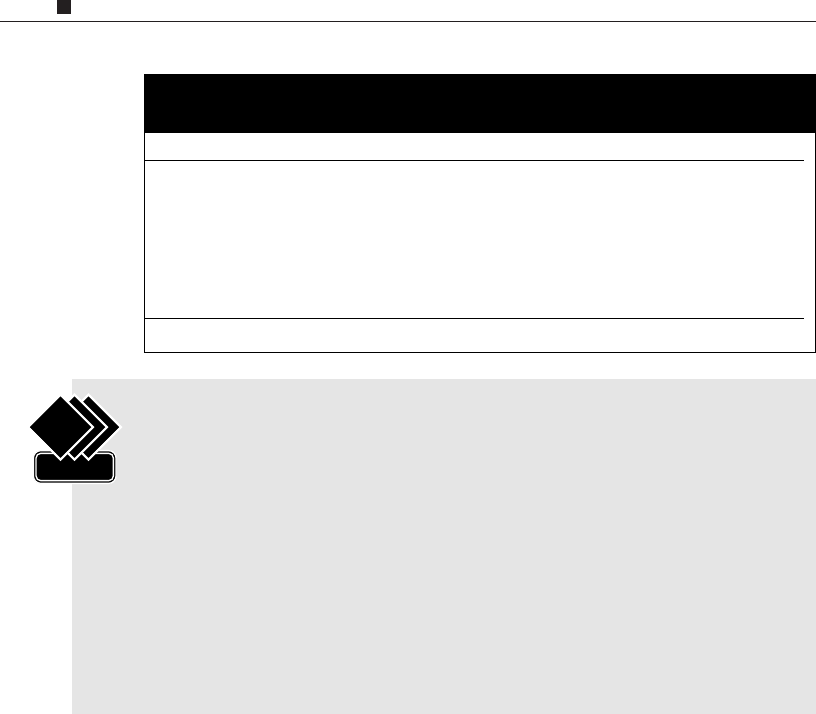
Ernst & Young’s
Personal Financial
Planning Guide
Fifth Edition
Revised & Fully Updated
Martin Nissenbaum
Barbara J. Raasch
Charles L. Ratner
John Wiley & Sons, Inc.
ffirs_ey.qxd 8/16/04 3:48 PM Page iii
ffirs_ey.qxd 8/16/04 3:48 PM Page ii
Ernst & Young’s
Personal Financial
Planning Guide
ffirs_ey.qxd 8/16/04 3:48 PM Page i
ffirs_ey.qxd 8/16/04 3:48 PM Page ii

Ernst & Young’s
Personal Financial
Planning Guide
Fifth Edition
Revised & Fully Updated
Martin Nissenbaum
Barbara J. Raasch
Charles L. Ratner
John Wiley & Sons, Inc.
ffirs_ey.qxd 8/16/04 3:48 PM Page iii

This book is printed on acid-free paper.
Copyright © 2004 by Ernst & Young LLP. All rights reserved.
Published by John Wiley & Sons, Inc., Hoboken, New Jersey.
Published simultaneously in Canada.
No part of this publication may be reproduced, stored in a retrieval system, or trans-
mitted in any form or by any means, electronic, mechanical, photocopying, recording,
scanning, or otherwise, except as permitted under Section 107 or 108 of the 1976
United States Copyright Act, without either the prior written permission of the Pub-
lisher, or authorization through payment of the appropriate per-copy fee to the Copy-
right Clearance Center, Inc., 222 Rosewood Drive, Danvers, MA 01923, 978-750-8400,
fax 978-646-8600, or on the web at www.copyright.com. Requests to the Publisher for
permission should be addressed to the Permissions Department, John Wiley & Sons,
Inc., 111 River Street, Hoboken, NJ 07030, 201-748-6011, fax 201-748-6008.
Limit of Liability/Disclaimer of Warranty: While the publisher and author have used
their best efforts in preparing this book, they make no representations or warranties
with respect to the accuracy or completeness of the contents of this book and specifi-
cally disclaim any implied warranties of merchantability or fitness for a particular pur-
pose. No warranty may be created or extended by sales representatives or written sales
materials. The advice and strategies contained herein may not be suitable for your situ-
ation. You should consult with a professional where appropriate. Neither the publisher
nor author shall be liable for any loss of profit or any other commercial damages,
including but not limited to special, incidental, consequential, or other damages.
In the preparation of this book, every effort has been made to offer the most current,
correct, and clearly expressed information possible. Nonetheless, inadvertent errors can
occur, and tax rules and regulations often change. Further, the information in the text
is intended to afford general guidelines on matters of interest to everyone. The applica-
tion and impact of tax laws and financial matters can vary widely, however, from case
to case, based on the specific or unique facts involved. Accordingly, the information in
this book is not intended to serve as legal, accounting, or tax advice. Readers are
encouraged to consult with professional advisors for advice concerning specific matters
before making any decision, and the authors and publisher disclaim any responsibility
for positions taken by taxpayers in their individual cases or for any misunderstanding
on the part of the readers.
Certain web sites and publications mentioned in this book are maintained and pro-
duced by organizations and individuals over which Ernst & Young LLP has no control.
Ernst & Young LLP makes no representations or warranties regarding the accuracy or
any other aspect of the information located on such web sites or in such publications
nor does it assure the continued existence of such web sites.
For general information on our other products and services, or technical support,
please contact our Customer Care Department within the United States at 800-762-
2974, outside the United States at 317-572-3993 or fax 317-572-4002.
Wiley also publishes its books in a variety of electronic formats. Some content that
appears in print may not be available in electronic books.
For more information about Wiley products, visit our web site at www.wiley.com.
ISBN 0-471-68724-3
Printed in the United States of America.
10 987654321
ffirs_ey.qxd 8/16/04 3:48 PM Page iv

v
CONTENTS
Acknowledgments / vii
About the Authors / ix
Introduction / 1
P
ART 1T
HE FUNDAMENTALS OF FINANCIAL
P
LANNING
1 Taking Charge of the Financial Planning Process / 9
2 Building Wealth to Meet Your Goals / 39
3 Building Wealth Through Investment Planning
Set Your Financial Goals; Understand Investment Vehicles / 57
4 Building Wealth Through Investment Planning
Understand Financial Markets and Concepts; Develop an
Investment Strategy / 81
5 Building Wealth Through Investment Planning
Implement Your Strategy; Monitor Your Investments / 93
6 Building Wealth (Concluded) / 103
7 Protecting Your Family and Assets Through Life Insurance / 123
8 Protecting Your Family and Assets Through Health,
Disability, Property/Casualty, and Auto Insurance / 145
9 Providing for Your Family Through Estate Planning / 165
10 Estate Taxes and Deductions / 177
ftoc_ey.qxd 8/16/04 3:50 PM Page v

11 Gift Tax Fundamentals and Generation-Skipping
Transfer Tax / 197
12 Sophisticated Estate Planning / 209
13 Estate Liquidity, Powers of Attorney, and Living Wills / 223
PART
I1 THE LIFE EVENT
APPROACH TO
FINANCIAL
PLANNING
14 Getting Married / 237
15 Raising a Family / 267
16 Coping With Divorce / 291
17 Being a Single Parent / 315
18 Buying and Selling a Home / 327
19 Funding a College Education / 353
20 Taking Advantage of Employment Benefits / 377
21 Starting Your Own Business / 391
22 Dealing With Your Parents / 427
23 Losing Your Spouse or Life Partner / 447
24 Planning for Retirement / 471
25 Planning for Retirement: Health Care and
Insurance Needs / 493
26 A Few Words in Parting / 523
Index / 527
vi CONTENTS
ftoc_ey.qxd 8/16/04 3:50 PM Page vi

vii
SPECIAL THANKS TO
James S. Turley, Global Chairman and Chief Executive Officer of Ernst &
Young LLP; James S. DiStasio, Americas Chief Operating Officer; Mark A.
Weinberger, Vice Chairman—Americas, Tax Services; Curt Fochtmann,
Global Director of Human Capital; David J. Kautter, Director of National
Tax Department; Charles R. Kowal, Director of Personal Financial Counsel-
ing; Jay D. Nibbe, Managing Partner of Markets–Tax; William Arnone; Elda
A. Di Re; David Gerson; Glenn M. Pape.
OTHER
ACKNOWLEDGMENTS
James J. Biles; Lynn P. Finkelstein; Robert J. Porter; Debra Englander and
Janice Weisner of John Wiley & Sons, Inc.; and Jon H. Zonderman for his
editorial assistance.
ACKNOWLEDGMENTS
flast_ey.qxd 8/16/04 3:51 PM Page vii
flast_ey.qxd 8/16/04 3:51 PM Page viii

Martin Nissenbaum is Ernst & Young’s national director of personal income and retirement
tax planning. He is a member of the AICPA Technical Resource Panel on Taxation of Indi-
viduals and is an advisory board member of mystockoptions.com. He is an attorney and
CPA and holds an LL.M. in tax; he is a certified financial planner and holds the Personal
Financial Specialist accreditation from the American Institute of Certified Public Accountants.
Mr. Nissenbaum is a speaker on compensation and personal, financial, and tax planning to
professional organizations, including the New York State Society of CPAs, the NYU Tax
Society, and the Tax Executives Institute. He has been quoted in the Wall Street Journal, the
New York Times, Money magazine, and many other publications, and has been named by
PRWeek as one of the top quoted spokespeople in the business press. He is an author of
Ernst & Young’s Retirement Planning Guide. E-mail address: martin.nissenbaum@ey.com
Barbara J. Raasch is Ernst & Young’s National Solution Leader for Investment Advisory Ser-
vices as well as the partner-in-charge of this High Net Worth Practice in Metro New York.
Providing investment counseling since 1978, she is a Chartered Financial Analyst, a Certified
Public Accountant and a Personal Financial Specialist. Barbara has been recognized both
externally and internally for her outstanding client service skills, knowledge and innovation.
For example, Worth magazine has honored her as one of our nation’s top financial advisors
each year since 1995. She has held various leadership positions since joining Ernst & Young
in 1984 including the firm’s National Director of Investment Advisory Services from
1992–1995. Barbara is often quoted in newspapers and magazines, and appears frequently
on nationally televised news programs and at professional conferences. She is a member
of the advisory board of the Commercial Clearing House (CCH) Financial Estate Plan-
ning Service, a contributing author of Tips from the Top,co-author the Ernst & Young’s
Financial Planning for Women and had authored a weekly personal financial planning col-
umn for the Dallas Times Herald and the Milwaukee Journal from 1989 to 1991 and 1985
to 1988, respectively. She is a member of the American Institute of Certified Public
Accountants and the Association of Investment Management and Research. E-mail address:
barbara.raasch@ey.com
ix
ABOUT THE
AUTHORS
flast_ey.qxd 8/16/04 3:51 PM Page ix

Charles L. Ratner is the national director of the Personal Insurance Coun-
seling section of Ernst & Young’s Personal Financial Counseling practice.
Mr. Ratner has authored articles published by the American Bar Association,
Trusts and Estates, Commerce Clearing House, and Best’s Review.He is
contributing editor to Ernst & Young’s Financial Planning Reporter and a
contributing editor on the American Bar Association’s Insurance Counselor
Series. He has presented insurance topics to a wide range of audiences
including the American Bar Association, the American Institute of Certi-
fied Public Accountants, and numerous estate planning councils and pro-
fessional societies across the nation. He has been quoted on insurance in
the Wall Street Journal, BusinessWeek, and other financial press. He is an
author of Ernst & Young’s Retirement Planning Guide. E-mail address:
charlie.ratner@ey.com
x ABOUT THE
AUTHORS
flast_ey.qxd 8/16/04 3:51 PM Page x
Ernst & Young’s
Personal Financial
Planning Guide
flast_ey.qxd 8/16/04 3:51 PM Page xi
flast_ey.qxd 8/16/04 3:51 PM Page xii

1
W
hether you’re a do-it-yourself investor or a money neophyte, you
need financial planning. It’s the fundamental road map necessary
for meeting your financial and lifestyle goals. Whether your dream is buying
a new home, sending your kids to good schools, or retiring at 50 is up to you.
What’s key is that planning will increase the likelihood of your meeting those
goals. That planning is essential makes perfect sense since any customized road
map helps you arrive at your destination more efficiently than guesswork ever
will. In fact, middle- and upper-income people with a financial plan accumu-
late twice the savings of those without a plan, according to recent surveys.
At Ernst & Young, we know the value of sound financial planning and
how it translates into financial success for households across America. We
approach financial planning as a way for investors to chart, prepare for, and
enjoy the series of life events they’re likely to encounter. Rather than think-
ing about planning as a dry document that gets tucked away to gather dust
in a drawer, we see it as a continuous system for staying on financial track
as you pursue your goals and dreams.
There are a number of reasons to do planning. First and foremost, it forces
you to define your goals and priorities and make quantitative and qualitative
decisions about your money. It also requires you to look carefully at where
WHY DO FINANCIAL PLANNING?
INTRODUCTION
cintro.qxd 8/17/04 11:34 AM Page 1

your money goes and begin to direct it in a meaningful fashion, instead of
wondering where it disappears to each month. By creating an overall finan-
cial plan you’ll be able to focus on and control the many financial compo-
nents that can benefit you and your family in the long run, including
meaningful savings and investment plans, college and retirement planning,
tax management, and estate and insurance planning.
Consider retirement planning. Like most people, you probably look forward
to your retirement years. But you may also be unsure how to plan for and fund
the type of retirement you desire. How much money will you need each year?
What happens if you outlive your resources? To what degree will Social Security
supplement your own retirement savings? These are difficult questions. But,
careful financial planning can help you size up your individual situation, calcu-
late what you need for retirement, analyze sources of income and means of
investment, and design a plan to meet your short- and long-term goals.
Divorce is another example. No one would deny that it’s an emotional
event of the most powerful sort; however, it’s also a financial event. Many
people acknowledge the financial issues, but few see financial planning as part
of their response to an impending divorce. This is an uncomfortable time for
confronting financial issues. Even so, that pre-divorce period is critical for
starting financial planning. The financial picture is about to change, perhaps
dramatically. Unfortunately, ignoring the situation can have far reaching, sig-
nificant effects, while good financial planning can help secure the future.
In short, financial planning gives you options for dealing with the future.
There are many ways to approach financial planning. Some people feel more
comfortable receiving their information from books. Some like to navigate
their own way using computer software programs. Others prefer watching
financial planning videos, attending seminars, or seeking help from a per-
sonal financial planner. What matters most is that you do financial planning.
Ernst & Young’s Personal Financial Planning Guide is unique in two impor-
tant respects. One is Ernst & Young’s long-standing expertise in the field of
financial planning. For many decades, our specialists have counseled a wide
range of clients—from individuals and couples to small businesses to
employee groups of some of the biggest corporations in America—about
retirement, investments, insurance, estate taxes, and all other financial plan-
ning disciplines. This book reflects our collective knowledge and expertise.
The other unique aspect of Ernst & Young’s Personal Financial Planning
Guide is our emphasis on the relationship between life events and financial
2 ERNST
& YOUNG’S PERSONAL FINANCIAL PLANNING GUIDE
THE ERNST & YOUNG APPROACH:LIFE EVENT
FINANCIAL PLANNING
cintro.qxd 8/17/04 11:34 AM Page 2

planning. Most books approach financial planning as one all-inclusive
topic. This type of comprehensive planning is useful, but we believe it’s only
the starting point. Depending on your stage of life, you may find certain
aspects of financial planning more applicable. If you’re in your 20s, for
instance, saving for a home may be more important to you than retirement
planning. Similarly, if you have young children, you may be more con-
cerned about education funding than about other issues. You should, of
course, recognize the need to look—and plan—ahead for future events. But,
a general—and potentially superficial—approach to financial planning may
detract from zeroing in on what concerns you most right now.
For this reason, we at Ernst & Young have written this book to focus on
the events that are significant at specific stages of your life. The advantage of
this life-event approach is that you can pick and choose among the topics;
discussions aren’t grouped into a single, massive treatment. Among these
events are:
•
Dealing with your job
•
Getting married
•
Buying or selling a home
•
Raising a family
•
Starting a business
•
Coping with divorce
•
Funding your children’s education
•
Retiring
All of these events have tremendous personal financial significance.
They can be stressful, even disruptive, if not approached with care and fore-
thought. With careful planning, you can maintain control of these events.
For this reason, Ernst & Young’s Personal Financial Planning Guide recom-
mends a targeted approach to financial planning, one in which you:
•
Assess where you are in life
•
Decide what events are likely to affect you
•
Plan in ways that help you control your financial future
(If your focus is on retirement, you should get a copy of Ernst &
Yo ung’s Retirement Planning Guide.)
The book is organized into two parts. In Part I you can learn about the fun-
damentals of financial planning. One or more chapters focus on each of the
traditional financial planning disciplines: the planning process, investments,
I
NTRODUCTION
3
A TWO–PART,FLEXIBLE STRUCTURE
cintro.qxd 8/17/04 11:34 AM Page 3

insurance, and estate planning. This overview gives you the basic information
you need to understand what follows.
In Part II you can explore the financial aspects of major life events. What
life events are affecting you now? What upcoming financial transitions will
influence your decisions? What other issues should you take into account?
This half of the book is essentially a financial planning resource “shelf”: a
broad selection of data, recommendations, tips, and resources from which
you can choose those suited to your own individual circumstances. As your
situation changes, you can read up on another life event and how it affects
you financially. And, reading the whole book will give you an excellent
overview of financial planning throughout the entire life cycle.
This edition has been revised to take into account the provisions of the Jobs
and Growth Tax Relief Reconciliation Act of 2003 (“the Tax Relief Act of
2003”) which was signed into law by President Bush in May 2003, provid-
ing $330 billion in tax cuts and refundable child tax credits. The most
important effect of the legislation is to reduce the maximum tax rate on
long-term capital gains and dividends. In addition, the Act accelerates pre-
viously enacted reductions in the marginal tax rates for individuals. Also,
for 2003 and 2004, increased benefits are provided to taxpayers in connec-
tion with marriage penalty relief and the child tax credit. Attention should
be paid to the sunset provisions written into the law, as they vary from one
provision to the next.
Significant features of the Act include the following:
•
Lower Capital Gains Tax Rates. For sales executed on or after May 6,
2003, the top individual rate on long-term capital gains, which was gen-
erally 20% under previous law (or 10% for taxpayers in the 10% and
15% brackets) has been reduced to 15% (or 5% for taxpayers in lower
income brackets through 2007, and zero in 2008). The rules for short-
term capital gains are unchanged, and are still taxed at ordinary rates.
The special tax rates applicable to gains realized on assets held for
more than five years (8% for taxpayers with income in the lower brack-
ets, and 18% for other taxpayers on assets purchased after 2000) have
been repealed.
As presently written, these provisions “sunset” after 2008.
4 ERNST
& YOUNG’S PERSONAL FINANCIAL PLANNING GUIDE
REVISIONS IN THIS EDITION
cintro.qxd 8/17/04 11:34 AM Page 4

•
Lower Tax Rate on Dividends. For the tax years of 2003 through 2008,
the maximum tax on dividends received by an individual shareholder
from domestic corporations and “qualified foreign corporations” is
reduced from 38.6% to 15% (5% for taxpayers in the lower income
brackets, and zero for these taxpayers in 2008), as long as certain holding
period requirements are met.
•
Accelerated Reduction of Individual Tax Rates. The Tax Relief Act of
2003 accelerates into 2003 the reductions in individual tax rates that were
previously scheduled to be phased in through 2006 under the Economic
Growth and Tax Relief Reconciliation Act of 2001 (“the Tax Relief Act of
2001”). This lowers the maximum tax rate on ordinary income from
38.6% to 35% through the year 2010.
•
Increase in the Child Tax Credit. While the Tax Relief Act of 2001 was
slated to gradually increase the child tax credit from $600 in 2003 to
$1,000 in 2010, the new law increases the credit to $1,000 for 2003 and
2004. After 2004, the child credit returns back to the levels specified
under the prior law.
•
Marriage Penalty Relief. A marriage penalty exists when the tax liability
of a married couple filing jointly is greater than the sum of the tax liabil-
ities that would result if each person were single. This is due in part to
the fact that the basic standard deduction for a married couple filing a
joint return is only 67% higher than that of a single filer.
The Tax Relief Act of 2001 was scheduled to gradually increase the
basic standard deduction for a married couple from 2005 through 2009
until it reached double (or 100% above) the level of the standard deduc-
tion for an unmarried individual. However, the new law immediately
doubles the basic standard deduction for married couples over single fil-
ers for 2003 and 2004. After 2004, the applicable percentages will revert to
the lower amounts specified under the prior law.
Taken together, these changes can potentially impact your investment
strategy, to the extent that they alter the relative attractiveness of tax-
exempt versus taxable investments, as well as dividend-paying versus
growth-oriented investments. It may also initiate a reevaluation as to the
assets maintained in your taxable and tax-advantaged accounts.
This book also includes changes made to the tax law by the Medicare
Prescription Drug, Improvement, and Modernization Act of 2003.
I
NTRODUCTION
5
cintro.qxd 8/17/04 11:34 AM Page 5

6 ERNST
& YOUNG’S PERSONAL FINANCIAL PLANNING GUIDE
R
EGAINING CONTROL,PROVIDING FOR THE FUTURE
Financial planning is, first and foremost, a way to build a secure financial
future and deal effectively with ongoing financial challenges and oppor-
tunity. It’s not a way to “get rich quick.” Rather, it’s a disciplined way
of achieving control and providing for yourself and your family in an
organized manner.
Our hope is that Ernst & Young’s Personal Financial Planning Guide
will give you the tools and information you need to achieve your finan-
cial goals throughout all of your life’s events.
cintro.qxd 8/17/04 11:34 AM Page 6

PART I
T
HE FUNDAMENTALS OF
FINANCIAL PLANNING
c01_ey.qxd 8/16/04 12:57 PM Page 7
c01_ey.qxd 8/16/04 12:57 PM Page 8

9
TAKING CHARGE OF
THE
FINANCIAL
PLANNING PROCESS
1
I
fyou’re concerned about harnessing and maximizing your financial and
investment universe, you’re not alone. Finding good investments, mini-
mizing taxes, beating inflation, and managing money are at the top of many
people’s lists. Still, even if you recognize how important financial planning
is, you may be waylaid by financial paralysis, unsure of where to begin, or
even fearful of making mistakes. Pulling together an entire financial plan
can be daunting. Maybe you’ve created a plan that you’re having difficulty
following or fear isn’t comprehensive enough. Or you may be confused
about what steps to take first.
Ernst & Young’s Personal Financial Planning Guide is designed to help
you overcome all of the obstacles standing in the way of your personalized
financial plan. You’ll get tips and worksheets for understanding and record-
ing your current cash flows and for developing a budget that gives you
greater money management control. Whether you’re new to financial plan-
ning or already a devotee, you’ll get information and techniques that will
allow you to create and update a consistent, comprehensive plan. Even if you
have a working plan, you’ll get proven suggestions for making it better.
In the following chapters, we explain how to maximize your finances to
achieve specific goals, whether it’s finding more money in your budget to cre-
c01_ey.qxd 8/16/04 12:57 PM Page 9

ate emergency savings or maximize your retirement plan contributions. First,
though, let’s take stock of your current financial situation, determine your cur-
rent financial strengths and weaknesses, and start to decide what your finan-
cial planning goals are. Chapter 1 is a starting point for everything else in this
book—a sequence of steps for taking charge of the financial planning process.
These are the steps:
•
Step 1:Determine where you are financially.
•
Step 2:Set goals.
•
Step 3:Develop a plan.
•
Step 4:Keep simple records.
•
Step 5:Make an informal budget.
•
Step 6:Deal with shortfalls, credit, and debt.
•
Step 7:Review your progress.
DETERMINE WHERE YOU ARE FINANCIALLY
Your current financial position is the starting point from which you should
measure progress toward your financial goals. To understand your financial
position, however, you need a practical means for taking stock of the situa-
tion. A standard device for this purpose is the net worth worksheet.This
worksheet allows you to estimate your assets and liabilities as a first step to
financial planning.
Calculating Your Net Worth
Ta ke a few moments to complete the net worth worksheet on the next page.
As you fill it in, make sure that you indicate your assets in terms of their current
fair market value, not in terms of what you paid for them. For example, let’s say
that 5 years ago you bought some shares of stock for $1,000. That stock is now
worth $2,000 (i.e., its current fair market value is $2,000). Put $2,000 rather
than $1,000 on the worksheet. Similarly, you should assess the value of any
real estate you own as accurately as possible. One way of doing so is to check
with local realtors for the recent sale prices of properties similar to yours.
One final consideration before you fill in the worksheet: This is not a
financial “report card.” There are no right or wrong answers. Don’t be judg-
mental of yourself as you assess your situation. What you discover as you cal-
culate your net worth may or may not please you; you may come away from
the exercise either reassured about your financial situation or concerned
Net worth: what’s left after you subtract your liabilities from your assets.
10 ERNST
& YOUNG’S PERSONAL FINANCIAL PLANNING GUIDE
STEP 1
c01_ey.qxd 8/16/04 12:57 PM Page 10

about it. But only by assessing your financial picture in an open-minded fashion
can you see where you stand and take control of the situation.
Note:Be sure to list all assets at their current value without reducing them
to reflect any indebtedness. For example, if your home is currently worth
$100,000 and you have a $70,000 mortgage, list the house at $100,000 in the
asset section; show the $70,000 mortgage in the liability section that follows.
T
AKING CHARGE OF THE FINANCIAL PLANNING PROCESS
11
Y
OUR NET WORTH AS OF
_________________
ASSETS
Cash equivalents
Checking accounts $______________
Savings accounts $______________
Money market accounts $______________
Money market fund
accounts $______________
Certificates of deposit $______________
U.S. Treasury bills $______________
Cash value of life
insurance $______________
Total $______________
Investments
Stocks $______________
Bonds $______________
Mutual fund investments $______________
Partnership interests $______________
Other investments $______________
Total $______________
Retirement funds
Pension (present
lump-sum value) $______________
IRAs and Keogh accounts $______________
Employee savings plans
(e.g., 401(k), SEP, ESOP) $______________
Total $______________
Personal assets
Principal residence $______________
Second residence $______________
Collectibles/art/antiques $______________
Automobiles $______________
Home furnishings $______________
Furs and jewelry $______________
Other assets $______________
Total $______________
Total Assets $______________
LIABILITIES
Charge account balances $______________
Personal loans $______________
Student loans $______________
Auto loans $______________
401(k) loans $______________
Investment loans (margin,
real estate, etc.) $______________
Home mortgages $______________
Home equity loans $______________
Alimony $______________
Child support $______________
Life insurance policy loans $______________
Projected income tax
liability $______________
Other liabilities $______________
Total Liabilities $(_____________)
Net Worth (assets
minus liabilities) $______________
c01_ey.qxd 8/16/04 12:57 PM Page 11

Later in the book we’ll look at the various categories of assets; we’ll sep-
arate them into long-, medium-, and short-term categories; and we’ll con-
sider which of these assets appreciate the most reliably. For now, let’s focus
solely on the issue of net worth.
The net worth worksheet has three possible outcomes:
•
Assets equal liabilities
•
Assets exceed liabilities
•
Liabilities exceed assets
The hope, of course, is that your assets exceed your liabilities. This
means that you have a net worth. If your assets equal your liabilities, or if
your liabilities exceed your assets, your financial position is obviously
weaker than it should be. Whatever the outcome, though, it’s crucial for you
to face it straight on. There’s no advantage in denial. Refusing to acknowl-
edge a less than ideal net worth will limit your ability to overcome the
obstacles before you.
Analyzing Your Cash Flow
In addition to preparing a statement of assets and liabilities, you also need to
look at your expenses and sources of income. This is your cash flow analysis.
In financial planning, determining your cash flow is extremely important.
There are four reasons why. Assessing your income and expenses will:
•
Indicate your ability to save
•
Let you size up your standard of living
•
Indicate if you’re living within or beyond your means
•
Highlight problem areas
All of these issues affect your ability to do financial planning, but
they’re especially significant as you proceed to plan for retirement.
Here’s an example of why cash flow is so important. Let’s say that you’re
45 years old. You intend to retire at age 60, and you feel you’re ready to start
planning for retirement. To start the planning process, however, you should
ask yourself a series of questions that identify your options.
•
What do I want my retirement to be like?
•
What will my sources of income be during retirement?
•
What standard of living would I like to enjoy at that time?
•
Will I work?
•
Do I intend to move, or will I stay in my current residence?
•
How will I cover health care expenses?
•
What kinds of insurance coverage should I maintain?
12 ERNST
& YOUNG’S PERSONAL FINANCIAL PLANNING GUIDE
c01_ey.qxd 8/16/04 12:57 PM Page 12

•
What is my likely life expectancy, and will my resources suffice if I reach
or exceed that expected age?
These are among the many questions that will determine how much
retirement income you’ll need and what assets you’ll have to accumulate to
provide that income. By implication, you need to look at how your current
standard of living will influence your future standard of living.
One measure of your current standard of living—perhaps the most im-
portant measure, too—is the living expenses you now incur and your abil-
ity to pay for them. Performing a cash flow analysis will help you with this
assessment. To do this cash flow analysis, you must set forth all the various
expenditures you incur on a regular or erratic basis, compare those with
your income, and by this means define your current standard of living.
In assessing your current expenses, here are three rules to follow:
•
Set forth your expenses in categories.
•
Be complete.
•
Don’t guess too low.
Many people approach this exercise simply by recording the numbers
more or less off the top of their heads. However, you may prefer to proceed
in a more systematic way. You may actually need to track the figures, either
historically (perhaps for the past 6 months) or prospectively (perhaps for
the next 3 months), to create a good, detailed record of what the expenses
really are. Regardless of your method, you can use the following cash flow
worksheet to help you organize your data.
T
AKING CHARGE OF THE FINANCIAL PLANNING PROCESS
13
C
ASH FLOW
WORKSHEET
Income Monthly Annual
Salary ______________ ______________
Bonuses ______________ ______________
Self-employment income ______________ ______________
Dividends ______________ ______________
Capital gains ______________ ______________
Interest ______________ ______________
Net rents and royalties ______________ ______________
Social Security ______________ ______________
Pension distributions from trusts
or partnerships ______________ ______________
Other income ______________ ______________
Total cash available ______________ $______________
c01_ey.qxd 8/16/04 12:57 PM Page 13

14 ERNST
& YOUNG’S PERSONAL FINANCIAL PLANNING GUIDE
CASH FLOW WORKSHEET (continued)
Expenses Monthly Annual
Uses of cash
Home mortgage (or apartment rent) ______________ ______________
Utility payments ______________ ______________
Gas/oil ______________ ______________
Electricity ______________ ______________
Water ______________ ______________
Sewer ______________ ______________
Home maintenance ______________ ______________
Property taxes ______________ ______________
Car payments ______________ ______________
Car/commuting expenses ______________ ______________
Maintenance and repairs ______________ ______________
Gas ______________ ______________
Commuting fees/tolls ______________ ______________
Credit card/loan payments ______________ ______________
Insurance premiums ______________ ______________
Life ______________ ______________
Health ______________ ______________
Disability ______________ ______________
Car ______________ ______________
Home ______________ ______________
Liability ______________ ______________
Other ______________ ______________
Income taxes ______________ ______________
Employment taxes ______________ ______________
Clothing ______________ ______________
Child care ______________ ______________
Food ______________ ______________
Medical expenses ______________ ______________
Education ______________ ______________
Vacations ______________ ______________
Entertainment ______________ ______________
Alimony ______________ ______________
c01_ey.qxd 8/16/04 12:57 PM Page 14

You may, of course, need to adapt this cash flow record to reflect your
particular situation. The main goal here is to note everything that’s a regu-
lar expense. In addition, however, you should note erratic expenses as well,
such as capital expenditures or purely discretionary items such as gifts and
vacations. These include spending for:
•
A new car
•
Other vehicles (boats, campers, etc.)
•
Electronic equipment (computer, satellite dish, etc.)
•
Home improvements
•
A second home
You should factor in these expenses, too, as you analyze your income
and expenditures.
In later chapters of the book we’ll explore how to refine your under-
standing of your assets. For now, your main task is to gain a general sense
of where your money comes from and where you’re spending it.
SET GOALS
Financial planning is by definition a prospective exercise. Since we can’t
foresee the future, we have to make certain assumptions about what may
occur, then plan for contingencies. Here are some of the questions that influ-
ence these assumptions:
T
AKING CHARGE OF THE FINANCIAL PLANNING PROCESS
15
CASH FLOW WORKSHEET (continued)
STEP 2
Expenses Monthly Annual
Charitable contributions ______________ ______________
Gifts ______________ ______________
Personal items ______________ ______________
Savings/investments ______________ ______________
Vacation fund ______________ ______________
Emergency fund ______________ ______________
Investment fund ______________ ______________
Other ______________ ______________
Other payments ______________ ______________
Total expenses $(_____________) $(_____________)
Net cash inflow/(outflow) $______________ $______________
c01_ey.qxd 8/16/04 12:57 PM Page 15

•
How long will you continue to work?
•
What will happen with your income—will it remain the same, rise,
or fall?
•
What will happen with tax rates?
•
What investment rates can you reasonably expect?
•
What about the rate of inflation?
•
How much involvement do you wish to have in managing your investments?
Your answers to these questions will determine how you must respond
to plan for your financial future. In later chapters of Ernst & Young’s Per-
sonal Financial Planning Guide,we’ll examine each of the issues implicit
here, and we’ll sort through your options for responding to them. Before we
do so, however, we should deal with a more immediate, personal issue:
What are your financial goals?
The Importance of Setting Goals
Many people find goal-setting a difficult exercise. Here’s an exchange simi-
lar to what many financial planners have with some of their clients:
Financial Planner:“What are your financial goals for the next 5 to 15
years?”
Client:“We ll—I don’t really have any.”
Financial Planner:“Do you plan to retire?”
Client:“Of course. I’m just not sure when.”
Financial Planner:“Do you intend to make any major purchases?”
Client:“Probably.”
Financial Planner:“A new car? Maybe a second home?”
At this point, the client may become more specific.
Client:“Now that you mention it, I want to have a second home when
I’m 55.” As the planner asks more questions, the client’s financial
goals begin to clarify. “My wife and I purchased a parcel of land in
New Mexico, and we plan to build a house on the land and retire
there.”
Here are some goals typical of what people indicate to financial planners:
•
“I’ll need to fund my son’s postgraduate education.”
•
“I want to become financially independent by the time I’m 55.”
•
“I’d like to buy a bass boat next year.”
•
“I love to travel, so I’d like to take a major trip each year once I’ve retired.”
•
“I’d like to quit my present employer and go into business on my own.”
16 ERNST
& YOUNG’S PERSONAL FINANCIAL PLANNING GUIDE
c01_ey.qxd 8/16/04 12:57 PM Page 16

•
“I want to have a large estate for my children.”
•
“I want to make significant gifts to charity.”
This client’s response—and any other response—implies a financial
goal. And to meet any financial goal, you have to take action. First, however,
you must take steps to determine what your own goals are and—just as im-
portant—what your priorities are in achieving them.
How to Identify Your Financial Goals
Most people never take time to identify their financial goals. They either
just don’t get sufficiently organized, or else they feel safe “winging it” and
making financial decisions as each new situation arises. Yet a realistic frame-
work is vital to the process of fulfilling your goals—not just the goals you’re
aware of, but also those you may not even have identified. To develop a
framework of this sort, you should therefore try to define where you want
to be, financially speaking, in the future. The worksheet on financial con-
cerns that follows will help to clarify your thinking.
Let’s look first at relatively general financial concerns. Given your pres-
ent economic position, rank the items on the financial concerns chart at the
bottom of this page in order of personal concern, with 1 = most important
and 9 = least important.
By answering these questions, you have begun to get a sense of which
financial goals are most important to you. Now let’s take the goal-setting
process a step further. Having clarified some general concerns, you should
identify your specific financial objectives.
T
AKING CHARGE OF THE FINANCIAL PLANNING PROCESS
17
_________ To have adequate funds to cover both routine living expenses and foreseeable future
needs, including education expenses for my children.
_________ To minimize income taxes.
_________ To be able to retire comfortably.
_________ To increase the assets going to my heirs by utilizing various estate planning techniques.
_________ To accumulate sufficient assets to enable me to increase my standard of living, acquire a
business, purchase a vacation home, etc.
_________ To have sufficient funds and insurance coverage in the event of serious illness.
_________ To develop an investment program that will provide a hedge against inflation.
_________ To accumulate a sizable estate to pass on to my heirs.
_________ To enable my family to maintain their standard of living in the event of my death.
F
INANCIAL CONCERNS
c01_ey.qxd 8/16/04 12:57 PM Page 17

Using the worksheet on specific financial goals that follows, designate
your most important financial objectives. Use 1 for the most important, 2
for the second in importance, and so forth, for each time frame indicated.
An important consideration: The ranking for each objective will probably
change from one time period to another as your lifestyle and stage of life
continue to change.
18 ERNST
& YOUNG’S PERSONAL FINANCIAL PLANNING GUIDE
Goals Short Term Medium Term Long Term Longest Term
(0–1 yr.) (1–5 yrs.) (5–10 yrs.) (>10 yrs.)
Education expenses ___________ ___________ ___________ ___________
Debt reduction ___________ ___________ ___________ ___________
Buy a house ___________ ___________ ___________ ___________
Make home improvements ___________ ___________ ___________ ___________
Buy a car ___________ ___________ ___________ ___________
Any other large purchases
(e.g., boat, plane, art) ___________ ___________ ___________ ___________
Take a dream vacation ___________ ___________ ___________ ___________
Income tax minimization ___________ ___________ ___________ ___________
Change of employment ___________ ___________ ___________ ___________
Buy a vacation home ___________ ___________ ___________ ___________
Financial independence ___________ ___________ ___________ ___________
Adequate retirement income ___________ ___________ ___________ ___________
Have children ___________ ___________ ___________ ___________
Increase level of
charitable giving ___________ ___________ ___________ ___________
Buy a retirement home ___________ ___________ ___________ ___________
Adequate disability income ___________ ___________ ___________ ___________
Provide for survivor in event
of my death ___________ ___________ ___________ ___________
Be protected against inflation ___________ ___________ ___________ ___________
Take early retirement ___________ ___________ ___________ ___________
Start a business ___________ ___________ ___________ ___________
Fund a buy–sell agreement ___________ ___________ ___________ ___________
Other ___________ ___________ ___________ ___________
Other ___________ ___________ ___________ ___________
Other ___________ ___________ ___________ ___________
SPECIFIC
FINANCIAL GOALS
c01_ey.qxd 8/16/04 12:57 PM Page 18

Comprehensive or Specific Planning?
At this point, you need to decide what you want from the financial plan-
ning process. Do you want a comprehensive view of your financial future?
Or are you interested only in specific suggestions on specific financial
issues? Either alternative is fine; the deciding issue is simply what best suits
your individual needs.For example, you may be interested only in retire-
ment planning, in assessing your insurance position, in planning to pay for
your children’s education, or in estate planning. If so, fine. Your strategies
and planning should concentrate primarily on these issues. On the other
hand, you may want a full financial “checkup” and a prescription that cov-
ers all aspects of your financial life. If so, that suggests a different kind of
planning process—one that starts with a general assessment of your current
position, then proceeds to a more detailed identification of your goals,
which leads in turn to creating a comprehensive plan.
There are many ways to achieve both the specific and the more com-
prehensive kinds of financial planning. Either way, subsequent chapters of
this book will be useful as you undertake the process.
The Advantages of Event-by-Event Planning
Precisely because individuals’ needs differ so widely throughout the life
cycle, Ernst & Young’s Personal Financial Planning Guide takes a life event
view of financial planning. The various financial planning issues tend to be
lumped together in most comprehensive plans. You may, in fact, need to
address many of these issues at once. (Someone in middle age may well be
concerned with income tax issues and investment issues and insurance
issues and college-funding issues and estate planning issues and retirement
planning issues.) In any case, you can use this book to focus on the issues
that, given your stage in life, are most important to you. In short, you
should focus not so much on your age but, rather, on the events that have
financial significance to your life.
Here are some of the life events likely to have a major impact on your
finances:
•
Getting married
•
Raising a family
•
Buying or selling a home
•
Funding children’s education
•
Pursuing a career
•
Starting a business
T
AKING CHARGE OF THE FINANCIAL PLANNING PROCESS
19
c01_ey.qxd 8/16/04 12:57 PM Page 19

•
Getting divorced
•
Dealing with aging parents
•
Retiring (You might want to review Ernst & Young’s Retirement Planning
Guide, which discusses this goal in much greater detail.)
Given the variety of issues involved in these different life events, you’ll
find a targeted approach to financial planning more useful than a scatter-
shot approach. By using a specific, focused process, you can assess where
you are in life, what the big events are in the near term, and what financial
planning issues you can expect at the time of these events.
What each major life event requires you to do is size up its financial
impact and then do what’s possible to prepare for the consequences. When
you start a family, for instance, your biggest concern is probably protecting
your spouse and children financially and building in the appropriate safe-
guards. Regarding your career, the big concern is maximizing your earned
income and your participation in retirement plans. With divorce, the big
issue is lessening the emotional and financial devastation that can ensue.
With retirement, the issues revolve around establishing stable sources of
income and sensible estate planning.
The final stage of setting goals, then, is to prioritize the goals that you’ve
identified. Obviously, the short-term goals may well require the most imme-
diate attention. On the other hand, delaying action on long-term goals (such
as retirement) may cause you significant problems down the line. And
putting off certain goals is potentially catastrophic. (Neglecting to obtain
adequate life insurance and disability insurance is a particularly hazardous
temptation.) A list of personal financial goals might look something like this:
Short-Term Goals
•
Pay off credit card and consumer debt
•
Start savings plan
•
Set aside cash for a contingency fund equaling 3 months’ expenses
•
Acquire additional term life insurance
•
Acquire individual disability insurance
Medium-Term Goals
•
Start college savings plan
•
Diversify investment portfolio
•
Convert term life insurance policy to cash-value policy
•
Contribute maximum to 401(k) plan and IRA
20 ERNST
& YOUNG’S PERSONAL FINANCIAL PLANNING GUIDE
E
X
A
M
P
L
E
c01_ey.qxd 8/16/04 12:57 PM Page 20

Long-Term Goals
•
Purchase retirement property
•
Retire at age 62
•
Maintain preretirement standard of living during retirement
DEVELOP A
PLAN
Yo u’re now ready to take your goals and develop a plan for achieving
them.
Primary Concerns
When developing a plan, keep three primary concerns in mind: flexibility,
liquidity, and minimization of taxes.
Flexibility. It’s important to remember that as you develop your plan, the
decisions you make aren’t carved in stone. Your personal and financial goals
can (and often do) change; you need a plan that’s flexible enough to change
with your circumstances throughout the major and minor life events you
experience.
For example, events such as births, deaths, illnesses, and marriage can
affect your goals profoundly. Employment changes, inflation, unusually
good or bad investment results, and inheritances will also affect your finan-
cial circumstances. For these reasons, you should avoid making plans that
are rigid or unresponsive to change.
Liquidity. Similar to the need for flexibility (and closely related to it) is the
need to provide for adequate liquidity. Liquidity is, of course, especially
important so that you can deal with financial emergencies. Most financial
advisors recommend that you have funds available that are equivalent to 3
to 6 months of your expenses. Appropriate locations for these funds are
checking, savings, and money market accounts. Other advisors suggest hav-
ing a standby line of credit to accomplish this same result. The important
factor either way is to have sufficient reserves set aside so that you can deal
with emergencies.
Liquidity: the characteristic of an asset that can be converted readily to
cash without loss of principal.
T
AKING CHARGE OF THE FINANCIAL PLANNING PROCESS
21
STEP 3
c01_ey.qxd 8/16/04 12:57 PM Page 21

Minimization of Taxes. The third primary concern is minimizing taxes.
Minimizing taxes must serve as a means to meet your objectives; it isn’t an
end in itself. (Or, as some advisors put it, Don’t let the tax “tail” wag the
financial “dog.”) An effective plan will minimize both income taxes and
estate taxes. (Tax strategies aren’t noted separately throughout this book,
but are interwoven through discussions of other financial planning topics.)
CREATING A
PLAN
As for the plan itself, you can proceed in one of several different ways. One
is to use a financial planning program on your computer. Software of this
sort can streamline the process in the long run, although you’ll have to
invest some time initially to enter the relevant data. Another way to set up
your plan is less high-tech but still reliable: Sketch it out on paper. The
most important thing is to determine how to meet your goals, then follow
through. A simple plan for the short-term goals mentioned above might
look as shown below.
22 ERNST
& YOUNG’S PERSONAL FINANCIAL PLANNING GUIDE
SHORT-TERM GOALS
Goal Action Steps
1. Pay off credit card debt Postpone vacation
Reduce entertainment expenses
Delay purchase of new car
Consolidate debt into home equity loan (interest
is generally tax-deductible thereby usually
making the debt cheaper)
2. Start savings plan Fund with savings from goal 1
Reduce discretionary spending
Arrange for payroll deduction for savings
3. Start contingency fund Obtain home equity loan fund from curtailed
expenses equivalent to 6 months’ expenses
(ideally) or unsecured line of credit
4. Acquire $100,000 term insurance Pay for in cash
5. Acquire supplemental disability insurance Pay for in cash
You should also create a plan for your intermediate- and long-term
goals. Here, again, try to stay flexible. If anything, the need for flexibil-
ity increases as your time horizon recedes; you’ll have less control over
distant events. Remember, too, that the most carefully constructed plan
will be worthless unless you actually go ahead and implement it. Keep a
record of each action step, including when and how it was accom-
plished. Be patient—implementing your plan can be a time-consuming
c01_ey.qxd 8/16/04 12:57 PM Page 22

process. Your personal situation will dictate whether you decide to pro-
ceed with or without professional help. Most people will benefit from
assistance at some point, at least in implementing their plan. (See the
final section of this chapter for guidelines and suggestions on choosing
a financial planner.)
KEEP R
ECORDS SIMPLE
Keeping accurate, detailed records is important for two main reasons. First,
keeping records in a regular, orderly fashion simplifies a task that most peo-
ple dislike but that almost everyone must do: tracking expenses for tax pur-
poses. If you categorize and note your living and business expenses on a
regular basis, the burden of longer-term recordkeeping is easier and less
frustrating.
Second, keeping good records has the obvious advantage of letting you
know how, where, and how fast you’re spending your money. You can track
cash flow by category and note when you’re spending too much or too lit-
tle on a particular need. Accurate records allow you to notice “red flags” and
alert you to pending financial problems.
Both of these aspects of recordkeeping dovetail conveniently with the
process of keeping a budget; they provide a system not just for recording
your expenditures and income but also for comparing expenditures against
what you’ve actually budgeted. (We’ll get to budgets in a moment.) Ideally,
this comparison occurs on an ongoing basis, which allows you to make ad-
justments proactively rather than on an occasional, reactive basis.
Options for Keeping Records
Is there any best way to keep your financial records? Certainly, some ways
are fancier or more elaborate than others, but the “best” way is simply the
one that you yourself can maintain most consistently and accurately. The
range of possible methods is enormous. The simplest method is to keep
track of cash receipts, checkbook entries, and credit card statements. At the
other extreme, you can use any of the current fairly sophisticated com-
puter programs for personal financial management. The middle ground
involves preparing an annual month-by-month budget (based on checks
written and charges made), which you then compare to your actual income
and expenditures.
None of these methods is difficult to maintain. The computer programs
are the easiest to use in the long run, but they require a fair amount of atten-
tion to set up. The various manual methods require ongoing effort but are
T
AKING CHARGE OF THE FINANCIAL PLANNING PROCESS
23
STEP 4
c01_ey.qxd 8/16/04 12:57 PM Page 23

the quickest and simplest at the beginning. In all instances, the task is simpli-
fied by keeping track of your expenses through checks and credit cards. Fre-
quent use of automated teller machines (ATMs) may be counterproductive
in this situation; it’s simply more difficult to recall what you spent in cash
than it is to look at a checkbook record or an itemized credit card statement.
(However, using credit cards for this purpose does not mean racking up big
credit card balances. Instead, you should charge your expenditures but pay
them off at the month’s end, thus avoiding interest charges. Alternatively, you
could use a charge card that requires you to pay off the charges each month,
such as American Express.)
Using the Information
As noted earlier, one of the great benefits of keeping accurate records is that
you can be more realistic about how you spend your money. It’s harder to
kid yourself about your spending habits when the evidence is right before
you in black and white. To analyze what you’re spending, you should accu-
mulate your data, record them by whatever means you’ve chosen, then cat-
egorize your expenses. (The categories you’ve already used for your cash
flow analysis are appropriate here, too.)
Something you should check at this point is whether your expenditures
seem appropriate given your goals and overall financial situation. There are
two ways to consider this issue.
Expenditures in Relation to Objective Norms. There are individual
differences in how people spend their money; however, normal limits exist
for each category of expense. Financial planners use certain objective norms
to identify expenditures that may be problematic. These norms are gener-
ally expressed as ratios or percentages. If you found, for instance, that rent
accounts for 55% of your overall expenditures, something is probably
amiss. Similarly, entertainment costs that take up 25% of your budget could
also signal a problem.
Expenditures in Relation to Your Goals and Values. Even if your
spending patterns fall within normal limits, are you using your money in
ways that seem correct to you? Perhaps you feel that you’re spending too
much on vacations—even if the percentage of your income isn’t out of line
compared to what others spend. Perhaps postponing the purchase of a new
car will allow you to save money you’ll need for your children’s education.
Do you feel that you’re spending too much money in general?
24 ERNST
& YOUNG’S PERSONAL FINANCIAL PLANNING GUIDE
c01_ey.qxd 8/16/04 12:57 PM Page 24

On the other hand, you may sense that you’re overly stringent with
your spending. One example is maintaining an older automobile whose fre-
quent breakdowns inconvenience you or even put you in physical danger;
buying a new, more reliable car may serve you well in this instance.
One way or the other, it’s quite possible that you should pay more
attention to what your hunches are telling you—either to curtail or to in-
crease expenditures. The crux of the matter is that this is your money; you
should feel comfortable with how you’re using it.
M
AKE AN INFORMAL BUDGET
By now you’ve assessed your financial situation. You’ve set some goals.
Yo u’ve started keeping detailed records to track your expenses. Now what?
The answer to that question depends largely on what your recordkeep-
ing reveals. You may find yourself in a position where your expenditures
clearly exceed your income. You can’t realistically do any long-term finan-
cial planning until you get out of debt. In this situation, you may decide
that more of your income should go toward debt liquidation until you’ve
eliminated most or all of your outstanding debts.
On the other hand, you may find that your income exceeds your expen-
ditures and that your expenditures themselves are within normal limits. In
this case, it makes sense for you to invest the excess rather than just park
your funds in a low-interest checking account. You can now proceed to start
analyzing your risk tolerance and other aspects of the investment process.
(We discuss investment planning in detail in upcoming chapters.)
Either way, the whole idea is to gain control over your finances. You
want to know what you’re spending and why you’re spending it, and you
want to maintain this knowledge on a continuous basis. The means to this
end is making (and following) a budget—a step that goes to the heart of the
financial planning process.
The Foundation to Your Budget
It’s important to note, however, that several bedrock assumptions should
underlie your budget. These assumptions are essentially the foundation that
your budget is built upon, and most of them have to do with income:
•
Is your job secure?
•
Are your other sources of income secure?
•
What degree of financial risk are you assuming?
If your job isn’t secure, for instance, you may need to set aside more abun-
dant savings and spend less, just in case you end up unemployed. This will
T
AKING CHARGE OF THE FINANCIAL PLANNING PROCESS
25
STEP 5
c01_ey.qxd 8/16/04 12:57 PM Page 25

give you some funds to tide you over until you find another job. Similarly,
your tolerance to financial risk will influence how you budget funds for invest-
ments. However, it’s important for you to assess these issues as carefully as
possible. Wishful thinking has doomed more than a few budgets at the outset.
Setting Up and Following a Budget
Initially, your budget bears a close resemblance to the cash flow analysis
you performed earlier. The difference is that the budget isn’t a historical
record of what you’ve spent but a benchmark for what you plan to spend.
And in this sense, the budget is a changing, relatively fluid document. Find-
ing realistic guidelines may require several months’ effort before you “get
it right.”
If you’re just starting to keep a budget, you should work at it consis-
tently and you should be conservative in the assumptions you make and in
the actions you take. Don’t assume more income or fewer expenses just
because an optimistic scenario seems likely. Defer whatever gratification
you can until you have your guidelines established and can predict accu-
rately what you’re bringing in and what you’re spending. Don’t make big
financial commitments at first—these expenditures could be disastrous if
your income doesn’t reach certain levels. (Commitments of this sort include
buying a home or making major investments.) Perhaps you should live
more modestly at the beginning. As you establish yourself, however, you can
take greater risks.
How should you implement your budget? Generally speaking, you
should work from what you’ve already accomplished—your records of
income and expenses—using the method you’ve already employed. We’ve
already discussed both the high-tech computer method and the low-tech
paper-and-pencil method. Both work well. What you must do either way is
to use your budget as a way of shaping (and generally that means limiting)
present and future expenditures. This means having the budget influence
your decisions on an ongoing basis.
Using the computer method means inputting your expenditures fre-
quently and in detail—perhaps even day by day—so that you can sense the
drift of your overall or specific expenditures. Most financial planning soft-
ware programs will generate reports about any expense criteria you select.
Keeping tabs on your expenditures creates an awareness of how much money
remains within a given budget category for that particular month.
The low-tech budget method is predictably more basic but can serve
the same end. Post a copy of your budget somewhere you find convenient—
next to your kitchen calendar, or in your study. You then note your day-by-
day expenditures on blank spaces provided next to each expense category.
26 ERNST
& YOUNG’S PERSONAL FINANCIAL PLANNING GUIDE
c01_ey.qxd 8/16/04 12:57 PM Page 26

The figures you note serve to remind you of how much remains for each
month’s expenditures.
Either way, the keys to success for keeping close to budget are:
•
Accuracy of recordkeeping
•
Consistency of effort
• Discipline in curtailing expenditures
Even the best-designed budget is worthless if you ignore it.
DEAL WITH
SHORTFALLS,C
REDIT, AND
DEBT
If you find that your expenditures exceed your income—or even if the situ-
ation seems headed in that direction—you must take immediate action.
Otherwise, you’re headed for trouble.
The Various Categories of Debt
It’s important to look not only at the level of debt you have, but also at the
categories of debt. Lumping all your debts into one category isn’t a useful
practice. For instance, lumping home mortgage debt with investment-related
debt and personal debt doesn’t give you an accurate picture. The interest on
home mortgage debt is generally tax-deductible; the interest on investment
debt may be partially or entirely tax-deductible; the interest on personal debt
isn’t tax-deductible at all (except for student loan interest, in certain circum-
stances). The overall implications are fairly straightforward: Home mortgage
debt costs less than personal debt. So you should put your debt into those
three categories:
•
Home mortgage debt
•
Investment debt
• Personal debt
If you have personal debt, you should determine why you have it and
the degree to which it’s necessary. An example: Let’s say that you have a car
loan following the purchase of a second car. What purpose does this car
serve? If you’ve purchased the car because it’s necessary for your work, the
debt is probably appropriate. If, however, you’ve purchased the car simply
on whim—and if your overall financial situation doesn’t really have room
for such a luxury—you should reconsider the wisdom of carrying that debt.
It’s also probably safe to say that student loans are generally worthwhile
because education is a worthwhile “investment.” It’s also important to look
at these aspects of debt:
• The level of debt
•
The interest rate you’re paying
•
Whether you can liquidate it in the near future
T
AKING CHARGE OF THE FINANCIAL PLANNING PROCESS
27
STEP 6
c01_ey.qxd 8/16/04 12:57 PM Page 27

Problematic Debt
Next we look at some of the most common sources of debt that cause fre-
quent problems.
Credit Cards. Many people get into debt because they overuse their credit
cards. Paying with plastic is so easy that one thing leads to another, and
soon you’ve racked up a huge balance. Even with interest rates at “only”
13%, 14%, or 15%, you’re paying exorbitantly for what you’ve purchased.
A habit of paying no more than the minimum monthly payment for
your credit card debt compounds the problem. You may feel that you’re dig-
ging your way out bit by bit, but you’re mistaken. In fact, paying only the
minimum monthly payment will leave you in debt seemingly forever.
Car Purchases. Like credit cards, car loans are easy to obtain but costly to
pay off. Car loan rates may seem reasonable, yet the long-term costs can
add up alarmingly. The low rates that many car dealers advertise—2%, even
0%—are often simply a ruse; dealers absorb the costs of offering low inter-
est rates by raising sticker prices.
Impulsive or Compulsive Spending. Of course, one of the main rea-
sons for high levels of debt is simply spending too much. We’re all bom-
barded by incessant advertisements to buy this, that, and whatever. Small
wonder that we often succumb to impulse. The sad truth remains: A series
of relatively insignificant impulse purchases can add up to enough that you
must forgo the funding of more critical financial objectives.
Compulsive spending is even more problematic—an emotional disor-
der akin to compulsive gambling that warrants professional help.
■ Tip: Have a problem with unmanageable debt or compulsive spending?
Lots of people do—and many of them are people who may outwardly
seem financially high and dry. An organization founded to help people with
debt or spending problems is Debtors Anonymous. Modeled after the 12-
step Alcoholics Anonymous program, Debtors Anonymous works with
people from all backgrounds and socioeconomic levels. For information,
check your local phone listings, or write to DA’s national headquarters at
Debtors Anonymous, General Service Office, P.O. Box 920888, Needham,
MA 02492-0009 (www.debtorsanonymous.org). ■
“Keeping Up with the Joneses.”
Similarly, social pressures to maintain
appearances can seem harmless in the short term yet do real damage to your
financial health. Whether it’s a question of redecorating an already attractive
28 ERNST
& YOUNG’S PERSONAL FINANCIAL PLANNING GUIDE
c01_ey.qxd 8/16/04 12:57 PM Page 28

house, dressing in all the latest fashions, or generally living beyond your
means, you may well have to resist the external pressures of consumer society
to achieve your long-term financial goals.
Ignoring Your Own Financial Goals. And that brings us back to the
central issue. What, exactly, are your financial goals? If you’ve defined them,
focusing on them will make the task of avoiding and reducing debt much
easier. If you have yet to define them, it’s harder to see individual expendi-
tures in the wider context. Ignoring your financial goals can easily result in
accumulating unneeded debt.
How to Reduce Debt
Let’s say you’ve concluded that you have too much debt, and you’ve resolved
to reduce it. What are your options? Here are some suggestions.
T
AKING CHARGE OF THE FINANCIAL PLANNING PROCESS
29
SAVER
$
Reduce Expenditures
This may seem self-evident, but many people avoid facing reality and
refuse to cut their level of expenditures. Do you really need to maintain
as high a standard of living as you currently have? Is it possible that some
of your “needs” are really “wants” instead? Can you find places to trim
expenditures even on items that are necessities? Would moving into less
expensive housing, for example, ease the financial pressures in other
areas of your life? Are there other changes that might cut costs as well
or better? Typical categories that warrant scrutiny (or that can tolerate
reductions in what you spend) are:
•
Entertainment
•
Trave l
•
Clothes
•
Gifts
•
New cars
•
Home improvements
Curtailing credit card expenditures is especially important given the
high cost of this kind of debt.
SAVER
$
Pay Off Credit Card Debt
The next step is to pay off your credit card debt. Eliminating this kind
of debt does more than just take a heavy burden off your finances; it’s
c01_ey.qxd 8/16/04 12:57 PM Page 29

30 ERNST
& YOUNG’S PERSONAL FINANCIAL PLANNING GUIDE
SAVER
$
Switch to Debit Cards
Since credit cards often lead to excessive and expensive debt, you might
try debit cards as an alternative. Debit cards work much like an ATM
card: Every debit you make is deducted from your checking account.
The difference—and convenience—is that you can use a debit card not
only at automated teller machines but at a growing variety of retailers.
SAVER
$
Consolidate or Transfer Debt
If you can’t eliminate your debt altogether, you might consolidate your
debts or transfer some or all of them to another creditor. This course
of action won’t eliminate debt, but it can make it cheaper. Here are
some alternatives:
Find a cheaper credit card. Obtain credit with a company offering a
lower-rate card, then pay off the expensive debt with the cheaper debt.
To search for the lowest rate credit card nationally or in your state,
click on www.Bankrate.com.
Obtain a home equity loan.This arrangement allows you to pay off the
high-rate credit card debt, then service the lower-rate, tax-deductible
loan at a considerable savings. One risk here: Home equity loans have
specific, rigid contractual terms that, if violated, can put your home
ownership in jeopardy.
Get help from a nonprofit agency. Many cities and some states have
agencies that will help you analyze your debt problems, consolidate debt,
and negotiate with creditors to arrange a repayment schedule.
actually equivalent to earning a significant investment return. For in-
stance, if you pay off a credit card balance that racks up interest at a
15% rate, liquidating that debt is like earning 15% on an investment.
(Paying off that debt would, of course, be an important step to take
before investing your money in ways that offer lower yields. If you
invest money at 6% while paying 15% to service debt, you’re still losing
the 9% difference between your debt and the investment.Tolerating that
level of loss doesn’t make sense. Pay off the debt first.)
If you’re able to pay off your credit card debt only over the long
haul, consider doubling up payments to diminish the monthly service
charges.The faster you pay off the debt, the lower your overall cost.
c01_ey.qxd 8/16/04 12:57 PM Page 30

T
AKING CHARGE OF THE FINANCIAL PLANNING PROCESS
31
The advantages are obvious. Although a debit card won’t stop you from
spending, it will certainly prevent you from spending money that isn’t in
your account. The awareness of your balance can serve as a restraint.
Unfortunately, your own bank may not offer debit card services; you
may need to switch banks to obtain one.
SAVER
$
Borrow from Your Family
Hitting up your relatives for a loan may sound simplistic, but it’s worth
considering. It’s certainly a time-honored method for temporarily easing
a debt crunch. Although not without risks—chiefly in the potential
strain on relationships—this method can be an important alternative.
Borrowing from your family doesn’t necessarily mean that you bor-
row interest-free.You might, for instance, offer to pay interest at a level
that splits the difference between an interest-free loan and the loan
you’re trying to liquidate. (If you were paying off a credit card balance
calculated at a 14% rate, the interest rate on the loan from your relative
would be 7%.) This would offer advantages to all parties involved.You’d
cut the cost of debt in half, and your relative would earn an interest rate
considerably higher than that in most current liquid accounts. No matter
what terms you arrange, however, you should put the agreement in writ-
ing and make sure that everyone understands the terms.
SAVER
$
Use Savings to Pay Off Debt
You can also tap your savings to liquidate debt. The disadvantage of this
course of action is obviously that it diminishes your savings; the advan-
tage, however, is that you will get out from under the burden of long-
term debt.Take care, of course, that using your savings doesn’t leave you
vulnerable to unanticipated expenses or a temporary loss of income.
File for Bankruptcy. As a last resort, you can declare bankruptcy. This is
a major calculated gamble.Bankruptcy is not to be taken lightly. You should
seek legal and financial counseling before taking this step. On the one hand,
declaring bankruptcy eliminates some of your current debts; on the other
hand, bankruptcy inflicts 7 years of damage to your credit rating. It’s
important to note, as well, that declaring bankruptcy absolves you only from
certain debts, among them:
•
Credit card debt
•
Medical bills
c01_ey.qxd 8/16/04 12:57 PM Page 31

•
Auto loans
•
Utility bills
• Rent
It does not allow you to cancel other debts, including:
• Child support
•
Alimony payments
•
Student loans
•
Ta xes (some very old tax liabilities may be discharged)
• Court-ordered damages
If you’re on the verge of bankruptcy, you can take a series of steps to
protect yourself, to deal with your creditors, and to set forth a clear, ra-
tional plan for liquidating the debt.
The Income Side
On the other hand, perhaps the credit and debt problems you face aren’t
limited to spending too much; perhaps you’re simply not earning what you
need to maintain the standard of living you desire. Under these circum-
stances, what can you do to increase your income? Here are two possibilities
that may make a difference in this regard.
First, if you’re working 9 to 5, you might consider other employment in
addition to your regular job—a temporary arrangement, perhaps, that will
get you through your current hard times. Such an arrangement might allow
you to pay off your debt, thus putting you in a more favorable position.
A second possibility is to lower your standard of living temporarily to
finance the costs of reeducating yourself or your spouse. Perhaps further
education will allow you to pursue a career conducive to the living standard
you want. Education is expensive; however, it’s one of the best investments
that you can make—both financially and in many nonfinancial ways.
REVIEW YOUR PROGRESS
How often you review your financial plan depends on how old you are, what
kind of planning you’ve decided to do, and for what life event you’re plan-
ning. In most cases, an annual review of your financial plan is adequate. If
you’ve just begun the process, however, or if you have some significant
financial problems, a more frequent review is probably appropriate. Many
people find a monthly review helpful. When problems are severe, even a
weekly review may be advisable. But in most cases, an annual update will
serve your purposes.
32 ERNST
& YOUNG’S PERSONAL FINANCIAL PLANNING GUIDE
STEP 7
c01_ey.qxd 8/16/04 12:57 PM Page 32

Here are the general questions to ask:
• Have your financial goals stayed the same?
•
Are you meeting your budget?
•
Are you earning the investment rates of return you anticipated?
•
To w hat degree is inflation affecting your finances?
• Has your tax situation changed?
By answering these questions, you can decide whether your financial
assumptions have been correct and whether your overall situation has changed.
Although this book and other resources may serve you well in planning
your financial future, no single source of printed information can answer
all readers’ questions. Even computer programs and other interactive media
are subject to inherent constraints in providing data and advice. For this
reason, you may end up choosing to consult a financial planner at some
point for specific, personalized counsel on one or more aspects of your
individual situation.
When, exactly, should you seek help from a financial planner? That ques-
tion has no single answer. One determining factor is your level of income. If
you’re making $30,000 a year, for example, you probably won’t need a finan-
cial planner under most circumstances. If, however, you’ve earned $30,000 a
year and now find yourself on the verge of bankruptcy, you may well benefit
from a professional planner’s financial advice. (Unfortunately, one complicat-
ing factor is that a financial planner’s fees may aggravate your money prob-
lems still further.) In addition to income level, though, the issues that prompt
many people to seek help from a financial planner are issues of complexity.
This is particularly true when you get into such areas as estate planning, tax
planning, and retirement planning.
When to Seek Help
Next we outline the three main reasons for you to consult a financial
planner.
Confirmation. Let’s say that you’re capable of setting your own financial
course, and you do a good job of it. However, you want the sense of confir-
mation that a professional can provide. A financial planner can check your
T
AKING CHARGE OF THE FINANCIAL PLANNING PROCESS
33
D
O YOU NEED A FINANCIAL PLANNER?
c01_ey.qxd 8/16/04 12:57 PM Page 33

numbers, review your goals, suggest alternative courses for attaining them,
and provide a “second opinion” on your plan’s fundamental soundness.
More Detailed Guidance. On the other hand, perhaps you find financial
planning difficult even when you have an overall sense of direction. You
may feel intimidated by quantitative analyses or overwhelmed by the
numerous investment options available. Despite having the books and soft-
ware programs to help you do your own planning, you don’t feel confident
of how to proceed. Or else you’ve taken the initial steps for do-it-yourself
planning, but you now need advice on investment strategies, sophisticated
insurance planning, or estate planning. Here, too, a financial planner can
provide more detailed guidance.
Financial Planning from the Ground Up. Finally, you may feel suffi-
ciently overwhelmed by the tasks of good financial planning that you decide to
seek professional help for comprehensive advice. In such cases you clearly need
a financial planner from the start. One caveat, however: Seeking help on these
issues, even on a broad basis, doesn’t absolve you from having to make decisions.
It’s your money; it’s your future. Just as expert legal or medical advice doesn’t
eliminate the need for you to choose a course of action, expert financial advice
leaves you with the fundamental responsibility to chart your course.
If one of these reasons matches your situation, you should consider the
possibility of consulting a financial planner. In all three situations, a finan-
cial planner can offer some or all of the following kinds of help:
•
Identifying problems and goals
•
Identifying strategies for reaching your goals
•
Setting priorities
•
Providing advice on tax issues
•
Saving you time on research
•
Purchasing commission-free financial products
•
Providing objectivity
•
Helping you with specific finance-related tasks
Options for Financial Planning
There are three types of financial planners to choose from: commission plan-
ners, those who charge fees and commissions, and those who are fee-only.
Commission-Based Planners. Commission planners can provide you
with a financial plan, but it usually requires buying products that will gener-
34 ERNST
& YOUNG’S PERSONAL FINANCIAL PLANNING GUIDE
c01_ey.qxd 8/16/04 12:57 PM Page 34

ate a commission for them. Such products include mutual funds, stocks,
bonds, insurance, and variable annuities. You pay for these services by
paying a commission—usually 4% to 6% of the amount you’re investing
in securities or using to buy a policy or variable contract. The commission is
often split 40/60 between the planner and the planner’s employer. While an
experienced commission-based planner can be helpful, remember that there
may be a tendency to sell you products you might not need, since that’s how
the planner’s compensation is paid. You should also ensure that a commission
planner you work with has access to a large universe of products and not just
a handful produced by the company employing the planner. You can find
commission-based planners at banks, brokerage houses, insurance agencies,
and financial planning firms.
Fee and Commission Planner. These planners wear two hats. On the
fee side, they can create a financial plan or engage in more limited planning
activities, such as helping you to pick mutual funds in your employer-
provided 401(k) plan or set up an automatic investment account for a child’s
college tuition. On the commission side, they charge commissions for any
products you buy from them. Many have begun to offer an all-in-one type
program called a wrap account, which for a fee of 1% to 2% annually of
the money you’ve invested you’ll get an overall financial and investment
plan, complete with a portfolio of investments and an annual check-up.
Fee-Only Planners. These planners accept no commissions, but, rather,
provide comprehensive planning services and investment recommenda-
tions. For an annual fee of 1% to 2% of your portfolio, fee-only planners
will provide you with a comprehensive planning and investment plan,
including selecting suitable investments and managing them. Some plan-
ners will also charge a flat hourly fee that averages $100 to $180 an hour to
tackle specific questions you might have,such as valuing stock options or
evaluating planning or investing that you’re currently doing. The advantage
is that these planners work for their clients rather than for a broker-dealer
or mutual fund company that is paying them commissions. While fee-only
planners are often perceived as the most objective, there is a downside:
Many tend to work with wealthier clients.
Sizing Up Financial Planners
How do you know if the financial planner you’ve selected is qualified and
responsive to your individual needs? Unfortunately, it’s sometimes hard to
know in advance; choosing carefully in the first place is your best safeguard.
T
AKING CHARGE OF THE FINANCIAL PLANNING PROCESS
35
c01_ey.qxd 8/16/04 12:57 PM Page 35

One way to hedge your bets is to start by considering planners who are
accredited by one or more of the standard professional organizations. The
most common credentials are described below.
Personal Financial Specialist (PFS). These planners are CPAs who have
taken the additional steps of preparing for and passing a rigorous, compre-
hensive financial planning exam administered by the American Institute of
Certified Public Accountants. They must also receive recommendations
from their clients and from other financial advisors, and have a minimum
of 3 years’ financial planning experience, including a minimum of 500
hours per year in financial planning.
Certified Financial Planner (CFP). Planners with the CFP credential
may have taken courses and have passed six exams administered by the
Institute of Certified Financial Planners. They have at least 3 years of work
experience, and have a continuing education requirement each year.
Chartered Financial Consultant (ChFC). The ChFC credential results
from a 10-course sequence during a 2- to 4-year period of study; 2-hour
exams are required at the conclusion of each course.
Masters of Science in Financial Services (MSFS). The MSFS creden-
tial follows 40 hours of coursework and a 2-week residency at the American
College in Bryn Mawr, Pennsylvania (which also grants the Chartered
Financial Consultant credential).
In addition to selecting someone with proper credentials, you should
also consider the following aspects of financial planners’ backgrounds.
Experience. How long has the planner worked for clients with your
needs? Even the most heavily credentialed planner should have at least a few
years’ experience in the field pertinent to your questions. Some planners
specialize. Is your planner’s specialty in keeping with your needs? A special-
ist in investments may not serve you best if your concern is estate planning.
Access to Experts. In a complex and fast-changing field, no one can
maintain complete knowledge of all aspects of personal finance. A planner
should therefore be willing and able to consult with colleagues on matters
affecting your financial future.
Fees and Commissions. As in other fields, fees for financial planning
vary. You should clarify in advance what services you will receive and what
36 ERNST
& YOUNG’S PERSONAL FINANCIAL PLANNING GUIDE
c01_ey.qxd 8/16/04 12:57 PM Page 36

fees or commissions will be charged. Consider the possibility of shopping
around; although the time involved may seem burdensome at first, you may
find considerable disparity among several planners.
Here are some situations that might warrant concern as you select and
work with a financial planner:
•
Does the financial plan you receive have a “canned” feel to it?
•
Do all the planner’s recommendations involve buying products that the
planner’s own company sponsors?
•
Has the planner been in business for just a short while?
Finally, keep in mind that even if you end up hiring a helpful, thought-
ful, experienced financial planner, the arrangement doesn’t absolve you
from responsibility. You still have to do your homework. You still end up
making the ultimate decisions. The financial planner will offer recommen-
dations and advice, not a free ride to painless or anxiety-free wealth.
T
AKING CHARGE OF THE FINANCIAL PLANNING PROCESS
37
c01_ey.qxd 8/16/04 12:57 PM Page 37
c01_ey.qxd 8/16/04 12:57 PM Page 38

39
BUILDING WEALTH TO
M
EET YOUR GOALS
N
ow that you have a working knowledge of your own finances and
how financial planning can work for you, let’s turn to the first of
its main disciplines: Building wealth. Regardless of what your goals are—
raising your standard of living, creating a sound retirement, or buying your
first piece of real estate, building wealth is a necessary step for reaching your
financial destination.
In this chapter and the four that follow we explain the different options
you have and vehicles you can use to build wealth. After all, creating wealth
is the essence of sound financial and investment planning. Before we delve
into the finer points of investment planning overall, however, let’s start our
discussion with retirement investment options.
One of the best ways to build wealth is by participating in retirement plans.
These plans encourage you to save both because they provide a disciplined
approach to saving and because they all provide tax advantages. Among the
tax advantages: The contributions and investment returns are not taxed
until they are distributed to you. In addition, the annual contributions you
make to some plans, such as 401(k) plans, can be deducted from your gross
income, enabling you to pay taxes on less income.
2
BUILDING WEALTH THROUGH RETIREMENT PLANS
c02_ey.qxd 8/16/04 1:02 PM Page 39

Company Plans
Most company retirement plans are qualified plans.
The most common kinds of qualified plans are:
•
Pension plans
•
Profit-sharing plans
•
Employee stock ownership plans (ESOPs)
•
401(k) and 403(b) plans
Pension Plans. Pension plans have been the most traditional form of cor-
porate retirement plans: In recent years, however, some companies have
been moving away from retirement planning arrangements of this type.
For the most part, employer pension plans (also called defined benefit plans)
are a relatively painless way to build wealth for retirement. Under a pension plan,
when you retire you receive a monthly pension benefit determined by the plan’s
Qualified plan: a plan that meets certain requirements that enable it
to offer tax advantages to both the company and the employees.
40 ERNST
& YOUNG’S PERSONAL FINANCIAL PLANNING GUIDE
If you’re working for a company that provides a pension benefit, you
should consider the benefit that you will forgo before changing jobs.
The salary and benefits you would accrue from a new job must be high
enough to compensate you for the additional pension benefits you
would earn if you stayed put.
Here’s an example. Assume that you work 10 years at Company A,
then switch to Company B and work there 10 years also. Assume as
well that both companies have the same pension plan and that your
salary is $30,000 and growing at 5% per year. Look at how large the dif-
ference in your annual retirement benefit could be if you stayed with
Company A for 20 years compared to switching to Company B.
Y
EARS WORKED PENSION BENEFIT
Company A 10 $7,053
Company B 10 11,490
$18,543
Company A 20 $22,980
Company B 0 0
$22,980
The difference of $4,437 per year occurs because the benefit is com-
puted according to your salary level prior to termination and your
years of service with the employer.
BUILDER
$
c02_ey.qxd 8/16/04 1:02 PM Page 40

formula. Pension plans provide the greatest benefit for you when you work for a
particular company over the long haul—for 25 or 30 years, for example.
Profit-Sharing Plans. Rather than providing a pension plan, some companies
have adopted a profit-sharing plan (a type of defined contribution plan). Your
company determines its total contribution. One variable here is how well your
company does during a particular year. A rise or drop in profits may create a pro-
portional increase or decrease in the amount contributed to the plan. Another
variable is how well the investments of the plan perform. At retirement, you
receive payments that are equal to your allocable share of the plan investments.
Employee Stock Ownership Plans (ESOPs). ESOPs also allow you to
share in your company’s success. An ESOP is a qualified plan that invests pri-
marily in the securities of the employer. Contributions to the plan are not
primarily dependent on the employer’s profits. Like a profit-sharing plan, an
ESOP provides a formula for allocating the contributions among the partici-
pants. You have the potential of gaining from such an investment in your
company if the company stock value increases over time. If the plan invests
only in your own company’s stock, however, changes in the value of that
stock will affect your account value.
401(k) and 403(b) Plans. Increasingly popular during the past few decades,
401(k) plans are tax-deferred retirement plans that provide unusual flexibility.
These plans allow you to set aside a portion of your salary on a before-tax basis
and then have these funds invested in the plan for your retirement; however,
certain restrictions apply to your before-tax contributions. (See The Ernst &
Young Tax Guide and the Ernst & Young Retirement Planning Guide for
more details.)
An added benefit is that your employer may match your contribution to
some degree. In situations that include your employer’s contribution, you
have especially strong reasons to save for retirement by this means. Your
employer’s contribution is essentially a kind of bonus—one you can’t spend
until retirement—but your only option for receiving it is by contributing to
the plan. Then, when you retire, you receive the combined contributions,
plus whatever the investment has earned.
Often, 401(k)s have specific advantageous features, including:
•
Loan provisions
•
Flexible investment options
•
Employer matching contributions
■
Mary Lou needed to buy a new car. Instead of taking out a standard auto
loan
from a bank, however, she borrowed the money from her 401(k) plan.
The rules stipulated that she take out a 5-year loan; the length of this term
B
UILDING WEALTH TO MEET YOUR GOALS
41
c02_ey.qxd 8/16/04 1:02 PM Page 41

suited her purposes as well as meeting the requirements. Mary Lou then paid
off the loan in monthly installments, just as she would have paid off a bank
loan—except that she was essentially paying the interest to herself instead.
The downsides? If you decide to change jobs while the loan is still outstand-
ing, you may have to pay it off outright or face being taxed on the loan as if it
were income. Also you may be earning less in interest than what you would
have earned had you left the money invested. And your interest is usually not
tax deductible. Make sure the interest you’ll pay on a 401(k) loan is less than
what your bank, credit union, or car company is charging. ■
A 401(k) plan encourages you to save for three main reasons:
•
Automatic payroll deductions make saving easy.
•
Company contributions, if any, apply only if you contribute to the plan.
•
Tax law and plan distribution provisions encourage you to keep your
money invested.
A 403(b) plan is a type of retirement plan sponsored by certain reli-
gious, charitable, and public educational organizations. Like a 401(k) plan,
it allows employees of these organizations to set aside part of their com-
pensation and have the funds invested for their retirement.
If you’re eligible to contribute to a 401(k) or 403(b) plan, doing so is a
definite “must” because of its distinct tax advantages. The only common
disadvantage is that the asset isn’t easily available for you to spend until
after your retirement. However, this may prove an advantage, since it en-
courages you to save for retirement. Normally 401(k) and 403(b) plans are
considered very good savings options due to their ability to defer taxes on
some of your salary and investment income.
Other Retirement Plans
In addition to the plans we’ve discussed, here are other kinds of retirement
plans to consider:
•
Individual Retirement Accounts
•
Keoghs, SEPs, and SIMPLEs
Individual Retirement Accounts (IRAs)
When it comes to making meaningful use of IRAs, investors got a big boost
in the Tax Relief Act of 2001. Congress saw fit to ratchet up the maximum
contribution limits quite significantly, in addition to permitting catch-up
contributions for individuals who are 50 or older. Traditionally, individuals
who were not contributing to a qualified retirement plan at work had been
allowed to contribute and deduct up to $2,000 annually to an IRA regard-
42 ERNST
& YOUNG’S PERSONAL FINANCIAL PLANNING GUIDE
E
X
A
M
P
L
E
c02_ey.qxd 8/16/04 1:02 PM Page 42

less of income. To further boost retirement savings, Congress created the
Roth IRA in 1997, giving individuals the opportunity to add to their retire-
ment coffer with tax-free growth.
Starting in 2002, the maximum contribution investors could make to
IRAs increased to $3,000 annually. In 2005 the maximum contribution
increases to $4,000, in 2008 it increases to $5,000 with adjustments for
inflation beginning in 2009. In addition, in order to encourage Americans
age 50 or older to sock away more for retirement, Congress greenlighted
catch-up contributions that allow older investors to make catch-up or extra
contributions of $500 per year from 2002 to 2005, with that amount rising
to an extra contribution of $1,000 per year starting in 2006.
Eligible married couples can each sock away the annual maximum con-
tribution. Your IRA investments grow tax deferred until you withdraw the
money. You can make contributions to a regular IRA until you reach age
70
1
⁄
2,when you must begin taking minimum distributions. You can begin
taking distributions from your IRA penalty-free, beginning at age 59
1
⁄
2,but
you will pay income tax. Withdrawing the money before then generally
triggers a 10% penalty. A couple of exceptions to this rule are withdrawals
of up to $10,000 that are used for first-time home purchases or distribu-
tions used for higher education.
Roth IRAs, can be used by anyone who qualifies, regardless of whether
they participate in a qualified retirement plan at work. While contributions to
a Roth IRA are nondeductible, withdrawals are tax-free. You can contribute
to a Roth IRA even if you’re over 70
1
⁄2 and you’re allowed to roll over regular
IRAs to a Roth IRA, depending on your income, but you must pay income
tax on the entire rollover amount, including earnings. Since you may have 10,
20, or even 30 years before you plan to retire, rolling over regular IRA money
to a Roth and paying the taxes now can be a smart tax minimizing technique,
since the money will have years to grow and you’ll never have to pay taxes on
the money again.
A single person who is an active participant in his employer-sponsored
retirement plan and has adjusted gross income below a certain level (see chart
on next page) is allowed to make a maximum deductible IRA contribution,
B
UILDING WEALTH TO MEET YOUR GOALS
43
IRA C
ONTRIBUTION LIMITS
Year Regular IRA Contribution Limit Catch-Up Contribution
2004 $3,000 $500
2005 $4,000 $500
2006 $4,000 $1,000
2007 $4,000 $1,000
2008+ $5,000 $1,000
c02_ey.qxd 8/16/04 1:02 PM Page 43

subject to phase-out rules. Both spouses who are active participants in a plan
and file their income taxes jointly are each allowed to make a maximum
deductible contribution if their AGI is below a certain level (see chart on next
page), subject to phase out rules. When one married person doesn’t partici-
pate in a plan, he or she is allowed to make the maximum deductible IRA
contribution, provided he files jointly and has AGI below $160,000, again
subject to phase out.
Deductible and Nondeductible IRAs. Since 1986, only people who aren’t
participating in a company retirement plan or whose adjusted gross income
(AGI) falls below certain limits can deduct their contributions. (See the IRA
deduction table following.)
If you’re married and neither you nor your spouse participates in a com-
pany retirement plan you can make a deductible IRA contribution regardless
of your income. If either of you is participating, you can make a deductible
contribution based on your adjusted gross income as follows:
The deductible IRA income limits will increase gradually through 2007.
The following table illustrates the gradual increase in the limits:
44 ERNST
& YOUNG’S PERSONAL FINANCIAL PLANNING GUIDE
E
X
A
M
P
L
E
GRADUAL INCREASE IN DEDUCTIBLE IRA INCOME LIMITS
Tax Years Limit Range for Limit Range for
Beginning in Joint Filers Single Filers
2004 $65,000–$75,000 $45,000–$55,000
2005 $70,000–$80,000 $50,000–$60,000
2006 $75,000–$85,000 $50,000–$60,000
2007 and after $80,000–$100,000 $50,000–$60,000
Even if your IRA contributions are nondeductible, contributing to an
IRA account may make good sense. But if your IRA contribution is nonde-
ductible it usually makes sense to make it a Roth IRA contribution.
You should start contributing to an IRA at as early an age as possible.
This gives your IRA more time to build up tax-deferred income.
■ Compare the value of IRAs at age 65 under two scenarios: Suppose
that Becky and Alida are the same age. Becky contributed $2,000 per year
to her IRA starting at age 35. Alida also contributed $2,000 per year, but
she started when she was 45. Both women earned 8% interest on their
IRAs. At the time that they both turned 65, however, Becky’s IRA was
worth $244,692, while Alida’s was valued at $98,846. ■
c02_ey.qxd 8/16/04 1:02 PM Page 44

Setting up an IRA is simple if you follow these suggestions:
First, decide on the investment vehicle you prefer. There are rules regard-
ing what you can and cannot invest in, but you have considerable leeway to
choose from most of the available vehicles. (A sample exception: You can’t
invest in life insurance inside an IRA.)
Second, establish your IRA through a bank, insurance company, broker-
age firm, or mutual fund company that offers numerous appropriate invest-
ment choices.
Third, make your IRA contribution as early as possible each year and no
later than April 15 of the following year.
Spouse of Active Participant
An individual (including a nonworking spouse) is not considered an active
participant in an employer-sponsored retirement plan merely because the
individual’s spouse is an active participant in a plan. The nonactive partici-
pant spouse’s IRA deduction is phased out when AGI is between $150,000
and $160,000. The active participant spouse’s IRA deduction is phased out
when AGI is between $65,000 and $75,000 in 2004, and between $70,000
and $80,000 in 2005.
Roth IRA
Similar to the nondeductible IRA, contributions to a Roth IRA are not tax
deductible. In addition, the maximum annual contribution of $3,000
(which increases to $4,000 from 2005 through 2007, with a final increase to
$5,000 in 2008 and inflation adjustments thereafter) is reduced for singles
whose adjusted gross income falls between $95,000 and $110,000 ($150,000
and $160,000 for couples filing jointly). However, the Roth IRA offers the
potential for significant tax savings on investment earnings. As long as your
Roth IRA has been open for 5 years, money withdrawn could completely
escape income taxes provided you meet one of the following requirements:
1. You are age 59
1
⁄
2
or older.
2. You are applying the distribution to the cost of a first-time home pur-
chase (cannot exceed a lifetime cap of $10,000).
3. You are disabled.
4. You died and payment is made to your beneficiary.
Contributions can be made to both a Roth IRA and a regular IRA;
however, the combined amount of the contributions cannot exceed the
annual contribution limit. Also, unlike the regular IRA, contributions may
B
UILDING WEALTH TO MEET YOUR GOALS
45
c02_ey.qxd 8/16/04 1:02 PM Page 45

46 ERNST
& YOUNG’S PERSONAL FINANCIAL PLANNING GUIDE
continue to be made to the Roth IRA after the individual reaches age 70
1
⁄2
and distributions from the Roth IRA are not required to begin at age 70
1
⁄2.
If your adjusted gross income is $100,000 or less, you may roll over an
existing IRA to a Roth IRA. If you decide to convert your IRA account,
income taxes will be imposed on the amounts converted, but the 10%
penalty tax will not apply. A conversion may make sense if you plan on
leaving the money in a Roth IRA for a long period of time. Run the num-
bers before you decide to convert.
Keoghs, SEPs, and SIMPLEs
A Keogh plan is a retirement plan that is available to anyone who has self-
employment income. This is generally income from any unincorporated
business that you conduct.
A simplified employee pension (SEP) is a plan that allows an employer
to make contributions toward an employee’s retirement without becoming
involved in more complex retirement plans. If you are self employed, you
can contribute to your own SEP. A SIMPLE is a simplified IRA or 401(k)
established by your small employer which may allow higher contributions
without complex discrimination tests; it is also available to the self employed.
Even if your employer makes contributions to a SEP or SIMPLE for your
account, you can make contributions to your own IRA. The IRA deduction
rules discussed previously apply to any amounts you contribute to your IRA.
For more information on these ways of saving for retirement see Chap-
ters 24 and 25.
10 Big Mistakes in Investing—#1
Buying tax-favored investments (e.g., municipal bonds,
Series EE bonds) inside tax-advantaged vehicles (i.e.,
IRAs, Keoghs)
For instance, on municipal bonds you pay no federal or state income tax
if the bonds are issued by the state in which you live or by a municipality
in that state. If, however, you put such a financial instrument into your
tax-deferred retirement account, the income earned becomes taxable
when you receive the money from the plan. In effect, you have converted
a tax-free investment into a low earning, taxable one. Series EE U.S. Sav-
ings Bonds are taxed at the federal level, but generally only when you
redeem them so there is no benefit from putting them into the plan. Also,
the income is not subject to state income tax. Again, by putting them into
a tax-deferred retirement account, you subject them to tax at the time
you take disbursements from your fund.
PLANNER
$
c02_ey.qxd 8/16/04 1:02 PM Page 46

B
UILDING WEALTH TO MEET YOUR GOALS
47
Coverdell Education Savings Accounts
Coverdell Education Savings Accounts (formerly know as Education
IRAs) are tax-deferred savings accounts specially geared toward funding
education expenses—from elementary school through college and
beyond.
People can make a nondeductible contribution of $2,000 per year
per child into an Coverdell Education Savings Account up until the time
the child reaches age 18.The $2,000 annual contribution limit is reduced
for singles with income between $95,000 and $110,000 and for couples
with joint income between $190,000 and $220,000. Multiple accounts
may be created for one child, as long as the combined contributions in
any one tax year do not exceed $2,000.
Since the inception of the Coverdell Education Savings Account, the
money you invest has qualified for tax-free withdrawals if used for
expenses such as tuition, fees, or books. Beginning in 2002 Congress
expanded the category of qualified education expenses to include ele-
mentary and secondary school tuition and expenses, as well as college
and graduate-level courses.The purchase of computers and related equip-
ment and the cost of Internet services has also been added to the list of
qualified education expenses.
Room and board is also eligible for students enrolled on at least a
half-time basis. Any balance remaining in a Coverdell Education Savings
Account at the time the beneficiary reaches age 30 will be subject to
income taxes as well as a 10% penalty tax. However, the unused money
can be transferred to another family member of the same generation
for education funding use.
BUILDER
$
BUILDING WEALTH THROUGH SAVINGS
Saving money is one of those things that almost everyone considers a good
idea but too few people actually do to a large enough degree. We all have
our reasons: Not enough income, too many bills, no time to check out the
available savings plans. Unfortunately, the need to save will haunt you even
if you stall for time. Unless you inherit a fortune, win the lottery, or simply
earn so much money that you have all you’ll ever need, you simply won’t
succeed at building wealth unless you save.
c02_ey.qxd 8/16/04 1:02 PM Page 47

48 ERNST
& YOUNG’S PERSONAL FINANCIAL PLANNING GUIDE
Most people find this “savings bite” painful. It is painful. Still, it’s gen-
erally less painful than the alternatives, most of which involve eventually
running short of the money you need in order to do important things—
whether that means retiring comfortably, educating your kids, starting a
business, or having a contingency fund sufficient to protect you during
unemployment or other setbacks.
What compensates for the pain of saving is the payoff from compound-
ing.This is a relatively straightforward mathematical process by which your
money increases in value, slowly at first, then with much more dramatic
speed. The following table illustrates the power of compounding for a saver
depositing $300 a month.
COMPOUNDING TABLE FOR SAVER DEPOSITING $300 A MONTH
After-Tax
Return Year 5 Year 10 Year 15 Year 20 Year 25
2% $18,913 $39,815 $ 62,913 $ 88,438 $116,645
3% 19,393 41,921 68,090 98,489 133,800
4% 19,890 44,175 73,827 110,032 154,239
5% 20,402 46,585 80,187 123,310 178,653
6% 20,931 49,164 87,246 138,612 207,898
7% 21,478 51,925 95,089 156,278 243,022
8% 22,043 54,884 103,811 176,706 285,308
9% 22,627 58,054 113,522 200,366 336,337
Saving well means saving regularly enough—and, ideally, early enough—
so that your money has plenty of time to compound. For most people, this
means having more than just the desire to save.
Setting Up a Savings Plan
The key to building wealth successfully through savings is to have a plan.
There are many ways to accomplish this goal, but here’s a method that
many people find useful.
One rule of thumb is that you should save at least 10% of your annual
gross income toward your retirement goal. If you’re past 50 and still
haven’t started saving toward retirement, the figure for necessary sav-
ings will rise to 20%.
BUILDER
$
c02_ey.qxd 8/16/04 1:02 PM Page 48

START AS SOON AS POSSIBLE
Don’t wait until some ideal time to start your savings plan. No time will
seem ideal; you’ll always find excuses to delay another month. At some
point you simply have to take the plunge. The earlier you start, the better
“grip” you’ll have on your finances.
F
ORECAST YOUR CASH FLOW
You should forecast your anticipated cash flow for various increments of
the year. Usually, this means forecasting the year on a monthly basis. Once
you determine your income and expenses, how much is left over?
PROJECT
MONTHLY SAVINGS
Start with anticipated monthly savings; then project for the entire year. This
may involve averaging. For instance, if you can save $330 in February and
$270 in March, you might decide to save $300 a month.
P
AY YOURSELF
FIRST
What this means is that on receiving your monthly salary, the very first
check you write is the $300 payment for your savings. Alternatively, you
may be able to arrange for an automatic payroll deduction at your work-
place, or arrange for automatic monthly or weekly transfers from your
checking account to your investment account.
C
ONTRIBUTE M
ORE WHENEVER POSSIBLE
The $300 monthly savings amount shouldn’t be where you stop; it’s just the
start. If, for instance, you receive bonuses as part of your compensation (or
if you receive some sort of windfall, such as an inheritance), you should
consider contributing part or all of it to your savings plan. The extra money
may seem an opportunity to enhance your current lifestyle; on the other
hand, it’s also a great opportunity to enhance your future lifestyle.
REVIEW YOUR PLAN AT THE SAME TIME
EACH YEAR
Consistent annual review is important to maintaining an effective savings
plan. Any time you choose can serve the purpose; however, you might pick
the time of year during which you find out what your annual raise will be.
Undertaking your review at that time will help you plan how to use your
increased cash flow most productively.
B
UILDING WEALTH TO MEET YOUR GOALS
49
STEP 1
STEP 2
STEP 3
STEP 4
STEP 5
STEP 6
c02_ey.qxd 8/16/04 1:02 PM Page 49

Finding the Right Balance
A successful savings plan obviously depends on more than just setting up a
plan. It’s no secret that success over the long haul requires both the discipline
to save and a positive view of saving. Discipline should be self-evident: The
more consistently you save, the more reliably the money will add up. A pos-
itive view of saving means that you feel fundamentally right about setting
aside money rather than spending it. However, part of the task of saving goes
beyond either factor; it’s a question of finding the right balance.
■ Samantha and Pete agreed that they ought to start a savings plan.They
both felt committed to the task and aware that a degree of belt-tightening
would result. After crunching the numbers, Samantha concluded that she
and her husband should set aside $300 per month; Pete however, worried
that the amount his wife advocated would end up feeling burdensome. He
argued that a monthly contribution of $150 or $175 made more sense.
The young couple discussed the issue for several months. Then, seeing
their opportunity slip away, they decided to take a more flexible approach.
They compromised and chose an initial savings payment of $250 per
month. Saving $250 consistently made more sense than saving $300 spo-
radically. As it turned out, Pete and Samantha managed to reach their goal
of saving $300 per month in less than a year’s time. ■
50 ERNST
& YOUNG’S PERSONAL FINANCIAL PLANNING GUIDE
E
X
A
M
P
L
E
Don’t be surprised if you wind up unable to save the amount that your
savings plan specifies. Most people’s actual expenses exceed what they’ve
anticipated—there are always unexpected costs!
Here are some do’s and don’ts to help you save:
Don’t just sit down at the kitchen table with pen and paper and try to
guess your expenses. Pull out the check register from your checkbook and
gather your credit card receipts for the last 12 months. Total your actual
expenses. Study them. See what the patterns are. You’ll probably find that
your living expenses are a lot higher than you thought.
Do write your check to your savings before you write any other check that
month.However, make sure to deposit that check in an investment that’s
liquid—just in case you need to pull some money back out by month’s end.
Don’t get frustrated if your savings plan specifies $300 per month but
you’ve only saved $100 monthly during the last 6 months.You may need a year
or so to determine how much you can really save each month.
Do start now—even if you can only save $10.Ten dollars per month
growing at 8% per year equals $35,143 in 40 years.
PLANNER
$
c02_ey.qxd 8/16/04 1:02 PM Page 50

B
UILDING WEALTH TO MEET YOUR GOALS
51
You may find the startup phase of saving more difficult than later stages.
Once you have a savings mechanism in place, however, it will force you to
start looking at your expenses and seeing more clearly what’s crucial and
what isn’t. You may find, too, that saving money is easier than you thought.
Saving $300 a month may seem easy enough that $350 is an acceptable next
step. Soon you’ll be saving more than you thought possible.
Other Aspects of Saving
In addition to the steps discussed above, here are three other aspects of sav-
ing you may need to consider:
•
Setting up a contingency fund
•
Saving if you’re self-employed
•
Saving by paying extra principal on a mortgage
Contingency fund: a source of liquid assets (usually at least 3 to 6
months’ expenses) intended to cover some or all of your expenses during
a period of diminished cash flow, unemployment, or personal emergency.
Synonyms: emergency reserve or rainy-day fund.
Setting Up a Contingency Fund
Everyone should have a contingency fund. Regardless of whether you’re
self-employed or on a payroll, you should have sufficient liquid assets
available to meet your financial needs during an emergency or disrup-
tion of your income. The rule of thumb is that your contingency fund
should equal at least 3 months of your expenses.The size of your con-
tingency fund will depend on the nature of your work and the variabil-
ity of your income. If you’re self-employed, you may be more vulnerable
to inconsistent cash flow. Even if you have a salaried position, however,
the financial ground underfoot may be less solid than you imagine.
Some financial advisors recommend not only a liquid savings ac-
count but a second source of emergency funds as well.This source can
take the form of credit cards or a line of credit. (Note, however, that
you must arrange for a line of credit before a personal or professional
emergency occurs, since most institutions are unlikely to extend credit
if your situation has become precarious.)
BUILDER
$
Fixed expenses: personal or business expenses (generally paid monthly
or annually) over which you have little or no control. Compare to variable
expenses—those costs over which you have some degree of control.
c02_ey.qxd 8/16/04 1:02 PM Page 51

52 ERNST
& YOUNG’S PERSONAL FINANCIAL PLANNING GUIDE
10 Big Mistakes in Investing—#2
Failing to maintain a sufficient contingency fund
You may be required to sell a long-term investment (a stock or stock
mutual fund, for example) in a down market in order to raise cash.
Saving by Paying Extra Principal on a Mortgage
Some people feel that paying extra principal on their mortgage is a log-
ical and convenient use of funds. However, choosing to make these pay-
ments is an investment decision that you should consider carefully.
Generally speaking, you probably don’t want to start paying down
your mortgage until you have a contingency fund set up, plus ideally
some other investments as well. The reason is liquidity. During good
economic times, paying extra principal may seem to make good sense;
during an economic downturn, however, you could end up unemployed
and thus need access to liquid assets. A shortage of assets that you can
easily turn into cash at such a time could be disastrous.Whatever extra
payments you’ve made on your mortgage contribute to your equity, but
that equity isn’t readily accessible if you’re unemployed. By paying down
the mortgage quickly you’re making a decision not to diversify your
investment portfolio. For these reasons, extra payments of principal
BUILDER
$
PLANNER
$
Saving If You’re Self-Employed
If you’re self-employed, you’ll have fixed and variable expenses that
affect your ability to save. Your savings plan under these circumstances
will be somewhat more complex than for salaried employees. Everyone
has certain expenses that must be covered before he or she can save.
For the self-employed person, however, these are generally higher. For
this reason, you’ll have to do a lot more planning to see what income
is coming in and what expenses you must pay. You should also consider
accumulating a larger contingency fund than you’d have otherwise, since
you have no employer whose benefits—sick days, leave of absence,
etc.—serve as a safety net.
Self-employed persons should set up a business contingency fund as
well as one for personal needs. The amount should typically equal 6
months of fixed business expenses.The precise amount will depend on
the nature of your work and the variability of your income.
BUILDER
$
c02_ey.qxd 8/16/04 1:02 PM Page 52

Savings Options
Now that you’ve decided to start saving money, where should you put it?
There are all sorts of options—some of which we’ll discuss now, some in
forthcoming chapters. One consideration you should start to address, how-
ever, is tax benefits. Tax-deferred compounding can do wonders for your
savings plan. (Note, however, that for tax reasons, there are strong reasons not
to withdraw funds from these plans too early.)
Here are a few tax-advantaged savings vehicles:
401(k) Plans. If available through your employer, your 401(k) plan clearly
represents your most attractive savings vehicle. The tax advantages and plan
flexibility (such as multiple investment options and loan privileges) are
unmatched by any other type of savings vehicle.
If your 401(k) plan includes an employer matching contribution, unless
you have cash flow or liquidity problems, you should contribute at least the
maximum amount that will be matched by your employer. For example,
your company makes a contribution of $1 for every $2 of your salary that
you contribute, with a maximum company contribution of 3% of your
salary. In this case, you should contribute at least 6% and receive the match-
ing contribution of 3%. The employer’s matching contribution is the equiv-
alent of an immediate 50% return on your investment!
Next, and again, unless you have cash flow problems, you should con-
tribute at least the maximum amount that the law allows on a pretax or
tax-deferred basis. (The law sets limits as to the total amount that can be con-
B
UILDING WEALTH TO MEET YOUR GOALS
53
Liquidity: the characteristic of an asset that can be converted readily to
cash without loss of principal.
should generally fall low on a list of savings options. You should build
other assets—assets that you can draw on and use to diversify your
portfolio—before paying down the mortgage. (See the discussion of
diversification in Chapter 4.) Also, remember that paying extra principal
reduces the interest you will pay over time, which generally would be
tax deductible. If you have a low-interest mortgage, and an opportunity
to invest the extra principal payment in an investment with a higher
return than the tax-effective rate of your mortgage interest, you should
probably do that.
c02_ey.qxd 8/16/04 1:02 PM Page 53

tributed to a 401(k) plan.) You will have more dollars working for you than if
you had chosen not to make the contribution. You might also consider max-
imizing your contribution to a Roth IRA if available and appropriate.
Finally, and again, absent cash flow problems, you should also make the
maximum allowable after-tax contributions to the plan. After-tax contribu-
tions to a 401(k) plan are like nondeductible contributions to an IRA. In
both cases, you do not get a deduction for the contributions. However,
unlike nondeductible IRA contributions, your after-tax 401(k) contribu-
tions may be available to you currently (albeit with limitations) through the
loan provisions of the plan. You can’t borrow from an IRA.
IRAs. Deductible IRA contributions are limited if you are a participant in an
employer plan and your income is above certain levels, although nonde-
ductible contributions may be allowed.
As a result, many people have simply stopped making IRA contribu-
tions, knowing that their contributions would be nondeductible. Though
there is no tax benefit on the contribution, nondeductible IRAs offer people
a way to take advantage of tax-deferred or, with the Roth IRA and Coverdell
Education Savings Account, tax-free investment growth. Whether your goal
is retirement, first home purchase, or higher education, consider making
maximum annual contributions to an IRA.
Keoghs, SEPs, or SIMPLEs. As discussed above, these plans are available to
you if you have any type of self-employment income. You may be surprised to
learn the types of income that are considered self-employment income. For
example, director’s fees are self-employment income, as are executor fees if you
are a professional executor. Commission income is self-employment income if
you are not considered an employee. In fact, any income you take in (from
baby-sitting and consulting to raking leaves or doing tax preparation from your
home office during tax time) can qualify as self-employment income.
Other Investments and Investment Vehicles. A 401(k) plan, an IRA, and
a Keogh are all tax-advantaged retirement plans through which you can invest
in a wide variety of investments. There are also certain investments which
themselves offer tax advantages, including municipal bonds and tax-deferred
annuities. Such investments may or may not be appropriate for you. We discuss
municipal bonds in detail in Chapter 3 and annuities in Chapter 5.
In Chapter 4 we discuss the most fundamental investment decision that
you must make—how much of your capital should you invest or allocate
among the major investment categories such as cash, stocks, and bonds?
This process is known as asset allocation.
54 ERNST
& YOUNG’S PERSONAL FINANCIAL PLANNING GUIDE
c02_ey.qxd 8/16/04 1:02 PM Page 54

If you receive an inheritance, win the lottery, or gain some other windfall,
you will obviously find that your financial options have expanded. You
may feel that an unexpected gain should allow you some unexpected plea-
sures. But you could save the extra money. Consider investing the after-tax
proceeds so that you can retire early and live better in the future. Alterna-
tively, you could help out some of your family members or give something
back to your community. If you make a donation to charity, you may not
only contribute to a worthy cause but also benefit from a tax standpoint,
given the possibility of a charitable deduction. The important thing is to
consider your alternatives and plan carefully. It’s nice to get a reward or
windfall, but it’s also useful to consider how the extra cash can pay off in
the long run.
Regarding inheritance: To the degree possible, you should try to coordi-
nate your estate plan with your parents’ (or with anyone from whom you
know you will be inheriting money). Many options exist that can save your
family money and heartache as each generation considers what it will provide
for the next generation. See Chapters 9 to 13 on estate planning to explore
these issues in detail.
Finally, remember that many windfalls—a gambling win or a contest (but
not most inheritances)—are subject to income tax.All too many people have
delighted in their great good luck until they had to pay the tax bill. How
much of this money is really yours, and how much belongs to Uncle Sam?
This can be particularly difficult if what you’ve won isn’t a liquid asset. The
$30,000 car you’ve won at a local contest can become a heavy millstone
indeed when you realize that you owe federal, state, and possibly local taxes.
See the Chapter on “Other Income” in the Ernst & Young Tax Guide (pub-
lished annually) for more details.
B
UILDING WEALTH TO MEET YOUR GOALS
55
INHERITANCE AND OTHER UNEXPECTED WINDFALLS
c02_ey.qxd 8/16/04 1:02 PM Page 55
c02_ey.qxd 8/16/04 1:02 PM Page 56

57
B
UILDING WEALTH
THROUGH INVESTMENT
P
LANNING
I
nvestments play a significant role in your ability to accumulate and pre-
serve wealth. However, it’s crucial to realize from the start that no single
investment is right for everyone.Nor can any one investment accomplish all
of your needs and goals. You have unique financial needs, goals, and per-
sonal circumstances that determine which specific investments are appro-
priate for your individual situation. To accumulate wealth effectively,
selecting appropriate investment vehicles is a must. Thus the most impor-
tant financial planning question isn’t, “What’s the best investment?” but
rather, “How do I determine which investments are best for me?”
Here’s a six-step process to assist you in answering that question.
•
Step 1:Set your financial goals.
•
Step 2:Understand investment vehicles.
•
Step 3:Understand financial markets and concepts.
•
Step 4:Develop an investment strategy.
•
Step 5:Implement your strategy.
•
Step 6:Monitor the performance of your investments.
In this chapter and the next two, we’ll walk through all six steps of the
investment process. In this chapter we address Steps 1 and 2; in Chapter 4
we explain Steps 3 and 4; and in Chapter 5 we discuss Steps 5 and 6.
3
■
Set Your Financial Goals
■
Understand Investment Vehicles
c03_ey.qxd 8/16/04 1:04 PM Page 57

SET YOUR FINANCIAL GOALS
The first step of the investment planning process is to determine where
you’re coming from, financially speaking, before you commit yourself to
specific investments. This determination is necessary before you decide
what investment choices suit your purposes.
58 ERNST
& YOUNG’S PERSONAL FINANCIAL PLANNING GUIDE
STEP 1
10 Big Mistakes in Investing—#3
Jumping on the bandwagon
The investment that all your friends are excited about may not be right
for you.
Your financial goals will determine what investments you should
make. The more specific your financial goals, the more easily you can
select investments that will help you meet those goals. Imagine, for
instance, that you state one of your financial goals as follows: “I want to
be able to retire some day.” A more specific goal would be: “I want to
retire at age 55 and be able to spend $50,000 in today’s dollars annually
for the rest of my life.” From a financial planning standpoint, these two
statements are worlds apart. Merely setting the goal of eventual retirement
doesn’t indicate what you need to do to achieve your goal. The second
statement, however, lets you begin to project how much money you’ll
need for retiring in the manner you desire. From there you can determine
the level of annual savings and the mix of investments that can help you
accumulate funds for retirement.
Here are four factors that determine how you should set your finan-
cial goals:
•
Your investment time horizon
•
Your priorities
•
Quantification
•
Your personal investment profile
Yo ur Investment Time Horizon
The length of time that you have to reach your goal is considered by many
advisors as the most important factor in determining which type of invest-
ment is best suited to meet that goal. Investments that are appropriate for
funding a long-term goal (e.g., retirement in 15 years) would generally not
be appropriate for a shorter-term goal (e.g., saving money to buy a vacation
home in 3 years). The reverse is true as well. We talk more about time hori-
zon when we discuss the types of investments later.
PLANNER
$
c03_ey.qxd 8/16/04 1:04 PM Page 58

Yo ur Priorities
You must also prioritize your financial goals and decide which are necessary
and which are merely desirable. Depending on the time frame, you may
need to invest for your highest-priority goals first, then wait until you feel
confident you’ll attain them before investing to meet lower-priority goals.
Quantification
After determining your financial priorities, you should develop financial
projections and calculate different alternative scenarios to quantify your
goals. From these calculations, you can then establish the amount you can
save and what rate of return is necessary from your investments to assure
that you’ll achieve your goals.
Quantifying your goals involves projecting income and expenses, for both
the short and long terms. Using these projections, you can establish parame-
ters for funding multiple goals; lacking these parameters, however, you simply
won’t have enough information to allow for informed decision making.
What are your options for quantifying goals? The most common means are:
•
Seeking assistance from financial advisors
•
Using financial planning software
The first of these options is the more traditional; the second has become
increasingly common in recent years. Whichever method you use, however,
you must know where you stand and where you want to go in specific terms.
Yo ur Personal Investment Profile
Your investment profile is the key to determining which types of invest-
ments are right for you. Your investment profile is shaped by:
•
Your age and the stage in your career
•
Your need for liquidity
•
The size of your portfolio
•
Your cash flow needs
•
Your income tax bracket
•
Your required rate of return
•
Your risk tolerance
Your Age and the Stage in Your Career. Your age and the stage in
your career are important elements in determining which investments are
right for you. Generally, if you are young and in the early stages of your
career, you have time on your side. You may be able to experience a loss and
recover through years of additional savings. Your peak earnings lie years
B
UILDING WEALTH THROUGH INVESTMENT PLANNING
59
c03_ey.qxd 8/16/04 1:04 PM Page 59

60 ERNST
& YOUNG’S PERSONAL FINANCIAL PLANNING GUIDE
■ Marilyn, Joshua, and Ted represent three generations in a family with a
long history of personal investing. Marilyn is 26 and just a few years into
her business career. She enjoys the challenges of investing and feels confi-
dent that time is on her side, so she tolerates investment risks that Joshua,
her 53-year-old father, once took as well but now avoids. While Marilyn
invests 10% in cash, 20% in bonds, and 70% in stocks, Joshua feels more
comfortable with 10% in cash, 40% in bonds, and 50% in stocks, which pro-
vide a lower expected return but have lower risk as well. As for Ted—74
now and reliant on his investments for a significant portion of his income—
he restructured his portfolio to 10% cash, 60% bonds, and 30% stocks
before retiring.This asset allocation helps provide stable cash flow. ■
Your Need for Liquidity. As noted earlier, a liquid asset is one that can
be converted to cash in a short period of time without loss of principal. You
can tell whether an investment is liquid or not depending on how certain
and how fast you’ll get all your money back. (For example, money market
funds are highly liquid.) You may require higher investment liquidity to
cover large near-term expenditures (such as tuition for a son or daughter
about to enter college) or to fund your contingency fund.
The Size of Your Portfolio. By the size of your portfolio, we mean the
total value of your investments. The size of your portfolio is both an absolute
and a relative number. Most of us would agree that a $400,000 portfolio is
large in absolute terms. However, if you are retired, have no pension benefit,
and require $40,000 a year to live in your current lifestyle, your $400,000
portfolio is small relative to your living expense requirements.
Your portfolio’s size will dictate the manner in which to invest. For
example, if you have $50,000 to invest in stocks, buying the stocks of only a
few individual companies may not be appropriate. You simply cannot
achieve sufficient market diversification. Mutual funds that invest in stocks
would be a better investment choice.
The size of your portfolio will also indicate the types of investments
to include in your portfolio.
A large portfolio may give you the ability to
E
X
A
M
P
L
E
ahead of you. If you are older, investment loss can be devastating. You may
be retiring in a couple of years and have little time to replace your losses
with additional savings.
Remember, however, that the time horizon to the goal is the critical fac-
tor regardless of your age. If the time horizon to the goal is 3 years, the
appropriate investment can be the same for the 30-year-old investor as for
the 60-year-old investor, based on their risk tolerance.
c03_ey.qxd 8/16/04 1:04 PM Page 60

purchase certain investments that, because of their risk, minimum purchase
requirement, or liquidity characteristics, are inappropriate for a smaller port-
folio. Investing 20% of your investments in illiquid assets such as real estate
may be all right if you have a large portfolio to invest but may not be appro-
priate if you have only $50,000.
But, again, remember that everything is relative. The retired person dis-
cussed above who requires $40,000 a year to live probably cannot afford
illiquidity despite his $400,000 portfolio. That’s why it is important to
sketch out your entire personal investment profile before you invest.
Your Cash Flow Needs. If you need to supplement your cash flow,
investments providing current income (such as dividends or interest pay-
ments) may be preferable to those whose return comes largely from capital
appreciation. Significant excess cash flow decreases the need for liquidity;
shortages increase the need.
Cash flow may not be your primary concern right now, but you should
always keep it in mind. When you restructure your portfolio just before
retirement, for example, cash flow may be your main consideration as you
will no longer receive a check to meet your expenses. Another consideration:
If you have real estate in your portfolio, cash flow will be more important to
you than to someone whose portfolio contains only stocks and bonds, since
there’s always the possibility of negative cash flow when you own real estate.
(See Chapter 6 for discussions of real estate and investing for retirement.)
Your Income Tax Bracket. Your income tax bracket determines how
much of your taxable investment income you can keep. Being in a high tax
bracket may lead you to invest in more tax-favored investments; being in a
low tax bracket allows you to realize a greater after-tax return from invest-
ments that are fully taxable.
B
UILDING WEALTH THROUGH INVESTMENT PLANNING
61
Keeping taxes in mind when making your investments can really pay off.
Assume, for instance, that you have $10,000 to invest and have two
alternatives that differ only in their taxation:
1. 4% tax-exempt interest income
2. 5% taxable interest income
If your combined tax bracket (federal, state, and local) is 30%, your
$10,000 investment would grow to $21,911 in 20 years with alternative
1, compared to $19,898 with alternative 2 (net of tax). This calculation
assumes that your earnings on each investment are reinvested each year
at their respective rates.You’d be over $2,000 better off by taking advan-
tage of the tax-favored investment.
BUILDER
$
c03_ey.qxd 8/16/04 1:04 PM Page 61

Your Required Rate of Return. This is the amount of total return you
need from your investments to meet your financial goals. For example, you
may determine that to retire as planned, you need an average annual return
of 5% per year, assuming that inflation is 2% per year or less. This required
return will help you determine the types of investments you need to meet
your financial goals.
Your Risk Tolerance. This factor relates to the degree that risk influences
your choice of investments. If you’re like most investors, you’re risk-averse:
You don’t want to take any more risk than is absolutely necessary. However,
the phrase “No risk, no reward” applies here just as in other situations. The
degree of risk you’ll accept will affect your potential return. If you have a
low risk tolerance, you may tend to avoid investments you perceive as risky;
however, you’ll pay a price in the return you will achieve.
Identify Your Investment Objectives
As you develop your investment profile, you should also identify your spe-
cific investment objectives. (Note: Investment objectives differ from financial
goals.) Investment objectives relate to the attributes you decide you need in
your investments. The following checklist on investment objectives will help
you decide which are most important to you, and in what priority.
Investment Objectives. What are your investment objectives? Rank the
following objectives numerically to find out.
62 ERNST
& YOUNG’S PERSONAL FINANCIAL PLANNING GUIDE
The table below shows the yield you would have to earn on a
taxable bond in order to generate the same after-tax earnings that a tax-
exempt bond would provide at a correspondingly lower yield.
Equivalent Yield Needed from a Taxable Bond
Your Combined Federal, State &
Local Marginal Tax Bracket
Tax-Exempt
Yield
28% 31% 33% 36% 42% 46%
3.00 4.17 4.35 4.48 4.69 5.17 5.56
3.50 4.86 5.07 5.22 5.47 6.03 6.48
4.00 5.56 5.80 5.97 6.25 6.90 7.41
4.50 6.25 6.52 6.72 7.03 7.76 8.33
5.00 6.94 7.25 7.46 7.81 8.62 9.26
5.50 7.64 7.97 8.21 8.59 9.48 10.19
6.00 8.33 8.70 8.96 9.38 10.34 11.11
c03_ey.qxd 8/16/04 1:04 PM Page 62

•
Liquidity (instant cash with no loss of principal)
_______
•
Current income (maximize income today)
_______
•
Future income (maximize income in future periods)
_______
•
Inflation protection (protection against loss of
purchasing power)
_______
•
Capital growth (real increase in value of assets)
_______
•
Safety of principal (minimal risk of losing principal)
_______
•
Diversification (minimize risk by investing in a variety
of asset classes)
_______
•
Marketability (convertible quickly to cash, but could
have loss of principal)
_______
•
Ease of management (relief from day-to-day decisions)
_______
However, keep in mind that no single investment can satisfy all these objec-
tives.While many investments can help you achieve one or more investment
objectives, meeting all at once means investing in a variety of investment
vehicles. Each investor’s investment objectives are different. For this reason,
you should select the mix of investments that’s most appropriate for you.
U
NDERSTAND I
NVESTMENT VEHICLES
The next step is to review and understand the major investment vehicles:
•
Cash
•
Bonds
•
Stocks
In later chapters we also review other investment types, such as gold,
real estate, and foreign securities.
Category 1: Cash Investments
You may think you know what cash is—that crinkly green stuff in your
wallet—but in fact, cash refers to investments with a high level of liquidity
and little or no risk to principal.
In general, cash investments are short-term interest-bearing securities
and deposit accounts that offer liquidity, safety of principal, and current
interest. The cash investments that individual investors use most frequently
include savings accounts, certificates of deposit (CDs), money market funds,
and Series EE and I bonds. In addition, many employees elect to invest some
of their 401(k) plan investments in the guaranteed investment contracts
(GIC) option. This is also a cash type of investment.
Principal: the sum of money you invest.
B
UILDING WEALTH THROUGH INVESTMENT PLANNING
63
STEP 2
c03_ey.qxd 8/16/04 1:04 PM Page 63

The FDIC generally insures passbook accounts, money market deposit
accounts, and CDs issued by member banks and savings and loans. There is fed-
eral deposit insurance for credit unions that differs slightly from that provided
by the FDIC. You should inquire about this protection when you open an
account at a new institution to confirm your balances will be covered. Because
the maximum protection of $100,000 is determined by how the account is titled
on the institution’s records, you should also consider the name (or names)
placed on new accounts to avoid losing deposit insurance protection.
The following is a rundown of frequently used cash investments:
•
Passbook accounts
•
Money market deposit accounts
•
Certificates of deposit (CDs)
•
Money market mutual funds
•
U.S. Treasury bills
•
Guaranteed investment contracts (GICs)
•
Commercial paper
64 ERNST
& YOUNG’S PERSONAL FINANCIAL PLANNING GUIDE
Here are some of the kinds of cash investments you can obtain from
specific sources:
Cash Investments Available Through Banks
and Thrift Institutions
•
Passbook accounts
•
Money market deposit accounts
•
CDs
Cash Investments Available Through Brokerage Firms
•
Brokered CDs
•
Money market funds
•
U.S.Treasury bills
•
Commercial Paper
Cash Investments Available Elsewhere
•
Series EE and I bonds
•
Money market funds—from mutual fund companies
•
Guaranteed investment contracts—through participation in many
401(k) plans
Now let’s consider each of these cash investments.
Passbook Accounts. You can obtain passbook accounts through most
banks, savings and loan institutions, and credit unions. Typically, they pay a
PLANNER
$
c03_ey.qxd 8/16/04 1:04 PM Page 64

relatively low rate of interest. Passbook accounts are liquid, but they gener-
ally do not include check-writing privileges.
Money Market Deposit Accounts. Generally paying a higher rate of
interest than passbook accounts, money market deposit accounts typically
require a minimum deposit, and they may charge fees if your balance falls
below a minimum requirement. Money market deposit accounts, unlike
money market mutual funds (discussed later), are federally insured. Because
of their high degree of liquidity, however, money market deposit accounts
generally return a yield somewhat lower than other less liquid, longer-term
cash investments, such as certificates of deposit.
U.S. Government Series EE and I Bonds. Also referred to as savings
bonds, these are cash investments that can provide relatively high interest
rates and tax advantages. Series EE bonds:
•
Increase in value, based on a floating interest rate equal to 85% of the
average return on 5-year Treasury securities, if held for at least 5 years
•
Are purchased at 50% of the face amount
•
Range in face value from $50 to $10,000
Series I Bonds are inflation indexed savings bonds:
•
Are sold at face value
•
Have denominations of $50, $75, $100, $200, $500, $1,000, $5,000 and
$10,000
•
Accrue interest at a rate adjusted each 6 months for inflation
Both Series EE and I bonds:
•
Are limited to $30,000 face value per year total purchase for any one person
•
Cannot be redeemed any time before the first 12 months
•
Do not require federal taxes to be paid on the accrued income until the
bonds are redeemed, unless the owner elects otherwise
•
May result in no tax on the interest income if the bond proceeds are used
to pay qualified education expenses, provided that the taxpayer’s adjusted
gross income doesn’t exceed certain levels
B
UILDING WEALTH THROUGH INVESTMENT PLANNING
65
The interest on Series EE and I bonds—which is already exempt from
state and local income taxes—may be exempt from federal income tax as
well if you pay tuition at colleges, universities, and qualified technical
schools during the year you redeem the bonds.The exemption applies not
only to your children’s education but also to your own higher education.
This educational benefit is straightforward, but there are restric-
tions.To qualify, the bonds:
BUILDER
$
c03_ey.qxd 8/16/04 1:04 PM Page 65

Certificates of Deposit (CDs).
CDs are deposits made with a bank or
savings and loan for a specified period of time, usually a minimum of 3 or
6 months. The institution generally pays a fixed rate of interest for the
term of the certificate, with rates generally increasing with the amount
and term of the deposit. You may also be able to purchase CDs with vari-
able interest rates. Early withdrawal may result in a significant penalty.
Because they aren’t as liquid as money market deposit accounts, new
CDs should pay interest at a rate higher than money market accounts at the
same institution. Shop around for the best rates—banks and other institu-
tions aren’t uniform in the rates they offer. Also, don’t limit your search to
these institutions alone. Most stock brokerage houses sell CDs issued by
banks and savings and loans. Such CDs are also federally insured. Brokered
CDs provide several additional advantages:
•
A secondary market,which allows you to sell your CD before maturity
without incurring any early withdrawal penalty.
•
Potentially higher interest rates than are available at your local bank.
•
Geographic diversification.Brokerage houses offer CDs issued by banks
and thrifts located throughout the country; this provides you with another
sort of diversification.
Money Market Mutual Funds. One of the most popular cash invest-
ments, money market mutual funds are funds that invest in U.S. Treasury
bills, commercial paper, jumbo CDs, and other short-term interest-bearing
securities. Securities held by money market funds normally have an average
66 ERNST
& YOUNG’S PERSONAL FINANCIAL PLANNING GUIDE
•
Must have been issued after December 31, 1989, to persons who are
at least 24 years old
•
Must be issued in either one or both parents’ names (who are at
least 24 years old) if the bonds are to benefit dependent children
•
Must be redeemed in a year that the bond owner pays qualified edu-
cational expenses, which are tuition and fees, to an eligible educa-
tional institution
In addition, the bonds will be fully exempt from federal income tax
only if your income is below certain limits, and the exemption applies
only to the extent of the qualified amount of tuition and fees you’ve
paid during the year. See Chapter 19 for more details.
For more information on Series EE and I bonds, contact: The
Bureau of the Public Debt, Accrual Services Division, P.O. Box 1328,
Parkersburg,WV 26106-1328.Visit www.publicdebt.treas.gov.
c03_ey.qxd 8/16/04 1:04 PM Page 66

term to maturity of approximately 30 to 90 days. The interest earned on
money market mutual funds is often higher than that earned on passbook
savings accounts and money market deposit accounts.
Money market mutual funds don’t have federal insurance protection; how-
ever, they lack the risk of uninsured bank accounts. One advantage of money
market mutual funds is that you may be able to increase your after-tax rate of
return for the cash portion of your portfolio by investing in tax-exempt money
market mutual funds that invest only in short-term municipal securities. Both
tax-exempt and taxable money market funds frequently offer services such as
check-writing privileges and/or the ability to telephone-transfer funds from
your money market mutual fund to another mutual fund in the same family of
funds. Consider these conveniences when selecting your money market fund, as
they can be more important than a slightly greater rate of return.
U.S. Treasury Bills. Investors who have large cash balances and who are
interested in maximum safety and interest income that is free of state and
local taxes should consider U.S. Treasury bills. U.S. Treasury bills are sold on
a discount basis. The difference between the discount price and the matu-
rity value is considered the interest income. U.S. Treasury bills are pur-
chased through weekly Federal Reserve Board auctions in minimum
denominations of $1,000. They have 3-, 6-, or 12-month stated maturities.
U.S. Treasury bills are also traded on the secondary market. Interest on U.S.
Treasury bills is taxable for federal income tax purposes at the time of sale
or maturity, but interest is not taxed at the state level. Treasury securities
can be purchased directly from the U.S. Treasury through the “Treasury
Direct” Program. For information, go to www.publicdebt.treas.gov.
Guaranteed Investment Contracts (GICs). GICs are fixed-interest-
bearing contracts typically issued by insurance companies and purchased by
401(k) plans. The interest rates paid on GICs often dramatically exceed those
paid on other cash investments. They tend to have 3- to 5-year maturities,
but the value of a GIC fund doesn’t fluctuate with changes in interest rates.
GICs are backed by the issuing company. That’s not as safe as federal insur-
ance protection; however, barring default, your principal will remain safe
even when interest rates increase.
Commercial Paper. Commercial paper constitutes high-grade, unsecured
notes issued by major corporations. Maturities range from 30 to 270 days.
Commercial paper can be purchased through broker/dealers and commercial
banks. Interest is fully taxable.
B
UILDING WEALTH THROUGH INVESTMENT PLANNING
67
c03_ey.qxd 8/16/04 1:04 PM Page 67

Category 2: Bonds
Bonds are debt instruments, typically issued by a government or a corpora-
tion. When you purchase a bond, you (the investor) are granting a loan to the
issuer. You put up current cash in exchange for regular interest payments
(except in the case of zero-coupon bonds) and the return of the principal at
maturity. A zero-coupon bond doesn’t have regular interest payments; instead,
it’s purchased at a discount and matures at a higher face value, similar to a
U.S. Series EE bond.
Given these characteristics, bonds are typically appropriate in two
situations:
•
If you are seeking steady cash flow
•
If you don’t have an immediate need for the principal invested
Moreover, bonds can be used to diversify your portfolio and can be
excellent vehicles for funding short- to intermediate-term goals, since you
can match the bond’s maturity to the date you need funds for the goal. An
example: Your retirement is 5 years away. You want to purchase a second
home at that time. Under these circumstances, a 5-year bond ensures that
the principal amount will be available when you retire (assuming that the
issuing institution does not default).
Generally speaking, the longer the maturity of a bond, the higher the
interest rate. That’s because enticing you to commit money for a longer
period requires the issuers to pay a comparatively higher rate. Before select-
ing a bond, you should therefore consider whether the issuer is offering suf-
ficient additional interest for the length of time you’re investing your money.
Who has issued the bond is also important, since this will determine
the extent to which the interest paid by the bond is taxable. For example,
interest paid by state or local governments (i.e., for municipal bonds) is
68 ERNST
& YOUNG’S PERSONAL FINANCIAL PLANNING GUIDE
Comparison of Cash Investments
Possible
Check Possible Tax
Investment Writing Interest Advantages Liquidity
Passbook accounts No Low No High
Money market deposit accounts Yes Low No High
Series EE and I bonds No Medium Yes Low
Certificates of deposit No Medium No Low
Money market mutual funds Yes Medium Yes High
U.S. Treasury bills No Medium Yes Medium
Guaranteed investment contracts No Medium NA NA
Commercial paper No Medium No Medium
PLANNER
$
c03_ey.qxd 8/16/04 1:04 PM Page 68

exempt from federal taxes. Another factor: Different issuers may have
higher or lower credit ratings, which means that the possibility of default
varies from one issuer to the next.
Two organizations—Moody’s and Standard & Poor’s—rate the ability of
issuers to repay principal and make interest payments, using bond ratings
shown in the table above. These organizations employ financial analysts to
review the issuers’ creditworthiness at the time of the investment’s initial sale
as well as at periodic intervals. The rating assigned is an independent indica-
tion of the offering’s investment quality: You should review it before you
invest in bonds.
In addition to default risk, bonds are subject to possible loss of value if
interest rates rise. As interest rates rise, the value of bonds falls: Conversely,
if interest rates fall, the value of bonds rises. The closer the bond is to matu-
rity, the less price fluctuation you can expect because (barring default) you
will receive full face value at the date of maturity. Consequently the longer
the bond’s term to maturity, the greater the risk to its interest rate and the
greater the risk of default.
The bonds we’ll consider are:
•
Corporate bonds
•
U.S. government securities
•
Municipal bonds
•
Mortgage-backed securities
Maturity: the date on which a loan or bond comes due and is to be paid off.
Default risk: the possibility that a company or other bond issuer will fail to
make payment on its debts.
Interest rate risk: the risk that interest rates will rise, thus lowering the mar-
ket value of bonds issued earlier.
B
UILDING WEALTH THROUGH INVESTMENT PLANNING
69
B
OND RATINGS
Moody’s Standard & Poor’s Meaning of Rating
Aaa AAA Best quality
Aa AA High quality
AAUpper-medium quality
Baa BBB Medium quality
Ba BB Below investment grade
BBLow grade
Caa CCC Very risky
Ca CC Highly speculative
CCLowest grade
DDIn default
c03_ey.qxd 8/16/04 1:04 PM Page 69

70 ERNST
& YOUNG’S PERSONAL FINANCIAL PLANNING GUIDE
A:
Q:
What’s the best way to reduce the risk of the bonds I buy?
Purchase high-quality bonds—A- to triple A-rated bonds—and make sure that they
mature in no more than 5 years. Then your bonds are less likely to be subject to
interest rate risk or default risk.
Corporate Bonds. Corporate bonds can be issued in many different forms.
They can be secured by assets, or they can be an unsecured promise to repay
an amount borrowed. Debentures are unsecured promissory notes supported
by the corporation’s general creditworthiness. In the case of default or bank-
ruptcy, this unsecured debt is redeemed only after the secured creditors’
claims are satisfied. Debentures that are subordinated have more risk of
default because they are paid off after regular unsecured debt.
Typically, corporate bonds pay their holders interest semiannually. The
interest earned on the bonds is subject to federal tax and to the investor’s
resident state and local income tax, if any. These bonds nearly always pay
higher interest rates than government bonds, since there is a higher risk of
default. The interest rates offered vary widely depending on the issuing cor-
poration’s financial strength. The weaker the company, the greater the risk
and the higher the interest rate.
A:
Q:
What are junk bonds?
Junk bonds are corporate bonds characterized by low credit ratings and conse-
quently higher-than-average interest rates.
The term to maturity of the bond will also influence its interest rate.
The longer the term, the greater the risk of default and interest rate risk.
Consequently, longer-term bonds typically pay higher interest than do
shorter-term bonds. This general rule does not apply in times where inter-
est rates are expected to decline. The following table shows the effect of a
one percentage point change in interest rates on the value of bonds with
varying maturities and interest rates.
c03_ey.qxd 8/16/04 1:04 PM Page 70

Keep in mind, too, that many corporate bonds have a call feature that
enables the corporation to redeem them prior to maturity. You should con-
sider this feature when selecting bonds to meet your desired average term to
maturity. This call feature may cause the bond to be redeemed at an amount
other than its par value on a date other than its date of maturity.
U.S. Government Securities. Federal government securities are similar to
corporate securities in many respects. However, some important differences
exist as well. U.S. government securities are generally considered the safest
form of investing (from a standpoint of risk of nonpayment of principal or
interest) because of the government’s taxing authority. This safety means that
the yields are lower than those of comparable-term corporate securities.
U.S. Treasury notes and Treasury bonds are government debts dis-
tinguished primarily by their terms to maturity. U.S. Treasury notes are
inter-
mediate-term obligations that mature in 2 to 10 years. Treasury bonds are
long-term debt maturing in 10 or more years. The minimum available invest-
ment in both notes and Treasury bonds is $1,000. Interest on U.S. Treasury
notes and bonds is paid semiannually and is subject to federal income taxation,
but exempt from state and local tax.
Among the most popular forms of government securities are inflation
indexed securities, zero-coupon Treasury securities, and agency bonds.
Inflation Indexed Securities. These U.S. Treasury bonds have semiannual
interest payments that fluctuate based on the inflation-adjusted principal at
the time of the payment. The principal is adjusted for inflation (based on
the consumer price index for all urban consumers (CPI-U)), but the inter-
est rate remains fixed. The interest rates on the inflation indexed bonds will
be lower than those on comparable U.S. Treasury bonds.
At maturity, the securities are redeemed at the greater of their inflation-
adjusted principal value or their par amount at original issue. These securities
provide additional protection against loss of value in high-inflation times.
B
UILDING WEALTH THROUGH INVESTMENT PLANNING
71
Note: The table estimates the percentage price change of a bond paying interest semiannually. It assumes that the bond’s
coupon is roughly the same as the current interest rate and that the bond is priced to maturity rather than to a call date.
WHAT IF INTEREST RATES CHANGE BY 1%?
Current Maturity: Bond’s Percentage Price Change
Interest Rate 3 months 1 yr 5 yr 10 yr 20 yr 30 yr
10% 0.25 1.0 3.9 6.2 8.6 9.5
8% 0.25 1.0 4.1 6.8 9.9 11.4
6% 0.25 1.0 4.3 7.5 11.6 14.0
4% 0.25 1.0 4.5 8.2 13.8 17.6
c03_ey.qxd 8/16/04 1:04 PM Page 71

Zero-Coupon Treasury Securities. Zero-coupon Treasury securities are
sold by the U.S. Treasury Department under its STRIPs program and by
major brokerage houses under such names as CATs, LIONs, and TIGRs.
The semiannual interest coupons are “stripped off.” Consequently, these
bonds do not pay interest currently; however, a lump-sum amount is paid
at maturity equal to the bond’s face value. These bonds are sold at a deep
discount to face value. For example, you might pay only $6,627 for a bond
that will pay you $10,000 in 10 years. The discounted purchase price makes
up for the fact that the bond pays no current interest. However, since inter-
est income is taxed as it accrues over the term of the bond, “zeros” pro-
duce taxable income without current cash payments of interest. The new
“inflation-indexed” Treasury Securities have the same tax treatment. The
principal increase due to inflation is subject to current taxation.
Agency Bonds. Similar to U.S. Treasury obligations, agency bonds are issued
by government agencies other than the Treasury itself. They resemble Treasury
bonds in having maturities ranging from short-term to long-term, paying
interest subject to federal taxation semiannually, and having an active sec-
ondary market. Agency bonds often provide investors with slightly higher
interest income than that of comparable U.S. Treasuries. For example, a 5-year
note issued by the Federal Farm Credit Bank may pay 3.35% in interest, at the
same time a 5-year U.S. Treasury note pays 3.2%. While the Federal Farm
Credit Bank debt is not backed by the full faith and credit of the U.S. govern-
ment (as U.S. Treasury obligations are), the federal government is unlikely to
permit the Federal Farm Credit Bank to default on its debt in 5 years.
Municipal Bonds. State and local governments issue municipal bonds,
usually to finance long-term projects. Municipal notes such as “tax anticipa-
tion” notes are for short-term needs. Similar to federal securities, municipal
bonds are usually not secured by a tangible asset; rather, they are debts
payable from the state or local government’s general tax revenue. These
bonds are known as “general obligation” bonds. In some instances, revenue
from a specific source may be used for servicing the indebtedness. Such
bonds are appropriately named “revenue” bonds.
72 ERNST
& YOUNG’S PERSONAL FINANCIAL PLANNING GUIDE
10 Big Mistakes in Investing—#4
Misunderstanding the meaning of “high yield”
This doesn’t mean more interest income without any additional risk.
Usually, it applies to a junk bond or a mutual fund investing in lower
quality bonds.
PLANNER
$
c03_ey.qxd 8/16/04 1:04 PM Page 72

Municipal obligations differ from federal government issues in that
they are subject to the risk of default. Like corporate debt securities, munic-
ipal obligations are rated according to their creditworthiness. A triple-A rat-
ing indicates the lowest risk of default. The lower the risk of default, the
lower the required interest rate.
Next we look at some other features of municipal bonds that influence
their levels of risk and return.
Insurance Features. Some issues of municipal bonds are insured against
failure to repay principal by an independent insurance company. Bonds with
this insurance feature usually pay lower interest than do similar uninsured
bonds because the insurance reduces their risk of default.
Pre-Refunding. Municipal bonds that are “pre-refunded” are also consid-
ered to be subject to low default risk. The reason is that the municipality
issuing your municipal bond has purchased U.S. government securities with
the same term to maturity as your bond. Held in a special account, these
U.S. government bonds essentially provide collateral for the bond you hold,
thus providing security against default.
Call Features. Many municipal bonds have call features enabling the munic-
ipality to redeem them prior to maturity. This may result in prepayment risk,
since the issuer may return your principal to you when interest rates are lower.
Interest Rate Risk. All municipal obligations are subject to interest rate
risk similar to that of other bonds. The longer the term to maturity, the
higher the interest rate risk and consequently the higher the interest rate.
Municipal bonds and mutual funds that invest in municipal bonds tra-
ditionally have been an important part of the high-bracket taxpayers’
investment portfolio. One of the main reasons is their tax-favored status.
Here are some of the relevant issues:
Federal Income Tax Status. The semiannual interest payments of bonds
issued by state and local governments are generally free from federal
income tax. This provides a potentially greater after-tax rate of return than
for comparable taxable investments.
Alternative Minimum Tax. The interest on some state and local “private
activity” bonds is subject to the alternative minimum tax (AMT). Bonds
issued for normal governmental purposes (running the government) remain
tax-exempt for regular tax as well as for AMT purposes. If you aren’t subject
to the AMT, consider buying private activity municipal bonds that aren’t
AMT exempt, because they typically have a higher interest rate. (See The Ernst
& Young Tax Guide, published annually for more information on the AMT.)
B
UILDING WEALTH THROUGH INVESTMENT PLANNING
73
c03_ey.qxd 8/16/04 1:04 PM Page 73

Resident State Income Tax. The interest earned on municipal bonds and
funds is frequently subject to the investor’s resident state income tax. How-
ever, most states don’t levy a tax on the interest income paid on their own
governmental entities’ issues.
Mortgage-Backed Securities. Mortgage-backed securities are debt issues
secured by pools of home mortgages. Mortgage loans made by banks and savings
and loan associations are “pooled” together; units in the pool are then sold to
investors, who receive distributions (payments of interest and principal) as the
loans are paid off. Mortgage-backed securities can be issued by federal as well as
private institutions. “Pass-through” is the generic name given to any pool of
mortgages that provides periodic payments of interest and principal to investors.
It generally refers to mortgage pools established by the following agencies.
•
GNMA: the Government National Mortgage Association (“Ginnie Mae”)
•
FHLMC: the Federal Home Loan Mortgage Corporation (“Freddie Mac”)
•
FNMA: the Federal National Mortgage Association (“Fannie Mae”)
Two other mortgage-backed securities are collateralized mortgage obliga-
tions (CMOs) and real estate mortgage investment conduits (REMICs). Before
investing in these securities, or mutual funds that invest in mortgage-
backed securities, it is important to understand their risks as well as return
potential. CMOs separate the mortgages held in the pool into different
groups (called tranches) based on maturity dates. The tranche selected by
the investor dictates whether the principal payments will be accelerated or
postponed. (Sophisticated investment knowledge is required to understand
the risk and return characteristics of the various tranches.)
Mortgage-backed securities are not without risk. Although the risk of de-
fault is minimal, the risk of prepayment (particularly in periods of falling
mortgage rates) can be substantial. This causes larger amounts of principal to
be returned to you when interest rates drop and lowers the expected return.
Category 3: Stocks
Stocks represent an ownership interest in a company. As an owner, you’ll
realize a positive return from the investment only to the extent that the
company’s earnings are more than sufficient to satisfy the claims of the com-
pany’s creditors.
After a company has paid all of its bills each year (including any pay-
ments to bondholders), the remaining cash flow belongs to the sharehold-
ers. For this reason, a stock investment is considered a residual interest in
the company. This residual interest may be paid to shareholders each year in
the form of dividends, or it may be reinvested in the continuing operations
of the company, thereby increasing the value of the stockholder’s shares
74 ERNST
& YOUNG’S PERSONAL FINANCIAL PLANNING GUIDE
c03_ey.qxd 8/16/04 1:04 PM Page 74

B
UILDING WEALTH THROUGH INVESTMENT PLANNING
75
A:
Q:
Where can I find information about stocks?
Here are some good sources, in both print and electronic media:
In Print
Financial newspapers. The Wall Street Journal, Barron’s, and Investor’s Business
Daily, in addition to the stock listings in most daily newspapers.
Company annual reports. Information about a company, usually including
audited financial data.
Analysts’ reports. Information about specific companies, often with recommen-
dations to buy, hold, or sell specific stocks.
Magazines. Bloomberg Personal, Business Week, Kiplinger’s Personal Finance Maga-
zine, Money, Mutual Funds Magazine, Smart Money.
Moody’s Investors Services. Specific publications include Moody’s Manuals (com-
pendiums of current and historical data on several thousand companies), The Hand-
book of Common Stocks (data on roughly 1,000 stocks), and Annual Dividend Report
(a record of publicly traded companies’ current dividend payments). Available from
brokers or directly from Moody’s at www.moodys.com. Phone: (212) 553-0300
Standard & Poor’s Corporation. Va r ious publications, including S&P Stock Reports
(current and historical analytical data pertaining to domestic stocks) and Stock Guide (a
compendium of data on more than 5,000 stocks). Available from libraries, brokers, or di-
rectly from S&P at www.standardandpoors.com.
Va lue Line Investment Survey. Information on approximately 1,700 stocks and
closed-end funds, plus analysis and recommendations. Available from libraries or at
www.valueline.com.
Online Investment Information
AAII.com. This site provides quick access to the Journal of American Association
of Individual Investors,with in-depth and common sense information on selecting
appropriate investments and building diversified, suitable portfolios, www.aaii.com.
over time (resulting in growth and capital gains). Dividends generally are
fully taxable when you, the shareholder, receive them, but possibly at favor-
able rates depending on your holding period for the stock. Capital gains
are generally not taxed until the stock is sold. At that time, the gain may
be taxed at favorable rates, depending on the tax law in effect at the time.
The most common form of stock is common stock.However,preferred
stocks offer investors another option that is typically less risky than com-
mon stocks.
c03_ey.qxd 8/16/04 1:04 PM Page 75

76 ERNST
& YOUNG’S PERSONAL FINANCIAL PLANNING GUIDE
America Online, Inc. Stock and mutual fund quotes and other current invest-
ment data. Produced by America Online, Inc., www.aol.com.
Bloomberg.com. Offers timely news, analysis, and in-depth features from com-
panion magazine, Bloomberg Wealth, www.bloomberg.com.
CBS.MarketWatch.com. Stock quotes, investment news and information. Pro-
duced by MarketWatch, www.cbs.marketwatch.com.
CNBC.com. Much like the television network, this site offers real-time invest-
ment news and analysis, www.cnbc.com.
CompuServe. Stock and mutual fund quotes and historical data. Produced by
CompuServe, Inc., www.compuserve.com.
Dow Jones Market Monitor. Market quotes, investment news, data bases, in-
vestment information security snapshots, and abstracts of analysts’ research reports.
Produced by Dow Jones & Co., Inc., www.dowjones.com.
Microsoft Network. Stock quotes and investment news and information. Pro-
duced by Microsoft, www.msn.com.
Morningstar.com. Run by a team of veteran and up-and-coming analytical stars,
this site provides no-nonsense, behind-the-scenes information on mutual funds
and stocks, www.morningstar.com.
Motleyfool.com. This site provides a contrarian view of investing trends, along
with mutual fund and stock analysis, www.fool.com.
Prodigy. Stock quotes and investment news and information. Produced by SBC,
www.prodigy.com.
Reuters Money Network. CD, stock, mutual fund quotes, and investment news and
information. Produced by Reuters Limited, www.reuters.com.
TheStreet.com. From opinionated analysis to an in-depth look at what mutual
fund managers are buying, this site is a favorite of more experienced investors,
www.thestreet.com.
Va lue Line. Current data on market prices. Produced by Value Line Publishing,
www.valueline.com.
Yahoo! Finance. Market quotes, investment news and research, analysts’ re-
search reports, company profiles, and historical data. Produced by Yahoo! Inc.,
http://finance.yahoo.com.
Common Stocks. Common stocks can help accumulate wealth in two
ways:
•
They can provide income through dividends, which are distributions to
shareholders of corporate earnings.
•
They can appreciate in value, generally as a result of successful company
operations or the prospect of successful future operations.
c03_ey.qxd 8/16/04 1:04 PM Page 76

Keep in mind that the possibility of capital appreciation is mirrored by
the possibility of a decline in the value of your investment. Risk varies from
stock to stock and from industry to industry. See Chapter 4 for a discussion
of these factors.
Publicly traded stocks (i.e., stocks listed on the NYSE, AMEX, and
Nasdaq) are considered readily marketable investments because they can be
converted into cash quickly. Since they are subject to potential loss of prin-
cipal, however, they aren’t considered liquid. Nonpublicly traded stocks are
generally regarded as nonmarketable because they are difficult to sell and
the selling price is uncertain.
Publicly traded common stock can be segregated into several broad cat-
egories based upon the type of return offered (i.e., dividends vs. capital
appreciation), financial stability of the company, industry of the company,
and susceptibility to changes in stock value resulting from changes in mar-
ket and economic conditions. In some cases, a stock will fit into more than
one category. The following categories are one way to segregate stocks:
•
Income stocks
•
Growth stocks
•
Value stocks
•
Cyclical stocks
•
Defensive stocks
•
Blue chip stocks
Market capitalization: the per share price of a company multiplied by
the number of shares outstanding.
Large capitalization stocks: the stock of companies with market cap-
italizations of more than $10 billion.
NYSE (the New York Stock Exchange—known as “the Big Board”): the
largest securities exchange in the United States.
AMEX (the American Stock Exchange): merged with Nasdaq in 1999, this
is the third-largest physical exchange, also located in New York City.
Nasdaq (the National Association of Securities Dealers and Automated
Quotations): vying with the NYSE for the highest volume of stock trades,
this automated network provides brokers and dealers with price quotes on
over-the-counter (OTC) stocks.
B
UILDING WEALTH THROUGH INVESTMENT PLANNING
77
c03_ey.qxd 8/16/04 1:04 PM Page 77

Let’s consider briefly the characteristics of each category.
Income Stocks. Income stocks are those with a long and sustained record
of paying high dividends. Generally, a company whose common stock falls
into this category is in a fairly stable and mature industry (e.g., an electric
utility company). These companies normally pay out a relatively high per-
centage of corporate earnings as dividends to common stockholders.
Because these companies distribute (rather than reinvest) their earnings,
their stocks are less likely to experience substantial capital appreciation. They
are also more likely to be sensitive to interest rate fluctuations. Income
stocks are particularly popular with people who need current cash flow from
their stock investments.
Growth Stocks. Growth stocks are stocks that are expected to experience
high rates of growth in operations and/or earnings. These growth rates are
usually substantially higher than the market averages. To support their high
growth rates, these companies generally reinvest their earnings instead of
distributing them as dividends. Growth stocks are generally much riskier
than income stocks. The price of growth stocks tends to rise faster than that
of other stocks, and their total return tends to be greater than that of
income stocks. On the other hand, growth stocks are also more likely to suf-
fer a price decline larger than the average stock in a bear market. Stocks of
companies in new and rapidly expanding industries—computers, engineer-
ing, and other high-technology industries—are frequently considered
growth stocks.
Growth stocks don’t fit especially well with an investment strategy call-
ing for high current cash flow from investments and a high degree of in-
vestment principal stability. If your objectives include holding investments
for long-term capital appreciation, and if you’re willing to assume the risk
of a stock performing poorly, investing a portion of your available funds in
growth stocks may be appropriate.
Value Stocks. These are stocks of companies which are considered underval-
ued because they may be in an industry that is out of favor, they may be
experiencing management turmoil, or they may be restructuring their busi-
ness operations. These stocks tend to have lower price/earnings and price to
Midcapitalization stocks: the stock of companies with market capital-
izations between $3 billion and $10 billion.
Small capitalization stocks: the stock of companies with market
capitalizations of less than $3 billion.
78 ERNST
& YOUNG’S PERSONAL FINANCIAL PLANNING GUIDE
c03_ey.qxd 8/16/04 1:04 PM Page 78

book ratios than growth stocks do. Therefore, their prices are cheap com-
pared to the prices required to be paid for growth stocks.
Frequently a company’s stock may be considered a value stock in one
year and, following a fundamental change, may be considered a growth stock
the next year. Studies have been performed to compare the returns of
investors who purchase value stocks versus those who purchase growth
stocks. While in certain years, growth stocks’ returns dramatically exceed the
returns of value stocks, over time the average annual return of value stocks
has exceeded that of growth stocks.
Cyclical Stocks. Typically, cyclical stocks are stocks of companies whose
earnings tend to follow the business cycle. Highly cyclical industries include
oil and other natural resources, steel, and housing. Cyclical stocks are often
more risky than stocks in companies less subject to changes in the business
cycle. If you choose to invest in cyclical stocks, your objective is to purchase
these stocks when you envision an economic upturn and sell them before an
economic downturn.
Defensive Stocks. Defensive stocks are stocks that are, in a sense, counter-
cyclical. Prices of these stocks tend to remain stable or perhaps rise during
periods of economic downturn, while showing poorer results (in comparison
to other stocks) during periods of economic upturn. Investors frequently use
defensive stocks to balance their investment portfolio. Defensive stocks are
well-established companies producing goods that are generally still in demand
during an economic downturn, such as food, beverages, and pharmaceuticals.
B
UILDING WEALTH THROUGH INVESTMENT PLANNING
79
10 Big Mistakes in Investing—#5
Refusing to let go
Some securities will never “come back.” Even if they do, the rate of
return you receive in the meantime may not rival what you would have
gotten on an alternative investment.
Blue Chip Stocks. The stocks of the companies with the highest overall
quality are those considered to be “blue chips.” The companies with blue chip
common stocks are often financially stable companies with steady dividend-
paying records during both good and bad years. They are usually the leaders
within their industry or industry segment. Blue chip stocks include all of the
Dow Jones 30 industrial companies, some utilities, and the stocks of other
large and successful companies. Because of the blue chips’ high level of qual-
ity and relative stability, many investors find them attractive long-term
investments.
PLANNER
$
c03_ey.qxd 8/16/04 1:04 PM Page 79

Preferred Stocks. Like the various kinds of common stock, preferred
stocks also represent an ownership interest in a corporation. The reason pre-
ferred stocks are “preferred” is that the ownership of this type of stock allows
the investor a right or preference not found in common stocks. Preferred
stocks are in many ways a cross between common stocks and bonds. Pre-
ferred stocks represent an equity interest in a company, similar to common
stocks, but they generally pay a fixed dividend, much as bonds pay interest.
Prices of preferred stocks are particularly affected by interest rate changes.
The standard preferences inherent in preferred stocks include:
•
Dividend: the right to be paid dividends before the common stockholders
•
Liquidation: the right to receive the par value of the preferred stock on
liquidation of the company prior to any distributions to common stock-
holders
Other features may include:
•
Vot ing: the right to have more votes than those held by common stock-
holders or to elect more directors
•
Convertibility: the right to exchange preferred shares for a fixed number
of common shares
•
Cumulative dividends:ifpreferred dividends are ever omitted, all prior
and current preferred dividends must be paid before common sharehold-
ers can be paid dividends
•
Participation: the right to receive more than the stated amount of divi-
dends under certain circumstances
In addition, preferred stocks may be subject to a “call” feature. This allows
a corporation to “call in” or redeem the preferred shares at a fixed price.
Preferred stock almost always has a dividend yield in excess of the com-
pany’s common stock. The higher current yield is required because most
preferred stocks, unlike common stocks, do not participate in the earnings
growth of companies. Thus the price of preferred stocks tends to be more
stable than the price of common stocks. However, since preferred stocks are
generally considered less risky than common stocks, they have commensu-
rately lower total return expectations (dividends plus capital appreciation)
and do not serve as an inflation hedge as do common stocks, except in the
case of convertibles. Convertible preferred stock can serve as an inflation
hedge because the value of the preferred stock will increase once the value
of the underlying common stock exceeds a certain level.
80 ERNST
& YOUNG’S PERSONAL FINANCIAL PLANNING GUIDE
c03_ey.qxd 8/16/04 1:04 PM Page 80

81
BUILDING WEALTH
T
HROUGH INVESTMENT
PLANNING
I
n addition to investment vehicles, several other concepts are important to
your overview of the investment planning process. While it’s important
to look for investments that are strong performers, it’s equally critical to
look at this performance, also called returns, in its historical context. In
other words, the hottest performing bond, stock, or mutual fund today may
have been the worst performer one, five, or even ten years ago. Understand-
ing these concepts is Step 3 of the investment planning process; developing
a strategy is Step 4.
UNDERSTAND
F
INANCIAL MARKETS
AND
CONCEPTS
Before you match your investment profile and objectives to assets whose
attributes suit your purposes, you’ll need to understand certain financial
concepts. The most important concepts for our purposes are:
•
Concept 1: Investment return
•
Concept 2: Investment risk
•
Concept 3: Portfolio structure
4
STEP 3
■
Understand Financial Markets and Concepts
■
Develop an Investment Strategy
c04_ey.qxd 8/16/04 1:06 PM Page 81

Concept 1: Investment Return
The return on investments comes in the form of income, capital apprecia-
tion, or both. The total return on an investment refers to the sum of these
components. For example, let’s suppose that you purchase a common stock
for $100. After one year it produces $5 of dividends. The income return on
the investment is $5/$100, or 5%—the current yield.Ifat the end of the
year, the stock is also now worth $107, it has appreciated by 7% ($7/$100);
this is its growth rate.The sum of these figures—in this example, 12%—is
the stock’s total return.
Depending on the type of investment you own, however, some or all of
this return may be subject to federal and/or state income taxes. The amount
you keep after paying taxes is called the after-tax return.The tax rate is the
combined federal and state tax percentage (stated as a decimal) that you pay
on the return component on which you are focusing (i.e., interest, divi-
dends, and capital gains). (Note: Your tax on long-term capital gains, which
applies to assets held for more than one year, and on qualifying dividends,
may be lower due to maximum federal tax rates ranging from 5% to 15%,
depending on your regular tax bracket, applicable to such income. Also, the
tax on the growth part of the return is deferred until the growth is recog-
nized by selling the stock.)
Generating capital gains and qualifying dividends could be some of
your big opportunities to save on taxes. With the new tax law changes, the
tax benefit of long-term capital gains and qualifying dividends is even more
substantial. The new law creates a 15% tax rate (5% for those in the 10%
and 15% bracket) on capital gains on investment assets held more than 12
months, and on qualifying dividends.
If you incur losses from the sale of a capital asset, you can deduct those
losses to the extent they equal capital gains from the sale of other assets. If your
losses exceed your gains, you can only deduct $3,000 ($1,500 if you are married
and filing separately) of capital losses in a tax year against other income on
Form 1040. You can carry losses forward and continue to deduct $3,000 ($1,500
if filing separately) annually against other income until your losses are used up.
After-tax return is an effective way of comparing two investments that
are taxed differently. Here’s a quick way to calculate after-tax return:
After-tax return = Taxable return
× (1 – Tax rate) + Nontaxable income
Let’s say that you’re comparing a U.S. Treasury bond paying 7% to a munic-
ipal bond paying 5%. To make a realistic comparison, you need to look beyond
the coupon rate to see which bond offers you the highest after-tax return. The
U.S. Treasury bond’s interest is taxable at the federal level but not at the state
82 ERNST
& YOUNG’S PERSONAL FINANCIAL PLANNING GUIDE
c04_ey.qxd 8/16/04 1:06 PM Page 82

B
UILDING WEALTH THROUGH INVESTMENT PLANNING (CONTINUED) 83
E
X
A
M
P
L
E
level, whereas the municipal bond is tax-free at the federal level but could be
taxable at the state level. Which investment provides the higher return
depends on your individual income tax bracket and the tax laws of your state.
■ Tom is considering two different options for his $10,000 contingency
fund. The first option—a taxable money market fund—currently pays 5%
interest.The second option—a tax-exempt money market fund—currently
pays 4% interest. If Tom’s federal income tax rate is 28% starting in 2004
and if he lives in a state that does not impose tax on investment income,
Tom should compare his two investment options as follows:
taxable money market fund return after-tax income =
5%
× (1 – 28%) = 3.6%
tax-exempt money market fund return after-tax income = 4%
The after-tax return for the tax-exempt fund is higher, therefore a
better choice for Tom. ■
For a comparison of equivalent yields needed from a taxable bond, see
Chapter 3.
When calculating after-tax return, you should compare only bonds that
are similar to each other in maturity and risk. You wouldn’t compare a U.S.
Treasury bond to a tax-exempt money market fund, for instance, because
their maturities are different. Similarly, you can’t compare an A-rated munic-
ipal bond to a U.S. Treasury bond; their default risks differ too substantially
to allow the comparison.
Expected Return for the Future. Although it is relatively simple to cal-
culate an investment’s return over the past year, it’s entirely different to try
determining what an investment will return over the next year—or over the
next 5 years or more. For most investments, the return in the previous year
will be of little or no help in predicting the next year’s return. Nevertheless,
while past performance is no guarantee of future performance, longer-term
historical data may at least provide a realistic basis for estimating an invest-
ment’s (or portfolio’s) future expected return.
10 Big Mistakes in Investing—#6
Focusing only on return
Here, as in so many other ways, there’s no such thing as a free lunch.
PLANNER
$
c04_ey.qxd 8/16/04 1:06 PM Page 83

84 ERNST
& YOUNG’S PERSONAL FINANCIAL PLANNING GUIDE
Concept 2: Investment Risk
Although return is an important aspect of determining whether an invest-
ment is appropriate, it’s equally important to consider the risk associated
with an investment. Each type of investment offers a different level or type
of return; similarly, each investment has different associated risks.
When we say that an investment is risky, we generally mean that it may
not return the average return that we expect each and every year. Although
it may return more than we expect in some years, we are more concerned
that it may return less than we expect in other years—and may even have a
negative return (i.e., a loss of principal). A riskless security provides a rate
of return that is predictable and has no chance of principal loss. Even if the
total return were guaranteed, however, changing inflation rates would cause
the real rate of return to vary, thus creating risk. Therefore a truly riskless
investment, in addition to having a guaranteed rate of return, would need
to exist in a state of unchanging financial conditions. Based on this defini-
tion, there can be no truly riskless investment.
Although we can’t eliminate risk altogether, we can minimize risk by
using an appropriate investment strategy. And minimizing risk means un-
derstanding it and knowing how to measure it.
Quantifying Risk. Generally, we measure risk by the volatility of total
return. The most risky assets are the most volatile—those whose annual
returns fluctuate the most from what we expect to receive on average. These
fluctuations are measured statistically using standard deviation of return.
Standard deviation describes how far from the expected return (in either
direction) we must go to capture most of the possible returns that an invest-
ment might produce. One standard deviation in either direction of the
average captures about two-thirds of all possible returns, with the remain-
ing third split equally outside this range. Two standard deviations in either
direction of the average captures about 95% of all possible returns.
The longer you hold any asset, the smaller its standard deviation. The
implication is that returns become more predictable over longer periods of
time. Thus, while the range of returns from the S&P 500 in any one year
might be from 27.9% to 33% (one standard deviation), the range over 20
years is significantly smaller—from 6.34% to 15.26% (based on historical
Volatility: a state of being characterized by rapid change, in this case
change of returns.
c04_ey.qxd 8/16/04 1:06 PM Page 84

B
UILDING WEALTH THROUGH INVESTMENT PLANNING (CONTINUED) 85
returns). This occurs because the greater-than-expected returns in “good”
years counteract the worse-than-expected returns in “bad” years. An asset
whose risk is unacceptable based on its one-year risk level may have accept-
able risk if held 20 years. Therefore, your investment horizon—the length of
time your funds will be invested—should play an important role in your
choice of investments.
Types of Risk. Understanding investment risk allows you to select appro-
priate investments based on the amount and type of risk you’re willing to
tolerate. The degree of investment risk you’ll accept is your risk tolerance
level.Every investment is subject to some degree of risk. However, your risk
tolerance level is an important aspect of identifying investments consistent
with achieving your financial goals. The risk pyramid (shown on the next
page) is one way of illustrating the concept of risk.
Different kinds of investments are subject to different kinds of risk. The
three major investment classes are cash, bonds, and stocks. The risks that
typically affect each of them are:
Cash. The chief risk is purchasing power risk—the risk that the return on
the investment or value of investment principal, as measured by purchasing
power, will decrease due to inflation. Here’s an example: If you invest in a
cash investment that pays you 4% while the inflation rate is 3.75%, you’ll
actually lose purchasing power if your 4% income is subject to tax.
Bonds. Here you’re betting on two outcomes:
•
The interest rate will beat inflation.
•
The interest will be paid and you’ll get your money back.
Consequently, the relevant risks here are interest rate risk (i.e., will inter-
est rates rise, thereby reducing your bonds’ value?) and default risk (will the
bonds’ issuer pay you back?).
■ What happens if you take on a lot of risk and win or lose? Here are
some typical outcomes:
Action Risk If you win If you lose
You buy 30-year
bonds Interest rate Capital gain Capital loss
You buy junk bonds Default High interest Loss of principal ■
E
X
A
M
P
L
E
c04_ey.qxd 8/16/04 1:06 PM Page 85

86 ERNST
& YOUNG’S PERSONAL FINANCIAL PLANNING GUIDE
Stocks. Yo u’re betting on the payoff—what the issuing company’s perform-
ance will be over time. The stock’s price can be valued in today’s dollars by
what the market expects the company to pay each shareholder in the future.
That value is based on the company’s expected profits. If the profits turn
out to be lower or higher than expected, you bought the stock for the
wrong price.
In addition, the stock price may be affected by any economic considera-
tion affecting the company, the industry, the region, or the entire stock mar-
ket. This is referred to as market risk.Certain indicators can help you assess
to what extent companies will be subject to market risk. One useful concept
for this purpose is beta.Analysts determine a stock’s beta by comparing the
stock’s historical price changes to that of the market. A stock’s beta measures
the volatility of its price changes in relation to the stock market’s volatility, as
High-Yield
“Junk” Bonds
Common Stocks
Preferred Stocks
Mortgage-Backed Securities
Corporate Bonds
Municipal Bonds
Certificates of Deposit
U.S. Treasury Bills
Money Market Funds
Passbook Accounts
U.S. Government Securities
THE RISK PYRAMID
c04_ey.qxd 8/16/04 1:06 PM Page 86

B
UILDING WEALTH THROUGH INVESTMENT PLANNING (CONTINUED) 87
represented by the Standard and Poor’s 500 Stock Composite Index. A secu-
rity possessing a beta of 1.0 experiences changes in returns that are approxi-
mately equal in proportion and direction to that of the S&P 500. A beta
below 1 indicates market risk less than that of the S&P 500, while a beta of
greater than 1 indicates market risk above that of the S&P 500.
Concept 3: Portfolio Structure
We have all heard of the adage “don’t put all of your eggs in one basket.”
What this means for asset allocation purposes is that portfolio risk can be
reduced by adding asset classes that behave differently from one another.
This is commonly known as diversifying your portfolio.
Diversification theory is based on the premise that market values of some
assets tend to rise and fall together, whereas the market values of other assets
move in opposite directions. Factors independent of the financial character-
istics of a particular investment, such as economic, political, and social
events, can affect its value. While portfolio risk cannot be totally eliminated,
it can be reduced by constructing a diversified portfolio that contains a mix
of asset types whose values have historically moved in opposite directions
or in the same direction but to a greater or lesser magnitude.
There are many different asset classes that you could include in your
allocation scheme, such as real estate, precious metals, venture capital and
foreign stocks and bonds. Each of these asset classes has its own return and
risk characteristics and each would make a different contribution to the
overall return and risk characteristics of a given portfolio.
If you’re searching for a particular rate of return, you could combine
various assets together to generate this expected return. Many portfolios
might provide the same expected return (based on the assets’ historical
average return), but these portfolios would have different risks. If you’re
shrewd, you would therefore select the portfolio that meets your return goal
but has the lowest possible risk. This is the objective of what is often called
asset allocation.Asset allocation simply means investing in different types of
assets so as to have a diversified portfolio with the highest expected return
at a given level of risk. Computer software asset allocation models can help
you identify the asset allocation with the highest expected return for a given
level of risk.
The range of risks and returns achievable (based on historical risk and
return relationships) are limited by the assets considered in making up the
portfolio. Since different assets can have different risk and return character-
istics, and since they can behave differently in different economic scenarios,
portfolios with higher returns and identical risks may be possible by adding
c04_ey.qxd 8/16/04 1:06 PM Page 87

88 ERNST
& YOUNG’S PERSONAL FINANCIAL PLANNING GUIDE
asset classes. For instance, adding international stocks to a portfolio com-
prised of only U.S. stocks and bonds will reduce risk and increase expected
return. This happens because international stocks have historically behaved
differently from domestic securities. The diversification effect of interna-
tional stocks decreases a portfolio’s risk (even though international stocks
alone can be risky investments). (For a more detailed discussion of interna-
tional investments, see Chapter 6.)
DEVELOP AN INVESTMENT STRATEGY
Once you understand the investment concepts we’ve discussed, Step 4 is to
develop an investment strategy that meets your specific needs. Developing
this strategy involves five tasks:
•
Task 1: Select an asset allocation.
•
Task 2: Formulate a goal-funding plan.
•
Task 3: Consider all special opportunities.
•
Task 4: Understand transaction costs.
•
Task 5: Weigh the pros and cons of implementation alternatives.
Task 1: Select an Asset Allocation
What asset classes do you want in your portfolio, and in what combination?
The asset classes should be as many as possible based on your investment
profile. The proportion of your portfolio to allocate to each asset class is
ideally determined based on historical data. One way to do this is to use
computer software to select a portfolio that meets your target return goal
while minimizing your risk. The tables on the following pages present a
variety of portfolios, with asset allocations that range from conservative to
very aggressive.
Task 2: Formulate a Goal-Funding Plan
Before you make actual investments, you must identify the specific goals
that you want to fund. Then you can purchase the appropriate investments
based on when the item being funded will be paid. Therefore, your first task
in developing an investment strategy is to formulate a goal-funding plan.
10 Big Mistakes in Investing—#7
Having too many eggs in one basket
It’s important to diversify among different investment types (stocks, bonds,
cash, international stocks, gold) as well as within those asset classes.
PLANNER
$
STEP 4
c04_ey.qxd 8/16/04 1:06 PM Page 88

B
UILDING WEALTH THROUGH INVESTMENT PLANNING (CONTINUED) 89
Here are some typical investments suitable for three sample goals:
•
Contingency fund: money market fund
•
College funding for a 16-year-old: bonds maturing in 2–6 years
•
College funding for a 2-year-old: common stock portfolio
Frequently—especially when you’re just getting started—your desired
long-term asset allocation, based on your risk tolerance and rate of return
objectives, won’t be possible if you first designate assets to fund your specific
goals (e.g., contingency fund, children’s college educations, etc.). When this
occurs, you may want to focus on funding your short-term goals first; after
you’ve funded those goals, invest in the assets needed to achieve your desired
long-term allocation.
Task 3: Consider All Special Opportunities
Part of developing a strategy is to consider the pros and cons of all special
opportunities that present themselves. What follows is a brief rundown of
some of these opportunities.
Disciplined Savings Opportunities
•
Payroll deductions, including deductions for:
•
Credit union
•
U.S. Series EE and I bonds
•
Employee stock purchase plan (discussed in Chapter 20)
•
Automatic transfers from checking account to:
•
Other bank accounts
•
Mutual funds
Tax-Advantaged Vehicles (discussed in Chapter 2)
•
401(k)/403(b) plans
•
IRAs
•
Keoghs/SEPs
•
SIMPLEs
Other Investment Incentives
•
Waive service fees if account exceeds particular sums (checking accounts,
mutual funds).
•
Receive frequent flyer miles for investing in a particular mutual fund.
c04_ey.qxd 8/16/04 1:06 PM Page 89

90 ERNST
& YOUNG’S PERSONAL FINANCIAL PLANNING GUIDE
CONSERVATIVE ASSET ALLOCATION
80% Cash/Bonds
20% Stocks
Conservative
Less Conservative
60% Cash/Bonds
40% Stocks
B
ALANCED ASSET ALLOCATION
50% Cash/Bonds
50% Stocks
40% Cash/Bonds
60% Stocks
c04_ey.qxd 8/16/04 1:06 PM Page 90

B
UILDING WEALTH THROUGH INVESTMENT PLANNING (CONTINUED) 91
AGGRESSIVE ASSET ALLOCATION
30% Cash/Bonds
70% Stocks
Aggressive
More Aggressive
20% Cash/Bonds
80% Stocks
0% Cash/Bonds
100% Stocks
Very Aggressive
Task 4: Understand Transaction Costs
You must also consider the transaction costs involved in investments. Gen-
erally, these costs are commissions and income taxes.
10 Big Mistakes in Investing—#8
Failing to implement your strategy in hard times
If your investment strategy calls for investing in a stock fund every month,
do it even if you believe the stock market may decline next month.
PLANNER
$
c04_ey.qxd 8/16/04 1:06 PM Page 91

92 ERNST
& YOUNG’S PERSONAL FINANCIAL PLANNING GUIDE
Commissions. Financial intermediaries such as stockbrokers, some mu-
tual funds companies, and banks charge commissions to execute your trans-
actions. Although commissions vary from institution to institution and are
based on the type of transaction, they can be negotiated, particularly for
large transactions. Commissions on purchases differ from commissions on
sales, and the commission percentage will differ for different types of assets
as well as for transactions of different sizes. By shopping around, you will
be able to compare rates and services that the institutions provide.
Income Taxes. The taxes on investments may also be a significant cost. If
you buy a stock for $40 per share and sell it 2 years later for $100 per share,
there will generally be a tax on the capital gain at the time of sale. In this
case, the gain would be $60 per share, and the federal tax at 15% (the max-
imum federal capital gains rate on assets held over 12 months) will be $9
per share. Most states also impose a tax on capital gains. Thus, in this case
you have at most 91% of the asset’s value remaining to reinvest. The rein-
vestment choice must outperform your current stock by a significant
amount to make up for the tax cost. Keep in mind, income taxes should not
be the primary factor in making investment decisions: The decision to
retain or sell a particular asset should rest largely on your personal situa-
tion, investment goals, and so forth.
Task 5:Weigh the Pros and Cons of
Implementation Alternatives
Because you have several different alternatives for implementing your
investment strategy, you should carefully weigh the pros and cons of each
before proceeding. Perhaps the most significant aspect of your decision is
determining what’s important to you regarding implementation.
Here are some issues that you’ll have to face in implementing your
strategy. Each involves some trade-offs.
•
Time versus money.Do you want to hire someone to look after your
investments, or can you do it yourself?
•
Recordkeeping.Do you want all your investment data on one statement,
or are you comfortable with receiving lots of paper documentation? It’s
easy to underestimate the paperwork involved in tracking individual
investments yourself.
•
Income tax planning.Are you willing to complicate your life to save taxes?
For example, an IRA would be yet another account you’d need to keep
track of. Are the tax benefits worth the additional paperwork and annual
service fees?
c04_ey.qxd 8/16/04 1:06 PM Page 92

93
BUILDING
WEALTH
T
HROUGH I
NVESTMENT
PLANNING
I
n Chapter 4, we looked at ways of understanding the financial markets
and key concepts such as measuring and comparing the performance of
different investments. We also looked at the important steps to take to cre-
ate an investment plan. Understanding those concepts was Step 3 of the
investment planning process. Creating an investment plan that’s right for
you was Step 4. Now we’re ready to move on to the next two critical steps
of creating your investment plan:
•
Implementing your investment strategy
•
Learning to monitor your investments and progress toward meeting your
goals
IMPLEMENT
YOUR STRATEGY
Once you’ve decided on an investment portfolio and an appropriate invest-
ment strategy, the next step is to implement your investment plan. This
involves two fundamental issues: how to buy and when to buy.
5
STEP 5
■
Implement Your Strategy
■
Monitor Your Investments
c05_ey.qxd 8/16/04 1:08 PM Page 93

Implementing Your Strategy: How to Buy
There are several ways that you can buy investments. Determining the right
way for you can be just as important as choosing the investments them-
selves. In general, you have four options for implementing your plan:
•
Through an investment advisor or financial planner
•
Through a broker (either full-service or discount)
•
Through a professional money manager
•
Through a mutual fund
•
Through an insurance company
It should be noted that, although in the past there were clear distinc-
tions among the above sources, those distinctions have largely dissolved.
Over the last several years, the various sources of investment advice have
extended their range of services so that they can address the comprehensive
investment and financial planning needs of their clients.
In your search for an advisor, you will want to gather information
about the firm, its people and, most importantly, the person who will serve
as your advisor. Personal preferences will influence your decision. Some
people prefer large institutions while others prefer the perceived intimacy of
a smaller “boutique,” but in all cases, the key issue is whether the firm has
the experience and expertise to meet your needs.
Independent Investment Advisors and Financial Planners. Many
individuals hire an independent investment advisor or planner to help them
design their investment strategy, identify mutual funds and/or professional
money managers to implement the strategy, and monitor the performance
of their overall portfolio. These advisors often come from a general finan-
cial planning background. Therefore they are able to incorporate appropri-
ate estate planning and income tax strategies into the investment plan.
These firms are generally not owned or operated by large financial ser-
vices organizations such as banks, brokerage firms or insurance companies.
However, they typically have strategic affiliations and alliances with
major financial services firms so that they can offer comprehensive financial
services to their clients. For example, they may have an alliance with a major
brokerage firm or bank where they will hold in custody their client’s invest-
ment assets. The independent advisor gains access to and makes available to
the client all of the services and products of the brokerage firm or bank.
There are several means through which independent advisors may be
compensated for their services. The fees can be based on an hourly rate for
services rendered, a percentage of the value of the assets under their man-
94 ERNST
& YOUNG’S PERSONAL FINANCIAL PLANNING GUIDE
c05_ey.qxd 8/16/04 1:08 PM Page 94

agement, commissions earned on the sale of financial products, or some
combination of all of these.
The key to selecting the right independent financial advisory firm is to
make sure that the firm has the expertise that matches your needs. For
example, if you need estate planning services in addition to investment
advice and you want one source to meet all of your planning needs, then
you need to investigate their capabilities to provide estate planning advice.
Full-Service Brokers. If you don’t have the time, knowledge, experience,
or inclination to select securities and manage your portfolio, you should
consider a full-service brokerage firm. As the name implies, full service
means that the firms are capable of meeting all of the financial services
needs of their clients, without the need to form strategic affiliations or
alliances to serve their clients. If you invest through a full-service brokerage
firm, you will receive the firm’s research on the economy and particular
securities, and periodic newsletters and advice on financial, retirement, and
business planning. These firms also offer accounts with check-writing priv-
ileges and access to credit cards and other credit facilities. More important,
you will receive professional assistance in selecting and managing the secu-
rities that are compatible with your investment objectives and goals. Of
course, you generally pay for these services and the professional assistance
in the form of higher commissions than you would pay if you bought and
sold securities yourself through a discount broker.
If you decide to use a full-service firm, make sure that you share your
entire financial picture with your broker and articulate your goals and
objectives clearly. It is important that your broker understands both what
you need and what you expect from him or her.
Discount Brokers. As the name implies, the transaction costs or commis-
sions of a discount broker will generally be lower than the transaction costs
at a full-service firm. It is important to remember, however, that although
discount brokerage firms can offer a wide array of services, you shouldn’t
expect to receive personal assistance in the selection and management of
the securities in your portfolio. You aren’t paying for personal advice—
you must decide which investments to purchase or sell. Therefore, using a
discount broker is appropriate if you have sufficient time, knowledge, expe-
rience, and the inclination to manage your own portfolio.
If you decide that the potential cost savings outweigh the disadvantages,
you may want to shop around for your discount broker, since the commis-
sion costs and service capabilities of discount brokers can vary dramatically.
B
UILDING WEALTH THROUGH INVESTMENT PLANNING (CONTINUED) 95
c05_ey.qxd 8/16/04 1:08 PM Page 95

Many discount brokers now allow you to invest directly over the Inter-
net with substantial commission savings. Some of these brokers are:
•
Brown & Co. (www.brownco. com)
•
Charles Schwab (www.schwab.com)
•
Ameritrade (www.ameritrade.com)
•
Harris Direct (www.harrisdirect.com)
•
E
*
Tr ade (www.etrade.com)
•
Fidelity (www.fidelity.com)
Professional Money Managers. If you have a large sum to invest, you
should consider using a professional money manager. Professional money
managers have typically distinguished themselves in their profession by way
of education, training, and experience in the field of investments.
All money management firms require that you maintain an account at
the firm of some minimum size. The minimum size varies from firm to
firm. Most firms require an account size of at least $500,000 to $1 million.
However, it is possible to access professional money managers through bro-
kerage firms once your account size is at least $100,000.
Professional money managers charge an annual fee for their services
based on a percentage of the assets under their management. A typical
annual fee is 1% on the first $1 million under management. In addition,
they may also receive the commissions on the buy and sell of securities,
depending on whether their firm has the ability to execute the trades.
The advantages of professional asset management are several. First, your
portfolio will be individually tailored to meet your personal needs and objec-
tives. You will also receive a high level of personalized services. Most manage-
ment firms will submit quarterly reports to you that indicate what you own,
the activity of your account during the quarter, and most important, how
well your portfolio has performed over that quarter and other time periods
compared to relevant market indices. Most managers will also meet with you
each quarter to discuss your portfolio and their rationale for purchasing or
selling specific securities, and to hear from you first-hand any changes in your
personal and financial circumstances, and your tax situation.
One important aspect to remember is that the interests of you and the
manager are closely aligned. The manager charges a fee based on the value of
your portfolio. You want the value of your portfolio to increase and so does
the manager. The higher the value of your portfolio, the higher the fee paid to
the manager. Because the manager’s fee is determined primarily by the value
of your portfolio, there is no apparent incentive for the manager to trade the
securities in your portfolio excessively in order to earn commissions.
96 ERNST
& YOUNG’S PERSONAL FINANCIAL PLANNING GUIDE
c05_ey.qxd 8/16/04 1:08 PM Page 96

Owning Mutual Funds. One alternative to purchasing individual securities
outright is owning mutual funds. A mutual fund is an investment company that
invests in cash, bonds, stocks, or other investments. The purchasers of the fund’s
shares essentially each own a portion of each investment owned by the fund.
For diversification purposes, mutual funds can be an appropriate invest-
ment vehicle for small to medium-sized portfolios. If you can’t afford to
purchase 100 shares of 30 different stocks, you may be able to afford 100
shares of a mutual fund that invests in those same 30 stocks. Your funds are
pooled with many other investors, thereby enabling the pool to invest in
more securities than might otherwise be feasible.
An additional advantage: The firms that manage the mutual fund, as well
as the person who is responsible for investing the money, are professionals.
Although you, your stockbroker, or your financial planner must research the
mutual fund, you do not have to research every asset it holds.
Because mutual funds are important investments, we explore this sub-
ject in more detail in the next chapter.
Investing in Annuities. An annuity is a contract between you—the annu-
itant—and an insurance company. You invest in the contract and receive a
promise from the insurance company to pay a series of payments for a fixed
number of years or over your lifetime. The payments can begin immedi-
ately or can be delayed to a future date.
The primary advantage of a deferred annuity is that the investment earn-
ings remain tax-deferred until the funds are withdrawn. With certain excep-
tions such as loans, any earnings withdrawn prior to age 59
1
/
2 are generally
subject to a 10% penalty for early withdrawal in addition to ordinary income
taxes. (See The Ernst & Young Tax Guide, published annually, for details of these
early withdrawal penalties.) In this regard, annuities operate similarly to IRAs.
However, unlike IRAs, you aren’t limited in the amount of money you can
place in a tax-deferred annuity.
There are two kinds of annuities: immediate and deferred.
•
Immediate annuities.With an immediate annuity you invest in the annu-
ity and your payments start immediately.
•
Deferred annuities.With a deferred annuity you pay your premium and
payments don’t start until more than a year later. Deferred annuities con-
stitute the bigger segment of the market by far. The reason for their pop-
ularity is that the annuity’s buildup, like that of an IRA, is tax-deferred
until withdrawn.
Deferred annuities themselves come in two types. One is the fixed annuity,
which functions like a CD in a tax-sheltered wrapper. Your account is credited
B
UILDING WEALTH THROUGH INVESTMENT PLANNING (CONTINUED) 97
c05_ey.qxd 8/16/04 1:08 PM Page 97

What makes one annuity better than another? It depends on whether
your primary desire is a predetermined rate of return (fixed) or tax-
advantaged investments (variable).
Is an annuity right for you? Perhaps—if you can wait long enough for
the annuity’s compounding to offset the additional charges as well as phase
out the back-end load. People who have sufficient liquidity and investable
assets outside their retirement plan are good candidates for annuities. Other
candidates are people who feel sure they will be in the same or a lower
bracket at the time of retirement. Under those circumstances, an annuity
98 ERNST
& YOUNG’S PERSONAL FINANCIAL PLANNING GUIDE
If you’re considering a fixed annuity, you need to investigate these issues
for each product:
•
The company’s financial strength, and thus its ability to invest and
safeguard your money
•
The product’s specific features, including:
•
Its surrender charges
•
The conditions under which you can withdraw money without a
surrender charge
•
The conditions under which you can bail out of the policy penalty-
free if it doesn’t meet certain criteria
•
The company’s crediting history (i.e., have they consistently paid rea-
sonable rates to annuity holders over the years?)
For a variable annuity, you should consider these issues:
•
How good are the investment choices?
•
What are the track records for those funds?
•
What are the features of that particular annuity?
•
Are you able to move money around easily?
•
Is there an 800 number to call, or do you have to make changes
through your broker?
•
How high are the annual charges?
BUILDER
$
with a fixed interest rate that the company can change at fixed intervals (usu-
ally once a year). By contrast, the variable annuity has mutual fund clones
within it—separate funds in which you can put your money. You can then
transfer to different mutual funds within the annuity. Variable annuities are
quite popular because they allow both free deferral of investment income and
the ability to diversify among several types of funds. With current high tax
rates, the attraction is obvious.
c05_ey.qxd 8/16/04 1:08 PM Page 98

can be a useful vehicle. However, you should have enough liquidity outside
the annuity so that you can leave your money in the annuity for the
required timespan, at least to avoid a back-end load.
Implementing Your Strategy: When to Buy
We’ve explored the various means to investing; now for the issue of timing
your investments. Frequently, investors will try to time their investment
decisions according to whether they believe a particular market is over- or
undervalued. For example, if you think the stock market is overvalued, you
may decide to wait until it declines before making additional stock market
investments. You may even reduce your current stock market holdings, rea-
soning that you’ll increase them again once the market has bottomed out
after its “inevitable” decline.
The flaw in this strategy is that it’s very difficult for individual investors to
forecast accurately when financial markets will rise or fall. Any information
that an individual investor has is almost certainly already known by investment
professionals and is therefore already reflected in the market’s value. The most
experienced investment analysts who track financial markets daily cannot pre-
dict market swings with much accuracy—are you likely to outdo them?
Based on historical market data, it appears that an asset allocation should
be strategic and long-term rather than one that you change frequently de-
pending on your forecast of the markets. Most investment advisors agree that
you have a much better chance of reaching your goals if you have a long-term
investment perspective.
B
UILDING WEALTH THROUGH INVESTMENT PLANNING (CONTINUED) 99
DOLLAR COST AVERAGING
Month Price per Share Dollars Invested Number of Shares
1$5.00 $ ,500 100
2 4.00 ,500 125
3 2.50 ,500 200
4 4.00 ,500 125
5 5.00 ,500 100
Total $20.50 $2,500 650
10 Big Mistakes in Investing—#9
Timing the market
It doesn’t work—the opportunity cost of investing in cash investments
tends to exceed market losses over time.
PLANNER
$
c05_ey.qxd 8/16/04 1:08 PM Page 99

Since it’s impossible to predict consistently whether the market is high
or low, the problem is to invest at the right time without resorting to mar-
ket timing techniques. For example, if you invested $20,000 in the stock
market on one day and the next day the market lost 20% of its value, you
will wish that you had waited an extra day before you invested.
One method of investing that addresses this concern is dollar cost averag-
ing.Here’s an example. Let’s say that you have $2,500 to invest. Using dollar
cost averaging, as shown in the table on previous page, you’d not invest all
your money at once; instead, you’d invest (for example) $500 per month for
5 months. When the stock’s price is low, this $500 purchases more shares;
when the price is high, it purchases fewer shares. While the average price of
the asset over the 5 months is $4.10 ($20.50/5), the average cost you’ve paid
is only $3.85 ($2,500/650). By being disciplined and not investing more
money when the price seems low or less money when the price seems high,
you’ve managed to get neither the best price nor the worst price. But what
you have achieved is an average cost that is lower than the average price. Note
that the time period over which you invest the money can span several
months (as shown here), several quarters, or even several years, depending on
how much money you have available to invest and what your preferences are.
Moreover, committing your savings to the market at predetermined intervals
enables you to take advantage of dollar cost averaging continuously.
MONITOR YOUR INVESTMENTS AND PROGRESS
T
OWARD
REACHING YOUR GOALS
Once you implemented your investment strategy, it’s important that you mon-
itor your investments from time to time to ensure that they remain appropri-
ate for your financial goals. While you should generally try to avoid frequent
changes to your investments, you should periodically assess each investment’s
performance to see that it meets your expectations. A long-term investor gen-
erally shouldn’t make new investment decisions based on a one-year return,
but it’s important for you to understand why a particular investment outper-
formed or underperformed expectations.
When evaluating your investments’ performance, you should consider
the financial environment in which the performance occurred. One cause
for underperformance of an investment or a money manager may be the
financial markets in general, to the extent that certain asset sectors may be
in or out of favor at a given point in time. You should always consider your
investments’ performance in relation to the appropriate benchmarks. For
example, you might want to compare your U.S. stock portfolio’s returns to
the S&P 500, and your international stock portfolio’s performance to the
EAFE (Europe/Australia/Far East) index.
100 ERNST
& YOUNG’S PERSONAL FINANCIAL PLANNING GUIDE
STEP 6
c05_ey.qxd 8/16/04 1:08 PM Page 100

Just as you must consider risk as well as return when selecting invest-
ments, you must also consider risk when evaluating your investments’
performance. If your money manager or mutual fund takes on more risk
than the market itself does, the return should also exceed that of the mar-
ket over the long term.
■ Let’s suppose that the S&P 500’s return was 10% and your U.S. stock
mutual fund’s return was 10.5%. Should you be pleased? The answer: It
depends. Comparing these returns without making an adjustment for risk
prevents you from comparing apples to apples. ■
To understand how your investment performed, given its risk, you need
to adjust the return to account for the risk difference. Beta—described in
Chapter 4—is often used to make this adjustment. If your mutual fund’s
beta is 1.10, your mutual fund manager may have taken on 10% more risk
than the market. Therefore if the return is not 10% greater than the market’s
return, the performance may be lower than the market’s on a risk-adjusted
basis, even though its nominal return is higher.
The measurement that compares returns on a risk-adjusted basis is
alpha.Ifalpha is a positive number, it means that the investment portfolio
performed better than expected, given the risk of the portfolio. The higher
the alpha, the better the risk-adjusted performance has been. A negative
alpha indicates underperformance, given the portfolio’s presumed risk.
Another important factor: In reevaluating your investment plan, you
should consider whether your investment objectives have changed due to a
change in your personal or financial circumstances. Changes in your income
tax rate, portfolio size, or risk tolerance may affect your investment strategy as
well. Finally, because financial markets are continually evolving, the spectrum
of investment vehicles available may expand over time, offering you new
choices that may fit your investment goals more precisely.
It takes careful planning, discipline, and diligence to achieve your financial
goals. The wide variety of investment products available, the increasing
complexity and globalization of financial markets, and the changing income
tax laws mean that you should make use of all available resources to succeed
in today’s investment environment.
B
UILDING WEALTH THROUGH INVESTMENT PLANNING (CONTINUED) 101
E
X
A
M
P
L
E
S
UMMARY
c05_ey.qxd 8/16/04 1:08 PM Page 101

To begin your investment planning process, you must ask yourself the
following questions:
•
Specifically, what are my financial goals?
•
Considering my existing investments, future savings, and time horizon,
what investment return must I achieve to meet these goals?
These questions will prompt you to evaluate your current financial sit-
uation and use financial projections to determine how you can achieve
your goals.
Once you have answered the questions posed above, you should ask:
•
What characteristics am I looking for in an investment to help me meet
my goals?
•
Considering the array of investment products available to me, which
classes of investments match my investment objectives?
After studying financial markets and researching investments, your next
steps are to:
•
Determine what mix of asset classes might allow you to achieve the
return you need while taking the minimum risk.
•
Consider whether you have sufficient cash to meet your short-term needs
and unexpected emergencies.
•
Decide which assets are appropriate inside your retirement plans and
which to invest elsewhere. (See Chapter 6 for further information.)
To implement your investment plan, you must then decide whether to
purchase individual securities through a broker, use mutual funds or tax-
deferred annuities, or employ a professional money manger. Once your
investment plan is in place, you should periodically:
•
Monitor the performance of your investments.
•
Reevaluate your financial goals and investment objectives.
•
Reassess financial markets and the investments available to you.
•
Make changes in your investment plan as necessary.
102 ERNST
& YOUNG’S PERSONAL FINANCIAL PLANNING GUIDE
102 ERNST
& YOUNG’S PERSONAL FINANCIAL PLANNING GUIDE
c05_ey.qxd 8/16/04 1:08 PM Page 102

103
BUILDING WEALTH
(C
ONCLUDED)
A
s we begin Chapter 6, you must feel a sense of progress and accom-
plishment. You’re well on your way to creating an investment plan,
thanks to the systematic steps we laid out in the preceding four chapters.
Now, let’s discuss choices of investment vehicles (including mutual funds,
foreign investments, real estate, and gold) and how your overall investment
strategy can be harnessed to fulfill your retirement needs.
In Chapter 5 we briefly mentioned mutual funds as a method for invest-
ment. Mutual funds are, in fact, one of the most appropriate means of in-
vesting for many people.
Selecting individual securities in which to invest, such as stocks and
bonds, requires time, effort, knowledge and access to information. You can
engage the services of a professional asset manager to manage a portfolio of
individual securities for you, known as a separate account. Under such an
arrangement you establish a custodial account at a bank or brokerage firm
and give the manager discretion to buy and sell securities in the account.
Discretion means that the manager has the authority to buy and sell securi-
ties in the account without obtaining your approval. Most managers employ
6
M
UTUAL FUNDS
c06_ey.qxd 8/16/04 2:05 PM Page 103

a particular investment style. For example, a manager may specialize in
investing only in large capitalization growth stocks.
Managers typically charge an annual fee based on a percentage of the
value of the assets in the account. For example, a representative annual fee
for a manager of large capitalization domestic stocks would be 1% of the
first $1 million in account value or $10,000 a year. Managers require a min-
imum account size valued at $200,000 or higher.
Separate account professional management should be considered if you
have at least $500,000 to invest. Separate accounts are preferable to mutual
funds, discussed later, because the annual cost of professional management is
typically lower and the buying and selling activity in the account can be
coordinated by the manager with your personal income tax situation.
The main hurdle to executing your investment game plan exclusively
with separate account professional asset management is meeting the mini-
mum account size. If you want to diversify your investments among large,
mid and small capitalization domestic stocks, growth and value stocks, and
bonds, you may be required to hire five or more different managers. If each
manager required a minimum account of $250,000, you would need $1.25
million in investment assets to execute your diversified strategy.
If you can’t meet the minimum account requirements of separate
account management, you can still obtain professional asset management
through the use of mutual funds. Mutual funds can be purchased through
full service brokers, discount brokers and even directly through the mutual
fund company itself.
Mutual funds are also known as regulated investment companies. As
such, these investment companies don’t provide you with a portfolio
designed for you individually. Instead, you own an interest in the entire
pool of investments managed by the professional investment manager.
Regulated investment companies are firms that receive funds from
many investors, pool the funds, and use them to purchase investments that
the companies’ professional investment managers select. Since the investor
owns shares in the investment company, he or she owns a share of its port-
folio of investments. Regulated investment companies are commonly re-
ferred to as mutual funds.
The advantages that investment companies can offer you are numerous,
including:
•
Professional investment management of assets at a relatively low cost
•
Ownership in a diversified portfolio
•
Potentially lower commissions, since the investment company buys and
sells in large blocks
104 ERNST
& YOUNG’S PERSONAL FINANCIAL PLANNING GUIDE
c06_ey.qxd 8/16/04 2:05 PM Page 104

•
Prospectuses and reports of various periodicals to assist people in readily
accessing information needed to perform fund comparisons
•
Other special services, such as dividend reinvestment plans, periodic
withdrawal and investment plans, telephone switching, and in some
cases, check writing
You should note that there are professional advisors who can help you
select both separate account managers and mutual funds. These advisors
“manage the managers” by supervising and evaluating the activities and
performance of the separate account managers and mutual funds. These
advisors also typically charge an annual fee based on a percentage of the
value of the assets under their supervision.
B
UILDING WEALTH (CONCLUDED) 105
A:
Q:
Where can I find information about mutual funds?
Tr y these sources:
Morningstar Mutual Funds.An exhaustive compendium of mutual fund data on
over 1,300 funds. Updated every other week. Price: about $400 per year or $5 per
page on individual funds. Source: Morningstar, Inc. (www.morningstar.com).
Phone: (312) 696-6000.
Directory of Mutual Funds. Data on approximately 3,000 funds. No performance
information. Updated annually. Price: about $10. Source: Investment Company Insti-
tute, 1401 H Street, Washington, DC 20003 (www.ici.org). Phone: (202) 326-5800.
Investor’s Guide to Low-Cost Mutual Funds.Detailed information about 750 no-
load and low-load funds; updated twice annually. Price: $5. Source: Mutual Fund
Education Alliance (www.mfea.com). Phone: (816) 454-9422.
Individual Investor’s Guide to Low-Load Mutual Funds.In-depth analysis of over
800 funds; updated annually. Price: about $25. Source: American Association of
Individual Investors, 625 North Michigan Avenue, Suite 1900, Chicago, IL 60611.
Phone: (800) 428-2244 (www.aaii.org).
The Value Line Mutual Fund Survey. Data on approximately 1,500 established
funds and 500 newer funds. Updated three times per year. Price: about $300 per
year. Source: The Value Line Mutual Fund Survey, Dept. 6708, 220 East 42nd Street,
New York, NY 10017. Phone: (800) 284-7607, ext. 6708 (www.valueline.com).
Standard & Poor’s/Lipper Mutual Fund Profiles. Data on approximately 750 funds;
updated quarterly. Price: about $150 per year. Source: Standard & Poor’s, 55 Water
Street, New York, NY 10041. Phone: (212) 438-1000 (www.standardandpoors.com).
c06_ey.qxd 8/16/04 2:05 PM Page 105

Investment Objectives
Mutual funds are classified according to their investment objectives. Follow-
ing is a summary of the various types of funds categorized by their invest-
ment objective.
Aggressive Growth Funds. These funds are characterized by high risk
and high return: They typically seek capital appreciation and do not pro-
duce significant interest income or dividends.
Growth Funds. Growth funds aim to achieve an increase in the value of their
investments over the long term (capital gains) rather than paying dividends.
Growth and Income Funds. Also called “equity-income” and “total re-
turn” funds, these funds aim to balance the objectives of long-term growth
and current income.
Balanced Funds. These funds have three objectives: to conserve investors’
initial principal, to pay high current income through dividends and interest,
and to promote long-term growth of both principal and income. Balanced
funds invest in both bonds and stocks.
Bond Funds. Bond mutual funds invest primarily in bonds. Some funds
may concentrate on short-term bonds, others on intermediate-term bonds,
and still others on long-term bonds.
Sector Funds. Sector funds invest in one industry, such as biotechnology
or retail, and therefore do not offer the diversity you generally receive from
a growth mutual fund, for example.
Index Funds. Index mutual funds recreate a particular market index (e.g.,
the S&P 500). The holdings and the return should mirror that of the index.
Types of Regulated Investment Companies
In addition to categorizing investment companies by their investment ob-
jectives, investment companies are classified according to their capital struc-
ture. The three types are:
106 ERNST
& YOUNG’S PERSONAL FINANCIAL PLANNING GUIDE
And these online sources:
•
www.mfea.com
•
www.fundfocus.com
•
www.quicken.com/investments/mutualfunds/finder
c06_ey.qxd 8/16/04 2:05 PM Page 106

Unit Investment Trusts. Unit investment trusts are a variation of closed-end
funds. Unit trusts typically invest in a fixed portfolio of bonds that are held
until maturity rather than managed and traded, as is the case with bond
mutual funds. As an investor you purchase units that represent an ownership in
the trust assets. Because the bonds are not traded, the annual fees charged for
unit trusts may be lower than those charged by bond mutual funds. The unit
trust collects the interest income and repayment of principal of the bonds held
in the portfolio and distributes these funds to the unit holders. Unit investment
trusts can provide you with a portfolio of bonds that have different maturity
dates and an average holding period that meets your objectives. Cash flow is
relatively predictable, since the intention is to hold the bonds until maturity.
Open-End Funds. Commonly referred to as mutual funds, open-end funds
differ from closed-end funds in that they do not have a fixed number of shares
to issue. Instead, the number of shares outstanding varies as investors purchase
and redeem them directly from the open-end investment company. An investor
who wants a position in a particular mutual fund purchases the shares from
the fund either through a stockbroker or by contacting the fund directly. Con-
versely, mutual fund shareholders who want to liquidate their position sell their
B
UILDING WEALTH (CONCLUDED) 107
A:
Q:
What happens if my mutual fund company goes broke?
Do I lose my investment?
No.The mutual fund company only manages the investments held by the fund.
•
Closed-end funds
•
Unit investment trusts
•
Open-end funds
Closed-End Funds. Closed-end investment companies have a set capital
structure with a specified number of shares. For this reason, investors must
generally purchase existing shares of closed-end funds from current stock-
holders. Investors who wish to liquidate their position in closed-end invest-
ment companies must sell their shares to other investors. Shares in closed-end
funds are therefore traded on the open market just like the stock of publicly
held corporations. As a result, closed-end funds have an additional risk that
isn’t present in open-end funds—their price does not necessarily equal their
net asset value. Closed-end funds that are sold at a discount from the value of
the underlying investments can produce an opportunity for greater return.
c06_ey.qxd 8/16/04 2:05 PM Page 107

shares back to the company. The value of a share in a mutual fund is deter-
mined by the net asset value (NAV). Funds compute NAV by dividing the value
of the fund’s total net assets by the number of shares outstanding.
Mutual Funds Fees
The costs associated with open-end fund shares resemble those for closed-
end funds. Like closed-end funds, open-end funds bear the trading costs
and investment management fees of the investment company. However,
mutual fund investors may or may not be subject to a sales charge referred
to as a “load.”
Depending on the type of load charged (if any), open-end mutual
funds are classified as:
•
No-load funds
•
12b-1 funds
•
Load funds
No-Load Funds. No-load funds don’t impose a sales charge on their
investors. Purchases and sales of shares in a no-load fund are made at the
fund’s NAV per share. Consequently, every dollar invested gets allocated to
the fund for investment rather than having a portion permanently kept
back to cover sales charges.
12b-1 Funds. 12b-1 funds are a variation on no-load funds. While every
dollar paid into the fund is committed to investment, the 12b-1 fund share-
holders indirectly pay an annual fee to cover the fund’s sales and marketing
costs. This 12b-1 fee typically ranges from 0.1% to the maximum 1% of
total fund assets. [Note: The 12b-1 fee is assessed every year (instead of only
once); thus the longer you hold your 12b-1 fund shares, the greater the sales
charge you will bear.]
Load Funds. By contrast, load funds charge the shareholder a direct com-
mission at the time of purchase and/or when the shares are redeemed.
“Front-end loads” are charged to the investor at the time of purchase and
can be as high as 8.5% of the gross amount invested. On the other hand,
some load funds charge their shareholders the load at the time their shares
are redeemed. This cost will be either a “back-end load” or a “redemption
fee.” A back-end load is based on the lesser of the initial cost or final value
of the shares redeemed and may disappear after a few years. A redemption
fee is similar to a back-end load, but is based on the value of the shares you
choose to redeem rather than your initial investment. It typically applies if
the investor sells within a very short period of time (usually 30 to 60 days
108 ERNST
& YOUNG’S PERSONAL FINANCIAL PLANNING GUIDE
c06_ey.qxd 8/16/04 2:05 PM Page 108

from the date of purchase). The purpose of such fees is to discourage share-
holders from short-term trading of fund shares.
Investors can choose when to pay the load based on the “class” of
mutual fund shares they purchase.
A Class Shares. These are traditional load funds with the sales charge due
at the time of purchase. These funds have ongoing annual expense charges
and may have 12b-1 fees annually.
B Class Shares. These funds have a deferred or “back-end” load assessed at
the time the fund is sold. These funds have ongoing annual expense charges
and may have 12b-1 fees annually.
C Class Shares. These funds do not have a front-end or back-end load;
however, the annual expense may be much higher than a class A or B share.
All fees, loads, and charges reduce your investment return. Therefore,
you should consider not only a fund’s return, but also all of the expenses
that affect this return.
Mutual Fund Literature
Fund literature produced by the mutual fund company managing the fund
is generally readily available. It will provide you with important informa-
tion, such as what expenses a fund assesses. The Securities and Exchange
Commission (SEC) has imposed minimum uniform reporting require-
ments on these companies to facilitate consumer comparison of funds.
Prospectus. The prospectus is the most important document that the
fund provides. In fact, you are required to sign a statement stating that
you’ve read this document and that you’re familiar with its contents before
you can purchase fund shares. The SEC has standardized the content and
format of mutual fund prospectuses. All prospectuses now include a fee
table listing all its expenses. The table also gives the fund’s return, net of
these expenses, for 1, 2, 3, 5, and 10 years, assuming a $1,000 initial invest-
ment and a 5% annual growth rate. This lets you compare apples to apples.
Prospectuses also include condensed financial information providing
statistics of income and capital changes per share in the fund. Among the
most useful data are the following:
•
The net investment income line enables you to determine the level and sta-
bility of net income over the time period analyzed.
B
UILDING WEALTH (CONCLUDED) 109
c06_ey.qxd 8/16/04 2:05 PM Page 109

110 ERNST
& YOUNG’S PERSONAL FINANCIAL PLANNING GUIDE
10 Big Mistakes in Investing—#10
Paying income tax on someone else’s capital gain
Most mutual funds charge their shareholders on a particular date in
December, passing along their proportionate share of all the capital
gains that the funds have realized from selling assets all year.The result:
You gain immediate taxable income without increasing your shares’
value. To avoid this problem, find out when the fund posts its gains for
the year; then buy your shares after that date.
•
The annual net asset value amounts help you trace the change in value per
share from year to year.
•
The ratio of expenses to average net assets helps you compare the funds’
expense ratio.
•
The portfolio turnover rate indicates how many times the value of all
holdings have been sold, allowing you to assess trading costs.
The prospectus also gives you the fund’s investment objectives and poli-
cies. The fund’s objectives and attitudes toward risk should coincide with
your objectives and risk tolerance.
Statement of Additional Information. Another SEC-required docu-
ment is the “Statement of Additional Information.” Sometimes included in
the prospectus, this statement elaborates on the fund’s investment objectives,
restrictions, board of directors, and tax consequences of fund distributions.
Portfolio Manager. Another important aspect of information to consider is
the portfolio manager’s name and tenure. The portfolio manager works
for the fund and is responsible for the fund’s daily investment activities. For
some funds more than others, it may be important to make sure that the per-
son who achieved the returns you initially found impressive is still employed
by the fund. You can typically call the fund and request this person’s name
and experience.
Account Statements. Account statements track your reinvested dividend
and capital gains distributions, purchases, redemptions, and fees. You
should save these statements for tax purposes. You are taxed on dividends
and capital gains as you earn them, even if you reinvest them. Therefore,
you will also receive a Form 1099-DIV in January of each year for the prior
year’s distributions. The amount of any reinvested distributions is added to
the cost basis of your mutual fund shares.
PLANNER
$
c06_ey.qxd 8/16/04 2:05 PM Page 110

B
UILDING WEALTH (CONCLUDED) 111
F
OREIGN INVESTMENTS
Mutual Fund Application Form
When purchasing shares directly from the fund family, the application form
gives you the opportunity to make elections as to managing the account.
For example, you will be asked whether you want to receive your distribu-
tions in cash or have them reinvested in your account. Electing the rein-
vestment option prevents your having to reinvest the funds, since they are
reinvested for you automatically. Reinvestment is similar to dollar cost aver-
aging, since your distributions will buy shares each payment date.
Other elections include:
•
Wire transfer of distributions to your regular bank account
•
Transfer of funds directly from your checking account to your mutual
fund account
•
Telephone redemption of shares
All of these services can facilitate fund transfers and reduce your time
commitment and paperwork.
Investment professionals in this country are of two minds about foreign
investments. Some argue that foreign investing can result in greater overall
portfolio returns, given the advantages of diversifying among investments
and taking advantage of differing economic scenarios worldwide. (See the
diversification discussion in Chapter 4.) Other successful investment man-
agers advocate investing only in domestic enterprises: They believe that
given American companies’ foreign operations or foreign sales, domestic
stocks provide the needed foreign exposure. Certainly, the incremental
return on any foreign investment must be large enough to compensate for
the applicable foreign exchange risk. Note also that you will probably be
subject to foreign taxes on your foreign investments. In most cases, these
taxes can be directly credited against your federal tax liability.
If you decide to diversify your portfolio internationally, you have sev-
eral ways to implement your choices.
Foreign exchange risk: the risk that a foreign currency will depreciate
in relation to the U.S. dollar, thus diminishing the dollar value of the for-
eign investment.
c06_ey.qxd 8/16/04 2:05 PM Page 111

•
Direct foreign stock purchases
•
American depository receipts (ADRs)
•
Stock mutual funds
•
Foreign stock mutual funds
•
Foreign bond mutual funds
•
Foreign currency accounts
•
U.S. bonds denominated in foreign currencies
Direct Foreign Stock Purchases
If you have timely access to foreign information, a desire to keep abreast of
the international market, and lots of time, you might consider investing
directly in foreign stocks. A caveat, however: This course of action requires
a relatively large amount of investment capital (approximately a $10 million
minimum), may be complicated, and can be expensive.
American Depository Receipts (ADRs)
ADRs are dollar-denominated negotiable receipts that represent the stock of
a foreign company. This stock is held by foreign branches of U.S. banks.
These receipts are listed on one of the major U.S. stock exchanges and rep-
resent an alternative to direct investing. As with direct foreign stock pur-
chases, be sure you have adequate information to evaluate the foreign
company and the market in which it operates.
Foreign Stock Mutual Funds
Hundreds of mutual funds exist that allow American investors to share in a
piece of the international investing pie. Fund managers handle the invest-
ment research and selection process for their investors. They trade securities
daily, seeking potentially favorable opportunities, and sometimes hedge
against unfavorable movements in interest rates and currency exchange
rates. Mutual funds in this market go by many names but can be divided
into the following categories:
•
Global or world funds.These funds invest anywhere in the world, includ-
ing the United States.
•
International or foreign funds.Such funds invest anywhere in the world
except the United States.
•
Regional funds.These invest in specific geographic areas, such as Europe,
Latin America, or the Pacific Rim.
112 ERNST
& YOUNG’S PERSONAL FINANCIAL PLANNING GUIDE
c06_ey.qxd 8/16/04 2:05 PM Page 112

B
UILDING WEALTH (CONCLUDED) 113
•
Country funds.Funds of this sort invest entirely in a specific country. For
the most part, single country funds are closed-end mutual funds that
typically trade on either the New York Stock Exchange or the American
Stock Exchange.
•
International index funds.These are mutual funds that parallel the con-
cept of a domestic equity index fund. They are designed and operated so
that their portfolios mirror the composition of the market index after
which the funds are named.
Foreign Bond Mutual Funds
In addition to foreign stock funds, numerous foreign bond funds are avail-
able for investment. Since economic conditions differ from country to coun-
try, interest rates vary as well. At any given time, you can usually find several
countries with interest rates higher than those in the United States. There is a
downside to consider, though. Overseas interest rates may be more attractive,
but language barriers, differing regulations, and illiquid markets all increase
the challenge of foreign investments. Fluctuating currency values, although a
potential advantage, can work against you if the currency of your foreign
investment loses value relative to the U.S. dollar.
The emphasis on stable share prices is strongest with short-term global
income funds. Short maturities help lessen the effect of interest rate fluctu-
ations on asset values. This helps keep share-price volatility low, thereby
allowing you to take advantage of worldwide, short-term interest rates with
relatively low risk to principal. If you prefer a more aggressive approach,
consider global income funds that invest in longer-term debt securities. The
interest rate risk increases with longer maturities, but opportunities for
higher returns increase as well.
Foreign Currency Accounts
Larger U.S. banking institutions offer deposit accounts through which you
may invest in foreign currencies. The types of accounts, minimum invest-
ments, and currency selections vary. Foreign currency accounts let you take
advantage of foreign interest rates at times when they are superior to
domestic money market and CD rates, and they allow you to benefit from
currency rate fluctuations. Furthermore, your deposits are insured by the
Federal Deposit Insurance Corporation (FDIC) for up to $100,000. A
caveat, however: The FDIC doesn’t insure against loss of principal due to
unfavorable exchange rates.
c06_ey.qxd 8/16/04 2:05 PM Page 113

U.S. Bonds Denominated in Foreign Currencies
These investments offer the familiarity and safety of a U.S. issuer coupled
with the opportunity to benefit from foreign currency fluctuations. During
the 1980s, U.S. government agencies (such as the Student Loan Marketing
Association and the Federal Home Loan Bank) offered several foreign
currency issues that are traded in U.S. markets. In addition, several major
domestic corporations offer bonds denominated in foreign currencies. They
are available in varying maturities, yields, and currency assignments. Upon
maturity, the face value will be paid in the listed currency, such as the
Japanese yen or the British pound. Depending on the currency exchange
rate at maturity, you may realize gain or loss on the currency transaction.
114 ERNST
& YOUNG’S PERSONAL FINANCIAL PLANNING GUIDE
Direct Ownership Indirect Ownership
You can pick the property Someone else picks the property
Ability to find a good deal Greater diversification opportunities
(geographic and type of real estate)
Possible tax advantages Reduced tax advantages (but still able to
offset net rental income with deferral)
Complicates tax return (you must learn Complicates tax return (you must wait to
depreciation and other rules about receive the schedule K-1 to be able to
tax deductions) prepare your return and learn
complicated tax rules)
Control Professional management
Greater cash requirements and Lower cash commitment and limited
cash flow risk liability
REAL
ESTATE
Real estate has long been popular, for more reasons than investment alone.
Fully 60% of Americans own their own homes, and many do so for reasons
that go beyond considerations of financial planning. There’s an intrinsic
satisfaction in owning your own property. Small wonder that many people
regard home ownership as part of their concept of the American Dream.
(See Chapter 18 for a detailed description of buying and selling a home.)
Ownership
You can own real estate either directly or indirectly. Direct ownership in-
volves purchasing particular properties (e.g., your home or a duplex). In-
direct ownership involves investing money in a partnership or trust that
owns one or more pieces of real estate. The pros and cons of the direct ver-
sus indirect ownership of real estate are shown in the table above.
c06_ey.qxd 8/16/04 2:05 PM Page 114

B
UILDING WEALTH (CONCLUDED) 115
Have you considered buying a vacation home as an investment? Some-
times it works out well—but look before you leap. It’s not always the
care-free haven you imagine. First, consider the costs you’d never have
to think about regarding non-real estate investments, including:
•
Furniture and decorating
•
Home maintenance
•
Landscaping or upkeep of the yard
•
Utilities
•
Security
There are also other, nonfinancial demands the property will make
on you. Once you buy the place, you’ll feel you have to spend all your
vacations there.You want to get your money’s worth, right? Perhaps you
like the area so much you’re always happy to be there. On the other
hand, many people find a vacation home more work than they thought.
What are the odds, for instance, that you’ll spend most of your “off
time” doing household projects?
Another possibility is that you bought the vacation home as a
future retirement home.This may well suit your purposes.The leverage
benefits of real estate can make buying this sort of property in advance
advantageous. However, consider these other issues as well:
•
Are you sure that the home is located where you want to retire?
•
How near will your friends and family be to the home?
•
Will owning the home limit your options for travel elsewhere?
PLANNER
$
Kinds of Real Estate Investment
Direct ownership is the most common method of investing in real estate,
dominated by ownership of primary residences. Ownership of vacation
homes or rental properties are the second-most-common arrangements.
Indirect ownership is accomplished primarily through limited partnerships
and real estate investment trusts (REITs).
Home Ownership.
Many people have found that home ownership has
provided an investment return as well as a physical shelter. The investment
return comes from your home’s increase in value while you own it. This so-
called investment return, however, cannot be realized in the form of cash
until the homeowner is ready to “trade down.” The main drawbacks of direct
ownership are the possibility that the property will lose value and the amount
of time and money spent on maintenance.
c06_ey.qxd 8/16/04 2:05 PM Page 115

116 ERNST
& YOUNG’S PERSONAL FINANCIAL PLANNING GUIDE
Rental Property. Rental property can be a source of a current income
stream—and due to available depreciation deductions, often a tax-deferred
income stream at that. In addition, rental property (as is also true for per-
sonal residences) has historically provided investors with an inflation hedge
and potential for capital appreciation. You should consider the potential
disadvantages of rental arrangements, however:
•
The tax rules for deducting out-of-pocket expenses and depreciation are
complicated. (See The Ernst & Young Tax Guide published annually for
more details.)
•
Demands on your time for upkeep and paperwork may be burdensome.
•
Ownership may limit your mobility under some circumstances.
Limited Partnership Interests. A limited partnership interest can pro-
vide passive participation in real estate in two characteristic situations: (1)
for larger properties, and (2) where direct investor management isn’t de-
sired or practical. Unlike a corporation, a partnership itself is not subject to
tax. Instead, the partnership’s items of income and deduction flow through
to and are reported on the tax returns of the individual partners. This will
complicate your preparation of tax returns, since you must wait to receive a
Schedule K-1 from the partnership before you can finish your return. (Even
when you finally receive it, you may find it so confusing that you’ll have to
hire an accountant to help you make sense of it.) Limited partners do not
have a voice in the management of the partnership but have liability limited
to their investment in the partnership.
Real Estate Investment Trusts (REITs). REITs are publicly traded
entities that invest in real estate. Their operations are similar to those of
mutual funds. REITs generally invest in income-producing properties and/
or mortgages and pass the income and capital gains through to investors.
Advantages of REITs include professional and centralized management,
greater liquidity, and diversification. However, REITs (unlike limited part-
nerships) cannot pass through losses.
Limited partnership interest: an interest in an investment in which
the investor’s liability is solely the investment and the limited partner is
not involved in the administration of the partnership.
Depreciation deduction: a tax deduction or write-off of the cost of an
asset over its estimated useful life.
c06_ey.qxd 8/16/04 2:05 PM Page 116

B
UILDING WEALTH (CONCLUDED) 117
The Ups and Downs of Real Estate
When evaluating property for investment, you need to look at its real
growth potential, not just its ability to act as an inflation hedge. During the
1970s, making money in real estate was easy, but a great deal of the increase
in property values resulted from inflation and not necessarily from real
growth. Although real estate is often an excellent hedge against inflation,
there are risks associated with any real estate investment. The location and
age of the property and the general economic conditions may affect both its
income and appreciation potential. Triple net leases—in which the tenant is
responsible for the costs of maintenance, insurance, and taxes—may offer
less risk than leases in which the lessor is responsible for these costs. Also,
the extent to which debt or leverage is used can magnify the potential upside
and downside of a real estate investment.
Due to these many risks, a diversified portfolio of real estate is a safer
investment vehicle than an investment in a single piece of property. Some
limited partnerships and REITs own many properties in different locations,
thus allowing for diversification.
Another characteristic of real estate is illiquidity.Unlike a U.S. Treasury
note or common stock, real estate cannot quickly be turned into cash at its
fair market value. It takes time to find a qualified buyer and close the sale.
Also, if you hold the real estate in a limited partnership, your limited part-
nership interests aren’t readily salable.
Tax Issues and Real Estate
In the past, many people relied on depreciation expenses and the de-
ductibility of tax losses to improve the rate of return on their real estate
investments. Now, not only have depreciation deductions been reduced; if
operating expenses exceed operating income, the net cash loss may no
longer be offset by tax savings. Losses from rental real estate are generally
considered passive losses. For this reason, they can be used only to reduce
passive income, not income from other sources (such as compensation,
interest, or dividends). There is an exception if you actively participate in
the real estate activity under which a maximum of $25,000 in losses may be
currently deductible if your adjusted gross income is under $100,000. You
may be able to deduct even more if you are a real estate professional.
Active participation: participating in ways that include management
decisions or arranging for others to provide services.
c06_ey.qxd 8/16/04 2:05 PM Page 117

118 ERNST
& YOUNG’S PERSONAL FINANCIAL PLANNING GUIDE
A:
Q:
The value of gold has risen dramatically during past global crises. Is this likely to
happen at such times in the future?
Historically, gold has behaved in a manner opposite to stocks’ performance. When
there’s a financial or political crisis, some investors abandon stocks for a tangible
asset which they feel will always have value. Whether this will happen in the future
remains uncertain.
G
OLD
To protect against inflation and to diversify your portfolio, some investment
professionals would recommend allocating a small percentage of your funds
to gold and other precious metals. Historically, gold has provided a hedge
against falling stock prices, since it tends to behave in a manner opposite to
that of stocks in most economic scenarios. Gold and other precious metals
are therefore significant investments from a diversification standpoint.
Before you invest in real estate, you should therefore consider the possibil-
ity that any operating or tax losses incurred may not be deductible currently,
although unused “suspended” losses can generally be used when you sell the
property. A thorough reading of the pertinent sections of The Ernst & Young
Tax Guide should be your first step.
In addition to potential tax benefits and diversification advantages, real
estate can provide you with leverage.
Leverage. Leverage means that you can purchase an asset with debt as well
as some cash. The greater the debt, the higher the leverage. High leverage
results in an ability to magnify your investment returns as well as your risk.
Here’s an example of leverage at work in a real estate investment. Let’s say
that you’ve invested $10,000 cash and borrowed $40,000 and now own a
$50,000 real estate investment. If the value of the property increases 10% or
$5,000, the return on your cash investment is 50%, not 10%.
Although you can leverage with stocks, you can leverage even more
with real estate. The most you can leverage stocks is generally 50%; by con-
trast, you can put down only 20% on a real estate investment resulting in
much greater leverage.
c06_ey.qxd 8/16/04 2:05 PM Page 118

B
UILDING WEALTH (CONCLUDED) 119
I
NVESTING FOR R
ETIREMENT
A final consideration: Owning gold involves costs atypical of other
investments. These costs include:
•
Assaying
•
Storage
•
Illiquidity
•
Insurance
An alternative to owning gold outright is investing in companies in that
industry. You could do so by purchasing individual stocks or by purchasing
shares in a mutual fund that invests in gold stocks or precious metals.
Finally, let’s touch on another topic that overlaps with the general discus-
sions so far but also involves its own specific issues. This topic is investing
for retirement.
There are two schools of thought regarding which investments to select
with the money inside your retirement plans. One school says that you
should invest in stocks; the other bonds.
The Case for Stocks
In setting up a retirement plan, you’re putting in assets today that you don’t
intend to use until you reach your 60s and beyond. Consequently, the assets
being invested to meet your retirement goals probably have the longest
investment horizon relative to the other assets in your portfolio. The longer
your time horizon, the more risk you can tolerate. Therefore, the argument
goes, your retirement plan assets should be invested in the riskiest types of
investments in your portfolio. This generally means stocks.
The Case for Bonds
The primary investment advantage of funds placed in an IRA or other retire-
ment plan is their tax-deferred compounding of earnings. For this reason,
Assaying: examination and determination as to certain characteristics,
such as weight, measure, or quality.
c06_ey.qxd 8/16/04 2:05 PM Page 119

120 ERNST
& YOUNG’S PERSONAL FINANCIAL PLANNING GUIDE
the counterargument goes that it is generally appropriate to invest in assets
that ordinarily produce a lot of current income each year—that is, bonds.
Stocks or Bonds?
Capital losses are generally allowed up to $3,000 annually, although those
realized inside an IRA or other retirement plan are not deductible. In addi-
tion, net capital gains and qualified dividends are taxed at lower rates if
realized outside an IRA, and the capital gains tax is deferred until the time
of sale for assets held outside an IRA. All distributions from IRAs and other
retirement plans are taxed at the higher ordinary income tax rates (except
for certain Roth IRA distributions), albeit with the tax deferred until the
funds are distributed. Thus you may be better off holding dividend gener-
ating, growth-oriented investments such as stocks outside IRAs and retire-
ment plans to take advantage of their benefits, while investing in
higher-yielding investments such as bonds inside retirement plans. If you
invest in a Roth IRA, however, these investment principles may differ since
the income from a Roth IRA is tax free.
Whichever approach you select, remember to make sure that you’re
achieving your overall asset allocation when you’re investing your retire-
ment plan assets. Let’s look at investment strategies specific to 401(k) plans
and IRAs.
401(k) Plans. Often, 401(k) plans offer several investment choices. Many
people choose to invest their 401(k) plan assets in some or all of the invest-
ment choices, based on their desired asset allocation. Some employers
assist employees in selecting this mix by providing them with sample asset
allocations, based on the historical risk and return of the available invest-
ment choices.
Many 401(k) plans also offer a guaranteed investment contract (GIC) as
an investment. The reason? GICs often provide a guaranteed, if lower, rate
of return. GICs are not risk-free. However, they may have a valid role to
play in the retirement planning portion of a diversified portfolio. There are
situations in which GICs make sense, since they are generally more pre-
dictable than stocks, and they generally offer interest comparable to that of
a long-term bond. For example, you may need to focus on preserving capi-
tal if you’re nearing retirement. GICs can provide a reasonably secure
investment, making them attractive in these cases. GICs may also be useful
as a safe haven of extreme volatility in the stock or bond markets. GICs may
not be the answer to all your investment needs, but they contribute to a
diversified investment plan’s overall stability.
c06_ey.qxd 8/16/04 2:05 PM Page 120

IRAs.
In addition to the tax advantages of retirement plan assets’ tax-
deferred or tax-free compounding, you should note that withdrawals from
most retirement plans other than qualified distributions are typically disad-
vantageous. Withdrawing from IRAs before you absolutely have to will termi-
nate the opportunity to receive tax-deferred or tax-free compounding on the
amount withdrawn; it may also result in the imposition of ordinary income
tax as well as penalty tax on the amount withdrawn. For this reason, your
most liquid investments should generally be held outside your retirement
plans except to the extent of any retirement plan withdrawals you anticipate
in the near term.
You should delay distributions from Roth IRAs for as long as possible
since the income that builds up is tax free. Unlike with regular IRAs, you are
not required to take any money out of your Roth IRA even after you reach
age 70
1
⁄2.
B
UILDING WEALTH (CONCLUDED) 121
c06_ey.qxd 8/16/04 2:05 PM Page 121
c06_ey.qxd 8/16/04 2:05 PM Page 122

123
P
ROTECTING YOUR FAMILY
AND
ASSETS THROUGH
L
IFE INSURANCE
7
F
or many people, life insurance can be a crucial part of financial planning.
Its most basic benefit is to protect family and loved ones by paying a death
benefit that will cover burial costs and replace the deceased’s income. Some life
insurance, such as whole life policies, have investment components and even
accrue cash values that can be borrowed or left to beneficiaries. Still, many peo-
ple are reluctant to buy insurance or may underinsure in reaction to the cold,
hard reality buying life insurance presents us with: We’re paying for a product
we hope we never have to use. If it helps, take the edge off by concentrating on
the benefits of life insurance. In this chapter we’ll discuss how to evaluate your
insurable risks and choose the type of policy that best meets your needs.
Choices about insurance are, in fact, a subset of risk management, so let’s
start by considering how to identify and assess the risks you face. One way
to undertake this process is to make a list of the fundamental risks:
•
Death
•
Disability
•
Accidents or illness
RISK MANAGEMENT AND INSURANCE CHOICES
c07_ey.qxd 8/16/04 2:08 PM Page 123

•
Property loss or damage
•
Litigation for real or imagined negligence
Any of these events can cause you not just a severe personal crisis, but
also a potential loss of income or liquidity affecting you, your family, or
both. Risk management therefore serves as a way of limiting the negative
consequences of such events.
Once you’ve identified at least the general kinds of risk you face, how
can you limit them? You can limit some risks by decisions about how you
live your life. Many of these decisions are obvious (although their obvious-
ness doesn’t seem to stop some people from ignoring them). Don’t drive
while drunk. Don’t eat a high-fat diet. Don’t take up hang gliding, ice
climbing, or amateur bull fighting. In short,sensible choices about personal
behavior can limit or even eliminate certain risks. However, given the ines-
capable nature of some risks—death being the most obvious—risk man-
agement sometimes functions more to reduce rather than to eliminate the
effects of harmful events on your life. And one common way of reducing
risk is to purchase insurance.
Risk management: the discipline of determining how likely certain
events will be, then deciding what steps will limit or transfer the conse-
quences.
124 ERNST
& YOUNG’S PERSONAL FINANCIAL PLANNING GUIDE
10 Big Mistakes in Insurance—#1
Knowingly underinsuring any major risk that you could
cover inexpensively
Insurance is essentially a means of transferring risk. Rather than risk all
the consequences of physical disability, for instance, you pay a premium
and transfer some of the risk to an insurance company. How much risk
should you retain, and how much should you transfer? Those are essentially
personal decisions, but here are some influencing factors:
•
The degree of risk you’re willing to tolerate
•
The degree to which the risk can be transferred
•
The likelihood of the risk affecting you
•
The cost of transferring the risk
PLANNER
$
c07_ey.qxd 8/16/04 2:08 PM Page 124

■ Mary Lou K. has an intense fear of earthquakes. Having lived through
several recent quakes in California, she chose to leave that state rather
than risk being there for the Big One. She’s now living in Maine. She still
worries about earthquakes, although she knows that quakes are unlikely in
that part of the country. She’s also aware that she could buy earthquake
insurance to protect her against losses from property damage. Living in
Maine, however, Mary Lou has only a slight risk of suffering death or prop-
erty loss from an earthquake. Besides, coverage is expensive.Why bother?
Under these conditions, it’s reasonable for Mary Lou to retain the risk of
earthquake damage rather than to transfer it. ■
■ Rick L. tends to dismiss the notion that he could suffer a disabling illness
or accident. He’s young, healthy, and careful; he can’t image being disabled
by a medical problem.What Rick doesn’t realize is that during youth, every-
one has a much greater chance of being disabled than of dying. Disability
insurance is quite expensive; still, the odds make it much more sensible to
transfer this risk than to retain it. Despite Rick’s confidence in his physical
well-being, he should definitely obtain disability insurance. ■
In this chapter and the next, we explore the many ways in which insur-
ance can transfer risk and, in so doing, provide financial and emotional
well-being: financial well-being, because insurance can serve as a series of
safety nets for you and your family; personal well-being, because the pres-
ence of these safety nets can significantly lower your level of worry.
Before considering the kinds of insurance you need, however, let’s have
a quick look at some kinds you probably don’t need.
Inadvisable Insurance Products
Certain insurance products generally aren’t worth the trouble or cost. Some
of these products are useless; others respond to a legitimate purpose but
cost too much; still others distract you from focusing on more urgent insur-
ance needs. Here’s a partial list of inadvisable insurance products:
Dread Disease Insurance. Dread disease policies generally duplicate cov-
erage that’s included under comprehensive health insurance programs—or
ought to be.
Health Insurance on Pets. A pet’s illness is unlikely to have severe finan-
cial consequences. Moreover, most health insurance policies for pets include
many restrictions and are not automatically renewable.
P
ROTECTING YOUR FAMILY AND ASSETS THROUGH LIFE INSURANCE
125
E
X
A
M
P
L
E
E
X
A
M
P
L
E
c07_ey.qxd 8/16/04 2:08 PM Page 125

Hospital Indemnity Insurance. Hospital indemnity policies pay you a
predetermined amount for each day you are hospitalized. Although premi-
ums are cheap—generally just a few hundred dollars per year—hospital
indemnity insurance has minimal benefits: often as little as $100 per day.
Their chief risk is distracting you from careful analysis of your comprehen-
sive medical coverage, which should be increased if it’s inadequate.
Credit Insurance. Many kinds of lenders—banks, credit card companies,
auto dealers, retailers, and mortgage lenders—offer policies designed to pay
your remaining balance in the event of your death or disability. Coverage of
this sort may be a good idea; however, the coverage offered through these
programs may not be as cost-effective as obtaining an individual term pol-
icy. (Note, however, that a term policy would cover your expenses only in
the event of your death, not your disability.)
As for the kinds of insurance you do need, life insurance is the first and
certainly one of the most important.
First of all, any life insurance planning you do will be meaningless if you
don’t accept your own mortality and your family’s needs in the aftermath of
your death. This may sound self-evident; however, a remarkable number of
people speak of their own death in terms of if, not when.
So the starting point for a discussion of life insurance is literally to
imagine that you’re going to die tomorrow. Then sit down and figure out
what you want to happen afterward. Obviously, the answer will depend on
the specifics of your own particular circumstances—whether you’re single
or married, whether you have children or not, and so forth. Family struc-
tures have enormous impact on the discussion. For the moment, however,
let’s assume the “traditional” family of husband, wife, and 2.3 kids. What
are the things you want taken care of following your death?
There are two main branches to the discussion and analysis: (1) needs
for immediate and intermediate-term cash, and (2) long-term income
continuation.
Needs for Immediate and Intermediate-Term Cash
First, your dependents will need cash for the first few weeks and months
after you die. Typical expenses usually fall into two categories:
126 ERNST
& YOUNG’S PERSONAL FINANCIAL PLANNING GUIDE
L
IFE INSURANCE
c07_ey.qxd 8/16/04 2:08 PM Page 126

1. Needs for Immediate Cash
•
Emergency fund
•
Funeral costs
•
Medical bills
•
Other bills
2. Cash to Be Used for the Intermediate Term or Set
Aside for the Longer Term
•
Federal or state taxes
•
Mortgage payoff (if advisable)
•
Spouse’s education or retraining costs
•
Children’s education costs (present or future)
When you consider this list, it’s not hard to see why a significant
amount of money may be needed in both the short and intermediate term.
Income Continuation
There are also the issues of how much income your family needs after you
die, and how long that income should continue. This is the second main
branch of the analysis.
The relatively easy part of analyzing income continuation is toting up
the expenses you anticipate. Here are the typical categories of expenses for
income continuation:
•
Mortgage payments (if the mortgage hasn’t been paid off)
•
Rent
•
Ta xes (other than those withheld)
•
Food
•
Child care
•
Utilities and fuel
•
Insurance premiums
•
Household maintenance
•
Auto and other transportation expenses
•
Loan payments
•
Medical bills (other than those covered by insurance)
•
Clothing expenses
•
Savings and investments
•
Charity
•
Recreation and entertainment
•
Miscellaneous
P
ROTECTING YOUR FAMILY AND ASSETS THROUGH LIFE INSURANCE
127
c07_ey.qxd 8/16/04 2:08 PM Page 127

Estimating your expenditures based on this list should give you a rough
sense of your projected expenses. (The job will be easier and the results more
precise, of course, if you have already established a budget. See Chapter 1 to
review this subject.) Let’s say that your spouse will need $4,000 per month.
Where is the money going to come from? How long will that monthly sum
be necessary—for the rest of his or her life, perhaps, or until your children
leave for college? Meanwhile, don’t forget the consequences of inflation,
which will render $4,000 considerably less valuable in the long run.
Common sources of income for supporting a family following the
income provider’s death are:
•
The survivor’s salary
•
Interest and dividends
•
Rents received
•
Social Security benefits
•
Ve terans’ benefits
•
Existing life insurance
•
Income from decedent’s employee benefits
Consider two important aspects of this situation:
128 ERNST
& YOUNG’S PERSONAL FINANCIAL PLANNING GUIDE
Be realistic about your spouse’s likely income. This is especially relevant in
situations where the spouse hasn’t worked outside the home in some
years. Here are some crucial questions to ask:
•
What is the current job market in her or his field now?
•
What after-tax income is likely, given current economic conditions?
•
How emotionally stressful will she or he find returning to outside
employment?
•
What are the likely costs of preemployment education or training?
•
What are the additional costs of returning to work (attire, child care,
etc.)?
Once you calculate the total income from these sources, you should
ask what are the influences that can diminish their real value?You may value
your 401(k) plan at $100,000, for instance, yet you should also factor in
the tax bite to determine its actual worth. Still another consideration is
the “blackout” period for Social Security benefits. (Payments to the sur-
viving parent stop when the child reaches 16; payments to the child
stop when the child reaches 18. Payments to your spouse resume when
he or she reaches age 60.) During this time, your spouse won’t receive
any Social Security benefits. In short, you should subject your analysis to
as stringent a set of reality checks as possible.
PLANNER
$
c07_ey.qxd 8/16/04 2:08 PM Page 128

When you’ve assessed the complete sources of income, put the sources
up against the needs. The difference (and the difference is almost always a
shortfall) is your capital gap.Ifyou’re like most people, looking at your cap-
ital gap for the first time will be a huge shock. The gap is much bigger than
you probably expected. The reason? What you’ll need to provide $4,000 a
month at 4% inflation rate for a spouse who is, say, 35 years old—a spouse
who may have a life expectancy of 80—is an enormous sum of money. And
remember, you’re calculating the money you need after having taken many
thousands of dollars off the top to pay off the mortgage, educate the kids,
and pay some taxes.
Many people question the validity of these figures when they first see
them. However, blaming the analysis that reveals your capital gap is like
blaming the x-rays that reveal a medical problem. Throwing out a set of
alarming x-rays won’t make you healthy.
Facing the Situation
How, then, should you deal with your capital gap?
The first step, as when facing other worrisome situations, is not to
panic. Denial and alarmism will only complicate your task.
The second step is to reach an agreement with your spouse on the
current value of your assets and on your financial objectives for the future,
including the level of financial support that your family will need in the event
of your death. Among the issues you need to explore when considering the
aftermath of your death are:
•
Does your spouse intend to work outside the home?
•
Is this realistic, given his or her background and/or the job market?
•
Does a return to work suit his or her own preferences?
•
Is this eventuality preferable to the alternative of buying additional insur-
ance now?
How you answer these questions is a personal matter, of course, though a
financial advisor can assist in the process. Once you’ve reached an agreement,
however, you can lock into a number that indicates your insurance need.
And that is your true starting point in making decisions about life insurance.
Capital gap: the difference between the amount of money you have (or
will have) and the amount of money you need to provide for the objec-
tives you’ve identified.
P
ROTECTING YOUR FAMILY AND ASSETS THROUGH LIFE INSURANCE
129
c07_ey.qxd 8/16/04 2:08 PM Page 129

As you deal with the issue of your capital gap, there are two main ques-
tions to ask:
•
What are your insurance needs now?
•
What will your insurance needs be 15, 20, or 30 years from today?
If you were to die tomorrow, your family’s needs would resemble what
we discussed earlier: paying off the mortgage, funding education, providing
income for your spouse. If you were to die 15 to 20 years from now, how-
ever, you might imagine that your insurance needs would diminish consid-
erably. “My kids will have been educated and my mortgage will be pretty
much paid off,” you say, “so my spouse will need a lot less income.”
Rather, the complexion of their needs will have changed, although the
amount of the capital gap may not have changed.
■ At 35, Arthur N. had one set of life insurance needs, most of which
focused on making sure that his family would have sufficient income and
educational funds if he were to die.Twenty years later Arthur’s needs have
changed but haven’t disappeared. He has paid off his mortgage and pro-
vided for his children’s education, but he and his wife now have retirement
on their minds. Arthur has also done sufficiently well financially that he
has the beginnings of an estate tax problem to address. He has significant
amounts of money locked into retirement plans. If he were to die tomor-
row, he’d want his wife to let that money sit and compound rather than
having her take it out as ordinary income now, and he’d want the estate
to be able to pay his estate taxes. In short, Arthur’s need for insurance
hasn’t magically changed all that much in quantity, although the specific pur-
poses for insurance coverage have changed remarkably. ■
There’s another reason for making specific, detailed plans in address-
ing your capital gap. As you begin to plan for retirement, you should pay
closer attention to the tax and investment characteristics of insurance.
130 ERNST
& YOUNG’S PERSONAL FINANCIAL PLANNING GUIDE
A:
Q:
I’ve heard that I can determine my life insurance needs simply by quadrupling or
quintupling my annual income. Is this true?
Sometimes this method works. Unfortunately, it often results in overkill or under-
kill—sometimes gross underkill. Like most rules of thumb, this one isn’t terribly
accurate. It certainly isn’t a method that takes individual needs and circumstances
into account. A more rigorous, personalized analysis can spare your family much
worry and heartache—not to mention expense.
E
X
A
M
P
L
E
c07_ey.qxd 8/16/04 2:08 PM Page 130

Some policies may prove beneficial to your long-range retirement and
investment plans. The reason is that certain life insurance products actu-
ally provide specific tax advantages that aren’t related to capital needs
analysis alone. (We’ll address these issues shortly in discussions of insur-
ance products.)
P
ROTECTING YOUR FAMILY AND ASSETS THROUGH LIFE INSURANCE
131
Term vs. Cash Value Insurance
Your most fundamental decision about insurance is whether to buy term or
cash value (also called permanent) products. Both of these categories of
insurance can have a legitimate place in your financial and estate planning.
We’ll consider each of the specific kinds shortly. First, however, let’s con-
sider the general issues involved.
As with other aspects of financial planning, rules of thumb concerning
life insurance are common. One of the most common is “Buy term and
invest the rest.” (That is, since a term policy will be cheaper than a cash
value policy for the same face amount, you should buy the term policy, then
invest the difference between the annual term and the cash value premi-
ums.) Another rule of thumb is “Buy term insurance for ‘term’ needs and
cash value insurance for ‘permanent’ needs.” As with other kinds of folk
wisdom, there’s some validity to these bits of advice; at the same time, they
tend to oversimplify the situation, often to a risky degree.
Te r m Insurance in a Nutshell. Te rm insurance is simply that—insur-
ance that covers a specific term. You pay your premiums; the insurance
company pays a benefit if you die. The relatively low expense of term insur-
ance is its chief advantage over cash value products. Unlike cash value
insurance, however, term products have no savings or investment features.
There are several kinds of term insurance (discussed later).
Cash Value Insurance in a Nutshell. By contrast, cash value insurance
is initially more expensive than term but offers a wide variety of savings,
investment, and payment options. A common comparison used to describe
term and cash value products is that term insurance is analogous to renting
a house, while cash value resembles purchasing a house with a mortgage.
10 Big Mistakes in Insurance— #2
Naming minor children as beneficiaries of a life insurance
policy
PLANNER
$
c07_ey.qxd 8/16/04 2:08 PM Page 131

How can you know whether to purchase term or cash value insurance?
We’ll examine in detail the various advantages and disadvantages of both
kinds in a moment. First, here are some other issues that can influence your
decisions.
Discretionary Income. As noted earlier, term policies are initially cheaper
than an equivalent face amount of cash value insurance. If you can afford
only term insurance, you have no sensible choice but to buy term. However,
if you have enough discretionary income to purchase whatever type of
insurance you want (or at least enough to buy some cash value insurance in
addition to term), you should examine your particular needs and consider
their duration.
Duration of Needs. Depending on your age, the type of policy, and other
factors, a cash value policy may require at least 15 years to develop enough
after-tax cash surrender value to beat a buy-term-and-invest-the-rest
approach. (This assumes a reasonable after-tax return on the difference
between the two premiums.) For this reason, term insurance is probably
appropriate for needs you expect to exist for about 15 years, and perhaps up
to 20. (Typical needs to consider: paying off a mortgage, funding a child’s
education, and funding a spouse’s financial requirements.) Needs likely to
exist for more than 15 to 20 years should probably be covered by some
form of cash value insurance.
Long-Term Economics. Locking into a cash value policy may look more
expensive in the short run, but it is, after all, permanent insurance; once
covered, you may have the ability to maintain a level premium for the life of
the coverage or even to stop your premiums but still retain the coverage. By
contrast, term insurance premiums increase at regular intervals (deter-
mined by the specific policy) and may become prohibitively expensive past
middle age.
Investment Discipline. The rule of thumb urging you to “buy term and
invest the rest” assumes that you have enough investment discipline to
follow through and really invest the extra money, let alone invest it well.
Some people do; some don’t. Unfortunately, even the best intentions don’t
guarantee that “the rest” will end up invested well—or invested anywhere
at all.
132 ERNST
& YOUNG’S PERSONAL FINANCIAL PLANNING GUIDE
10 Big Mistakes in Insurance— #3
Using term insurance for permanent insurance needs
PLANNER
$
c07_ey.qxd 8/16/04 2:08 PM Page 132

Term Insurance in Detail
Most buyers of term insurance purchase one of two kinds:
•
Annually renewable term
•
Level premium term
Annually Renewable Term. With annually renewable term insurance,
you pay the premium and your policy remains in force. The benefit stays
level; your premium goes up every year. Many policies distinguish between
the “current premium” and “maximum guaranteed premium,” which the
company will specify in the policy. Annually renewable term is the most
common form of term insurance.
Current premium: what the insurance company is now charging and
expects to charge for the coverage.
Maximum guaranteed premium: what the insurance company is con-
tractually able to charge for the coverage, if they so choose.
P
ROTECTING YOUR FAMILY AND ASSETS THROUGH LIFE INSURANCE
133
Level Premium Term. Level premium term insurance costs more per
year initially than the annually renewable kind, but the premiums stay level
for a period of 5, 10, 15, or even 30 years. There is no issue of a “current
premium” vs. a “maximum guaranteed premium” during that period in
which you’ve locked into a rate that continues for the term specified. You’ll
take a physical exam after the guarantee period, after which (assuming you
pass) you are covered for another period of equal duration at excellent
rates. If you fail to pass the exam, however, continuing coverage is much
more expensive.
Other Issues Regarding Term Insurance. Next we note a few other
factors to contemplate as you sort through decisions about term insurance.
Convertibility. Many policies allow you to convert from term to cash value
insurance without evidence of insurability. The chief advantage here is that
A:
Q:
Are there computer programs for analyzing my insurance needs?
Good programs are available. However, even the best programs currently in use
may not address all the relevant issues or personalize your solutions sufficiently.
c07_ey.qxd 8/16/04 2:08 PM Page 133

a temporary policy becomes permanent—an option particularly useful to
policyholders whose health may have deteriorated at some point while
holding term insurance. Converting a term policy may be the cheapest, the
easiest, and sometimes the only way for such people to obtain life insurance
given their state of health at that time. But note how long you’ll have to
make the conversion after you purchase the term policy.
Features Included in Some Term Policies. Insurance companies routinely
offer several other features that can affect any of the basic kinds of term
policies. The most common of these are declining, decreasing, or reducing
coverage, which diminish the death benefit over time; and the disability
waiver,which provides for automatic payment of the premium if you
become disabled.
Advantages of Guaranteed Level Term Policies. The most popular term
policies nowadays are those that guarantee a 10-, 15-, 20-, or 30-year lock
on a given premium. Many people like the certainty that the multiyear lock
provides; in addition, the premiums on such policies are much cheaper
after a few years than the normal renewable premiums would be. The risk
here, however, is that you may not be able to continue at the attractive rates
once the term ends. A crisis can occur if you end up 13 or 14 years into a
15-year policy at a time when your health has deteriorated. You may now
not qualify for the next round of attractive rates. (Bear in mind, however,
that you may be able to convert the policy at the standard risk classification
you were when you purchased it.) A related issue: Insurance regulators are
currently concerned that 15-year fixed premium policies will strain some
insurance companies’ surpluses and reserves. As a result, the regulating
authorities may move to reduce the attractiveness of this product option.
Advantages of Convertible, Annually Renewable Policies. By contrast,
the annually renewable term policy may be ideal for you as long as it’s con-
vertible to a cash value policy. The reason for this opinion is that on a present-
value basis, the annual renewable term insurance may be cheaper for the
term during which you need the coverage. The big uncertainty here is that,
lacking a crystal ball or divine guidance, you can’t realistically know how
long you’re going to need the coverage.
When to Convert a Term Policy to Cash Value Insurance. Most term
policies are convertible, although some convert more cheaply than others.
When should you convert? In addition to converting when your health
changes for the worse, you should consider conversion at any time when
you’ve decided that you may as well purchase cash value insurance. One
reason for doing so is strictly financial. If you see that you have more than
134 ERNST
& YOUNG’S PERSONAL FINANCIAL PLANNING GUIDE
c07_ey.qxd 8/16/04 2:08 PM Page 134

a 15- to 20-year need for insurance, the cash buildup and tax advantages
from a cash value policy will work to your advantage by enabling you to
keep your premium level.
Cash Value Insurance in Detail
There are three basic kinds of cash value policies:
•
Whole life
•
Universal life
•
Var iable life
P
ROTECTING YOUR FAMILY AND ASSETS THROUGH LIFE INSURANCE
135
One feature that whole life, universal life, and variable life insurance poli-
cies all have in common is that their cash value grows on a tax-deferred
basis, much like an IRA.
Whole Life. This is the traditional cash value insurance product. Whole
life insurance is just that: a product designed to cover you for your whole
life, with the premiums to be paid for your whole life. Whole life insurance
offers distinct advantages and disadvantages over term.
First, the advantages:
•
Fixed premium for the life of the policy
•
Automatic savings program for the policyholder
•
Cash values build on a tax-deferred basis
•
Option to borrow from the cash value
•
Option to use your cash value or dividends to pay the policy’s premiums
•
Option to convert cash value to an annuity at your retirement
The disadvantages are:
•
Higher initial premiums
•
A long-term commitment that may reduce your flexibility by locking you
into a stream of payments
A:
Q:
What is “ordinary life” insurance?
It’s whole life insurance under another name.
PLANNER
$
c07_ey.qxd 8/16/04 2:08 PM Page 135

Whole life insurance is available in a variety of formats. The most com-
mon are:
•
Participating, for which the company pays dividends to the policyholder.
More accurately, the company may pay dividends. The dividends are, in
fact, not guaranteed—either in terms of their amount or in terms of
there being any dividends at all.
•
Interest-sensitive. These policies may look and work the same as the par-
ticipating kind; the so-called returns above the guarantees are called ex-
cess credits.
•
Indeterminate premium. These have lower premiums than other kinds of
whole life, but the insurance company retains the right to increase pre-
miums up to a guaranteed level. There are no dividends and no excess
credits.
Premium structures for either participating or nonparticipating policies
can make use of various approaches to premiums. The most common is the
level premium concept. Another is the modified premium, in which the pre-
mium might be $5,000 per year for the first 15 years; then, at year 16, it
might double. Or there might be a graded premium—one that would in-
crease for a certain number of years. There are also policies that are paid up
after 10 or 20 years, or when you reach age 65. At such points, the policy
has contractually received all the money needed to provide you with your
insurance coverage.
Universal Life. During the late 1970s and early 1980s, partly as a result of
the high interest rates at that time, the insurance companies began to
develop a new kind of policy. This is universal life. The premise with uni-
versal life is essentially to “buy term and invest the rest,” but inside a single
account designed with open architecture—one in which you are able to see
your actual cost of insurance, the rate of interest credited on your cash
value, and the amount of expenses against your cash value. (Note that with
whole life insurance the consumer can’t determine any of these factors.
Compared to universal life, whole life is essentially a “black box.”)
Some additional features and benefits of universal life insurance are:
•
Flexibility in determining the policy’s face amount
•
Flexibility in determining premium payments
•
Annual reports indicating present and projected insurance, cash value,
fees, and so forth
As this list suggests, the most persuasive feature of universal life insur-
ance is flexibility. Universal life even allows you (within certain limits) to
136 ERNST
& YOUNG’S PERSONAL FINANCIAL PLANNING GUIDE
c07_ey.qxd 8/16/04 2:08 PM Page 136

determine your own premium. For instance, you can ask your insurance
agent to calculate (given a reasonable rate of interest and the current cost of
insurance) a level annual premium that will keep your policy in force indef-
initely. Or you can ask the agent to show you the premium that, assuming
you pay for 10 years and then stop, will also keep the policy in force. In
short, you can have many of the advantages of whole life but considerably
more flexibility.
Are there disadvantages to universal life policies? Predictably, there are.
The main issue is that the flexibility can work against you. When you buy a
universal life policy, it enables you to have a lower initial premium than for
a comparable whole life policy. The lower initial premium, however, is pred-
icated on the company’s keeping its cost of insurance and interest rates at the
level projected. Yet if the company eventually reduces its interest crediting or
increases its cost of insurance, and if you fund your universal policy with too
low a premium, your payments won’t be sufficient to carry the policy over
the long term. These policies therefore call for your eternal vigilance.
Bear in mind as well that the decision to use the lower premium is also
a decision to pay that premium much longer than you’d otherwise need to
pay an equivalent whole life premium. With most whole life policies, you’ll
be able to put away your checkbook sooner or later.
Variable Life. The third general kind of cash value insurance, variable
life, differs from regular whole life and universal life products chiefly in
allowing you more leeway in your investment choices. Unlike whole and
universal life policies (for which insurance companies manage the underly-
ing investments), variable life policies allow you to invest in various combi-
nations of stock, bond, and money market funds. You can’t select any
investment you want; you have to work within the separate accounts that
the company makes available to you for your particular product. Some
companies use only their own funds, while others have assembled six,
seven, ten, or even more separate outside funds to choose from. This may
allow you to take advantage of the equities’ returns over those from fixed
income investments.
Var iable life can take the form of variable whole life or variable univer-
sal life. Some advisors regard variable universal as the best of all possible
insurance worlds, for it provides all the flexibility of universal life while giv-
ing you investment flexibility as well. Many people find that flexibility
attractive. It means essentially that within certain limits, you can put more
or less premium money into the policy in a given payment period; and you
have a much higher degree of input over where the investment share of
your premium will go.
P
ROTECTING YOUR FAMILY AND ASSETS THROUGH LIFE INSURANCE
137
c07_ey.qxd 8/16/04 2:08 PM Page 137

What about disadvantages? These are the typical drawbacks:
•
Fees for variable life policies are somewhat higher than for other types of
insurance because of their administrative complexity.
•
The investment flexibility that variable life products offer may “provide
you with enough rope to hang yourself” because:
•
Unrealistic expectations for investment returns may cause you to
underfund your policy.
•
Your investment decisions may not pan out, leaving you with more
premiums to pay than you anticipated.
These products—whether variable whole life or variable universal—are
significantly more complicated than the regular insurance products. You
need to work a lot harder to come to grips with the variable products than
with other kinds. If you aren’t prepared to spend some time and energy
monitoring your investments, you may be better off in a traditional product
with steady growth and lower internal charges.
138 ERNST
& YOUNG’S PERSONAL FINANCIAL PLANNING GUIDE
Whether you choose to purchase term insurance, cash value insurance,
or a combination, here are some factors you should consider regarding
any policy.
Nonforfeiture Options
You have certain legal rights when you purchase insurance. Nonfor-
feiture options assure you that you will have some value at a given
moment in time. Any cash value product must offer the consumer or
policy owner certain nonforfeiture options that you can take your cash
value and apply it in certain ways.
Dividend Options
In a participating policy (one that pays dividends) you have several
options for applying the dividends.The usual options are:
•
You can take them in cash.
•
You can ask the company to apply the dividends to reduce the pre-
mium.
•
You can ask the company to reinvest the dividends within the policy
to buy paid-up additional insurance.
•
You can ask the company to use the additions to buy term insurance.
PLANNER
$
c07_ey.qxd 8/16/04 2:08 PM Page 138

Final Considerations on Term vs. Cash Value Policies
Every life insurance policy is, at bottom, a term policy. Every policy pro-
vides a death benefit in exchange for premiums, and every policy factors in
the company’s administrative expenses. Beyond that, your decision is
whether you want to buy basic term insurance or instead to buy a product
with features allowing you to pre-fund future premiums with cash value.
The virtue of cash value policies, however, is that they are constructed to
allow a level premium and even (under some circumstances) for you to
cease paying premiums at all without loss of coverage. This is simply not
possible with straight term insurance.
Here are some final considerations about term versus cash value insurance.
P
ROTECTING YOUR FAMILY AND ASSETS THROUGH LIFE INSURANCE
139
•
Paid-up additions are small, single-premium policies purchased at net
rates (i.e., without commission) that have their own cash value and
death benefits. Paid-up additions in turn pay their own dividends.
Settlement Options
When you die, your beneficiaries can take the insurance benefits as a
lump-sum payment. However, other options exist for receiving insur-
ance benefits.The most common are:
•
Taking them in installments
•
Leaving them invested to compound at interest
•
Taking them as an annuity
Disability Waiver
A disability waiver means that if you become disabled, the life insurance
company will take over the premium payments and relieve you of the
obligation to pay any further premiums while you are disabled. For some
policies, the waiver is for the entire premium; other policies simply
waive the cost of insurance to enable you to maintain the coverage.
The Tax Advantages of Cash Value
Another factor affects primarily people with high incomes. Let’s say that
you’re an executive whose deferred compensation includes both qualified
BUILDER
$
c07_ey.qxd 8/16/04 2:08 PM Page 139

Life Insurance for Children
Finally, a difficult issue that can pertain equally to term or cash value insur-
ance: The question of life insurance for children. Some people regard life
insurance policies for children as inadvisable. They argue that your money
would be far better spent on adding coverage for you and your spouse,
whose death is statistically far more likely and would devastate your chil-
dren’s financial future. To some extent, there’s a grain of truth in this atti-
tude. However, the overall situation is more complex. There are, in fact,
good reasons to take out life insurance on a child.
The Financial Impact of an Illness or Accident. If your child were to
suffer a debilitating illness or accident and die, the resulting medical
expenses could ruin you financially. Life insurance may serve to protect
your family’s well-being overall.
140 ERNST
& YOUNG’S PERSONAL FINANCIAL PLANNING GUIDE
and nonqualified plans. All of that income will come to you at retire-
ment. However, let’s also suppose that you still have some insurance
needs today for survivor income: Your kids aren’t quite grown yet.You
can fund cash value policies that cover your insurance needs but also
provide a means for building tax-deferred sums you may be able to take
out in various tax-free ways.This is a marvelous tax diversification strat-
egy while you’re covering your life insurance needs. Theoretically, you
could buy term insurance to cover the remainder of your capital gap.
But the cash value insurance can provide some retirement and invest-
ment planning flexibility that you wouldn’t have later on without that
insurance.
For Others, the Option for Greater Control
Through Term
If, on the other hand, you feel confident that you really will “buy term
and invest the rest,” term may ultimately be your best product.The big
issue here is control over your cash value. There are numerous shades
of gray in this regard. If you invest in a whole life policy, you have no
control over what the insurance company does with your money in its
portfolio. A variable policy offers you considerably more flexibility for
investment, plus the tax advantages of traditional insurance. Without
question, however, “investing the rest” allows you the greatest leeway as
to how you proceed. If you’re convinced you have the knowledge and
discipline to invest “the rest,” go with term.
c07_ey.qxd 8/16/04 2:08 PM Page 140

A Child’s Policy as the “Ground Floor” for Later Coverage. Pur-
chasing cash value insurance on a child may provide a relatively inexpensive
“ground floor” for coverage that could last your son or daughter all the way
through a long, healthy life. Alternatively, the coverage might end up even
more important if your child ends up having difficulty obtaining life insur-
ance later, given some sort of health problem.
The Hazards of Modern Life. The world is sufficiently hazardous that
life insurance for a child isn’t farfetched anyway.
Any or all of these considerations might justify purchasing life insur-
ance for a child. At the same time, it’s important to note that obtaining life
insurance for children is, in fact, inappropriate until the parents are ade-
quately covered.
Ways of Obtaining Life Insurance
Once you determine the amount and kind of life insurance you need, you
should consider the options for obtaining a policy.
Purchase Through an Agent. This is the “traditional” way to obtain life
insurance. The reasons for buying from an agent are that the agent:
•
May represent a good company whose products are unavailable through
other means of purchase
•
May offer assistance in educating you about life insurance
•
May have tools for determining your insurance needs
Part of your task in deciding whether or not to buy insurance from an
agent, then, is to determine how much help you need, what sorts of com-
panies you wish to purchase from, and who the agent represents. You want
a qualified, credentialed insurance professional willing and able to “shop
around” to find the product best suited to your needs. You want an agent
who will assess the marketplace to a reasonable degree, attempting to match
products to your specific situation. The insurance marketplace is filled with
thousands of products; you can’t expect an agent to check out every one. At
the same time, given current technology for inputting specifications to
define various policies’ terms, you aren’t asking too much of an agent to
have him or her “run the numbers.”
Direct Purchase. You can also buy insurance by telephoning any of sev-
eral companies that are direct marketers or by surfing the Internet. These
are companies that sell various insurance products on a no-load basis with
P
ROTECTING YOUR FAMILY AND ASSETS THROUGH LIFE INSURANCE
141
c07_ey.qxd 8/16/04 2:08 PM Page 141

no sales commission. By purchasing from these companies, you are not
dealing with an agent. You’ll be dealing with the company’s salaried repre-
sentative, who will provide information about the products, including
examples and quotes. Some of these representatives will be knowledgeable
and helpful; however, others may not offer a high level of expertise.
Fee-for-Service Providers. A third route is to work with a fee-for-service
(or fee-based) insurance provider. Such providers will charge you a fee
for their time and effort to select a product that is either no load/no sales
commission, or carries only a small commission. Fee-for-service providers
earn their money through your fee. These, too, represent just a handful of
companies. At the moment, there aren’t many companies offering insurance
by this means, but their number is growing.
Group Insurance. Finally, you can obtain insurance through your work.
Many companies offer inexpensive term insurance policies. In addition, a
fast-growing segment of the marketplace is group universal life insurance. If
you’re self-employed, you may be able to obtain insurance through profes-
sional associations—the bar association, accountants’ associations, consul-
tants’ associations, and so forth.
Which of these means for obtaining insurance is best? This is a difficult
question to answer. The most significant questions to ask about sources of
coverage are:
•
How much assistance do you need in selecting insurance products?
•
What kind of value do you put on the professional relationship you have
with the agent?
•
To w hat degree does the counsel from a fee-for-service arrangement
counterbalance the service provider’s fee?
•
Does the company you intend to buy from in fact provide its products
only through agents?
Remember: The bottom line is finding the right product. With or without
a commissioned agent, you want to buy the best policy you can afford from
the best company you can find.
142 ERNST
& YOUNG’S PERSONAL FINANCIAL PLANNING GUIDE
10 Big Mistakes in Insurance — #4
Calculating life insurance needs by rules of thumb rather
than by assessing your actual circumstances
PLANNER
$
c07_ey.qxd 8/16/04 2:08 PM Page 142

Rating Insurance Companies
Whatever source you choose for purchasing insurance, which companies
warrant your trust? Generally speaking, consumers can obtain information
about insurors from several independent firms that rate insurance compa-
nies’ financial stability. These firms include A.M. Best, Duff & Phelps,
Moody’s Investors Service, Standard & Poor’s (S&P) Corporation, and
Weiss Research. Libraries, insurance agents, and the rating firms themselves
are all convenient sources of the rating firms’ data. You can obtain these rat-
ings from your library, from your insurance agents, and sometimes from
the rating firms themselves.
Once you have the data, however, a more difficult task begins: inter-
preting them. As so happens, the five firms noted above aren’t consistent in
how they present their ratings. Each has its own system, and the ratings
don’t necessarily correlate with one another. For example, A+ is A.M. Best’s
second-highest grade, but it’s fifth from the top for S&P’s and Duff &
Phelps’s, while Weiss Research grants an A+ rating to very few insurance
companies at all. Trying to find a perfect correlation among the ratings for
a particular company will be an exercise in frustration. On the other hand,
if you take the various ratings and line them up, you will begin to see some
patterns in how insurance companies stack up against one another. All the
raters are examining the same features: the companies’ financial strengths
and weaknesses, momentum, and quality of management. However, even if
you scrutinize insurance companies carefully, you run the risk of missing an
important point.
Recent events within the insurance industry have created a “flight to
quality” among insurance consumers. In and of itself, this emphasis on the
carrier’s quality isn’t a bad thing; however, it’s potentially problematic
because the strength of the company doesn’t necessarily guarantee well-
designed, competitively priced products. It also doesn’t necessarily follow that
the companies with the highest ratings have provided the best values to
their policyholders—or, for that matter, the products that best suit your
needs. The rating firms rate companies, not products. You may have pur-
chased a weak product from a strong company. Or you may have purchased
a good product that’s unnecessarily expensive.
Given this complex situation, what should you do?
P
ROTECTING YOUR FAMILY AND ASSETS THROUGH LIFE INSURANCE
143
First, your agent or financial planner should establish the parameters for
what you need in a policy. Perhaps what you need is, in fact, term insur-
ance—or perhaps that’s all you can afford. Perhaps you have the discre-
BUILDER
$
c07_ey.qxd 8/16/04 2:08 PM Page 143

144 E
RNST & YOUNG’S PERSONAL FINANCIAL PLANNING GUIDE
tionary cash flow and long-term goals that make a cash value policy
appropriate. Whether you choose term or cash value, the parameters
you set indicate the kind of policy that the agent should obtain for you.
Second, your agent or counselor should size up the policy for its
fundamental soundness. Checking the insurance company’s ratings is a
step in the right direction. However, the agent should also determine
how the policy is constructed. What are its performance characteris-
tics? What are its inherent risks? How does it compare with similar
policies offered by other firms? By answering these questions, you can
determine that the product from Company A is in fact built better and
priced more competitively than the products from Companies B and C.
In short, you should avoid the knee-jerk reaction to buy from the
highest-rated company you can find. Set some minimum standards for
your ratings, but spend as much time as possible on the competitiveness
and credibility of the individual product.
c07_ey.qxd 8/16/04 2:08 PM Page 144

145
PROTECTING YOUR FAMILY
AND
ASSETS THROUGH
HEALTH,DISABILITY,
P
ROPERTY/CASUALTY,
AND
AUTO
INSURANCE
8
L
ife insurance is only the first of several kinds of insurance you need to
protect yourself and your family from life’s uncertainties. You need to
protect your health—and your family’s health. You need to protect yourself
from the loss of income that a debilitating illness or accident might cause.
Your home and car, too, must be insured. In this chapter, we examine each
of the kinds of insurance that provide protection against these risks.
Like life insurance, health insurance is a crucial component of risk manage-
ment. Unlike life insurance, however, health insurance may be on the verge
HEALTH INSURANCE
c08_ey.qxd 8/16/04 2:30 PM Page 145

of major changes throughout the United States; reform proposals may alter
how (and at what cost) many Americans receive health care coverage.
The fact that most Americans acquire health insurance through their
workplace simplifies the situation to some extent; group coverage is typi-
cally cheaper, and often more complete, than what you can obtain as an
individual. Yet even the work-related nature of health insurance in this
country won’t make all your decisions easy. Options abound, with more
and more different programs to choose from. In addition to fee-for-service
arrangements, you may have to consider choosing among health mainte-
nance organizations (HMOs) or preferred provider organizations (PPOs).
Losing your job throws the entire situation into a tailspin. Among the ques-
tions you’d have to ask at such a time are:
•
What are your health insurance options while unemployed?
•
How long can you retain your former coverage under the federal law
called COBRA?
•
What happens when that coverage expires?
And even if you remain happily employed until retirement, what hap-
pens after that? How will you close the many gaps in your Medicare cover-
age? It’s no wonder that many Americans find the subject of health care
profoundly worrisome.
146 ERNST
& YOUNG’S PERSONAL FINANCIAL PLANNING GUIDE
How Much Health Care Insurance Is Enough?
Unless you’re independently wealthy, you simply must have health care cov-
erage. Even a relatively “minor” hospitalization—a hernia operation, for
instance, or a few days’ medical observation following a car accident—can
cost you thousands of dollars. A major illness or accident requiring multi-
ple surgeries, expensive drugs, physical therapy, and a protracted hospital
stay can easily leave you bankrupt. Responding to the question, “How much
is enough?” the glib answer is clearly “As much as possible.” The reality is
that you probably don’t have a whole lot of choice in the matter; health care
plans come to you as precisely that—plans. You may have some latitude
regarding which plan you choose or regarding how much of that particular
plan you select, but it’s hard to customize your own health insurance the
way that you might customize your life insurance policies. Specific limita-
tions may apply because of the nature of your family, your health, any pre-
existing conditions, and so forth. In addition, the appropriateness of
10 Big Mistakes in Insurance— #5
Generally overestimating coverage under Medicare
PLANNER
$
c08_ey.qxd 8/16/04 2:30 PM Page 146

coverage isn’t simply a matter of the total coverage you can receive. Other
crucial factors include deductibles, co-payments, and stop-loss provisions.
Before we consider how these specific issues add up, however, let’s look at
the general forms that health insurance currently takes.
Kinds of Health Care Coverage
Most Americans pay for their health care coverage through one of the fol-
lowing methods:
•
Fee-for-service policies
•
Health maintenance organizations (HMOs)
•
Preferred provider organizations (PPOs)
At the moment, fee-for-service arrangements predominate, but HMOs
and PPOs are increasing in number and popularity. Future health care
reforms may tip the balance further.
Fee-for-Service Policies. This form of coverage allows you the greatest
leeway in selecting physicians and other health care providers. You receive
treatment; the insurance company then pays some or all of your medical
bills. The level of coverage depends on the specific plan you have joined.
Here are the most common forms of coverage:
•
Basic: includes hospitalization, inpatient nursing services, supplies, x-
rays, lab tests, and medications; surgical procedures and anesthesia; and
doctors’ fees for both in- and outpatient consultations.
•
Supplemental Major Medical: augments the basic plan with backup cover-
age that covers most health care costs up to a predetermined limit.
•
Comprehensive Major Medical: covers most medical costs up to a lifetime
maximum.
P
ROTECTING YOUR FAMILY AND ASSETS
147
A:
Q:
Are dental bills covered under my health care insurance?
Probably not. However, some policies include dental care as a rider to the main pol-
icy. You may also be able to obtain individual dental coverage.
Even within each of these three forms of coverage, however, many dif-
ferences exist from one policy to another. Some of the differences focus on
what conditions or treatments will or won’t be covered; just as significant
are differences between how (and how much) the company will pay of your
expenses. The three big issues in this regard are deductibles, co-payments,
and stop-loss provisions.
c08_ey.qxd 8/16/04 2:30 PM Page 147

Deductibles are the amount you pay out-of-pocket before the insurance
company starts to pay its contribution to your bill. Typical deductibles
range from $100 to $1,000. Deductibles can differ as to amounts, when they
apply, to whom they apply, and so forth. Generally, the higher your de-
ductible, the lower your insurance premiums.
Co-payments are the portion (expressed as a percentage) of your bill
that you pay over and above the deductible; the insurance company pays
the rest. A typical co-payment is 20%.
Stop-loss provisions are the cutoff point after which you pay nothing
more. Typical stop-loss provisions are about $2,000 to $2,500 per year.
Maximum benefit amount is the aggregate amount that the insurer will
pay under the policy.
Combined, your deductible, co-payment, and stop-loss provision deter-
mine how much you will pay of your medical expenses.
148 ERNST
& YOUNG’S PERSONAL FINANCIAL PLANNING GUIDE
Selecting your deductible is an important consideration. How high a
deductible should you choose for your policy? This is a difficult question
to answer—one influenced heavily by individual circumstances.
If you’re young and healthy, you can afford to have the higher
deductible; you’re treating your health care policy essentially as a cata-
strophic plan. Your risks tend to lie at one end of the extreme or the
other: You either have a few minor colds and other minor illnesses, or
you get hit by a truck. On the other hand, if you’re older, if you have a
family member who’s sick a lot, or if you have a lot of kids, the higher
deductible will cause you significant out-of-pocket expenses over the
course of a year. There’s no simple, certain way to predict what will be
the right deductible.What you choose is partly just a factor of how much
risk you’re willing to tolerate and (just as important) how high a pre-
mium you’re able to afford.
For all policies, you should carefully check the following factors:
•
What expenses are covered by the policy? What expenses are not
covered?
•
What are the deductibles, co-payments, and stop-loss provisions?
•
What conditions or treatments are covered by the deductible?
•
What is the company’s maximum for payments?
•
Are there interior limits within the policy—conditions and services
that aren’t covered?
•
Is the plan guaranteed renewable and noncancelable?
PLANNER
$
PLANNER
$
c08_ey.qxd 8/16/04 2:30 PM Page 148

Health Savings Accounts (HSAs). The Medicare Prescription Drug,
Improvement, and Modernization Act of 2003 (the Medicare Act), which
was enacted late in 2003, allows eligible individuals to establish health sav-
ings Accounts (HSAs) starting in 2004. HSAs can be set up to receive tax
deductible contributions by eligible individuals and amounts in an HSA
may be accumulated over the years or distributed on a tax-free basis to pay
or reimburse qualified medical expenses. You can think of an HSA as a Roth
IRA for medical expenses.
An HSA is a tax-exempt trust or custodial account established exclu-
sively for the purpose of paying qualified medical expenses of the account
beneficiary who, for the months for which contributions ar made to an
HSA, is covered only under a high-deductible health plan.
A high-deductible health plan is a health plan that has an annual
deductible of at least $1,000 and annual out-of-pocket expenses of not
more than $5,000. For family coverage, a high-deductible health plan has an
annual deductible of at least $2,000 and annual out-of-pocket expenses of
not more than $10,000.
Beginning January 1, 2004, any eligible individual can establish an HSA
with a qualified HSA trustee or custodian, in much the same way that indi-
viduals establish IRAs with qualified IRA trustees or custodians. Contribu-
tions must be made in cash and can be made at any time up to April 15 of
the following year. Contributions up to the maximum are deductible in
computing Adjusted Gross Income whether or not you itemize.
The maximum annual contribution to an HSA is the smaller of the
annual deductible or $2,600 ($5,150 for family coverage) in 2004. This
amount is adjusted for inflation after 2004. In addition to the maximum
contribution amount, catch-up contributions of $500 per person can be
made by individuals age 55 or older and younger than 65 in 2004. Contri-
butions can’t be made to an HSA once the individual reaches age 65.
An individual is permitted to receive distributions from an HSA at any
time. Distributions from an HSA that are used to pay for qualified medical
expenses of the account beneficiary, his or her spouse, or dependents are
not taxable.
However, any amount of the distribution not used to pay for qualified
medical expenses is taxable to the account owner and is subject to an addi-
tional 10% tax, except in the case of distributions made after the account
owner reaches age 65, dies or becomes disabled.
In summary, an HSA is like an IRA to which you can contribute the
amount of your annual deductible on a tax-deductible basis. The assets in
the HSA grow tax-free and can be used to pay medical expenses on a tax-
free basis at any time in the future. After age 65, you can no longer con-
tribute to an HSA but you can continue to use the account to pay for
P
ROTECTING YOUR FAMILY AND ASSETS
149
c08_ey.qxd 8/16/04 2:30 PM Page 149

150 ERNST
& YOUNG’S PERSONAL FINANCIAL PLANNING GUIDE
medical expenses, and Medicare premiums, on a tax-free basis. HSAs will
make high deductible medical plans a cheaper alternative for many.
Health Maintenance Organizations. With HMOs, you join the organi-
zation, pay your monthly fee, and receive your medical care, all under the
umbrella of a single provider. The advantages for you are lower payments,
significantly reduced paperwork, and potentially “one-stop shopping” for
your health care needs. The disadvantage is chiefly the greater limitations as
to which physicians and other providers you can choose. People enrolled in
HMOs report widely varied levels of satisfaction with the arrangement; it’s
difficult to generalize about whether HMOs are “better” than fee-for-service
arrangements in this sense. Statistically, however, HMOs are becoming
more and more common in this country.
Should you consider joining a health maintenance organization? As we
noted earlier, there are significant advantages but also genuine disadvantages
to these programs. You should consider a whole range of issues before you
decide. Increasingly, you may not have a choice in the matter of whether or
not to join an HMO, since many companies that pay most or all of the health
insurance costs for their employees are switching to only HMO coverage. If
you work for other companies, you may have to pay for more of your health
insurance premium if you choose a fee-for-service plan over an HMO.
Current Relationships with Physicians. Membership in an HMO means
that you’ll be using the organization’s own doctors. If you have close
patient–physician relationships with any doctors who aren’t affiliated with
the HMO you may find the switch disruptive.
Level of Medical Needs. The more numerous and chronic your medical
needs, the more likely an HMO will pay off economically. However, you
should check carefully to make sure that the HMO covers the specific con-
ditions for which you and your family need treatment.
Travel Issues. Since most HMOs are located in urban or suburban areas,
your location may affect the convenience of travel to the organization’s
clinic and hospital. You should also consider whether the HMO offers
reimbursement for medical care you receive while traveling outside the
area. (Most HMOs reimburse for emergency care elsewhere, but not all will
pay for nonemergencies.)
Quality of Care. To the degree possible, try to assess the HMO’s quality of
care. Some organizations offer open-house tours and get-acquainted sessions
during which you can see the facilities and ask questions about the program.
Costs. In addition to membership fees, what are the HMO’s out-of-pocket
expenses? HMOs often charge lower co-payments than fee-for-service pro-
c08_ey.qxd 8/16/04 2:30 PM Page 150

P
ROTECTING YOUR FAMILY AND ASSETS
151
A:
Q:
Does my employer provide health care insurance?
Yo u’ll have to check with your personnel or employee benefits department to deter-
mine the answer. Most large and midsized companies currently offer their employ-
ees some form of health care coverage.
grams do, but you should ask in detail what they are. Even if lower than for
fee-for-service, they will add up quickly during an extended illness.
Preferred Provider Organizations. PPOs offer a compromise between
the traditional fee-for-service programs, in which you have almost complete
freedom to choose medical providers, and HMOs, in which you are essen-
tially locked into one group of providers for your health care needs. Under
a PPO arrangement, a carrier (your employer or professional association)
has arranged discounts or other financial incentives with a certain group of
health care providers. Such arrangements stipulate that the carrier will
encourage its employees or members to seek service among the health care
providers in exchange for lower fees. The employees receive less expensive
medical care; the medical providers benefit from lower administrative costs.
Theoretically, you can be a member of a PPO and still receive care from
any physician you choose. In practice, however, the situation is more compli-
cated. You may receive care from any physician—even those who aren’t on
the preferred provider list—but the PPO won’t pay for those other physicians
at the reduced rates. You save money only if you stay with the approved list.
In this sense, membership in a PPO could complicate your choices if you felt
a need, for instance, to receive care from a noncovered specialist.
In addition to group or individual health care insurance, you should ex-
plore your options for other kinds of coverage. These are:
•
Medicare
•
Medigap
•
Long-term care
•
COBRA
Medicare, Medigap, and long-term care are all issues that affect you chiefly
after retirement, so we discuss them in Chapters 24 and 25. COBRA, however,
is something that can enter the picture at any point in your adult life.
OTHER HEALTH CARE INSURANCE ISSUES
c08_ey.qxd 8/16/04 2:30 PM Page 151

152 ERNST
& YOUNG’S PERSONAL FINANCIAL PLANNING GUIDE
The Consolidated Omnibus Budget Reconciliation Act (COBRA) is a
law that allows you to continue your group health insurance coverage if you
lose or leave your job under a variety of circumstances. COBRA’s advantage
is obvious: interim health care coverage at times of life transition. To obtain
benefits, you must fill out the required forms at your employer’s benefits
office. Once the period of COBRA coverage expires, you may have the
option of converting your old policy to individual coverage through the
same carrier. Coverage of this sort will probably be more expensive and
offer fewer benefits than what you had formerly, but the policy may still be
cheaper than what you could obtain on your own.
You are not entitled to coverage under COBRA if you lose your job for
cause or because of misconduct; however, it applies under the following
circumstances:
•
If your hours are cut so that you no longer qualify for health insur-
ance coverage under your company’s current plan
•
If you lose your job for reasons other than misconduct
•
If you leave a company to become self-employed
•
If you leave a company because you became disabled
•
If you are covered under your spouse’s group plan and your spouse
dies or becomes eligible for Medicare, or if you get divorced
•
If you are too old to retain coverage under your parents’ group plan
•
If your spouse and dependents have group coverage through your
retirement plan but the company files for Chapter 11 bankruptcy
•
If your new policy has a waiting period for coverage
Coverage under these conditions varies. The final condition on this
list offers coverage only for the waiting period. Quitting your job allows 18
months of coverage. Disability allows 29 months. Widowhood, a spouse’s
eligibility for Medicare, divorce, a company’s bankruptcy, or disqualification
from group coverage because of your age all allow 36 months.
An important warning: Coordinating COBRA benefits at the time of
retirement is potentially tricky. Suppose that you retire at age 65. At
that point you will be eligible for Medicare. As regards your individual
situation, you’re home free. Suppose, however, that your spouse is only
60 when you retire. Your spouse will receive health care coverage
through COBRA until age 63. The problem is that your spouse will then
BUILDER
$
PLANNER
$
c08_ey.qxd 8/16/04 2:30 PM Page 152

P
ROTECTING YOUR FAMILY AND ASSETS
153
Many people who make thoughtful decisions about life insurance and
health care coverage take little or no action to obtain disability insurance.
The reasons are fairly simple. It’s somehow easier to imagine getting sick or
dying than being disabled. Or else the idea of disability is more alarming
even than death. As a result, there’s a temptation to put the whole thought
out of mind.
The fact remains: If you’re in your 30s or 40s, you have a much greater
chance of being disabled than dying. (Or as someone put it, you’re much
more likely to be “laid up” than “laid out.”) The risk of disability doesn’t
drop markedly until you reach your mid 50s. So the difficult question you
should ask yourself is, “What would happen to my family finances if I had
a heart attack or got hit by a car and couldn’t work?” Once you recognize
disability as a real possibility, you try to transfer the risk through insurance.
A:
Q:
How much disability coverage is enough?
Insurance providers are extremely cautious about how much coverage they allow;
the amount you can get will be based in part on a straightforward percentage of
your income. The rule of thumb is that you should try to have at least 60% of your
income replaced. Buying additional policies will not necessarily increase your cov-
erage since most state that no more than a certain amount of your income will be
replaced regardless of how many disability policies you own.
D
ISABILITY INSURANCE
have a gap of two years between the end of COBRA-mandated cover-
age and the onset of Medicare coverage—a gap that will occur at a
time when many people experience a significantly increased need for
medical services. If your spouse should suffer a major health problem
during that gap in coverage, the financial consequences for both of you
may be devastating. For this reason, we discuss COBRA again in Chap-
ter 25, this time with special reference to retirement issues.
10 Big Mistakes in Insurance— #6
Expecting Medicare to cover a sustained need for long-
term care
PLANNER
$
c08_ey.qxd 8/16/04 2:30 PM Page 153

154 ERNST
& YOUNG’S PERSONAL FINANCIAL PLANNING GUIDE
Your workplace may allow you access to the cheapest kind of disability
coverage available, which is group or association disability. Coverage of
this sort is basic, bread-and-butter disability insurance. It’s cheap and
fairly limited, but it has its advantages. Group coverage tends to be lib-
eral in its definitions of disability for the first 2 years; many companies
will define disability as your inability to perform your own job.After
those two years, however, insurance companies’ coverage becomes
much more restrictive. Definitions of disability tend to be limited at that
point to your inability to do a job. If you can be gainfully employed in
some sense—even if the employment isn’t your usual work—the insur-
ance company probably won’t consider you disabled at all.
An important tax consideration, however: If you pay your own dis-
ability premium and subsequently become disabled, the benefits you
receive aren’t taxable. However, if your employer pays your disability
premiums, you will be taxed on the benefits.
Group disability policies have some other problems as well. They have
limited features compared with individual policies. More significantly,
they “cap out” at a specific amount per month that may not meet your
expenses. Let’s say you make $120,000 per year. Your group disability
payments, however, are limited to $5,000 per month, or $60,000 per
year. Assuming that you have fixed expenses of about $70,000 to
$80,000 per year, how are you going to cover the gap between those
expenses and your disability income? One possibility (depending on
your employer) is to “wrap” an individual policy around your group
coverage to close your capital gap. Another possibility is to find another
carrier to sell you an individual policy that would provide the full dis-
ability income you need. In either case, the important thing is to com-
pute your projected expenses realistically, then to find the best coverage
you can afford.
BUILDER
$
Individual Disability Coverage
Once you’ve decided to obtain an individual policy and you’ve determined
how much you want, you have many choices. You should check the follow-
ing aspects of disability coverage, however, no matter what plan you’re
considering.
Group Disability Coverage
PLANNER
$
c08_ey.qxd 8/16/04 2:30 PM Page 154

P
ROTECTING YOUR FAMILY AND ASSETS
155
Definition of Disability.
Do you feel that you must be insured for your own
specific occupation? Are you disabled if you can’t continue your usual work? Or
are you disabled only if you can’t work at all? The definition of disability will
affect what you pay for coverage, with a more specific definition costing more
than a more general one.
Waiting Period. How long must you wait before disability benefits begin?
Typical waiting periods are 30, 60, 90, 120, and 180 days. The longer the
wait, the lower your premiums. The price difference between a 30-day wait
and a 180-day wait is significant; between 180 and 360 days, the difference
is less dramatic. (The gap between the onset of disability and the onset of
benefits will be more or less tolerable, depending on your company’s sick-
leave policies and short-term disability policies.)
A:
Q:
Is pregnancy covered under my disability insurance policy?
Most policies do not cover normal pregnancies. However, they may cover disabili-
ties that result from pregnancy.
Benefit Period. This is the duration of the disability benefits. A longer
benefit period means higher premiums.
Renewability and Noncancelability. Your contract should be guaranteed
renewable and noncancelable. A guaranteed-renewable, noncancelable pol-
icy means that the company can’t cancel it if you continue paying the pre-
miums. However, most companies will cancel the policy once you turn 65.
Cost-of-Living Escalator. Suppose that you buy $1,000 worth of benefits.
Te n years from now, when you become disabled, you start getting your
$1,000 monthly benefit, but every month the benefit goes up by 5%. This
cost-of-living escalator covers for inflation.
Waiver of Premium. This means that if you become disabled, you won’t
have to pay any premiums during the period of disability—a significant
feature, considering the probable financial strains on you at the time.
10 Big Mistakes in Insurance— #7
Ignoring the need for disability insurance
PLANNER
$
c08_ey.qxd 8/16/04 2:30 PM Page 155

156 ERNST
& YOUNG’S PERSONAL FINANCIAL PLANNING GUIDE
Two final considerations. First, the most important aspect of disability
insurance is simply that you understand the need itself.Few people can
afford as much disability insurance as they ought to have. (The wealthier
you are, the less probable it is that an insurance company will sell you
enough to cover your expenses.) Being unable to close your capital gap com-
pletely, however, is no excuse for not trying to close it as much as possible.
Second, don’t presume to rely on Social Security Disability Income
(SSDI). SSDI does offer benefits in some instances, but only for severe,
long-term disability. Most claims for SSDI are at least initially rejected. SSDI
can become part of your disability income under certain circumstances, but
it’s not something you should count on.
We now move on to another category of insurance: policies that protect you
and your family against economic losses from property damage and injury
to other people. If you’re like most people, you find the possibility of dam-
age to your home or financial losses resulting from lawsuits almost as
unpleasant as the notion of being disabled. And casualty and liability insur-
ance is a subject you’d just as soon ignore altogether. Unfortunately, casu-
alty/liability insurance resembles disability insurance in more ways than
one. You are, in fact, at high risk of damage to your residence. Legal action
against you is less likely, but almost anything is possible in our litigious
society. And although you probably have some casualty/liability insurance,
you may be inadequately or improperly insured. You may feel confident
that you have sufficient coverage, yet the aftermath of a fire, flood, or acci-
dent may reveal that your policy is full of gaps, caps, and exclusions.
Determining Your Level of Need
As with other kinds of insurance, determining your need for casualty and
liability insurance starts with careful risk analysis. Some risks, such as fire,
theft, and water damage, can affect all homeowners. Other risks—snow and
ice damage, flooding, or earthquakes—are far more likely to threaten your
property in some geographic areas than in others. The number of teenage
drivers in your family, the kinds of cars you drive, the profession or trade
you practice, and other factors all influence your risks for suffering an acci-
dent or being sued. So the first step in deciding on the level of casualty/
liability insurance you need is realistically to take stock of the risks you face.
P
ROPERTY/CASUALTY INSURANCE
c08_ey.qxd 8/16/04 2:30 PM Page 156

P
ROTECTING YOUR FAMILY AND ASSETS
157
Yo u can’t determine need on a general basis, however, so your risk
analysis should include a thorough inventory of your home and its con-
tents. This step of the process is a good opportunity to begin accurate
recordkeeping of what you own. At a minimum, you should photograph
your household possessions; an increasing number of homeowners are
using camcorders instead to obtain a more detailed record. Either method is
fine, although camcorders probably allow you to gather a quicker, more
detailed information about your possessions. Whether you photograph or
videotape, however, you should also make a list of the possessions them-
selves, noting model and serial numbers, approximate purchase cost, and
estimated replacement cost. (Your insurer may require an appraiser to esti-
mate replacement costs for big-ticket items, including jewelry, silverware,
art objects, and antiques.) Once you’ve finished making your list and visual
record,keep both in a place other than your house.
The purpose of homeowners’ insurance is to enable you to rebuild your
home if it’s damaged or destroyed and to replace belongings that end up
stolen, destroyed, or damaged. For this reason, your goal in obtaining a pol-
icy is to buy enough to replace most or all of your possessions that are at risk.
It’s easy to underestimate your need. Many homeowners calculate their
need for insurance on what they paid for their property or belongings years
earlier; however, replacement or reconstruction usually costs far more now
than before.
As always with insurance, the key issues for homeowners’ insurance are:
•
The right policy. Are the specific features of this insurance right for you?
•
Adequate breadth of coverage. Are you covering what you need to cover?
•
Adequate limits. Given your status in life, the value of your property, and
the risks you’re covering, is the amount of insurance truly adequate?
•
Competitive pricing. Is this policy priced appropriately for what it offers?
The Two Aspects of Homeowners’ Insurance
Homeowners’ insurance includes two separate aspects: property coverage
and liability and medical payments.
10 Big Mistakes in Insurance— #8
Carrying unrealistically low limits under your liability
policies
PLANNER
$
c08_ey.qxd 8/16/04 2:30 PM Page 157

158 ERNST
& YOUNG’S PERSONAL FINANCIAL PLANNING GUIDE
Property Coverage. Property coverage breaks down into three general
categories.
Coverage A: House and Grounds. Your coverage must be at least 80% of
the replacement cost to get the full benefit of the policy; otherwise, the ben-
efits are limited to the actual cash value—which is replacement cost minus
depreciation. What you want for Coverage A, however, is 100% guaranteed
replacement coverage, 100% of replacement cost. That is, the insurer will
replace the property no matter what it costs to do so. Older homes, especially,
may cost vastly more to repair or replace than you would estimate. How-
ever, you may find that guaranteed replacement coverage for older homes is
difficult to obtain.
Coverage B: Other Structures. Amounting to 10% of Coverage A, this
insures your unattached garage, tool shed, or other outbuildings on your
property.
Coverage C: Contents. This coverage insures everything inside your home
excepting whatever may be specifically excluded; typical exclusions are gold,
silver, and jewelry, which require separate riders. Coverage is generally 50%
of Coverage A; however, there are specific limitations on certain items, such
as watches, jewelry, and gold coins. Companies pay actual cash value—
replacement less depreciation. You can pay a higher premium and obtain re-
placement cost as well as coverage for specific items. Some people, for
instance, insist on 70% coverage to insure the contents of their dwelling.
A:
Q:
Does my homeowners’ insurance cover loss of or damage to jewelry I’ve loaned to
my children?
You are generally covered if you loan jewelry to your children on an occasional
basis.
Coverage D: Loss of Use. This coverage allows you living expenses during
the time required to repair or rebuild your house. The amount is 20% of
Coverage A.
Note: Using specific riders, you can obtain more insurance for Cover-
ages B, C, and D.
SAVER
$
Although these terms are common, you should shop around to find an
insurer who offers a complete and competitively priced policy. Some
companies sell package deals that may offer favorable terms, including:
c08_ey.qxd 8/16/04 2:30 PM Page 158

P
ROTECTING YOUR FAMILY AND ASSETS
159
A good insurance agent can help you choose among the available possi-
bilities and obtain the greatest number of discounts. Talk to your insurance
agent about what’s available. There may be some flexibility in determining
what’s the most cost-effective policy with the most reasonable deductible.
Specific homeowners’ policies take the following forms.
HO1—the basic policy—covers the following risks:
•
Fire or lightning
•
Windstorm or hail
•
Explosion
•
Riot or civil disturbance
•
Damage from an aircraft
•
Damage from a vehicle
•
Smoke damage
•
Vandalism or malicious mischief
•
Theft
•
Breakage of glass that is part of a building
•
Volcanic eruption
•
Higher internal limits
•
Fewer exclusions
•
More specific kinds of coverage
In addition, you should determine whether your insurance company
offers discounts for certain precautions you may have taken.Typical dis-
counts apply for safety measures such as:
•
Smoke detectors
•
Fire extinguishers
•
Deadbolts
•
Alarm systems
HO2—broad coverage—covers all risks specified under HO1, as well as:
•
Burglary
•
Falling objects
•
Weight of ice, snow, or sleet
10 Big Mistakes in Insurance—#9
Carrying inadequate deductibles on property/casualty
insurance
PLANNER
$
c08_ey.qxd 8/16/04 2:30 PM Page 159

160 ERNST
& YOUNG’S PERSONAL FINANCIAL PLANNING GUIDE
•
Freezing of plumbing, heating, or air-conditioning system, of an auto-
matic fire protective sprinkler system, or of a household appliance
•
Accidental discharge or overflow of water or steam from a plumbing,
heating, or air-conditioning system
•
Sudden and accidental discharge from an artificially generated electric
current
•
Sudden and accidental tearing apart, cracking, burning, or bulging of a
heating, air-conditioning, or protective sprinkler system or of an appli-
ance for heating water
HO3—special homeowners’ coverage—covers all perils except those
explicitly excluded from the contract, usually:
•
Flood
•
Earthquake
•
War
•
Nuclear accident
HO5—provides even broader coverage than HO3. This policy extends
the all-risk coverage to your contents, as well as to your home, unattached
property, and loss of use.
HO4 and HO6—provide coverage for renters and condo owners, re-
spectively. (Note: HO4 and HO6 coverage apply only to the contents of an
apartment or condo, not to its structure—property that the renter or condo
dweller doesn’t own.)
HO8—equivalent to HO1, but for older homes.
Personal Liability. Within personal liability insurance there are two sub-
categories: Coverage E (Personal Liability) and Coverage F (Medical Pay-
ments to Others).
Coverage E covers certain risks whether you are at home or away from
home. The typical coverage is $100,000 per occurrence for your liability for
bodily injury or property damage; however, the recommended amount is at
least $300,000.
Coverage F pays up to $1,000 per person for medical bills if someone is
injured on your property. You might want to increase this coverage to $5,000.
Keeping Your Policy Current
Once you’ve selected the appropriate policy, you shouldn’t neglect to keep it
current. Changes that may require more extensive coverage include remod-
eling a kitchen or other rooms, building an addition, and acquiring valuable
possessions (artwork, antiques, computers, etc.).
c08_ey.qxd 8/16/04 2:30 PM Page 160

P
ROTECTING YOUR FAMILY AND ASSETS
161
Filing a Claim
In the event of property damage, loss, or theft, the obvious first step is
reporting to your insurance agent. However, you should also photograph
any damage and obtain your records (photographs, videotapes, and lists of
property) to provide the insurance adjuster. It goes without saying that you
should notify the police if a theft has occurred.
Here are some questions to ask your agent during your initial con-
versation:
•
Does my policy cover the damage or loss?
•
Does my claim exceed my deductible?
•
How long will processing my claim take?
•
What is the procedure for getting estimates on repairs or replacement?
No matter how congenial this exchange may go, you should follow up
the initial conversation with a letter detailing the damage or loss. Include
evidence for your claim: photographs, model and serial numbers of appli-
ances, and descriptions of items affected.
In cases of damage to residences, you should also take action to prevent
further damage (i.e., weather damage to leaky roof). Save all receipts for
repairs. If the property damage requires you to seek temporary lodging,
save all receipts for hotel and restaurant expenses.
The sequence of events after filing usually goes more or less as follows:
•
The insurance agent and adjuster receive your information.
•
They either accept or reject your claim.
•
If they accept it, they offer you a settlement.
•
You can accept this settlement or reject it.
•
If you reject it, you can ask your agent for an explanation of its terms.
•
If this explanation is unacceptable, you can negotiate a settlement until
you’re satisfied.
•
If you remain dissatisfied or if your claim is rejected, you can appeal the
settlement through the following steps (each of which you should explore
fully before proceeding to the next).
•
Send your documentation to the insurance company’s chief claims
officer and explain the dispute.
•
Call the National Insurance Consumer Helpline at (800)942-4242 for
advice and assistance on your claim.
•
Complain to your state insurance department.
•
Have an independent arbiter decide if the settlement is fair.
•
As a last resort, hire a lawyer and sue the insurance company to collect
a fair settlement.
c08_ey.qxd 8/16/04 2:30 PM Page 161

162 ERNST
& YOUNG’S PERSONAL FINANCIAL PLANNING GUIDE
Personal auto policies are designed to cover your legal liabilities, injury to
you and your family, and property damage. The coverage is broken down
into Coverage A, B, C, and D.
A:
Q:
What if I have more than one car to insure?
You can insure several cars under one policy. In fact, you may well receive dis-
counted rates on the second and subsequent cars.
Coverage A: Liability Coverage. Bodily injury, pain and suffering, medical
bills, funerals, lost income, and property damage to the other car. Recom-
mended limits: $250,000 per individual; $500,000 per accident. Or:
$500,000 as a single limit, with no reference to per-person maximums.
Coverage B: Medical Payment Coverage. Bills to the doctor if you’re
hurt in the car; it protects you (the insured), your family, and others. The
standard coverage is $1,000, but $10,000 is recommended.
Coverage C: Protection from Uninsured or Underinsured Drivers. This
coverage protects you if you’re hit by a car whose driver is uninsured or
underinsured, or if you’re hit while a pedestrian. The recommended limits
are $250,000–$500,000.
AUTOMOBILE INSURANCE
A:
Q:
Does my auto insurance cover me if I’m traveling overseas?
No,you must obtain insurance from the rental company.
Coverage D: Physical Damage. This takes shape either as collision or com-
prehensive.Collision is coverage for getting hit and goes up to the actual cash
value of the vehicle. Comprehensive is all risks other than collision—fire,
theft, and so forth. Recommendation: Take the highest affordable deductible.
10 Big Mistakes in Insurance—#10
Carrying collision coverage on an inexpensive automobile
PLANNER
$
c08_ey.qxd 8/16/04 2:30 PM Page 162

P
ROTECTING YOUR FAMILY AND ASSETS
163
Finally, let’s have a quick look at a form of insurance coverage that can pro-
tect you from financial losses exceeding what your typical property/casualty
policies provide: umbrella liability insurance.
Umbrella policies are essentially extended personal liability coverage.
Imagine, for instance, that someone suffers an accident on your property.
Your liability coverage stops at $500,000. But the accident victim sues you
for negligence and demands $1 million in damages. Under these circum-
stances, an umbrella policy will protect you for whatever amount you’ve
chosen. Typical face amounts range from $1 to $5 million. Policies of this
sort include coverage of your home, automobiles, other vehicles (boats,
snowmobiles, etc.), and other property. In most cases, they also cover you
against suits for slander, defamation, libel, and plagiarism. (The exceptions
apply to professional writers.)
Surprisingly, umbrella policies are fairly cheap. The main reason for
their affordability is that their payout occurs only on an excess basis. Their
nature limits the number of claims that insurance companies actually re-
ceive, since they are statistically far less frequent than other types of claims.
Don’t let the slim chances of having to file deter you from owning this kind
of coverage: Not having an umbrella policy is one of the biggest insurance
mistakes you can make.
This image of the umbrella is potentially useful in perceiving how all
insurance coverage works. An umbrella protects you from misfortunes that
might rain down on you and your family. A better image, however, might
be that of the safety net: something that catches you if you slip and, pre-
cisely by catching you, prevents a mishap from being catastrophic. Obvi-
ously, any number of images serve the purpose. What matters is that you
perceive the need for insurance, you analyze your insurance needs, and you
select your specific policies carefully.
Insurance doesn’t simply catch you when you fall; it also eases your
anxieties about the risks inherent in being human, thus allowing you to
focus on life itself rather than worrying about threats to your well-being.
Excess basis:claims that exceed what your other policies have already
covered.
UMBRELLA POLICIES
c08_ey.qxd 8/16/04 2:30 PM Page 163
c08_ey.qxd 8/16/04 2:30 PM Page 164

165
PROVIDING FOR YOUR
F
AMILY THROUGH
ESTATE PLANNING
9
L
ike insurance, estate planning is one of those subjects you’d probably
prefer to avoid altogether. Benjamin Franklin said long ago that “Noth-
ing is certain except death and taxes,” and estate planning strikes many peo-
ple as unpleasant in part because it requires thinking about both of these
topics simultaneously. The fact remains: Estate planning is a crucial means
of providing for your family over the long term. Without a sound plan, it
becomes difficult, if not impossible, to ensure that your wishes are carried
out and that your assets are maximized while the taxes your heirs may be
hit with are minimized. Failing to plan for the legal and financial aftermath
of your death won’t spare your loved ones from the consequences; on the
contrary, they’ll simply have less control (and more bureaucratic hassle)
than they would have otherwise. The possible results of failure to plan range
from inconvenience to catastrophe.
In planning your estate, it’s usually later than you think, but it’s never
too late. The big hurdle is simply getting started. The best way to begin the
process is to follow six steps:
•
Step 1: Calculate your estate’s size.
•
Step 2: Decide on your objectives.
•
Step 3: Keep your plan flexible.
c09_ey.qxd 8/16/04 2:33 PM Page 165

•
Step 4: Provide for liquidity.
•
Step 5: Aim to minimize taxes.
•
Step 6: Schedule periodic reviews.
CALCULATE Y
OUR ESTATE
Calculating your estate’s size is crucial for at least three reasons:
•
You simply should have an overview of the assets you hold and what
they’re worth.
•
Your estate—and therefore your potential tax liability—may turn out to
be larger than you imagine. This is true for many people, including most
who purchased a house or other real property before the 1980s boom.
•
What you own and how much the assets are worth will determine many
of your estate planning strategies.
If you’ve filled out the net worth (assets and liabilities) worksheet in
Chapter 1, you’ve already done what you need for this exercise. If not, you
should use it now. Below (modified slightly to account for assets receivable
at death) is the assets and liabilities worksheet once again.
166 ERNST
& YOUNG’S PERSONAL FINANCIAL PLANNING GUIDE
A
SSETS AND L
IABILITIES WORKSHEET
STEP 1
*Your estate includes one-half of the value of assets you hold with your spouse as joint tenants with right of survivorship. Other jointly held assets
are included in proportion to the amount you contributed to the asset’s purchase.
ASSETS*
Cash Equivalents
Checking accounts $______________
Savings accounts $______________
Money market accounts $______________
Money market fund
accounts $______________
Certificates of deposit $______________
U.S. Treasury bills $______________
Death benefits of life
insurance (with cash
value of life insurance) $______________
Total $______________
Investments
Stocks $______________
Bonds $______________
Mutual fund investments $______________
Partnership interests $______________
Other investments $______________
Total $______________
Retirement Funds
Pension (present
lump-sum value) $______________
Joint and survivor
annuities (present value) $______________
IRAs and Keogh accounts $______________
Employee savings plans
[e.g., 401(k)] $______________
Total $______________
Personal Assets
Principal residence $______________
Second residence $______________
Collectibles/art/antiques $______________
Automobiles $______________
Home furnishings $______________
Furs and jewelry $______________
Other assets $______________
Total $______________
Total assets $
(
_____________
)
c09_ey.qxd 8/16/04 2:33 PM Page 166

By subtracting your total liabilities from your total assets, you’ll have
an idea of your estate’s taxable value. This will enable you to have a clearer pic-
ture of where you stand regarding your assets and liabilities; from there you can
start to determine estate planning objectives. Two important considerations,
however:
First, when indicating an asset’s worth, be sure to specify its current fair
market value.What you paid at the time of purchase doesn’t count. Thus,
the purchase price for your home in 1973 isn’t the issue; rather, it’s what
you could sell the house for now.Similarly, you should calculate the value of
stocks, bonds, and other investments as accurately as possible.
Second, beware of hidden assets.You may neglect to consider certain
items that are, in fact, part of your estate. For instance, many people don’t
realize that the proceeds from an insurance policy are included in the tax-
able estate—even though they aren’t subject to the court-administered pro-
bate process. Be sure to include your share of any jointly owned property
you hold with your spouse or someone else (see Chapter 10).
P
ROVIDING FOR YOUR FAMILY THROUGH ESTATE PLANNING
167
ASSETS AND LIABILITIES WORKSHEET (continued)
Here are some other items you should be sure to factor in as you cal-
culate your estate:
•
Automobiles
•
Other vehicles (boats, etc.)
•
Collectibles and art objects
•
Antiques, including furniture
•
Jewelry
•
Intellectual property (patents, copyrights, etc.)
•
Assets owned overseas
Here again, the governing principle is fair market value.
LIABILITIES
Charge account balances $______________
Personal loans $______________
Investment loans
(margin, real estate,
etc.) $______________
Home mortgages $______________
Home equity loans $______________
Life insurance policy loans $______________
Projected income tax
liability $______________
Estate settlement costs $______________
Final medical costs $______________
Funeral expenses $______________
Other liabilities $______________
Total liabilities $(_____________)
Assets minus
liabilities $______________
PLANNER
$
c09_ey.qxd 8/16/04 2:33 PM Page 167

Any personal estate plan must meet your objectives and the objectives of
your family. If it fails in this fundamental way, the plan isn’t worth the time
you invest in creating it. Your first step in making an estate plan is therefore
to determine what you want to accomplish. Keep in mind that your objec-
tives will almost certainly change over time; however, later steps in the es-
tate planning process will accommodate these changes.
The Range of Possible Objectives
Deciding on objectives in an estate plan involves far more than just answer-
ing the question, “Who gets what when I die?” That issue isn’t a minor
detail, but it’s not the only thing you should decide. Your decisions should
also address these issues in the following order of priority:
Your Own Personal Needs and Wishes. Although estate planning
serves essentially to look out for others’ needs, you have every right to honor
your own preferences.
Your Spouse’s Needs and Wishes. If you’re married, one of your pri-
mary goals is probably to place your surviving spouse in a financial position
that lets him or her maintain the same standard of living that the two of
you enjoyed during your time together. You may well want to provide
enough money for special needs, such as educating children and providing
for medical expenses and emergencies.
Tax Considerations. These are important but secondary to other issues.
If you neglect to achieve your personal goals, you can’t consider your finan-
cial plan successful no matter how much money you save in taxes.
168 ERNST
& YOUNG’S PERSONAL FINANCIAL PLANNING GUIDE
DECIDE ON YOUR OBJECTIVES
STEP 2
10 Big Mistakes in Estate Planning—#1
Omitting foreign-owned assets from your estate plan
If you’re a U.S. citizen or reside in the U.S. and own any asset overseas,
the assets are still subject to U.S. estate tax. Depending on the type of asset,
the laws of the other country and whether the U.S. has a treaty with that
country, tax may be owed to that country with the U.S. allowing a credit.
PLANNER
$
c09_ey.qxd 8/16/04 2:33 PM Page 168

First, a plan that leaves too much money to children or young adults can
have negative rather than positive consequences. The ready availability of
money may diminish or end the incentive to work; in addition, children
may lose the joy and sense of reward from individual accomplishment.
Second, some parents question their children’s ability to manage significant
sums of money prudently.They may worry that their inheritance will be dissi-
pated without proper supervision. In light of these considerations, you must
decide how much property to leave to your family, to charity, or to others.
Third, you must decide how much control over property each of your heirs
should have, and on what dates or at what ages to confer such control.
Estates and the Younger Generation
You should consider three important aspects of how estate planning can
affect the younger generation.
P
ROVIDING FOR YOUR FAMILY THROUGH ESTATE PLANNING
169
In addition to meeting your own needs and your family’s needs, you may
wish to provide funds for your heirs to:
•
Supplement your children’s income for normal living costs
•
Buy a home
•
Enter into a business venture
•
Fund other appropriate endeavors
Estates and Closely Held Businesses
If you have an interest in a closely held business, you should consider to whom
and in what manner you will dispose of the interest. You may wish to retain
your interest in the business within your family, or eventually sell out to the
other owners. In either case, you must plan now to achieve your objectives.
A:
Q:
What’s so urgent about estate planning?
If you don’t address the often perplexing and even unpleasant dilemmas involved in
deciding who gets what, someone else will eventually make those decisions for you.Do
you really want state law or an outsider to determine what happens? If not, you
should clarify your goals and write them down. You can always rewrite them—and
you should, in fact, probably do so from time to time.
PLANNER
$
PLANNER
$
c09_ey.qxd 8/16/04 2:33 PM Page 169

There are several fundamental ways to establish control over and yet main-
tain the flexibility of your estate. The two most important ways are wills
and revocable trusts.
The Will
Your will is the primary means of controlling the disposition of your
assets after you die. While the operation of law determines the disposition
of certain property (such as jointly held property), your will generally
determines who inherits property that is held in your name without ben-
eficiary designations. It’s hard to overstate the importance of having a
valid, up-to-date will. If you don’t have a will, you should have one written
soon. If you do have a will, you should review it on a regular basis with
your advisor.
If you die without a will—that is, intestate—your assets will be distrib-
uted according to state law regardless of your wishes. For example, state
laws typically divide an intestate husband’s property among his widow and
children, even though he might have preferred that his wife have use of the
entire estate during her life. In addition, a will enables you to designate a
guardian for your minor children in the event that you and your spouse
die simultaneously. In the absence of a designated guardian, a governmen-
tal agency will be responsible for selecting the person to raise your chil-
dren. The choice may very well be someone that you yourself would never
have chosen.
170 ERNST
& YOUNG’S PERSONAL FINANCIAL PLANNING GUIDE
A:
Q:
Where’s the best place to keep a will?
Many people instinctively place the original of their will in their safe deposit box.
However, this can be a mistake in those states, such as New York, where the box is
sealed upon the death of the renter. That’s because the original must be filed with
the Register of Wills following your death to formally name your executor and to
begin the probate process. In states where the box is sealed at death, this process can
be delayed and additional costs may be incurred in order to open the box before an
executor is named. It may be best to leave the original with the attorney who
drafted the will. You should also keep copies of the will in your safe deposit box and
in a safe place in your home so that it’s quickly available when needed.
KEEP YOUR PLAN FLEXIBLE
STEP 3
c09_ey.qxd 8/16/04 2:33 PM Page 170

The Revocable Trust
Having an attorney write a current will for you (and your spouse) is the
best way to ensure implementation of your plan. However, revocable trusts
may be used along with a will to control the disposition of certain assets.
(For a discussion of revocable trusts, see Chapter 12.)
Other Means of Maintaining Flexibility
Revocable trusts and wills are exceptionally flexible tools that can help you
meet your present objectives. Generally, you may execute a will and a revo-
cable trust and still be able to revise your estate plan at any time. These ar-
rangements allow you to retain complete control over any property that will
pass under the provisions of your will or that is included in your revocable
trust. The catch is that assets disposed of either by a will or by a revocable
trust will be included in your gross estate for estate tax purposes. (See
Chapter 10 for a detailed discussion of estate tax.)
In addition to maintaining flexibility by means of the documentary
form you choose (i.e., a will, a revocable trust, etc.), you can attain flexibil-
ity by other means. Two of the most common are a power of appointment
and careful management of your own affairs during life.
Power of Appointment. Including a power of appointment in a trust
instrument preserves a degree of flexibility. It gives the possessor the power
to direct distribution of the trust property to satisfy the changing needs of
your beneficiaries. By this means, trust assets can be distributed when the
holder of the power—someone you trust—believes that the beneficiaries
need them most at the time the power is exercised.
Managing Your Affairs During Disability. Providing flexibility in man-
aging your affairs during life is also important. An effective durable power
of attorney for both you and your spouse can ensure that someone you
trust will have the authority to manage your assets in case of disability. To
be durable (i.e., effective even in the event of physical or mental disability),
the power of attorney must be drafted in accordance with the law of the
state in which you intend to use it. (See Chapter 13 for a discussion of
durable powers of attorney.)
Revocable trust: a living trust that can be amended, modified, or can-
celed at any time.
P
ROVIDING FOR YOUR FAMILY THROUGH ESTATE PLANNING
171
c09_ey.qxd 8/16/04 2:33 PM Page 171

172 ERNST
& YOUNG’S PERSONAL FINANCIAL PLANNING GUIDE
Gifts
To make a gift that’s effective for tax purposes, you must part with con-
trol of the property. Consequently, gift giving is a highly inflexible ar-
rangement and doesn’t allow for changing circumstances. However, a gift
program can often produce large tax savings; you should therefore con-
sider it when gifts are otherwise appropriate. (See Chapter 11 for a de-
tailed description of gifts, gift taxes, and gift programs.)
Joint Ownership of Property
Jointly owned property (i.e., property you hold with someone as joint
tenants with right of survivorship or as tenants by the entirety) passes under
local law to the survivor upon the death of the first joint owner. Thus
the first decedent’s will (or trust instrument) will have no effect on the dis
-
position of such assets. Also, joint ownership can sometimes create tax
problems, although the tax law makes it clear that for tax purposes the
deceased will be treated as having owned half of any jointly owned
property. It’s therefore preferable in most estates of around $1,000,000
to maintain joint ownership with right of survivorship only for your resi-
dence and a working bank account. (Ownership as tenants in common
allows you to state to whom your interest should pass.) Furthermore,
many states require that both joint tenants must act to make desired
changes in ownership.This restriction can sometimes curtail freedom to
sell assets, make gifts, transfer property into trusts, corporations or
partnerships, and make other desirable arrangements.
PLANNER
$
10 Big Mistakes in Estate Planning—#2
Holding all assets jointly
If you hold all assets jointly, these assets pass by law to the survivor when
one holder dies, which can render ineffective otherwise carefully con-
structed estate plans. For example, joint accounts set up for convenience
with only one child can upset an equal distribution pattern in your will.
Also, overuse of joint tenancy with a spouse can frustrate the intended
use of both spouses’ unified credits. (See Chapter 10.)
Situations That Reduce Flexibility
Finally, here are three situations that can reduce flexibility:
•
Joint ownership of property
•
Gifts
•
Irrevocable trusts
PLANNER
$
PLANNER
$
PLANNER
$
c09_ey.qxd 8/16/04 2:33 PM Page 172

P
ROVIDING FOR YOUR FAMILY THROUGH ESTATE PLANNING
173
Depending on the size of your estate, a large portion of it may be needed to
pay estate and inheritance taxes. Your family may require cash for various
administrative and other expenses associated with your death. Typical ex-
penses immediately following death include:
•
Funeral expenses
•
Executor’s fees
•
Legal fees
•
Accounting fees
•
Appraisal fees
•
Medical expenses incurred during a final illness
•
Ta xes
Your estate must generally pay all debts outstanding at the time of your
death; the exceptions are those that provide for a specified term of pay-
ment, such as a mortgage on your home. Your family will also need income
to cover readjustment and living expenses. All of these expenses underscore
the need for liquidity.
Sources of Liquidity
Sources of cash under these circumstances include:
•
Separate income-producing property
•
Cash in the bank
•
Certificates of deposit
•
Life insurance proceeds
Liquidity: in this context, your estate’s ability to meet cash requirements
arising at the time of your death.
Irrevocable Trusts
Under the proper conditions, irrevocable trusts are useful and can pro-
vide the tax savings afforded by gifts. Although they are somewhat
inflexible, they provide a greater degree of continued control over the
property than do outright gifts. You should limit their use to situations
where you can retain enough assets to allow you the flexibility to cope
with unexpected changes in your objectives. (See Chapter 12 for a
detailed discussion of irrevocable trusts.)
PROVIDE FOR LIQUIDITY
STEP 4
PLANNER
$
c09_ey.qxd 8/16/04 2:33 PM Page 173

•
Marketable securities
•
Payouts from an employee benefit plan
In Chapter 13 we discuss some specific liquidity issues.
Closely Held Business Interests
Nonliquid Assets and Their Consequences
Assets not readily convertible into cash may be of substantial value. Their
value can increase estate taxes and other administration costs, however,
since costs associated with insurance, appraisal, and management of such
large holdings rise as the value rises. To complicate matters, these assets may
not generate ready cash to meet expenses.
Nonliquid assets include:
•
Real estate
•
Closely held corporate stock
•
Partnership interests
•
Notes and mortgages
•
Jewelry
•
Art objects
•
Antiques
If your estate contains a disproportionate amount of such nonliquid
assets, you and your advisors can find several solutions to the problem.
174 ERNST
& YOUNG’S PERSONAL FINANCIAL PLANNING GUIDE
E
X
A
M
P
L
E
■ You may choose to write a definite plan for disposing of at least some
of these assets during your lifetime, or you may make arrangements for an
orderly sale at the time of your death. If you choose the latter, you’ll have
to work closely during your lifetime with the people you’ve selected to
handle your estate after death. Even if you fail to prepare for sale, your
executor may still be able to dispose of some of the nonliquid assets in an
orderly way. ■
If your estate includes closely held business interests, you may wish to
consider a buy-sell agreement (either with your co-owner or with the
business entity) to ensure that these interests can be converted into
cash or notes receivable following your death. Such agreements serve
several purposes: to create cash at the time of death, to shift control of
the entity, to secure continuity of management, to fix a value for the
interests, and to accomplish other business and personal objectives.
PLANNER
$
c09_ey.qxd 8/16/04 2:33 PM Page 174

P
ROVIDING FOR YOUR FAMILY THROUGH ESTATE PLANNING
175
Remember this point when deciding which assets to sell during life and
which to keep: Appreciated assets may trigger a capital gains tax if sold dur-
ing life, but will have their basis stepped up to fair market value if held at
death. This step up avoids tax on any gain which arises before death. And
when naming your executors in your will, consider selecting someone who
has expertise in dealing with the types of assets that comprise your estate.
Special Tax Rules Can Help Relieve Liquidity Problems
If your estate meets certain technical requirements, special redemption
provisions are available for closely held stock. Your estate may also be
eligible for paying estate taxes in installments if an appropriate portion of
it consists of a business. (For a discussion of these techniques, see
Chapter 13.)
You may also qualify for (1) tax deferrals based on demonstrating
“reasonable cause” or hardship, and (2) special valuations for certain
real property.
STEP 5
AIM TO MINIMIZE TAXES
Assuming that your basic goal is to conserve as many of your assets as pos-
sible to benefit your heirs, minimizing taxes is a major consideration. Fed-
eral estate taxes and state inheritance taxes in some estates can erode your
assets if you don’t plan carefully. Next we look at some of the tools for trim-
ming death taxes.
Marital Deduction. The marital deduction is a key tax-deferrer designed
for married couples. This subject is so important that we cover it in detail in
Chapter 10.
Gifts and Charitable Contributions. Here are two more important
ways to save taxes. However, these are sufficiently complex topics that we
discuss them separately in Chapter 11.
Trusts. Here again, this is a topic of tax-saving programs that warrants a
detailed discussion (see Chapter 12).
PLANNER
$
c09_ey.qxd 8/16/04 2:33 PM Page 175

As noted earlier, your planning objectives are sure to change with new cir-
cumstances and needs. Certain life events can knock even the best-made
estate plan out of kilter, and others can make fine-tuning necessary:
• Birth or adoption of children
•
Death of a spouse or other heir
•
Marriage
•
Divorce
•
Illness
•
Educational needs
•
Maturity of family members
•
Employment change
•
Receipt of a gift or inheritance
•
Conversion of property to cash
•
Changes in property values
•
Changes in federal or state tax laws
•
Changes in state property or probate laws
•
Court decisions and government rulings
Keeping your plan flexible will enable you to make changes to meet
altered circumstances; even so, obviously you must review the plan to deter-
mine where and when you need revisions. The only realistic way to do so is
to establish a date when you and your spouse will review your plan. In fact,
you should perform such a review at regular intervals—every September,
for example.
If you take these six steps now, you’ll be far ahead of the great majority
of your fellow citizens—including a surprising number of those who have
estates large enough to incur significant and unnecessary tax burdens sim-
ply because they’ve failed to plan.
176 ERNST
& YOUNG’S PERSONAL FINANCIAL PLANNING GUIDE
SCHEDULE PERIODIC REVIEWS
STEP 6
c09_ey.qxd 8/16/04 2:33 PM Page 176

177
ESTATE TAXES
AND
DEDUCTIONS
10
I
n Chapter 9 we outlined the six basic steps that should guide some of
your initial decisions regarding your estate planning, including evaluating
assets and setting your objectives. Now let’s look at the impact that taxes
will have on your estate and your objectives and consider the different tech-
niques and vehicles you can use to minimize taxes. (We explore other sub-
jects in Chapters 11 and 12 and conclude in Chapter 13.)
Federal estate tax is a levy on the transfer of property at death. The Tax
Relief Act of 2001 dramatically changed the estate planning landscape.
Under the Act, the federal estate tax has been phasing out gradually since
2002 and will be eliminated entirely in 2010, only to be reinstated in 2011.
Since none of us can time the exact date of our death, careful estate plan-
ning has become more important than ever.
Assets Subject to Estate Tax
Here are the types of property included by law in your gross estate:
•
Tangible personal property, real estate, and other assets
•
Jointly owned property
THE ABCSOFESTATE TAX
c10_ey.qxd 8/16/04 2:35 PM Page 177

•
Life insurance
•
Employee benefits
•
Certain gifts
•
Gift tax paid within 3 years of death
Tangible Personal Property, Real Estate, and Other Assets. This
category includes property you own that is transmitted at death according
to provisions of a will or state intestacy laws. Such property is commonly
referred to as the probate estate.Examples of this category include:
•
Real estate
•
Stocks, bonds
•
Furniture
•
Personal effects
•
Jewelry
•
Works of art
•
Interests in a partnership
•
Interests in a sole proprietorship
•
Bank accounts
•
Promissory notes or other evidence of indebtedness
Jointly Owned Property. Only one-half of the value of property that a
husband and wife own as joint tenants with right of survivorship (or tenants by
the entirety) is included in the estate of the first spouse to die. The marital
deduction prevents the property transfer from actually causing federal estate
tax to be owed. Upon the survivor’s death, however, the entire property will
be subject to tax (assuming that it’s still held at the time of death). See the
second half of this chapter for more information on the marital deduction.
If the joint tenants aren’t married, the entire value of the property is
included in the gross estate of the first to die unless the estate can prove
that the other joint owner actually furnished all or part of the payment for
acquiring the property. If you and another joint owner acquired property
by gift or inheritance, only your fractional share of the property is included.
Similarly, if you hold property as a tenant in common with someone else,
your estate will include your fractional interest of the property’s value.
178 ERNST
& YOUNG’S PERSONAL FINANCIAL PLANNING GUIDE
A:
Q:
What’s the difference between personal property and real property?
Real property is land and the buildings on the land. Personal property is everything
else—cash, stocks and bonds, autos, household items, clothing, jewelry, and so
forth. Personal property also includes intellectual property—patents, copyrights,
and trademarks.
c10_ey.qxd 8/16/04 2:35 PM Page 178

Life Insurance. Your gross estate will include life insurance proceeds that
are receivable (1) by your estate or (2) by other beneficiaries if you possess
any incidents of ownership in the policies at the time of your death.
If someone else owns the policy on your life from its inception, the pol-
icy’s proceeds aren’t part of your estate. Also, if you transfer a policy to
another party or to a trust and retain no incidents of ownership, the pro-
ceeds will generally be removed from your estate once you have survived for
3 years after the gift.
Employee Benefits. The value of payments from qualified pension plans
and other retirement plans payable to surviving beneficiaries of an em-
ployee (or owner, in the case of a Keogh plan) is generally included in the
decedent’s gross estate.
Certain Gifts and Gift Tax Paid Within Three Years of Death. Gifts
of property made during your lifetime generally aren’t included in your gross
estate, but they must be figured in the estate tax calculation if they exceed the
$11,000 annual gift tax exclusion (see Chapter 11). As noted above, however,
life insurance proceeds are includable if you gave away the policies or inci-
dents of ownership within 3 years of your death. Also included is any gift tax
you paid within 3 years of your death. Finally, lifetime gifts in which you
retain some interest (e.g., life income interest) or control (e.g., voting rights
in gifted stock) will be included in your gross debt.
E
STATE TAXES AND DEDUCTIONS
179
A:
Q:
What do the incidents of ownership include?
They are:
•
The power to change the beneficiary of the policy
•
The right to cancel the policy and receive the cash value
•
The right to borrow against the policy
•
The right to assign the policy
SAVER
$
Allowable Deductions
You can deduct expenses for:
•
Funerals
•
The estate’s administration
•
Debts
•
Unpaid mortgages
•
Other indebtedness on property included in the gross estate
c10_ey.qxd 8/16/04 2:35 PM Page 179

180 ERNST
& YOUNG’S PERSONAL FINANCIAL PLANNING GUIDE
SAVER
$
Funeral and Administration Expenses
Deductible funeral expenses include:
•
Burial costs, such as expenditures for a tombstone, monument, or
mausoleum
•
Costs for a burial lot
•
Costs for future care of a gravesite
•
Other related costs
Deductible administration costs include:
•
Executor’s commissions
•
Attorney’s fees
•
Accounting fees
•
Appraisal fees
•
Court costs
•
Other related costs
SAVER
$
Other Deductible Estate Debts
To be deductible, debts must be enforceable personal obligations. Typical
examples are your outstanding mortgage or personal bank loan, auto
loan, credit card balances, utility bills, and so forth.The deductible amount
includes any interest accrued on the debt at the time of your death.
Transfers made under a marital property settlement incident to a divorce
may be treated as estate expenses.Taxes are also deductible debts if they
are accrued and unpaid at the time of your death. Deductible taxes
include accrued property taxes, gift taxes unpaid at death, and income
taxes. For example, if someone dies in February and his or her income
tax return filed for the preceding year reports tax due of $2,000, that
amount is a deductible estate expense.
Also allowed are such special deductions as the marital deduction
and the charitable deduction. (See the second half of this chapter for
details on these deductions.)
c10_ey.qxd 8/16/04 2:35 PM Page 180

Valuation of Estate Property
Property has historically been included in an estate at its fair market value.
Property that trades on an established market may be valued easily. For
example, publicly traded stocks and bonds are valued based on the average
of the high and low selling price on the date of death (or, if elected, the date
6 months after death). However, interests in closely held businesses or part-
nerships must generally be appraised to take the business’s assets, earning
capacity, and other factors into account. You’re probably familiar with the
process of getting a home appraised for purposes of obtaining a mortgage
or home equity loan. It’s especially important to have a certified appraiser
with expertise in appraising the type of property that needs to be appraised.
A CPA, attorney, or personal financial planner can assist in identifying an
appropriate person to appraise business interests or other difficult-to-value
property for estate or gift tax valuation purposes.
E
STATE TAXES AND DEDUCTIONS
181
Your gross estate is valued as of the date of your death or 6 months later,
whichever your personal representative elects. An election to value the
estate 6 months after date of death will apply to all assets in the estate.
Your executor can make the election only if doing so results in a de-
crease in estate tax liability. The amount remaining after subtracting any
allowable deductions is your taxable estate; it’s on this amount that the
federal estate tax is computed.
Your executor should determine if using the alternate valuation date
produces a tax advantage. He or she must then value all your assets on
the date selected.The choice reflects any of several different strategies.
SAVER
$
Family-Owned Business Deduction
The estate of a decedent dying after 1997 had been allowed a deduction
of a portion of the value of a qualifying business interest if the interest
comprises a substantial portion of the estate and satisfies family ownership
and material participation tests. The maximum excludable amount is the
excess of $1.3 million over the allowable unified credit in the year of the
decedent’s death (see table on page 183). However, since the new law
increases the unified credit to $1.5 million beginning in 2004, the family-
owned business deduction is repealed that year.
PLANNER
$
c10_ey.qxd 8/16/04 2:35 PM Page 181

Credits
In determining the net amount of federal estate tax due, your estate’s per-
sonal representative can claim certain credits against your tentative tax:
•
Unified estate and gift tax credit
•
State death tax credit
•
Foreign death tax credit
•
Credit for tax on prior transfers
■ Suppose, for instance, that you died at the end of a bull market. Your
assets might well be worth less 6 months after the date of your death;
your executor thus has the opportunity to use the valuation on the
6-months-after-death date, which reduces the total size of your estate for
tax purposes. However, the executor would have to value all your assets
as of the alternate date. If your house and other tangible assets were
appreciating while your stocks were depreciating, the big question would
be how everything would balance out. ■
Tax Rates
The federal estate tax is progressive in nature and ranges from the lowest
rate of 18% up to 48% in 2004, with the maximum tax rate gradually phas-
ing down to 45% as the estate exemption increases to $3.5 million in 2009.
The following table shows the new maximum estate tax rates levied by the
Tax Relief Act of 2001. Note that each estate is allowed a unified credit as
described below.
182 ERNST
& YOUNG’S PERSONAL FINANCIAL PLANNING GUIDE
M
AXIMUM ESTATE TAX RATES
Calendar Year Highest Estate Tax Rate
2004 48%
2005 47%
2006 46%
2007 45%
2008 45%
2009 45%
2010 0%
2011 55%
E
X
A
M
P
L
E
c10_ey.qxd 8/16/04 2:35 PM Page 182

E
STATE TAXES AND DEDUCTIONS
183
Unified Estate and Gift Tax Credit
Each estate is entitled to a credit called a unified credit because in the
United States we have a somewhat unified system of estate and gift tax-
ation.Your estate starts owing taxes once the aggregate amount of your
taxable transfers during life and at death exceed $1.5 million in 2004. As
a result, no tax is assessed on estates of $1.5 million or less. The uni-
fied credit gradually increases until it hits the $3.5 million mark in 2009.
Estate property and assets above the unified credit level (shown in the
table below) are taxed at a lowered maximum rate of 48% in 2004.That
maximum rate drops to 45% in 2009.
The 2001 Tax Relief Act provides for a gradual increase in the amount
of the unified credit equivalent to $3.5 million, as follows:
G
RADUAL INCREASE IN THE UNIFIED CREDIT
Year of Death Unified Credit
2004–2005 $1.5 million
2006–2008 $2 million
2009 $3.5 million
■ Here’s a very basic example. Suppose that Frank’s estate is $2 million
and he dies in 2004. His estate will owe no taxes on the first $1.5 million,
but would be taxed at the 45% rate on $500,000, which would amount to
$225,000. ■
E
X
A
M
P
L
E
State Death Tax Credit
Your estate receives a credit for estate or inheritance taxes paid to
any state or the District of Columbia.The tax must actually be paid on
property included in the gross estate. Existing law allows a credit
against federal estate tax for state death purposes.The credit is capped
PLANNER
$
PLANNER
$
c10_ey.qxd 8/16/04 2:35 PM Page 183

State Tax Considerations
All states impose some kind of estate and/or inheritance tax. As noted earlier,
in many states the estate tax is simply a soak-up tax—the amount of the fed-
eral credit for state death taxes. In these states an estate that owes no federal
estate tax because of the unified credit will generally owe no state death taxes,
184 ERNST
& YOUNG’S PERSONAL FINANCIAL PLANNING GUIDE
Foreign Death Tax Credit
A credit is allowed against the federal estate tax for any death taxes
actually paid to a foreign country, Puerto Rico, or the Virgin Islands on
property that is also subject to the federal estate tax.The credit is lim-
ited to the U.S. tax attributable to the property taxed by the foreign
country.
pursuant to a formula, ranging as high as 16% of an estate. The Tax
Relief Act of 2001 phases out the state death tax credit allowable
against the federal estate tax. The credit was reduced to 50% of the
2001 credit for estates whose decedents died in 2003. In 2004, the
credit is reduced to 25%. In 2005, the state death tax credit is repealed
and replaced by a deduction for taxes actually paid to any state for
property included in the gross estate of a decedent.
Credit for Tax on Prior Transfers
A credit is allowed against the federal estate tax for part or all of the
estate tax paid on property transferred to you before your death or to
your estate afterward from someone who died within 10 years before
or 2 years after your death. An example might be if you died 2 years
after receiving a bequest from a wealthy uncle.The credit prevents two
successive taxes from being levied on the same property. Transferred
property need not be identified in your estate or even be in existence
at the time of your death. It’s sufficient that the transfer of property
was subjected to federal estate tax in the other person’s estate and
that you died within the prescribed period.
PLANNER
$
PLANNER
$
c10_ey.qxd 8/16/04 2:35 PM Page 184

E
STATE TAXES AND DEDUCTIONS
185
either. But remember: Many states impose an inheritance tax on the person
that receives the property from the decedent. This tax falls heaviest on
bequests outside the immediate family. Therefore, in states that have estate or
inheritance taxes not tied to the federal credit or other federal rules (such as
the unlimited marital deduction), state death tax considerations may influ-
ence the form in which you should structure your estate plan. Also remem-
ber that many states have “decoupled” their estate tax systems from the
Federal system in order to preserve their revenue, since the state tax credit is
being phased out. Although we assume a soak-up tax in our illustrations, you
should consider your own state’s estate tax when doing your estate planning.
Illustrative Estate Tax Computations
Your personal representative will be responsible for computing the estate tax
for your estate and filing a tax return if the value of the estate is above the
unified credit equivalent. The tax will vary not only with the size of your
estate but also with the type of beneficiaries you’ve named, such as a spouse
or charity. Your personal representative will compute your gross estate for
estate tax purposes by totaling the fair market values of all your assets.
In the tables that follow we show three examples for computing the gross
estate, the taxable estate, and the estate tax due for three different-sized estates
of married people, each of whom is assumed to have died in 2004 and was
the first of the two spouses to die.
COMPUTING THE GROSS ESTATE
Tom Harriet Dick
Assets
Cash $ 3,000 $ 15,000 $ 60,000
Marketable securities 7,000 20,000 50,000
Business equity 0 1,500,000 1,855,000
Residence 200,000 285,000 185,000
Vacation residence 0 0 90,000
Personal property 95,000 25,000 40,000
Deferred compensation 105,000 25,000 75,000
Ordinary life insurance 10,000 80,000 570,000
Group-term insurance 50,000 50,000 75,000
Gross estate $470,000 $2,000,000 $3,000,000
c10_ey.qxd 8/16/04 2:35 PM Page 185

186 ERNST
& YOUNG’S PERSONAL FINANCIAL PLANNING GUIDE
C
OMPUTING THE ESTATE TAX
Tom Harriet Dick
Gross estate $470,000 $2,000,000 $3,000,000
Deductions 470,000 500,000 675,000
Taxable estate 0 1,500,000 2,325,000
Tentative tax 0 555,800.800 936,800
Unified credit 0 555,800 555,800
State tax credit 0 0 31,200
Federal estate tax $0 $0 $349,800
These three examples show that computing federal estate tax is straight-
forward. The decedent’s representative computes a tentative tax using the
tax rate tables. Then the unified credit ($1.5 million for 2004) and any
allowable credit for state death taxes paid are applied as direct, dollar-for-
dollar offsets against the tentative tax specified in the federal estate tax
tables for the taxable estate. Remember that the unified credit equivalent
was $675,000 in 2001; it increases until it reaches $3.5 million in 2009.
■ At death,Tom had $3,000 in savings and checking accounts, 100 shares
of marketable securities worth $70 each, and a residence worth $200,000.
Tom’s personal property consisted largely of a collection of rare coins val-
ued at $80,000; the balance consisted of his car, clothing, and other per-
sonal effects. In addition, Tom had accumulated $105,000 in his employer’s
deferred bonus and 401(k) plans, and his estate was the beneficiary of one
whole life policy and an employer-maintained group term policy.
C
OMPUTING THE TAXABLE ESTATE
Tom Harriet Dick
Gross estate $470,000
$2,000,000 $3,000,000
Deductions
Funeral expenses 3,000 4,000 6,000
Estate administration
expenses 2,000 30,000 44,000
Debts 2,000 1,000 2,000
Mortgages 38,000 3,000 48,000
Marital deduction 425,000 460,000 550,000
Charitable deduction 0 2,000 25,000
Total deductions $470,000 $ 500,000 $ 675,000
Taxable estate $0 $1,500,000 $2,325,000
c10_ey.qxd 8/16/04 2:35 PM Page 186

E
STATE TAXES AND DEDUCTIONS
187
E
X
A
M
P
L
E
Besides size, Harriet’s and Dick’s gross estates differ from Tom’s in the
following respects: Harriet was the sole proprietor of a consulting busi-
ness valued at $1,500,000 at the time of her death, and Dick was a law
firm partner whose interest was valued at $1,855,000 when he died. Dick
also owned a beach house, which his father had willed to him outright.
Tom’s will provided that his wife should receive his total estate after
payment of debts, thereby reducing the taxable value of the estate to zero.
Tom could do this because of the unlimited marital deduction (see the dis-
cussion of this topic that follows this example).
In Harriet’s case, the size of her estate’s marital deduction was the
product of some planning. Harriet had designed her deduction to dovetail
with the unified credit equivalent available in the year of her death, thus
eliminating any estate tax liability. In other words, because her death
occurred in 2004, she left the first $1,500,000 of estate value to a trust
that would generate tax and “use up” her unified credit; then she left the
balance, or residue of her estate, to her husband.
Dick’s estate used less than the full amount of the marital deduction
needed to eliminate the estate tax; consequently, his estate paid some
estate taxes at the lower marginal rates, even with the unified credit. Dick
and his wife Elaine had decided that Elaine’s anticipated financial needs
would not require her outright ownership of all of Dick’s estate, so Dick
left the balance to his two sons, equally. ■
Our second major topic for this chapter is the marital deduction—a feature
of both the estate tax and the gift tax. If you’re married, you are allowed an
unlimited deduction for the value of property transferred to your spouse
during life or at the time of your death. To put it bluntly: You can give or
bequeath as much as you want to your spouse, and neither you nor your
estate will pay gift or estate tax.
The estate tax marital deduction essentially permits you and your spouse
to postpone paying estate tax until the second spouse dies. An important
feature of the marital deduction is the flexibility to arrange the situation so
that your spouse receives a lifetime income interest in the bequeathed prop-
erty, while you determine who eventually receives that property.
Most married persons should take advantage of both the unified credit
and the unlimited marital deduction to reduce the federal estate tax to zero
in the estate of the first spouse to die. Harriet’s case is an example of how
to accomplish this goal. Her marital deduction bequest was calculated to
THE MARITAL DEDUCTION
c10_ey.qxd 8/16/04 2:35 PM Page 187

188 ERNST
& YOUNG’S PERSONAL FINANCIAL PLANNING GUIDE
10 Big Mistakes in Estate Planning—#3
Constructing an estate plan that uses the marital deduc-
tion to reduce estate taxes when a spouse who isn’t a U.S.
citizen inherits property
No estate tax marital deduction is available to recipient spouses who
are not U.S. citizens unless a Qualified Domestic Trust is used.
be only $460,000 out of a gross estate of $2,000,000 (i.e., no more than the
amount left after using her available unified credit and subtracting $40,000
of other deductions from the gross estate). As a result of using a “zero-tax”
marital deduction, her estate paid no federal estate tax. You can tailor your
marital bequest to your specifications. Tom used the full unlimited marital
deduction, while Dick used less than the zero-tax amount in order to pay
some estate taxes at the lower brackets.
The unlimited marital deduction is unavailable for property transferred
by gift or at death to a donee or surviving spouse who isn’t a U.S. citizen at
the time of the transfer. Instead, the law provides that lifetime gifts to a
non-U.S.-citizen spouse are tax-free to the extent of $114,000 per year in
2004. (This amount will be increased for inflation.) Also, you can draft your
will to place property in a special type of trust for the noncitizen spouse
that will postpone the imposition of estate tax until either the property is
distributed out of the trust or the surviving spouse dies. Called a Qualified
Domestic Trust, it permits property to qualify for the marital deduction if
certain requirements are met to prevent ultimate avoidance of the estate
tax. Even if the decedent’s spouse’s will failed to provide for a Qualified
Domestic Trust, the surviving spouse can create one and place the inherited
assets in it to qualify for the marital deduction.
The Estate Tax Marital Deduction
The estate tax marital deduction permits you to make unlimited transfers to
a surviving spouse. The manner in which property passes to a surviving
spouse is quite flexible. Property can pass through an outright bequest to
the spouse or by operation of law (in the case of joint ownership of prop-
erty with the right of survivorship). Alternatively, you can arrange for the
use of trusts.
The marital deduction provisions ensure that the surviving spouse will
actually receive the property to which the deduction relates (or at least the
lifetime income from the property). It also ensures that unless subsequently
PLANNER
$
c10_ey.qxd 8/16/04 2:35 PM Page 188

disposed of in either a sale or a transfer subject to gift tax, this property will
eventually be taxed in the surviving spouse’s estate.
Estate Planning Considerations
Planning is crucial to secure the optimum estate tax marital deduction.
Poor planning may result in transferring too much property to the surviv-
E
STATE TAXES AND DEDUCTIONS
189
Life Insurance
Any life insurance proceeds included in your estate will qualify for the
marital deduction if they are payable in a lump sum to your surviving
spouse or to a trust that qualifies for the marital deduction. In addition,
insurance proceeds will qualify under certain optional forms of settle-
ment (e.g., an annuity) if either one of the following is true:
•
The principal or any remaining unpaid installments are payable to
your surviving spouse’s estate upon death.
•
Your surviving spouse is given a general power of appointment to
designate the beneficiary of the principal remaining at death.
As we’ll note later, using a life insurance trust will avoid tax on both
estates.
Insurance policies offer a variety of options for paying the pro-
ceeds to the named beneficiaries. Having the proceeds paid in a lump
sum is the most commonly used option. On the other hand, either you
or the beneficiary may elect to have the proceeds paid in an annuity
over the beneficiary’s life.
If your spouse, as beneficiary, is in a financial position where he or
she doesn’t need the proceeds, some life insurance policies offer an
“interest only” option, under which the survivor receives only interest
on the principal for life. At death, the principal is paid to beneficiaries
named by your spouse. This arrangement will qualify for the marital
deduction, but the proceeds will be included in your spouse’s estate.
Also, insurance proceeds will qualify for the marital deduction, if they
are paid to your spouse in a lump sum or in a life annuity with you (or
your spouse) having the right to designate the beneficiary of any
remaining guaranteed payments. As an additional benefit of using life
insurance to provide for your beneficiaries, the proceeds are not sub-
ject to the probate process unless they are payable to your estate.
PLANNER
$
c10_ey.qxd 8/16/04 2:35 PM Page 189

190 ERNST
& YOUNG’S PERSONAL FINANCIAL PLANNING GUIDE
Outright Bequest to Spouse
You can leave property outright to your spouse in your will. As a con-
sequence, your spouse will have absolute ownership of the assets
received and may do with them as he or she wishes. Outright bequests
qualify for the marital deduction.
An outright transfer gives your spouse the greatest flexibility to
react to changing circumstances after your death. On the other hand,
outright transfers leave you with the least amount of continuing control
over your property. When deciding whether you should leave property
outright to your spouse, consider the following issues:
•
Your spouse’s experience in managing investments
•
Your spouse’s and other family members’ anticipated financial needs
•
Concerns you may have over how much of the property transferred
to your spouse will eventually pass to your children or other se-
lected heirs
•
Whether your marital deduction will be overfunded
Jointly Owned Property
You and your spouse probably hold one or more bank accounts, your
home, and perhaps other assets in joint names. In this case, the form of
joint ownership will probably result in the property passing to the sur-
vivor by operation of law. Joint ownership is popular partly because
these assets will avoid probate. However, joint holding of property
where the property passes to your survivor removes some of your
PLANNER
$
PLANNER
$
ing spouse—often referred to as “overfunding” the marital deduction. This
would cause an unnecessarily large estate tax at the surviving spouse’s
death. Typically, you want to plan property transfers to maximize use of the
marital deduction and both spouses’ unified credits. Here are some alterna-
tives to consider:
•
Outright bequest to your spouse
•
Jointly owned property
•
Insurance arrangements
•
Marital deduction trusts
•
Marital deduction trusts with charitable remainders
c10_ey.qxd 8/16/04 2:35 PM Page 190

E
STATE TAXES AND DEDUCTIONS
191
flexibility in planning for the transfer of those assets.The ownership of
excessive amounts of jointly owned property between husband and
wife can result in overfunding the marital deduction. This generally
increases the amount of taxes that would otherwise be payable at the
survivor’s death without producing any additional savings in the first
estate.You can’t pay less than zero tax in the first estate!
Most advisors recommend very limited use of joint property own-
ership. For estates where combined family assets don’t exceed the uni-
fied credit exemption amount, unlimited use of jointly owned property
generally causes few problems. For larger estates, however, only your
residence and a working bank account should usually be in joint names.
If the sole joint tenants are husband and wife, only one-half of the prop-
erty will be included in the estate of the first spouse to die. That one-
half will qualify for the marital deduction, and its income tax basis will
be stepped up to its fair market value at the date of the first spouse’s
death. The entire property will be subject to estate tax when the sur-
vivor dies (assuming the property is held at death).
Marital Deduction Trusts
For larger estates and estates containing closely held businesses, a mar-
ital deduction trust can often serve to provide you more control over
assets while still qualifying for the marital deduction.This trust generally
includes all property intended to qualify for the marital deduction, other
than outright bequests and property interests passing by operation of
law. One form of marital trust gives the survivor an income interest for
life in the trust property and a general power of appointment exercis-
able during life or by will.This power enables the survivor to leave the
trust property to anyone, including his or her own estate.
A:
Q:
Why should I use a marital deduction trust of this type?
The main reason is that you can appoint a trustee to control and manage property
transferred during your surviving spouse’s lifetime.
PLANNER
$
c10_ey.qxd 8/16/04 2:35 PM Page 191

192 ERNST
& YOUNG’S PERSONAL FINANCIAL PLANNING GUIDE
Additional flexibility is available by using a qualified terminal interest prop-
erty (QTIP) trust as the marital trust. A QTIP trust is an estate tax mech-
anism that allows you to provide life income interest for your spouse
while determining in your will who will take the property after your
spouse’s death. As a result of the Tax Relief Act of 2001, only property
transferred outright to a surviving spouse or held in a QTIP trust quali-
fies for the additional $3 million of basis increase for property passing to
surviving spouses.You can, if you wish, also give your spouse the power
to appoint any remaining trust property among a limited class of persons
(probably your children) in his or her will.The lifetime income require-
ment in any marital deduction trust is strict. It can’t terminate after a
given number of years or upon your spouse’s remarriage.
A QTIP transfer qualifies for the marital deduction only to the
extent that your executor elects to claim it. This actually provides added
flexibility to the estate because it allows the executor to decide if there
may be some tax advantage to be gained from paying tax in the first
estate. Of course, the surviving spouse’s taxable estate will include the
portion of the trust property for which the marital deduction was elected.
The QTIP trust can be particularly appropriate when stock of a family
business is involved and a family member other than the surviving spouse
is active in the company. A QTIP trust is also a convenient way to assure
your spouse adequate income during his or her life while ensuring that
your assets ultimately go where you want them to go. Thus, if you have chil-
dren from a previous marriage, or if your spouse remarries after your
death, the children named in your will could be assured that they will be
the eventual beneficiaries of your estate. This can provide a great sense of
comfort: No matter what happens to your family structure following your
death, your money will go to your children.
PLANNER
$
■ Let’s say that you own a closely held business.Your spouse may not be
sufficiently competent or experienced to manage the business effectively
after your death. By setting up a general power of appointment marital
deduction trust, you can vest voting control in another person (perhaps a
family member) who is active in the company; at the same time you
ensure that your spouse receives the income from the business during his
or her lifetime and retains control over who will ultimately inherit the
company. Giving your spouse control over ultimate disposition may be
desirable in some cases, as when you want your spouse to distribute the
property based on the children’s circumstances at his or her death. ■
E
X
A
M
P
L
E
c10_ey.qxd 8/16/04 2:35 PM Page 192

E
STATE TAXES AND DEDUCTIONS
193
Optimum Use of the Marital Deduction
Marital deduction benefits are available during your lifetime or upon your
death, and they can be tailored to meet your precise needs. However,
planning is essential to obtain maximum benefits. Here’s an example.
The unlimited marital deduction can reduce your federal estate tax to zero;
yet if you die without a will a state intestacy statute may provide that part
of your estate will go to your children and not to your spouse. That por-
tion of your estate will not qualify for the marital deduction.
A bypass trust—also called a credit shelter or nonmarital trust—is typically
utilized in conjunction with a marital deduction trust. The bypass trust
receives just enough assets to absorb the unified credit equivalent remain-
ing at the decedent’s death—$1.5 million for decedents dying in 2004,
increasing to $3.5 million in 2009 for estate tax purposes only. Although
the survivor will generally have an income interest in this trust and can
receive trust principal if needed, he or she will have no power over the
final disposition of the assets of the trust. It’s called a bypass trust because
the property, along with any appreciation and income accumulation, will
bypass taxation in the surviving spouse’s estate.
The estate tax charitable deduction permits you to make an unlimited
amount of tax-free transfers to most charitable organizations. The
property can pass to charity in the form of an outright bequest or dis-
tribution, or through the use of a charitable lead trust or charitable
remainder trust created during your lifetime or at your death.
Marital Deduction Trust with Charitable Remainder
In another variation of the marital deduction trust, you can specify a
qualified charitable organization to receive the property eventually. The
trust would be established following the first spouse’s death and would
qualify for the marital deduction, since the survivor would be entitled to
all the trust’s income for life. Following the survivor’s death, the prop-
erty would be included in his or her estate but would not be subject to
any federal estate tax, since it would pass to a qualified charity.This may
be an ideal way of providing for your spouse and a favorite charity.
PLANNER
$
PLANNER
$
PLANNER
$
c10_ey.qxd 8/16/04 2:35 PM Page 193

194 ERNST
& YOUNG’S PERSONAL FINANCIAL PLANNING GUIDE
As a result, your estate may pay estate taxes that could have been de-
ferred through proper planning. However, if your spouse is well provided for
in his or her own right, a marital bequest may burden his or her estate with
significantly more tax than your estate would be saving (provided your
spouse doesn’t pass away in 2010, the only year the estate tax is reduced to
0%). This can be especially true if the survivor’s estate tax bracket is signifi-
cantly increased above the bracket that would have applied in the first estate.
A:
Q:
Whom should I choose as my trustee?
In some families, friction results from disagreements over whether the surviving
spouse or someone else—perhaps a grown son or daughter—will administer the
trust. You may choose to have your surviving spouse receive benefits from a trust
that is intended to allow her or him to live comfortably, yet not necessarily serve as
trustee. In a harmonious family, this won’t present any problems; the surviving
spouse will continue living as before, and the children will readily allow him or her
any needed use of the money. In other cases, the situation won’t be quite so har-
monious, and the spouse or an independent advisor may need to serve alone or as
co-trustees. In some cases, a bank or institutional trustee may be advisable if the
assets in the trust need professional management. The upshot, then, is to choose
carefully as you select both the trustee and the terms of the trust.
10 Big Mistakes in Estate Planning—#4
Overusing the marital tax deduction
Although the IRS lets you and your spouse leave each other property
free from estate tax, you may end up increasing your family’s estate tax
bill if you leave everything to your spouse. You end up forfeiting all or
part of one of the unified credit equivalents available to you.
PLANNER
$
A reminder:Using the marital deduction doesn’t permanently wipe out
estate tax due on the assets owned by the first spouse to die. Instead, it
merely postpones the payment of the tax until the surviving spouse’s death.
Be sure that both you and your spouse fully utilize both available unified
c10_ey.qxd 8/16/04 2:35 PM Page 194

credit equivalents before using the marital deduction. That is, you should
generally leave property worth up to the unified credit equivalent to those
beneficiaries you intend to receive the property after your spouse’s death. As
the amount of the unified credit equivalent increases gradually from $1.5
million in 2004, to $2 million in 2006, and $3.5 million in 2009, the amount
left to such beneficiaries should also increase in order to maximize estate tax
savings. Make sure your will is drafted to take advantage of the unified
credit available under the law in existence at the time of your death—and is
not limited to creating a bypass trust of a specific dollar amount. By using
a bypass trust, your spouse can have complete access to the income and
principal if it’s needed to live on. No estate tax will be due on any assets left
in a bypass trust at your death or at your spouse’s death, since the property
will not be included in his or her estate.
E
STATE TAXES AND DEDUCTIONS
195
c10_ey.qxd 8/16/04 2:35 PM Page 195
c10_ey.qxd 8/16/04 2:35 PM Page 196

197
GIFT TAX FUNDAMENTALS
AND
GENERATION-SKIPPING
TRANSFER TAX
11
T
he federal government imposes a substantial tax on gifts of money or
property above certain levels. While the Tax Relief Act of 2001
increased the lifetime amount exclusion for tax-exempt gifting by $325,000
to $1 million beginning in 2002, taxes can still be significant. The reason?
Without such a tax someone with a sizable estate could give away a large
portion of their property before death and escape death taxes altogether. If
you have a sizable estate, this probably sounds fine to you, but the govern-
ment thinks otherwise. For this reason, the gift tax acts more or less as a
backstop to the estate tax. And yet, few people actually pay a gift tax during
their lifetime. A gift program can substantially reduce overall transfer taxes;
however, it requires good planning and a commitment to proceed with the
gifts before it’s too late.
This chapter explores the following topics:
•
The advantages of making gifts
•
The generation-skipping transfer tax
c11_ey.qxd 8/16/04 2:37 PM Page 197

You may have many reasons for making gifts. Personal motives for gift giv-
ing may reflect your desire to:
•
Assist someone in immediate financial need
•
Provide financial or psychological security for the recipient
•
Give the recipient experience in handling money
•
See the recipient enjoy the property
198 ERNST
& YOUNG’S PERSONAL FINANCIAL PLANNING GUIDE
A:
Q:
Are gifts of jewelry, art, and so on, subject to the same gift tax rules as gifts of
money, stock, and so forth?
Yes. The determining factor for gifts such as jewelry and art, as for other kinds of
property, is fair market value.
In addition to satisfying your personal aims, gifts can bring certain tax
advantages. The standard arrangements are:
•
Annual exclusion gifts
•
Marital deduction gifts
•
No-gift-tax gift program
•
Paying gift tax to reduce overall taxes
•
Gifts to minors
Gift Tax Annual Exclusion
Probably the easiest way to reduce the size of your taxable estate is to
make regular use of the gift tax annual exclusion. You may give up to
$11,000 each year to as many persons as you want without incurring
any gift tax. If your spouse joins in making the gift (by consenting on a
gift tax return), you may (as a couple) give $22,000 to each person
annually without any gift tax liability.The $11,000 amount is indexed for
inflation.
This annual gift tax exclusion applies only to gifts of present interests. A pre-
sent interest is the right to use, possess, or enjoy the gift property now or soon.
Examples of a gift of a present interest include gifts of money, holiday presents,
10 Big Mistakes in Estate Planning—#5
Failing to maximize usage of the annual $11,000 gift tax
exclusion
T
HE ADVANTAGES OF MAKING GIFTS
PLANNER
$
PLANNER
$
c11_ey.qxd 8/16/04 2:37 PM Page 198

an income interest in a trust, and so forth. Gifts of future interests do not qualify
for the exclusion. Gifts of future interests include reversions, remainder interests,
and other interests that won’t give the recipient the right to possess or enjoy the
property until a future date or time. A gift of a future interest occurs when the
beneficiary isn’t entitled to immediate enjoyment of the gift property or its
income. However, gifts in trust to minors are subject to special rules that may
allow an otherwise future interest to qualify for the $11,000 exclusion. (See later
sections of this chapter for a discussion of gifts to minors.)
G
IFT TAX FUNDAMENTALS AND GENERATION-SKIPPING TRANSFER TAX
199
In addition to the $11,000 exclusion, there is an unlimited gift tax exclusion
available to pay someone’s medical or educational expenses. The benefi-
ciary doesn’t have to be your dependent or even related to you, although
payment of a grandchild’s expenses is perhaps the most common use of
the exclusion.You must make the payment directly to the institution pro-
viding the service—the beneficiary himself or herself must not receive
the payment. Medical expenses can include health insurance premiums.
Educational expenses are restricted to tuition; room and board, books,
and other fees do not qualify for the unlimited exclusion, although they
do, of course, qualify for the annual $11,000 exclusion. Given the high
cost of education today, gifts of this sort can become a significant bene-
fit for your family members or others you choose to be recipients.
Use of the gift tax exclusion in a single year may not affect your estate
tax situation significantly, but you can reduce your taxable estate substan-
tially through a planned annual program of $11,000 (or $22,000 if you’re
married) gifts. All gifts within the exclusion limits are protected from fed-
eral estate taxes and most types are protected from generation-skipping
transfer taxes (see the discussion below).
Make annual exclusion gifts at the beginning of the year—not as a Christ-
mas or Hanukkah present.You’ll remove an additional year’s income and
appreciation on the gifted property, which compounds over time.
Any contribution to a Section 529 (College Savings) Plan will be treated
as a gift eligible for the $11,000 gift tax exclusion (see Chapter 19). If a
contribution in excess of $11,000 ($22,000 in the case of a married cou-
ple) is made in one year, the contributor can elect to have the contribu-
tion treated as if made ratably over 5 years, beginning in the year the
contribution is made.
PLANNER
$
PLANNER
$
PLANNER
$
c11_ey.qxd 8/16/04 2:37 PM Page 199

There’s an unlimited gift tax charitable deduction available for transfers
to most charitable organizations. The effect of this deduction is to make
such charitable donations nontaxable to the donor; it may also produce an
income tax deduction.
200 ERNST
& YOUNG’S PERSONAL FINANCIAL PLANNING GUIDE
You can also realize income tax savings when you make gifts of income-
producing property to a recipient in a lower-income tax bracket. However,
you gain this tax benefit at the expense of forfeiting your future enjoyment
and control over the gifted property. And such income-shifting opportuni-
ties are sharply curtailed for gifts to children under age 14.That’s due to
the kiddie tax, which taxes unearned income over $1,600 (2004 amount)
of children under 14 at the higher of their parents’ or their own tax rate.
Gift Tax Marital Deduction
The gift tax marital deduction allows you to transfer unlimited amounts of
property during your lifetime to your spouse without gift tax. Property can be
transferred outright or in trust.If structured properly, a gift of a lifetime income
interest in property to your spouse can also qualify for the marital deduction.
The gift tax marital deduction can be a useful tool for minimizing estate
taxes of a couple with combined assets of $1.5 million or more. Because
each spouse can transfer $1.5 million tax-free a couple should be able to
transfer up to $3 million tax-free at death. But to obtain this benefit if your
spouse has an estate of less than $1.5 million, you may need to make gifts to
your spouse so that he or she will have an estate at least equal to the unified
credit equivalent amount—$1.5 million in 2004. Using the gift tax marital
deduction will facilitate such transfers.
10 Big Mistakes in Estate Planning—#6
Making gifts to someone who uses the money to pay for
medical or educational expenses
Instead, you should pay for that person’s medical or educational
expenses directly, thus allowing you to exceed the $11,000 annual limit
on tax-free gifts.
In addition to reducing the size of your estate, another major tax
advantage of making a gift is the removal of future appreciation in the
property’s value from your estate. Suppose that you give stocks worth
$50,000 to your children now. If you die in 10 years and the stock is worth
$130,000, your estate will escape tax on the $80,000 of appreciation.
PLANNER
$
PLANNER
$
PLANNER
$
c11_ey.qxd 8/16/04 2:37 PM Page 200

Three caveats: First, as mentioned earlier, the unlimited marital deduction
isn’t allowed for gifts to a spouse who is not a U.S. citizen. Instead, the $11,000
annual exclusion available for present interest gifts is $114,000 (indexed for
inflation) if the recipient is a noncitizen spouse.
Second, several states also impose a gift tax.The amount of the gift tax
marital deduction for state purposes may differ from the federal amount. It’s
crucial to get professional advice before making any significant gifts.
Third, the unified credit equivalent amount for gifts remains at $1 mil-
lion even as the estate tax credit increases to $3.5 million by 2009.The gift
tax is not repealed in 2010.
G
IFT TAX FUNDAMENTALS AND GENERATION-SKIPPING TRANSFER TAX
201
■ Here’s an example illustrating a substantial gift program that incurs no
net gift tax. (Note, however, that part of the unified credit is being used.)
During the course of one year, Jordan made outright gifts of $100,000
to his wife, Jackie; $42,000 to each of his three children; and $30,000 to
the United Way—for a total of $256,000.The table below illustrates com-
puting the gift tax and shows why Jordan owed no tax on these gifts.
The Gift to Jackie
Jordan incurred no gift tax on Jackie’s gift because of the unlimited marital
deduction.
E
X
A
M
P
L
E
C
OMPUTING GIFT TAX
Three
Wife Children Charity Total
Gifts by husband $100,000 $126,000 $30,000 $256,000
Less:
Annual exclusion, husband 0 33,000 0 33,000
Annual exclusion, wife 0 33,000 0 33,000
Marital deduction 100,000 0 0 100,000
Charitable deduction 0 0 30,000 30,000
Total deductions and
exclusions 100,000 66,000 30,000 196,000
Taxable gifts $0 $60,000 $ 0 $ 60,000
Husband Wife Total
Tentative gift tax $ 6,000 $ 6,000 $ 12,000
Unified gift and estate
tax credit 6,000 6,000 12,000
Gift tax payable $0 $0$0
A No-Gift-Tax Gift Program
c11_ey.qxd 8/16/04 2:37 PM Page 201

202 ERNST
& YOUNG’S PERSONAL FINANCIAL PLANNING GUIDE
There’s a fundamental difference in how estate and gift taxes are calcu-
lated that explains why paying gift tax can save you overall transfer taxes.
When you make a gift, the tax is computed only on the amount actually
received by the donee. The gift tax is paid in addition to the gift and isn’t
part of the tax base, which is why the gift tax is called “tax-exclusive.”
The estate tax, on the other hand, is computed on the entire value of
property included in your gross estate—including the amount that will
have to go toward paying the estate tax. The estate tax, therefore, is a “tax-
inclusive” tax. Your heirs get only what’s left after the tax is paid.
■ Here’s how paying gift tax can put more money in your heirs’ hands.We’ll
compare the situations of two women, Sarah and Marti. Each has survived
her spouse. Each now has $2.5 million of liquid assets. Sarah holds on to the
full $2.5 million until death, while Marti makes a gift of $1.5 million to her
children (in addition to annual exclusion gifts). Assuming that neither had
previously made taxable gifts and that Marti lives for 3 years after the gift, in
the table below we show how their taxes would compare if they die in 2004.
(We’ve also used the 2004 rates in calculating the gift tax.)
E
X
A
M
P
L
E
The Gifts to Jordan’s Three Children
Jordan and Jackie were entitled to a total of $66,000 in annual exclusions
($22,000 for each child) because they elected to consider one-half of
those gifts as made by Jackie. Nevertheless, a net taxable gift of $60,000
remains. By applying a portion of the unified credit as a dollar-for-dollar
offset, Jordan and Jackie can entirely eliminate paying gift tax.
The Gift to the United Way
Amounts given to charity during one’s lifetime are not subject to gift tax. It
should be noted, that assuming certain criteria are met, the Jordan’s charita-
ble gift will be deductible for income tax purposes. ■
Paying Gift Tax to Reduce Overall Taxes
Most of us have a natural aversion to paying taxes, and gift taxes are no
exception. However, if you have a sizable estate—one considerably in ex-
cess of what you need to live on—you might do well to consider how
paying gift taxes now can save on estate taxes later. The end result is that
more of your assets bypass the IRS and actually reach your heirs. Of
course, if you expect to die after the estate tax is permanently repealed,
paying gift taxes makes no sense.
PLANNER
$
c11_ey.qxd 8/16/04 2:37 PM Page 202

Gifts to Minors
As noted earlier, only gifts of present interests qualify for the $11,000 gift
tax exclusion. This generally means that the gifted property must be subject
to the beneficiary’s immediate enjoyment.
In the case of a parent’s gift to a minor child, some legal and practical
problems arise: The child typically can’t manage his or her own affairs.
Moreover, parents usually don’t want to give their young children unfettered
GIFT TAX FUNDAMENTALS AND GENERATION-SKIPPING TRANSFER TAX 203
C
OMPARISON OF GIFT TAXES FOR SARAH AND MARTI
Sarah: No Gift Marti: Gift
Taxable estate $2,500,000 Pre-gift estate $2,500,000
Estate tax 465,000 Taxable gift $1,500,000
Net estate to heirs $2,035,000 Gift tax paid 210,000
Estate reduction 1,710,000
Taxable estate $790,000
Estate tax 154,200
Net estate to heirs $ ,635,800
Plus: Gift 1,500,000
Total to heirs $2,035,000 Total to heirs $2,135,800
By making the gift and paying gift taxes, the gift tax of $210,000 was
removed from Marti’s estate. This resulted in $100,800 more of Marti’s
estate actually getting to Marti’s children (48 x $210,000). And this result
doesn’t even take into account the benefit of keeping the post-gift appre-
ciation and after-tax income on the $1.5 million out of Marti’s taxable
estate. One catch, however: The gift must be made more than 3 years
before death; otherwise, the gift taxes will be brought back into your estate. In
addition, this arrangement assumes that you’re comfortable with the non-
tax consequences of making a large gift—a gift that will deplete your
estate to some extent. Finally, there are two other offsetting factors to
take into account: First, if the property you give away is highly appreci-
ated, the recipient will ultimately pay capital gains tax when he or she
sells the property. This compares to an heir of an estate who gets the
property with a cost basis that is equal to the property’s value at the
time of the decedent’s death.This disadvantage will not be as costly with
the reduction in long-term capital gains rates to 15%. Beginning in 2010,
the top gift tax rate is scheduled to decline to 35%, which is also the top
income tax rate, both of which are far less taxing than the top estate tax
rate of 45% beginning in 2007. After 2010, both the estate and gift tax
return to the rates prevailing in 2001. ■
c11_ey.qxd 8/16/04 2:37 PM Page 203

204 ERNST
& YOUNG’S PERSONAL FINANCIAL PLANNING GUIDE
Guardianship
Property held in a guardianship arrangement is under the guardian’s legal
control subject to formal (and possibly burdensome) accounting to a
court.The gift, income, and estate tax consequences are the same as for
outright gifts.Thus, such gifts qualify for the $11,000 gift tax exclusion.
10 Big Mistakes in Estate Planning—#7
Saving the credit to shelter estate assets at your death
Keep in mind that the credit equivalent amount can most effectively be
applied to gifts you make during your lifetime, which enables it to be
used to remove post-gift appreciation from your estate.
control over property. In fact, state laws frequently discourage outright gifts
to minors. Such laws commonly prohibit or discourage the registration of
securities in the name of a minor, for instance, and impose supervisory
restrictions upon the sale of a minor’s property. Gifts to minors can take
different forms and affect the $11,000 annual gift tax exclusion differently.
Here are some ways in which gifts are typically made to minors:
•
Outright gifts
•
Guardianship
•
Custodial arrangements
•
Present interest trust
•
Crummey trust
•
Totten trust
Outright Gifts
Outright gifts to minors are treated as completed gifts. The $11,000
annual gift tax exclusion is available unless the donated property is itself
a future interest. Income from the property is taxed to the minor, and the
property can be included in the minor’s estate. Because of the kiddie tax,
however, your child—if under age 14—would generally be taxed at your
rates on income over $1,600 (in 2004) from the property.
PLANNER
$
PLANNER
$
PLANNER
$
c11_ey.qxd 8/16/04 2:37 PM Page 204

G
IFT TAX FUNDAMENTALS AND GENERATION-SKIPPING TRANSFER TAX
205
Custodial Arrangements
To overcome the legal disability minors have in owning property out-
right, all 50 states, the District of Columbia, and the Virgin Islands have
adopted the Uniform Gifts (or Transfers) to Minors Act. Under this act,
a custodian may hold both cash and securities for the minor until he or
she reaches adulthood. Securities may be registered in the name of any
bank, trust company, or adult as custodian for the minor. Custodial gifts
to minors are completed gifts for gift tax purposes, and the annual gift
tax exclusion is available. The income from the gift property during the
custodial period is taxable to the minor (subject to kiddie tax provi-
sions). However, income used for your minor child’s maintenance and
support is taxable to you as the person legally obligated to support the
minor whether or not you are the donor or custodian.
In general, you should not act as custodian of your own gift to your
minor child.The reason: If you die before your child becomes an adult,
the current value of your gift will be included in your estate. Instead,
your spouse may be the custodian. If you and your spouse are taking
advantage of gift-splitting, consider making a third party the custodian.
A:
Q:
Present Interest Trust
Congress has enacted special rules to provide a well-defined method of
making gifts to minors that qualify for the annual exclusion.The Internal
Revenue Code provides that a gift to a qualifying trust established for
an individual under the age of 21 will be considered a gift of a present
interest and thus qualify for the $11,000 annual gift tax exclusion. The
trust instrument must provide that the gift property and its income:
•
May be expended for the benefit of the beneficiary before reaching
age 21, and
Can I designate one person to provide my child’s day-to-day care, and another
person to look after her financial well-being?
Definitely. The first person is the guardian; the second is the trustee.The determin-
ing factor should be who will best represent your child’s interests. Obviously, a good
working relationship between the two would be an advantage as well.
PLANNER
$
PLANNER
$
c11_ey.qxd 8/16/04 2:37 PM Page 205

A present interest trust is useful when accumulating income is desirable
for nontax reasons. It may not be suitable for large gifts, however, because of
the requirement that the trust funds be payable to (or at least withdrawable
by) the minor upon reaching age 21. The child’s access to the trust assets at
age 21 is something you should carefully consider. You should also consider
how trust taxes compare to income tax rates. The top federal income tax rate
decreased to 35% for income over $319,100 (in 2004) under the Tax Relief
Act of 2003. Trusts are subject to the 35% once their taxable income exceeds
$9,550.
206 ERNST
& YOUNG’S PERSONAL FINANCIAL PLANNING GUIDE
Crummey Trust
A Crummey trust is a different type of trust, one to which you can trans-
fer property and have the gift qualify for the annual gift tax exclusion.The
distinguishing characteristic of a Crummey trust is that it gives the bene-
ficiary the right to demand annual distributions from the trust equal to
the lesser of either the amount of the contributions to the trust during the
year or a specified amount (e.g., $5,000 or 5% of the trust’s value). The
beneficiary (or legal guardian) must be notified of the power to withdraw
the trust corpus, although the power is permitted to lapse or terminate
after a short period of time (such as 30 days). If, following notification that
a contribution has been made, the beneficiary fails to make a demand
during the window period, the right lapses for that year’s contributions.To
the extent that the beneficiary (or guardian) has the right to demand
distribution of the year’s contribution, that contribution is a present inter-
est and therefore qualifies for the annual gift tax exclusion. In practice, the
•
To the extent that it’s not expended, will pass to the beneficiary upon
becoming age 21.
The child must have the right to receive the assets of the trust at age
21. However, the trust assets don’t have to be paid automatically to the
child upon reaching age 21. It’s acceptable if the child is given the power to
withdraw everything for a period of 30 or 60 days, and is notified of the
power. After the withdrawal period expires, the property stays in the trust
and is administered according to the terms of the original trust. If the child
dies before reaching age 21, the funds must be payable to the child’s estate
or as the child may appoint under a general power of appointment.
(Note: This Internal Revenue Code provision applies to trusts for
children under the age of 21 even if a state law has reduced the age of
majority to age 18 or 19.)
PLANNER
$
c11_ey.qxd 8/16/04 2:37 PM Page 206

G
IFT TAX FUNDAMENTALS AND GENERATION-SKIPPING TRANSFER TAX
207
Totten Trust
An “in trust for” account or so-called “Totten trust” is created when a
donor deposits his own money into a bank account for the benefit of a
minor, then names himself as trustee. This is an informal and revocable
arrangement under certain states’ laws. Upon the donor-trustee’s death,
the funds avoid probate and pass directly to the minor. However, the trust
isn’t considered a separate entity for tax purposes because the donor
retains complete control over any property in the trust. Accordingly, the
donor will be taxed on the income as if the trust were not in existence.
Also, assets in the trust account will be includible in the donor’s estate.
GENERATION
-S
KIPPING TRANSFER TAX
child beneficiary almost never exercises the power, not wishing to bite the
hand that feeds him or her, and perhaps causing the gifts to stop. This
unspoken threat is the reason that these types of trusts are sometimes
called “broken-arm” trusts.
In all other respects, the Crummey trust is very flexible. Once the
withdrawal power has lapsed, the trustee can be required to accumulate
income until the child reaches a specified age. The trustee can be re-
stricted to using trust assets and income for specific purposes (e.g., college
expenses). The trust is also useful as a vehicle for permanently removing
assets from the parents’ gross estates.
Furthermore, for income tax purposes, the Crummey trust’s income is
taxed to the beneficiary (or beneficiaries) who allowed their withdrawal
right to lapse. Therefore, once the beneficiaries are over 13 years old, the
income will be taxed at their rates, which will avoid the punitive tax rates
applied to trusts.
An additional tax may apply to gifts or bequests that skip a generation. An
example of a generation-skipping transfer is a gift of property directly from
a grandparent to a grandchild (which effectively “skips” the intervening
generation).
The generation-skipping transfer tax is designed to impose the equivalent
of the gift or estate tax the intervening generation would have paid. On a direct
gift from a grandparent to a grandchild, the generation-skipping tax generally
PLANNER
$
c11_ey.qxd 8/16/04 2:37 PM Page 207

208 ERNST
& YOUNG’S PERSONAL FINANCIAL PLANNING GUIDE
The generation-skipping transfer tax is a very significant, if not confiscatory,
tax. Fortunately, most people will escape it. First, outright gifts to grandchil-
dren that qualify for the $11,000 annual gift tax exclusion aren’t subject to
the generation-skipping transfer tax. Similarly, payments of tuition and med-
ical expenses that avoid gift tax also avoid this tax. Second,and perhaps most
important, each person is entitled to an aggregate $1,500,000 exemption
(incrementally increased to $3.5 million in 2009, repealed in 2010, and
returning to $1 million with inflation adjustments in 2011) from the tax for
lifetime transfers and transfers at death. Since a married couple can “gift-
split,” they can make over $3 million in generation-skipping transfers without
incurring the tax.And any subsequent appreciation on the transferred prop-
erty will escape generation-skipping tax.
If you’re wealthy, you can maximize your opportunity to avoid the
imposition of this tax on transfers to grandchildren and later genera-
tions by allocating your available $1.5 million-plus exemption to trust
transfers made during your own lifetime. And if your living descendants
are already well provided for, you may be interested in establishing a
dynasty trust. As its name implies, the trust can provide a huge benefit
for future descendants by sheltering assets from estate, gift, and generation-
skipping taxes for several generations.
If your wills and revocable trusts were drafted before passage of
the 1986 Tax Act, you should review them to determine if they need
revision to minimize the impact of the generation-skipping transfer tax.
A personal financial counselor can help with this review.
represents the amount of tax that would have been owed if the property had
first been transferred to the child, who then died, leaving the property to the
grandchild.
However, while the estate tax has a progressive rate structure, the gen-
eration-skipping transfer tax is imposed at the maximum estate and gift tax
rate of 49% in 2003, decreasing gradually to a 45% rate in 2009 and 0% in
2010, until it is reinstated at its full 55% in 2011. It’s payable in addition to
any estate or gift tax otherwise payable as a result of the transfer.
PLANNER
$
c11_ey.qxd 8/16/04 2:37 PM Page 208

209
SOPHISTICATED ESTATE
P
LANNING
T
wo other tools that you should consider as part of your estate plan-
ning are:
•
Tr usts
•
Sophisticated asset transfer
Both of these techniques can provide flexibility for your estate and
reduce the taxes that your family will have to pay following your death.
Aside from a written plan itself, trusts are possibly the most useful personal
financial planning tool. A trust is an arrangement under which one person
or institution holds legal title to real or personal property for the benefit of
another person or persons, usually under the terms of a written document
setting forth all parties’ rights and responsibilities. A trust can hold prop-
erty set aside under the management of a competent trustee for the benefit
of other persons, present and future, and often avoid some taxes that other-
wise would have to be paid.
Our discussions of estate planning so far have already referred to vari-
ous kinds of trusts. You can probably understand this subject best in terms
12
TRUSTS:THE MOST USEFUL PLANNING TOOL
c12_ey.qxd 8/16/04 3:18 PM Page 209

of particular kinds of trusts designed to achieve certain limited goals. Two
of the most basic types of trusts are irrevocable trusts and revocable trusts.
Irrevocable Trusts
As is evident in its name, an irrevocable trust may not be changed or re-
voked after you create it. This type of trust is usually created to remove
property and its future income and appreciation from your estate. The pre-
sent interest and Crummey trusts are irrevocable trusts. You might also use
an irrevocable trust if you want to make a gift to someone but want to pre-
vent that person from spending the assets too quickly. Another purpose for
an irrevocable trust is to prevent a beneficiary’s creditors—or even a child’s
spouse in a divorce action—from reaching the property.
Property placed in an irrevocable trust will not be removed from your
estate if you retain certain interests or powers in the trust, such as a life
income interest or the power to determine which beneficiaries will receive
distributions. Furthermore, any transfer to an irrevocable trust will be sub-
ject to gift tax if you relinquish all control over the property. If someone
else will receive the income from the trust currently, or if it’s a present in-
terest trust, the $11,000 annual gift tax exclusion can shield at least part of
the transfer from gift tax.
Besides saving you estate tax, irrevocable trusts created for your chil-
dren may provide a limited income tax benefit. The amount of this benefit
depends on how much other income your children already receive and
whether the kiddie tax applies to them. In addition, very strict rules mini-
mize the type of control you or your spouse may keep over the trust with-
out causing the income to be taxed to you. Finally, the income will be taxed
to you if it’s used to pay for an item that you’re legally obligated to provide
as support for the beneficiary.
Revocable Trusts
A revocable trust (also known as a living trust) is created during your life-
time, and you may amend or revoke it at any time. The trust instrument
directs how the assets held by it are to be managed during your lifetime. It
can also act very much like a will by instructing how its assets should be
distributed after your death.
What distinguishes a revocable trust from other kinds of trust arrange-
ments is that you keep the power to reclaim the trust assets.You can amend
the terms of the trust or even terminate it altogether whenever you wish.
This means that by setting up a revocable trust, you really haven’t com-
mitted yourself to anything—at least until you die and the trust becomes
210 ERNST
& YOUNG’S PERSONAL FINANCIAL PLANNING GUIDE
c12_ey.qxd 8/16/04 3:18 PM Page 210

irrevocable. For all practical purposes, you continue to own the trust prop-
erty beneficially; the trust merely gets bare legal title.
Since you keep complete control over the trust and its assets, the property
held in it will be included in your gross estate for estate tax purposes. Also, all
income and deductions attributable to the property in the trust flow back to
you. On the other hand, your retained control means that your contributing
assets to the trust won’t trigger gift tax. This is the case even though the trust
names the beneficiaries who will take the property following your death.
However, a gift will occur if you give up your power to revoke or amend the
trust, or if income or principal is actually paid to someone else.
The Advantages of Revocable Trusts. There are essentially no tax
advantages gained by establishing a revocable trust; however, there can be
some real financial and administrative advantages, including:
•
Avoiding probate and ancillary administration
•
Avoiding legal guardianship
•
Relief from financial responsibility
S
OPHISTICATED ESTATE PLANNING
211
Avoiding Probate and Ancillary Administration
Revocable trust assets pass to the beneficiaries you name in the trust
document and are not controlled by your will. This cuts out the costs
and delays that arise in some states as part of the probate process.
Unlike probate, with a revocable trust the identity of beneficiaries and
instructions for distributing estate property aren’t part of the public
record.This allows you to maintain your privacy.
For those owning real property located outside their state of domicile
at the time of death, ancillary probate proceedings will generally be required
by each state in which such realty is located. By placing this property into a
revocable trust, your estate can escape these multiple probate proceedings.
Avoiding Legal Guardianship
If you become incapacitated, the assets kept in your living trust would be
managed automatically by a trustee you named in the trust document.
Otherwise, the determination of whether and to what extent you’re dis-
abled or incompetent and who is going to handle your affairs could be
left to public and potentially costly guardianship proceedings. (Note: A
durable power of attorney can also be an effective tool for prearranging
the management of your affairs in the event you become incapacitated.
See Chapter 13 in this regard.)
PLANNER
$
PLANNER
$
c12_ey.qxd 8/16/04 3:18 PM Page 211

The Disadvantages of Revocable Trusts. Predictably, revocable trusts
have some drawbacks, too, and aren’t suited to everyone. Among them are:
•
Legal fees and expenses
•
Uncertain savings
•
Taxation of gifts made directly by a trustee
•
Title issues
212 ERNST
& YOUNG’S PERSONAL FINANCIAL PLANNING GUIDE
Relief from Financial Responsibility
If you desire, you can use an independent trustee immediately to relieve
you of the details of managing your property and investments, record-
keeping chores, and preparation and filing of income tax returns. An
agency account managed by a bank trust department can perform these
functions, too, but it doesn’t provide the other benefits of using a revo-
cable trust.
Legal Fees and Expenses
Expect to pay legal fees and other expenses, such as real estate record-
ing fees, to set up the trust and transfer property to it.You will also owe
recurring trustee and administrative charges if you use a corporate
trustee in lieu of managing the trust yourself.
Uncertain Savings
Probate cost savings may not be dramatic when you use a revocable
trust. Many states have adopted streamlined probate procedures; this
means that probate for a variety of estates can be completed more eas-
ily and less expensively than in the past, often with minimal court super-
vision. Moreover, using a living trust won’t necessarily save on other
legal, accounting, and executor’s fees paid to handle your estate.
Whether your assets are held in a living trust or pass through probate,
the same sort of work will generally be needed to value your assets,
prepare federal and state tax returns, settle creditors’ claims, and
resolve disputes among beneficiaries.
Taxation of Gifts Made Directly by a Trustee
Prior to the enactment of the 1997 Tax Act, gifts made directly from a
revocable trust within three years of death could be caught by a trap for
PLANNER
$
PLANNER
$
PLANNER
$
PLANNER
$
c12_ey.qxd 8/16/04 3:18 PM Page 212

Life Insurance Trusts
Next to your home, life insurance policies may well be your most valuable
assets. You may not realize, however, that life insurance proceeds payable to
your estate will be included in your gross estate for estate tax purposes. You
may also not realize that merely retaining even one of the incidents of own-
ership (mentioned earlier) will cause the proceeds to be included in the
estate—regardless of who the policy’s beneficiary may be.
What’s the solution to this problem? One possibility is that to mini-
mize estate taxes, you shouldn’t own any life insurance policies. This
doesn’t mean that you shouldn’t have life insurance; rather, it means that
by transferring the policy and all incidents of ownership to your children
or to a trust for your family’s benefit, you can reap significant tax advan-
tages. However, to be effective in keeping the proceeds out of your estate,
you must make the gift more than 3 years before you die. You can avoid
the 3-year waiting period for a newly purchased policy if you take proper
steps to have someone else (e.g., a trustee of an irrevocable trust) apply
S
OPHISTICATED ESTATE PLANNING
213
the unwary and brought back into your estate. Fortunately, this problem
has now been solved and gifts made by the trustee of a revocable trust
pursuant to a power in the trust document will be respected for estate
tax purposes.
Title Issues
Finally, be sure that any property you want to have covered by the benefits
of a revocable trust is legally titled in the trustee’s name.This is a straight-
forward point but one that often ends up overlooked. It also means that
after you create the trust, you must remember to conduct your personal
business affairs through this vehicle. Doing so isn’t difficult, but sometimes
it becomes a burden. Except for life insurance proceeds and property held
jointly with right of survivorship, which pass by operation of law, property
held outside the trust at your death will still be subject to probate.
10 Big Mistakes in Estate Planning—#8
Setting up a living trust instead of a will to reduce your
estate tax bill
In fact, living trusts have no impact on your estate tax liability. Also, no
one transfers all of their assets to a revocable trust. There will always
be some assets held outside the trust that will pass by state intestate
laws without a will.
PLANNER
$
PLANNER
$
c12_ey.qxd 8/16/04 3:18 PM Page 213

for the policy. An ideal way to structure these types of irrevocable life insur-
ance trusts enables you to apply your annual gift tax exclusion to cover contri-
butions of money you make each year to the trust for paying premiums. The
trust can therefore be used as a powerful way to leverage the annual exclusion
to get insurance proceeds to your heirs without income, gift, or estate tax.
214 ERNST
& YOUNG’S PERSONAL FINANCIAL PLANNING GUIDE
How a Trust Can Save Taxes
Life insurance proceeds are free from income taxes when they’re paid to
your survivors. However, the death benefits on policies you own are
included in your estate and can be taxed at a rate as high as 48% in 2004,
declining to 45% in 2009, then to 0% in 2010, before returning to 55% in
2011. An irrevocable life insurance trust avoids estate taxes because it’s a
separate legal entity in which you retain no interest. Once you transfer
assets to this type of trust, you forfeit all control and ownership rights and
therefore relieve yourself of the resulting tax liabilities. The idea of the life
insurance trust is therefore to remove the policy proceeds from your own
and your spouse’s taxable estates. Proper drafting can accomplish this goal
while allowing your spouse to receive income for life and principal as
needed.You can achieve similar estate tax benefits by assigning ownership
of the policy to your children. However, this alternative obviously lacks the
planning flexibility offered by a life insurance trust.
How They Work
A trustee manages the life insurance trust, maintaining the policy during
your life by paying the premiums. At your death, the trustee receives the
policy proceeds and acts in accordance with your instructions in the trust
document. You could direct that the death benefits be distributed immedi-
ately to named beneficiaries. In addition to being free from estate taxes, the
death benefits are paid to your survivors without the costs and delays of
probate (i.e., estate settlement). Alternatively, you can have the trustee man-
age the life insurance proceeds after your death, disbursing the money to
your survivors over a specified period of time.
10 Big Mistakes in Estate Planning—#9
Making no plans to shelter taxable life insurance proceeds
Life insurance benefits may push your estate past the unified credit equiv-
alent amount, even after it is phased up to $3.5 million (or push your and
your surviving spouse’s combined estate past the $7 million mark in
2009), you should transfer ownership of the policy to your children or
other heirs. Alternatively, you can fund a life insurance trust.
PLANNER
$
PLANNER
$
c12_ey.qxd 8/16/04 3:18 PM Page 214

S
OPHISTICATED ESTATE PLANNING
215
Transferring a Policy
You can create a life insurance trust by transferring an existing policy to
an irrevocable trust.The transfer is considered a taxable gift, but the tax is
calculated on the surrender value of the policy, which, for cash value-type
policies, is most often substantially less than the death benefit.Term insur-
ance policies can also be transferred with the gift amount being only the
amount of the current year’s premium paid in as of the transfer. The tax
cost of transferring a policy during your lifetime could therefore be sub-
stantially less than the estate taxes due upon your death. (Note: If you die
within 3 years of the transfer, the policy proceeds would be included in
your taxable estate.)
Setting Up a Trust with a New Policy
You can also set up a trust and have the trustee apply for a new policy
on your life. You can transfer cash to the trust each year to enable the
trustee to make the premium payments.These cash transfers are taxable
gifts unless beneficiaries are given withdrawal powers (i.e., Crummey
powers) that annually total more than the premium payments. Because
the trustee applied for a new policy in which you never had any owner-
ship rights, the policy proceeds would not be included in your estate,
even if you were to die within 3 years.
Once you create an irrevocable life insurance trust, it’s carved in stone.
You can’t cancel or amend the trust or withdraw the assets. You also lose con-
trol over the life insurance policy, including the ability to borrow from or sur-
render the cash value or change the beneficiary. If you feel an irrevocable life
insurance trust may serve your purposes, be sure to enlist the support of qual-
ified professionals to draft and administer your trust. These arrangements
require sophisticated tax and estate planning expertise. Ask about the costs to
set up and administer the trust, but remember that these fees can be more
than offset by the tax savings.
10 Big Mistakes in Estate Planning—#10
Not keeping your beneficiary designations up to date
You must name beneficiaries on many assets, including life insurance
policies, retirement plans, and bank and brokerage accounts.
PLANNER
$
PLANNER
$
PLANNER
$
c12_ey.qxd 8/16/04 3:18 PM Page 215

As you have gathered from the previous chapters, making lifetime gifts of
property to children or other chosen beneficiaries saves estate taxes by
removing future income and appreciation from your estate. Outright gifts
accomplish this, but may put more control in the hands of the donee than
you would like, and may be cumbersome for partial interest gifts of certain
assets, like real estate. There are a few more complex techniques that can
solve these non-tax concerns, as well as provide the opportunity to move
greater amounts of property in a more tax efficient manner.
Fractional Interest Discounts
Recall that property is valued for transfer tax purposes at its “fair market
value” (see Chapter 10). Determining a property’s fair market value is rela-
tively straightforward for marketable property (e.g., publicly traded securi-
ties). Making this determination is more difficult, however, for property
that is not freely tradable or if less than an entire interest in property is
transferred. In such cases, the value of the transfer may be less than a pro
rata share of the underlying property.
For example, if the sole owner of a closely held business were to trans-
fer a 20% interest in the business to his or her child, the child would receive
a “minority interest.” Since a minority interest (generally no more than 50%
ownership) lacks voting control, its holder cannot force the business to dis-
tribute profits or compel a liquidation. Thus, for transfer tax purposes, the
value of the interest transferred could be discounted, since a hypothetical
buyer would offer something less than 20% of the underlying assets to pur-
chase the noncontrolling business interest.
In addition, the holder of an interest in a closely held business typically
cannot freely sell his or her interest to outside parties due to the presence
of shareholder or partnership agreements. The lack of an “established mar-
ket” for such interests enables the transferor to claim a valuation discount
for lack of marketability. The combination of minority and marketability
valuation discounts creates an attractive opportunity for shifting wealth to
younger generations at a reduced transfer tax cost. Following are several
asset transfer techniques that take advantage of these valuation discounts.
216 ERNST
& YOUNG’S PERSONAL FINANCIAL PLANNING GUIDE
Grantor Retained Annuity Trust (GRAT)
A GRAT can enable a business owner to transfer a large amount of
stock—or an interest in a partnership—to his or her children at a
SOPHISTICATED ASSET TRANSFER TECHNIQUES
PLANNER
$
c12_ey.qxd 8/16/04 3:18 PM Page 216

S
OPHISTICATED ESTATE PLANNING
217
reduced gift tax cost.While the GRAT works best for closely held busi-
ness owners, it can also be very effective for publicly traded stock or real
estate that is expected to appreciate significantly.
To establish a GRAT, you would transfer property to a trust for a
fixed term of years. During the trust term, you receive a fixed stream
of annuity payments. When the term of the GRAT expires, any prop-
erty remaining in the GRAT after payment of your annuity would pass
to your children. The present value of this retained annuity is sub-
tracted from the value of the transferred property in order to deter-
mine the taxable gift to the children. By setting the annuity payout high
enough, the value of the annuity will approximately equal the value of
the property transferred to the trust. This reduces the value of the
taxable gift to the children to a very small fraction of the value of the
transferred property. Transfer tax benefits are realized from the GRAT
if the assets transferred produce a total return in excess of the IRS
assumed rate of return used in valuing the annuity. For example, if the
applicable federal interest rate is 4.2% when a GRAT is created and
the assets transferred produce a 10% average rate of return over the
GRAT term, the 5.8% compounded excess return will pass to your
children. Thus, when interest rates are low, the GRAT can be especially
attractive because it provides a leveraged way to move a significant
amount of the appreciation on the transferred assets to children at an
insignificant gift tax cost.
A GRAT should be set up as a grantor trust for income tax pur-
poses, regardless of the type of property transferred to the trust. For
S corporation stock this is important, because a grantor trust is qualified
to hold S corporation stock. In addition, grantor trust status prevents
capital gains from being triggered if some of the trust property is used to
satisfy the annuity payments. As the deemed “owner” of the trust, you
will still report all the income and capital gains associated with the trust
property on your income tax return.
There is one other important element involved in making the
GRAT successful. The trust property will be includible in your estate if
you die during the trust term. Therefore, the trust term should be
one that you expect to survive. Nevertheless, even if death were to
occur during the trust term—pulling the property back into your
estate—you’d end up in about the same position as if you had not cre-
ated a GRAT.
c12_ey.qxd 8/16/04 3:18 PM Page 217

218 ERNST
& YOUNG’S PERSONAL FINANCIAL PLANNING GUIDE
Personal Residence Grantor Retained Interest Trust
The Personal Residence Grantor Retained Interest Trust (Residence
GRIT) offers an opportunity to achieve significant gift and estate tax
savings with virtually no risk. A Residence GRIT is an arrangement in
which you transfer either a principal residence or vacation home to a
trust, retaining (1) the right to income for a period of years (i.e., the
right to live in the house during the trust term), and (2) the right to
have the trust property returned to your estate if you die during the
trust term. At the end of the trust term, the home goes to your chil-
dren outright or remains in the trust for their benefit.The trust is irrev-
ocable and the transfer is considered a gift of the present value of the
property that will pass to your children in the future.
The GRIT offers transfer tax “leverage” because the amount of the gift
for gift tax purposes will be considerably less than the current value of the
home transferred to the trust.
Fixed Annuity
Property (e.g., stock)
Remainder
After Trust
Term
Child(ren)
Parent
Trust for
Fixed Term
of Years
GRAT
PLANNER
$
c12_ey.qxd 8/16/04 3:18 PM Page 218

Income – 10 years
Contingent reversion
$300,000 residence
Remainder
after
10 years
Children
Trust
10 years
Grantor
age 60
S
OPHISTICATED ESTATE PLANNING
219
■ Let’s say you’re 60 years old. You transfer your home to a 10-year
GRIT. The reportable gift is just over 55% of your home’s value (assuming
an IRS discount rate of 4.2%), as shown in the illustration above. For a
$300,000 home, the gift would be $165,855—only a fraction of the
unified credit equivalent. If your home appreciates 3% per year during
the 10-year trust term, there will be $403,175 of value passing to your
children at the end of the 10 years—more than double the amount of the
taxable gift. ■
E
X
A
M
P
L
E
(continued)
R
ESIDENCE GRIT
S— TAXABLE GIFT PER
$100,000
OF
VALUE OF HOUSE*
Age Trust Term Value of Taxable Gift
40 25 $29,809
45 20 37,092
50 15 46,443
Q
UALIFIED PERSONAL RESIDENCE TRUST OR RESIDENCE GRIT
Value of retained interests = $134,145
Value of taxable gift = $165,855
IRS discount rate = 4.2%
c12_ey.qxd 8/16/04 3:18 PM Page 219

Family Limited Partnership (FLP)
The FLP allows you to transfer ownership of significant assets to family
members—typically, children and grandchildren—during your lifetime
without having to relinquish control. An FLP is also an ideal vehicle for
dividing assets into portions to facilitate using your $11,000 annual gift tax
exclusion and making other large gifts. However, to be respected for tax
purposes, the FLP must have a bona fide business purpose (e.g., your desire
for centralized management of family assets).
Once transferred through a gift of a partnership interest, a portion of
valuable assets are removed from your estate, thus freezing your gift and
estate tax burden. But the benefits of an FLP go beyond that. By carefully
structuring the partnership, state laws will restrict a limited partner’s ability
to liquidate his or her interest. By lowering the value that a “willing buyer”
would pay for the partnership interest, the gift and estate tax values of
assets transferred to an FLP can be reduced. An FLP also provides a degree
220 ERNST
& YOUNG’S PERSONAL FINANCIAL PLANNING GUIDE
In the case of both the GRAT and the GRIT, it’s important to select a
trust term that you expect to survive.That’s because the property will be
included in your estate at its date-of-death value if you die during the
trust term. Nevertheless, there’s really no downside tax risk to the GRIT,
since if death did occur during the term, you’d merely end up where you
would have been had the GRIT never been created. If you’ve already used
up your unified credit and owe gift tax when you create the trust, death
during the trust term would cause you to lose the time value of money
on the gift tax paid. By surviving at least three years, this would be more
than offset by your savings resulting from removing the gift tax from your
taxable estate. (See Chapter 11.) Your financial advisor can provide more
information on reducing transfer taxes with GRITs and GRATs.
*Assume IRS discount rate of 4.2%.
R
ESIDENCE GRITS— TAXABLE GIFT PER
$100,000 OF VALUE OF HOUSE* (continued)
Age Trust Term Value of Taxable Gift
55 12 52,100
60 10 55,285
65 8 58,956
70 5 68,963
75 5 63,408
80 3 71,324
83 3 66,737
PLANNER
$
c12_ey.qxd 8/16/04 3:18 PM Page 220

of protection from potential creditors, who generally cannot reach the part-
nership’s underlying assets or cause a dissolution of the partnership.
An FLP is established and operates like any limited partnership. At least
two individuals (e.g., you along with your spouse and/or child) would con-
tribute property to the FLP in exchange for a partnership interest. The gen-
eral partner, who manages the FLP, can be you—or perhaps a corporate
entity, such as a limited liability company (see below). Each partner would
hold a portion (generally at least 1%) of the ownership. You would con-
tribute most of the assets and would receive most of the limited partnership
interest. You would then make gifts of limited partnership interests to your
children and/or grandchildren.
Just as in a regular limited partnership, the general partner(s) in an FLP
is/are fully liable for all debts, while the limited partners are liable only up
to the amount of their investments. In addition, limited partners have no
voice or control in the management of the partnership or its assets. Thus, as
general partner, you or your spouse could maintain management control
over partnership assets while enjoying significant transfer tax benefits.
Limited Liability Company (LLC)
LLCs have become an increasingly popular form of business entity, com-
bining the liability protection of a corporation with the “pass-through”
income tax treatment associated with limited partnerships. It is this combi-
nation of features that gives LLCs their appeal. An LLC may be appropriate
if you own a family business and seek personal protection against business
liabilities, or if you want to keep management control over your business
while transferring ownership to the next generation. The gift and estate tax
valuation discounts available for transfers of interests in an FLP or closely
held corporation are also available to LLC interests.
As a member of an LLC, you are not personally liable for the entity’s
debts or obligations. You are only subject to the claims of the business’s
creditors to the extent of your capital contribution to the LLC or to the
extent to which you are obligated to contribute in the future (i.e., under the
LLC agreement). Contrast this with limited partnerships, where general
partners have unlimited liability and limited partners lose their “limited lia-
bility status” if they participate in the management of the partnership. In
addition to their many non-tax advantages, LLCs are not subject to a sepa-
rate income tax (unless the LLC’s members elect to be taxed as a corpora-
tion). Instead, similar to a partnership, the LLC’s income, deductions, gains,
losses and credits are reported directly on the members’ personal income
tax returns. Thus, LLCs avoid the “double taxation” of income associated
S
OPHISTICATED ESTATE PLANNING
221
c12_ey.qxd 8/16/04 3:18 PM Page 221

with C corporations. Furthermore, LLCs allow more flexibility than S cor-
porations in various respects. For instance, LLCs may have an unlimited
number of investors (S corporations are limited to 75), and tax benefits
may be allocated to members in a disproportionate manner (S corporations
must make pro rata allocations to their shareholders). Since converting an
existing corporation to an LLC can result in a significant tax cost, and due
to the variation of state laws affecting LLCs, you should consult with your
tax and financial advisors if you believe an LLC would be right for you.
Gifts of Transferable Stock Options
A compensatory stock option gives an employee/holder the right to pur-
chase shares of employer stock at a predetermined price at some time in the
future. While many U.S. companies today issue nonqualified stock options
(NQSOs) to key executives, officers, and directors, a growing number are
expanding their option-granting base to include rank-and-file employees.
Due to the extended “bull market,” many option holders have seen signifi-
cant increases in the value of their options. Because of the potential estate
tax consequences of this growth in value, more companies are currently
permitting their employees to transfer unexercised NQSOs to family mem-
bers and trusts for their benefit.
Giving away an option is most advantageous if the gift occurs before the
option has a large “spread” (i.e., the excess of the stock’s value over the
option’s exercise price). That’s when the gift tax value of the option is lowest.
It’s important to be aware that even though your donee exercises the
option you gifted, you would still be required to include the option spread
at the time of exercise in your taxable income. Nevertheless, from an estate
and gift tax standpoint, you still benefit from this technique. Your payment
of income tax further reduces the size of your estate while increasing the
property owned by your children—with no additional gift tax. However,
this rule generally makes gifts of compensatory stock options to charity an
unfavorable tax strategy since you would remain liable for the income tax at
the time the charity exercises the option.
Secure an Accurate Appraisal
Each of the above wealth transfer techniques may involve difficult-to-value
assets. An expert appraisal that takes advantage of all available discounts
and yet will be likely to withstand an IRS challenge is a critical element of a
successful valuation “freeze” for transfer tax purposes.
222 ERNST
& YOUNG’S PERSONAL FINANCIAL PLANNING GUIDE
c12_ey.qxd 8/16/04 3:18 PM Page 222

223
ESTATE LIQUIDITY,
P
OWERS OF ATTORNEY,
AND LIVING WILLS
N
ow for some Last Things—in this case, three topics to conclude our
discussion of estate planning, plus a reminder:
•
Estate liquidity
•
Durable powers of attorney
•
Living wills and health care powers of attorney
•
The importance of periodic review
If you own a closely held business, your estate may not have sufficient
cash to pay all the estate’s obligations, including estate taxes, following
your death. Indeed, the principal estate asset may be the business itself.
Without sufficient liquidity, the estate may be forced to sell a portion of
the business to raise enough cash to satisfy these obligations. The tech-
niques described below can help alleviate liquidity problems. These tech-
13
E
STATE LIQUIDITY:RAISING CASH TO PAY TAXES
c13_ey.qxd 8/16/04 3:20 PM Page 223

224 ERNST
& YOUNG’S PERSONAL FINANCIAL PLANNING GUIDE
Buy–Sell Agreements
One way of attempting to fix the estate tax value of a business interest
is to use a buy–sell agreement. Buy–sell agreements can actually fulfill
three objectives:
First, the buy–sell agreement can ensure that inside parties will retain
control of a closely held business.For example, a buy–sell agreement may
prohibit the acquisition of closely held business stock by relatives, em-
ployees, or outsiders who are inactive or incapable of running the busi-
ness. Thus management control can be retained by those most capable
of managing the business.
Second, a buy–sell agreement can ensure that your heirs can dispose of
your interest in a closely held business at a fair price when you die. In this way,
the agreement provides a source of liquidity for the shareholders’ estate.
Third, a valid and binding buy–sell agreement can be used to try to fix
the estate tax value of stock in a closely held business when unrelated
parties are involved.This used to be accomplished by fixing the future
price of the stock at a reasonable fixed amount or by basing the sales
price on a formula. However, buy–sell agreements among family mem-
bers that are entered into after October 8, 1990, will not control the
estate tax valuation of a business interest unless evidence (such as
actual agreements in other businesses) can be produced that unre-
lated parties would enter into a similar agreement. Once a buy–sell
agreement is executed, the involved parties should ensure that funds
will be available to implement the agreement at the time of a “trig-
gering event” (e.g., a co-owner’s death). This is often accomplished
through the use of life insurance that covers the lives of the involved
parties. The policies could be owned by the business entity, by the
parties themselves, or by a third party (e.g., an irrevocable life insur-
ance trust). At the death of an insured, insurance proceeds would be
available to purchase the decedent’s business interest, thereby provid-
ing cash to his or her surviving family members. Although not all buy–
sell agreements are funded with life insurance (i.e., the business entity
or surviving business owners may have other adequate sources of cash),
an agreement that lacks an identifiable source of funding may not ful-
fill its intended purpose.
niques are buy–sell agreements, stock redemptions to pay death taxes, and
installment payment of estate tax.
PLANNER
$
c13_ey.qxd 8/16/04 3:20 PM Page 224

E
STATE LIQUIDITY, POWERS OF ATTORNEY, AND LIVING WILLS
225
Stock Redemptions to Pay Death Taxes
A special tax law provision—Section 303 of the Internal Revenue
Code—allows a tax-favored redemption of stock where the decedent
owned a substantial interest in a closely held business. Absent the spe-
cial rule, the redemption might be treated as a dividend, meaning that
the entire payment for the stock would be income to the estate. As-
suming that the technical requirements of this provision are met, the
redemption will be given capital gain treatment.This is a real benefit in
this situation because the estate will have a new basis in the decedent’s
stock equal to its fair market value at the date of the death.The result
is that only post-death appreciation will be taxed upon the redemption,
and only up to the maximum capital gains tax rate of 15%.
To qualify for a Section 303 redemption, the value of all the corpo-
ration’s stock included in the decedent’s gross estate must exceed 35%
of the decedent’s adjusted gross estate.The adjusted gross estate is the
gross estate less the allowable deductions for funeral and administration
expenses, debts, and certain losses (but before any charitable deduction
or marital deduction).
A qualifying redemption under Section 303 is limited in amount to
the sum of the following items:
•
Federal and state death taxes
•
Funeral expenses
•
Estate administration expenses
Installment Payment of Estate Tax
To further relieve the tax burden on an estate holding a closely held busi-
ness, your heirs can pay estate taxes attributable to your interest in such a
business over a 14-year period if certain conditions are met. This 14-year
payout offers a very favorable interest rate plus a 5-year deferral of the
first installment of estate taxes.The tax is then paid in 10 installments.This
An estate doesn’t actually have to be illiquid for Section 303 to apply. In
other words, an estate may take advantage of the provisions of Section 303
and redeem stock up to the maximum amount referred to above, even if the
estate otherwise has sufficient liquid assets to take care of its expenses and
taxes. It’s often desirable to redeem stock under Section 303 because it may
be difficult for your heirs to withdraw funds from the corporation without
paying tax at ordinary income rates.
PLANNER
$
PLANNER
$
c13_ey.qxd 8/16/04 3:20 PM Page 225

226 ERNST
& YOUNG’S PERSONAL FINANCIAL PLANNING GUIDE
The amount of estate tax that qualifies for a deferred payout is limited to
the portion of the total tax that is attributable to the business interest. For
example, if the decedent’s qualifying stock constitutes 62% of the adjusted
gross estate, 62% of the total estate tax liability may be deferred.
The executor of an estate owning a qualified business interest who makes
the election to defer payment will pay none of the tax attributable to the busi-
ness interest for 5 years. However, interest on the tax for the first 4 years must
be paid annually. After the fifth year of deferral, the estate tax liability must
begin to be paid with interest in up to 10 yearly installments.
A favorable rate of 2% is charged on the deferred estate tax attributable
to the first $1 million in value of the closely held business interest for dece-
dents dying after 1997. An interest rate equal to 45 percent of the rate applic-
able to underpayments of tax applies to the deferred estate tax in excess of
that amount.
Suppose that you’ve prepared a valid will to provide for the proper manage-
ment and disposition of your estate after you die. It’s safely tucked away. Now
you can relax, right? Maybe so. If you were to suffer an illness or injury, how-
ever, you might end up incapable of managing your financial affairs. Under
such circumstances, the will you’ve so thoughtfully prepared won’t help a bit.
Confronting your disability, your family might have to have a court ap-
point a guardian or conservator for you so that your finances continue to be
properly managed. That could mean delays, legal expenses, and perhaps pub-
lic disclosure of your infirmity. Meanwhile, your bills and taxes might remain
unpaid. Couldn’t your spouse just step in and take over for you? Often, that’s
not possible. He or she wouldn’t have the legal authority to perform certain
acts on your behalf. As a result, your family might end up in a state of finan-
cial limbo until the courts granted a guardianship or conservatorship.
D
URABLE POWERS OF ATTORNEY
deferral provision only applies to an “interest in a closely held business.”
The Taxpayer Relief Act of 2001 expanded this relief to businesses that
have up to 45 partners or shareholders in a closely held corporation, as
well as certain lending and financial businesses. Such businesses can not
have publicly traded their stock at any time during the three years prior to
the decedent’s death.
To qualify for the 14-year payout, the value of the
closely held business must exceed 35% of the adjusted gross estate.
c13_ey.qxd 8/16/04 3:20 PM Page 226

E
STATE LIQUIDITY, POWERS OF ATTORNEY, AND LIVING WILLS
227
The Simple Alternative
■ TIP: The good news is that there’s a simple alternative to guardianship.
A durable power of attorney is one of the safest, simplest, and cheapest ways of
continuing the management of your affairs in the event of your incapacity.
It’s a short legal document that your lawyer prepares, stating simply that
you (the principal) grant authority to one or more individuals [your attor-
ney(s)-in-fact] to manage your financial affairs (and personal affairs such as
health care, if you wish) on your behalf.
You retain the right to modify or revoke the power at any time. The
document terminates automatically on your death. One caveat: If you do
revoke the power without informing third parties (e.g., a bank), they can
continue to rely on the directions of your attorney-in-fact without penalty.
Also, if a guardian is appointed for you, that guardian can revoke the
power just as you yourself could have.
The power is durable because the underlying document creating it
specifically states that it remains in force even if you become disabled or
incapacitated. This feature is what gives the power its value in ensuring
continuity of your financial management. ■
General and Special Powers
Your durable power of attorney can be as broad or as narrow as you wish. A
general durable power grants your attorney-in-fact the authority to handle vir-
tually all financial matters that you would ordinarily manage yourself. If you
prefer, you can grant a special durable power, under which the attorney-in-fact’s
authority is restricted to one or more specific functions designated by you. The
general power is better designed to avoid the problem of guardianship.
If you own a business, you might execute two durable powers with sep-
arate attorneys-in-fact: a spouse or other close relative to handle your per-
sonal affairs, and a business associate or trusted advisor to handle your
business. The underlying document could provide that the latter receives a
fee for services.
Springing Powers
Typically, a durable power takes effect when it is created, so that the designated
attorney-in-fact can assume responsibility as soon as it becomes necessary. To
be sure that control is not assumed prematurely, you may want to give the
underlying document to your lawyer or accountant for safekeeping, since your
attorney-in-fact cannot legally act for you without possession of the document.
c13_ey.qxd 8/16/04 3:20 PM Page 227

228 ERNST
& YOUNG’S PERSONAL FINANCIAL PLANNING GUIDE
Another way you might deal with the problem of premature exercise is
through a springing durable power,which is worded so that it becomes
effective only in the event of your disability. One drawback to the springing
power, however, is this: While all 50 states and the District of Columbia rec-
ognize durable powers, the validity of a springing power is unclear in some
states and specifically denied in a few others.
Another problem is that since its operation is triggered (or sprung) by
disability, it could be difficult in some cases to convince the attorney-in-fact
that disability has actually occurred and that it’s safe to begin acting for the
principal. Thus the document must contain a clear definition of disability:
for example, certification by two designated physicians.
Combining Durable Powers and Revocable Trusts
As we discussed in Chapter 12, revocable trusts can provide for the man-
agement of your assets during life and after death. Revocable trusts can also
provide the same benefit in the event of disability.
Under these circumstances, you don’t even have to fund the trust fully.
You can create it with a nominal amount (say, $10) and make it available
as a standby trust. The durable power of attorney can be drafted to
direct the powerholder to fund the trust with selected assets, or with
your entire estate, if you become incapacitated.
Options
As principal, you can authorize your attorney-in-fact to do any number of
things in your stead, limited only by the laws of your state. For example,
you can give your attorney-in-fact the power to continue implementing
your plan to reduce the size of your estate with annual tax-free gifts to your
heirs (see Chapter 11 regarding gift tax). You can also provide for charitable
donations, payment of medical bills, and tuition disbursements. Note that
absent explicit authorization in the document, the powerholder will not
have the legal authority to make gifts on your behalf under most state laws.
Here are other tasks your attorney-in-fact can perform for you:
•
Manage your investment portfolio
•
Forgive or collect debts owed to you
•
File tax returns and pay taxes
•
Represent you in legal matters
PLANNER
$
c13_ey.qxd 8/16/04 3:20 PM Page 228

E
STATE LIQUIDITY, POWERS OF ATTORNEY, AND LIVING WILLS
229
•
Manage your business
•
Provide for your medical care
Tw o Caveats. Some financial institutions (e.g., banks and brokerage houses)
will honor only powers executed on forms that their own staffs have prepared;
you may need to create more than one document to cover all needs. Also, one
thing your attorney-in-fact cannot do is change your will.
Choosing Your Attorney-in-Fact
It goes without saying that the person you choose as your attorney-in-fact
must be someone you trust completely. This person should also have some
knowledge of financial matters—especially if you contemplate a general
power. Ideally, your attorney-in-fact should also have some understanding of
your financial objectives so as to be better equipped to carry out your plans.
Accordingly, spouses often name each other as their attorneys. Whomever
you pick for this important task, you should designate an alternate as well,
since your first choice may be unavailable when the time comes. Finally, your
attorney-in-fact must be of legal age when the power is exercised.
A:
Q:
Can one of my relatives challenge the legality of my appointing another relative
to be my attorney-in-fact?
Someone can certainly challenge the legality of the appointment, but doing so suc-
cessfully is another matter. Provided that your durable power of attorney is prop-
erly written and executed, your wishes would stand up in court.
Spread the Word
A durable power of attorney is especially important for aged parents and
older close relatives. You should encourage these relatives to consider a
durable power in your favor to relieve you of a significant burden if and
when they are unable to shoulder their own responsibilities. Here’s an
example: Your widowed parent suddenly becomes incapacitated and is
unable to write checks. Without a durable power in place, you might have to
pay the bills out of your own pocket, at least temporarily, and you would be
powerless to make other important decisions on your parent’s behalf.
A durable power of attorney won’t solve all your financial management
problems, but it can certainly reduce the physical, psychological, and financial
burdens that will fall on your family if you became disabled. And the
c13_ey.qxd 8/16/04 3:20 PM Page 229

durable powers for which you are attorney-in-fact will do the same for
older members of your family. Note: Although some form of this financial
planning tool exists throughout the United States, the state laws aren’t iden-
tical. Consult your legal advisor before proceeding.
You may recall that during the final weeks of his life, former President
Richard Nixon refused “heroic measures” and received only palliative (dis-
comfort-easing) care at his home in New Jersey. Similarly, former First Lady
Jacqueline Kennedy Onassis refused life-prolonging medical intervention
before her death from non-Hodgkins lymphoma. Former President Nixon
and Mrs. Onassis both retained control over their final medical care through
use of a living will and a health care power of attorney.
Perhaps you’ve reflected on your own wishes if you were to face a sim-
ilar situation. Although no one likes to imagine the possibility of being in
such a helpless state, the statistical possibility of such an event remains
fairly high. This is why it’s wise to ensure that your wishes will be respected
if you become incapacitated.
Documents That Declare Your Wishes
Living wills and durable health care powers of attorney (sometimes called
health care proxies or medical powers of attorney) are legal instruments sim-
ilar to durable powers of attorney. Their purpose is to make sure that your
wishes regarding health care issues will be carried out.
A living will is a statement that allows you to clearly specify your wishes
concerning life-sustaining medical treatment. In this way, a court has evi-
dence of your wishes regarding the refusal of medical treatment. The living
will describes what sort of physical condition you wish to trigger the docu-
ment’s provisions, and it lists the types of treatments you wish to avoid.
A durable health care power of attorney picks up where the living will
leaves off. It’s an instrument through which you can appoint a person to
make medical and health care decisions on your behalf in the event of
your temporary or permanent incapacity. It’s called a durable power
because it remains valid and operative despite any subsequent incapacity
you may suffer. You direct the designated powerholder to make decisions
based on your previously expressed wishes—or, in the absence of a clear
expression, to act in your best interests based on what this person knows
about you.
230 ERNST
& YOUNG’S PERSONAL FINANCIAL PLANNING GUIDE
LIVING
WILLS AND HEALTH C
ARE POWERS OF
ATTORNEY
c13_ey.qxd 8/16/04 3:20 PM Page 230

E
STATE LIQUIDITY, POWERS OF ATTORNEY, AND LIVING WILLS
231
A:
Q:
Do medical personnel really follow the wishes you state in health care powers of
attorney and living wills? Aren’t they too afraid of lawsuits to comply?
Many states now regard a living will as a legal document. Medical practitioners are
more likely than before to follow your wishes as stated in your living will. However,
not all physicians or institutions are equally responsive either to the general concept
of the living will or to specific provisions. You should discuss in detail all your views
on the situation with your attorney and with your doctor.
Why You Should Have Both
Because a living will can’t cover every circumstance, the extra step of exe-
cuting a durable health care power of attorney will help assure that the
powerholder will carry out your intentions to the extent that the living will
doesn’t specifically define them. The powerholder you select should be
someone you have complete confidence in, of course, since this person will
have broad powers to deal with unanticipated circumstances. The ideal per-
son is someone who knows you well enough to have a clear idea of your
preferences in such a situation.
You should update your living will and durable health care power of
attorney periodically to reflect any change in your intentions. Updating is also
generally advisable every couple of years so that a judge or a hospital will
regard them as accurately expressing your current thinking. You reduce the
threat of someone challenging the validity of a living will or durable health
care power of attorney when you keep the document current.
Implementation
Here are some steps to follow if you’re concerned enough to take action:
Most states have enacted legislation recognizing both living wills and
some form of durable health care powers of attorney. Because each state’s
legal requirements may differ for proper execution of these documents, you
should consult a lawyer familiar with the rules in your state. If you live in a
state that lacks legislation on these instruments, it’s still crucial for you to
state your wishes in writing as completely and explicitly as possible. Explicit-
ness may also be necessary if you later take up residence in a state other than
the one in which you drafted the document. If you split your time between
two states during the year, you may need to draft two living wills and durable
health care powers of attorney; this will provide documents that comply with
each state’s requirements.
c13_ey.qxd 8/16/04 3:20 PM Page 231

Step 1. Reflect on your wishes regarding medical treatment and discuss
them with your doctor and family.
Step 2. Properly execute a living will. With your attorney’s help, be as clear
as possible about your intentions in a variety of circumstances.
Step 3. Execute two originals of a durable power of attorney authorizing
someone to make medical decisions for you in the event of your incapacity.
Give one of the originals to the appointee.
Step 4. Give appropriate doctors a copy of each document and emphasize
your specific wishes to them.
Step 5. Inform your family members of these documents, tell them the
contents, and make sure the documents are accessible to them in a time of
urgent need. In other words, don’t keep your documents locked away.
Step 6. From time to time, you should update your living will and durable
power of attorney.
232 ERNST
& YOUNG’S PERSONAL FINANCIAL PLANNING GUIDE
Besides providing you with the ability to control more aspects of your
medical care (not to mention the possibility of sparing your family the
pain of a prolonged ordeal) these documents can indirectly help to pre-
serve your estate for your heirs. If you have clarified that you don’t
want artificial support systems to prolong your life, there’s less danger
that escalating medical care expenses will drain your estate.
■ TIP: For more information about living wills, contact the Compassion
in Dying Federation, 6312 SW Capitol Highway, Suite 415, Portland, OR
97201. Phone: (503) 221-9556. www.compassionindying.org. ■
In light of the frequent changes in all phases of taxation in recent years, a peri-
odic review of your personal financial plan makes common sense. Filing an
PERIODIC REVIEW AND FOLLOW-UP
PLANNER
$
c13_ey.qxd 8/16/04 3:20 PM Page 232

E
STATE LIQUIDITY, POWERS OF ATTORNEY, AND LIVING WILLS
233
annual income tax return forces most taxpayers to look over their situations at
least once a year; however, many people—perhaps most—allow years to go by
without adequately considering possible changes in property holdings or key
provisions in wills and trust instruments. Inflation and increased life insurance
coverage push a large number of unaware families into high estate tax brackets.
The Six Basic Considerations
To be safe, you should reappraise the following six basic tax and financial
considerations from time to time.
One: Tax Laws and Rulings. Have there been any changes in the tax laws
or rulings that might affect your present estate plan?
Tw o: Liquidity. Does your estate have sufficient liquidity to take care of
debts, taxes, funeral expenses, and estate administration expenses?
Three: Family Circumstances. Have there been any changes in your
family’s circumstances (such as births, adoptions, deaths, marriages, illness
or disability, special schooling needs, etc.) that might call for revisions in
the estate plan?
Four: Gifts. Should a gift program be initiated or continued? Which assets
are most appropriate for such a gift program?
Five: Ownership of Family Property. Is the present form of ownership
of family property suitable for flexibility and savings in taxes and expenses?
Six: Forms of Payment and Designation. Has the proper form of pay-
ment and beneficiary designation been selected for distributions from qual-
ified employee benefit plans?
What many people overlook in their personal financial planning is the
opportunity to make lifetime gifts that take advantage of available exclu-
sions. Too often, people also ignore the desirability of separating most jointly
owned property because of tax and administrative considerations. The result
of inaction is often one of paying taxes that could have been minimized.
Checklist for a Follow-Up
To jog your thinking, take a look at the following checklist for follow-up.
c13_ey.qxd 8/16/04 3:20 PM Page 233

234 ERNST
& YOUNG’S PERSONAL FINANCIAL PLANNING GUIDE
C
HECKLIST FOR FOLLOW-UP
Special Problems Alert
If your answer to any of the following questions
is yes, you may need assistance to determine
whether there are tax problems on the
horizon. Remember: A yes is a warning flag but
not necessarily a signal that there is a problem.
Are you:
Making significant cash gifts to members of your
family that are likely to continue indefinitely?
Planning to make gifts to grandchildren within
the next few years? In your will?
Anticipating a significant inheritance? Is your spouse?
Do you:
Hold assets jointly with your spouse, other than
your residence and a working banking account?
Have a simple will that leaves all property you
own at the date of your death outright to
your spouse?
Own any real property in a state other than
the state of your residence?
Have a child or other relative with a serious
medical problem that may require special
consideration in your will or trust instrument?
Need relief from the management of your
investments?
Have substantially more or less property than
your spouse?
Have you:
Moved your residence to a different state since
you last executed your will?
Named your estate as the beneficiary of your life
insurance or your retirement plan benefits?
Lived a part of your married life in a community
property state?
If any adult member of your family doesn’t have a will, or if any wills haven’t been
reviewed within the last 3 years, contact your CPA or your attorney. This is especially
important in light of the frequency of tax legislation.
❏
Compile a record location schedule of all important financial and legal papers and inform
all appropriate persons of its location.
❏
Compile information on the cost and approximate purchase date of all your assets,
including your residence.
❏
If you haven’t already done so, be sure that your spouse or whomever you designate as
your personal representative knows your attorney, CPA, trust officer, broker,
insurance advisor, and other appropriate persons.
❏
To reduce federal estate taxes, consider assigning ownership rights of your group-term
life insurance to your spouse, a trust, or other appropriate recipient.
❏
Review the beneficiary designations for your employee retirement or Keogh plan and
other employee benefits.
❏
Review the disposition of your property not subject to probate (jointly owned property,
life insurance) to determine if you have overfunded the marital deduction.
❏
Make sure that you’ve provided for the legal guardianship and personal custody of your
minor children.
❏
Review your wills or trust instruments with your attorney to ascertain whether the
provisions, if any, concerning simultaneous death produce the desired marital
deduction result.
❏
If you and your spouse don’t have durable powers of attorney, consider having
them drawn up soon.
❏
c13_ey.qxd 8/16/04 3:20 PM Page 234

PART II
THE LIFE EVENT
A
PPROACH TO
FINANCIAL PLANNING
c14_ey.qxd 8/16/04 3:01 PM Page 235
c14_ey.qxd 8/16/04 3:01 PM Page 236

237
GETTING MARRIED
M
ost people who marry do so for love—and rightly so. However,
marriage generally results in the couple entering into a financial
partnership as well. No matter how rich in love, a couple that ignores its
money matters will undergo stresses that another couple may well avoid by
keeping their financial house in order.
As a result, getting married can be one of the major life events from a
financial standpoint just as it is in so many other ways. Income may in-
crease, but so do responsibilities. The ability to plan ahead may develop, but
so will the variety of goals that require planning. Simply tracking income
and expenses can grow so much more complex that even the accounting
tasks involved may lead to disagreements and quarreling. In short, the
financial and emotional dimensions of marriage aren’t always neatly com-
partmentalized. Ignoring financial planning issues can cause marital con-
flicts; conversely, collaboration on financial planning tasks can aid in
maintaining marital harmony.
To help in understanding the financial issues during marriage, we
explore the following topics in this chapter:
•
Timing your marriage from a tax standpoint
•
Integrating insurance and other benefits
•
Discussing finances
•
Investment planning for couples
•
Estate planning for couples
•
Prenuptial agreements
•
Sharing costs and assets without marriage
14
c14_ey.qxd 8/16/04 3:01 PM Page 237

Although it seems decidedly unromantic to consider marriage from a tax
standpoint, the fact remains: Getting married affects the amount of income
tax you pay, though, cognizant of that, Congress has attempted to minimize
the so-called marriage penalty. Under the Tax Relief Act of 2003, the joint
standard deduction now reaches parity (200%) with the single return stan-
dard deduction for 2003 and 2004. No doubt this is a particularly obvious sit-
uation in which “you shouldn’t let the tax tail wag the dog.” This may be
especially important for couples who, whether living together before mar-
riage or not, see getting married chiefly as a means of formalizing an already
long-term relationship.
There are two especially relevant questions here: Will you and your spouse
have one income or two? and What’s your situation regarding tax losses?
One Income or Two?
Whether the amount of tax that you and your spouse will pay as a married
couple will be higher or lower than when you were single depends partly on
whether you will be generating one income or two. If you’re marrying
someone who generates a lot of income, getting married can hurt you from
a tax standpoint. Here’s why.
238 ERNST
& YOUNG’S PERSONAL FINANCIAL PLANNING GUIDE
TIMING YOUR MARRIAGE FROM A TAX STANDPOINT
Tw o-Income Couples
As a married couple, you have only two options for how you file your
income tax returns: You either file married-filing-jointly or married-filing-
separately. Married-filing-separately generally causes you to pay more tax than
does married-filing-jointly. However, the total amount of tax may be higher
for a couple filing married-filing-jointly than for two unmarried persons filing
single returns.The upshot is that you may end up paying more tax together
as a married couple than you did before you “tied the knot.” So if both
you and your spouse work, and if this tax issue swings a lot of weight for you,
you’ll benefit financially by postponing marriage.
One-Income Couples
If your spouse-to-be doesn’t generate any income, your tax situation will
actually improve once you marry, because of the following:
PLANNER
$
PLANNER
$
c14_ey.qxd 8/16/04 3:01 PM Page 238

What About Tax Losses?
The other issue concerns tax losses that your spouse may bring to your
shared financial situation. If you’re marrying someone who has a tax loss
every year, or a tax loss that carries forward from prior years, you may or
may not be better off from a tax standpoint once you’re married.
Capital Losses
■ Let’s say that your spouse-to-be is an investor who recently lost a lot
of money in the stock market. Losses of this sort carry over from year to
year indefinitely. However, there’s a limit on how much anyone can deduct
per year: an amount equal to that year’s capital gains plus $3,000. As a sin-
gle taxpayer, your spouse-to-be can deduct $3,000 of his or her capital
loss each year plus offset all capital gains until the loss is used up. If your
own investments produce capital gains, marriage would be beneficial. How-
ever, if they generate capital losses as well, getting married may result in
delaying the benefits of your capital losses. If you get married, you can use
your spouse’s losses to offset both of your capital gains as well as $3,000
of your combined income. But if you both would have been able to deduct
$3,000 against each of your incomes, getting married will mean that you
can deduct only $3,000 of your combined losses rather than $6,000. ■
G
ETTING MARRIED
239
E
X
A
M
P
L
E
Other Losses
Among the other losses that you might use to your advantage are:
•
Business losses
•
Net operating losses
•
Passive activity losses
If your spouse-to-be has any of these losses, the losses may reduce
your tax burden. Tax considerations in such situations may influence
your decision to marry sooner rather than later. On the other hand, if
you or your spouse-to-be have losses from rental property, combining
your incomes on one tax return may cause you to be unable to deduct
losses that used to be deductible, because of the tax rules that phase
out the deductibility of these losses based on income levels.
•
Your spouse won’t add any income to your tax return, yet you can now
take advantage of a second personal exemption deduction.
•
You can both now make annual IRA contributions of $3,000, rising to
$4,000 in 2005.
PLANNER
$
c14_ey.qxd 8/16/04 3:01 PM Page 239

The tax consequences of these rules will obviously vary from one mar-
riage to another. Some couples find that their financial circumstances
improve; many others find that getting married leaves them owing more,
not less, to Uncle Sam. As stated previously, the marriage penalty has begun
to equalize in 2003 and will continue in 2004, with the standard deduction
for married couples filing jointly rising to 200% of the single filers standard
deduction.
Other Tax Consequences
The Taxpayer Relief Act of 1997 created a number of income limitations for
various tax benefits—including the child tax credit, deductible IRAs, Roth
IRAs, deductibility of student loan interest, educational credits, and others.
These benefits are phased out depending on your adjusted gross income. In
most cases, the AGI limits for married couples filing jointly are less than
twice the limit for single filers. You should consider these limits for the year
that you’re considering for your marriage.
Once you marry, you and your spouse may find that your situation has
changed regarding insurance and other benefits that you obtain from your
workplace. You may, for instance, be able to reduce your costs for health
care coverage by taking advantage of spousal benefits from one of your
employers. In addition, by combining your households, your insurance
costs may go down, thus enabling you to take advantage of retirement sav-
ings opportunities at one or both employers.
For this reason, you and your spouse should coordinate your company
plans to obtain maximum benefits at the minimum cost. The most com-
mon issues here are:
•
Health insurance coverage
•
Other insurance plans
•
Flexible spending accounts
•
401(k) plans
Health Insurance Coverage
If both you and your spouse are working, and if you both have health
insurance coverage at the time of your marriage, you should look at your
two insurance plans and determine which offers you greater benefits. Plans
240 ERNST
& YOUNG’S PERSONAL FINANCIAL PLANNING GUIDE
I
NTEGRATING INSURANCE AND OTHER BENEFITS
c14_ey.qxd 8/16/04 3:01 PM Page 240

vary enormously in cost and range of benefits. (For a more detailed over-
view of what benefits you need, review Chapter 8.) Once you complete the
necessary paperwork to cover you both under the plan you choose, you
should drop the other plan.
Health care coverage for a married couple is generally cheaper than separate
coverage for two individuals. However, here are some important caveats.
Conditions for Reinstatement. Let’s say that you and your spouse-to-be
both have coverage through your respective employers. You then get married.
At that point you decide to cancel your own coverage in favor of being covered
through your spouse’s program, which offers better benefits. Suppose, however,
that soon thereafter your spouse gets fired, and you wish to resume coverage
under your own employer. No problem? Maybe, maybe not. In fact, you may
have to pass a physical exam to regain the health care coverage you had earlier.
Check ahead to make sure that your options are flexible.
Exclusions for Preexisting Conditions. A variation on this scenario is that
you may end up regaining your coverage but face possible exclusions for preex-
isting conditions. You should examine the terms of your present coverage to
find out what restrictions may apply. Is it possible that your coverage will be
more limited than if you hadn’t dropped it, then gotten reinstated?
You should be aware that, under the Health Insurance Portability and
Accountability Act of 1996, coverage exclusions under group health plans
for preexisting conditions are limited.
A group health plan may exclude coverage for preexisting conditions
only for 12 months. This period is reduced, however, by counting certain
prior coverage under other health plans toward the exclusion period.
Employees with 12 months of coverage with one employer may, therefore,
move to a new employer with new coverage without becoming subject to
the preexisting condition exclusion of the new employer.
Other Insurance Plans
Insurance coverage of other sorts may start to seem far more important
than before you got married. Many single people have little or no life insur-
ance at all, for instance, since they have no dependents. This situation
changes overnight when you get married. For this reason, you should care-
fully assess your needs for life insurance (to provide for your spouse’s eco-
nomic well-being in the event of your death) and disability insurance (to
provide income in case you become seriously ill or injured).
Note,however, that many employers specify a window of opportunity
during which you can sign up for these kinds of coverage. Your change of
marital status may allow you a period of time to consider obtaining insur-
G
ETTING MARRIED
241
c14_ey.qxd 8/16/04 3:01 PM Page 241

■ Suppose that you can predict your medical expenses at $1,200 during
the coming year. You then have $100 withheld on a monthly basis from
your paycheck and put into a flexible spending account. Here’s where the
benefit occurs:The income placed into a flexible spending account isn’t tax-
able. As a result, you essentially receive a $1,200 tax deduction for the
money you put in the account.The flexible spending account then pays you
back the money you spend on medical care when you incur the expenses,
up to $1,200.
Note, however, that if you fail to use the funds in your flexible spend-
ing account by the end of a given year, you forfeit the money, which then
goes back to your employer. But the risk of this happening probably dimin-
ishes after marriage, when both your and your spouse’s health care costs
can be covered. When November rolls around, you can assess both your
own and your spouse’s relatively optional medical costs (e.g., eyeglasses,
contact lenses, dental and medical appointments, over the counter medica-
tions, etc.) and decide which ones to accelerate into the current year. ■
401(k) Plans
401(k) plans are one of the most flexible and powerful forms of retirement
plan available today. 401(k)s differ enormously, however, with a wide variety
242 ERNST
& YOUNG’S PERSONAL FINANCIAL PLANNING GUIDE
Flexible Spending Accounts
Some companies allow certain employees a benefit that may provide
you with a tax benefit for your health care costs.This is called a flexible
spending account. Flexible spending accounts can be a significant perk if
you either pay for your own medical expenses or for substantial child-
care costs. (We discuss this issue again in Chapter 15 with special ref-
erence to child care.)
Let’s say that you pay for 100% of your health care insurance premi-
ums and out-of-pocket medical costs. Generally speaking, you’ll receive no
tax deduction for these expenditures. In a situation like this, a flexible
spending account can give you a tax break. Here’s how it works.
E
X
A
M
P
L
E
ance; however, the length of time varies from one employer to the next.
Check with your employer’s personnel or employee benefits department for
specifics. (In Chapters 7 and 8 we explain the various kinds of insurance
coverage in greater detail.)
PLANNER
$
c14_ey.qxd 8/16/04 3:01 PM Page 242

of terms available. In Chapters 2 and 24, we discuss retirement planning in
detail. For the moment, though, let’s consider just a few aspects of what
401(k) planning entails for married couples who have the opportunity to
utilize the 401(k) plans of both spouses’ employers.
After you marry, it’s important to understand all aspects of both of
your employers’ 401(k) plans thoroughly to take advantage of their benefits.
The key is to take advantage of the better one first. Which is better? Here’s
a brief rundown of some deciding factors:
•
Employer match
•
Investment options
•
Loan provisions
Employer Match. One or both of your employers may match your
401(k) contribution. In general, you should concentrate on the plan that
includes the best matching arrangement, and you should try to take full
advantage of the match. The ideal situation is when both of your em-
ployers match your contribution to your respective plans. However, the
degree and the extent to which the employer matches will differ. For exam-
ple, your employer may match on a dollar-for-dollar basis up to 2% of
compensation, while your spouse’s employer may match $0.50 on the
dollar up to 6% of his or her compensation. In this case, you’d probably
want to contribute 2% of your contribution to your employer’s 401(k)
plan first, then contribute to your spouse’s plan. After you’ve reached both
plans’ match limits, you may want to contribute to your plan in an effort
to keep your assets more or less even.
Investment Options. The investment options in your own plan compared
to your spouse’s 401(k) plan are important as well. Although history doesn’t
necessarily repeat itself, and it can be difficult to compare one mutual fund
with another (e.g., the stock fund in your plan may be quite different from the
stock fund in your spouse’s plan), it may nonetheless be useful to compare the
past performance of the funds available in your 401(k) plan with the perform-
ance of funds in your spouse’s plan. This can be done by analyzing the rates of
return over 3-, 5-, and 10-year periods, as well as the risk and other perform-
ance information provided by the 401(k) plan sponsors.
The interest rate paid on guaranteed investment contracts (GICs) is
often determined in advance. If your investment strategy dictates utilizing
the GIC investment choice, you may be able to compare what the GIC rate
will be in the two plans over the next year. If your plan’s GIC rate will be
7% at the same time that your spouse’s plan’s GIC rate is 7.2%, you have a
G
ETTING MARRIED
243
c14_ey.qxd 8/16/04 3:01 PM Page 243

fairly straightforward means for determining which plan will provide a
higher rate of return—at least for the next year.
Some 401(k) plans offer more leeway than others in how many investment
options you can choose among. Your own plan may have just a few options; by
comparison, your spouse’s plan may offer an entire laundry list of mutual
funds for possible investment. When you decide which plan warrants higher
contributions, you should consider your latitude in making investment choices.
You may feel that one plan offers too few choices for your individual purposes;
or you may feel that the other plan offers too many.
Another aspect of this situation is ease in making the investment selec-
tion. Some employers offer a lot of guidance to employees in making invest-
ments within their 401(k) plans; other employers provide very little advice
in this regard. If guidance in selecting which funds to use is important to
you, this issue might be a consideration influencing your decision as to
which plan to fund more heavily. When selecting which 401(k) plan to con-
tribute to based on investment options, it’s important to keep in mind that
the funds will be committed for a long time. If the investment choice needs
to change for any reason in the future, it’s important that the 401(k) plan
have an acceptable alternative.
Loan Provisions. Some 401(k)s have loan provisions; others don’t.
Whether the presence or absence of loan provisions matters to you signifi-
cantly will depend on whether you’re planning to use these funds for goals
(such as funding your children’s education costs) prior to retirement. If you
use your 401(k) plan to fund shorter-term goals (e.g., if you’re saving to
purchase a house or a car), the loan provisions of your 401(k) plans will be
more important. On the other hand, if you’re saving for retirement, the
existence of a loan provision would be nice but is probably the least impor-
tant factor in deciding which 401(k) plan to use. See Chapter 19 for more
on 401(k) plans’ loan provisions.
Many sociologists and family counselors attest that financial issues can be
the source of intense marital conflicts. Of course, for some couples, dis-
agreements over money may be the effect, not the cause, of these conflicts.
But because finances may cause trouble either as cause or as effect,spouses
can do each other a big favor by understanding how finances can influence
their marriage.
244 ERNST
& YOUNG’S PERSONAL FINANCIAL PLANNING GUIDE
DISCUSSING FINANCES
c14_ey.qxd 8/16/04 3:01 PM Page 244

Shortfalls are only one source of friction. Who spends what, and for
what purposes, are common irritants as well. Other difficulties arise from
differences of opinion over recordkeeping, cash flow, and goals for saving
money. Unfortunately, many couples intensify their money problems simply
by refusing to deal with them. For this reason, discussing these matters can
potentially ease tensions between you and your spouse; it can also help you
work together to take control of your finances.
Here are four fundamental issues that many couples find contentious:
•
Determining short- and long-term objectives
•
Paying the bills
•
Keeping a budget
•
Setting up a savings plan
Determining Short- and Long-Term Objectives
In Chapter 1 we discussed the importance of determining your financial
objectives. That discussion focused on your individual perceptions of this
issue. Even if you filled out the checklists in that chapter and reached some
insights about your own goals, however, there’s another dimension to this
issue once you’re married. What are your financial objectives in relation to
your spouse’s objectives? Do the two of you agree about what you want to
achieve, financially speaking? Or do you disagree about some or all of your
objectives? The issue of agreement is crucial—something that can severely
strain even otherwise happy marriages.
What can happen is that spouses have different expectations about how
they should earn, save, and spend money together, with tensions resulting over
the differences. This can be problematic if they end up quarreling over these
different objectives. (On the other hand, it can be even more problematic if
they don’t quarrel, perhaps because they simply suppress or ignore the subject
altogether.) Sometimes one spouse wants to attain a higher standard of living
while the other spouse feels a desire to increase the couple’s level of saving. Or
one spouse wants to invest very conservatively while the other prefers higher
potential return despite an increased level of risk. The disparities between
objectives are almost as varied as individual personalities and financial cir-
cumstances. The central issue here is simply that differences of opinion often
exist regarding financial matters. If you and your spouse find yourselves at
odds over these issues, you should try to reconcile your opinions as a way of
helping you deal with your finances creatively.
How can you deal with this situation? First, go over your objectives
together. Revisiting Chapter 1 and filling out the financial objectives check-
G
ETTING MARRIED
245
c14_ey.qxd 8/16/04 3:01 PM Page 245

lists may be a good place to start. Each of you should now fill out a separate
copy, then compare your responses. This exercise allows you a simple way to
see where you stand. Here are some questions that you can ask yourselves
about the results:
•
Are your objectives the same?
•
If not, how different are they?
•
Is there some overlap between your images of what you want to attain?
•
Where is there room for compromise?
This discussion can be especially difficult if one spouse wants to spend
more money and the other prefers to save. Each of you may have good rea-
sons for particular opinions. Even if you disagree, however, you should
approach these issues as partners, not as adversaries. It’s important to dis-
cuss these issues in a way that allows each spouse to express his or her opin-
ions without immediate feedback (especially negative feedback) from the
other. Try to avoid having one of you overwhelm the other with his or her
financial vision or world view.
Another step to this process is running some numbers. Again, you may
have done so already. But have you done so together? Have you used a spread-
sheet or financial planning software program to see the actual consequences
of your respective scenarios? Seeing the numbers can be illuminating, and it
can assist you in reconciling your opposing conclusions.
■ Let’s say that one spouse wants to cut back on work hours and spend
more time at home. What does the decrease in income do to your net
cash flow? What are its consequences on plans to move into a new home
or to save for your retirement? Or perhaps one spouse anticipates saving
$800 per month—an amount that the other finds excessive.What are the
consequences of saving only $500 per month instead? Is it possible that
properly invested, $500 per month will generate more long-term income
than you thought? ■
In these and other instances, the purpose of the exercise is to create
some objective reference points that help you reconcile your differences.
Projecting your financial situation according to several alternative scenarios
will cause you to see the anticipated long-term implications of your deci-
sion. The long-term impact of the strategies needed to achieve your objec-
tives may project a result that you never anticipated.
Paying the Bills
Figuring out an appropriate way to pay your bills is one of the most important
financial tasks during married life. Well-thought-out methods that both
246 ERNST
& YOUNG’S PERSONAL FINANCIAL PLANNING GUIDE
E
X
A
M
P
L
E
c14_ey.qxd 8/16/04 3:01 PM Page 246

spouses find agreeable will prevent misunderstandings and cash flow problems;
ill-considered methods that seem unfair to either or both spouses will almost
certainly lead to resentment. The main considerations here are accuracy and
fairness.Accuracy is a matter of keeping good records and paying bills in a
timely fashion. Fairness is a matter of finding an agreed-upon division of labor
and responsibility that suits your purposes. There are myriad possible methods
for paying bills, of which we’ll focus on these:
•
Automatic debit plans
•
Computerized check writing
•
Standard checking accounts
•
Effective use of credit cards
G
ETTING MARRIED
247
Using Automatic Debit Plans
One option that may simplify your bill paying is using automatic debit
plans. By making arrangements with your bank and creditors, you can
have some monthly payments debited directly from your checking
account. Typical automatic debits are payments for your mortgage, car
loan, charitable contributions, and insurance premiums. It’s often pos-
sible to have a series of automatic debits pay all monthly fixed costs,
leaving you to manage only your variable expenses. In addition, some
companies allow you to pay your bills by using a touch-tone phone.
Advantages. The advantages of automatic debit plans are most significant
from a standpoint of time: The arrangements spare you the hassle of writ-
ing checks, filling out payment slips, and addressing envelopes. This
approach also helps prevent late payments, which is beneficial in avoiding
additional charges and—more important—in maintaining a good credit
record.In addition, you save $0.37 in postage for each bill you would have
had to mail. This may seem a minor advantage, but it adds up fast. There’s
a special advantage, too, if you use this method as part of a savings plan:
The automatic debit transfers a predetermined sum directly to savings, thus
sparing you (at least temporarily) from the temptation to spend it.
Disadvantages. The main disadvantage here is that you may lose track of
certain payments if you don’t log them carefully in your checkbook. Errors
would foster the illusion that you have a greater balance than you really do.
In addition, you might forget to take certain expenses into account for tax
purposes, such as a contribution to charity. However, good recordkeeping
can eliminate these risks.
PLANNER
$
c14_ey.qxd 8/16/04 3:01 PM Page 247

Advantages. As is true for many high-tech variations on standard tasks,
computerized check writing reduces the amount of drudgery you face. The
initial time you spend setting up the system pays off quickly once you’re
paying your monthly bills. In this sense, computerized check writing bears
some resemblance to automatic debits—it’s another fancy way of doing
something you’ll have to do in any case. The difference is that this kind of
check writing doesn’t work just for fixed expenses, as is true for automatic
debits; it’s as good or better for variable expenses. You’ll save lots of time.
However, the biggest benefit concerns recordkeeping. Computerized check
writing will maintain complete records for whatever you’ve spent as long as
you use it consistently and completely.
Disadvantages. Typical of other computerized functions, however, this one
has a few drawbacks. One risk you run by paying bills this way is that your
computer knows you’ve paid them but you don’t. Or you may have paid
bills manually and failed to inform the computer. As a result, you may lose
track of your bank balance and the total of your expenses. It’s also possible
to make inputting errors, such as typing $2000 instead of $20.00 or paying
last month’s bill twice.
248 ERNST
& YOUNG’S PERSONAL FINANCIAL PLANNING GUIDE
Paying Bills Manually
This payment method is the old standby. It seems rather ordinary
nowadays, but it’s flexible, simple, and familiar. Many people swear by
this method, and it can potentially serve you well. Your dilemma follow-
ing marriage will be deciding whether to use the one-account method or
the multiple-account method.
The One-Account Method. The one-account method means simply
that both you and your spouse write checks drawn from the same account,
typically a joint checking account.
Computerized Check Writing
Many people have found that using a computerized check-writing sys-
tem is beneficial for several reasons.These allow you to designate which
expenses should be paid through your checking account. At a conve-
nient time, you enter the information for your checks: payee, amount,
payment date, and so on. On the appropriate date, the program can
direct your bank to transfer the money electronically from your check-
ing account to the payer to the extent possible or, alternatively, to print
the checks for you.
PLANNER
$
PLANNER
$
c14_ey.qxd 8/16/04 3:01 PM Page 248

Advantages. The main advantage of this method is that you only need to
maintain one account. If you can keep track of what you deposit into and
withdraw from this account, you may end up with simpler accounting tasks.
This payment method tends to be more straightforward and less paper inten-
sive. Obviously, it works best if both spouses keep good records.
Disadvantages. The chief disadvantage of the one-account method is that
it easily leads to errors. Most couples with one checking account use two
checkbooks, which means that each spouse can make payments without
telling the other. This situation may lead to both spouses writing checks
without informing each other, thus losing track of the bank balance and
overdrawing the account. Many couples spend considerable time retrac-
ing their steps to determine who spent, deposited, or withdrew which
amounts—or else they throw up their hands in frustration and simply give
up trying to balance their account at all.
Some people leave larger-than-necessary balances in their account simply
because they have no idea how much is available. They want to avoid the risk
of overdrawing. Rather than figure out where things stand, they just pad in an
extra (and often non-interest-earning) cushion just in case.
Another response—also counterproductive—is for one spouse to aban-
don the account to the other spouse, thereby abdicating a degree of control
and responsibility over the family finances. This response can lead to
mutual resentment and, in some marriages, one spouse’s ignorance pertain-
ing to his or her personal financial position.
The Multiple-Account Method. Alternatively, you and your spouse
could maintain two separate accounts, one for each of you, with each
account having a single checkbook. You pay “your” bills separately. In addi-
tion to each spouse’s separate account, some couples also have another
checking account for paying “their” bills.
The multiple-account method requires the spouses to divide up the
bills. For example, spouse A is responsible for paying the mortgage payment
and car payment; spouse B is responsible for paying all other bills. Based on
how much income the spouses have coming into each account, the particu-
lar division of payments can involve a complex breakdown. But overall, this
method has more advantages than disadvantages.
Advantages. There are three reasons that the multiple-account method is
advantageous.
First, it tends to result in the fewest errors. With two separate accounts,
you’re more likely to know what the account balances are. This method also
works well if each spouse feels a need to have his or her own personal
account (as opposed to one half of a joint account).
G
ETTING MARRIED
249
c14_ey.qxd 8/16/04 3:01 PM Page 249

Second, both spouses have control over the financial situation. They’re
more likely to understand what’s involved in decisions, and they’re more
likely to share day-to-day responsibility over money matters.
Third, the two-account system allows for a degree of financial privacy. This
can be important even for couples who are committed to sharing the work of
financial planning. For instance, keeping two accounts means that when each
spouse purchases gifts for the other, the costs involved can remain secret.
Disadvantages. There are two main drawbacks to the multiple-account sys-
tem. One is financial; the other isn’t so much a financial issue as it is marital.
The financial issue has to do with a couple’s overview of their finances.
Having separate accounts means that you may not have the “big picture” of
your financial situation. You may not know the sum of the money you have
in all your checking accounts. You may therefore be uncertain about what
you’re spending and what you’re saving. In a sense, you’ve decentralized
your finances. This can leave each of you wondering what the other has
received in income or paid in expenses. It’s not difficult to go from this sit-
uation to one where you’re actually losing control over your finances.
The other drawback is that if you use separate accounts to pay your
bills, you or your spouse may end up feeling a lack of control over how
much money is in his or her account. That is, one of you may feel that your
share of the family funds is more easily depleted by unpredictable circum-
stances. Unless you’re careful to ensure that an equivalent share of the vari-
able expenses winds up the responsibility of each spouse, one spouse’s share
of overall expenses may end up disproportionate. Alternatively, many
spouses simply divide their bills based on whether they are fixed or variable,
giving the responsibility of paying variable expenses to the spouse with the
better cash management skills.
■ For example, let’s assume that spouse A brings in $4,000 per month,
while spouse B earns only $2,000. Assume as well that A’s cash manage-
ment skills are considerably better than B’s. In this case, spouse A should
take over $4,000 of variable expenses, including payments to savings.
Spouse B should pay the fixed expenses—mortgage, car payment, savings,
and so on—equal to $2,000 per month. ■
Some couples have a joint checking account in addition to their sepa-
rate accounts. This is typically used to pay large fixed expenses, such as the
mortgage payment. The advantage of having a joint checking account as
well is that you can arrange each spouse’s contribution requirement to the
account in an equitable way, and you can have the account pay all or some
nondiscretionary expenses. Then each spouse’s other expenses can be paid
from that person’s separate account, thus eliminating some of the disadvan-
250 ERNST
& YOUNG’S PERSONAL FINANCIAL PLANNING GUIDE
E
X
A
M
P
L
E
c14_ey.qxd 8/16/04 3:01 PM Page 250

tages of the two-account method. Of course, this three-account method is
even more complicated and requires greater recordkeeping.
G
ETTING MARRIED
251
Effective Use of Credit Cards
In Chapter 1 we outlined the risks that credit cards can pose to your
financial health. There’s no question that indiscriminate use of credit
cards can limit your ability to avoid debt and save money wisely. Used
effectively, however, credit cards are actually an excellent way to pay
your bills. However, such use assumes that you pay off your accumu-
lated charges each month, thus avoiding interest charges.
Advantages. Among the advantages that credit cards allow are:
•
Time value of money
•
Simplicity of use
•
Organized, detailed records
•
Somewhat lower costs (e.g., postage and the charge for checks)
•
Consolidation of payments
•
Potential secondary benefits (such as frequent-flier miles)
Disadvantages. Credit cards have significant disadvantages, most of which
we noted in Chapter 1. Their ease of use is all too tempting; you can rack
up big bills effortlessly. You’re charged interest on any expense left unpaid
past 30 days, and any new expense added to an existing balance generally
causes more interest charges from day 1 onward. You must also typically
pay an annual membership fee.
If you believe that your own situation is such that the drawbacks of
using credit cards don’t outweigh the advantages, it’s still important that
both spouses have sufficient recordkeeping skills to use the cards effectively.
Using credit cards to pay as many of your bills as possible obviously
requires a strong sense of purpose by both spouses. Without this commit-
ment, you may end up damaging both your financial position and your
marital harmony.
How can you ease the tensions that paying bills often creates? The
answer: Use a family budget.
Keeping a Budget
In Chapter 1 we discussed budgets and how they can simplify both short-
and long-term financial planning. The recommendations made there hold
true for married couples just as for singles.
PLANNER
$
c14_ey.qxd 8/16/04 3:01 PM Page 251

There’s another dimension to the situation, however: implementing a
long-term budget as a couple. Even the best budget won’t serve you well if
it’s only a historical document—a snapshot of your income and expenses at
a particular time. Rather, you need to use your budget as a way of shaping
(and generally that means limiting) present and future expenditures. This
means making the budget conspicuous in some way that influences your
decisions day to day.
How is this achieved? You can choose among any of several options.
One way is to have the budget printed out and “posted” somewhere that
you and your spouse can see easily. For instance, you might tack it on a
kitchen bulletin board. The document lists the various categories of monthly
expenses and your target goals for each category. In addition, the document
has a blank column for you to note current expenditures. Whenever one of
you charges something or spends money on a particular category, you write
down the amount in the proper place.
■ Let’s suppose that you’ve budgeted $200 per month for entertainment.
Yo u and your spouse go out on the first day of the month and charge $63.
You come home and write $63 in the entertainment category. Then you
both know that you have $137 remaining for additional entertainment
costs that month.The numbers for this and the other categories provide a
continuous reminder of where you stand for that month’s expenditures. ■
The advantages of this arrangement should be obvious. You and your
spouse don’t necessarily have to notify each other following each purchase; the
information is right there in black and white. This ongoing process is benefi-
cial in the long run, assuming enough discipline to note the expenditures con-
sistently. Most couples find that simply noting expenditures as they occur
somehow exerts a subtle pressure to keep spending under control.
If you find this arrangement too complex, you can try a more casual
approach. This would simply involve each spouse reporting to the other
that they’ve made certain expenditures; then you both keep track of how
much is left in the checkbook to cover your expenses. The advantage here is
a less intricate, rigorous system; the disadvantage is that it’s far easier to for-
get what you’ve spent, thus letting expenditures exceed what you’ve desig-
nated in your budget.
No matter what method you choose, your goal should be to create a
system you can live with. Set it up, then stick with it. Even the best budget
serves no purpose unless you actually use it.
Something else to keep in mind: Some money matters aren’t just financial.
No matter how carefully you keep your budget, crunch numbers, and save,
252 ERNST
& YOUNG’S PERSONAL FINANCIAL PLANNING GUIDE
E
X
A
M
P
L
E
c14_ey.qxd 8/16/04 3:01 PM Page 252

you’re in for a rough ride unless you keep an eye on the big picture. Some of
the issues here aren’t financial, but personal. For instance, consider the issue
of buying cars and homes. Having a new car is nice, but the cost of replacing
a car every few years can be exorbitant. If you feel that your lifestyle dictates a
new car every other year, so be it. But if you don’t really need a new car,
consider postponing the purchase or purchasing a used car instead. The same
holds true for buying a home. It costs a lot to move, redecorate, and furnish
a home. Try to anticipate your future needs and wants when you buy your
home so that you can own just three homes during your lifetime—a starter
home, a family home, and a retirement home.
The general questions you should ask yourself include:
•
How much do I really need these things?
•
Do I truly need or simply want them?
•
Can I have both my short-term wants and my long-term needs?
Setting Up a Savings Plan
In Chapter 3, we discussed the various kinds of savings plans you can design
to serve your purposes. If you need to review your options in that regard, it’s
worthwhile to review that chapter. From the standpoint of marriage, however,
we should stress three other aspects that affect savings plans.
•
Savings as a shared commitment
•
Savings on a per-month basis
•
Savings as a long-term project
Savings as a Shared Commitment. The most important issue is that you
and your spouse should “sign on” to a savings plan as a shared commitment.
Avoid situations in which one spouse imposes a savings plan on the other.
This will invariably backfire. If you disagree on a particular savings plan,
rework the plan until you’ve designed something that you both find comfort-
able. Also, you should try to avoid taking your savings plan to an extreme.
Some couples become so obsessed with their savings plan that they concen-
trate on it to the exclusion of all else. You don’t want saving money to be your
main priority. Enjoy life, but think ahead and don’t waste money.
Savings on a Per-Month Basis. Consider a savings plan from the stand-
point of what you think you can save per month. Let’s say that your financial
planner recommends that you start saving $300 per month. The most you
feel you can save, however, is $130 per month. It’s easy to find the discrepancy
so discouraging that you drop the notion of a savings plan altogether. How-
G
ETTING MARRIED
253
c14_ey.qxd 8/16/04 3:01 PM Page 253

ever, the most crucial step is simply to get started. Even if you’re saving $130
instead of $300, you’ve at least begun the process.
There’s another important but hidden issue here. If you’re like most
middle-class Americans, your standard of living gradually improves without
your taking advantage of the improvement. Every time you get a pay raise,
you spend a little more. (This is a corollary of Parkinson’s law: “Expenditures
rise to meet income.”) You may or may not be enjoying the incremental
increase in your prosperity; the odds are, though, that you’re spending most
or all of the extra money coming your way. Regardless of your good inten-
tions, you’re probably not as disciplined in your spending habits as you’d like
to be. Instead of scrutinizing prices and considering what material goods you
truly need, you just reach for your checkbook and credit cards. The money
is there, right? Maybe so. But even if you’re getting a good deal for what you
buy, do you really need it? Is this new possession so important after all—or
would you be better off saving the money and eventually discovering that
you can retire a year or two earlier than you’d expected?
This is why a savings plan is so important. It’s all too easy to let your
standard of living rise so high that you’ll eventually find retirement diffi-
cult. You simply won’t have saved enough to maintain the affluence that
you’ve come to enjoy. (And don’t forget about the consequences of infla-
tion.) A good savings plan will help counteract this pattern. Instead of
allowing yourself to spend more and more, a savings plan will put the
brakes on habitual or inadvertent spending. When your compensation rises,
keep control of the surplus.
Savings as a Long-Term Project. Like many people, you may assume
that your current capacity to save will stay the same throughout the
future. The truth may turn out to be different from what you imagine. In
fact, you probably have a greater capacity for saving than you think. The
reason is that in your later years, your savings potential may far exceed
what you can realistically save earlier. During the early years of your
career, you may well end up spending almost everything you earn. Once
you reach your desired standard of living, however, you’ll have a greater
capacity to save as your compensation continues to increase. You may be
capable of saving only $130 per month now, but the amount may rise to
$400 or $500 per month in 5 or 6 years. Grab the chance to increase your
savings when it presents itself so that you can make sure to fund your
retirement years adequately.
Consequently, you should view your savings plan as something that will
happen over the long term. This means first and foremost that you try to
project your needs as far into the future as possible. What are your financial
254 ERNST
& YOUNG’S PERSONAL FINANCIAL PLANNING GUIDE
c14_ey.qxd 8/16/04 3:01 PM Page 254

goals? How much money do you anticipate needing to attain them? Here
again, the cash flow analyses and goal-setting exercises in Chapter 1 can be
useful in deciding where you stand. Typical issues are:
•
What sources of income you need in general
•
What level of affluence you wish to attain
•
When you plan to retire
•
How much money will be available for saving each year
•
How you will fund any anticipated periods of negative cash flow
If you haven’t yet done those analyses and exercises as a couple,con-
sider doing so now. You may be able to use them to determine how much
money you and your spouse can save to attain your goals. This is a crucial
reference point.
Creating a Contingency Fund
Part of your savings plan should be a contingency fund (or “financial cush-
ion”) to help out during emergencies and lean times. A contingency
account is absolutely crucial for the self-employed. Given economic uncer-
tainties and the leaner corporate workplace, an account of this sort is also
important even if you have what you consider a bomb-proof job.
As noted in Chapters 1 and 2, most financial advisors suggest that your
contingency fund should equal at least 3 to 6 months of expenses. That
amount should be enough to tide you over through emergencies or brief
periods of unemployment. However, the contingency fund may need to be
larger if you’re self-employed or if you have reason to believe that finding a
new job would involve a protracted search.
Let’s look next at three other issues to consider as you make decisions
about a contingency account.
G
ETTING MARRIED
255
Cushion vs. Investment
You may be so eager to get started on implementing your investment
strategy that you postpone building your contingency fund. Perhaps you
feel that by the time you have enough saved to cover 6 months’ worth of
expenses, many years of investment opportunities will have passed.This is
a legitimate concern. However, you should consider the overall situation
from the perspectives of risk and peace of mind. Longer-term investments
earmarked to fund contingencies may result in unnecessary principal loss
(not to mention sleepless nights) if they occur at the wrong time.
PLANNER
$
c14_ey.qxd 8/16/04 3:01 PM Page 255

The process of investment planning for couples is much like the process for
single persons. In Chapters 3 through 6 we have described the investment
planning process in detail, so we won’t duplicate that discussion in this
chapter. What’s worth noting here, however, is that given the financial con-
256 ERNST
& YOUNG’S PERSONAL FINANCIAL PLANNING GUIDE
I
NVESTMENT
PLANNING FOR COUPLES
Kinds of Accounts
Appropriate accounts for a contingency fund are those that are com-
pletely liquid and have no risk to your principal. Typical of these
accounts are passbook savings accounts, money market mutual funds,
and short-term certificates of deposit. Whatever account you select,
your main goal is to make sure that your funds are safe. You should also
be able to access the money on short notice. Consequently, attributes
such as check-writing privileges and the absence of a penalty for early
withdrawal are advantageous. In addition, the account should be conve-
nient. The reason for the stress on convenience is that there’s often
only minimal difference between the yields on an inconvenient account
and on a convenient one. If you already have an account established
with a stockbroker, for example, it may be much easier to use the
money market mutual fund available through that brokerage house
rather than to invest directly in a money market mutual fund that your
stockbroker can’t sell.
If you determine that the most appropriate account for your pur-
poses is a money market mutual fund, you have two different types to
consider: taxable or tax-exempt.Which you should use depends on your
tax bracket. See Chapters 2 and 3 to determine whether you’d be bet-
ter off with a tax-exempt account.
Line of Credit
One way to supplement your contingency fund’s ability to provide you
with ready access to cash during an emergency is to establish a line of
credit and other readily available borrowing opportunities (i.e., credit
cards). Quick and easy access to money through a borrowing mecha-
nism may enable you to maintain a smaller contingency fund. Keep in
mind, however, that the cost of utilizing borrowed funds when an unan-
ticipated need arises would probably be much more expensive than
withdrawing money held in a contingency account.
PLANNER
$
PLANNER
$
c14_ey.qxd 8/16/04 3:01 PM Page 256

straints affecting many married couples—especially during the early years
of a marriage—you would do well to plan your investments with great care
and foresight.
Cash Flow Analysis
Your first step is careful cash flow analysis. Looking 10 years ahead is ideal;
3 to 5 years seems the workable minimum. What you need to establish are
sources of income and expenses to be funded. (See Chapter 1 for a discus-
sion of cash flow analysis, including worksheets.) As part of projecting
income, you should determine how much money you’ll be able to save
annually. As part of projecting expenses, you should try to predict what
objectives to fund within the next 3, 5, or 10 years.
Typical financial objectives include:
•
Furnishing/decorating/improving your home
•
Moving to a new state
•
Buying a home
•
Having children
•
Planning for retirement
•
Taking an expensive vacation
•
Buying a new car, another car, a boat, and so on
Funding Your Objectives
Once you have a clear enough sense of your cash flow, you can start to fund
your objectives. To do so effectively, however, you have to separate them
into three categories:
•
Short-term
•
Medium-term
•
Long-term
G
ETTING MARRIED
257
Short-Term Objectives
If the goal you want to fund will arise within the short term—“short”
meaning one year or less—you want to put your money in a cash-type
account, such as your contingency account. Suitable for this purpose
would be a passbook savings account, money market mutual fund, or
similar liquid investment. The factors determining which type of cash
management account are safety of principal (first and foremost) as well
as ready access, convenience, and after-tax rate of return.
BUILDER
$
c14_ey.qxd 8/16/04 3:01 PM Page 257

Getting married is a major life event from many standpoints, and the estate
planning standpoint is no exception. At the very least, you’ll now have deci-
sions to make about the nature of your estate and how much of it you and
your spouse want each other to receive in the event of death. In addition,
you may need to plan carefully if one of you is financially dependent on the
other. Many couples, feeling uneasy with this entire subject, balk even at
discussing it; however, the start of a marriage is actually one of the best
258 ERNST
& YOUNG’S PERSONAL FINANCIAL PLANNING GUIDE
Long-Term Objectives
The third category of financial objectives includes everything past the 7-
year time horizon.Typical objectives in this category are retirement and
college expenses for younger children. For objectives falling into this
category, virtually all assets are appropriate. You should consider your
choices, however, in light of your personal risk tolerance and asset allo-
cation. (See Chapters 4 and 5 on these subjects.) Generally, most peo-
ple invest their money in common stocks or stock mutual funds to fund
these goals, but you never want to take on more risk in your overall
portfolio than you find comfortable. In addition, you should make sure
to change your investment type to a dedicated-type bond or cash
investment as the time of the expenditure draws nearer.
BUILDER
$
ESTATE PLANNING FOR COUPLES
Medium-Term Objectives
If you’re funding an objective you expect to be 1 to 7 years distant, you
may want to invest in a dedicated bond—that is, a bond or similar
investment that matures at the same time that you need the money. For
example, you can purchase a 2-year bond or certificate of deposit (CD)
if you expect the expenditure to be 2 years away. Bonds and longer-term
CDs typically pay higher interest than money market mutual funds and
other liquid investments. However, they are less liquid. If you predict the
timing of your expenditure wrong and end up needing the money prior
to the bond’s or CD’s maturity date, you run the risk of losing some
principal (or, in the case of the CD, paying an early-withdrawal penalty).
A way to avoid this potential problem—and perhaps even to
receive a modest tax benefit—is to use U.S. Series EE and I bonds.
These bonds can be redeemed without risking loss of principal at any
time after you’ve held them for 6 months (12 month for bonds issued
after January 2003).
BUILDER
$
c14_ey.qxd 8/16/04 3:01 PM Page 258

times to start this process. You gain nothing by procrastination, and you
run the risk of financial calamity. To review the estate planning fundamen-
tals, see Chapters 9 to 13.
Here are five subjects you should consider:
•
Wills
•
Tr usts
•
Overuse of joint tenancy ownership
•
Durable powers of attorney and living wills
•
Beneficiary designations
Wills
Writing a will is one of the most important estate planning steps. Dying intes-
tate (without a will) may cost your spouse a considerable portion of your
estate—not to mention untold heartache. By contrast, having a properly writ-
ten and executed will can allow you great peace of mind. Arranging to write
a will is generally a straightforward matter and (barring a highly complex
estate) much less expensive than many people imagine.
Among the questions that you should address at the time of writing
your will are:
•
How big is your estate, and how big is it likely to get?
•
Who should be your executor?
•
Who do you want to receive your property, and when?
•
How should your properties be held?
•
Should you set up trusts for tax-saving or asset-protection purposes?
Trusts
As discussed in Chapter 12, trusts are legal arrangements in which you
transfer assets to be held by a fiduciary (the trustee) for the benefit of some
person—either yourself or someone else. Marriage may occasion planning
for the use of trusts, since you may be able to provide funds to your spouse
in a more effective way than would be possible without the trust. Among
the suitable arrangements are:
•
Support trusts:provide enough money for the beneficiary to live on com-
fortably while preserving trust principal.
•
QTIP trusts:allow you to make the most of your unlimited marital deduc-
tion and still control who inherits your assets after your spouse dies.
•
Irrevocable life insurance trusts:ensure that the death benefit from your life
insurance policy is not included in your estate, thereby pushing the estate
past the unified credit threshold and triggering estate taxes.
For details on these and other trusts, refer to Chapter 12.
G
ETTING MARRIED
259
c14_ey.qxd 8/16/04 3:01 PM Page 259

Overuse of Joint Tenancy Ownership
Many couples tend to acquire all of their assets as joint tenants with right of
survivorship. However, as the size of the combined estate grows, overuse of
this form of ownership can be costly. The problem arises because all of the
joint property passes directly to the surviving spouse. This can cause the mar-
ital deduction to be “overfunded,” as explained in Chapter 10.
Durable Powers of Attorney and Living Wills
As we discussed in Part I of this book, a durable power of attorney is a
legal document that allows someone to act on your behalf if you become
incapacitated. More and more Americans are executing these documents to
avoid paralysis of their personal, legal, and financial decisions. For details
on durable powers of attorney, see Chapter 13.
Perhaps you find it unpleasant to think about planning for incapacity
when embarking on a new marriage. After all, isn’t a new marriage a time
of joy? True. However, accidents and debilitating illnesses can strike at any
time; even newlyweds aren’t exempt from misfortune. The fact remains that
financial and legal hassles might well worsen the tragedy of an illness or
accident if you haven’t taken the necessary steps to look after one another’s
affairs. Failing to execute a durable power of attorney for your spouse could
require him or her to petition the court and be named your guardian; alter-
natively, he or she might have to sell some assets simply to pay your bills.
It’s hard to exaggerate the importance of taking proper steps in advance of
an emergency.
Beneficiary Designations
Finally, you should make sure that all beneficiary designations are current
at the time of your marriage, or you should change them to reflect your
wishes. Relevant documents include wills, pension plans, IRAs, and insur-
ance policies.
Prenuptial agreements are legal documents specifying the nature of assets
that individuals bring to a marriage, indicating which of these assets will
remain individual or joint property, and designating to what degree future
260 ERNST
& YOUNG’S PERSONAL FINANCIAL PLANNING GUIDE
PRENUPTIAL AGREEMENTS
c14_ey.qxd 8/16/04 3:01 PM Page 260

assets will be shared or kept separate. Typical issues discussed in prenuptial
agreements are:
•
The intent of your relationship
•
Who will pay which expenses
•
Who will get which assets if you separate
Having a prenuptial agreement can serve you well as a couple if one or
both of you bring substantial assets to the marriage. The more assets you have,
the more important a prenuptial agreement would be. The advantage is sim-
ply that it clarifies who owns what before the marriage begins. There’s less
room for misunderstanding the nature of ownership, and a legal document
indicates where things stand if there is a misunderstanding later.
In addition, prenuptial agreements can discuss assets acquired after
marriage. If you currently have assets likely to generate a lot of income, or
if you’re generating more wealth after marriage as a result of a great job, a
prenuptial agreement may ease any concerns about your assets in the event
of divorce. A related issue: If you have children from a prior marriage, a
prenuptial agreement may simplify your task of ensuring that your children
eventually inherit your assets.
That being said, however, it’s important to emphasize that state law will
prevail as to who owns what in case of divorce or death. And the law varies
substantially from one state to another. The 9 community property states
differ greatly from the other 41 in settlements following divorce or one
spouse’s death.
On the negative side, using prenuptial agreements can be counterproduc-
tive because of the arguments they can cause. The big problem is that some
people feel a legal agreement of this sort is a sign of distrust. “If you really
want to marry me,” your future spouse may say, “you wouldn’t need to have
every last i dotted and t crossed.” As a result, what starts out as an effort merely
to specify who will own which assets gradually turns into a legalistic struggle
that can sour the marital relationship even before it starts. You may end up
feeling that you’re getting divorced long before you’re married.
If you have a domestic partner, many of the financial issues that you must
deal with will resemble those that face married couples. Sort through the
topics we’ve discussed to see which apply to your situation. Take careful
note, however: Many laws pertaining to married couples won’t necessarily
cover unmarried partners.
G
ETTING MARRIED
261
SHARING COSTS AND ASSETS WITHOUT MARRIAGE
c14_ey.qxd 8/16/04 3:01 PM Page 261

Domestic Partner Agreements
Just as some couples create a prenuptial agreement as the foundation for the
financial aspects of their relationship, you may want to create something similar
with your domestic partner. This is an issue that requires close consultation with
your attorney, since each state has its own rules about how such agreements are
enforced. A domestic partner agreement would serve the same kinds of purposes
as a prenuptial agreement: it would specify which partner pays which costs; what
obligations each partner has to the other; and what the assumptions are about
long-term plans, including the aftermath of separation, retirement, or death. In
addition, a domestic partner agreement might address the issues of any children
affected by the relationship. Among these issues are:
•
Rights and responsibilities of the domestic partner who isn’t the child’s
parent
•
Guardianship/custody
•
Payment of expenses
Whether or not you create a domestic partner agreement, your record-
keeping must be just as accurate as (or even more accurate than) that which
a married couple must maintain. You need to be able to keep track of what
you’ve brought to the relationship, financially speaking, in the event of sep-
aration or your partner’s death.
Other Issues Facing Domestic Partners
One of the main reasons that agreements of this sort are so important is that
domestic partnerships exist in a near-limbo, legally speaking, with potentially
problematic consequences for either or both partners. Let’s turn now to the
most common issues and how they may affect you. We’ll consider:
•
Financial arrangements planning
•
Retirement planning
•
Estate planning
Financial Arrangements Planning. Regarding certain financial arrange-
ments of domestic partners, there are essentially no laws for domestic partners
equivalent to those that protect spouses. Many of the laws affecting spouses have
to do with the transfer of property between one spouse and another. For
instance, one spouse can transfer an unlimited amount of cash or real property
tax-free to his or her spouse. (See Chapter 10 regarding the marital deductions.)
No such provision is allowed to domestic partners. Transfers of property
262 ERNST
& YOUNG’S PERSONAL FINANCIAL PLANNING GUIDE
c14_ey.qxd 8/16/04 3:01 PM Page 262

between you and your domestic partner may actually be considered gifts—and
thus subject to gift taxation. (An important exception: If you pay your domestic
partner’s medical bills or educational tuition costs directly,your contributions
for these purposes are exempt from taxation.)
Retirement Planning. By federal law, a spouse generally has a 50% inter-
est in his or her spouse’s pension plan. That is, if someone receiving a pen-
sion benefit dies, his or her spouse can receive a benefit equal to 50% of
what the deceased spouse was receiving. Similarly, if someone covered by a
pension plan dies before benefits start, his or her spouse can receive 50% of
whatever the accrued benefit was at that time. However, neither rule applies
to domestic partners. Most companies don’t provide many (if any) survivor
pension plan benefits for domestic partners upon the death of the em-
ployee. Partners must often fund their partner’s retirement benefits by other
means, including the purchase of significant life insurance.
Given this situation, you should carefully consider what you’re counting
on from each other’s pension plans. Will you fund your retirement jointly?
Alternatively, will you each be responsible for funding your own retire-
ment? Because so few companies provide benefits to domestic partners,
youneed to do your retirement planning even more cautiously than you
would otherwise.
Estate Planning. In addition, estate planning may present a number of
concerns for domestic partners. Many of these concerns focus on how
property is held and will be transferred after death. Moreover, since there is
no marital deduction for property passing from someone to a nonspouse,
the tax ramifications of transfers at death may be a concern. (See Chapter 10
regarding the marital deduction.)
From an estate tax perspective, holding joint assets as a married couple
means that half of those assets are considered your property; if you’re not
married, however, any account you hold jointly will be considered to be
owned by the first to die, except to the extent that the survivor can establish
his or her contributions. If your contribution to a joint account was one-
third, then one-third is considered yours. It’s crucial for you to keep records
that will document what you truly contributed.
Married couples most often hold property jointly with survivorship
rights. Following one spouse’s death, the survivor receives the entire property.
This may or may not be what domestic partners want, however; you should
be careful about deciding whether you and your partner want to own prop-
erty jointly with rights of survivorship or as tenants in common.
G
ETTING MARRIED
263
c14_ey.qxd 8/16/04 3:01 PM Page 263

■ Tw o domestic partners decide to purchase a house together. One of
them has a child from a prior relationship. If they own the property jointly
with rights of survivorship and one partner dies, the survivor becomes the
sole owner. The child doesn’t receive anything. If they own it as tenants in
common, however, the surviving partner and the estate each own half of the
property following the death of one partner. Depending on how the will or
state inheritance laws work, the child may get half of the property. ■
■ One more tax consideration. If you sell a home that you owned and
used as your principal residence for at least 2 of the 5 years before the
sale, you may be able to exclude up to $500,000, as a married taxpayer fil-
ing jointly, of the gain on the sale provided certain tests are met. (Single
taxpayers can only exclude $250,000.) However, if one of you is not eligi-
ble to use the exclusion because of the 2-out-of-5-years rule, the other
may still use the exclusion, but the exclusion cannot exceed $250,000. For
example, assume on May 15, 2003, Betty, who is single, sells the home she
has been living in as a principal residence for the past 4 years, and has a
gain of $50,000 on the sale.The entire $50,000 qualifies for the capital gain
sale exclusion. On November 1, 2003, Betty marries Mike. On January 1,
2004, Mike sells the home he has owned and been living in as a principal
residence for over 2 years and has a capital gain of $350,000 on the sale.
Mike can only exclude $250,000 of the gain even if he and Betty file a joint
tax return.The $500,000 exclusion does not apply since Betty did not use
Mike’s home as her principal residence for at least 2 of the 5 years before
the sale.
See Chapter 18 for more details on these rules. ■
Since the law is rather vague on issues relating to domestic partners,
how should you respond to the situation? Once again it’s hard to make gen-
eral recommendations. The safest course is to consider carefully how you
want to hold and distribute property, then seek advice to determine what’s
best given the specifics of your situation.
Marriage
Domestic partners who contemplate getting married often wonder what the
overall financial consequences for them will be. Our brief discussion should
suggest that there are some significant advantages to marriage. However, it’s
worth noting the so-called “marriage penalty” as well: Two wage earners
who aren’t married filing income tax returns separately usually pay lower
264 ERNST
& YOUNG’S PERSONAL FINANCIAL PLANNING GUIDE
E
X
A
M
P
L
E
E
X
A
M
P
L
E
c14_ey.qxd 8/16/04 3:01 PM Page 264

taxes than those paid by a married couple. As we noted earlier, whether the
advantages counterbalance the disadvantages is something only you and
your advisor can decide. One way or another, it’s crucial that you seek
knowledgeable counsel to determine the course of action that best suits
your particular needs.
■ By way of illustration, let’s consider two people who are domestic part-
ners. One partner has a salaried job; the other is unemployed. The non-
income-earning partner receives benefits that include housing, joint
ownership of a car, and spending money for food, clothes, fuel, and medical
expenses. From a tax law standpoint, are these benefits considered com-
pensation for services? Alternatively, are they a gratuitous transfer from
the other partner and therefore a gift? ■
To date, the IRS hasn’t tended to take action on these sorts of domestic
partner issues. The reasons aren’t altogether clear. However, it is important
to note that Congress may consider taxing some of these transfers in the
future. See your tax advisor before transferring substantial amounts of cash
or property to your domestic partner.
G
ETTING MARRIED
265
E
X
A
M
P
L
E
c14_ey.qxd 8/16/04 3:01 PM Page 265
c14_ey.qxd 8/16/04 3:01 PM Page 266

267
RAISING A FAMILY
A
father of two children recently reminisced about the stages of life that
he has experienced so far: “When I went off to college, everyone told
me my life was about to change forever. But it didn’t really change. Then I
went into the service, and people told me my life would change. It did—at
least for a while—but once I got out, my life returned to normal. Then I got
married, and people told me how much my life would change. And I’ll admit
it changed, though not as much as I’d expected. Then I had kids. Everybody
told me yet again how much my life would change. And this time they were
right. My life really, really changed. Man, did it change!”
For many people, parenthood is the single greatest transformation of
adulthood. It’s not just the breadth of their new responsibilities that changes
their lives, but also the responsibilities’ duration. Once a parent, always a par-
ent. As a result, there’s probably no single life event that prompts so many peo-
ple to become thoughtful, careful, and forward-looking.
In this chapter we examine the various ways in which parenthood
changes your finances and offer suggestions on how to keep financial con-
trol of your life throughout the ups and downs of raising a family. The top-
ics we discuss are:
•
The decision as to whether to earn one or two incomes
•
New costs, new budgets
•
Investment planning for parents
•
Insurance planning for parents
•
Estate planning for parents
•
Income tax planning for parents
15
c15_ey.qxd 8/16/04 3:04 PM Page 267

•
Te aching your children about money
•
Your children’s wedding costs
In the next chapter we discuss the special financial issues affecting sin-
gle parents.
The decision as to whether to earn one income or two is often especially dif-
ficult for couples with children. One income means less money to spend and
invest, but it generally has the advantage of allowing one parent to stay home
with the children. Two incomes mean more money but more complexity in
child-care arrangements, thus potentially more strain on family dynamics.
Couples have many reasons for choosing one arrangement over the other,
although sheer economic necessity is first and foremost for many people.
One issue you should consider, though: Will a dual income really produce
the financial payoff you anticipate?
When you think through whether you and your spouse should have
one income or two, focus on what you’re really earning after you subtract
all the costs that are likely to diminish your gross income. It’s your net in-
come, not the gross, that should enter into the financial side of your deci-
sion. Is that income what you thought it would be? Or does it fall short?
Either way, does this income counterbalance what you’ll trade off in non-
material terms: time with your children, relative simplicity of day-to-day
arrangements, and so forth?
Let’s consider this issue from three perspectives:
•
The unexpected tax bite
•
Other costs
•
Non-bottom-line factors
The Unexpected Tax Bite
Yo u’ve probably assumed that you’ll have income tax subtracted from your
compensation. But have you thought through what you’ll pay for FICA or
self-employment tax? The situation is probably more complex than you
think. If the second spouse isn’t going to earn a lot relative to the first
spouse’s income, the FICA tax can be a substantial burden because it may
not provide any real benefit in the future.
268 ERNST
& YOUNG’S PERSONAL FINANCIAL PLANNING GUIDE
THE DECISION AS TO
W
HETHER TO EARN
ONE OR T
WO I
NCOMES
c15_ey.qxd 8/16/04 3:04 PM Page 268

■ Fern Martin has decided to do freelance word processing for college
students and faculty in her community. She works part-time and thus
earns considerably less than her husband. In addition to paying nearly 40%
federal and state income tax, Fern pays approximately 12% self-employ-
ment tax (net of the federal and state tax benefit). More than half of her
income goes to the government. What shocked Fern even more than that
fact was learning that she may not realize any benefit from the money she
pays to Social Security through self-employment tax.The rule is that when
you retire, you generally get the greater of what you qualify for, based on
your earnings, or half of your spouse’s Social Security benefit. Fern’s self-
employment tax payments may be all for naught. ■
R
AISING A FAMILY
269
E
X
A
M
P
L
E
A:
Q:
My wife’s business generates a loss that allows us to take a deduction against my
income. From a tax standpoint, doesn’t it make sense for her to keep working?
No.The best you’ll manage is to share the loss with the government, but you’ll never
come out ahead. The higher your income, the greater the government’s share of the
loss. But based on current tax rates, it can’t be more than about a 50-50 split.
Other Costs (Hidden and Otherwise)
Taxes are only the beginning of what you’ll pay when the second spouse
starts working. Here are some other expenses that you may find increase
dramatically to enable both spouses to work outside the home:
•
Child care
•
Tr ansportation to and from work
•
Work-related attire
•
Work-related charitable contributions (e.g., United Way)
•
Domestic costs (e.g., housekeeping services)
•
Children’s entertainment
•
Eating out (e.g., lunch at work, dinners at restaurants because of less time
to cook)
These costs are usually more difficult to determine than taxes are; there
are no neat formulas for calculating what you’re likely to pay. The main
point is simply this: Don’t underestimate the costs associated with being
employed. To the degree possible, try to estimate these costs accurately and
weigh their consequences carefully. At first blush, your spouse’s reentry into
c15_ey.qxd 8/16/04 3:04 PM Page 269

the workforce with a $20,000 annual salary may seem like the answer to
your financial worries. If you find that you get to keep only $4,000 after
deducting all the costs, however, you may still need to keep a close eye on
your family budget.
270 ERNST
& YOUNG’S PERSONAL FINANCIAL PLANNING GUIDE
The Non-Bottom-Line Factors
Whether to earn one income or two is a decision that many couples have to
make solely for economic reasons. In many cases, there’s simply no choice;
even a marginally better net income settles the matter. Other couples have
more leeway: Either the pay is good and the bottom line is very favorable, or
there are nonfinancial issues that carry a lot of weight. Perhaps your job is
intellectually, emotionally, or spiritually satisfying. Perhaps you enjoy a sense
of community among your peers. Perhaps you take the long view on career
advancement. Perhaps your work is simply fun. If any of these reasons is per-
suasive, the nonfinancial reasons may well override the financial dimensions.
Whether both spouses work will affect the net income portion of your bud-
get. Your budget will also probably be affected on the expense side when
you begin your family. When you’re raising a family, expenses have a ten-
dency to crop up even faster than you expected.
No matter how glibly people may reassure you about the minimal costs
of raising children—“Oh, they hardly eat a thing!”—the fact remains: Hav-
ing a family is expensive. For this reason, one of your primary financial
tasks during the parenting years is to take all these new costs into account
and plan for them accordingly. In short, you have to revise your budget.
In general, the budget you create as you raise your family will be simi-
lar to what you might use as a married couple without children. You simply
broaden your earlier budget to encompass your new family members and
new parental responsibilities. Many of the expense categories will remain
the same; so will your fundamental task in using the budget. Certain spe-
cific aspects of the situation, however, may differ somewhat. Your budget
has to be more flexible, since parenthood is nothing if not unpredictable.
N
EW COSTS,N
EW BUDGETS
SAVER
$
Caveat: Don’t let your standard of living increase more than the extra
spendable income you’ve gained when the second spouse goes back to
work.This may seem self-evident, but it’s a tactic that many couples fail
to implement. It’s all too easy to let your standard of living rise to meet
the increased income.
c15_ey.qxd 8/16/04 3:04 PM Page 270

The expenses that many parents have to fund include:
• Hiring a babysitter or paying for day care
• Moving to a bigger home
• Adding onto an existing home
• Buying a bigger or more reliable car
• Moving to a neighborhood with better schools
• Paying for children’s extracurricular activities
• Sending children to school
• Tr aveling to visit grandparents
• Taking family vacations
• Paying for orthodontia
•
Expanding insurance coverage
•
Paying increased medical bills
The Expanded Role for Savings
Your budget should also try to assign an expanded role for savings, since
you now have greater expenses to anticipate for the future, including those
for weddings (see the final section of this chapter) and those for the college
years (see Chapter 19). Although your own personal circumstances will
influence the particular categories you create (as well as how you fund
them), here are some situations that may or may not seem likely now but
that will need to be accommodated if they crop up in the future:
•
New arrivals. Even a birth planned well in advance will stress most cou-
ples’ finances. And there’s nothing like a “surprise” baby to wreak havoc
on even the best-planned budget.
•
Educational needs. One or more of your children may need private
schooling, tutoring, or other forms of education that differ from those
you’ve anticipated.
•
Multigenerational demands. You may end up involved in caring simulta-
neously for your aging parents and your children.
•
Emergencies. A child’s illness or accident may create financial demands far
exceeding those covered by your health insurance and ordinary savings.
More About Flexible Spending Accounts
It’s worth noting that you can deal with employment-related child-care costs
by means of flexible spending accounts. We discussed flexible spending
accounts relating to medical expenses in Chapter 14. Here’s how they work
for child-care costs:
•
You estimate your employment-related child-care expenses for the year.
R
AISING A FAMILY
271
c15_ey.qxd 8/16/04 3:04 PM Page 271

•
You contribute the lesser of that amount or $5,000 to the flexible spending
account from your paycheck on a pretax basis during the year.
•
You pay your costs and receive reimbursement out of the account.
•
You never pay income or FICA tax on the amount you contribute to the
account.
•
You may not claim an income tax credit for child-care costs reimbursed
by the account.
•
You forfeit any amount contributed to the account that isn’t spent on
employment-related child-care costs during the year.
Since most parents can accurately predict how much they’ll spend on
child care each year, this kind of flexible spending account can be straightfor-
ward and convenient. However, because you cannot claim the child-care credit
if you’ve been reimbursed for the full $5,000, before you sign up for this type
of plan, you should determine which will give you the greater savings: the
child-care credit or excluding the earnings under your employer’s plan.
As a parent, you may also find a flexible spending account convenient
for medical expenses, given the health care costs associated with raising
your family. A caveat, however: Be careful to anticipate accurately what
you’re going to spend on these costs, since estimating incorrectly can cause
you to forfeit money at the end of the year.
■ Let’s suppose you estimate that you’ll be spending $1,200 in medical
expenses this year. This means that $100 a month goes into your flexible
spending account. However, if you didn’t incur medical expenses equal to or
more than $1,200 during the year, you’ll lose any additional amount over
the medical expenses incurred. In short, you have to predict correctly. If by
November you know you won’t be able to use your entire flexible spend-
ing account, you might want to proceed with an optional medical proce-
dure, such as having your eyes examined this year rather than next year.
You need to incur expenses up to the amount of money deposited into
your flexible spending account by December 31; otherwise, you’ll just lose
the money regardless. If you incur the expenses before December 31, the
law allows you to get reimbursed in the following year. ■
Here are some situations in which using a flexible spending account
isn’t worthwhile for covering your medical and child-care expenses:
•
Your medical expenses are very low anyway.
•
Yo u’re already getting a tax deduction for your medical expenses.
•
Your child-care costs aren’t employment-related.
•
The child-care credit provides a greater tax savings, due to your relatively
low income.
272 ERNST
& YOUNG’S PERSONAL FINANCIAL PLANNING GUIDE
E
X
A
M
P
L
E
c15_ey.qxd 8/16/04 3:04 PM Page 272

Finally, it’s important to note that flexible spending accounts aren’t an
option for the self-employed.
The investment planning process for parents is no different from that
described in Chapters 3 through 6. It can be more challenging, however, if
you’re in the early stages of parenthood because you probably have more goals
to fund. For this reason, the key is to do a good job of setting your financial
goals and forecasting your cash flow situation through the point at which your
children become self-sufficient. Once you’ve set goals and forecasted your cash
flow, you can select appropriate investments to fund the negative cash flow
years, based on whether they’ll occur in the short term, midterm, or long term.
Let’s consider three aspects of this situation:
•
Funding high cash flow needs
•
The (even greater) necessity of a contingency fund
•
Financial discipline
Funding High Cash Flow Needs
Certain phases of parenthood will cause an unusually heavy drain on your
cash flow. Typically, the first of these will be the preschool phase, when you
may be paying day-care costs. (These costs will obviously continue—and
may even increase—for parents whose children attend private elementary
and secondary schools.) The second phase will be the teen years, when chil-
dren start to travel more, incur greater costs for extracurricular activities,
and start to drive. The third phase will be the late teens and early 20s, when
sons and daughters start college and, in some cases, get married. Anticipat-
ing any high cash flow needs will help you to fund them with as little finan-
cial disruption as possible. The longer in advance you can project your
expenses, the better off you’ll be.
How you fund these expenses is basically the same as we described in
Chapter 14. Pay careful attention to whether you’re funding short-, mid-, or
long-term goals.
The (Even Greater) Necessity of a Contingency Fund
If you didn’t have a sufficient contingency fund before, you definitely need
one now. There’s nothing like having kids to bring home the need for a
R
AISING A FAMILY
273
INVESTMENT P
LANNING FOR PARENTS
c15_ey.qxd 8/16/04 3:04 PM Page 273

financial cushion. And the need for a contingency fund grows with the
number of children in your family.
Here again, the nature of the contingency fund itself is pretty much as
we’ve discussed elsewhere in the book. The rule of thumb is that you should
have at least 3 to 6 months of fixed and variable expenses in an account that
is liquid and has no risk of loss of principal. However, is that amount
enough if you should lose your job tomorrow or experience some other
financial setback? Compared to the situation when you’re single or married
without children, you tend to have less flexibility regarding your cash flow
during a financial crisis when you have a family.
Given your potentially increased need for funds during the parenting
years, you may want to consider a second “tier” to your contingency fund.
This would mean creating a readily accessible source of credit. You can set
up this source of credit in several ways:
•
Lines of credit
•
Credit cards
•
401(k) plan loans
•
Life insurance loans
Lines of Credit. Most financial institutions make lines of credit available to
their customers based on the customer’s ability to pay back the loan. The
financial institution may require the line of credit to be secured by the cus-
tomer’s home or other assets. Home equity lines of credit are secured by a mort-
gage on your home. Home equity lines of credit have a built-in tax advantage:
The interest that the bank charges you for your debt is generally tax
deductible. This makes this kind of line of credit preferable to the others.
An unsecured line of credit is simply backed by your promise to pay; it
may or may not be available based on your compensation and financial
situation. From a tax standpoint, whether the line of credit is secured by some-
thing other than a residence has no bearing on the deductibility of interest
payments. What matters is what you do with the loan proceeds. If you spend
the money on a personal-use asset (for example, a new bedroom set), the
interest won’t be deductible even if the loan is secured by your stocks or bonds.
On the other hand, if you use the funds to acquire investment property, the
interest is generally deductible.
To set up a line of credit, you should explore the various options
(e.g., check with area banks and other financial institutions) and weigh
their pros and cons. It is important to shop around for the best terms and
interest rates. Many banks charge an annual fee for these credit arrange-
ments, but you may not incur charges if you haven’t actually used the
account. The most important point regarding what you choose is to make
274 ERNST
& YOUNG’S PERSONAL FINANCIAL PLANNING GUIDE
c15_ey.qxd 8/16/04 3:04 PM Page 274

arrangements in advance of your need for credit. The reality of the situation
is that you can probably obtain credit when you don’t need it more easily
than when you need it.
Credit Cards. Credit cards provide an acceptable form of credit that tends to
be easily available. However, you need to stay clearheaded about the risks
involved. Credit cards incur much higher interest rates for your debt than
would a line of credit, and the interest you pay for your credit card debt is gen-
erally not tax-deductible. As discussed earlier, credit cards also tend to offer a
greater temptation for inappropriate use than does a line of credit.
401(k) Plan Loans. Your 401(k) plan may be an additional source of
funds. Not all 401(k) plans have loan options, but those that do allow you
to pay the interest to yourself rather than to another party. However, in gen-
eral, you cannot receive an income tax deduction for the interest payments.
You may not necessarily be able to borrow your entire 401(k) plan balance.
The amount of the loan is generally limited to 50% of your 401(k) plan
account balance. In addition, the loan must generally be repaid over a 5-
year period or less. An exception to this rule is in the case of a home
purchase, for which the 401(k) loan’s term can be longer.
Make sure that your 401(k) plan includes the loan option before you
assume that you’ll have access to funds. Absent an available loan, your ability
to access the funds in your 401(k) plan will be precluded unless you are:
•
At least age 59
1
⁄
2
•
Disabled
•
Retired or otherwise separated from service
•
Able to meet the hardship withdrawal requirements
R
AISING A FAMILY
275
Hardship Withdrawal
You can withdraw funds from your 401(k) plan if the reason for the
withdrawal meets the definition of a hardship withdrawal. To qualify for a
hardship withdrawal, you must have an immediate and heavy financial
need that cannot be accommodated by other resources. Examples of
expenses that meet this financial need test are:
•
Purchase of a home
•
College costs
•
Medical expenses
Hardship withdrawals are typically less advantageous than 401(k)
plan loans in that they require you to pay income tax, and possibly a
penalty tax, on the amount withdrawn.
PLANNER
$
c15_ey.qxd 8/16/04 3:04 PM Page 275

Life Insurance Loans. Loans against cash value insurance policies are
another possibility. You can borrow funds up to the full amount of your
accumulated cash value. Interest rates are generally about two or three per-
centage points above prime rate—a much lower rate than you’d pay on a
credit card. If either 401(k) loans or cash value insurance loans are feasible,
they may provide a relatively beneficial alternative to other sources of
credit. Similar to lines of credit, the interest payments on life insurance
loans are deductible only to the extent the loan proceeds are used to pur-
chase taxable investments or invest in a business.
Financial Discipline
Precisely because parenthood involves so many demands on your time,
energy, and money, financial planning is unusually difficult while you’re rais-
ing a family. It’s no great secret that children are expensive to feed, clothe,
entertain, and educate. Most parents muddle through, and their efforts along
the way are laudable. But the rigors of the situation complicate the task of
staying your financial course. It’s hard to save money when you have so many
demands (often conflicting demands) on your resources.
There are two things you can do to minimize this problem. One is main-
taining your financial discipline; the other is teaching your children about
finances. Maintaining your financial discipline is chiefly a matter of what
we’ve discussed throughout the book: Determining your financial objectives,
making a strategy, and pursuing your goals steadfastly. The difference is sim-
ply that you have to proceed with even greater clarity of mind than you
would otherwise. This isn’t easy in a consumer culture that frequently con-
fuses wants with needs. It’s especially difficult when your children, barraged
as they are by endless advertisements, are convinced they’ll die of embarrass-
ment without the latest fashions, toys, electronic gadgets, foods, activities, and
so on. Still, succumbing to their peers’ pressure (or to your own, for that mat-
ter) can ruin even the best-laid financial plans.
Teaching your children about finances is not only part of the solution but
also an important phase of their education in other ways. Because this is such an
important topic, though, we explore it separately later in this chapter.
Becoming a parent dramatically changes your insurance equation. Just as
parenthood brings so many other intense and complex responsibilities into
your life, it also intensifies and complicates your responsibilities for select-
ing insurance products that will protect your family. You must now make
276 ERNST
& YOUNG’S PERSONAL FINANCIAL PLANNING GUIDE
INSURANCE PLANNING FOR PARENTS
c15_ey.qxd 8/16/04 3:04 PM Page 276

sure that to the degree possible you have shielded yourself, your spouse, and
your children from the risks affecting you.
The planning implications become much more complicated. Your
insurance needs increase, of course: You now have more dependents. But
your response isn’t just a question of adding more life insurance coverage.
If you’ve both held a job until now, you or your spouse may decide not to
work outside the home. Quitting the job cuts off a source of income and
benefits, including health care coverage. Yet your long-term needs for
income not only remain, they increase. You still need all the various sorts of
insurance you’ve needed before—and you need them precisely at a time
when your income may have diminished.
How should you respond to these changes? The specific recommenda-
tions vary according to your individual circumstances, of course, but here
are some general suggestions pertaining to:
•
Life insurance
•
Health insurance
•
Disability and property/casualty insurance
We’ll consider these kinds of insurance in relation to two separate
stages of parenthood: the early years (essentially the first decade) and the
later years (essentially the second decade).
Note,however, that in all instances, you need to start with the sorts of
capital needs analysis we discussed in Chapter 7. You need to run the num-
bers to determine what your income is now and what your income would be
if you or your spouse were to die or become disabled. You also need to take
into account the specific circumstances you face, such as anticipating disrup-
tions to your income or having a child with special needs.
Limited discretionary income will probably constrain your insurance
choices during the early years of parenthood. You probably don’t have a lot
of extra cash available as you start your family. At the same time, this is one
of the most crucial times for you to cover your needs. Here are characteris-
tic choices that many couples make under these circumstances.
Life Insurance
During the early years of parenthood, most young couples cover their life
insurance needs with term products. If your discretionary income permits,
you should consider investing in at least some cash value insurance. You
may find, however, that you simply can’t spare the money. The truth is that
you’re better off adequately insured through term products than underin-
sured through cash value policies. You have to make sure that your spouse
and children will have sufficient income in the aftermath of your death; for
R
AISING A FAMILY
277
c15_ey.qxd 8/16/04 3:04 PM Page 277

a couple in the early years of parenthood, term insurance is generally the
best route to this goal.
The later years of parenthood present circumstances similar to those in
the earlier years but some new opportunities start to appear. On the one
hand, your expenses probably remain high. You have more than just the
standard children’s expenses—food, clothes, toys, sports equipment, travel,
and so forth. You also have new expenses, including saving for college costs.
On the other hand, your income may well have risen over the years. You
probably have somewhat more discretionary income than you had during
the first 10 years of parenthood. This widens the range of insurance choices
you can make. Your life insurance policies are probably predominantly term
products; if so, fine. However, cash value policies are now even more worth-
while than before. The reason? They offer various savings and tax advan-
tages, and they may ease your worries in a decade or two as you approach
retirement. As before, though, one of the main determining factors is simply
whether you have sufficient discretionary income to purchase cash value
insurance without ending up underinsured.
Disabled Child. There’s another issue that can affect your life insurance
needs as a parent. This is the presence of a child with special needs.
Depending on the nature of your child’s disability, he or she may be quali-
fied for government benefits from your state or from the federal Social
Security Administration. Note, however, that these benefits may terminate if
your life insurance policy’s death benefit creates an income stream to your child
exceeding certain thresholds. If that seems likely, you should consider making
the insurance benefit payable to your spouse or to a trust that you set up to
take care of your child without disqualifying him or her from government
benefits. In short, you must consider insurance planning and estate plan-
ning to cover the situation.
■ Suppose for a moment that you have two sons. One is healthy and
thriving.The other, recently diagnosed with a serious neuromuscular disor-
der, will require long-term medical care and educational attention. When
you do your capital needs analysis, you soon realize the difference between
your financial obligations to the two boys. The first will require support
only until he’s out of college. You’ll pay for his schooling, and you’ll make
sure there’s enough food in the fridge and clothes in his closet until he
reaches his majority. But your other son has special needs; he isn’t going to
function well on his own. You’ll be supporting him well past his turning 21.
How should you respond? For starters, you should investigate all
means of support. You can also increase your life insurance coverage by a
278 ERNST
& YOUNG’S PERSONAL FINANCIAL PLANNING GUIDE
E
X
A
M
P
L
E
c15_ey.qxd 8/16/04 3:04 PM Page 278

figure corresponding to an amount of money sufficient to support this
child’s need in the aftermath of your death. If you do purchase life insur-
ance to provide for your disabled child, consider making the proceeds
payable to a trust for his benefit. ■
Health Insurance
Obtaining sufficient health insurance coverage for your family is as important
as having enough life insurance. Your choices in this situation, however, are
generally far more limited than they are for selecting life insurance policies.
Yo u’ll probably receive your health care coverage through your employer.
From within the confines of that plan, you’ll select the options that best suit
your situation. Beyond that, you don’t have much maneuvering room. Indi-
vidual health care policies are very expensive. Group policies through profes-
sional or trade associations are a possibility if you’re self-employed—but here,
too, you’ll have just a limited set of choices.
During the early years of parenthood, you may end up having to alter
your health care coverage if one spouse quits a job to spend time with your
children. That is, you may have to reconfigure your coverage if you lose one
source of health insurance. This may simplify your situation—you now
have fewer choices to consider—but it’s not a reassuring kind of simplicity.
You end up simply taking whatever coverage you can.
Later years of parenthood may offer you slightly more options. As your
children grow older, both you and your spouse may end up working outside
the home. Two incomes won’t necessarily increase your choices for health
care coverage, but two jobs may give you two plans from which to choose.
For more details about how to evaluate the alternatives, see Chapter 20.
R
AISING A FAMILY
279
An aside about special-needs children. One of the quandaries you’ll face
with a special-needs child is that your child will age, yet your option for
covering his or her health care needs will end when he or she reaches
21. At that point, dependent children are no longer eligible for cover-
age under your plan. Your response at this point—or, more responsibly,
at a point long before this actual transition—you’ll have to arrange with
the state to obtain special health insurance benefits. Most states have
programs for this purpose. Your child may also be eligible for Social
Security benefits. If you’re unable to make these arrangements, how-
ever, you’ll have no choice but to pay your child’s health care costs out
of pocket.
PLANNER
$
c15_ey.qxd 8/16/04 3:04 PM Page 279

Disability and Property/Casualty Insurance
Having children will change your needs for disability as well as property/
casualty insurance. Property/casualty insurance includes homeowners and
automobile coverage as well as liability insurance coverage. For the most part,
the issues remain what they were before you had children. You need to:
•
Guarantee both spouses’ ability to cover the family’s fixed and variable
expenses in the event of disability.
•
Safeguard your investment in your home.
•
Protect your family against the possibility of litigation.
•
Insure against injury and property damage from an accident.
However, you may need to increase the level of coverage, and you may
end up altering the kinds of coverage as well. Here are some specific sug-
gestions that parents may find helpful in dealing with insurance issues:
280 ERNST
& YOUNG’S PERSONAL FINANCIAL PLANNING GUIDE
Tr y to obtain the coverage you want from the company you want as
soon as possible.The reason? Once your children reach their teens and
begin to drive, you may have difficulty increasing your coverage or
changing insurance carriers.
Personal Injury Protection—sometimes called medical payments—can be a
useful addition to your property/casualty coverage. Consider adding this
endorsement to your homeowner’s and auto insurance policies.This is
important during the parenting years because it provides flexibility in
protecting yourself if one of your children’s playmates ends up getting
injured on your property or in your car. Carrying the maximum per-
sonal injury protection lets you pick up more of the other family’s med-
ical bills without hardship to yourself.
For a rundown on insurance issues in general, refer to Chapters 7 and 8.
Ye t another way in which parenthood transforms your life is how it affects
estate planning. Now that you have children, it’s all the more important for
you to get your house in order. Review Chapters 9 through 13 for an
ESTATE PLANNING FOR PARENTS
PLANNER
$
PLANNER
$
c15_ey.qxd 8/16/04 3:04 PM Page 280

overview of estate planning issues. Meanwhile, here are three especially cru-
cial issues for you to consider:
•
The importance of a will
•
The importance of trusts
•
The usefulness of a testamentary letter
The Importance of a Will
Even if you have minimal assets, make sure that you have a valid will.
Your will designates your child’s guardian and the trustee of any trusts
established to manage your assets and make distributions in keeping with
your wishes. In both cases you want to determine who is best suited to
look after your child’s well-being. If you and your spouse are raising the
family together, you can’t assume that both of you won’t die simultane-
ously. (Technically, this is called a common disaster.) If you’re a single par-
ent, you have even more reason to clarify your wishes about guardianship
and set them forth in a legal document. Failing to take these steps may
result in your child being raised by someone you would never have cho-
sen for this role.
Designating your child’s guardian in your will allows you a degree of
control over who raises your child and in what manner. In many instances
the issue isn’t just who the guardian should be and what assets the child
receives, but how more complex arrangements will be worked out.
■ Lucy and Jed have written their will to stipulate that if they die simul-
taneously, Lucy’s sister Meg will raise their two children. However, Meg
lives in a one-bedroom apartment. Lucy and Jed have therefore included a
provision in their will allowing Meg a share of the estate that will fund her
purchase of a bigger home.This will let the couple’s children move in with
their aunt without creating hardships for Meg. ■
Guardian: the person responsible for your child’s day-to-day well-being
following your death. More specifically, the guardian of the person is
responsible for your child’s day-to-day care; the guardian of the estate is
responsible for your child’s financial well-being.
Trustee: the person or institution (e.g., a bank) you’ve appointed to man-
age the assets in a specific trust. In certain cases, it may be appropriate
to name an individual and an institution as co-trustees.
R
AISING A FAMILY
281
E
X
A
M
P
L
E
c15_ey.qxd 8/16/04 3:04 PM Page 281

■ Harry and Beth have a somewhat more complex situation to face.
They’ve worked out an arrangement in which Harry’s brother and sister-
in-law will take in Harry and Beth’s daughter following a common disaster.
Frank and Sandi (Harry’s brother and sister-in-law) are comfortable with
the situation; they have plenty of space at home. However, Harry and Beth
have always sent their daughter, Adele, to private schools. They’d want
Adele to continue attending private school if at all possible. But they
worry that Frank and Sandi’s twin boys might feel left out if they attended
public schools while their cousin received a private education. For this
reason, Harry and Beth have included a provision in their wills allowing
their estate to fund their nephews’ education if necessary. ■
Your will allows you to designate who will take care of your children
after you’re gone as well as who receives many of your assets in the event of
your death. Your will, combined with your beneficiary designations, serves
to help you ensure your children’s material safety for the future.
The Importance of Trusts
Another crucial decision you must face as parents is who will handle the
money from your estate and when your children will receive their inheri-
tance. Most state laws restrict how much money a minor may receive by
this means; guardianship is a response to these restrictions. However, you
still have to decide what will happen when your children reach adulthood.
If your bequest is substantial enough that considerable funds will remain
even after your children attain their majority, you have another issue to
face: Should you simply allow them access to the money at age 21? Or
should you create a trust so that they don’t get the money all at once?
Var ious sorts of trusts can allow you flexibility in dealing with these sit-
uations. For instance, you might designate that your children receive one-
third of their inheritance at age 25, with later distributions at ages 30 and
35. Other sequences are 21, 25, and 30; 30, 35, and 40; and so forth. You can
specify any other ages you prefer. The point is simply that these sequenced
282 ERNST
& YOUNG’S PERSONAL FINANCIAL PLANNING GUIDE
E
X
A
M
P
L
E
When your children are born, you should make sure to review your
primary and contingent beneficiary designations.Typical assets you hold
that require beneficiary designations are:
•
Insurance policies
•
401(k) plans
•
Other employee benefits
•
IRAs and Keoghs
PLANNER
$
c15_ey.qxd 8/16/04 3:04 PM Page 282

distributions allow your children an opportunity to learn how to manage
money without risking their entire nest egg all at once.
If your estate is large enough, you might also make arrangements to
have the trust remain in existence for an indefinite period. That is, you
might have your children receive all of the income from the trust’s invest-
ments and that amount of trust principal that the trustee deems necessary
to carry out your wishes as stated in the trust. An arrangement of this sort
safeguards your children’s long-term financial safety by making the princi-
pal itself inaccessible to their creditors.
R
AISING A FAMILY
283
PLANNER
$
Are you worried that your children may end up financially irresponsible
even as adults? One way to safeguard their inheritance from foolish
decisions is to have a spendthrift clause written into the trust documents
and allow the trust to remain in existence for their lifetimes. These
clauses protect your estate from creditors that might dun your heirs as
a consequence of bad financial choices they’ve made.
The Testamentary Letter
In addition to a will, you should consider writing a testamentary letter—a hand-
written document that sets forth your wishes about the distribution of personal
belongings. This is a way of indicating “who gets what” among special family items.
Although your will may settle the issue of the more valuable assets in your estate
that are legally titled, the testamentary letter is important for specifying how to
divide up other possessions: china, furniture, photographs, family mementos, and
so forth. If handwritten and referenced in your will, the testamentary letter is a
holographic codicil to your will and thus legally binding. Whether legally binding
or not, use of a testamentary letter can simplify your executor’s task and also avoid
conflicts among your children over material possessions. Be sure to read Chapters
9 through 13 for more about estate planning.
The Child Tax Credit
A child care tax credit is available for each qualifying child under the age of
17. The credit is phased out for higher income taxpayers. The credit begins
to phase out at $75,000 of modified adjusted gross income for single indi-
viduals and $110,000 for married individuals filings joint returns. Under
the Tax Relief Act of 2001, the credit was scheduled to increase gradually
from $600 in 2003 to $1,000 by 2010.
INCOME TAX PLANNING FOR PARENTS
c15_ey.qxd 8/16/04 3:04 PM Page 283

Under the 2003 Tax Relief Law, the child tax credit increases to $1,000 for
2003 and 2004. After 2004, the child credit will revert to the levels provided
under prior law, as shown in the table below. However, unless Congress per-
manently increases the credit, it will return back to $500 in 2011.
284 ERNST
& YOUNG’S PERSONAL FINANCIAL PLANNING GUIDE
T
EACHING YOUR CHILDREN ABOUT MONEY
While increases to the actual credit are set to expire, the Tax Relief Act
of 2001 makes the provision allowing the child credit to be used against the
alternative minimum tax permanent.
The 2001 tax law also increased the adoption tax credit. Previously, taxpayers
were allowed to claim a credit of up to $5,000 per child ($6,000 for a special
needs child) for qualified adoption expenses. In addition, taxpayers who uti-
lize work-based subsidies for adoption may exclude from income up to those
amounts of qualified adoption expenses paid by an employer.
The credits are phased out for taxpayers with AGI between $150,000
and $190,000. The maximum credit and exclusion is now $10,000 per child,
and is set to expire in 2010 (unless Congress decides to renew or make it
permanent).
Some parents feel that it’s a mistake to talk with their children about
finances. Money matters will only make children anxious, they say; children
have no business knowing what their parents make; they shouldn’t even
worry about how much things costs. Sentiments such as these are unques-
T
HE ADOPTION C
REDIT INCREASES
CHILD TAX CREDIT
Year Child Tax Credit
2004 $1,000
2005–2008 $700
2009 $800
2010 $1,000
2011* $500
*The credit sunsets.
c15_ey.qxd 8/16/04 3:04 PM Page 284

tionably well intended. However, even these good intentions can backfire.
Growing up in an affluent and money-minded culture, children learn about
money whether or not their parents decide to teach them. By sidestepping
the issues, parents may end up abdicating their role as guides in a situation
where children badly need their guidance.
Budgets
Consider the issue of your family budget. It’s not as if your children need to
know what you earn or the details of what the family spends. But letting them
in on certain aspects of the overall picture at carefully chosen stages of their
development can be salutary. Do your kids know why you sometimes refuse
their requests for this or that purchase? Do they imagine that your refusals are
totally arbitrary? Or, by starting to understand the realities of family finances,
do they grasp that you have reasons for letting them buy a special toy now
and then but not every new gizmo and gadget they want? Sharing informa-
tion about the budget can help them not only understand the importance of
specific budget items, but also the importance of budgeting as a process.
One implication of this issue is that you set the right example. If you
stress the importance of the family budget but ignore it yourself, your
“party line” won’t be persuasive. You need parameters for the entire family.
Suppose that your monthly allotment for entertainment is $200. You’re
already up to the $200 line this month, but now your children want $5
R
AISING A FAMILY
285
SAMPLE CHILD’S BUDGET
W
EEK OF __________ WEEK OF _________ WEEK OF _________ WEEK OF ________
P
LANNED ACTUAL PLANNED ACTUAL PLANNED ACTUAL PLANNED ACTUAL
Inflows:
Allowance
Extra jobs
Gifts
Total $ $ $ $ $ $ $ $
Outflows:
Savings
Snacks
Entertainment
Charity
Gifts
____________
____________
____________
Total $ $ $ $ $ $ $ $
c15_ey.qxd 8/16/04 3:04 PM Page 285

apiece to go see a movie. Even though it’s only $5 per kid you’ll be spend-
ing, it’s much more beneficial for everyone if you say, “Sorry, we’re almost
over budget” and hold the line instead of making an exception. Otherwise,
your message is that budgets don’t really matter.
Allowances
Giving your children an appropriate allowance is one of the best ways to
help them understand the value of money. This is an opportunity for chil-
dren to learn at least three important lessons:
•
The benefits of working
•
The importance of keeping a budget
•
The consequences of their financial choices
They learn the benefits of working by gaining a material reward for
their efforts. They learn the importance of keeping a budget by having to
keep track of what they’ve earned and spent. And they learn the conse-
quences of their financial choices by experiencing the pleasures both of
saving and of making thoughtful purchases, as well as the discomfort of
ill-considered spending.
The amount of the allowance is less important than how your children
gain it and how they’re allowed to use it. Ideally, the allowance might come
from two sources: (1) the “base case,” money that the children receive for
doing a standard set of chores; and (2) additional money for additional work.
Any number of variations on this basic theme are possible. Typical chores for
the base case might be the children’s cleaning up their rooms and making
their beds. Additional jobs might include setting and clearing the table, wash-
ing the car, mowing the lawn, and so forth. By this means, the children learn
that they actually receive financial rewards for expending additional effort—
effort that creates incentive and accustoms them to working at an early age.
Savings
One of the long-term goals for teaching children about finances is, of
course, to instill the value of saving money. Keeping a budget and earning
an allowance can both serve as means to this end. A clear emphasis on the
discipline of saving is important, however; otherwise, children may not
grasp how these separate pieces of the picture fit together.
For this reason, it’s important not only to pay an allowance but also to
help your children do something constructive with the money. Otherwise,
they may think of money simply as a toy—something to play with or han-
dle. It should be more goal oriented than that. The goal can involve either
purchasing an item or saving the money in an account.
286 ERNST
& YOUNG’S PERSONAL FINANCIAL PLANNING GUIDE
c15_ey.qxd 8/16/04 3:04 PM Page 286

R
AISING A FAMILY
287
■ Your 6-year-old daughter receives an allowance of $1 per week. She
often saves her weekly allowance for a particular item she wants. This
item costs $15. She needs to know that saving her allowance will mean
waiting 15 weeks to reach her goal. This situation makes the value of a
dollar much more concrete to a child than any amount of parental lec-
turing. It also may help her to understand the situation if she realizes
that she can either wait 15 weeks to save enough allowance money, or
she can do extra chores around the house and reach her goal in 10 or
even fewer weeks. ■
Another issue is how children save money. Rather than simply accumu-
lating coins and bills in a jar, your children can learn to deal with a savings
vehicle and financial institutions. A passbook savings account is probably
the most common way that kids start this process. However, there may be
some practical obstacles in this regard, since some banks require a mini-
mum of $100 to open an account or won’t accept small additions to an
existing account. You have to consider the situation from a standpoint of
what’s practical. Check with your local bank to see what is available.
E
X
A
M
P
L
E
One savings vehicle that some parents and children seem to like is a
U.S. Series EE bond. There are several significant advantages to this
arrangement:
•
The minimum investment is only $25, which allows your child to save
enough money for an investment fairly fast.
•
The bond your child receives looks impressive, with its face value
double the amount of the child’s initial investment.
•
The disparity between the investment and the face amount can spur
discussions of interest rates, compounding, and so on.
BUILDER
$
The most important aspect of this issue is simply to start teaching your
children to save for the future. If they get it in their minds that this is simply
part of what one must do, they’ll be much better off for the rest of their lives.
Charity
One last money matter that you may want your children to learn about: the
importance of charity. Here again, this is something children find easiest to
c15_ey.qxd 8/16/04 3:04 PM Page 287

understand in concrete terms. There’s no better way to teach them charity
than simply by encouraging them to do the giving. Among the ways in
which your child can participate in charitable giving are:
•
Giving of themselves—such as contributing to a neighborhood cleanup
project or baking cookies for a local food bank
•
Raising money—through walk-a-thons, school fund-raisers, or other
fund drives
•
Donating some of the child’s own money—through a place of worship or
a program at the child’s school
•
Donating some of the child’s used toys or clothing
•
Contributing some of your own money or property—to school or other
institutions and programs
Some children enjoy assisting their parents in making a family contri-
bution; however, they may benefit even more from this experience if they’re
donating money that’s actually theirs—part of their allowance, perhaps, or
money they’ve earned through some sort of fund-raiser.
Moneyopolis
To help parents teach their children about financial planning, Ernst &
Young, in cooperation with the U.S. Department of Education, has estab-
lished a free web site called Moneyopolis (www.moneyopolis.org). The site
has games and other features that teach and reinforce financial concepts in
a fun way. Visit it with your children.
288 ERNST
& YOUNG’S PERSONAL FINANCIAL PLANNING GUIDE
YOUR CHILDREN’S WEDDING COSTS
If you’re like most parents, you’ve probably given little thought to wedding
costs during the long years of parenthood. The notion of your little darlings
going off and getting married themselves somehow doesn’t quite compute.
Like so many other aspects of parenthood, however, this one will come
rushing at you with bewildering speed. It’s worth thinking over well before
the fact.
There are two main issues to consider in this regard. One issue has
more to do with personal expectations than with finances. The other is
more strictly financial.
How Personal Expectations Affect Wedding Costs
There’s a tendency for many parents to give their son or daughter carte
blanche in planning a wedding. To some degree this is understandable,
c15_ey.qxd 8/16/04 3:04 PM Page 288

R
AISING A FAMILY
289
Setting a Limit on Your Contribution
Setting a limit on your contribution to the wedding costs can be a pos-
itive message you send about financial responsibility, especially if you
combine this statement about limits with allowing your child to make
some real budgetary decisions. Let’s say that at most you’ll pay $5,000.
Your daughter and her fiancé can then decide if they want to spend that
entire sum on the wedding or, alternatively, spend $4,000 on the wed-
ding and use the remaining $1,000 toward a down payment on a house.
Giving them a dollar amount and a degree of fiscal responsibility can be
highly beneficial.
Prefunding Your Child’s Wedding
Just as you can prefund your child’s college costs (see Chapter 19), you
can prefund wedding expenses. Here, too, you can make a gift of the
funds to your child in advance and have the income earned on the
investments taxed at your child’s income tax rate. Alternatively, you can
simply designate a particular fund as what you believe you’ll use for this
purpose. This would not shift the income tax burden to your child.
Whichever method you select, the advantage is that by starting early, you
can let the compounding of your initial investment take some of the
long-term weight off your shoulders.Typical investment vehicles for this
purpose are similar to what you’d use for other midterm objectives,
such as funding a college education. See Chapter 19 for a full discussion
of investment strategies and vehicles.
Determining When to Make the Gift
The question of when to provide your son or daughter with this money
is largely a matter of personal preference. However, it’s worth consid-
ering some of the side effects of making your contribution at particular
times. If you make your gift early, you may have a larger fund as a con-
sequence of income tax savings. The investment income earned on the
funds transferred may be taxed at a lower tax bracket than your own,
creating a larger available fund. On the other hand, knowing that he or
she has this money in advance may prompt your child eventually to feel
that the fund has been his or hers all along, in which case you may feel
some pressure to provide even more funds for the wedding than those
you’ve already given.
PLANNER
$
PLANNER
$
PLANNER
$
c15_ey.qxd 8/16/04 3:04 PM Page 289

given most people’s desire to acknowledge how special the occasion will be
for everyone. However, it’s important to keep the situation in perspective—
not only for you and your spouse as the parents but for your child and his
or her spouse-to-be. Deciding not to write a blank check may be one of the
ways you give them a good start as they make their new life together.
Three ways of dealing with the situation are shown on page 289.
Wedding Costs: The End of Your Parental Expenses?
In paying your children’s wedding costs, you see the final stage of your
financial responsibilities as a parent. Right?
Wrong! Your children may now have children of their own, at which
point you’ll start facing financial responsibilities as a grandparent—respon-
sibilities you’ll probably face with delight and creativity.
290 ERNST
& YOUNG’S PERSONAL FINANCIAL PLANNING GUIDE
c15_ey.qxd 8/16/04 3:04 PM Page 290

291
16
COPING WITH DIVORCE
A
lthough statistically common, divorce is almost invariably a trau-
matic experience. The process of dismantling a marriage is often
emotionally wrenching for both spouses, their children, their respective
families, and their friends. To make matters worse, the process is usually
expensive and legally complex. Most people emerge from the experience
feeling traumatized and exhausted.
Specialists from many fields—psychology, sociology, jurisprudence, and
others—have written books to help people cope with divorce. Many of these
books are helpful resources. Unfortunately, few of them touch on an impor-
tant aspect of the subject: the potentially traumatic financial aspects of
divorce. In fact, many people who are in the process of divorce (or who are
dealing with its aftermath) receive only minimal advice on adjusting to how
divorce will affect them financially. Divorce attorneys address certain financial
issues, of course. Property settlements, alimony, child support, and other mat-
ters are all within their professional purview, and their advice is often useful.
Unless an attorney has specific training in financial planning, however, that
advice may not go far enough.
The truth is that if you’re going through a divorce, your financial situa-
tion will almost certainly be transformed. For most people the transforma-
tion is not a change for the better. Each spouse may end up experiencing a
decline in his or her standard of living. Not just current but also future cash
flow may lead to reduced financial expectations. However, this situation isn’t
cause for despair. As with other aspects of divorce, proper planning can
c16–ey.qxd 8/16/04 3:06 PM Page 291

allow a measure of flexibility, good grounds for compromise, and a method
for starting to build a new life. Some of that planning should be financial
planning.
Divorce is, in fact, a classic opportunity for financial planning. And not
just an opportunity—it’s a necessity. For the changes that result from a
divorce will require careful, imaginative responses if you are to limit their
effects on you and allow you to keep your options open.
To address these issues, here are the topics we’ll address in this chapter:
•
Working with advisors
•
Calculating total assets and liabilities
•
Determining new living expenses
•
Determining the financial planning consequences of alimony
•
Determining the financial planning consequences of child support
•
Determining the financial planning consequences of property divisions
•
Dealing with the investment aspects of divorce
•
Dealing with the retirement planning aspects of divorce
•
Dealing with the insurance aspects of divorce
•
Dealing with the estate planning aspects of divorce
Divorce attorneys may or may not have an extensive knowledge of financial
planning, including the tax aspects of the subject. Yet the issues involved
are crucial. If you miss certain opportunities from a tax standpoint, you
may end up paying for the consequences—literally—for years to come. (A
brief example: If all your payments are structured as child support, they
won’t be tax-deductible for you.) Even for the divorce process itself, you
need to work with someone who has a full understanding of financial and
tax planning.
The same holds true for post-divorce issues. Your entire financial pic-
ture will have changed by the time your divorce has been finalized. To
take hold of your situation, you’ll almost certainly need advice from an
advisor who can help you plan for the long run. Is that advisor your
attorney? Rather than assume that it is, you should ask your attorney
what sort of background he or she has in financial matters—and whether
this background includes financial planning for the long term.Ifyou feel
that you need to supplement your attorney’s advice with information and
recommendations from other advisors, then you should consider obtain-
ing help from a financial planner, and perhaps from certain other profes-
sionals as well.
292 ERNST
& YOUNG’S PERSONAL FINANCIAL PLANNING GUIDE
WORKING
WITH A
DVISORS
c16–ey.qxd 8/16/04 3:06 PM Page 292

Financial Planners
If you decide to hire a financial planner, he or she should consult with you
and your attorney to become familiar with the nature of the divorce proceed-
ings and relevant issues concerning support and property. After initial con-
sultations, the planner should analyze and calculate your financial needs and
resources. Among the considerations will be the total amount of your family’s
financial assets. This is especially important because maintaining your accus-
tomed standard of living will be more difficult for two households than it was
for one household before the divorce.
To help you plan effectively, your financial planner will need all the data
you have available regarding:
• Employment
•
Recent wage and salary data, including raise notifications, W-2s, pay
stubs, etc.
•
Contracts, if any
•
Benefit statements
•
Partnership or S-corporation K-1s
•
Business tax returns
•
Home ownership/rental
•
Purchase documents
•
Leases
•
Insurance data
•
Appraisals
•
Income tax returns
•
Life, health, and disability insurance policies
•
Will and trust documents
•
Investment portfolio information
•
Data concerning income, expenses, and debts
•
Other important information regarding assets, liabilities, income, and
expenses
Using information of these kinds, your financial planner can perform a
variety of tasks, including:
•Accumulating and analyzing data
•
Expressing opinions to the courts on the value of marital property
•
Projecting cash flow
•
Preparing reports or serving as an expert witness during the divorce
proceedings
•
Projecting tax consequences
•
Providing data and professional opinions on financial issues
•
Helping you make financial decisions
C
OPING WITH DIVORCE
293
c16–ey.qxd 8/16/04 3:06 PM Page 293

A
SSETS
Cash Equivalents
Checking accounts $______________
Savings accounts $______________
Money market accounts $______________
Money market fund
accounts $______________
Certificates of deposit $______________
U.S. Treasury bills $______________
Cash value of life
insurance $______________
Total $______________
Investments
Stocks $______________
Regarding this final point—help on financial decisions—the planner can
help you make financial choices about a variety of issues. Some will be specific
to divorce, such as estimating the amount of temporary support, alimony, and
child support. Other choices will concern more generic financial planning tasks,
such as determining how to fund children’s educations, dealing with debt, and
doing various kinds of investment, insurance, and estate planning.
Once the divorce process is complete, you may find your financial plan-
ner helpful in assisting with longer-term personal financial planning mat-
ters. Help of this sort will generally resemble financial planning services in
a nondivorce context.
Other Advisors
Your financial planner will probably provide the most comprehensive finan-
cial advice of the various advisors working with you on your divorce. How-
ever, other professionals may be involved as well, such as bankers, insurance
specialists, money managers, appraisers, and others.
Consult with your financial planner if you feel that you need these advi-
sors’ services. The planner may be able to recommend specific persons to help
you and may also coordinate interactions between them on your behalf.
One of the first financial tasks that your attorney and your financial plan-
ner will perform is determining the total assets and liabilities that you and
your spouse have. This is usually required by the courts and, among other
things, would be done pursuant to a property settlement in which it would
be decided who would take permanent possession of what assets, and when.
What follows is a worksheet for making these calculations.
294 ERNST
& YOUNG’S PERSONAL FINANCIAL PLANNING GUIDE
CALCULATING TOTAL ASSETS AND LIABILITIES
ASSETS AND LIABILITIES AS OF ____________________
c16–ey.qxd 8/16/04 3:06 PM Page 294

The difference between determining assets and liabilities in connection
with a divorce compared to financial planning calculations you may perform
later is that you’ll need to specify individual as well as joint ownership. This
may mean three sets of worksheets: “His,” “Hers,” and “Ours.” To complicate
matters, the various state laws will influence how these assets and liabilities
must be divided. The states that have community property laws, for instance,
divide property differently than the other states do. This is just one of many
issues for which a financial planner’s advice may be useful.
Once you’ve set forth your total assets and liabilities, you’ll also have to
identify your items of income and expenditure. This analysis is an impor-
tant component in negotiating such items as temporary support, alimony,
and child support. It also forms the basis for cash flow financial planning
for the future. The following worksheet will be helpful in making these
calculations:
C
OPING WITH DIVORCE
295
A
SSETS AND LIABILITIES AS OF ____________________
(continued)
Bonds $______________
Mutual fund investments $______________
Partnership interests $______________
Other investments $______________
Total $______________
Retirement funds
Pension (present
lump-sum value) $______________
IRAs and Keogh accounts $______________
Employee savings plans
(e.g., 401(k), SEP, ESOP) $______________
Total $______________
Personal assets
Principal residence $______________
Second residence $______________
Collectibles/art/antiques $______________
Automobiles $______________
Home furnishings $______________
Furs and jewelry $______________
Other assets $______________
Total $______________
Total Assets $______________
LIABILITIES
Charge account balances $______________
Personal loans $______________
Student loans $______________
Auto loans $______________
401(k) loans $______________
Investment loans (margin,
real estate, etc.) $______________
Home mortgages $______________
Home equity loans $______________
Life insurance policy loans $______________
Projected income
tax liability $______________
Other liabilities $______________
Total Liabilities $(_____________)
Net Worth $______________
c16–ey.qxd 8/16/04 3:06 PM Page 295

296 ERNST
& YOUNG’S PERSONAL FINANCIAL PLANNING GUIDE
P
REPARING FOR DIVORCE:MONTHLY CASH FLOW ANALYSIS
I
NCOME WORKSHEET
GROSS
MONTHLY INCOME FROM HUSBAND
WIFE TOTAL
a. Salary and wages (including commis-
sions, allowance, and overtime) $____________ $____________ $____________
b. Bonuses (annual, semiannual, or
quarterly) ____________ ____________ ____________
c. Income from royalties, trusts,
or estates ____________ ____________ ____________
d. Gains derived from dealing in property ____________ ____________ ____________
e. Business income from sources such as
self-employment, partnerships, etc. ____________ ____________ ____________
f. Pensions and retirement ____________ ____________ ____________
g. Social security ____________ ____________ ____________
h. Disability and unemployment
compensation ____________ ____________ ____________
i. Child support from any previous
marriage ____________ ____________ ____________
j. Interest and dividends ____________ ____________ ____________
k. Rental income (net of expenses) ____________ ____________ ____________
l. All other sources (specify) ____________ ____________ ____________
___________________________ ____________ ____________ ____________
___________________________ ____________ ____________ ____________
___________________________ ____________ ____________ ____________
Total Monthly Income $____________ $____________ $____________
EXPENSE WORKSHEET
1. H
OUSEHOLD EXPENSES
a. Monthly rent/mortgage payment $____________ $____________ $____________
b. Property taxes (monthly basis) ____________ ____________ ____________
c. Repairs and maintenance ____________ ____________ ____________
d. Groceries and household items ____________ ____________ ____________
e. Meals outside the home ____________ ____________ ____________
f. Services:
Gardener/landscaping $____________ $____________ $____________
Housekeeper ____________ ____________ ____________
Pool service ____________ ____________ ____________
c16–ey.qxd 8/16/04 3:06 PM Page 296

C
OPING WITH DIVORCE
297
P
REPARING FOR DIVORCE:MONTHLY CASH FLOW ANALYSIS
(continued)
HUSBAND W
IFE TOTAL
Trash collection ____________ ____________ ____________
Security service ____________ ____________ ____________
Other ____________ ____________ ____________ ____________
Total Services $____________ $____________ $____________
g. Utilities:
Water and sewage $____________ $____________ $____________
Telephone ____________ ____________ ____________
Gas/oil/electricity ____________ ____________ ____________
Cable television ____________ ____________ ____________
Other ____________ ____________ ____________
Total Utilities $____________ $____________ $____________
Total Household Expenses $____________ $____________ $____________
2. A
UTOMOBILE/T
RANSPORTATION
E
XPENSES:(
SPLIT HUSBAND/WIFE)
a. Monthly payment/lease $____________ $____________ $____________
b. Gasoline and oil ____________ ____________ ____________
c. Repairs and maintenance ____________ ____________ ____________
d. Auto tags and license ____________ ____________ ____________
e. Public transportation ____________ ____________ ____________
Total Automobile/
Transportation Expenses $____________ $____________ $____________
3. PERSONAL EXPENSES
a. Toiletries/cosmetics $____________ $____________ $____________
b. Nonprescription drugs ____________ ____________ ____________
c. Dry cleaning/laundry ____________ ____________ ____________
d. Clothing purchases ____________ ____________ ____________
e. Grooming/hygiene ____________ ____________ ____________
f. Gifts ____________ ____________ ____________
g. Entertainment ____________ ____________ ____________
h. Vacations/travel ____________ ____________ ____________
i. Publications/records ____________ ____________ ____________
c16–ey.qxd 8/16/04 3:06 PM Page 297

298 ERNST
& YOUNG’S PERSONAL FINANCIAL PLANNING GUIDE
P
REPARING FOR DIVORCE:MONTHLY CASH FLOW ANALYSIS
(continued)
HUSBAND
WIFE TOTAL
j. Dues/club memberships ____________ ____________ ____________
k. Charitable contributions ____________ ____________ ____________
l. Other personal expenses ____________ ____________ ____________
_________________________ ____________ ____________ ____________
__________________________ ____________ ____________ ____________
__________________________ ____________ ____________ ____________
Subtotals $____________ $____________ $____________
Total Personal Expenses $____________ $____________ $____________
4. HEALTH CARE EXPENSES
a. Medical $____________ $____________ $____________
b. Dental ____________ ____________ ____________
c. Prescription drugs ____________ ____________ ____________
d. Vision ____________ ____________ ____________
e. Nonprescription drugs ____________ ____________ ____________
Subtotals $____________ $____________ $____________
Total Health Care Expenses $____________ $____________ $____________
5. C
HILD(
REN)’S EXPENSES
a. Day care $____________ $____________ $____________
b. School tuition/supplies ____________ ____________ ____________
c. Lunch money ____________ ____________ ____________
d. Allowance ____________ ____________ ____________
e. Clothing ____________ ____________ ____________
f. Grooming/hygiene ____________ ____________ ____________
g. Gifts ____________ ____________ ____________
h. Entertainment/activities/lessons ____________ ____________ ____________
i. Medical ____________ ____________ ____________
j. Dental ____________ ____________ ____________
k. Prescription drugs ____________ ____________ ____________
l. Vision ____________ ____________ ____________
Total Child(ren)’s Expenses $____________ $____________ $____________
c16–ey.qxd 8/16/04 3:06 PM Page 298

C
OPING WITH DIVORCE
299
P
REPARING FOR DIVORCE:MONTHLY CASH FLOW ANALYSIS
(continued)
H
USBAND WIFE TOTAL
6. I
NSURANCE PREMIUMS
a. Homeowner $____________ $____________ $____________
b. Automobile ____________ ____________ ____________
c. Life ____________ ____________ ____________
d. Medical/hospital ____________ ____________ ____________
e. Disability ____________ ____________ ____________
f. Personal property ____________ ____________ ____________
g. Other _____________ ____________ ____________ ____________
Total Insurance Expenses (monthly) $____________ $____________ $____________
7. O
THER MONTHLY EXPENSES
a. Alimony to any previous spouse $____________ $____________ $____________
b. Child support to any previous spouse ____________ ____________ ____________
__________________________ ____________ ____________ ____________
__________________________ ____________ ____________ ____________
__________________________ ____________ ____________ ____________
Subtotals $____________ $____________ $____________
Total Other Monthly Expenses $____________ $____________ $____________
8. P
AYMENTS TO CREDITORS
Creditor Balance Owed Monthly Payment
__________________________ $____________ $____________ $____________
__________________________ $____________ $____________ $____________
__________________________ $____________ $____________ $____________
__________________________ $____________ $____________ $____________
__________________________ $____________ $____________ $____________
Total Monthly Payments
to Creditors $____________ $____________ $____________
Total Monthly Expenses $____________ $____________ $____________
Net Worth $____________ $____________ $____________
c16–ey.qxd 8/16/04 3:06 PM Page 299

You will also need a second set of calculations to help you clarify your
sources of income and living expenses. Many divorcing spouses don’t real-
ize how dramatically their financial picture is about to change; it’s crucial
that you look ahead and start to determine both what expenses you’ll have
and how you’ll pay for them.
The issues involved in this regard are numerous and complex, and a sin-
gle chapter in a book can only begin to address them. However, the issues
that your attorney and financial planner should broach with you include:
•
What will one spouse need to receive in terms of alimony and child support?
•
What will the other spouse have to pay in terms of alimony and child
support?
•
What are the family’s total current living expenses, and what are the liv-
ing expenses that each spouse pays, and how will these change following
the divorce?
•
What modifications will be necessary in spending patterns given the
probable reduction in income to both spouses?
To answer these questions, you’ll have to take the living expenses you’ve
identified and scrutinize them more closely to determine which are core ex-
penses, which are discretionary, and which may be altogether unnecessary. You’ll
also have to look ahead to how expenses will change following the divorce. The
spouse who retains the couple’s residence, for instance, will face expenses such
as the mortgage, property taxes, and homeowners’ insurance. The spouse who
relinquishes the residence will have to find a new place to live. The spouse who
pays child support and/or alimony will have those costs to pay. Both spouses
may have to face increased expenses for transportation. Since two people living
together generally live more inexpensively than two people living apart, costs
may increase overall, thus requiring both spouses to cut back on spending.
The process of sizing up these expenses may well strike you as daunting,
even depressing. However, it’s important to keep in mind that the situation
isn’t permanent. Many divorced spouses find that the initial increase in costs
doesn’t last indefinitely. Formerly dependent spouses start their own careers
and earn an income of their own. Alimony-paying spouses find that since
alimony isn’t usually adjusted for inflation, the burden of payments becomes
easier over time. Initial cutbacks may last several years but not forever. In
short, the numbers you use for financial planning in the early years following a
divorce aren’t static.But you can’t plan properly for the future unless you take
some initial steps to size up your situation as accurately and thoughtfully as
possible. Your attorney and financial planner can help you assess your specific
situation and decide on the best response to it.
300 ERNST
& YOUNG’S PERSONAL FINANCIAL PLANNING GUIDE
DETERMINING NEW LIVING EXPENSES
c16–ey.qxd 8/16/04 3:06 PM Page 300

Alimony is an amount of money paid to a spouse under a divorce or separa-
tion agreement. You are allowed a tax deduction for alimony payments you
make. The rules regarding alimony vary. In some states, determining pay-
ments includes factors such as the duration of the marriage and marital
fault, but all states consider the spouses’ needs and their abilities to pay.
Some alimony situations are “classic” cases: One spouse has greater
needs; the other has a greater ability to pay. As a result of the changes in
spousal earnings during recent decades, however, many situations are less
clear-cut than they used to be. For instance, there may be no alimony paid
if the spouses’ projected post-divorce income levels are roughly equal.
We’ll look at the following subjects that pertain to alimony:
•
Cash flow and budgeting after divorce
•
Tax treatment of alimony
•
Requirements for alimony and separate maintenance payments
•
Alimony recapture rules
Cash Flow and Budgeting After Divorce
Although both parties are often at odds at the time of the divorce, both
must plan ahead with the same objectives of taking steps necessary to
ensure adequate cash flow after divorce. Among the factors that your finan-
cial planner will consider in determining either your ability to pay or your
need for support will be how long you or your spouse will receive the
income. Issues in this regard include the likely date of retirement and the
start of Social Security benefits for the spouse receiving the alimony.
Divorcing spouses don’t necessarily either over- or underestimate their
expenses. However, the spouse who receives support may tend to overesti-
mate expenses, since guessing high may lead to more child support or
alimony; similarly, the spouse who pays support may also overestimate
expenses, since that may indicate greater difficulty in meeting the support
obligation. Yet the opposite situation may be true as well. In amicable
divorces, for instance, one spouse or the other may express confidence in his
or her ability to “get by” without help. Unfortunately, unrealistic assess-
ments of expenses—whether high or low—can backfire, resulting in a payee
spouse having insufficient support, or a payor spouse being excessively bur-
dened by too high a level of alimony compared to his or her ability to pay.
You should also take a close look at what your income sources will be.
Although you may be optimistic when you consider future pay raises, it
C
OPING WITH DIVORCE
301
DETERMINING THE FINANCIAL PLANNING
CONSEQUENCES OF ALIMONY
c16–ey.qxd 8/16/04 3:06 PM Page 301

makes sense to plan as if you won’t be receiving raises of this sort. Be con-
servative about the funds that you’ll have coming in. If you or your spouse
haven’t worked outside the home for a while, you should be especially cau-
tious about assuming how easy re-entering the workplace will be.
For each of these reasons, it’s extremely important for you to go through
all your records in detail. Be as accurate as possible about your expenses.
Look at your credit card records, automated teller receipts, and checkbook
entries to construct an accurate sense of what your family spends and of
what you’re likely to spend as a single person or single parent. Use the cash
flow analysis sheets we’ve included to clarify those expenses.
Your financial planner can help you assess each spouse’s financial needs.
Complete, accurate data will clarify the income and expenses likely for each
spouse. To assess expenses accurately, your financial planner should factor
in the effects of inflation and the tendency of certain expenses (such as
health insurance and life insurance) to increase more quickly than the nor-
mal rate of inflation.
Tax Treatment of Alimony
If you receive cash payments of alimony or separate maintenance, you must
include them in figuring your gross income. Conversely, if you pay alimony
or separate maintenance to a former spouse, you may deduct such pay-
ments from your gross income. Payments received from a property settle-
ment or for child support are not considered alimony and therefore are not
considered income to the recipient (or deductible to the payer).
302 ERNST
& YOUNG’S PERSONAL FINANCIAL PLANNING GUIDE
The tax consequences of alimony as opposed to other payments need to
be carefully considered in working out divorce or separation agreements.
For example, if you receive property with a tax basis that is substantially
less than its current value, you will be subject to tax when you sell the
property on the difference between the tax basis of the property and
what you receive. You should consult your tax advisor on such matters.
What Qualifies as Alimony? To qualify for a deduction as alimony, pay-
ments stipulated in the divorce or separation agreement should not be des-
ignated as something other than alimony. In addition, the parties to the
divorce or legal separation must not be members of the same household at
the time of payment, and there must be no liability for payments to continue
after the death of the spouse receiving the money. Payments made under a
PLANNER
$
c16–ey.qxd 8/16/04 3:06 PM Page 302

divorce or separation decree executed after 1984 must be in cash or its
equivalent. For example, transferring securities to satisfy payments due
under a divorce or separation agreement does not qualify as alimony. Cash
payments made to a third party, however—such as medical expenses paid to
doctors or hospitals, on behalf of the spouse or former spouse at his or her
request—will qualify as alimony, assuming all other requirements are met.
C
OPING WITH DIVORCE
303
If you pay medical expenses for your spouse or former spouse, you should
deduct the payment as alimony, not as medical expenses. Alimony is fully
deductible from your adjusted gross income (whether or not you itemize
your deductions), whereas only a small percentage of medical expenses
are deductible for income tax purposes.
The recipient spouse can treat alimony as earned income for purposes of
contributing to an IRA.
Deductible alimony payments made under divorce or separation agree-
ments executed after 1984 are subject to recapture rules when payments are
“front loaded.” In other words, if the payments decrease by more than a
designated amount during the first three post-separation years, you may be
required to recapture and include in your gross income some portion of
alimony that you deducted in a prior tax year. On the other hand, if you
received the payment, you deduct any recaptured amount from your
income in the computation year.
Exceptions to the recapture rules apply when alimony payments end
because either party dies, the spouse receiving the payments remarries
before the end of the third post-separation year, or the payments are subject
to fluctuation because they are tied to the payer’s compensation or income
from a business or property.
D
ETERMINING THE FINANCIAL PLANNING CONSEQUENCES
OF
CHILD SUPPORT
The financial planning issues for divorcing spouses with children are com-
plex and often contentious. Just as the presence of children complicates a
divorce in many other ways, it also raises the stakes, evokes strong emotions,
PLANNER
$
PLANNER
$
c16–ey.qxd 8/16/04 3:06 PM Page 303

and intensifies the situation financially. This is true even aside from the
loaded issue of child custody. Even if the spouses agree as to which of them
should have custody of the children, there may be severe arguments over
who pays for child support, how much should be paid, and for how long.
Among the issues involved are:
•
How much support is adequate?
•
What are the provisions for specifying child support?
•
What are the means for determining child support?
•
Income tax treatment of child support
•
Insurance issues
•
Planning for educational expenses
How Much Support Is Adequate?
Your financial planner can prepare a budget of living expenses as a way of
determining the proper level of child support. Overall fixed and variable
costs are the fundamental basis for determining this level. However, other
factors influencing the amount of support are:
•
The number of children.Each state’s law determines amounts or percent-
ages per child.
•
Education.Children may require private schooling or tutoring.
•
Recreational and social activities.These may include vacations, sports,
camps, and so on.
•
The child’s own assets.Ifyour child has received gifts or an inheritance,
his or her own assets may influence the amount of support.
What Are the Provisions for Specifying Child Support?
You should try to make provisions of the child support agreement as spe-
cific and clear as possible, as this will help to prevent disagreements in the
future. Try to make provisions for:
•
Intervals during which the financially dependent parent doesn’t have cus-
tody of the children. Support may need to be reduced or suspended dur-
ing such intervals.
•
Circumstances in which the children no longer need support. Typical
arrangements stipulate that payments stop when the child attains major-
ity, is adopted by a stepparent, or dies.
•
Timing of payment dates so that both parents can plan their cash flow
adequately.
•
Medical and dental coverage.
304 ERNST
& YOUNG’S PERSONAL FINANCIAL PLANNING GUIDE
c16–ey.qxd 8/16/04 3:06 PM Page 304

What Are the Means for Determining Child Support?
Each state has guidelines for determining the minimum level of child sup-
port by means of several different formulas. Your divorce attorney will be
familiar with the formulas applicable to your state of residence and with
their application to your individual case. You may find that higher levels of
child support are more appropriate, or that alternate means of payment
may serve your purposes. For example, since alimony payments are tax-
deductible and child support payments are not, structuring payments more
heavily toward alimony may work to your advantage and still serve the pur-
pose of supporting the child. There is some flexibility within the constraints
of the law, depending on the state in question.
Tax Treatment of Child Support
Child support payments are neither deductible by the payor nor included as
income by the spouse who receives them. If any portion of payments that
were agreed to be alimony could be reduced because of circumstances relat-
ing to a child (e.g., the child’s leaving school or the family household,
becoming employed, getting married, or dying), that portion may be reclas-
sified as nondeductible and nontaxable child support. This can occur even
when the divorce or separation agreement specifically provides for separate
child support payments.
Payments are presumed to be child support if a reduction is scheduled
to occur within 6 months before or after a child reaches age 18, 21, or the
local age of majority, or when two or more reductions are scheduled within
one year of a child reaching an age between 18 and 24 that is designated in
the agreement. Payments that represent property settlements or child sup-
port are not treated as alimony.
C
OPING WITH DIVORCE
305
Deciding whether payments should be classified as alimony, a nontax-
able property settlement, or child support is relevant if the spouse who
will be making the payments will be in a higher tax bracket than the
spouse receiving them.The spouse making the payment typically wants
it to be tax-deductible alimony to minimize his or her out-of-pocket
costs. At the same time, the spouse receiving the payment doesn’t
want to see it eaten up by taxes.
A way to solve the problem is to share the overall tax saving realized
by treating the payment as alimony. For example, if the spouse making the
payment offered to “gross up” the payment to cover the taxes the recip-
ient would owe, both on the amount of the payment originally expected
PLANNER
$
c16–ey.qxd 8/16/04 3:06 PM Page 305

Insurance Issues
Ideally, both parents should obtain and maintain sufficient life and disability
insurance to protect the child’s financial well-being. One way of ensuring that
the payments are paid is for each parent to own the policy on the other. See
Chapter 7 regarding life insurance and Chapter 8 regarding disability insurance.
Planning for Educational Expenses
Because the education expenses are so high, you should plan to fund these
costs well in advance. (See Chapter 19 on the subject of funding your chil-
dren’s education.) Other issues that fall within the purview of education
funding include:
•
Special schooling
•
Psychological counseling
•
Repaying student loans
•
Funding graduate or other professional programs
One of the most important tasks in divorce proceedings is classifying and
dividing each spouse’s property. Among the issues determining who owns
which assets are the couple’s state of residence, where the assets are located,
and where, when, and how the assets were acquired.
The 50 states’ laws vary in defining marital property. For the most part,
however, marital property includes all property that either spouse has
acquired during the marriage, except for property acquired by inheritance
or gift. Separate property is property that each spouse has acquired before
the marriage, through inheritance or gift during the marriage, and after
separation. Most states assume that assets acquired during the marriage are
marital. A spouse may need to trace the origins of funds used to acquire
property in order to prove that the property is separate.
The fundamental concept in property divisions is equitable distribution.
By means of this concept, each spouse has a legal right during marriage to
the other spouse’s earnings and to the assets acquired by means of those
306 ERNST
& YOUNG’S PERSONAL FINANCIAL PLANNING GUIDE
and the “extra” alimony offered, the payer could wind up paying less out-
of-pocket (after deductions) than if the initially-agreed-to level of the pay-
ment was treated as a nondeductible property settlement.
DETERMINING THE FINANCIAL PLANNING CONSEQUENCES
OF
PROPERTY DIVISIONS
c16–ey.qxd 8/16/04 3:06 PM Page 306

earnings. The court must therefore (1) classify all assets either as marital or
separate, (2) value the assets, and (3) distribute the assets equitably.
The courts consider several factors relevant to spouses’ contributions
and needs when they determine equitable distribution. These factors in-
clude the duration of the marriage; marital fault; monetary and nonmone-
tary contributions to the marriage; the spouses’ earning ability, separate
property, age, and health; custody of children, and many other factors.
In addition, nine states use the concept of community property.According
to community property rules, the marriage creates a partnership. Community
property rules therefore apply to property acquired during marriage, while the
couple is living together. Each spouse acquires a 50% undivided interest in
property acquired with community earnings or community assets during
marriage. However, despite this interest, giving each party half of each asset is
generally impossible or impractical. Examples of impractical divisions are the
principal residence, closely held business interests, investment portfolios, and
so on. To distribute these assets, one or the other spouse must obtain some or
all of one asset or group of assets. Otherwise the assets must be sold to obtain
the liquidity sufficient to provide each spouse with an equitable share.
The nine community property states are:
•
Arizona
•
California
•
Idaho
•
Louisiana
•
Nevada
•
New Mexico
•
Te xas
•
Washington
•
Wisconsin
By contrast, gifts and inheritances that each spouse receives during
marriage remain separate property. Assets acquired before marriage are
likewise separate property.
Determining whether property is marital or separate may be difficult. If
you’ve received or acquired separate property before your marriage, the
divorce proceedings may involve determining what has happened to the
property. Here are some of the possibilities:
•
Separate property may have been used to acquire other property.
•
Separate property may have been commingled with marital property.
•
The separate property’s value may have increased.
Your financial planner and attorney can help you to classify your prop-
erty as marital or separate and to determine its value.
C
OPING WITH DIVORCE
307
c16–ey.qxd 8/16/04 3:06 PM Page 307

Tax Aspects of Property Settlements
Generally, a transfer of property from one spouse to the other “incident to
the divorce” is tax-free—that is, no gain or loss is recognized by the trans-
feror spouse. Such transfers can include sales or exchanges of property
between ex-spouses within one year after the marriage ends and transfers
pursuant to a divorce or separation agreement generally occurring within
six years after the marriage ends. The same rule applies to stock options and
non-qualified deferred compensation.
These transfers are treated as gifts for tax purposes even if there were actu-
ally a bona fide sale; that is, the transferee spouse will be required to recognize
gain or loss when the property is ultimately sold or otherwise disposed of.
308 ERNST
& YOUNG’S PERSONAL FINANCIAL PLANNING GUIDE
When dividing up appreciated property in a divorce settlement, remember
that the value of a particular property may be overstated if it does not
take into account potential taxes that would be due on the built-in gain if
the property is subsequently sold. The spouse receiving the property
should consider having the divorce or separation agreement provide for
reimbursement when the property is actually sold or otherwise disposed.
Principal Residence Issues.
In most cases, a couple’s home is their most
significant asset. Usually, when couples divorce or separate, one spouse stays
in the home with the children while the other finds separate living accom-
modations. In many cases, the departing spouse pays the entire mortgage
on the jointly owned home until it can be sold and the proceeds are split. In
other circumstances, the departing spouse will transfer ownership of the
home entirely to the remaining spouse. Each of these and other alternative
arrangements have their own peculiar tax and financial implications.
An especially important issue is the tax treatment of mortgage pay-
ments by the divorced spouses. Specifically, can the absentee spouse deduct
the mortgage payments he or she makes after leaving a jointly owned
home? If both spouses are liable for the mortgage, half of each payment of
principal and interest may qualify as deductible alimony for the departed
spouse (and income to the occupying spouse). Each spouse is then consid-
ered to have paid half of the mortgage interest.
If the departing spouse is solely responsible for the mortgage, then he
or she will be deemed to have paid all of the mortgage interest. Regardless of
whether the non-occupying spouse is seen to have paid all or half of the mort-
gage interest, the question becomes—can he or she deduct this interest?
How the Home Is Classified. A taxpayer can only deduct mortgage
interest paid on a principal or secondary residence. Once the departing
PLANNER
$
c16–ey.qxd 8/16/04 3:06 PM Page 308

spouse moves out of the jointly owned home, he or she can no longer claim
that house as a primary residence. On the other hand, the non-occupying
spouse may still be able to claim the home as a secondary residence, even
though he or she no longer lives there.
A secondary residence is defined by certain special tax rules which your
financial planner or tax advisor will be familiar with. Divorced taxpayers who
do not have children living with the occupying ex-spouse may not be able to
deduct the interest they pay as mortgage interest. The reason for this is that
their former homes may not qualify as either their principal or secondary res-
idences. If they do not, the mortgage interest paid by these divorced taxpayers
in these circumstances would likely be considered personal interest, which is
not deductible. However, a second home may be treated as a “qualified resi-
dence” regardless of personal use, as long as it is not rented at any time during
the year. The rules are somewhat ambiguous, but there is support for permit-
ting a post-divorce departing spouse to deduct mortgage interest that he or
she pays on the house occupied by the former spouse, if the former spouse
lives in the house rent-free. This is especially tricky and you should contact
your financial planner and/or tax advisor for proper guidance with this issue.
An Alternative Strategy. One way to avoid potential problems or ambi-
guity regarding an interest deduction in this situation is to provide for suf-
ficient alimony (in addition to any other alimony otherwise anticipated) to
cover the mortgage payment. That way, the payer spouse can deduct the
payment as alimony. The payee spouse will generally be able to offset most
of the income from the extra alimony received to cover mortgage pay-
ments by claiming a mortgage interest deduction for the interest paid
(repayments of principal are not deductible). But proceed with caution.
The separation agreement or divorce decree should not explicitly provide
that a portion of the alimony paid by the non-occupying spouse is to cover
mortgage payments.
Of course, every situation should be planned for independently and your
financial planner or tax advisor can help you here. Regardless of how the par-
ties work out the payment and tax aspects of the mortgage, the non-resident
partner may not roll over any capital gain from the sale of a former residence.
Because divorce changes so many aspects of your life—including, in large
measure, your financial situation—you may need to change your invest-
ment objectives. Here are some questions that you should ask yourself as
you reconsider investment objectives and strategies:
C
OPING WITH DIVORCE
309
D
EALING WITH THE INVESTMENT ASPECTS OF DIVORCE
c16–ey.qxd 8/16/04 3:06 PM Page 309

•
What are your cash flow requirements now?
•
How has your tax picture changed? (That is, are you in a different
bracket? Do you need to liquidate investments and incur capital gains?)
•
Has your risk tolerance changed because of your new financial stand-
point? (That is, are you prepared to accept more risk because of your
need to invest in vehicles presenting an expectation of higher returns?)
•
What are your requirements for liquidity?
•
Do you need to change your means of managing investments (e.g., from
managing themselves to investing through mutual funds)?
Many divorcing spouses feel pressured to sell assets so that they can
divide the proceeds between them. Be careful about this approach; consider
the alternatives before proceeding hastily. There are two reasons why:
•
Forced liquidations may create lower sales proceeds. (Example: Sale of
real property.)
•
The tax effect of selling assets may reduce the net return on the invest-
ment, thus also on capital available to divide or borrow against.
Many spouses find that they must change their investment philosophies
following divorce. Since funds may be designated for specific purposes (e.g.,
funding a child’s education), you may end up with a lower tolerance for
risk. Conversely, the need for greater income may give rise to a willingness
to accept greater risk. You may need to coordinate investments with your
former spouse to avoid misunderstandings and tensions.
Because good investment planning is now so crucial, consider revisiting
Chapters 3 through 6 regarding the investment planning process.
Divorce may have dramatic consequences for your retirement plans. Per-
haps you anticipated relying on your spouse’s pension or retirement plan
benefits and Social Security benefits. Perhaps your plans had prompted you
to underfund your own IRA or Keogh. No matter what your situation, you
should review your retirement plans and alter them to the degree necessary
in light of your changed situation. See Chapters 24 and 25 for an overview
of retirement planning issues.
In the meantime, three specific issues pertaining to divorce are how it
affects use of qualified and nonqualified plans as well as Social Security. (For
more information about both qualified and nonqualified plans, see Chapter 2.)
310 ERNST
& YOUNG’S PERSONAL FINANCIAL PLANNING GUIDE
DEALING
WITH THE RETIREMENT PLANNING
ASPECTS OF DIVORCE
c16–ey.qxd 8/16/04 3:06 PM Page 310

Qualified Plans
Most states regard the present value of pension plan benefits as marital
property subject to distribution. You must obtain a valuation of these ben-
efits coinciding as nearly as possible to either the date of divorce or the date
of separation. Marital property retains its character as marital property in
most states up to the date of divorce. For this reason, the valuation may be
critical. Provide your financial planner with relevant documents to deter-
mine your plans’ valuation and consult with your attorney about the
requirements in your state regarding qualified plan accumulations and their
distribution at the time of divorce. Also remember that plan assets will be
subject to tax when paid out to the recipient spouse.
Nonqualified Plans
Nonqualified plans generally present fewer complexities, for they aren’t eli-
gible for tax deferred treatment. You must treat them like other assets that
you and your spouse owned at the time of divorce. These assets are also tax-
able when paid to the transferee spouse.
Social Security
You can receive Social Security benefits based on your former spouse’s work
contributions if you meet these conditions:
•
Your marriage must have lasted at least 10 years.
•
You must be at least 62 years old and unmarried.
•
Your former spouse must also be at least 62 years old.
Your receiving Social Security benefits as a divorcee won’t reduce your
former spouse’s benefits to a current spouse. For more information about
Social Security benefits, see Chapter 24.
All of your insurance coverage may be affected by your divorce. For this
reason, insurance planning is crucial at the time of divorce. The main
issues are:
•
Life and disability insurance
•
Medical insurance
•
Property insurance
•
Automobile insurance
C
OPING WITH DIVORCE
311
DEALING WITH THE INSURANCE ASPECTS OF DIVORCE
c16–ey.qxd 8/16/04 3:06 PM Page 311

Life and Disability Insurance
You should assess your own life insurance and disability insurance needs—
as well as your spouse’s and dependents’ needs—in the aftermath of di-
vorce. Among the questions that you may need to answer are:
•
Do you need more or less coverage than before?
•
Do you need different kinds of coverage than what you had before?
•
To whom should you change your beneficiary designations?
One of the common issues that people face is whether the financially
dependent spouse needs additional coverage in case the earning spouse
becomes disabled or dies. Similarly, more extensive disability coverage may
be in order, given the possibility of the principal earner becoming disabled,
thus affecting payments of alimony and child support.
312 ERNST
& YOUNG’S PERSONAL FINANCIAL PLANNING GUIDE
You may want to change the beneficiary designations of life insurance poli-
cies currently in force. However, you should determine first whether sepa-
ration agreements or court orders prohibit you from changing beneficiaries.
Medical Insurance
One of the most important issues will be medical insurance. Precisely
because your financial picture has changed so radically, determining your
needs for health care coverage will be paramount. Even a relatively minor
illness may now have severe financial consequences. Here are some issues
that you should broach with your financial planner:
COBRA. A nonworking spouse is eligible for up to 36 months in the
group plan sponsored by the working spouse’s employer. This is advanta-
geous for many reasons. Not least is that the insurance premiums for such
group coverage are typically lower than those for a privately purchased
health insurance policy.
Note: Coverage under COBRA is not automatic. You must contact your
former spouse’s employer within 60 days of notification that you are eligi-
ble for COBRA coverage; if you don’t respond within the 60-day period,
you lose your right to coverage under COBRA. See Chapter 8 for more
information about COBRA.
Individual Policies. Since individual coverage varies greatly in cost from
one insurer to another, you should compare which policy suits you best
and is priced most competitively.
Group Policies. The option of obtaining group health insurance may have
an impact on the financially dependent spouse’s decisions to return to the
workplace or not.
PLANNER
$
c16–ey.qxd 8/16/04 3:06 PM Page 312

See Chapter 8 for further information about health care insurance, in-
cluding use of COBRA to extend coverage.
C
OPING WITH DIVORCE
313
DEALING WITH THE ESTATE PLANNING
ASPECTS OF DIVORCE
Here are some suggestions about health care coverage:
•
To the degree possible, shop around. Health care premiums vary enor-
mously.
•
If you decide to purchase an individual policy, you can lower your
costs by purchasing policies with higher deductibles or copayments.
•
Consider HMOs as a way of controlling your premiums while making
sure that your coverage is sufficient.
Property Insurance
You must insure your own real and personal property. Make sure that when
you and your spouse change ownership of real property, you modify or
rewrite your insurance policies to reflect the actual owner as the insured party.
Automobile Insurance
After you and your spouse divorce, make sure to obtain separate automo-
bile insurance policies. You should also change vehicle ownership docu-
ments to make sure that you’ve insured the vehicles you actually own.
See Chapter 8 for information about property/casualty and automobile
insurance.
In the aftermath of divorce, your estate planning goals will probably focus
on preserving your assets, disposing of them according to your wishes, and
simultaneously reducing the potential estate tax liability while providing
adequate liquidity. These are typical goals for most people’s estate planning
anyway. Yet divorce presents special issues that you should broach with your
financial planner so as to avoid problems later.
Here are four issues to consider carefully:
•
Personal Representatives
•
Child custody succession
•
Gift tax
•
Absence of the unlimited deduction
PLANNER
$
c16–ey.qxd 8/16/04 3:06 PM Page 313

Personal Representatives
Make the necessary changes to ensure that your spouse isn’t designated the
personal representative, successor trustee, holder of powers, or beneficiary
on relevant estate planning documents.
Child Custody Succession
Make sure that the divorce decree addresses the issue of child custody suc-
cession following the death or disability of the custodial parent.
314 ERNST
& YOUNG’S PERSONAL FINANCIAL PLANNING GUIDE
Gift Tax
Your property settlements may require you to transfer assets to third
parties. An example: funding children’s educational expenses. Note that
such transfers will generally not be subject to gift tax.
Absence of the Unlimited Deduction
If you have a large estate, you may have to face the consequences of
estate planning without an unlimited marital deduction. You may have
depleted your liquid assets to fund the property settlement; your estate
may now be illiquid. One possible response to this situation is using life
insurance to provide liquidity.
Precisely because divorce is such a traumatic experience for both
spouses, it’s easy to lose track of the complex practical issues at hand. This
is understandable; emotions often overwhelm attempts at issues-oriented
thinking. Long-term financial planning may seem especially difficult at such
a time. However, so much is at stake that it’s important to redouble your
efforts and plan ahead as thoughtfully as possible. Your financial well-being
for decades to come may depend on actions you take now.
Remember: You don’t have to “go it alone.” Just as you wouldn’t handle
the legal aspects of divorce by yourself, you needn’t handle the financial
aspects, either. Your financial planner can help you determine what assets
you bring to the divorce proceedings, what you will contribute or take away
in their aftermath, and what you can do to safeguard your financial well-
being for the future.
PLANNER
$
PLANNER
$
c16–ey.qxd 8/16/04 3:06 PM Page 314

315
BEING A
S
INGLE PARENT
T
he financial issues affecting single parents resemble those affecting
two-parent families; they differ mostly in degree. If you’re a single par-
ent, you know how fully your family’s well-being rests on your shoulders.
You probably have costs similar to those faced by two-income families, but
you’re the sole breadwinner. For this reason, it’s especially important for you
to closely attend to the issues discussed in Chapter 15, “Raising a Family.”
You must have:
•
A good cash flow plan
•
A realistic budget
•
A sufficient contingency fund
•
Adequate health care coverage
•
Adequate insurance (life, disability, property/casualty, and auto)
•
A properly executed will, including guardianship provisions, and probably
a trust
None of these aspects of financial planning are fundamentally different
for single parents than for two-parent families. However, the stakes are
higher. You are your own safety net.
17
c17_ey.qxd 8/16/04 3:08 PM Page 315

Single parenthood is reached in one of three ways:
1. Death of a spouse or partner.
2. Divorce or breakup of a relationship.
3. A conscious decision to become a single parent by conceiving a child
with a plan to raise it alone or by adopting a child.
Single parenthood used to be thought of as a “woman’s” issue. However,
there have always been widowers. Today more men are retaining custody
after divorce and adopting children on their own.
The conscious decision gives you time for planning, and the change
from a childless condition to one of having children is analogous to the sit-
uation for two-parent families. So this chapter will focus more on the spe-
cial issues that previous partners in two-parent families will find when they
suddenly become single parents. The last few pages of Chapter 14, “Getting
Married,” discuss financial planning issues for domestic partners.
Becoming a single parent is the ultimate in downsizing. Being downsized
is a difficult aspect of life and one many of us would prefer to deny. Whether
the reason be death or divorce, you must get beyond denial and face the hid-
den costs and potentially reduced opportunities for you and your family.
When you sit down to do your budget and cash flow statement as a newly
single parent, things you previously took for granted may become significant.
Between you and your partner, you barely had time to get the housework
and yardwork done. With only one of you, you may not have any time at all.
You may need a cleaning service, or a yard service, even if on an infrequent
basis. You need to include this added expense in your budget and not wait for
the cost to occur, then hope you can find the cash somewhere to pay for it.
With the two of you splitting drop-off and pick-up at day care, school,
or after-school care, you still got caught short once in a while and had to
call on a friend or family member. Now, you need to think about extending
your child(ren)’s hours in day care, after-school, or extended-day programs.
You need to think about having an after-school in-home babysitter. Again,
you need to budget for this.
Picking up that overtime hour each day, or extra evening a week, or the
Saturday shift was always good for some extra cash. But now the extra
316 ERNST
& YOUNG’S PERSONAL FINANCIAL PLANNING GUIDE
BECOMING A SINGLE PARENT
THE EXPENSE SIDE—MANY HIDDEN COSTS
c17_ey.qxd 8/16/04 3:08 PM Page 316

demands on your time as a single parent may not allow you to take on this
extra work. And if you do, it may cost as much for child care as you will
earn after tax, even at the overtime rate.
By the time the three kids were done going through the chicken pox last
year, you and your spouse or partner had both taken all your sick days and
half your vacation days. What will happen this year if it’s a bad flu season,
or if one of the children has recurrent strep throat? Will you have enough
days? How can you go an entire year with no vacation?
Perhaps your spouse or partner was a teacher, and stayed at home with
the kids during the summer. This year, and in the future, they will need to
go to camp—all of them! Fortunately, many of us still have friends and
other family members willing to pitch in to help, at least in the short term.
Asking the grandparents to babysit one evening a week or one weekend
a month so you can work overtime might be okay, but you can’t ask them
to do it all the time so that you can try to replace your spouse’s income with
overtime.
It’s important to maintain adequate insurance. This may cost more
now, as you add individual policies to any benefits you receive through your
work.You may want to raise deductibles on property and casualty insur-
ance to offset the increased cost of added life and disability insurance. You
need to make sure beneficiaries are properly designated. In a divorce situa-
tion, you and your ex-spouse may want to own policies on each other’s lives
to make sure there are adequate funds for raising children in the event one
of you should die.
In that regard, it’s important to make sure your will is up-to-date and
conforms to the terms of any divorce settlement with respect to the
guardianship for any minor children and who will take care of their finan-
cial affairs. Clarity in terms of guardianship is also important for widows or
widowers and for those living with a domestic partner who has no auto-
matic right of custody for any of your children.
Being solely responsible for your children puts a number of burdens on a
custodial parent. While you are thinking of how you can maintain at least
your child(ren)’s lifestyle as closely as possible to current circumstances,
you cannot sacrifice your own goals and needs completely.
Reducing or stopping payments to your retirement fund adds cash now,
but at what cost? If you’re stressed out about your inability to save for retire-
B
EING A SINGLE PARENT
317
T
HINKING OF
NUMBER ONE
c17_ey.qxd 8/16/04 3:08 PM Page 317

ment, that will affect your children, possibly more than reducing their cur-
rent lifestyle will.
The same is true for your personal entertainment and vacations. Even
though the money might be useful elsewhere, you need to pay for some
child care once in a while so you can go out and relax, whether it’s with
friends, family, or associates from work.
Often, divorced parents feel terrible guilt about the situation they have
put their children in. One way some people try to mollify their own guilt is
to “buy back” their child(ren), by overspending in general and buying what-
ever the child impulsively wants. This is a trap you need to keep yourself
from falling into right from the start.
On the income side of your income statement, there are a number of
potential sources of income, depending on how well you and your former
partner did your financial planning while you were together.
First, of course, there is your own income. Because your tax-filing sta-
tus will probably change, from married filing jointly to head of household,
you may be able to increase your take-home income by adjusting your
withholding. This will clearly be the case in a death-of-spouse situation; in
a divorce situation it will be more complicated and depend on the provi-
sions of your divorce agreement regarding who claims the children as a
dependent, and so on. We’ll discuss this in more detail in the section on
“Financial Planning as Part of the Divorce Agreement.”
You may also work overtime, take a second job, or start your own busi-
ness or freelance/consulting practice to generate extra income. When think-
ing this through, be sure to look at whether the extra income will offset the
cash costs of child care and other expenses, as well as the impact this extra
working will have on your already stressed schedule—working, keeping up
a home, and raising a child or children on your own.
If you become a single parent through a death, you may be the recipient
of life insurance proceeds, leaving you with the decision of how to best use
these funds. (See Chapter 23 on widowhood.) The first and most funda-
mental decision is whether you should invest the proceeds or pay off exist-
ing debt. While you may be tempted to pay off the mortgage on your
primary residence, it’s important to consider the following: (1) any debt that
may be more appropriate to pay off; (2) the income stream and related
income taxes resulting from investing the funds; and (3) the cash stream re-
318 ERNST
& YOUNG’S PERSONAL FINANCIAL PLANNING GUIDE
S
OURCES OF INCOME
c17_ey.qxd 8/16/04 3:08 PM Page 318

quirement and related tax deduction available from retaining the mortgage.
For example, suppose that you received $100,000 in insurance proceeds, and
are in the 28% tax bracket. You have a mortgage balance of $100,000 that
charges you an interest rate of 8%. This means that you pay $8,000 per year
in interest and receive a tax benefit of $2,240. By paying off the mortgage,
you will save $5,760 after taxes. Alternatively, suppose that you invested the
$100,000 in a taxable bond fund earning 9%. This investment would gener-
ate a cash flow of $9,000 and a tax liability of $2,520. After taxes, your return
on your investment would be $6,480. The benefit of earning $6,480 annual
investment return clearly exceeds the benefit of eliminating the annual
mortgage cost of $5,760. Therefore, investing the money and continuing to
pay the mortgage with the investment earnings would be the best strategy.
Widows or widowers may also be able to claim some Social Security
survivor benefits, if not for themselves at least for their children. Benefits
for surviving widow(er)s with dependent children end when the youngest
child turns age 16, and for each child it ends when he or she turns age 18.
Benefits are also phased out as the widow(er)s income increases.
In a divorce situation, your income may include alimony or child sup-
port payments, or a combination of both. Alimony is taxable to the indi-
vidual receiving it, and deductible for the individual paying it. Child
support is not taxable and not deductible. Therefore, if you are taking cus-
tody of the children, you want as much support from your former spouse
as possible to be paid in the form of child support.
You can also add a little income by taking as cash any dividends you
receive from stocks or mutual funds rather than reinvesting them. You pay
tax on the income from stock or mutual fund dividends, even if you rein-
vest them. The cash might be very helpful. But remember, if you take cash
you are reducing the growth of your investment portfolio. If this portfolio
was your major college-savings tool, taking cash now is robbing Peter to pay
Paul. You may want to change to a cash payout to add income during your
transition period; then once you get a handle on your expenses move back
to reinvesting the dividends.
If you find yourself in a home that is too big after a death, divorce, or
breakup but you don’t want to move, you may want to rent out a room. If
feasible, you may even be able to create a rental apartment in part of your
home. Of course, you need to consider the zoning issues and capital costs of
doing this and the tax implications of renting. For more information on
this subject see The Ernst & Young Tax Guide.
Reducing your contribution to your retirement plan is also a way to
increase income to cover short-term cash needs. If you fund your own IRA,
B
EING A SINGLE PARENT
319
c17_ey.qxd 8/16/04 3:08 PM Page 319

SIMPLE, Keogh, or SEP-type plan, you can defer the decision on how much
you will contribute at least until April 15 of the next year. Even if you con-
tribute to a 401(k) or 403(b) plan, some plans allow you to reduce your
weekly or monthly contribution and make a lump-sum contribution before
the next year’s tax filing deadline if your finances should improve.
The last resort for increasing income should be borrowing. This should
only be done for short-term cash needs. Look to the possibility of borrowing
from your life insurance or retirement account, and check out the equity you
have in your home, since home equity loans are generally tax deductible. This
is discussed in greater detail in Chapters 7 and 19 on “Life Insurance” and on
“Funding a College Education,” respectively. There are also discussions in The
Ernst & Young Tax Guide.
You thought saving for college was tough when there were two parents.
Tr y doing it yourself. The task can look insurmountable. The key to keep
in mind is that you have to do something. Even if you can only save a few
hundred dollars a year, that amount can be invested so that your
child(ren) will have something for tuition. See the chart on page 358 in
Chapter 19.
Now that you are single, if your income is reduced you may now be
below the income threshold so that you would benefit by saving for college
through Series EE or I U.S. Savings bonds. When these bonds are held to
maturity and cashed to pay for higher education, their interest is tax free for
single- or two-parent families below particular income levels. The level is
adjusted up for inflation.
Some states also sell tax-free zero-coupon bonds with varying lengths
of maturity, which pay off right at tuition time. For children who won’t be
going to school for 12 or 15 years, you may be able to get these bonds for
only one-third or so of the face amount. They are often offered in $1,000
face amounts. Whether zero-coupon bonds are viewed as a good investment
depends a great deal on other options available to you and the level of risk
you are willing to take with your investments.
Other benefits under the tax law can help you finance a child’s educa-
tion. These include:
•
Coverdell Education Savings Account
•
Qualifed tuition programs
320 ERNST
& YOUNG’S PERSONAL FINANCIAL PLANNING GUIDE
S
AVING FOR COLLEGE
c17_ey.qxd 8/16/04 3:08 PM Page 320

•
Hope Scholarship Credit
•
Lifetime Learning Credit
•
Deduction for student loan interest
•
Penalty-free IRA distributions
•
Exclusion for employer-provided educational assistance
•
Deduction for higher education expenses
These benefits are discussed in more detail in Chapter 19.
An additional, often overlooked consideration is financial aid. In broad-
est terms, financial aid is largely dependent on the income and assets of not
only the child, but the parents as well. A child’s assets must be applied
toward college costs. Parents are expected to contribute a percentage, lower
than the child’s, of their assets as well. Retirement plans such as pensions,
IRAs, and Keoghs are not counted toward the family’s contribution. Since a
single parent will generally have a lower income and asset base than a two-
parent family, you may be close to qualifying for aid. If so, consider shifting
income or assets into retirement plans that will not be counted against you.
However, you must consider the cash flow effect of shifting current dispos-
able income to your retirement plans.
While many divorce proceedings are hardly the time grown-ups act their
most rational, if a couple is truly thinking about what’s best for their chil-
dren, they have some financial planning opportunities they must consider
when creating a divorce agreement.
First, and simplest, is the issue of alimony or child support, discussed
earlier. (Alimony and child support issues are also covered in more detail in
Chapter 16—Coping With Divorce.)
After that there are a host of other issues:
•
Who gets the home, or in the case of more than one, who gets which
property? Who pays for mortgage, taxes, and upkeep?
•
Who takes the children as exemptions on their income tax return?
•
Who claims the dependent care credit?
•
Who covers the children on health insurance, and how?
•
Who creates college funds, and what do the parents agree on as to where
the children may go and how much tuition support they will provide?
B
EING A SINGLE PARENT
321
F
INANCIAL PLANNING AS
PART OF THE
DIVORCE AGREEMENT
c17_ey.qxd 8/16/04 3:08 PM Page 321

Let’s say you and your soon-to-be ex-spouse own two homes, your pri-
mary residence and a second home you used to live in and now rent out.
The fair market value, existing mortgage, net equity, and original cost basis
are as follows:
PRIMARY SECONDARY
ASSUMPTIONS RESIDENCE RESIDENCE
A. Fair Market Value $ 210,000 $125,000
B. Existing Mortgage 00(170,000) 00(55,000)
C. Net Equity $0040,000 $070,000)
D. Cost Basis $0185,000 $040,000)
CALCULATION OF AFTER-TAX PROCEEDS
E. Potential Gain (A – D) $0025,000 $085,000)
F. Potential Capital Gain Tax @ 15% 000—0— 00(12,750)
G. Net Sale Proceeds (C – F) $0040,000 $057,250)
As the parent who will retain custody of two children, which house do
you want? (Remember that you can exclude up to $250,000 of gain on the
sale of a principal residence.) The maximum tax rate on gain from the sale
of real estate held more than 12 months is 15%; however, the portion of the
gain attributable to depreciation may be taxed as high as 25%. (Remember
the 15% rate is for sales after May 5, 2003. Sales prior to May 6, 2003 were
taxed at 20%.)
On its face, you may think that the home with the highest fair market
value, the primary residence, would be the best choice. However, you would
also need to consider any outstanding mortgage balance due. For example,
let’s say you need to tap into your home equity to increase cash flow, or
youare moving away from the area and want the most cash from a sale.
The secondary residence clearly has greater net equity available ($30,000
greater) than the primary residence. Even after taking into account a capital
gain tax upon its sale, the secondary residence would yield greater after-tax
proceeds ($17,250 greater) than the primary residence. Other considera-
tions include the cost of maintenance (i.e., real estate taxes, upkeep, and rel-
ative mortgage terms and interest rates). Finally, you need to consider the
potential for appreciation, as well as the strength of the national, regional,
and local real estate markets.
322 ERNST
& YOUNG’S PERSONAL FINANCIAL PLANNING GUIDE
P
ROPERTY
c17_ey.qxd 8/16/04 3:08 PM Page 322

B
EING A SINGLE PARENT
323
S
UPPORT TEST FOR CHILDREN OF DIVORCED OR SEPARATED PARENTS
Are the parents divorced or
legally separated, separated
under a written agreement,
or did they live apart the
last 6 months of the year?
Did one or both parents
furnish over half of the
child’s total support?
Is the child in custody of one
or both parents for more
than half of the year?
Did the custodial parent sign
a Form 8332 or similar
statement releasing the
exemption?
Is there a decree or
agreement executed after
1984 that unconditionally
entitles the noncustodial
parent to the exemption?
Is there a decree or
agreement executed
before 1985 (and not
modified after 1984)
that entitles the
noncustodial parent
to the exemption?
Did the noncustodial
parent provide at least
$600 of the child’s
support during the year?
PERSON WHO PROVIDED
OVER HALF OF CHILD’S
SUPPORT PASSES
SUPPORT TEST
Did any one person
provide over half of the
child’s total support?
CUSTODIAL PARENT
PASSES SUPPORT TEST
NONCUSTODIAL PARENT
PASSES SUPPORT TEST
SEE MULTIPLE SUPPORT
AGREEMENTS
No
Start Here
No
No
No
No
No
No
No
Yes
Yes
Yes
Yes
Yes
Yes
Yes
Yes
The same test applies for purposes of determining who gets the child tax credit.
c17_ey.qxd 8/16/04 3:08 PM Page 323

To o often, noncustodial parents think custodial parents are putting aside
some of child support for college, only to find when high school graduation
nears that the custodial parent expects the noncustodial parent to pay for
the majority of the child’s college expenses.
In terms of a divorce situation, the time to start doing financial plan-
ning for your children’s college education is when you are writing your
divorce agreement. Both parents should take some responsibility, and what
responsibilities each takes should be clearly stated.
At its simplest, such an agreement could require the custodial parent to
put aside a percentage of child support payments for higher education and
the noncustodial parent to create a fund that would provide tuition support
equal to the amount of support paid until the child graduated high school.
You also need to consider the issues of the emotional stability of your
children; moving can make the divorce doubly traumatic. As well, if you
take the current rental property, but it is in a community where you feel
you may have to send the children to private school, you may be defeating
the financial purpose of keeping the house.
Essentially, unless the custodial parent signs IRS Form 8332 and waives the
right to claim the child(ren) as his or her dependent(s), the custodial par-
ent receives the exemption.
When might it be advantageous for the noncustodial parent to waive
this right? If the noncustodial parent is in a much higher tax bracket than
the custodial parent, the custodial parent may want to exchange the right to
claim the exemption for an increase in support greater than the amount he
or she would realize in tax saving from the exemption.
If the noncustodial parent’s medical insurance would allow the children
to continue being covered provided they were claimed as dependents on the
noncustodial parent’s tax return, then the saving to the custodial parent of
only having to obtain health insurance for him- or herself could easily out-
weigh the tax benefit of the claiming the exemption.
Remember, even if you give up the dependent exemption, you may be
able to claim a dependent care credit for child care expenses.
324 ERNST
& YOUNG’S PERSONAL FINANCIAL PLANNING GUIDE
C
OLLEGE FUNDS
DECLARING C
HILDREN AS DEPENDENTS
c17_ey.qxd 8/16/04 3:08 PM Page 324

B
EING A SINGLE PARENT
325
I
T’S YOUR CALL
INVOLVING CHILDREN IN FINANCIAL PLANNING
One way to help children—especially those who are in the later primary
school years and older—understand the family’s financial circumstances is
to include them in financial planning. Teaching children about budgeting,
allowance, saving, and making charitable contributions are valuable lessons
and are covered in Chapter 15.
You need to do this without burdening the children with the particulars
of your financial situation. You may want to start by thinking through the
part of your budget that has been “discretionary” and asking the kids for
some help ranking those items—“Given the fact that we can’t afford every-
thing, if you had a choice of going to soccer camp for a week or buying some
new tennis equipment and a baseball glove, which would you prefer to do?”
And, don’t forget to visit www.moneyopolis.org.
Remember, as the parent who is raising your child(ren) after a death or
divorce or a breakup, you have to set the goals and make the rules regard-
ing finances. You need to be firm with a noncustodial ex-spouse, ex-partner,
or the family of a deceased spouse about stating your authority in these
matters, even if it means hurting their feelings. It’s important for kids to
maintain a relationship with a noncustodial parent, or with a deceased
parent’s parents and other family, but that relationship shouldn’t involve
“buying the child.”
Gifts for birthdays or other occasions should not be larger than life. Chil-
dren should not be encouraged to call dad or mom or the grandparents to get
things they can’t get from you because it simply isn’t in the family’s budget.
It’s important to remember through all of this that, while financial
planning as a single parent may involve a little less flexibility than planning
within a two-parent household, the goals and objectives are the same—to
maintain a reasonable current lifestyle while saving adequately for the large
life-cycle events that wait down the road.
c17_ey.qxd 8/16/04 3:08 PM Page 325
c17_ey.qxd 8/16/04 3:08 PM Page 326

327
BUYING AND
S
ELLING A HOME
I
f asked to explain their idea of the good life, a majority of Americans would
probably mention home ownership in their descriptions. The specific images
would range widely. From suburban split-levels to urban brownstones to resort
condos to high-rise apartments, all sorts of properties suit people’s purposes
and tastes. What these many kinds of real estate have in common, how-
ever, isn’t just a way of satisfying the primal human need for shelter. It’s also
a way of gratifying people’s desire for a piece of turf to call their own. This is
one of the reasons why people take the quest for home ownership so seriously.
Another reason for taking home ownership seriously, of course, is the
magnitude of the investment. Buying a home is probably the single biggest
financial investment you’ll ever make. The task of finding and financing a
house, condo, or coop is complex and often stressful. Like other life events,
however, buying a home is a task that you can control to some degree with
forethought and careful planning. This is especially true for the financial
dimension of home ownership.
In this chapter we discuss the following aspects of home ownership:
•
Buying versus renting
•
Financing your home
•
Selecting your home
•
Refinancing your mortgage
•
Selling your home
18
c18_ey.qxd 8/16/04 3:09 PM Page 327

There’s no question that deciding whether to buy or rent often hinges sub-
stantially on financial factors. You may prefer to rent a home simply
because you don’t have the funds available to buy one; on the other hand,
you may prefer to own a home rather than rent because you prefer the sig-
nificant tax breaks that ownership provides. Other financial factors may
enter into the decision. However, it’s important to stress that nonfinancial
factors can play an important role as well. Your career may require you to
move frequently, which makes renting easier and far less stressful than the
complex process of buying. You may also feel uneasy if the real estate mar-
ket is sluggish in your area, thus prompting caution in how you invest your
money. Whatever your reasoning, it’s important that you make the decision
about whether to buy or rent as carefully as possible. Let’s look at some of
the issues.
Advantages and Disadvantages of Renting
Renting is notable for its flexibility and potentially lower expense; on the
other hand, renting is in many ways a less secure arrangement than buying,
and even its apparent cost-effectiveness isn’t always what it seems.
Advantages. Although home ownership is a state that most Americans
consider worth achieving, renting a house or apartment has its own bene-
fits. The most significant are:
More space for the money.You can generally afford the monthly costs of
a larger property when you rent rather than buy. In addition, the initial
deposits for a rental property are much smaller than the startup costs asso-
ciated with purchasing a house or apartment.
Economic flexibility.You can upgrade or downgrade the quality of your
rental property in keeping with your own financial ups and downs or other
changes in your personal circumstances.
Freedom to invest elsewhere. You may have more discretionary income to
invest when you rent, since your money isn’t tied up in the rental property.
Freedom to move.You have no long-term obligation to the rental prop-
erty beyond the period of time designated on the lease you’ve signed.
Less commitment to upkeep.You aren’t ultimately responsible for main-
taining and improving a rental property; you can demand that the landlord
correct problems or hire contractors to do so.
Decreased concern over your investment.You have less vested interest in
the long-term value of a rental property, and you will be less affected by a
downturn in property values.
328 ERNST
& YOUNG’S PERSONAL FINANCIAL PLANNING GUIDE
BUYING VERSUS RENTING
c18_ey.qxd 8/16/04 3:09 PM Page 328

Disadvantages. At the same time, there are downsides to renting. The
most common are:
Risk of involuntary relocation.You may have to move if your landlord
sells the property.
Lack of freedom to change the property.You won’t have much leeway to
decorate, renovate, and so forth.
Absence of tax deductions.Rental payments aren’t tax-deductible.
Absence of leverage.You can’t borrow against the value of rental property.
Advantages and Disadvantages of Buying
Home ownership exerts a strong pull for many people, and its positive
aspects often outweigh the negative ones. Here are what’s typical of each:
Advantages. Among the potential positive factors are:
Value as a tax shelter.With home ownership you receive one of the last
big tax advantages: deducting mortgage interest and property tax payments.
This is a tax break that no other investment can match. Up to $1 million of
mortgage debt for a home you buy or build is fully deductible.
Capital gain exclusion on sale of principal home. Once every two years, you
can exclude up to $250,000 ($500,000 for joint taxpayers) of capital gains
from the sale of a primary residence if certain conditions are met. This means
that you may keep up to $250,000 ($500,000) profit completely tax-free.
Leverage.You can purchase a home with a down payment (a small
amount of your own money) while someone else (the bank or mortgage
company) provides the rest. This means that you may end up profiting
from price increases on an asset that you have not yet fully paid for.
Inflation hedge.You have an investment that has historically appreciated
faster than the cost of living in general.
Disadvantages. There are some notable drawbacks to home ownership,
however, of which these are probably the most common:
Burden of maintenance.You have to maintain the property yourself.
Under the best of circumstances, you have a series of household chores and
projects to do yourself or to hire someone else to do. Under the worst-case
scenario, you end up with a “money pit” that drains your resources, energy,
time, and patience.
Higher monthly costs.You must pay a combination of mortgage pay-
ments, taxes, and insurance premiums that may far exceed the costs of an
equivalent rental property.
Risk of losses.You may lose money if your property depreciates in a
declining market.
Lack of flexibility.You can’t move as spontaneously as you can when
you rent.
B
UYING AND SELLING A HOME
329
c18_ey.qxd 8/16/04 3:09 PM Page 329

Buying a home may well be the biggest single financial decision of your life.
Before you start shopping around, ask yourself what you can really afford.
Determine the answer to this question as soon as possible. Otherwise, you
may end up wasting a lot of time and disappointing yourself by considering
purchases that aren’t financially wise—or even feasible.
What You’ll Pay
The costs of buying a home can generally be split into two categories:
•
Up-front costs for the down payment and closing
•
Monthly payments for principal, interest, taxes, insurance, repairs, and utilities
Down Payment and Closing Costs. Most lenders will require you to
put down between 15% and 20% of a property’s price. Here’s a worksheet
for figuring out how much of a down payment you can afford:
330 ERNST
& YOUNG’S PERSONAL FINANCIAL PLANNING GUIDE
FINANCING YOUR HOME
D
ETERMINING AN AFFORDABLE DOWN PAYMENT
AVAILABLE FUNDS
Equity in present home (less sales commission) $ ________________
Savings ________________
Investments ________________
Insurance (cash value) ________________
Family assistance (if available) ________________
Less: Cash reserve (________________)
Total Funds Available $ ______________
A
NTICIPATED EXPENSES
Settlement costs
a
(5% of home price) $ ________________
Needed fix-up costs ________________
Furniture, decorating expenses ________________
Moving costs ________________
Other ________________
Total Expenses Anticipated $(______________)
AMOUNT AVAILABLE FOR DOWN PAYMENT $ ______________
a
As indicated in the worksheet, settlement costs usually equal about 5% of the selling price. Such costs may include attorney’s fees, points, transfer
taxes, a property survey, title insurance, recording fees, and termite inspection. There will also be adjustments for expenses paid by the seller. For
example, the seller might have prepaid 6 months of property taxes, in which case you’ll have to reimburse the seller for your share. Keep in mind,
however, that the actual amount of closing costs can change dramatically depending on location.
c18_ey.qxd 8/16/04 3:09 PM Page 330

The law allows you to withdraw up to $10,000 from an IRA without
being subject to the 10% premature distribution penalty if you use the
money to buy a home and you’re a first-time home buyer. Unless this is a
last resort for your down payment, this wouldn’t make sense since you may
have to pay income tax and you’re reducing your retirement assets.
Closing Costs. In addition to the down payment, you’ll also pay closing
costs—expenses you’ll pay when you actually sign the documents transfer-
ring ownership from the seller to you. Generally, you’ll have a clear idea of
how much money the closing costs will be, although last-minute changes
are possible. The total amount of these closing costs is generally about 2%
to 5% of your home’s total cost. For a detailed list of closing costs, see the
section entitled “Closing the Sale” at the end of this chapter.
Points. Points are additional interest charges collected up front on your loan.
One point equals 1% of the mortgage. You may have to pay one or more
points when you obtain your mortgage, then the remaining point(s) when
you close the sale. While you’re out shopping for mortgages, you’ll probably
notice that institutions offer various combinations of interest rates and
points. On a 30-year mortgage, each
1
⁄
8-percentage point reduction on the
mortgage rate will generally cost you one point. If you don’t plan to stay in
your new home longer than the average homeowner—7 years—you may be
better off paying a higher interest rate and fewer points. That’s because the
number of points charged to cut your interest rate is figured on the assump-
tion that you’ll keep your mortgage as long as will the average homeowner.
B
UYING AND SELLING A HOME
331
While you may be tempted to put down as little as possible to maintain
your cash reserves, don’t overestimate your savings needs. Compare the
added income you expect to earn on the reserves to the interest cost
you could have saved with a smaller mortgage. Remember that putting
down less than 20% will also require you to pay monthly mortgage insur-
ance (insuring your lender, not you, against you defaulting on your loans).
Your points will be fully tax-deductible if they meet these tests:
You’ve incurred them in connection with buying or improving your princi-
pal residence.Points paid to refinance a mortgage are generally not cur-
rently deductible. Instead, the deduction is stretched out evenly over
the life of the new loan. You can also elect to stretch out the deduction
for points paid in connection with buying or improving your principal
residence, if it’s advantageous to do so.
For points paid on loans to acquire your primary residence, the total of
your down payment plus other cash paid by the time you close must be at
PLANNER
$
PLANNER
$
c18_ey.qxd 8/16/04 3:09 PM Page 331

332 ERNST
& YOUNG’S PERSONAL FINANCIAL PLANNING GUIDE
The Monthly Payments
One rule of thumb in estimating an affordable monthly payment is to
limit mortgage principal and interest, taxes, and homeowner’s insurance
(generally abbreviated as PITI) to 28% of your gross income. For ex-
ample, if your total household income is $70,000, this guideline would
suggest that your total monthly payment should not exceed $1,633
($70,000 divided by 12, times 28%).
Another guideline is to limit your payments on all debt, not just
home debt, to about 35% of gross income. If credit card and car loan
payments account for 12% of your income, for example, you can only
afford to spend another 23% on housing.
You should expect the bank personnel reviewing your mortgage
application to consider both guidelines. Making a realistic estimate up
front will help you to buy the most house you can afford without incur-
ring too great a risk of having your mortgage denied.
least as much as the number of points charged.This rule holds whether or
not the points are actually paid separately or are added to the total
amount borrowed. Points paid on home improvement loans will be
immediately deductible if paid with separate funds—that is, funds that
did not come from the loan proceeds.
The payment of points is an established business practice in the area
where your loan is made.
The number of points doesn’t exceed the number of points generally
charged in your area. Beware: Some lenders try to pass off other costs as
points when these costs aren’t actually interest charges. These addi-
tional charges may not be tax-deductible.
Financing Your New Home
Once you’ve found the house that feels “just right,” the next step is to secure
adequate financing. Your first decision is whether to apply for a fixed-rate
or an adjustable-rate mortgage (ARM).
Fixed-Rate Loans. The traditional fixed-rate loan offers a predetermined
rate of interest throughout the life of the loan. These loans offer you the secu-
rity of being locked into a rate regardless of market conditions; as a result, they
have a higher initial interest rate than ARMs. Their advantage is that you don’t
have to worry about the roller-coaster movements of the interest rate market.
If this alternative appeals to you, you should opt for the predictable monthly
payment that a fixed-rate loan offers. A fixed-rate loan can be especially appeal-
PLANNER
$
c18_ey.qxd 8/16/04 3:09 PM Page 332

ing if you expect to own your home for the long term. If you do choose a fixed-
rate loan, make sure that there are no prepayment penalties, however; the
absence of these penalties means that you’ll pay less to refinance in the future.
Some fixed-rate loans offer you the option of refinancing at reduced
rates. You should check on the availability and cost of this option (called a
conversion provision) if interest rates are relatively high when you apply for
your mortgage.
Choosing Between a 15- or a 30-Year Mortgage. Mortgage loans
are typically offered for 15- or 30-year terms. Which one is right for you?
B
UYING AND SELLING A HOME
333
30-Year Mortgages
If you’re looking to buy the most house you can and if the monthly pay-
ment you can afford is fixed, you’ll probably want a 30-year loan. The
same monthly payment will get you a larger loan if it’s to be paid over
30 years instead of 15. Also, if interest rates are low, you may benefit
from locking in your mortgage at the low rate for as long as possible.
15-Year Mortgages
On the other hand, many home buyers find 15-year mortgages attractive.
Compared to 30-year loans, 15-year mortgages promise much more
rapid buildup in equity and full home ownership in half the time. At first
glance, the opportunity to avoid paying an extra 15 years of interest
translates to an astounding amount of interest saved. However, a little
probing shows that the benefits of a 15-year mortgage may not be as dra-
matic as they seem.
BUILDER
$
Comparing 15- to 30-Year Mortgages. Let’s see how a 15-year loan
really stacks up against a 30-year mortgage.
■ We’ll compare a $150,000 loan for 30 years at 8
1
/
2% to the same
amount borrowed for a 15-year term at 8
1
/4%. (Rates offered on 15-year
loans typically are slightly lower than comparable 30-year loans.) Monthly
payments on the 15-year note would be $1,455. Compared to the $1,153
monthly payment on the 30-year loan, you’d pay $302 more each month
on the 15-year loan. By shortening the mortgage term to 15 years, it
appears that you can slash the overall interest costs from about $265,000
to $112,000—a whopping $153,000 total savings!
Very impressive—but it’s only part of the story. The extra $302 per
month required for the 15-year mortgage could have been invested else-
where. Also, the apparent interest savings ignores the fact that the extra
interest paid on the 30-year loan is tax-deductible. ■
E
X
A
M
P
L
E
c18_ey.qxd 8/16/04 3:09 PM Page 333

334 ERNST
& YOUNG’S PERSONAL FINANCIAL PLANNING GUIDE
When you’re deciding whether to choose a 15- or a 30-year mortgage,
you should focus on whether the after-tax interest cost on your mort-
gage is higher or lower than the return you could achieve elsewhere.
The scenario above can work for you if you’re disciplined enough to
invest each monthly payment difference as well as the extra tax savings
generated from paying more interest on the 30-year loan. Your invest-
ment also needs to achieve a high-enough yield. Many homeowners may
find this approach impractical, preferring instead the “forced savings”
inherent in a 15-year loan. Perhaps just as important is the emotionally
gratifying prospect of owning a home free and clear in just half the time.
BUILDER
$
■ TIP: You can obtain information about mortgage rates from these
sources:
•
HSH Associates. 1200 Route 23, Butler, NJ 07405. Phone: (201) 838-
3330 or (800) 873-2837. Information about more than 2,000 lenders in
more than 30 states and many metropolitan areas (www.hsh.com).
•
The LendingTree Network. This is a service that, in addition to
offering mortgage calculators and national rates, will send your request
for a mortgage to at least four lenders who then offer you their best
interest rates and terms (www.lendingtree.com).
•
Priceline.com. This auction site allows a host of regional and national
lenders to bid on your mortgage, whose terms and interest rate are
suggested by you (www.priceline.com).
•
Search engines. AOL, Google, and Yahoo! all offer state-of-the-art
mortgage sites and a national snapshot of up-to-date interest rates on
both fixed- and adjustable-rate mortgages (www.aol.com, www.google.com,
and www.yahoo.com). ■
ARMs. Adjustable-rate mortgages (ARMs) allow you to play your mort-
gage as you’d play the bond market. In each case, you benefit if interest rates
either decline or remain constant. ARMs are much more complicated than
fixed-rate loans; you must be aware of the risks and rewards that ARMs
offer before you can decide if one is right for you.
ARMs were an invention born of necessity—a response to the very high
interest rates of the early 1980s. Lenders wanted protection from rising
interest rates and were willing to offer slightly lower initial rates to home
buyers willing to accept a floating rate. So far, so good. However, in choos-
c18_ey.qxd 8/16/04 3:09 PM Page 334

ing an ARM, you must sort through the many provisions protecting the
lender and the borrower.
How ARMs Work. The interest rate on an ARM is generally tied to one of
two independent indices: U.S. Treasury securities or the cost that banks
and S&Ls pay to borrow funds. A margin of 2% to 3% is then added to the
index rate, resulting in your mortgage rate for an “adjustment period.”
The adjustment period is the amount of time between rate adjustments. A
“3-year ARM,” for example, has a 3-year adjustment period.
When interest rates and the index increase, the amount of your
monthly mortgage payment will also increase. For this reason, you should
be sure to review the historic and anticipated volatility of the index before
selecting an ARM. Large swings in the index rate can cause substantial
changes in your payments. In response, ceilings (or caps) are typically
placed on any increase or decrease that may occur after any one adjustment
period. Look for an ARM that has such annual caps—preferably no more
than 2% per adjustment period—and also make sure there is a cap on the
total adjustment that can be made during the life of the loan.
When the dollar amount of your payment is capped but the interest
rate isn’t (or isn’t capped as much), negative amortization can occur. Nega-
tive amortization means that your monthly payment is being outpaced by
increases in interest charges. In other words, the principal amount on your
loan is increasing rather than decreasing. Lenders are usually required to let
you pay the additional amount to avoid the possibility of your owing more
after 10 years of payments than when the mortgage was acquired.
B
UYING AND SELLING A HOME
335
The Pros and Cons of “Teasers”
If you’re shopping for an ARM, beware of “teasers.” Teasers are ARMs
that offer an attractively low initial interest rate. Make sure that you can
afford the mortgage without the “teaser rate” or you could be in over
your head when the rate is adjusted.
ARMs with an attractive teaser rate can be a good way of financing a
house that you don’t expect to own for more than a few years.The pay-
ments in the early years are often lower than those of their counter-
part—the fixed-rate mortgage. And if you’re going to move in a couple of
years, your average annual interest rate may be lower with the ARM, even
if the rate increases the maximum amount each year. One last word, how-
ever: in case your plans change, consider whether you anticipate being
able to handle the maximum possible changes in your payment cap.
PLANNER
$
c18_ey.qxd 8/16/04 3:09 PM Page 335

■ TIP: To help you choose the type of mortgage that suits you best, you
may want to send for How to Shop for a Mortgage from the Mortgage
Bankers Association of America, 1919 Pennsylvania Ave., NW,Washington,
DC 20006. Be sure to include a self-addressed, stamped envelope or go to
www.mbaa.org. You can also obtain a copy of the Consumer Handbook on
Adjustable Rate Mortgages by calling the Federal Reserve Board at (202)
452-3000 or going to www.federalreserve.gov/pubs/brochure.htm. ■
Variations on the Theme. In addition to the relatively basic forms of ARMs,
many lenders offer one or more variations on the basic theme. Here’s a sam-
pling of what you might consider:
•
Convertible ARM.This is an adjustable rate mortgage that allows you the
option of converting to a fixed-rate loan. The potential advantage is lock-
ing into a lower rate after a few years. Convertible ARMs are generally
preferable to nonconvertible ARMs, although conversion fees and slightly
higher rates may apply.
•
Tw o-step mortgage.Sometimes called 5/25 and 7/23 mortgages, these are
amortized over 30 years, but with a fixed rate for the first phase of 5 or 7
years, then an adjusted rate when the first phase ends. Two-steps offer the
advantage of a lower rate than regular fixed-rate loans; they’re especially
useful if you know you’ll be selling your house before the adjustment at
the 5- or 7-year point.
•
Growing equity mortgage (GEM).A GEM increases your payments each
year for a specific period of years; then the payments level off. The loan
term is shorter than usual because your payments include more principal
than is typical of normal amortization.
•
Graduated payment mortgage (GPM). By contrast, GPMs start out with
lower initial payments than normal. The payments rise gradually (a 5- to
10-year period is typical) and then level off. This arrangement is advanta-
geous to home buyers who want low payments at the outset but assume that
their income will rise to meet higher future payments over the long haul.
Amortization: the systematic liquidation or reduction of a financial
obligation.
336 ERNST
& YOUNG’S PERSONAL FINANCIAL PLANNING GUIDE
The APR: A Useful Guide
Lenders must provide an annual percentage rate (APR) for all loans. Com-
paring an APR for a fixed-rate mortgage with one for an ARM is like
comparing apples and oranges, because the rate used to calculate the APR
for the ARM is likely to change. However, the APR is a useful starting point
because it allows you to compare mortgages offered by different lenders.
PLANNER
$
c18_ey.qxd 8/16/04 3:09 PM Page 336

Where to Obtain Financing
Let’s say that you’ve decided to buy a home and you’ve determined that you
can afford a mortgage. What are your options for obtaining a loan? These
are the standard sources for a home mortgage:
Savings and Loans (S&Ls). Traditionally the largest lenders of home
mortgage loans, S&Ls have considerable expertise in this area.
Savings Banks. Savings banks are generally an east coast variant of S&Ls.
Commercial Banks. Commercial banks typically service businesses but
provide mortgage loans as well.
Credit Unions. If your workplace has a credit union, you may be able to
obtain unusually favorable terms on a home mortgage.
Mortgage Banks. Mortgage banks are organizations that borrow money
from investors or institutions, make mortgage loans, then resell the loans to
other investors.
Mortgage Brokers. Most mortgage brokers don’t lend their own money;
instead, they locate the best loans for buyers who seek their services. There
is a fee for this service.
Sellers. Some sellers will offer to arrange financing with you directly. This
arrangement is to the seller’s advantage because it may cut red tape and
speed up the process; it’s to your advantage because it may reduce your
overall purchase costs.
Your Family. Many people obtain funds—either as a gift or as a loan—
from one or more family members. This kind of arrangement has its risks,
but there are genuine advantages as well. For instance, a family member’s
loan or gift may be what puts you “over the top” in having enough money
for a down payment. Be aware, however, that there may be income tax
and/or gift tax implications in this type of arrangement.
B
UYING AND SELLING A HOME
337
Whatever source of mortgages you choose, you should make sure to
compare prices as thoroughly as possible. Mortgage lending is an
extremely competitive business; careful research may uncover price
breaks that could save you thousands of dollars in the long run. Be sure
to compare all the costs involved. The interest rate charged on your
mortgage is only one aspect of what you’ll pay.
PLANNER
$
c18_ey.qxd 8/16/04 3:09 PM Page 337

In addition to sizing up your finances and determining what kind of mort-
gage to use, the other task you face—whether simultaneously with the first
or sequentially—is finding the home that suits your tastes and needs. This
is a far less precise task than crunching numbers, yet it’s potentially strenu-
ous in its own way.
For most people, these are the most important initial questions about a
prospective home:
•
What’s the best location for your property?
•
Should it be in an urban, suburban, or rural setting?
•
How close is it to your work?
•
How convenient are local roads, highways, and mass transit?
•
How convenient are local shops, restaurants, recreation areas, and
schools?
•
How safe is the neighborhood?
•
Are there nearby natural or artificial hazards (e.g., flooding, pollution,
etc.)?
•
How big a home do you want?
•
Does it meet your present needs?
•
Will it be sufficient for future needs (e.g., if you have children)?
•
Will it be excessive in the future (e.g., given impending retirement)?
•
Are additions/renovations feasible given the property’s structure?
•
Are additions/renovations even allowable (i.e., if it’s a condo/coop)?
•
How well maintained is the property?
•
Is it structurally sound?
•
Is there insect/water or other forms of damage?
•
Are the plumbing/heating/electrical systems sound?
•
What are your probable maintenance costs (for a house)?
•
What are the probable maintenance fees (for a condo/coop)?
•
Do I want a house or a condo/coop?
•
Are you willing to trade a degree of privacy for freedom from house-
hold maintenance?
•
Do you prefer total control over your own property or relinquishing
some control to a board empowered to make decisions?
•
How important to you are the amenities (e.g., swimming pool, game
room, tennis court, lawn care) that may accompany ownership in a
condo/coop?
338 ERNST
& YOUNG’S PERSONAL FINANCIAL PLANNING GUIDE
SELECTING YOUR HOME
c18_ey.qxd 8/16/04 3:09 PM Page 338

•
To w hat degree do you prefer paying for your own household upkeep
versus paying a share of community upkeep?
House, Coop, or Condo?
Answering these questions will guide you toward one of the fundamental deci-
sions that should precede home ownership: Do you prefer owning a house, a
coop, or a condo? Here are the fundamental differences of ownership:
House. This is the most traditional property, of course. You own the house
and are completely responsible for its upkeep.
Advantages. The main positive factors in owning a house are:
•
Relative privacy
•
Self-determination as to decorating and renovating
•
More space (generally speaking)
Disadvantages. The chief drawbacks are:
•
Responsibility for routine maintenance
•
Full financial burden for renovation, upgrades, and so forth
Coop. Cooperatives (coops) are an arrangement in which you don’t hold
title to your individual unit; instead, you own stock in a corporation that
owns the development. You are essentially a tenant of a corporation entitled
to occupancy because you own stock. In addition, you pay a monthly main-
tenance fee to the cooperative corporation, which is then responsible for
maintaining the building, grounds, and real estate taxes. You are able to
deduct your share of the corporation’s mortgage interest and taxes.
Advantages. The main advantages to owning a coop are:
•
Lower price than for a detached house in a similar neighborhood
•
Amenities (e.g., swimming pool, sports facilities, activity centers, etc.)
•
Maintenance-free lifestyle (e.g., no lawn care, household repairs, etc.)
•
Potential for increased security (e.g., walled premises, security guards, etc.)
Disadvantages. The significant drawbacks to coop ownership are:
•
Relative lack of privacy
•
Unpredictable future increases of maintenance fees
•
Relative lack of freedom to decorate or renovate your unit
•
Risk of insufficient reserves in corporation’s maintenance fund
•
Potential for conflict with the corporation board
•
Potential for mismanagement of property by corporation board
B
UYING AND SELLING A HOME
339
c18_ey.qxd 8/16/04 3:09 PM Page 339

■ TIP: For information about buying into a cooperative, contact the
National Association of Housing Co-operatives, 1707 H Street, NW, Suite
201,Washington, DC 20006, (202) 737-0797, www.coophousing.org. ■
Condo. By contrast, condominiums are an arrangement in which you actu-
ally hold title to the unit you live in; you also own an interest in the devel-
opment’s land and common areas. The condominium properties can take
many forms, including apartments, townhouses, beach communities, offices,
and warehouse space. Governing the development takes place through an
owners’ association. Most condos have a hired on-site manager.
Advantages and Disadvantages. Owning a condo generally presents pros
and cons similar to those of owning a coop. See above.
Finding the Home You Want
Next comes the search itself. Your work, educational commitments, or
family needs may determine the particular community in which you’ll
search for the right property; otherwise, you’ll need to narrow your search
from wider regions to more specific towns or cities. Then you can narrow
the search through one or more of the standard means. Ways to find a
home include:
•
Tips from friends, relatives, or neighbors
•
Classified ads you read in newspapers
•
Responses to classified ads you place in newspapers
•
Properties you spot yourself
•
Properties you learn about through real estate agents
Using an Agent
Many people find that using an agent simplifies the task of house hunting.
Real estate agents have access to listings and detailed information about
more homes than you’re likely to find on your own; in addition, agents
know the general area you’re exploring, and many will respond to your spe-
cific real estate needs with tips and suggestions. However, you should keep
in mind that generally speaking, the agent represents the seller.Even a con-
genial, energetic, helpful agent isn’t committed primarily to your interests as
the buyer. For this reason, you should avoid divulging your overall strategy
for purchasing a home, including your top price.
340 ERNST
& YOUNG’S PERSONAL FINANCIAL PLANNING GUIDE
c18_ey.qxd 8/16/04 3:09 PM Page 340

B
UYING AND SELLING A HOME
341
Checking Out Properties
Most people find house hunting alternately (or simultaneously) exciting and
exhausting. On the one hand, it’s often fun to see different homes, to imag-
ine the experience of living in them, and to develop your skills in sizing up
their various advantages and disadvantages. On the other hand, it’s usually
hard work. You can see only so many houses before the pros and cons jum-
ble together and your recollections of the properties intermingle into one
big blur. Despite the fatigue that usually sets in, however, it’s important to
persist in keeping the details straight. You’re about to make a major invest-
ment. Clearsightedness about the homes you’ve visited is crucial.
Checking out properties ultimately involves a sequence of specific steps
in evaluating the home you consider your best bet. These steps are:
•
Inspecting the property
•
Appraising the property
•
Negotiating the property’s price
Inspecting the Property. Regardless of how much you like the home
you’re considering, you should have it assessed by a professional building
inspector to identify problems inherent in the property. Most realtors can
recommend one or more inspectors in the area. If you have any doubts
about their impartiality, you can obtain references for inspectors from any
of several professional associations.
■ TIP: Here is an association of home inspectors:
•
The National Association of Home Inspectors, 4248 Park Glen Road,
Minneapolis, MN 55416, (800) 448-3942, www.nahi.org. ■
An alternative possibility: Hire your own agent to represent you and
serve your own specific interests. If you take this course of action, make
sure that you have a contract specifying all duties and fees. Specific
clauses should indicate:
•
How the agent will be paid (fees and/or commissions)
•
What services the agent will perform
•
How conflicts of interest between your agent and the seller’s agent
will be resolved
•
How you and the agent will resolve disputes
PLANNER
$
c18_ey.qxd 8/16/04 3:09 PM Page 341

The inspector you hire should check for specific problems in the fol-
lowing general systems:
• Structural integrity
•
Foundation
•
Floors
•
Supporting columns
•
Other weight-bearing structures
•
Walls
•
Ceilings
•
Roof
• Exterior
•
Walls
•
Doors and windows
•
Porches, steps, walkways, driveways
•
Balconies, decks, and patios
•
Eaves and soffits
•
Gutters and downspouts
•
Chimneys and flashing
• Interior
•
Walls
•
Floors
•
Ceilings
•
Doors and windows
•
Staircases
•
Heating system
•
Furnace or boiler
•
Water heater
•
Heat pump
•
Radiators or ducts and vents
•
Thermostats and safety controls
• Air-conditioning system
•
Central units
•
Pumps and fans
•
Ducts and filters
•
Central controls and safety features
•
Electrical system
•
Fuse boxes and circuit breakers
•
Wiring
•
Grounding equipment
•
Voltage and amperage ratings
342 ERNST
& YOUNG’S PERSONAL FINANCIAL PLANNING GUIDE
c18_ey.qxd 8/16/04 3:09 PM Page 342

•
Fixtures
•
Wall receptacles
•
Plumbing system
•
Pipes
•
Drains
•
Kitchen, bathroom, and laundry room fixtures
Appraising the Property.
Assuming that the home receives the inspector’s
passing grade, your next step is to have the property appraised. Many mortgage
lenders will select an appraiser for you and bill you for the appraisal. You can
arrange your own appraisal for an additional fee. Although this is more out-of-
pocket expense, you may find it worthwhile: The appraisal can influence the
course of subsequent bargaining over the property. (The appraisal may also
make a difference as to how big a loan the mortgage lender will provide, since
institutions will lend only a specific percentage of a property’s appraised value.)
■ TIP: Here are two sources of information to help you locate an
appraiser:
•
The National Association of Master Appraisers, P.O. Box 12617,
303 West Cypress Street, San Antonio, TX 78212-0617. Phone: (800)
229-NAMA, www.masterappraisers.org.
•
The Appraisal Institute, 550 W.Van Buren Street, Suite 1000, Chicago, IL
60607. Phone: (312) 335-4100, www.appraisalinstitute.org. ■
Negotiating the Property’s Price. Now comes the nitty-gritty. Armed
with the inspection report and the appraisal, you can negotiate with the
seller over a mutually acceptable price for the property. How well you do
obviously depends on your (or your agent’s) bargaining skills, but you’ll
also have to face the side effects of general economic conditions, the local
real estate market, the seller’s relative eagerness or reluctance to sell, and the
presence or absence of other potential buyers.
Whether you negotiate with the seller face to face or through an agent
is your own choice. Either way, however, you can try to use any of the prop-
erty’s identifiable flaws as a means of lowering the price. Probable repair
costs may provide a means for deducting specified amounts from the prop-
erty’s overall cost. In addition, you can negotiate on what furnishings,
appliances, or fixtures remain in the home when the seller moves out.
Closing the Sale
Your final step in purchasing a home is to close the sale. This is a process in
which you sign the documents that transfer the property from seller to
B
UYING AND SELLING A HOME
343
c18_ey.qxd 8/16/04 3:09 PM Page 343

buyer; in addition, you write a series of checks to complete the financial
part of the transaction. Generally in attendance at the closing will be the
buyer, the seller, both parties’ real estate agents, their respective attorneys,
someone representing the bank, and someone representing the title insur-
ance company. (Sometimes one or both of the attorneys will represent the
bank and/or the title insurance company.)
A federal law called the Real Estate Settlement Procedures Act
(RESPA) covers the process of closing a sale. You should have a clear sense
of the costs you’ll have to pay at this time, although there may be some
variations in response to last-minute negotiations. Here’s a list of typical
closing costs:
•
Down payment (less the earnest money you paid earlier)
•
First mortgage payment
•
Mortgage insurance premiums
•
First year’s property tax payments
•
Mortgage application fees
•
Loan origination fees (the bank’s loan processing fees)
•
Loan assumption fee (if you’re assuming the seller’s mortgage)
•
Credit report fees
•
Appraisal fees
•
Survey fees
•
Inspection fees
•
Fees for recording the deed
•
First year’s homeowner’s insurance premiums
•
Escrow account reserves (sometimes required by the lender to cover
insurance payments or property taxes)
•
Your attorney’s fees
•
The bank’s attorney’s fees
•
Settlement company’s fees
•
Fees for title search and title insurance premiums
•
Mortgage recording fees
•
Points
As noted earlier, closing costs are generally about 2% to 5% of the total
cost of your home.
344 ERNST
& YOUNG’S PERSONAL FINANCIAL PLANNING GUIDE
R
EFINANCING YOUR MORTGAGE
What if you’ve already purchased a house but have now decided it’s time to
refinance? If interest rates have dropped sufficiently in the time since you
obtained your mortgage, refinancing may be worth your while. However,
c18_ey.qxd 8/16/04 3:09 PM Page 344

refinancing involves significant costs and abundant paperwork; think care-
fully whether it’s in your best interest to refinance.
When Should You Refinance?
Generally speaking, your new mortgage should be at least two percentage
points lower than your existing mortgage for refinancing to pay off. The
reason for this rule of thumb is that obtaining a new mortgage requires you
to pay costs similar to those you paid when applying for a mortgage the
first time around. Such costs include:
• Points
•
Application fees
•
Credit report fees
•
Appraisal fees
•
Inspection fees
•
Title insurance fees
•
Mortgage recording fees
• Legal fees
For your new mortgage to be cost-effective, the new rate needs to be
low enough that your new payments compensate for these refinancing
charges in a relatively short period of time. Otherwise, you might well be
better off to keep the old mortgage instead. Also, don’t forget to take into
account that the interest payments are tax deductible.
To determine whether refinancing makes sense in your case, fill out the
worksheet below.
B
UYING AND SELLING A HOME
345
REFINANCING WORKSHEET
Your
Example Mortgage
1. Present monthly mortgage payment (after tax) mmmm
$1,000mmmm mmmm$1,000mmmm
2. Mortgage payment after refinancing (after tax) mmmm$1,900mmmm mmmm$1,000mmmm
3. Monthly savings (subtract item 2 from
item 1) mmmm
$1,100mmmm mmmm$1,000mmmm
4. Total fees, closing costs, and prepayment
penalties mmmm
$3,000mmmm mmmm$1,000mmmm
5. Time needed to break even (divide item
4 by item 3) mmm
30 monthsmmm mmmm$1,000mmmm
If you decide to refinance, here are your main options:
• Replace your fixed-rate loan with a lower-interest fixed-rate loan of the
same term (i.e., 30-year to 30-year or 15-year to 15-year). This will lower
your monthly payment; the payment itself will remain constant.
c18_ey.qxd 8/16/04 3:09 PM Page 345

•
Replace a 30-year fixed-rate loan with a 15-year fixed-rate loan.You may
find that your monthly payment stays approximately the same, although
you’ll be paying off the loan much more quickly.
•
Replace your fixed-rate loan with an ARM.Here, too, your monthly
payment will drop. However, you now face the possibility of higher pay-
ments in the future.
•
Replace an ARM with a fixed-rate loan.This will almost certainly result in
increased monthly payments. The advantage is that they will be stable,
which may provide peace of mind.
Whichever of these arrangements you prefer, you should scrutinize
interest rates, points, and other aspects of loans as carefully as you did for
your old mortgage. Consider applying first to your current lender, who may
offer favorable terms to keep your business. It pays to shop around, how-
ever, to find the best deal possible.
If you’re selling your home, your first decision (and perhaps the most impor-
tant one) will be whether to sell the property yourself or use a real estate agent.
Some people prefer to work on their own, figuring that pocketing what they’d
spend on an agent’s fee justifies the work involved. The majority, however, find
an agent’s expertise well worth the cost. Here are the pros and cons.
Selling Your Home Yourself
Avoiding the services of a real estate agent may appeal to you from a cost
standpoint: You don’t have to pay the usual 5% to 7% commission. Even on
a home with an average price, this amounts to a significant saving. There
are nonfinancial aspects of the decision as well, however, including the pos-
sibility that you simply prefer to handle the whole process yourself. That
being said, you should still be careful not to underestimate the task of sell-
ing your own home. These tasks include:
•
Getting the home appraised.You must be realistic about its current fair
market value. Especially for owners who purchased homes in the over-
heated late-1980s real estate market, your property values may be far
lower than you’ve expected.
•
Fixing up your property.You’ll have to follow your own hunches about
your home’s strengths and weaknesses and about what features need
improvement before you’re likely to sell.
346 ERNST
& YOUNG’S PERSONAL FINANCIAL PLANNING GUIDE
S
ELLING YOUR
HOME
c18_ey.qxd 8/16/04 3:09 PM Page 346

•
Dealing with potential buyers.Since you’re representing yourself, you’ll
have to face all the browsers, uninvited prospective buyers, and others
who stop by to see the property. Perhaps you enjoy these sorts of interac-
tions. If not, think twice about the potential for disruption from unpre-
dictable visits.
•
Negotiating the sale.You’ll be on your own when you actually have prop-
erly qualified buyers to bargain with. There will be no “buffer” between
you and the person or people who are intent on purchasing your home
for the lowest possible price.
Selling Your Home Through a Real Estate Agent
Alternatively, working with a real estate agent means relinquishing a per-
centage of your proceeds but also sparing yourself a certain amount of
work and anxiety. This may appeal to you, especially if you dislike the
notion of going head to head with prospective buyers or if you lack the
time or knowledge to get involved in the first place.
Before discussing the possibilities further, it’s worth a brief digression to
note the terminology within the real estate industry. Agents are salespeople
licensed to work for a real estate broker. Brokers are licensed to negotiate
real estate transactions for a fee. Both agents and brokers may call them-
selves agents, since they serve clients in this capacity. In addition, some bro-
kers and agents may call themselves Realtors.Realtors and Realtor Associates
are members of the National Association of Realtors, a trade and lobbying
organization within the real estate industry.
Finding an Agent. You can find an agent to represent you by any of sev-
eral different means.
•
Ask friends and business associates for recommendations.
•
Check the local newspapers.
•
Determine which real estate brokerage firms seem most prominent in
the area.
Once you’ve narrowed your search, interview several successful agents
in each of two or three firms. Your primary concerns are breadth of profes-
sional experience, overall sales record, a professional manner, and a person-
ality that you find congenial. Since selling your house can be a stressful and
sometimes protracted experience, you want to work with someone who
seems compatible with your own attitudes. More to the point, you’re the
one who’s paying, so it’s ultimately your choice.
B
UYING AND SELLING A HOME
347
c18_ey.qxd 8/16/04 3:09 PM Page 347

What an Agent Costs. Most agents charge commissions of 5% to 7%
of the home’s selling price. This fee is negotiable; however, the “wiggle
room” is minimal unless your property has features that would prompt
the agent to lower his or her fee. It’s worth noting, too, that a good agent
may bring you a sale worth considerably more than what you might have
negotiated yourself, so the commission may be more cost-effective than
it seems.
Listing Your Property. After deciding on which agent you wish to repre-
sent you, your next decision is how to list your property. The usual arrange-
ments are:
•
Exclusive right to sell.You’ll owe a commission to the listing broker no
matter who sells the property.
•
Exclusive agency.Although similar to exclusive right to sell, exclusive
agency means that you don’t owe the broker a commission if you sell your
property yourself.
•
Open listing.This agreement allows you to list your property with several
brokers simultaneously. You owe a commission to the first agent to pro-
duce an acceptable buyer.
The listing agreement—the legally binding contract you sign with your
agent—stipulates various terms, including:
•
The type of listing
•
A description of your property
•
The price
•
The terms of sale
•
The fee or commission
Most contracts run approximately 30 to 90 days. Generally speaking,
you shouldn’t lock yourself into an initial contract that seems longer than
you want since you can always extend past the initial term.
Here’s what your agent should do for you in trying to sell your house:
•
Write a full description of the property.This should include data about the
home’s features, tax costs, and utility rates and information about the
property’s neighborhood, including local schools, parks, and public
transportation options.
•
Indicate what you should do to improve the home’s appearance.Suggestions
might include painting and decoration, removing some items of furni-
ture (to make the home appear less cluttered), making home improve-
ments or repairs, and cleaning up the exterior and yard.
348 ERNST
& YOUNG’S PERSONAL FINANCIAL PLANNING GUIDE
c18_ey.qxd 8/16/04 3:09 PM Page 348

•
Assist in setting the price. Although you have the ultimate say in deter-
mining your asking price, the agent will provide information about sales
of comparable homes in your neighborhood to serve as a guideline for
pricing your home.
•
Prepare information sheets or other data for prospective buyers.Until re-
cently, these forms of information always involved printed write-ups that
detailed a property’s features and terms of sale. During recent years, how-
ever, information has begun to take a more high-tech form, including
computerized databases that allow prospective buyers in the agent’s office
to “tour” available properties through interactive media.
•
Show the property.The agent or an associate should be available to show
prospective buyers your home during regular business hours and some
evenings and weekends.
•
Screen prospects.Which prospective buyers are serious about purchasing
your home and are financially able to afford it? Your agent should screen
genuine offers from frivolous offers and provide advice on potential
problems.
•
Help you transact the sale.Your agent should serve as your representative
in negotiations for the property and, once you have a deal, represent you
at the closing.
When it comes to your primary residence, tax planning and financial plan-
ning go hand-in-hand.
The gain on the sale of a home is considered a gain on the sale of a cap-
ital asset. Any taxable profit you make is subject to a maximum long-term
capital gain rate of 15% (5% for gains in the 10% and 15% federal income
tax bracket) if you owned the house for more than 12 months. Gain on the
sale of a home may only be taxable to the extent it exceeds $250,000
($500,000 for joint filers) if certain conditions discussed below are met.
To determine your profit, you subtract your basis from the sale price
minus all costs and commissions. For instance, if you sell a house for
$235,000, and must pay your broker 6% of the sale price—or $14,100—
your sale price for determining capital gain tax is $220,900 ($235,000 minus
$14,100).
Say you bought that house 30 years ago, for $25,000. You have since
redone the kitchen, put in new thermal windows, added a family room,
turned the garage into an office, put on vinyl siding and a new roof. Your
B
UYING AND SELLING A HOME
349
T
AX CONSEQUENCES OF A
H
OME SALE
c18_ey.qxd 8/16/04 3:09 PM Page 349

basis in the house is $25,000 plus the cost of all of the capital improve-
ments you have made, providing you have paperwork to verify the costs.
We’ll assume you keep good records, and the total cost of those improve-
ments over the 30 years you owned the home is $50,000, many of them
having been done in the 1970s. In such a case, your basis would be
$75,000. Your capital gain would be $220,900 minus $75,000, or $145,900.
If you are in the 25% federal tax bracket or higher, your capital gain tax
on your home sale would be $21,885 or about 15% unless you use the
principal residence exclusion.
A $250,000 exclusion for single filers ($500,000 for joint filers) is now
available to all taxpayers. You can claim the exclusion once every 2 years. To
be eligible, you must have owned the residence and occupied it as a princi-
pal residence for at least 2 of the 5 years before the sale or exchange (occu-
pancy by a divorced spouse is treated as yours). If you fail to meet these
requirements (the 2-out-of-5-years ownership rule or the once-every-2-
years use of exclusion rule) by reason of a change of place of employment,
health, or other unforeseen circumstances you can exclude the fraction of
the $250,000 ($500,000 if married filing a joint return) equal to the fraction
of 2 years that these requirements are met.
■ Martin and Fern purchase a home in 2002. In 2003, Martin’s employer
transfers him to another city. They owned the home as their principal res-
idence for 12 months.They can exclude up to $250,000 of gain ($500,000
times ratio of 12 months/24 months). ■
Limiting the exclusion to only one sale every 2 years does not prevent a
husband and wife filing a joint return from each excluding up to $250,000
of gain from the sale or exchange of each spouse’s principal residence, pro-
vided that each spouse could exclude up to $250,000 of gain if they filed
separate returns.
If you acquired your current residence in an old law rollover transac-
tion, periods of ownership and use of the prior residence would be taken
into account in determining ownership and use of the current residence.
The exclusion will not be an advantage for taxpayers who have traded
up over a long period under the old rollover rules and now must sell a
high-priced home and realize a significant profit.
350 ERNST
& YOUNG’S PERSONAL FINANCIAL PLANNING GUIDE
E
X
A
M
P
L
E
c18_ey.qxd 8/16/04 3:09 PM Page 350

■ The Garners are married filing jointly. They bought a home in 1965 for
$20,000, sold it later for $50,000, and purchased a replacement home for
$60,000. They repeatedly sell and buy homes over the years, each time
purchasing a more expensive replacement home.The Garners have owned
a home for the past 5 years that now is worth $800,000, with accumu-
lated profits of $600,000. If they were to sell that home for $800,000, the
capital gains tax (15%) would be imposed on $100,000 (the $600,000 of
accumulated profit minus the $500,000 exclusion). ■
For more details on tax planning and your home, see The Ernst & Young
Tax Guide.
B
UYING AND SELLING A HOME
351B
UYING AND SELLING A HOME
351
E
X
A
M
P
L
E
c18_ey.qxd 8/16/04 3:09 PM Page 351
c18_ey.qxd 8/16/04 3:09 PM Page 352

353
FUNDING A COLLEGE
E
DUCATION
M
ost parents—including many who are financially secure—worry a
lot about how to fund their children’s college education. It would be
wonderful if financial planners could reassure them that there’s no cause for
concern. Unfortunately, funding higher education is a daunting task for
most families—a task made even more difficult because many people are
saving simultaneously for other goals, such as retirement. Unlike retirement
savings, college savings don’t generally receive much support from govern-
mental or corporate sources. As a result, funding a college education may
end up being the single greatest financial burden you face as a parent.
Is this situation really as bleak as it seems? Not at all. In fact, careful
plans can make college funding manageable—a challenging but feasible
part of your overall financial strategy. In this chapter we discuss what you
need to know to fund your children’s higher education and offer specific
suggestions to make the whole task easier.
Here are the topics we cover:
•
Starting early
•
Choosing an affordable college
•
Determining how much you’ll need
•
Developing a savings program
19
c19_ey.qxd 8/16/04 3:30 PM Page 353

•
Selecting investments
•
Saving money through your child’s tax bracket
•
Borrowing to pay for college
•
Purchasing a rental property during your child’s college years
•
Obtaining financial aid and scholarships
To reach your goals for college funding, your best bet is to start your child’s
college fund as early as possible. That’s easier said than done, of course: You
probably find it difficult to put away money for a distant goal when so
many more immediate expenses drain your resources and leave little or no
surplus to invest. Still, starting early provides you with your best opportu-
nities. Like many parents, you may find that when your children enter pub-
lic elementary school, you have some extra money. Some parents end up
financially better off because of reduced child-care costs; for others, the net
gain results because a spouse previously at home with the kids can now
return to the workforce. Either way, setting aside the extra money for your
children’s higher education makes good sense.
The Importance of Projecting Income and Expenses
Starting early is more than just a matter of beginning to save. As with other
financial planning tasks, it’s important for you to take stock of where you
are and where you’re trying to go. This means quantifying how much you’ll
need to take from savings to pay these anticipated college expenses in the
future. In addition, it means determining if you can fund that savings pool
currently or if, like most people, you’ll need to establish a plan to fund this
need over time.
The best way to take stock is to do some cash flow projections. Depend-
ing on your children’s ages, you may need to project 20 or more years ahead
to determine what sources of income and what kinds of expenditures you
anticipate. You won’t be able to pin down everything. The greater your
accuracy, however, the better you’ll be able to assess the variables that influ-
ence your financial future. Here are some of those variables:
Income. Consider these points:
• How consistent are your raises and cost-of-living adjustments?
•
How consistent are your bonuses or other forms of non-salary compensation?
354 ERNST
& YOUNG’S PERSONAL FINANCIAL PLANNING GUIDE
S
TARTING EARLY
c19_ey.qxd 8/16/04 3:30 PM Page 354

•
How secure is your job overall?
•
Do you anticipate working the same number of days/hours as you work
now?
•
If you’re married, will both you and your spouse work outside the home?
•
If you’re divorced, how reliable are your alimony and child support pay-
ments?
•
To w hat degree can you expect college funding assistance from financial
aid, scholarships, or relatives?
Expenses. When (if ever) do you anticipate:
• Needing to move to a new home?
•
Making major home repairs or improvements?
•
Buying a new car?
•
Paying for child care or private school tuition?
•
Funding more than one child’s college expenses?
• Saving for retirement?
Answering these questions will help you determine what funds you’ll
have available for funding college expenses over the time span that you’re
projecting. Your actual income and expenses will probably differ from what
you project; even so, you’re still better off knowing more rather than less
about what to expect. And even a somewhat discouraging answer regarding
your finances puts you in a position of increased strength. For example, let’s
say that you learn you’ll need $25,000 for your daughter’s first year of col-
lege. Your financial projections indicate that your savings will amount to
only $15,000 for that year. The $10,000 shortfall is understandably discour-
aging; however, having an actual figure at least lets you know where you
stand. With that relatively concrete number (as opposed to a vague sense
that your funding is inadequate), you can take specific steps to close the
gap. After all, funding a $10,000 shortfall over many years is a lot easier
than tackling it in her first year of college.
If it turns out that you don’t have enough money set aside to pay your
child’s college costs when the time comes, you may have a variety of options
to choose from to help you meet your goal. Among these possible options are:
•
Using current income
•
Taking out loans
•
Using your child’s own part-time employment income
•
Obtaining student loans
•
Obtaining scholarships
We discuss most of these options later in the chapter.
F
UNDING A COLLEGE EDUCATION
355
c19_ey.qxd 8/16/04 3:30 PM Page 355

Another important step that you can take is clarifying your child’s collegiate
aspirations. How many years of undergraduate coursework will you pay for?
Will you also pay for graduate school, law school, medical school, and so on?
Is she intent on a private college, or is a state school within her range of
choices? It’s no secret that college costs vary enormously. For example, the
cost of a baccalaureate degree from an Ivy League school is much more
expensive than an associate degree from a community college. Knowing
what sorts of costs you face is clearly half the task of knowing how much
you have to save. For an overview of what many schools cost, you can con-
sult any of several reference books designed for precisely this purpose.
■ TIP: Tw o sources of information about college costs are The College
Cost and Financial Aid Handbook 2004 and The Parents’ Guide to Paying for
College, both available from the College Board, 45 Columbus Avenue, New
York, NY 10023, (212) 713-8000, www.collegeboard.org. ■
Your son’s or daughter’s definition of a “good” school can be based more
on image than on fact. Many Americans assume that a private college is
inherently better than a state school. (The Ivy League colleges tend to be
regarded as the be-all-and-end-all of higher education.) Although private
schools can offer an excellent education, what matters most is the specific
match between what your child needs and what particular schools have to
offer. Choosing a school according to popular images or snob appeal may not
serve your son or daughter well. In addition, you may spend a staggering
amount of money over and above what you could have spent elsewhere for a
superior education, given your child’s individual academic and career goals.
To anticipate what the college costs will be when your son or daughter starts
school, you should first determine what these costs are today, based on the
school or type of school you expect your child to attend. Most schools will
provide you with that information upon request, and they may even indicate
what they think college costs will be when your children reach college age.
With this information, you can begin the process of determining how much
money you’ll need in the future, as well as how to fund what you need.
356 ERNST
& YOUNG’S PERSONAL FINANCIAL PLANNING GUIDE
C
HOOSING AN AFFORDABLE COLLEGE
DETERMINING HOW MUCH YOU’LL NEED
c19_ey.qxd 8/16/04 3:30 PM Page 356

To determine how much money you’ll need to send your children to
college, it’s important to obtain as accurate information as possible on the
schools your child may attend. As noted earlier, you can obtain this kind of
information by calling college or university admissions offices, or by check-
ing individual college catalogs. However, the amounts they specify may not
encompass all the college costs you need to fund.
In addition to tuition, room and board, and additional college costs,
there will be other expenses that you should estimate yourself. The most
expensive is probably travel. How far away will your child’s school be—clear
across the country, or two towns over? The difference in travel expenses
projected over 4 years may be more than the cost of a year’s tuition.
Another frequently overlooked expense is that of long-distance phone
calls. To the degree possible, size up these costs and factor them into your
college budget.
The important thing is to ensure that you have a plan to set aside as
much money as you can as early as possible to fund your children’s college
educations. When estimating how much you’ll need in the future for these
costs, you will need to forecast inflation—and the inflation rate for college
costs may be higher than the average inflation rate. Therefore, be sure to esti-
mate high. If inflation is 5%, for example, you might assume that college
expenses will increase by 7% per year. A good rule of thumb is to assume
that tuition costs will increase by at least two percentage points more than
inflation each year. However, the rate could be even higher.
As a result, it’s best to try to get information directly from the specific
college or colleges in which your child is interested. Request information
regarding tuition, room and board, and other college costs for the forth-
coming year, as well as what their past and current increases have been
compared to inflation. You should also ask them for their expectations for
future increases, as this will help you develop a reasonable savings plan for
this purpose. The key is to obtain as much accurate information as possible.
When in doubt, estimate high. The only downside of guessing high is that
your fund may end up larger than you need, in which case you’ll have some
money left over to help fund other future goals, such as your children’s
weddings or your retirement.
Once you’ve determined how much your college costs will be, you
should project your net cash flow position on an annual basis through your
children’s college years to determine how much of these costs need to be
funded. This process will enable you to take into consideration any ability
to pay college costs out of cash inflows during the college years if your cash
inflows exceed outflows other than college costs.
F
UNDING A COLLEGE EDUCATION
357
c19_ey.qxd 8/16/04 3:30 PM Page 357

After you’ve projected your annual net cash flow position, you can then
identify how much your shortfall will be for any negative cash flow years
and determine how much money you must set aside to fund those negative
amounts. The amount you need to set aside will be less than the sum of the
negative amounts because those amounts already include inflation, and
the money set aside today should grow based on the investments selected.
The table below provides you with a point of reference regarding the
projected costs for 4 years of college and the funds necessary to pay for
these costs, assuming that:
•
Current college costs are $10,000 per year.
•
College costs will rise at a rate of 7% per year.
•
Yo u’ll earn 6% after-tax return on investments used to fund this goal.
The table shows how much you would need to save, given these
assumptions, if the money is set aside in a lump sum annually, or on a
monthly basis, depending on how old your child is now.
358 ERNST
& YOUNG’S PERSONAL FINANCIAL PLANNING GUIDE
P
ROJECTED COST AND REQUIRED FUNDING FOR FOUR YEARS OF COLLEGE
A
SSUMING 7% INFLATION
RATE, 6% AFTER-TAX RATE O F RETURN
Child’s Projected
Required Funding
Current 4-Year Single
Age College Cost Payment Annual Monthly
1 $140,250 $52,084 $4,690 $395
2 131,074 51,597 4,817 406
3 122,499 51,115 4,965 419
4 114,485 50,637 5,139 434
5 106,996 50,164 5,346 452
6 99,996 49,695 5,592 473
7 93,454 49,231 5,889 499
8 87,340 48,770 6,251 530
9 81,627 48,315 6,701 569
10 76,286 47,863 7,271 618
11 71,296 47,416 8,013 682
12 66,632 46,973 9,012 767
13 62,272 46,534 10,422 888
14 58,199 46,099 12,551 1,070
15 54,391 45,668 16,118 1,376
16 50,833 45,241 23,279 1,989
17 47,507 44,818 44,818 3,832
What are the implications? The table offers you a general sense of how
high college costs will be in the future and how much money you’ll have to
invest to meet those costs. It’s truly staggering to see that college costs of
c19_ey.qxd 8/16/04 3:30 PM Page 358

$10,000 per year today will cost you over $140,000 (assuming 7% annual infla-
tion) for the 4-year term of a child who is currently 1 year old. With num-
bers this large, you can see why it’s advisable to get a more specific estimate of
what you’ll need.
The simplest way to save for college costs is to set aside an appropriate sum
that will grow until it’s adequate to pay all your children’s college costs.
However, most middle-class Americans simply don’t have enough money
sitting around to invest a lump sum toward college funding. Even though
there may be advantages associated with investing a larger amount of prin-
cipal early on, you may have to proceed by other means. The most common
programs for accumulating college funds involve investing in a longer-term,
more systematic way.
■ Let’s suppose that you decide you’ll need $25,000 per year for 4 years
beginning when your daughter (now 7 years old) turns 18 and needs funds
to pay for college. If you have the money, you could simply invest a total
of $50,000 in four zero-coupon bonds now. Assuming a yield of about 6%,
each bond could be set to mature at $25,000 the summer preceding each
of your daughter’s collegiate years. Since the bonds provide $25,000 dur-
ing each of the 4 years your daughter will be in college, you presumably
have sufficient funds to pay her college costs at that time.
Alternatively, assuming that you can earn a rate of return of 6% per year,
you could set aside $560 per month for the next 10 years to accomplish
the same thing. It may be impractical to purchase zero-coupon bonds with
your smaller investment amount, however. For this reason, you may need to
use a different investment, such as U.S. Series EE bonds or mutual funds, or
you may need to accumulate your $560 monthly deposits in a cash invest-
ment until you have enough money to buy your zero-coupon bonds. ■
Your savings program for college funding generally involves using the
kind of investment planning process that we’ve explored elsewhere in this
book (see Chapters 3 through 5). During this process you need to:
•
Quantify your financial goal. How much money do you need for your
child’s college education?
•
Identify the amount of money you currently have available to fund that
goal. How does this limit the universe of investment vehicles from which
you can choose?
F
UNDING A COLLEGE EDUCATION
359
DEVELOPING A
SAVINGS PROGRAM
E
X
A
M
P
L
E
c19_ey.qxd 8/16/04 3:30 PM Page 359

•
Determine your investment horizon (short-term, medium-term, or long-
term). When do you need the money?
•
Select appropriate investment vehicles. What are your risk and return con-
straints?
•
Select the specific investment. Does it meet your risk and return criteria, as
well as your liquidity needs?
This process isn’t static. The passage of time and other factors may
cause you to change the investment selection periodically. Therefore, you
should repeat this process on an annual basis.
Generally speaking, if the college costs will begin more than 7 years in the
future, you can invest your money using any investment vehicle that meets
your risk and return criteria. Bonds, stocks, and mutual funds will all serve
your purposes. As the payment dates approach, however, the need for
liquidity becomes more important. Therefore, it becomes prudent to
change from stocks or bond mutual funds to bonds with specific maturities
or cash investments.
Using Stocks to Fund Your Child’s College Expenses
Stocks are expected to produce a higher rate of return over time than bonds
or cash investments. However, they are much riskier investments in the
short term. When you invest in stocks, you accept a great deal of uncer-
tainty regarding what the value of the investment will be on a particular
date in the future. Since this uncertainty becomes more stressful as that date
approaches, stocks become less and less desirable as a college funding
investment as the college start date approaches. As your investment horizon
shortens, you become less able to cope with the stock market’s risk.
It is important to identify in advance when you’ll change the investment
choice from stocks to a more liquid asset if you fund college costs initially
with stocks. More important, you need to make the change when it’s appro-
priate. Although rate of return is always important, it’s crucial to make sure
that you have the money available to pay your costs when they become due.
How Bonds Can Simplify Saving for Higher Education
A simpler strategy for funding a college education is to purchase one or
more dedicated bonds. This means that you purchase a bond (or bonds)
intended specifically to pay a particular cost at a particular time. The bond’s
maturity date coincides with the point in time at which you need the
360 ERNST
& YOUNG’S PERSONAL FINANCIAL PLANNING GUIDE
S
ELECTING INVESTMENTS
c19_ey.qxd 8/16/04 3:30 PM Page 360

money. Generally speaking, this means that you purchase a bond maturing
in July or August before your child’s academic year begins.
Bonds that reinvest their interest income automatically are particularly
popular for this purpose. This is because you don’t need any income from
the investment until the future date when you’ll pay the college costs. Con-
sequently, zero-coupon bonds and Series EE and I bonds are frequently
selected so that the investor doesn’t have to reinvest interest income on a
semi-annual basis. These bonds are discussed in detail in Chapter 3. Here
we’ll discuss a special advantage that Series EE and I can provide in a col-
lege funding context if certain criteria are met.
F
UNDING A COLLEGE EDUCATION
361
Specifically, the interest you earn on U.S. Series EE and I Bonds purchased
after 1989 may be exempt from federal and state income tax to the
extent that you redeem the bonds to pay tuition and fees at a qualified
college or graduate school. (Certain nursing or vocational schools also
qualify.) To be eligible for the tax exemption, the person to whom the
bond is issued must be at least 24 years old, and you must use the bond
proceeds to pay either your own or your spouse’s or dependents’ quali-
fied higher education expenses. (As a result, bonds purchased by grand-
parents or parents in the name of a child who is younger than 24 won’t
qualify.)
There are other conditions as well.The exclusion from federal tax-
able income only applies to parents with income below certain limits,
and those limits change every year with inflation. For 2004, the tax
break phases out for married taxpayers filing jointly who have adjusted
gross income of between $89,750 and $119,700. For single taxpayers
and head-of-household filers, the phaseout range is between $59,850
and $74,850. No exclusion is allowed for married taxpayers filing sepa-
rately. Note: The phaseout is figured on gross income in the year the
bond is redeemed, not the year the bond was purchased. Consequently,
you may not be able to have the exclusion if your income rises signifi-
cantly before your child goes off to college. The phaseout ranges are
adjusted each year for inflation.
BUILDER
$
The amount of qualified higher education expenses must be reduced by
the expenses used to calculate the Hope Scholarship and Lifetime Learning
Credits. See page 371.
■ TIP: For more information on Series EE and I bonds, contact the
Bureau of Public Debt, Accrual Services Division, P.O. Box 1328, Parkers-
burg,WV 26106-1328, www.savingsbonds.gov. ■
c19_ey.qxd 8/16/04 3:30 PM Page 361

362 ERNST
& YOUNG’S PERSONAL FINANCIAL PLANNING GUIDE
Many states and colleges have set up these programs. Some work by
guaranteeing you coverage of your child’s tuition costs at a college if you
make a predetermined cash payment up front. The size of the payment
depends on current tuition and how close your child is to entering col-
lege. The money is then invested in a fund that the state or college has
set up; the state or college then accumulates your payments until your
child is ready to enroll; your child’s tuition is then prepaid. Other pro-
grams allow you to set aside funds to be used for tuition at a school in
that state or any state; the amount accumulated pays a certain amount of
tuition—you pay the balance.
Advantages. The main positive side to these programs is that they
offer a means to a specific end. You pay your money; your child’s college
tuition, room and board, and so forth are substantially or fully covered
by the time that he or she registers for first-year classes. To this end,
these programs offer considerable peace of mind. It’s noteworthy that
Congress also clarified in 2001 that taxpayers may fund both Section 529
plans and a Coverdell Education Savings Account in the same year for
each of their children.
•
Your contributions will grow tax-free, a benefit that is hard to beat.
•
You pay your money and your child’s college expenses are substan-
tially or fully covered.
•
There are no income limitations restricting who may contribute to a
prepaid tuition program.
•
The income earned is tax deferred.
BUILDER
$
Qualified Tuition Programs
Is there a good alternative to purchasing an investment and hoping it will
grow to become large enough to fund your children’s college educations?
One option is to utilize a qualified tuition program.
The Taxpayer Relief Act of 2001 made qualified tuition programs, also
called Section 529 plans, hard to beat, since qualified distributions from the
plans are now tax-free. The new law also allows transfers between qualified
accounts for different beneficiaries (to protect parents and others in case
junior or his sister choose not to go to college) and was even expanded
to include transfers to cousins. Grandparents are also allowed to change
beneficiaries. A good source for information on Section 529 plans is www.
savingforcollege.com.
c19_ey.qxd 8/16/04 3:30 PM Page 362

F
UNDING A COLLEGE EDUCATION
363
For gift tax purposes, any contribution to a qualified tuition program
will be treated as a gift eligible for the $11,000 gift tax exclusion.
If a contribution in excess of $11,000 ($22,000 in the case of a married
couple) is made in 1 year, the contributor can elect to have the contribution
treated as if made ratably over 5 years beginning in the year the contribu-
tion is made.
■ A single contributor making a $33,000 contribution to a qualified tuition
program could elect to treat the contribution as five annual contributions of
$6,600 and, therefore, could make up to $4,400 in other transfers to the
beneficiary in each of those 5 years without triggering the gift tax. ■
Coverdell Education Savings Accounts (CESA)
In an effort to further boost the savings rate for higher education purposes,
the Tax Relief Act of 2001 raised the maximum contribution to CESA from
$500 per child annually, to $2000 per child. Lawmakers also gave tax-free
withdrawals for qualified purposes the greenlight. In a bid to give Ameri-
cans greater freedom regarding both primary and secondary school choices
for their children, lawmakers also gave taxpayers the right to make tax-free
withdrawals to cover tuitions at both private and religious elementary
schools. The phase-out for contributions by married couples filing jointly
was also raised to $190,000 to $220,000 (up from $150,000 to $160,000).
Before 1986 tax reform, many parents’ favorite college-funding strategy was
to shift taxable income to children so that the income would be taxed at the
children’s lower tax brackets. The idea was to create a bigger fund after
taxes. While tax reform reduced the benefits of income shifting, it still may
be one of several options you might benefit from.
E
X
A
M
P
L
E
Disadvantages. Although Section 529 Plans have notable advantages,
they aren’t without potential drawbacks. Consider these closely before
enrolling in any program:
•
You’ll pay a 10% penalty on any withdrawals you make for nonqualified
purposes, in addition to any penalties the plan itself chooses to levy.
•
These plans are usually invested very conservatively, so look at his-
torical earnings to insure the after-tax return is at least comparable
with what you can do outside such a plan.
S
AVING
MONEY THROUGH YOUR CHILD’S TAX BRACKET
c19_ey.qxd 8/16/04 3:30 PM Page 363

364 ERNST
& YOUNG’S PERSONAL FINANCIAL PLANNING GUIDE
E
X
A
M
P
L
E
Your children’s unearned income (interest, dividends, and capital gains)
is taxed at their rate only if they are age 14 or older. For children under
14, unearned income in excess of $1,600 is taxed at their parents’ tax
rate. Therefore, if you transfer assets into the name of a child—regard-
less of age—that generate $1,600 of annual investment income, the
child would owe a federal income tax of only $80 per year. By compar-
ison, the same income could incur a federal income tax as high as $560
if taxed to you. That may seem a relatively minor matter, but saving
$480 of income taxes per child each year can really add up when you
compound it over a period of years. For this reason, it makes tax sense
to consider shifting assets to your children.
How Much Income Can You Shift to Your Children?
The tax laws allow you to take much greater advantage of income-shifting
for children age 14 or older. Children under age 14 are exempt from paying
tax on the first $800 of income and are taxed at a 10% federal income tax
rate only on the next $800 of income. Income over $1,600 is then taxed at
their parents’ marginal tax rate. However, children age 14 or older pay zero
tax on the first $800 of income, 10% tax on the next $7,150 of income, and
15% tax on the next $21,900 of income in 2004.
■ Suppose you have $10,000 of investment income that could be shifted
to your child. By retaining it subject to your tax rate of, say, 25%, you
would have only $7,500 left to invest after taxes.The same income in the
hands of a child 14 or older might leave $9,098 after federal tax in the col-
lege fund. ■
In addition to greater income tax shifting benefits for making transfers
of assets to children age 14 or older, this may also be a better time to give
assets to children because college costs are more imminent and you can bet-
ter predict whether your child may use the money for a purpose other than
the intended college education. Moreover, the fund may be becoming larger,
and you may be investing in bonds rather than stocks at this point, due to
the investment time horizon. As the amount of investment income that is
subject to ordinary income taxation currently becomes larger, you may
become more inclined to transfer the assets to your child so that you can
pay income tax at your child’s rate rather than at your own.
One caveat, however. Although transferring assets to your child for col-
lege funding is advantageous for two reasons—(1) using the child’s lower
PLANNER
$
c19_ey.qxd 8/16/04 3:30 PM Page 364

F
UNDING A COLLEGE EDUCATION
365
tax bracket, and (2) encouraging their financial discipline to save—it can
have some serious drawbacks as well. It’s very important to keep in mind
that shifting assets to your child is irrevocable; once you transfer the assets,
your child owns them.
Income-shifting strategies may make sense as a way of maximizing your
college-fund investments. However, shifting income to your children may
backfire if you hit a snag in your career or other financial catastrophe.
What would happen, for example, if you shifted significant assets to
your son or daughter, then suffered a major setback, such as losing your
job or becoming disabled? You might end up with a greatly heightened
need for the assets or income you’ve transferred to your child.
In short, you should consider more than just the tax advantages of
income-shifting strategies. Take the long view. Plan your college funding
in ways that allow flexibility over as long a time horizon as possible,
given the uncertainties of life.
Another consideration is that having funds in your child’s name can be
an impediment to securing college financial aid. The reason? The funding
formula generally requires children’s funds to be completely spent before the
family can secure financial aid. Moreover, gifted assets belong to your chil-
dren, not to you. Some parents decide that income tax savings are not suf-
ficient to outweigh their concerns over losing control of the assets.
Using Trusts to Shift Income
To take advantage of the income tax savings associated with income-shifting,
you must actually transfer assets to your children. Even if you remain as
custodian of the property (e.g., under the Uniform Transfers to Minors
Act), your child will have unrestricted access to the funds at some point
(the age of majority in the state where the child resides) without any obli-
gation to use these funds for education. If you’re concerned that 2 years of
hanging out at a beach resort may fascinate your child more than 4 years in
college, income-shifting may not be right for you.
You can retain some control over your child’s assets by putting them in
trust. If you put assets into a trust, the income earned for the year on those
assets will generally be subject to tax at the trust level (not on your or your
child’s tax return) as long as the money isn’t withdrawn during the year.
The typical kinds of trust selected for this purpose are the minor’s trust and
the Crummey trust.
PLANNER
$
c19_ey.qxd 8/16/04 3:30 PM Page 365

A minor’s trust is taxed at trust rates. You can save a considerable
amount of taxes over time using this sort of trust.
Once a trust’s taxable income reaches $9,550, it is in the 35% bracket in
2004. While trusts have been options in the past, reductions in the capital
gains rate make them less valuable. So once the trust’s income becomes
more substantial, the tax advantage disappears. When that happens you
might want to distribute the trust’s income so that it’s taxed at the child’s
lower bracket.
366 ERNST
& YOUNG’S PERSONAL FINANCIAL PLANNING GUIDE
Minor’s Trust
Congress has enacted special rules to provide a method for making gifts
to minors that qualify for the gift tax annual exclusion, even though the
child doesn’t necessarily have access to the gift property or its income
until he or she turns 21. The trust instrument must satisfy certain
requirements concerning the gift property and its income—the key
requirement being that any property remaining in the trust when the
child turns 21 will pass to (or become available to) him or her at that
time. Also, if the child dies before reaching age 21, the funds must be
payable to the child’s estate or as the child designates under a general
power of appointment.
The chief concern when using a minor’s trust is that the beneficiary
can withdraw all the assets when turning 21; however, the trust can be
structured to continue beyond that time if the beneficiary doesn’t with-
draw the funds within a designated period (e.g., within 90 days of his or
her 21st birthday).
However, setting up a trust for college costs can have its own drawbacks
as well. One such drawback is the cost of setting up the trust. Another
drawback is the complexity of doing an annual income tax return for the
trust. Whether or not setting up a trust for your child’s college funding is
worthwhile depends partly on how much tax you expect to save over time,
but mostly on how important it is to be able to have some degree of con-
trol over the assets.
Gift Tax Annual Exclusion: the tax rule that allows you to give up to
$11,000 each year to as many individuals as you want without incurring
any gift tax. (If your spouse joins in making the gift by consenting on a gift
tax return, you may give $22,000 to each person annually without any
gift tax liability.)
PLANNER
$
c19_ey.qxd 8/16/04 3:30 PM Page 366

F
UNDING A COLLEGE EDUCATION
367
Crummey Trust
Another trust often used for educational savings is the Crummey trust.
The distinguishing characteristic of a Crummey trust is that it gives the
beneficiary the annual right to demand a distribution of all or part of
new contributions to the trust. Generally, this right to withdraw money
from the trust is equal to the lesser of the amount of the contributions
to the trust during the year or some specified amount (e.g., $5,000 or
5% of the trust’s value). A Crummey trust taxes income to the benefi-
ciaries, which will mean tax at the parent’s rate or the children’s rate
depending on their ages.
With a Crummey trust, you can transfer property and have the gift
qualify for the gift tax annual exclusion to the extent that the benefi-
ciary has the right to withdraw from the trust.The beneficiary (or legal
guardian) must be notified of the power to withdraw the money from
the trust, although the power is permitted to lapse or terminate after a
short period of time, such as 30 days. Even if the beneficiary fails to
make a demand during the specified window period (after being notified
that a contribution was made) and thus can’t access the money unless
the trust otherwise provides for distribution, the gift will qualify for the
gift tax annual exclusion.
The Crummey trust can be very flexible. It can be set up to pre-
clude access to any trust income or principal until the child reaches a
specified age even beyond age 21. The trustee also can be restricted to
using trust assets and income for specific purposes, such as the payment
of college costs.
PLANNER
$
Tax-Advantaged Investments
Another way to have Uncle Sam help fund your child’s college education is
to use tax-advantaged investments such as the following:
• U.S. Series EE and I bonds
• Tax-exempt bonds
• Growth stocks
• Certificates of deposit
The income tax savings opportunities of these investments can be ben-
eficial for you whether you decide to hold the asset in your own name or,
alternatively, to transfer it to your child.
c19_ey.qxd 8/16/04 3:30 PM Page 367

368 ERNST
& YOUNG’S PERSONAL FINANCIAL PLANNING GUIDE
Coverdell Education Savings Accounts (CESA)
A Coverdell Education Savings Account (CESA) is a trust or custodial
account that is created exclusively to pay qualified higher eduction
expenses.
U.S. Series EE and I Bonds
Series EE and I bonds allow income to accrue without being taxed until
redeemed. If you own the Series EE or I bond, this tax deferral may be
beneficial, and as we discussed earlier, you may never have to pay tax on
the interest income. If, on the other hand, the bonds are titled in your
child’s name, the built-up income on bonds will be taxed at your child’s
tax rate as long as he or she waits until after his or her 13th birthday
before redeeming them. The interest earned on these bonds is always
exempt from state income taxes. (Series I bonds have interest rates
indexed for inflation).
BUILDER
$
Tax-Exempt Bonds
These bonds pay interest that is generally exempt from federal tax and
in some cases may also be exempt from state income tax.These bonds
are typically used in cases where the parents decide to own the bonds
or for children under the age of 14 who already generate $1,600 of
investment income annually.Tax-exempt zero-coupon bonds are popular
investments for these situations because they eliminate the problem of
having to invest the interest payments received. However, shop around
and compare interest on an after-tax basis with similar bonds (i.e., U.S.
Series EE and I bonds and interest-paying tax-exempt bonds) to ensure
that the return is beneficial.
BUILDER
$
Growth Stocks and Growth-Oriented Mutual Funds
These pay little or no dividends and are expected to produce a rate of
return that’s primarily capital gain income. Since capital gain income
doesn’t generally have to be taxed until the stocks are sold, and since
they may be subject to a lower tax rate at that time—especially after
your child turns 14—these may be beneficial investments for the same
people as would benefit from tax-exempt bonds. However, most growth
stocks are significantly riskier investments than are high-quality dedi-
cated tax-exempt bonds.
BUILDER
$
c19_ey.qxd 8/16/04 3:30 PM Page 368

F
UNDING A COLLEGE EDUCATION
369
Certificates of Deposit
Certificates of deposit are often used to defer income to the following
year for yourself or, for that matter, for your children as they near age
14. Typically, this is accomplished by purchasing a one-year CD in Janu-
ary.The result is that the interest income earned on the CD will not be
subject to tax until it matures the following year. By investing some of
your child’s money in a one-year CD in the year before he or she turns
14, tax will be imposed on the CD’s interest income in the following
year based on his or her tax rate. Your tax savings comes from the
income being taxed at your child’s income tax rate—a rate that’s prob-
ably lower than the kiddie tax that would be imposed on income
earned at age 13. In addition, since the taxable income will be reported
on your child’s next year’s income tax return, you may receive a time-
value-of-money benefit.
BUILDER
$
Anybody who is eligible can make a nondeductible contribution of up to
$2,000 per year per beneficiary into a CESA. Eligible contributions must be
in cash and made until the time the beneficiary reaches age 18.
The contributor does not have to be related to the beneficiary, and
there is no limit on the number of individual beneficiaries for whom one
contributor can set up a CESA (as long as the person making the contri-
bution has modified AGI within the established limits, and each contribu-
tion for each individual does not exceed $2,000 annually). Multiple CESAs
may be created for one beneficiary, but the contribution limit of all con-
tributions for a single beneficiary is $2,000 in any one tax year.
■ If grandparents contribute to a qualified state tuition program on behalf
of a child, and the parents establish a CESA for the same child, the parents
cannot make the $2,000 annual contribution to the CESA in any tax year
in which the grandparents have made a contribution to the state tuition
program on that child’s behalf. ■
Income Limits. The $2,000 annual contribution limit for CESAs is
phased out ratably for single contributors with modified AGI between
$95,000 and $110,000 ($150,000 and $160,000 for couples filing jointly).
Individuals with modified AGI above the phase-out range cannot make
contributions to CESAs established on behalf of any other individual.
E
X
A
M
P
L
E
c19_ey.qxd 8/16/04 3:30 PM Page 369

Distributions. Distributions from a CESA are excludable from gross
income to the extent that the distribution does not exceed qualified higher
education expenses (i.e., post-secondary tuition, fees, books, supplies,
equipment, and certain room and board expenses) incurred by the benefi-
ciary during the year the distribution is made. The beneficiary can be
enrolled at an eligible educational institution on a full-time, half-time, or
less than half-time basis. However, certain room and board expenses are
qualified higher education expenses only if the student incurring such
expenses is enrolled at an eligible educational institution on at least a half-
time basis. (Note: Any account where distributions are taxable also are
subject to a 10% penalty, unless the distribution is made on account of
death or disability or made to cover educational expenses that exceed
expenses paid by scholarships or through an employer’s education reim-
bursement plan.)
Special Rules. Any balance remaining in a CESA at the time a beneficiary
becomes 30 years old must be distributed, and the earnings portion of such
a distribution will be includible in gross income of the beneficiary and sub-
ject to an additional 10% income tax because the distribution was not for
educational purposes. The new law allows tax-free (and penalty-free) trans-
fers and rollovers of account balances from one CESA benefiting one bene-
ficiary to another CESA benefiting a different beneficiary (as well as
redesignations of the named beneficiary), provided that the new beneficiary
is a member of the family of the prior beneficiary and that the transfer or
rollover is made before the prior beneficiary reaches age 30.
If a beneficiary’s interest in a CESA is rolled over to another beneficiary,
there are no transfer tax consequences as long as the two beneficiaries are in
the same generation. If a beneficiary’s interest is rolled over to a beneficiary
in a lower generation (e.g., parent to child or uncle to niece), the 5-year aver-
aging rule described earlier in connection with qualified state tuition pro-
grams may be applied to exempt up to $55,000 of the transfer from gift tax.
Penalty-Free Withdrawals from All IRAs to Cover
Education Expenses
The 10% early withdrawal penalty does not apply to distributions from
retirement IRAs if you use the amounts to pay qualified higher education
expenses (including those related to graduate-level courses) for yourself,
your spouse, your child, or your grandchild.
A HOPE credit of up to $1,500 per student per year is available for
qualified tuition and related expenses paid for the first two years of the
370 ERNST
& YOUNG’S PERSONAL FINANCIAL PLANNING GUIDE
c19_ey.qxd 8/16/04 3:30 PM Page 370

student’s post-secondary education in a degree or certificate program. A
HOPE or Lifetime Learning credit may be claimed in the same year there is
an exclusion from income for a distribution from an education IRA, but the
same expenses cannot receive both the exclusion and the credit. Individuals
can contribute to both a CESA and a Section 529 plan in the same year.
The Hope Scholarship Credit
The Hope Scholarship tax credit is equal to 100% of the first $1,000 of eli-
gible expenses, and 50% of the next $1,000 of expenses, for the first 2 years
of college. Such expenses include qualified tuition and related expenses, but
not room, board, or books. The qualified tuition and related expenses must
be incurred by you, your spouse, or your dependent.
Limitations on the Hope credit:
1. The student must be at least a half-time student for at least one acade-
mic period that begins during the year.
2. The Hope credit is permitted only for the first 2 academic years of
post-secondary education.
3. The credit is disallowed if the student is convicted of a felony drug
offense.
The Lifetime Learning Credit
A Lifetime Learning Credit of up to $2,000 per family per year is available
for qualified tuition and related expenses paid for any higher education
coursework for the taxpayer, spouse, or dependents. Both the Lifetime
and HOPE credits are phased out for single taxpayers with AGI between
$42,000–$52,000 and married couples filing jointly with AGI between
$85,000–$105,000 in 2004.
Higher Education Expense Deduction
There is an above-the-line deduction for qualified higher education expenses
paid by a taxpayer on behalf of the taxpayer, spouse, or dependent.
In 2004 and 2005, taxpayers with AGI that does not exceed $65,000, or
$130,000 for those filing jointly, may claim a maximum deduction of $4,000.
Singles with income up to $80,000 and marrieds with an income up to
$160,000 can claim a $2,000 deduction. This deduction expires after 2005.
Taxpayers may not claim the deduction and a HOPE or Lifetime Learn-
ing Credit in the same year with respect to the same student.
F
UNDING A COLLEGE EDUCATION
371
c19_ey.qxd 8/16/04 3:30 PM Page 371

Deduction for Student Loan Interest
Taxpayers are allowed to deduct up to $2,500 for interest paid on qualified
education loans. The deduction is phased out for single taxpayers with AGI
over $50,000 and for married taxpayers filing jointly with AGI over
$100,000 in 2004.
Even the most rigorous savings and investment program may leave you
short on college funds. Your child’s choice of a particular school may result
in higher expenses than you anticipated, or other financial obligations may
diminish the funds you’ve set aside. As a result, you may have to consider
borrowing money to close the funding gap. Under these circumstances, you
have a variety of options to choose from, including:
•
Qualified plan (401(k)) loans
•
Home equity loans
•
Life insurance loans
•
Special loan programs
372 ERNST
& YOUNG’S PERSONAL FINANCIAL PLANNING GUIDE
BORROWING TO
P
AY FOR COLLEGE
Home Equity Loans
You can also borrow money through a home equity line of credit to pay
for college costs. You would obtain this sort of loan from a bank or
S&L, just as you would if borrowing money for some other purpose.
The disadvantage here is that you’ll be paying interest to the institution,
not to yourself. The advantage, however, is that the interest you pay is
tax-deductible as long as your total home equity indebtedness does not
exceed $100,000.
Qualified Plan (401(k)) Loans
Many 401(k) plans allow employees to borrow a portion of the money
in them for purposes such as paying college tuition. Loan provisions
vary, but many work to your benefit. A particular advantage of this
option is that the interest incurred on your loan is actually paid back
into your fund. This doesn’t put you ahead, but you don’t lose any
money, either. The disadvantage of these loans is that there’s no tax
deduction on the interest you’re paying. (For more information about
401(k) plans, see Chapter 15.)
PLANNER
$
PLANNER
$
c19_ey.qxd 8/16/04 3:30 PM Page 372

F
UNDING A COLLEGE EDUCATION
373
Life Insurance Loans
In the context of college funding, life insurance can provide another
financing opportunity. You can borrow from the cash surrender value of
most life insurance policies without incurring any tax on the amount
received. Alternatively, you can cancel the policy just when the funds are
needed to pay for college; however, in this case, you may recognize tax-
able income. The taxable amount equals the difference between what
you received and the total amount of premiums you paid into the policy.
Special Loan Programs
If you don’t qualify for financial aid, consider some of the special loan pro-
grams available, including:
•
Stafford loans
•
Student Loan Marketing Association (Sallie Mae) loans
•
Educational Resources Institute loans
■ TIP: Review The College Costs and Financial Aid Handbook 2004 by the
College Board (www.collegeboard.org) or The Student Guide: Financial Aid
from the U.S. Department of Education 2003–2004 for a more comprehen-
sive list of loan programs available; call (800) 433-3243 to order the Stu-
dent Guide, www.studentaid.gov. ■
PLANNER
$
Stafford Loans
Formally called guaranteed student loans, Stafford loans allow college
freshmen to borrow up to $6,625. Sophomores are eligible for up to
$7,500, while juniors and seniors can borrow up to $10,500 annually
and graduate students up to $18,500 per year. Stafford loans are avail-
able in “subsidized” and “unsubsidized” versions. Eligibility for subsidized
loans depends on demonstrated financial need. Unsubsidized loans are
available without proving financial need. Although the loan limits and
terms are identical for subsidized and unsubsidized Stafford loans, the
federal government pays the interest due on subsidized loans while the
student is still in school. Also, repayment of subsidized loans is deferred
until 6 months after graduation. Unsubsidized borrowers must make
interest payments while in school. Alternatively, unsubsidized borrowers
may defer interest payments until after graduation, when the cumulative
interest becomes added to the principal of the loan.
PLANNER
$
c19_ey.qxd 8/16/04 3:30 PM Page 373

374 ERNST
& YOUNG’S PERSONAL FINANCIAL PLANNING GUIDE
■ TIP: To find out more about Sallie Mae loans, call the Student Loan
Marketing Association at (800) 448-3533, www.salliemae.com. ■
Some parents find that if their finances permit, purchasing a rental property
in their child’s college neighborhood can diminish expenses and generate
funds during the college years. A real estate investment of this sort offers
several significant advantages.
•
Your child has reliable housing.
•
Your housing expenses will essentially be paid to yourself, not to some-
one else.
•
Some of the costs (e.g., real estate taxes and mortgage interest) will be
tax-deductible.
•
The property may appreciate in value.
•
Some properties (e.g., a duplex or triplex) may provide rental income.
•
Tr avel costs to visit your child may be tax-deductible if you need to work
on your rental property.
Student Loan Marketing Association
(Sallie Mae) Loans
Sallie Mae offers PLUS loans to parents regardless of financial need.The
interest rate charged is variable but will never exceed 9%. The yearly
limit on loans is figured on the student’s “cost of education” less other
financial aid to be received for the school year. Deferred repayment is
unavailable.
The Educational Resources Institute (TERI) Loans
TERI loans are available through local designated banks. Loan amounts
begin at $1,000 per year and can be as high as the total cost of educa-
tion determined by the school. The interest rate is variable, but it is
generally limited to the prime rate plus 1.5% to 2%. (It varies among
lenders.) At the borrower’s option, you can defer repayment of princi-
pal, but you must make interest payments currently and repay every-
thing within 25 years. www.teri.org, (800) 255-TERI.
P
URCHASING A R
ENTAL PROPERTY DURING
YOUR CHILD’S COLLEGE YEARS
PLANNER
$
PLANNER
$
c19_ey.qxd 8/16/04 3:30 PM Page 374

F
UNDING A COLLEGE EDUCATION
375
Many parents of college-aged children find this sort of arrangement
cost-effective. Obviously, proceeding along these lines assumes sufficient
income to make the investment; moreover, you must be willing to attend to
the additional responsibilities of purchasing and maintaining the property.
You should carefully compare the costs of maintaining the property versus
simply paying rent on a property that you don’t own. If the property’s value
doesn’t actually appreciate, paying rent may end up less expensive, less risky,
and less time-consuming.
Exploring financial aid and scholarship opportunities can prove worthwhile
in uncovering all possible sources of funds to help you pay for college. Even
if you have a high income, don’t give up entirely on applying for financial
aid. You may be eligible depending on your other assets and liabilities;
another factor is how many children you have attending college simultane-
ously. To determine whether you qualify for federal aid, you should com-
plete the Free Application for Federal Student Aid (FAFSA) and submit it to
the College Scholarship Service (CSS) for consideration. Some applicants
for non-federal aid must also complete the CSS & Financial Aid Profile. Fill-
ing out the form is time consuming, but it may be well worth your time in
the long run.
Without question, scholarships can be a great source of funds if your
child satisfies the criteria. Some scholarships are given to students with spe-
cial talents or interests; others are available to students from a specific geo-
graphical area; still others are based on grades or activities. Need isn’t
always a factor. Although most scholarships are highly competitive, others
go unclaimed. The research you do may pay big dividends.
■ TIP: Helpful Telephone Numbers and websites
College Board (212) 713-8000, www.collegeboard.com
Federal Student Aid Hotline (U.S. Dept. of Education) (800) 433-3243,
www.ed.gov. ■
O
BTAINING FINANCIAL
AID AND SCHOLARSHIPS
c19_ey.qxd 8/16/04 3:30 PM Page 375
c19_ey.qxd 8/16/04 3:30 PM Page 376

377
TAKING ADVANTAGE OF
E
MPLOYMENT BENEFITS
S
econd only to your private life, your job probably consumes the most
time and energy of all your commitments. Your job may even demand
more of your attention than other aspects of your life. As a result, it’s cru-
cial that you deal with your job in ways that maximize the financial gains
you derive from your employment. Doing so effectively, however, means
that you should view these financial gains as more than what salary alone
provides; you must take advantage of other benefits that directly affect your
overall financial health. Most of these benefits fall into one of three general
categories:
•
Insurance options
•
Savings opportunities
•
Income tax reduction vehicles
In this chapter we will focus on these three categories of benefits. For a
more general overview of retirement planning issues, see Chapters 24 and 25.
In evaluating company insurance options, it’s important to make sure that
you understand what benefits are available, then evaluate which of them
20
INSURANCE
OPTIONS
c20_ey.qxd 8/16/04 3:33 PM Page 377

best serve your purposes. Most companies offer their employees a fairly spe-
cific set of options to choose from. For most people, these insurance bene-
fits fall into three categories:
•
Health care
•
Life insurance
•
Disability insurance
Health Care Insurance Options
One of your most substantial benefits—and certainly one of the most cru-
cial—is your health care coverage. From the standpoint of both your actual
physical health and your financial health, your employer’s health care plan
can make an enormous difference to your quality of life. Consequently, you
should size up the options before you and determine which suits you best.
Most employers’ health care coverage is some form of:
•
Fee-for-service (indemnity) program
•
Health maintenance organization
•
Preferred provider organization
Fee-for-Service Programs. With fee-for-service programs, you have the
most flexibility in your choice of physicians and other health care providers.
You receive medical treatment and submit your medical bills to the insur-
ance company, which then pays a portion of your expenses. Some expenses
you must pay 100% of the amount (deductibles and exclusions). After your
deductible is met you make a copayment, which is often 20% of the
amount. The degree of coverage depends on the specific plan you have
joined; limitations (in the form of deductibles, copayments, stop-loss provi-
sions, and exclusions) apply to almost all programs.
■ Courtney has $3,500 of medical expenses. Suppose her plan has a $500
annual deductible, after which the plan pays 80%. Courtney must make a
20% copayment. The plan’s stop-loss provision provides that Courtney’s
maximum out-of-pocket payment is $1,000 per year. The plan pays only
forreasonable and customary charges and excludes well-baby care and rou-
tine physical exams (exclusions).
Expenses $3,500
Deductible $ 500
20% copayment
(20% × $3,000
limited to the $1,000 stop loss) 500
Courtney’s out-of-pocket (plus premiums) $1,000 ■
378 ERNST
& YOUNG’S PERSONAL FINANCIAL PLANNING GUIDE
E
X
A
M
P
L
E
c20_ey.qxd 8/16/04 3:33 PM Page 378

In evaluating different fee-for-service plans, you need to project total
costs under each plan: premiums or price tags for the insurance plus out-of-
pocket costs for deductibles, copayments, and uncovered charges. Check the
numbers carefully: Often the plan with the lowest deductible is the most
expensive.
Health Maintenance Organizations (HMOs). HMOs provide compre-
hensive service by a single provider. You have fewer choices as to which
physicians you can use and whether you can use specialists without prior
approval. But costs are often lower than for fee-for-service plans. Although
HMOs are increasingly common, they are most abundant in urban areas, so
that ease of access should be just one factor in deciding whether to join one.
Preferred Provider Organizations (PPOs). Offering a compromise
between fee-for-service programs and HMOs, PPOs offer you more latitude
in choosing your physicians plus discounted fees for using health care pro-
viders with whom the PPO has made special arrangements.
It’s worth noting that the issue of finding the best health care option
often leads to a quandary. On the one hand, most employers will offer you
several options to choose from. On the other hand, the list of options may
be fairly limited. You may be able to select from programs A, B, and C—
with a few variations for each program—yet you probably won’t have any
leeway beyond those choices. It’s true that you could obtain individual
health care policies, but these are prohibitively expensive for most people.
The reality of the situation is that the health care plan that you choose at
work is almost certain to provide the extent of your health care coverage.
Choose carefully. For help in sorting through the options, contact your
company’s personnel department or employee benefits department. (Chap-
ter 8 includes an overview of health care plans.)
Life Insurance Options
The life insurance coverage you obtain on the job is probably a supplement
to policies you already own. (For more information on life insurance, see
Chapter 7.) Options will be either group term insurance or group universal
life insurance.
Group Term Life Insurance. The most common life insurance option that
employers offer is group term coverage. Term insurance of this sort has two
main advantages. One is that it’s generally inexpensive and convenient. The sec-
ond advantage is that the first $50,000 of coverage of employer-provided group
term is tax-free to the employee. As a result of these two advantages, you may
T
AKING ADVANTAGE OF EMPLOYMENT BENEFITS
379
c20_ey.qxd 8/16/04 3:33 PM Page 379

be able to obtain substantial life insurance coverage for a relatively small
expense.
That being said, it’s important for you to consider two other aspects of
the situation.
First, competitive pricing.Obviously, group term insurance isn’t free; the
cost will be deducted from your monthly paycheck. Could you obtain more
competitive coverage on your own? Perhaps. The answer to that question
depends on what your employer charges for the coverage and what you might
find from another carrier. It is a good idea to shop around and compare the
cost of an individually purchased policy with the cost of the group insurance.
Second, portability.In addition to the issue of price, you should consider
what happens if you leave your job. Generally, you’ll have the right to con-
vert the group term coverage to an individual whole life policy, but perhaps
not on as attractive a basis as you’d do on your own. Consider your needs
and preferences for the long term; you may be better off to purchase an indi-
vidual policy that will stay in force regardless of where you’re employed.
Group Universal Life Insurance. Many employers now offer group
universal life policies. (For a discussion of universal life insurance, see
Chapter 7.) Policies of this sort have several distinct advantages.
First, flexibility. One of the most appealing features of universal life is
its flexibility. Group universal life policies typically offer all of the flexibility
that individual universal life coverage provides, including flexibility in
determining premium payments and the policy’s face amount. Universal life
policies, unlike term insurance, offer the opportunity to save money within
the policy: cash value. The cash value builds up within the policy at a tax-
free rate and you can borrow these cash values from the policy.
Second, competitive rates.Group universal life policies are often very
competitive with quality individual universal life coverage. Other than the
premiums themselves, you’re likely to pay only administrative charges and a
premium tax. There are usually no commissions or surrender charges, so
you’ll have more cash value in the early years than with many individual
products. As a result, group programs of this sort can compete with indi-
vidual universal life policies. Another reason group universal is attractive is
that your own employer will be monitoring the insurer, thus keeping rates
on a fairly even keel.
Third, portability.Unlike most group term policies, group universal
policies are portable. When you leave your current job, you can take the
coverage with you as a universal life policy, though the rates for the insur-
ance will often eventually increase as a result of your leaving your
employer’s group.
380 ERNST
& YOUNG’S PERSONAL FINANCIAL PLANNING GUIDE
c20_ey.qxd 8/16/04 3:33 PM Page 380

Disability Insurance Options
Many firms offer group disability insurance. If your employer does, you
should consider this kind of coverage very carefully, since it is a crucial kind
of insurance that most people neglect to carry. Group disability insurance is
also often cheaper than individual coverage. (See Chapter 8 for more about
disability insurance.) However, it’s important to realize that your options
will be limited and the group coverage itself is generally inferior to individ-
ual coverage. For example, the policy might not provide you coverage until
age 65 if you’re partially disabled. Or it might not give you a cost-of-living
increase to benefits. Benefit payments will be fully taxable unless you pay
the premium with after-tax dollars. You may have few choices in what sorts
of coverage you can obtain.
If you’re lucky, you’ll have the option of either short- or long-term poli-
cies. Short-term coverage generally functions as a kind of sick leave from
your job. By contrast, long-term disability coverage serves to protect a por-
tion of your salary—generally, 60% of your compensation up to a certain
amount per month—between the time at which you become disabled and
age 65. Most advisors would recommend that you seriously consider buying
the maximum amount of disability insurance that your employer offers,
and if you’re offered the choice, it’s often wise to pay the premium yourself
with after-tax dollars.
Other limitations on group disability coverage are that it may not be con-
vertible to an attractive individual policy if you leave, and it also may lack cer-
tain options you want, such as residual benefits or cost of living riders.
Other Insurance Options
A few employers are now offering long-term care insurance—policies that
pay your expenses if you require nursing home or convalescent home care
following an accident or illness. If you have an opportunity to obtain cov-
erage of this sort, you should think seriously about taking it. You’ll need to
consider whether long-term care insurance is your priority or whether some
other goal—such as retirement or education funding—is a higher priority
for you at this time.
Are Company Benefits Enough?
Regardless of the benefits that your employer offers, you should do some
needs analysis to determine if you’re properly covered. The two big con-
cerns here are retirement planning and overall insurance coverage. As noted
T
AKING ADVANTAGE OF EMPLOYMENT BENEFITS
381
c20_ey.qxd 8/16/04 3:33 PM Page 381

earlier, in Chapters 24 and 25 we explore retirement planning in detail. As
for insurance coverage, your two biggest concerns are life insurance and dis-
ability insurance. (Health care coverage is obviously of paramount impor-
tance; however, as noted earlier, you’re unlikely to be able to afford the high
costs of an individual health care policy, so in many respects the issue is a
moot point.)
Life Insurance. Is your life insurance coverage adequate? Don’t assume that
you’ve covered your family well enough through group policies alone: Most
provide only a foundation with additional coverage needed. If you don’t have
individual term or cash value insurance, you should investigate the possibility
of obtaining sufficient coverage in the form of individual insurance.
Disability Insurance. As we noted in Chapter 8, many Americans ignore
the need for disability insurance. You may or may not have the option of
disability coverage through your work; if not, however, consider obtaining
an individual policy, ideally to meet the 60% to 70% of income threshold
that most insurance companies will allow.
The savings opportunities that your job may provide can be extremely
beneficial. The specific options available will vary from employer to
employer. Whatever your particular options, however, you should make
sure to take full advantage of them, as the money you save by these means
may provide the foundation not only for your retirement fund but also for
attaining other financial planning objectives. Some options may also pro-
vide income tax benefits—a situation we’ll discuss shortly. With or without
income tax benefits, however, the savings opportunities are typically bene-
ficial because they provide disciplined savings. It’s hard to spend money
you don’t receive because it has been contributed to a company-sponsored
savings vehicle already.
Here are the savings opportunities we’ll consider:
•
Contributory company retirement plans
•
Company stock purchase plans
•
U.S. Series EE and I bonds
•
Credit unions
382 ERNST
& YOUNG’S PERSONAL FINANCIAL PLANNING GUIDE
S
AVINGS OPPORTUNITIES
c20_ey.qxd 8/16/04 3:33 PM Page 382

Contributory Company Retirement Plans
Contributory company retirement plans are plans that companies set up to
enable you to contribute some portion of your salary to fund your retire-
ment. 401(k) and 403(b) plans are the most prevalent types (see Chapter 2
for more information). Think of these plans as long-term retirement
plans—not savings plans (despite their names) for a second home, a dream
vacation or even a child’s college. These plans may limit the amount you
may contribute, but they may also provide income tax benefits. In some
plans, the employer may match the employee’s contribution with its own
contribution. Thus 401(k)s and 403(b)s provide strong incentives to save
for retirement. In addition, 401(k)s and 403(b)s often offer specific addi-
tional features, including:
•
Flexible investment options—you can make investment choices about
portions of your own portfolio
•
Loan provisions
•
Special withdrawal arrangements
After-Tax Contributions. In addition to contributions to plans such as
401(k)s and 403(b)s, which provide a tax benefit at the time of making the
contribution, your employer may allow you to contribute additional funds
to these or other qualified retirement plans. Making after-tax contributions
is an attractive way to invest more money for your retirement.
Company Stock Purchase Plans
Some companies offer programs to encourage their employees to purchase
company stock. These programs can benefit the employer and employee
alike because employees frequently perform better when they have an
ownership interest in the company. The program may be one in which
employees can simply purchase the stock directly from the company
without incurring any commission, or it may be a formalized plan in
which employees also receive an income tax benefit. The two plans we dis-
cuss in which there is an opportunity to buy more stock less expensively
are ESOPs and ESPPs.
Employee Stock Ownership Plans (ESOPs). ESOPs and other stock
bonus plans are qualified plans designed to invest primarily in employer
stock. Similar to 401(k) plans, these plans can allow employees to con-
tribute to the plan up to an annual maximum limitation. The benefit of
T
AKING ADVANTAGE OF EMPLOYMENT BENEFITS
383
c20_ey.qxd 8/16/04 3:33 PM Page 383

purchasing employer stock through such contributions is that, up to an
annual maximum amount, the amount of money spent to buy the stock
won’t be subject to income tax until the stock is distributed from the plan.
The result: You can buy more stock.
■ If you can afford to save $100 per month and you want to invest that
sum in your company’s stock, you’d be able to buy more shares of stock
through an ESOP than you would if buying the stock outright. Assume
that your income tax bracket is 28%. The stock price is $20 per share. If
you buy the stock outright with $100 of your monthly paycheck, you’d
purchase five shares each month. However, you’d have the same amount
of spendable cash each month and be able to buy seven shares per month
if you buy the stock through contributions to an ESOP. The extra two
shares are essentially loaned to you by the government, interest-free, and
you won’t have to pay back this “loan” until you receive a distribution
from the ESOP. ■
ESOP distributions are taxed similarly to other qualified plan distribu-
tions with a potential benefit: Tax on the capital gain can be further
deferred until the stock is actually sold and, if it is held more than one year,
it will be taxed at the potentially lower capital gains rate.
Employee Stock Purchase Plans (ESPPs). Employee stock purchase
plans are stock option plans that provide employees with favorable tax con-
sequences. Since these plans are relatively cumbersome for employers and
may present securities problems for smaller companies, they aren’t com-
monly available. However, if your employer makes the plan available, it may
be a very beneficial way for you to acquire your employer’s stock.
These plans often allow employees the opportunity to buy their
employer’s stock at a reduced price up to certain limitations. The ESPP
gives the employee the right to buy the company stock on a future date for
an amount that’s no higher than the current price of the stock. If the stock
price increases between the time this right is granted and the time the
employee purchases the stock, the employee can buy the stock at the lower
value. Moreover, even though the employee receives a benefit at the time
of purchase, he or she will not be subject to tax on the benefits received
from this plan until the stock is sold. If the stock is held long enough,
some or all of the benefit will receive beneficial capital gains treatment
when taxed.
384 ERNST
& YOUNG’S PERSONAL FINANCIAL PLANNING GUIDE
E
X
A
M
P
L
E
c20_ey.qxd 8/16/04 3:33 PM Page 384

T
AKING ADVANTAGE OF EMPLOYMENT BENEFITS
385
■ Assume that your company’s ESPP provides you with the opportunity
to buy your employer’s stock on December 31 each year for the price the
stock sold for on the prior January 1. Furthermore, assume that the stock
price is $8 on January 1 and $10 on December 31, and that you choose
to contribute $100 per month to the ESPP. Your $1,200 will buy you 150
shares of stock under this plan on December 31. If you had not partici-
pated in the ESPP, your $1,200 would have bought you only 120 shares on
December 31.The extra 30 shares you receive from the ESPP aren’t sub-
ject to tax until you sell the stock. ■
Some employers’ ESPPs also allow their employees to purchase the
stock for less than what the stock sold at on the day this right was granted,
up to 15% lower. The result: You’d get over 56 extra shares in this example
if the ESPP enabled you to buy the stock at a price equal to 85% of the Jan-
uary 1 stock price. Again, this benefit isn’t taxed until the stock is sold.
U.S. Series EE Bonds
As noted in Chapters 3 and 17, U.S. Series EE and I bonds are cash invest-
ments that can provide relatively high interest rates and distinct tax advan-
tages. Interest grows tax-deferred and its eventual payment is exempt from
state and local taxes. Sales may be exempt from federal tax in certain situa-
tions when used to pay for tuition. For more information on Series EE and
I bonds, see The Ernst & Young Tax Guide.
Many employers support programs where employees can elect to have
the company purchase Series EE or I savings bonds for time through auto-
matic payroll deductions. Their chief advantage is disciplined savings,
though you can arrange to have automatic payments made from your bank
account into a wide selection of mutual funds and other investments. The
reason is that instead of receiving your entire paycheck, you receive some
portion (as little as $25) of your paycheck in the form of a bond that can’t
be redeemed for 6 months. In addition, this employee savings arrangement
enables employees to buy an investment easily that is affordable, safe, and
flexible. Call 1-800-US BONDS or visit www.savingsbonds.gov for more
information.
Credit Unions
Similarly, some companies provide their employees with the ability to make
deposits to a savings account at their credit union or another financial insti-
E
X
A
M
P
L
E
c20_ey.qxd 8/16/04 3:33 PM Page 385

tution (e.g., mutual funds) through automatic payroll deductions. Although
savings accounts at credit unions don’t provide tax benefits, they provide
employees with safety of principal, an immediate and high degree of
liquidity, and frequently, relatively high rates of return. Credit unions are
banking cooperatives that operate for the benefit of their members. The
members are the stockholders of a nonprofit corporation; for this reason,
any surplus generated is paid to account holders as dividends or rebates of
loan interest each fiscal year.
In addition to providing access to beneficial insurance and savings oppor-
tunities, many employers provide their employees with the ability to reduce
their income tax burdens. These income tax reduction vehicles typically
allow you to spend a whole dollar to pay for a dollar’s worth of the item
covered, as opposed to having first to pay income tax on that dollar. For
example, if an expense costs $100 and you pay income tax at the 28% mar-
ginal tax bracket (your marginal tax bracket is the tax rate on your next
dollar of income), you would have to earn about $139 to have $100 to pay
for that item. If, instead, your employer offers a program that enables you
to buy that item for $100 pretax, you would be better off by $39.
As you can see, the ability to make investments and/or to use pretax
dollars through your employer to pay for some of your expenses can be
very beneficial. Unfortunately, only a few of your expenses and investments
can be paid for in this way.
We have already discussed the income tax benefits associated with mak-
ing contributions to 401(k) plans, 403(b) plans, employer stock ownership
plans (ESOPs), and employee stock purchase plans (ESPPs). To the extent
that these plans are available through your employer, you should consider
participating in them to take advantage of their income savings benefits.
Here are typical tax-advantaged comployee benefits:
•
Disability insurance
•
Health insurance plans
•
Group term insurance (up to $50,000)
•
Dependent care and health care “spending” or flexible reimbursement
plans
To summarize: Your job may provide you with the ability to acquire the
insurance coverage you need more cheaply, as well as the ability to more
easily meet your tax and financial planning objectives.
386 ERNST
& YOUNG’S PERSONAL FINANCIAL PLANNING GUIDE
I
NCOME TAX REDUCTION VEHICLES
c20_ey.qxd 8/16/04 3:33 PM Page 386

Separating from a job, either voluntarily through early retirement or a com-
pany buy-out, or involuntarily due to a layoff, is an increasing concern to
many Americans.
Whether you are considering a voluntary separation or have been noti-
fied of an involuntary layoff, you need to spend some time creating a ratio-
nal financial plan. Such planning can help to ease your transition into early
retirement, starting your own business or freelance/consulting practice, or
job hunting.
When separating from a job, there are four key questions you need to
ask yourself:
1. What changes do I need to make in my expenses, assets, and debts to
compensate for the period of time when I will have little or no earned
income?
2. What are the tax and financial considerations of the separation offer
and the distribution from my retirement plans?
3. What kind of investment program should I have for my plan distri-
butions?
4. Do I need to replace or supplement my health, disability, or life insurance?
Assets
During the transition period, you need added liquidity in order to provide
“transition pay.” To accomplish this, you need to have a cash reserve to
cover planned expenses, and extra cash to meet extraordinary expenses. You
should probably adopt a less risky investment profile, possibly taking such
steps as shifting money from small-capitalization, growth-oriented mutual
funds to equity and income or high income funds. You may want to take
gains from equities when you can and shift the money into money market
funds or staggered certificates of deposit.
If you find you need cash you may also want to consider selling any
“luxury” assets, such as a boat, recreational vehicle, or a vacation home, but
with adequate planning you may not have to do this.
Liabilities
Restructuring debt is the name of the game on the liabilities side of your
balance sheet. You may want to refinance an old mortgage, both to reduce
T
AKING ADVANTAGE OF EMPLOYMENT BENEFITS
387
SEPARATING FROM A
JOB
c20_ey.qxd 8/16/04 3:33 PM Page 387

the interest rate if that is possible and to free up cash. Or you could take out
a home equity loan but keep in mind that you will have to come up with
cash to make the home equity loan payments. In either case, the first pro-
ceeds from this new loan should go to pay off any consumer debt, such as
credit cards, car loans, or personal loans.
This is because both mortgage debt and home equity debt are usually
tax deductible, while consumer debt is never deductible.
Tax and Financial Considerations of
Retirement Plan Distributions
The key question you have to ask yourself here is whether to leave your retire-
ment funds in the company’s plan or take a rollover into your own IRA.
Assuming you choose to take a rollover, it is not taxable if it is paid
from the trustee of your company’s plan directly to the trustee of an IRA
you establish for the purpose of accepting the rollover. The IRA would be
tax deferred, and distributions made at retirement would be fully taxable.
You could begin taking distribution any time after age 59
1
⁄
2, and you must
begin taking distribution by age 70
1
⁄2.
Any amount not rolled over is subject to tax, at your federal tax bracket,
and subject to a 10% early distribution tax if you are under age 55 when
you separated from service. For instance, if you have $40,000 in your com-
pany’s 401(k), and elect to roll over $30,000 and take $10,000 in cash dis-
tribution, you would pay a $1,000 early withdrawal penalty plus your
applicable federal income tax on the cash distribution.
If you need to begin drawing from your retirement plan savings, you can
avoid the 10% withdrawal penalty by taking a distribution in substantial equal
payments over your life expectancy. This is complex and you should probably
consult a professional to help you work through it; there is a discussion in
The Ernst & Young Tax Guide and Ernst & Young’s Retirement Planning Guide.
Insurance
On employment separation, you need to consider your insurance needs
carefully.
If your compensation benefit package included health insurance, the
federal law known as COBRA allows you to purchase the insurance previ-
ously paid for by your company for up to 18 months. Many insurance car-
riers also allow you to convert from a company-paid plan to an individual
plan. If you have a standard fee-for-service plan, you may want to increase
your deductible to reduce premiums, or you may want to switch to a less
expensive HMO-type plan.
388 ERNST
& YOUNG’S PERSONAL FINANCIAL PLANNING GUIDE
c20_ey.qxd 8/16/04 3:33 PM Page 388

You can take distributions from your IRA to pay health insurance pre-
miums while you’re unemployed without being subject to 10% premature
distribution penalty tax.
Your group term life insurance policy may allow you to convert to
an individual term policy or even an individual whole life or universal life
policy.
If your group policy was universal, you may want to reduce the amount
you contribute each year, or eliminate it altogether during the transition
and allow your built-up cash value to pay the premiums. You also may be
able to borrow against your cash value for short-term cash needs.
Maintain your individual policy. Do not let policies lapse. If you have
whole life policies you can use the annual dividends to reduce or even offset
the premium. If you have excess dividends, you might want to use them to
purchase additional term life. If you need to, borrow against the cash value.
You can reduce to a minimum the payments necessary to keep any individ-
ual universal policies in force; or let the cash value pay the premiums.
See if you can convert a company-paid disability policy into one you
own individually if you are moving into self-employment as a consultant or
freelancer.
T
AKING ADVANTAGE OF EMPLOYMENT BENEFITS
389
c20_ey.qxd 8/16/04 3:33 PM Page 389
c20_ey.qxd 8/16/04 3:33 PM Page 390

391
STARTING YOUR OWN
B
USINESS
O
ne can easily make a case that the United States has always been a
nation of entrepreneurs. In addition to seeking political and reli-
gious freedom, many immigrants to this country have sought opportunities
to work for themselves rather than for others; the traditions of self-reliant
merchants and innovators have been strong within our culture. These tra-
ditions vary and change over the years, and large organizations are certainly
a major cultural force as well. Even so, the entrepreneurial option remains
attractive to many Americans.
If you’ve considered starting your own business—or perhaps going into
business for yourself in some other way—you have many options to choose
from. You can take your own idea, obtain funding, organize a company, and
seek success on your own. You can buy someone else’s existing business and
run it yourself. You can purchase a franchise with a recognizable product,
existing supply network, and uniform business procedures. You can become
an independent consultant. No matter which route you take, however, you
need to proceed carefully and consider all aspects of the situation before
you commit yourself.
21
c21_ey.qxd 8/16/04 3:35 PM Page 391

To this end, in this chapter we explore the following aspects of going
into business for yourself:
•
Determining how to start
•
Creating a business plan
•
Deciding which business structure makes sense
•
Deciding whether (and how) to use advisors
•
Determining capital needs and capital sources
•
Using your home as your office
•
Hiring employees—and dealing with their costs
Even if you have a strong inclination toward going into business for your-
self, you may be unsure how to start. You may be unclear about your
options. You may be uncertain about the sequence of events to follow as
you get yourself organized. You may even be unsure if you should be an
entrepreneur at all. In fact, it’s that final issue that you should address first,
so let’s examine it before proceeding to other topics.
Are You an Entrepreneur?
Although entrepreneurship has been a powerful tradition in America for
hundreds of years, it’s not a way of life that suits everyone. More problem-
atically, it’s a way of life that lends itself to certain false assumptions. The
powerful image of the entrepreneur in American culture makes it difficult
for many people to distinguish myth from reality. Thus the earlier you
determine if the day-to-day substance of entrepreneurial life truly suits you,
the better off you’ll be.
Here are some myths about entrepreneurship, along with the realities of
the situation:
Myth 1: When you run your own business, you don’t have to answer to
a boss. You have complete autonomy.
Reality: You may not answer to a boss, but you must still answer to your
clients or customers—many of whom may be at least as demanding as a boss.
Myth 2: Running your own business is easier than working for a
corporation.
Reality: Most entrepreneurs work even harder than they did when em-
ployed by someone else. One reason is that they themselves are in charge
392 ERNST
& YOUNG’S PERSONAL FINANCIAL PLANNING GUIDE
DETERMINING HOW TO START
c21_ey.qxd 8/16/04 3:35 PM Page 392

now; another is that they’re often personally obsessed with the tasks at
hand, hence more driven than they were when responding to someone else’s
priorities.
Myth 3: Becoming an entrepreneur is a cut-and-dried decision.
Reality: Most entrepreneurs are initially uncertain about whether to
start their own business. They perceive good reasons to proceed and good
reasons to choose some other expression of their talents.
How can you find out whether you have what it takes to start your own
business? Perhaps the most systematic way is to seek guidance from one of
the firms that offer assistance to people making a transition from the cor-
porate world to self-employment. Firms of this kind provide testing, coun-
seling, and planning that can help you decide that entrepreneurship either
does or doesn’t meet your needs. If you prefer to take a more self-guided
route, however, consider the exercises below.
S
TARTING YOUR OWN BUSINESS
393
What follows are some of the statements that may explain why entrepreneurship
interests you. All of these are statements that people commonly make regarding why
they want to go into business for themselves. There are no “right” or “wrong”
statements; the goal is simply to clarify your reasons for becoming an entrepreneur.
Check all that apply:
___ You prefer to be your own boss.
___ You feel dissatisfied in a corporate environment.
___ You’ve determined that your opportunities for advancement are limited in your
current position.
___ You have a business idea that you want to explore.
___ You want to change your goals.
___ You’re tired of hunting for jobs in the marketplace.
___ You want to take advantage of an opportunity that has arisen.
___ You want to avoid relocating in another geographical area to pursue your
current occupation.
___ You need to express your creativity.
___ You believe that you can make more money by running your own company.
___ You need employment that’s more personally satisfying.
___ You want to make good use of a financial windfall.
___ You want to see if you can succeed on your own.
E
XERCISE 1: E
VALUATING WHY ENTREPRENEURSHIP INTERESTS
c21_ey.qxd 8/16/04 3:35 PM Page 393

394 ERNST
& YOUNG’S PERSONAL FINANCIAL PLANNING GUIDE
How will your life change if you run your own business? Consider the factors listed
below. Each factor involves a dimension of your life that will change during and after
the transition to self-employment. On a sheet of paper, note what changes you
anticipate in each factor.
•
Time
•
Sense of personal identity
•
Lifestyle
•
Family relationships
•
Other personal relationships
•
Business relationships
•
Accountability
•
Stress level
•
Reward/risk balance
•
Support system
•
Other
EXERCISE 2: EVALUATING HOW YOUR LIFE WILL CHANGE
Becoming an entrepreneur invariably involves a significant financial investment—almost
certainly your own, and probably someone else’s as well. In a later section of this
chapter we provide an overview of funding sources. As you decide for or against
running your own business, however, there’s another issue you must face: financial
resources for the transition to self-employment. You should assess this issue by
answering the following questions:
•
How much money do you currently have?
•
What are the sources of this money (your own income, your spouse’s income,
severance pay, unemployment benefits, etc.)?
•
What are your current assets?
•
Which of these are liquid and which are illiquid?
•
What is the available credit on your credit cards?
•
What other sources do you have for funding the transition between your current
occupation and running your own business?
•
What are your outstanding debts?
•
How much money do you need to meet fixed and variable expenses during your
transitional phase?
•
How many of these expenses are discretionary?
•
What insurance (life, health, disability, property–casualty) do you have in force?
Are the policies portable?
•
How will you maintain insurance coverage during your transitional phase?
EXERCISE
3: EVALUATING
FINANCIAL RESOURCES
c21_ey.qxd 8/16/04 3:35 PM Page 394

Now review the checklist that you’ve just filled out. Select the three
statements you’ve checked that most fully express your interest in entrepre-
neurship. Prioritize them from the most personally important to the least.
If possible, discuss these issues with your family, business associates,
and friends. Given what you’ve noted here, what do you perceive to be the
greatest change to your life if you become an entrepreneur?
Answering these questions will provide an overview to your immediate
financial situation. If you decide more conclusively to pursue self-employment,
however, you should take the task a step further and perform a complete cash
flow analysis. Chapter 1 contains a worksheet for this purpose.
Considering Your Options
As an entrepreneur, you have four basic options:
•
Starting your own business
•
Purchasing an existing business
•
Becoming an independent consultant
•
Purchasing a franchise
Each of these options has advantages and disadvantages, so we’ll review
them in general terms.
Starting Your Own Business. The most common form that starting
your own business will take is probably that of producing and selling prod-
ucts or services. This can mean anything from manufacturing computer
supplies to selling ice cream at the local mall. To succeed in this kind of
venture, you must be as enthusiastic about people as about the product or
service you’re selling.
Advantages. The typical positive factors in starting your own business are:
•
Being your own boss
•
Taking your idea from inception to successful completion
•
Having extensive or even total input into the process
•
Reaping the fruits of your labor—possible wealth and fame
•
Expressing your prior knowledge of the field or endeavor
Disadvantages. The drawbacks of this form of entrepreneurship are:
•
Working in relative isolation
•
Carrying the full burden of responsibility
•
Lacking a built-in support system
•
Learning mostly or entirely on the job
S
TARTING YOUR OWN BUSINESS
395
c21_ey.qxd 8/16/04 3:35 PM Page 395

•
Weathering cash flow fluctuations
•
Accepting total responsibility for the business—which usually translates
into reduced personal time
Purchasing an Existing Business. If you like the idea of running your
own business but don’t wish to endure the rigors of starting it yourself, you
can consider buying an existing enterprise. This allows you not only to cir-
cumvent the startup stage; you may also benefit from ongoing advantages.
A history of profits, a network of relationships with suppliers and distribu-
tors, a customer base, an already known location—all of these are aspects of
buying an existing business that may make this option attractive.
Advantages. The additional advantages of this arrangement are:
•
Having an ongoing relationship with lenders and investors
•
Earning a salary through ongoing cash flow
•
Limiting the need for intial investment
•
Having the possibility of seller financing
•
Gaining the seller’s assistance in a transitional phase, including training
•
Having a chance to size up the history of the business, which can reveal
“real” books and records, not just projected numbers
Disadvantages. The drawbacks of purchasing an existing business are:
•
Committing time to finding the right company to buy
•
Avoiding the risk of overpayment at the time of purchase
•
Dealing with the potential for a slower growth rate
•
Lacking the fun of creating your own business
•
Lacking the opportunity to “phase yourself in”
Becoming an Independent Consultant. Independent consultants
serve a wide variety of roles within the corporate world, as well as in the
legal, medical, academic, and political spheres. Consultants provide infor-
mation or advice that can influence a person, group, or organization, but
they lack a mandate to change the client directly. Despite the ambiguities
inherent in this role, the number of consultants in the United States has
grown dramatically since the 1980s. Given the trend of corporate downsiz-
ing and hiring of nonstaff contractors, it seems likely that an increasing
number of people will position themselves as consultants.
Advantages. The main advantages of being a consultant are:
•
Taking advantage of the general trend toward corporate downsizing and
reliance on external staff on a temporary basis
396 ERNST
& YOUNG’S PERSONAL FINANCIAL PLANNING GUIDE
c21_ey.qxd 8/16/04 3:35 PM Page 396

•
Eliminating the likelihood of becoming enmeshed in company politics
and procedural red tape
•
Limiting your capital investment and overhead expenses
•
Allowing flexibility for controlling your time
•
Lacking a mandatory retirement age
•
Having the potential for high annual income
Disadvantages. The drawbacks to being a consultant are:
•
Competing with the large number of other consultants
•
Lacking a built-in support system
•
Lacking an organizational authority to mediate or impose solutions
•
Lacking a schedule or set routine
•
Lacking a clear dividing line between work and leisure time
•
Dealing with irregular cash flow
Purchasing a Franchise. Finally, you have the alternative of purchasing a
franchise. This course of action involves a legal arrangement in which you
gain access to products, services, trademarks, and business concepts. Ideally,
this arrangement allows you access to a customer base that responds to the
products or services as a known quantity. On the other hand, purchasing a
franchise allows you considerably less latitude in the products or services
you sell and how you present them to your customers. Franchising has con-
sistently grown at a rate that outstrips the American economy’s general
growth rate, and this growth seems likely to continue.
Advantages. The positive factors in purchasing a franchise are:
•
Using a recognized name, trademark, and business appearance
•
Gaining the benefits of the franchisor’s previous track record
•
Having the advantages of standardized products or services
•
Benefiting from proven concepts, training, approaches, or methods
•
Lacking the need to come up with your own business idea
•
Gaining access to packaged financing
Disadvantages. The downsides to owning a franchise are:
•
Limiting your flexibility as to products, suppliers, operating budget, and
advertising budget
•
Risking the consequences if the franchisor has exaggerated the success or
benefits of the firm’s approaches
•
Dealing with the consequences of litigation against the franchisor
•
Dealing with the need to protect the franchise locations
S
TARTING YOUR OWN BUSINESS
397
c21_ey.qxd 8/16/04 3:35 PM Page 397

Selecting the Right Option
Many people who go into business for themselves start with a clear sense
of what they want to accomplish and how they want to proceed. It’s pos-
sible that you are among the entrepreneurs whose image of the task is so
clear-cut. If the situation isn’t so obvious, however, you’re probably in the
majority. This doesn’t mean that self-employment isn’t in your future;
rather, it means that you need to sort through your options more system-
atically. One way to do so involves reviewing the advantages and disad-
vantages listed for each of the four options above. Here’s one way to
proceed:
•
Note which pros and cons seem most compelling, given your own per-
sonal situation.
•
Tr y “weighting” the pros and cons you note on a scale of 1 to 5 (with 1 =
least compelling and 5 = most compelling).
•
Total the weighted pros and cons to see which options seem most and
least persuasive.
If you’re like many entrepreneurs, you’d probably rather be on the battle-
field—the cutting edge of business—than behind the lines planning your
assault. In addition, you may have difficulty articulating the business con-
cepts that may have already become second nature to you. One of the most
difficult chores you face may therefore be that of preparing and writing a
business plan. No matter how difficult this task may be, however, a plan is
an absolute necessity for your business.
Why You Need a Business Plan
A business plan serves three functions.
•
First, it helps you develop ideas about how you should conduct your busi-
ness.It’s a chance to refine strategies and “make mistakes on paper”
rather than in the real world by examining the company from all per-
spectives, such as marketing, finance, and operations.
•
Second, it’s a retrospective tool you can use to assess your company’s actual
performance over time.For example, you can use the financial part of a
business plan as the basis for an operating budget and as a way of seeing
how closely the business sticks to that budget.
398 ERNST
& YOUNG’S PERSONAL FINANCIAL PLANNING GUIDE
CREATING A BUSINESS PLAN
c21_ey.qxd 8/16/04 3:35 PM Page 398

•
Third, it’s a tool to help you raise money.Most lenders or investors won’t
put money into a business without seeing a business plan. A large part of
the process of raising money involves your preparing a plan and then let-
ting potential lenders examine it closely.
If you were to present an idea to a commercial lender or a potential
investor without a business plan, that lender or investor would ask you to
come back only after you’ve drafted a plan to present. Worse yet, the poten-
tial source of money might not even take you seriously or ask you back
at all. Given the importance of a convincing plan, you may wish to seek
professional assistance in the effort of writing it. A consultant or accountant
may be a suitable source of help. Whatever your means of producing the
plan, however, you must prepare a suitable document if you expect your ven-
ture and your funding to be taken seriously. The Ernst & Young Business Plan
Guide provides a comprehensive overview of a business plan, as well as an
annotated model business plan.
The Nature of a Business Plan
A business plan is a document designed to map out a company’s course
over a specific period of time. Many companies write annual business plans,
which focus intently on the coming 12 months and give more general atten-
tion about the following 1 to 4 years. Few business plans project beyond
5 years.
Because the business plan is a hybrid document—part pragmatic pro-
jection and part sales tool—it must walk a fine line in content and tone of
presentation. The information must be accurate, yet it must convey a sense
of optimism and excitement. Although risks must be acknowledged, you
shouldn’t dwell on them. The tone should be businesslike. The people who
read business plans are practical people. They’ll respond to a positive, inter-
esting presentation; they’ll be turned off by one that’s vague, long-winded,
or not carefully considered and organized. An imaginative (but not flam-
buoyant) presentation style may work to your advantage. Even minor errors
in spelling and grammar may work against you—and therefore against your
enterprise as well. Have someone skilled in this area review the plan to
eliminate these minor annoyances, since they may have a disproportionate
impact on the reader.
Three specific purposes that your business plan will serve:
•
A planning document
•
A retrospective yardstick
•
A financing tool
S
TARTING YOUR OWN BUSINESS
399
c21_ey.qxd 8/16/04 3:35 PM Page 399

Purpose 1: Your Business Plan as a Planning Document. For a
startup company, the business plan is often your first crack at strategic
planning. For an ongoing business, the business plan serves to develop con-
sensus and consistency throughout the company. Writing the plan can
involve nearly everyone managing a small business; it’s a chance for them to
create their vision for the company.
The business plan is also an implementation tool. You can use it to test
theories of how you should run your company and to calculate pos-
sible outcomes. You can then use the plan to check those ideas as they’re
implemented to see if the projections were accurate. This step provides an
early warning system and allows you time to correct problems. The truth is
that many of the questions you need to ask when preparing a business plan
must be answered successfully—or at least put in the “can’t be answered at
this time but must be monitored” file. Otherwise, your company will have
far less chance for success. Neglecting to ask these questions in the business
plan stage may be fatal.
■ The entrepreneurs starting a small specialty chemical company forgot to
ask about the impact of federal environmental regulations before starting
up their business. The company went into production in 1983, anticipating
the first sales in 1984. Management hired personnel, opened an office, and
began marketing.With the meter running—the company was incurring sig-
nificant overhead—the company finally discovered that it would need the
federal Environmental Protection Agency (EPA) to review its products
before it could start marketing them. The company nearly bled itself dry
maintaining its facilities and personnel while its product was tied up in
review.This particular company made it, but others aren’t so lucky. ■
Purpose 2:Your Business Plan as a Retrospective Yardstick. The
second major purpose of your business plan is to be a benchmark against
which you measure the company’s actual performance. Last year’s business
plan can tell you whether your strategy and implementation were effective
or ineffective. Examining the actual performance of your business against
the plan can identify strengths and organizational weaknesses that separate
strategy from effective implementation.
You can use your business plan’s financial section as an objective, con-
crete means of monitoring the business’s performance. Your initial financial
projections became the basis for the budget under which the company tried
to operate; now deviations from that budget will point out areas where you
400 ERNST
& YOUNG’S PERSONAL FINANCIAL PLANNING GUIDE
E
X
A
M
P
L
E
c21_ey.qxd 8/16/04 3:35 PM Page 400

misjudged either the necessary resources or the controls during the period
the business plan covered.
Other people besides yourself will use the business plan as a monitor-
ing tool. Financial sources—both lenders and investors—will note devia-
tions between the plan and your company’s actual performance; they’ll also
ask why those deviations occurred. This is one of the reasons why you
shouldn’t hype your business in the plan you’ve written. Try to make realis-
tic projections. If you aspire to being superhuman and then fail to meet
your projections, you’ll end up painting yourself into a corner. A little more
modesty will produce projections that are much more easily attained—or
even exceeded—thereby keeping lenders happy and still providing investors
with a healthy rate of return.
Purpose 3:Your Business Plan as a Financing Tool. The third major
purpose for writing a business plan is the one that most people think of
first: helping to raise cash. Without an effective business plan, you’re
unlikely to obtain the funding you need to start your business.
There’s another side to this situation, however. Viewing your business
plan exclusively or primarily as a sales tool to raise cash can get you into
trouble. This emphasis can lead you to write a hyped-up plan that lacks the
objectivity needed for the plan to fulfill its other two roles. In fact, it’s bet-
ter to write an objective business plan and fail to obtain financing because
your business is a bad risk than to hypnotize yourself into underestimating
the risk. Hyped projections in your plan present a sham—deliberately or
not—to funding sources; as a result, your house of cards may come tum-
bling down later. Bankruptcy court is a genuine possibility following this
course of action. Avoid it if at all possible. For this reason, it’s in this task of
raising cash that your business plan walks a fine line between providing an
objective analysis of the company’s future and providing a sales document.
Your plan’s ultimate test is how much interest it can generate from
reviewers in as little time as possible. In reality, the business plan is really
only the start of the money-raising process. It’s the first in a series of docu-
ments the reviewer will receive. If it conveys the company’s basic goals and
methods in a clear, readable, and acceptable form, the reviewers will pay
attention. If they want more information, reviewers won’t be shy about ask-
ing for more detail.
Here are two aspects of this situation to keep in mind:
The plan is a negotiating tool.When preparing a plan, you should be
specific about what you want from the lender or investor but be vague
about what you’re willing to give up. This puts the ball in the investor’s or
S
TARTING YOUR OWN BUSINESS
401
c21_ey.qxd 8/16/04 3:35 PM Page 401

lender’s court. By holding back a card or two (without being misleading),
you’ll allow the reviewer to establish the first negotiating point.
The plan is a confidential document.You should distribute it only to
those who need to see it, such as members of the management team, pro-
fessional advisors, and potential sources of money. Those who receive cop-
ies of the plan should sign confidentiality forms (see next page). There’s no
reason to produce a large quantity of copies. Neither is there reason to pro-
duce glossy bound volumes. A glitzy document will make updating the plan
difficult and expensive to update, and it will imply that many people were
seeing the plan. (Sources of financing often get a queasy feeling if they think
a plan is being “shopped around.”) You should initially send your plan to at
least 3 but fewer than 10 possible sources of financing. Plans should never
be sent to professional sources sequentially. You’ll end up waiting for a reply
from each before moving to the next—an approach that could postpone
success for years.
The plan should go only to carefully selected sources. Do thorough
research about who may be interested in your field. Some banks lend only
in certain geographic areas; some investors invest only in certain types of
businesses. Within a given organization, there may be several people or
departments that deal with business plans. They may also be divided geo-
graphically, by business group, or in another way, so make sure you get your
plan to the right group—and ideally to the right person.
Your Business Plan’s Structure
Business plans follow a standardized formal structure that reviewers will
expect in any document you submit. Within this structure there’s room for
creativity, but you should adhere to the standard form to avoid confusing
your reviewers, thus diminishing your chances for success.
You should divide your business plan into sections, not chapters. Here’s
the standard sequence and what each section contains:
•
Ta ble of Contents
•
Executive Summary
•
General Company Description
•
Products and Services
•
Marketing Plan
•
Operational Plan
•
Management and Organization
•
Structure and Capitalization
•
Financial Plan
402 ERNST
& YOUNG’S PERSONAL FINANCIAL PLANNING GUIDE
c21_ey.qxd 8/16/04 3:35 PM Page 402

•
Attachments:
•
Résumés
•
Competitive Analyses
•
Confidentiality Agreements
•
Sales/Profit Analyses
Ta b le of Contents. The table of contents serves the same function as a
table of contents for a book. It doesn’t need to be detailed or to show the
exact page where each section of the plan begins. On the contrary, new
pages or sections may be added in updates—thus numbering could be a
problem.
Executive Summary. An executive summary captures and presents suc-
cinctly the essence of the report. It’s essentially a capsule version of the
entire plan.
General Company Description. The body of the business plan begins
with a general description of the company. This description should take no
more than a few pages and should present the fundamental activities and
nature of the company. A high level of detail isn’t appropriate in this sec-
tion, since you’ll have the opportunity to offer further detail in the rest of
the proposal. You should, however, indicate:
•
What sort of company you’re proposing (manufacturer, retailer, or ser-
vice business)
•
What customer base you propose to serve
•
What you’ll provide to your customer base, and how you’ll do it
•
Where you’re located
•
Where you’ll do business (locally, nationally, or internationally)
•
What stage your company has reached
•
What your business objectives are
Products and Services. You should express the nature of your products
and services in a clear and simple fashion. The description generally
includes:
•
Physical description
•
Use and appeal
•
Stage of development
Marketing Plan. The marketing section is one of the most important
parts of a business plan because it communicates most directly the nature
S
TARTING YOUR OWN BUSINESS
403
c21_ey.qxd 8/16/04 3:35 PM Page 403

of the intended business and the manner in which that business will be
able to succeed. Specifically, the marketing section explains how you
intend to manipulate and react to market conditions to generate sales. You
must prepare a marketing plan that is both interesting and thought pro-
voking. The plan can’t simply explain a concept; it must sell a prospective
business as an attractive investment opportunity, a good credit risk, or a
valued vendor of a product or service.
Among the important issues that your marketing plan must address are:
•
Market definition and opportunity
•
Competition
•
Marketing strategy
•
Market research
•
Sales forecasts
•
Backup/support
Operational Plan. One set of fundamental issues that a business plan
must address is how the business will create its products and services. Ques-
tions that this part of the plan must answer include:
•
What is the stage of product development?
•
What is the general approach to manufacturing?
•
What are the sources of raw materials?
•
What processes will be used in manufacturing?
•
What are the labor requirements?
•
How will suppliers and vendors be used?
•
What external influences (e.g., governmental regulations) affect the com-
pany, and how will these issues be addressed?
Because the business plan has the objectives of both planning and rais-
ing capital, you may have some difficulty striking the proper balance
between sophistication and simplicity in explaining the sometimes compli-
cated manufacturing and process technologies. However, the operations of
the business may constitute an important part of its appeal. This argues for
a relatively detailed presentation. Your task, therefore, is to find a happy
medium between an overly technical, complex presentation (which might
make the reviewers’ task difficult) and a presentation that’s overly simplis-
tic. As a sales tool for external review, the content of the operational plan
may have to be relatively straightforward.
Management and Organization. It’s not unusual for a business plan
reviewer to read the personnel and organization section early in the review
process. No matter how exciting the business concept, most reviewers are
reluctant to make any kind of commitment to a venture unless they feel com-
404 ERNST
& YOUNG’S PERSONAL FINANCIAL PLANNING GUIDE
c21_ey.qxd 8/16/04 3:35 PM Page 404

fortable with the people involved. Venture capitalists have often commented
that they invest in management teams, not in ideas or products. Your success
in generating the interest of reviewers and the ultimate success of the business
may well depend on the effectiveness of your staff and organization.
Many ventures ultimately fail because the proper talent hasn’t been
assembled. People with strong technical backgrounds might ignore the
importance of including on a management team members with the appro-
priate business background, and vice versa.
To address this issue properly, you must begin with an objective assess-
ment of your personal strengths and weaknesses, and with an assessment of
the company’s requirements. Based on these assessments, you may define
the composition of the rest of the company. In turn, you will also define the
company’s personality. Among the questions you need to address are:
•
Will management be participative or autocratic?
•
Will personnel share in the company’s financial success, or will they be
treated more as a commodity?
•
Will responsibilities and tasks be sharply defined, or will a more flexible
approach prevail?
In answering these questions, you must treat the following issues:
Management Team/Principals. One of the most important parts of the
business plan—and certainly the most important part of the personnel and
organization section—is a presentation of the backgrounds of the people
expected to play key roles in the initiation and operation of the venture.
This group might include the entrepreneur, investors, members of the
board of directors, key employees, or almost anyone who will have a signif-
icant impact on the company’s ultimate success or failure.
Organizational Chart. After introducing the key participants in the ven-
ture, it’s appropriate to provide an organizational chart that presents the
relationships and divisions of responsibility within the organization. In
some instances, a brief narrative instead of (or in addition to) a chart may
be helpful in providing further detail.
Policy and Strategy. The business plan should include a statement regard-
ing how employees will be selected, trained, and rewarded. Such back-
ground can be important for reviewers because it gives them a feeling for
the company’s style. A brief reference to the type of benefits and incentives
planned may further help define the company’s spirit.
A somewhat overused but nonetheless accurate statement often made by
businesspeople is, “Our greatest asset is our people.” This is especially true in
the case of a startup or early-stage company, where errors in judgment and
operations are often magnified because of a lack of stability and resources.
S
TARTING YOUR OWN BUSINESS
405
c21_ey.qxd 8/16/04 3:35 PM Page 405

Structure and Capitalization. In the structure and capitalization section,
your business plan allows you to tell a reviewer: “You’ve reviewed my busi-
ness plan. If you’re interested, here’s what the business requires.” This is
where you identify what legal form you’ll select and how you’ll capitalize the
venture. Typically, this section is concise and precise, although there are also
occasions where you should deliberately omit some detail. This is one of the
most critical parts of the proposal. Here you must convey what kind of
financial resources you require for the venture to succeed during its early life.
See following sections for more detailed information on both structure
and capitalization.
Financial Plan. The purpose of the financial section is to formulate a credi-
ble, comprehensive set of projections reflecting your company’s anticipated
financial performance. If these projections are carefully prepared and con-
vincingly supported, they become one of the most critical yardsticks by
which the business’s attractiveness is measured. The rest of the business plan
communicates a basic understanding of the nature of the enterprise; the
projected financial performance addresses itself directly to the bottom-line
interests and concerns of both you and the reviewer. It’s here that the
investor discovers what sort of return to anticipate and the lender learns
about the borrower’s capacity to service debt.
Choosing the legal form under which your business will operate is one of
the most complex and critical decisions to make when organizing a new
business. This is a complex subject, however; our discussion here is merely
a brief overview. You should study the question of legal form carefully in
close consultation with a lawyer and tax accountant.
Major Variables
The three major variables you must deal with when choosing the legal form
of a business are liability, control, and taxes. In responding to these vari-
ables, you should ask yourself the following questions:
•
Will you be the sole owner? If not, how many other people—whether
operators or investors—will have an ownership interest? How much con-
trol will each owner have? In what manner will the risks and rewards of
the business be shared?
406 ERNST
& YOUNG’S PERSONAL FINANCIAL PLANNING GUIDE
DECIDING WHICH BUSINESS STRUCTURE MAKES SENSE
c21_ey.qxd 8/16/04 3:35 PM Page 406

S
TARTING YOUR OWN BUSINESS
407
However, be mindful of the following points:
Legal forms of business were established for legal reasons. Liability
issues were paramount to those who wrote the earliest laws regarding
business. Corporate taxation is a relatively recent phenomenon and has
become an important and complex issue only over the past half cen-
tury. Taxes should have an impact on, but not necessarily dictate, your
decision about the legal form.
Don’t underestimate the advantages of simplicity.A simple organiza-
tional form—one that often costs little or nothing to establish and
maintain—can often save more than you’d gain in tax breaks by using a
more complicated legal form.This is especially true for a small business.
The U.S. tax laws change constantly. After passage of the Tax Reform
Act of 1986, members of Congress hinted that no significant tax law
changes would occur for several years. Nevertheless, major tax bills
were passed in 1987, 1988, 1990, 1993, 1996, 1997, 1998, 2001, and 2003.
Congress continues to make tax law changes.
•
How important is it for all owners to limit personal liability for debts or
claims against the business?
•
Which form of business organization affords the most advantageous tax
treatment for both the business and the individual owner(s)?
•
What legal form will be the simplest and least expensive to both establish
and maintain?
•
What are your long-term plans for the business?
Sometimes the answers to these questions will conflict with one
another. If so, professional assistance from lawyers and accountants can
help you sort through the issues.
Forms of Organizing a Business
With this as background, let’s review the alternative forms of organizing a
business. Your main options are:
•
Sole proprietorship
•
Partnership
•
Limited partnership
•
Corporation
•
S corporation
•
Limited liability company
PLANNER
$
c21_ey.qxd 8/16/04 3:35 PM Page 407

Sole Proprietorship. The sole proprietorship provides you with maxi-
mum simplicity and flexibility while trading off all protection against per-
sonal liability. It also affords you complete control. (Once other owners
become involved, a sole proprietorship is no longer possible.)
If you wish to establish a sole proprietorship, you usually go through
very few formalities on the state level, the most onerous being a simple reg-
istration of the business under the Fictitious Names Act. On the federal
level, the sole proprietor needs only to keep accurate accounting records
and file a Schedule C (Profit or Loss from a Business or Profession) as an
attachment to IRS Form 1040 at the appropriate tax time. Sole proprietor-
ships must operate on a calendar year but can use either the cash or accrual
method of accounting (the accrual method may be mandatory if the busi-
ness has inventories).
Under a sole proprietorship, you can’t limit your personal liability against
debt payment. Legal liability for defective products, professional malpractice,
or any other claims are also a personal liability. However, you can guard your
business against these liabilities by insurance, as with any business.
The tax advantages and disadvantages of sole proprietorships are be-
coming increasingly hard to discern. Until 1982, payroll taxes were an advan-
tage, since the sole proprietor paid only 75% of the combined employer and
employee share of the federal employment tax on his or her income. Since
1982, sole proprietors have gradually reached “parity” in Social Security
payments, paying both the employer’s and the employee’s shares. Sole pro-
prietors aren’t required to pay Social Security taxes on salaries paid to their
children who are under age 18 and employed in their trade business. In
addition, owners are not subject to unemployment tax.
The implications for deductibility of life, medical, and disability insur-
ance may be a disadvantage. However, self-employed individuals can take a
deduction for 100% of the amount paid for health insurance to cover them-
selves and their spouses and dependents.
Unless you have a compelling business reason to incorporate, it’s now
usually advantageous from a tax standpoint to operate as a sole proprietor
or a limited liability company. If incorporation serves other business inter-
ests, however, you may be able to achieve the tax benefits of sole propri-
etorship within corporate parameters by operating as an S corporation.
Partnership. Partnerships have many of the same advantages and disad-
vantages as those of sole proprietorships, except that there’s more than one
owner. A partnership can be relatively simple and informal and requires
minimal paperwork for state and federal authorities in order to be estab-
lished. However, it’s always a good idea for partners to have some form of
408 ERNST
& YOUNG’S PERSONAL FINANCIAL PLANNING GUIDE
c21_ey.qxd 8/16/04 3:35 PM Page 408

written agreement about how they will share in the partnership’s obliga-
tions, profits or losses, and capital. Without a partnership agreement, state
laws will generally dictate the allocation of such items.
Partnership agreements can include any items the partners think
worthwhile to include. Some partnerships—especially limited partnerships
set up for investment purposes—have a defined lifetime. How a partner
joins or leaves the partnership, rights of interest purchase by other partners,
terms of payment, and other such issues should be considered when draw-
ing up partnership agreements.
Partnerships don’t dissolve on the death of a partner. Because the estate
or other successor beneficiary will continue to share in the partnership’s
profits; however, it’s important to consider how the partnership can be least
disrupted by this event. The right of surviving partners to buy out the
deceased partner’s spouse or other family members, often using the pro-
ceeds from “key person” insurance, is one way in which many partnerships
cover themselves against this eventuality.
The big advantage of partnerships is the ease of getting assets into and
out of a multiple-owner business without incurring taxes. This is important
if investors are contributing more than money to a venture.
As with sole proprietorships, the tax advantages of incorporating were
almost nullified by the Tax Reform Act of 1986; regardless, good business
reasons shouldn’t prevent a partnership from incorporating. However, an
S corporation form of business (see next page) may offer most of a part-
nership’s tax advantages with the legal advantages of a corporation. Limited
liability companies or partnerships are attractive alternatives.
Limited Partnership. When partners need more money than they can put
into a venture themselves and either can’t or don’t want to borrow, they turn
to a method of organization known as a limited partnership. A limited partner-
ship offers certain partners who agree to become general partners a chance to
raise capital from others while keeping control over the venture. Investors—
known as limited partners—have the opportunity to own an equity position
while limiting their liability and involvement in the venture to a financial one.
Limited partners have no say in how a business operates and are financially
liable only up to the amount of their investment. The general partners manage
the business and have full exposure to liability. Sometimes, the general partners
will be special-purpose corporations so that the liability issue can be managed.
Corporation. Although most people think of corporations when they
think of businesses, only a small percentage of American businesses are
formally incorporated. Incorporating can be a costly and time-consuming
S
TARTING YOUR OWN BUSINESS
409
c21_ey.qxd 8/16/04 3:35 PM Page 409

process. State incorporation fees and legal fees for drawing up corporate
documents can easily cost hundreds or thousands of dollars, and there are
ongoing expenses to maintaining and operating a corporation.
Businesses are incorporated most often for the benefits of limited lia-
bility. In a corporation the owners, officers, and directors are not usually
personally liable for the company’s debts (although officers responsible for
making employment-withholding tax payments to the federal government
can be held personally liable if those payments aren’t made). However, the
“corporate veil” is often pierced by a bank asking for a personal signature
on a corporate loan. This will most often be required of small, single-
owner, or closely held corporations.
Corporations have unlimited lives and, in the event of the death of a
shareholder, ownership is passed to the heirs designated by the shareholder.
The corporate stock can always be sold to other investors. In this way, large
blocks of voting stock or even controlling interest can pass from owners
who have employment or entrepreneurial stakes in the business (or the
heirs of these people) to new owners.
S Corporation. S corporations can offer entrepreneurs the best of both
worlds in many ways. S corporations aren’t different from corporations
under federal law and under some states’ corporate laws. They offer owners
the benefits of limited liability. In addition, there are usually no federal
income taxes at the corporate level for S corporations. Profits or losses from
S corporations flow directly through the company to the shareholders,
thereby avoiding double taxation. Investors are also able to use losses from
S corporations as direct write-offs against other income, with limitations
for those shareholders considered to be passive investors.
Because of this special tax treatment for federal tax purposes, an S cor-
poration is treated much like a partnership. However, there are limits on S
corporations with regard to their ownership structure. In many ways, S cor-
410 ERNST
& YOUNG’S PERSONAL FINANCIAL PLANNING GUIDE
Corporations are taxed at an effective rate of 34% on all pretax income
if taxable income exceeds $335,000 but is less than $10 million. A cor-
poration with a taxable income in excess of $10 milion approaches a
rate of 35%.That’s about the same rate as S corporation owners’ effec-
tive rate will be (since it’s the maximum personal rate).What form your
company takes then may be more a matter of personal choice than tax
benefit. For smaller companies, S corporation formation can make sense
because of the limited liability benefit it passes through to owners.
PLANNER
$
c21_ey.qxd 8/16/04 3:35 PM Page 410

S
TARTING YOUR OWN BUSINESS
411
porations provide the best of both worlds to entrepreneurs; however, the
tax laws regarding S corporations are complex and the legal and accounting
costs of starting and maintaining S status could override some of the tax
advantages. State laws vary as to the taxability of an S corporation’s income.
Limited Liability Company (LLC). A limited liability company (LLC)
is a business entity that has become accepted in most states. This entity has
two major advantages over most other forms of doing business:
•
In contrast to partnerships, all interest holders or “members” can enjoy
limited personal liability for the debts of the organization.
•
Unlike corporations, the entity can avoid the “double income tax” at the
corporate and shareholder levels by being qualified for flow-through
treatment of income.
In addition, LLCs aren’t subject to the many restrictions imposed on
S corporations, such as limits on the number of shareholders or the prohi-
bition against corporate shareholders. Most states that accept the LLC will
also recognize foreign LLCs, professional LLCs, and limited liability part-
nerships (LLPs). An LLC with one member is treated as a sole proprietor-
ship for tax purposes
See the table on page 413 for a summary of the alternative forms of
legal organization and their key characteristics.
Although you should prepare the business plan yourself, you may benefit
from professional input in the process. Formal sources of help include
accountants, consultants, and lawyers. Informal sources of guidance—
mentors, advisors, and the like—may be valuable as well. These profession-
als will often ask you objective questions about your plan that you may not
have explored yet, whether because you just didn’t think of it or because the
answer seemed too obvious. Professionals can often point out missing
information or the magnitude of problems that somehow escaped you, they
can tone down claims that may be overblown or misleading, and they can
help you clarify specific points in the plan.
Reviewers go through a process known as due diligence—an in-depth
evaluation—before lending or investing money in a project. In preparing
your plan, you should go through the same process, and professionals can
often be catalysts in this regard. They can help you identify gaps and flaws
U
SING ADVISORS
c21_ey.qxd 8/16/04 3:35 PM Page 411

in the plan and address how to fix them. The questions that reviewers ask
are worth asking early rather than late, and you should answer such ques-
tions in the business plan itself before the reviewers see it. If a question
posed in the plan can’t be answered immediately, you should say so directly
in the plan.
■ Here’s an instance of the give-and-take possible between entrepreneurs
and professionals. About 10 years ago, James and Hallie owned a retail
store that sold compact disks to music listeners. They decided to seek
funding to expand to other locations. The first question asked by a con-
sultant they hired to help them raise money was:“How do you know you
can replicate your success in other locations?”
After Hallie and James convinced the consultant they could do it again,
they told him they wanted to open 15 stores in 15 separate markets.They
believed they’d spotted a window of opportunity in the then-new CD
market; they wanted to be the first CD-only store in a number of mar-
kets.The consultant pointed out three major difficulties in having 15 stores
in as many markets: The stores would be difficult to manage; it would be
hard knowing the dynamics of 15 local markets; and there would be a loss
of economy of scale with regard to advertising.
The consultant suggested trying to saturate a narrower regional mar-
ket with five to eight stores at first.This would allow James and Hallie to
gauge whether the CD-only idea would really work outside the immediate
area. Hallie and James convinced the consultant that this wasn’t a large
enough market at that time to support so many stores. As a result, they
compromised on a plan initially to put 10 stores in three areas—and then
to expand into the other 12 cities over a few years. The entrepreneurs
had realistic projections; their consultant helped them figure out how best
to reach those numbers. ■
In general, there are two types of funding sources: lenders and investors.
The lenders are generally commercial banks, corporate finance compa-
nies, and investment bankers. When lenders consider a loan request, they
concentrate on what are sometimes referred to as the “four C’s” of credit:
character, cash flow, collateral, and (equity) contribution. Lenders are look-
ing for the company’s ability to repay its debt. No matter how successful a
company may be, a lender usually has only the promise of being rewarded
with steady payments of principal and interest.
412 ERNST
& YOUNG’S PERSONAL FINANCIAL PLANNING GUIDE
E
X
A
M
P
L
E
DETERMINING CAPITAL SOURCES
c21_ey.qxd 8/16/04 3:35 PM Page 412

KEY CHARACTERISTICS OF ALTERNATIVE FORMS OF LEGAL ORGANIZATION
S
OLE
P
ROPRIETORSHIP PARTNERSHIP LIMITED PARTNERSHIP CORPORATION S CORPORATION LLC
Simplicity
Liability
Federal tax of
profits
Deduction of
losses (for
investors
“materially
participating” in
the business)
Double taxation
Simplest and
least expen-
sive form to
establish and
maintain.
Owner has
unlimited
personal
liability.
Owner taxed
at individual
rate.
Yes
No
Relatively simple
to establish
and maintain.
A written
partnership
agreement
should be
drawn up at
the beginning.
Each partner
has unlimited
personal
liability.
Each partner is
taxed at
individual rates.
Yes
No
More complex than
simple partnership.
Needs a formal
written agreement.
Many limited
partnerships are
marketable
securities and must
be registered,
causing additional
time and expense.
General partners are
personally liable,
while limited
partners are
financially liable only
to the extent of
their investment.
Partners are taxed at
individual rates.
In certain
circumstances.
No
Generally requires the
most formality in
establishing and
maintaining.
Stockholders not gen-
erally liable. In many
small, closely held cor-
porations, the owner(s)
must personally cosign
and guarantee loans.
Corporate officers
may also be liable for
payment of
withholding taxes.
Taxed to corporation at
corporate rates.
No. Corporations carry
over (back) losses
until they offset
profits.
Yes (Dividends taxed
at 15%)
Same degree of
formality and
expense as a
regular cor-
poration to
establish. Main-
tenance is
more expensive
because of the
need for con-
stant oversight.
Same
Shareholders are
taxed at
individual rates.
Yes
No
Hybrid of
Partnership
and Corpo-
ration. Files
articles of
organization.
Same
Member taxed
at individual
rate.
Yes
No
413
c21_ey.qxd 8/16/04 3:35 PM Page 413

On the other hand, investors enjoy the possibility of a large rate of re-
turn since they have a “piece of the action” (an equity position) in a com-
pany in exchange for their investment. Consequently, they are willing to
accept more risk.
To generalize further about the difference between lenders and inves-
tors: Lenders are more numbers-driven than investors are in their analyses
of a business’s potential, and more shortsighted in that they focus on the
first couple of years of a business’s life, when viability, rather than potential,
is likely to be achieved. They will require that cash flow be sufficient to ser-
vice the debt and will often concentrate on the downside more than the
possible upside of the business. This is due to their reward structure. Unlike
investors, lenders are not involved with a business for a piece of the action.
Lenders
When considering a company, lenders often look closely at the four C’s:
•
Character
•
Cash flow
•
Collateral
•
Contribution
Character. Although this is a “soft” criterion, the issue of character defi-
nitely enters into a lender’s decision-making process. The lender must have
confidence in you in order to go forward with the venture. Among the traits
considered are talent, reliability, and honesty. The more objective measure
of your credit history also plays a significant role. However, the lender’s
final decision comes down to intuition. How capable are you? Will you run
your business ethically, and will you keep the lender informed of the real
status of the business? Will you repay your debt?
Cash Flow. Lenders need to feel satisfied that your cash flow will be ade-
quate to cover debt service throughout the term of the obligation. To satisfy
lenders your business must be strong enough to meet both the debt service
and your operating obligations, yet you must also have enough available
cash to provide a comfortable cushion for uncertainties.
Collateral. No good lender will make a decision to loan money based solely
on strong collateral; however, every good lender will try to obtain the best col-
lateral possible on a loan. This normally involves securing the lender’s interest
by liens and mortgages against tangible assets, such as real estate or equip-
ment. In addition, most lenders will require your personal signature, both as
additional security and as evidence of your real commitment to the venture.
414 ERNST & YOUNG’S PERSONAL FINANCIAL PLANNING GUIDE
c21_ey.qxd 8/16/04 3:35 PM Page 414

Contribution. Lenders’ requirements vary regarding the amount of per-
sonal equity contribution they want you to have in the business. However,
almost all lenders require a significant commitment of both your time and
money. This helps to ensure that you’re closely tied to the company’s suc-
cess and therefore to the success of the financing. It also serves to reduce the
lender’s exposure relative to the deal’s total size. This provides a cushion
that allows the lender to come out “whole” in the event of a default.
Other important issues with lenders are:
•
Ratios of debt
•
Repayment period
•
Rates
Ratios of Debt. In addition, different industries customarily have differ-
ent ratios of debt to equity, commonly known as leverage. Some industries
have traditionally been highly leveraged, with debt three to four times
greater than equity, often because of high success rates and/or generally
good-quality collateral. The real estate and apparel industries are good
examples of highly leveraged businesses. An unusually high failure rate
and/or poor-quality collateral may result in relatively low leverage in an
industry, as exemplified by the restaurant business. Because of these
vagaries, it’s difficult to generalize as to how much you must personally
contribute to a venture.
Repayment Period. The repayment period—the length of time over
which the obligation is amortized (paid off)—usually depends on the useful
life of the asset financed, although there can be some variance. If a lender
really wants to make a deal, he or she can allow some latitude in structuring
the debt so that the deal makes sense economically and cash flow is sufficient
to amortize the debt. Working capital loans are usually paid off over the
shortest periods of time and real estate loans over the longest. Remember,
the longer the term is, the lower the monthly payment (principal and inter-
est) will be; however, there will be more monthly payments, more interest
accruing, and more money paid in total to meet the debt requirements.
Many lenders are willing to give initial moratoriums on principal pay-
ments—periods of time at the beginning of a loan when only interest is
due. Often, these will be allowed during periods of startup or expansion,
when a business is incurring expenses in excess of revenues. It’s possible
that an enlightened lender will extend such a moratorium up to 12 months.
Rates. Most business debt today is provided at a variable interest rate,
usually fluctuating with the prime rate (the rate banks charge their “best”
S
TARTING YOUR OWN BUSINESS
415
c21_ey.qxd 8/16/04 3:35 PM Page 415

customers). This rate is usually quoted as “prime plus” x percentage points,
often 0.5% to 2%, but it can be as much as 3% or even 4% above prime,
depending on risk and other variables that motivate the lender. The effec-
tive rate changes as often as the prime rate changes; therefore, each monthly
payment can be different.
Var iable-rate debt has become prevalent since the late 1970s, when in-
terest rates were volatile and commercial lenders decided that they would
pass this volatility on to the borrower rather than absorbing it in their
fixed-rate loan portfolio.
There will undoubtedly be a host of other covenants, rules, and restric-
tions to the loan, which restrict your freedom of management to such an
extent that (for example) you may not give raises to senior management or
obtain further financing without the lender’s approval.
One of the major advantages of financing a business with debt instead
of investment is that lenders often make decisions faster than investors. It’s
not outrageous to expect some decisions from lenders and even a closing on
financing within 2 to 3 months of the time the lender first sees the business
plan. With venture capitalists, this time is often doubled or even tripled.
(These time frames assume an “arm’s-length” relationship, where entrepre-
neurs and financing sources don’t already know each other.)
Investors
There are a variety of important sources of equity financing. The most com-
mon are:
•
Ve nture capital funds
•
Yourself, your family, and friends
•
“Ange ls ”
•
Ve n do rs
•
Corporate venture capitalists
•
Ad hoc venture pools
Venture Capital Funds. When people think of venture capitalists, they
normally are thinking about the professional venture capital fund managers
who make the decisions about which companies a fund should invest in.
Typically, these people are looking for young, high-growth “operating” com-
panies—companies that are ongoing rather than “one-shot deals.”
Ve nture capital funds are usually set up as limited partnerships, with
the professional manager being the general or controlling partner. He or
she (or the management company) usually puts up a very small amount of
416 ERNST
& YOUNG’S PERSONAL FINANCIAL PLANNING GUIDE
c21_ey.qxd 8/16/04 3:35 PM Page 416

the fund’s capital, often as little as 1%. The rest of the fund is financed by
limited partners, who put their money at risk and can get great rewards but
have no say in the fund’s day-to-day management.
Many of the limited partners are financial institutions, pension funds,
and corporations, which have contributed at least hundreds of thousands of
dollars, and often millions. The venture capital fund (or individual) is look-
ing for two key attributes:
•
Rates of return of around 25% to 50%, compounded annually
•
Investments that will become liquid within a short period of time
Some of the qualities that venture capitalists associate with companies
having the potential to generate exciting returns are:
•
The quality of the individual entrepreneur. They are most often looking
for maturity and experience in the area of other businesses started, along
with a track record of success. What defines a high-quality entrepreneur
for a venture capitalist is subjective. The evaluation is often intuitive.
•
Functionally balanced teams. More and more, venture capitalists are look-
ing for entrepreneurial teams that meet the human resource needs of a
new company. Venture capital managers have little time to devote to
helping structure management teams and oversee day-to-day operations.
Hence the one-man show is less attractive than the professional and
aggressive team.
•
Proprietary characteristics. Ve nture capitalists are always looking for busi-
nesses that have an edge on the competition that cannot easily be copied.
Proprietary characteristics are often marked by patents, licenses, trade-
marks, or other legal protections. Venture capitalists are looking less for
collateral than for commitment. They will want a seat on the company’s
board, and they may want an option to remove the entrepreneur or to
change management, if necessary.
A smooth progression of financing from a venture capitalist might look
something like the following timetable, which would hold for a company
that has a fully written business plan, a well-defined strategy, intact man-
agement team, and some easy-to-reach references.
For 4 to 6 weeks, an entrepreneur is developing a business plan, and,
simultaneously, identifying the appropriate funding sources. Then:
•
Weeks 1–2.Initial contact with potential financing sources by letter or
phone
•
Week 3.Mailing of executive summary or complete plan
•
Weeks 4–6.Initial meeting with one or more potential financing sources
S
TARTING YOUR OWN BUSINESS
417
c21_ey.qxd 8/16/04 3:35 PM Page 417

•
Weeks 7–18.Follow-up with one or more financing sources; meetings,
phone calls, additional information, or addenda to business plan
•
Week 18. Offer from a financing source
•
Weeks 19–26.Negotiation of the deal terms, drawing up of documents
•
Week 26.Closing
Self, Family, and Friends. Despite the popular conception, most initial
investment in new businesses isn’t made by venture capitalists; rather, it’s made
by a number of investors who are at less than an arm’s length from the entre-
preneur. Friends and family often supplement the entrepreneur’s own capital.
These investments can be profitable for the investors and can have the
advantage to you of providing a faster closing. However, since these
investors aren’t professionals, they tend to use less due diligence in their
analyses of potential investments. This may result in their not evaluating a
potential business on its objective merit, and making investment decisions
that could in turn have a negative impact on personal relationships. You
must consider this potential result before pursuing such investments.
By far the most frequent investor in new businesses is the entrepreneur
and immediate family. The investment may come from savings or other
assets, such as marketable securities, or equity in a home, perhaps via a sec-
ond mortgage. For many small entrepreneurs, these are the most likely
sources of financing for a business initially, since it is very difficult to get a
commercial loan of less than $10,000 or $20,000, and even more difficult to
get venture capital funding of less than $500,000.
■ Some people find even more “creative” ways of finding liquid assets to
invest in their own new business. One was a man who wanted to start a
specialty butcher shop. He had $10,000 and needed another $10,000. His
friend, a small-business consultant, told him that it would be a tough sum
to raise. A few weeks later, the butcher called and invited his friend to his
new shop. “Where did you raise the money?” the consultant asked. “I sold
my wife’s Corvette,” his friend replied.This was not an exotic, high-finance
source of funding, but it was inventive and effective (although one might
wonder whether his wife would have agreed with this assessment). ■
“Angels.” There’s also a network of informal investors (sometimes called
“angels”) who are willing to put their money into new businesses. Some
don’t have enough funds to get into a venture capital fund but still like the
risk of venture-type investments. Others like to take a more hands-on
418 ERNST
& YOUNG’S PERSONAL FINANCIAL PLANNING GUIDE
E
X
A
M
P
L
E
c21_ey.qxd 8/16/04 3:35 PM Page 418

approach to their investment decisions. A few may even be gizmo-driven
dilettantes looking for the next Rube Goldberg–type invention.
These people go through a review process, but it is often a limited
review, and they usually make decisions much faster than do professional
venture capitalists—often in 2 to 3 months or less. You may not have to
show these people the opportunity for the company to be an enormous hit,
but you must show the investor that the money will return more than the
investor could get with other less risky types of investments. This often
means showing the possibility of the business giving at least a 20% or more
compounded annual return on investment.
Another nice thing about working with informal investors is that the
deal can be structured in any way that the entrepreneur, the investor, and
their respective lawyers wish to structure it. There can be a combination of
debt and equity in such deals.
Vendors. One of the most overlooked sources for helping to finance a new
venture is the vendors who do business with a company. If an entrepreneur
can convince vendors to extend an extra 30 or 60 days’ credit on accounts
payable, this will greatly alleviate potential cash crunches and reduce capital
requirements.
Corporate Venture Capitalists. A number of large companies have set
up their own venture capital funds. Often, these funds are looking to help
finance companies that can contribute technology to their company or are
in some other way compatible. Sometimes the corporate venture company
is even looking for entrepreneurs to spawn companies that the larger com-
pany will eventually acquire.
Ad Hoc Venture Pools. Some private investors have banded together to
form informal investment groups or investment pools. Often, one private
money source will turn to other private investors to get the money together
to make an investment in a venture. Here are some possible sources:
•
Small Business Investment Corporation (SBIC)
•
Minority Enterprise Small Business Investment Corporation (MESBIC)
•
Economic development groups (sometimes called “economic develop-
ment corporations” or “business development corporations”) adminis-
tered on a federal, state, or local level
•
Private foundations and universities that invest a small percentage of
their endowment portfolios in small, risky ventures
•
Mutual funds that invest in startup and small, growth-oriented companies
S
TARTING YOUR OWN BUSINESS
419
c21_ey.qxd 8/16/04 3:35 PM Page 419

For many entrepreneurs, being self-employed starts at home. Some of the
most successful U.S. companies start almost literally as cottage industries.
(Steve Jobs built his first Apple computer in a garage.) Although many com-
panies quickly outgrow this stage and move into bigger and more extravagant
surroundings, you may find that running your business from home is ideal.
The Pros and Cons of Working at Home
The advantages of working at home are substantial for many people. Over-
head is low. Flexibility is substantial. The morning commute is short. Work-
ing at home may be especially convenient if you have simultaneous work
and family obligations, such as looking after children or elderly parents. A
home office may be suitable for those professionals or tradespersons who
need no other facility; typical in this regard would be some lawyers, artists
or artisans, trade contractors (carpenters, electricians, plumbers, etc.), writ-
ers or editors, architects, and independent salespersons. Electronic equip-
ment and home office supplies now make even a small family den into a
powerful link in the information network.
However, working at home has significant drawbacks that you should
consider carefully. In some cases a home-based business may not be feasi-
ble. Among the issues are:
•
Legality
•
Practicality
•
Sanity
Legality. Local zoning laws may restrict what sort of work you can do at
home. Restrictions affect not only work-related activities but use of signs,
materials, and parking spaces. Before you proceed, check with the local zon-
ing board about requirements. Even if you’re able to run your business at
home, you may need to apply for licenses, health department permits, and
other documents.
Practicality. Many entrepreneurs underestimate what they can accomplish
in a home setting. Although the earliest planning phases of a business may
be possible at home, you may find your enterprise quickly outstripping
available space. Here are some of the questions you should ask yourself
before you assume you can work at home:
•
Do you have enough space?
•
Are your home’s resources (electricity, water, ventilation, etc.) sufficient?
420 ERNST
& YOUNG’S PERSONAL FINANCIAL PLANNING GUIDE
U
SING YOUR HOME AS YOUR OFFICE
c21_ey.qxd 8/16/04 3:35 PM Page 420

•
Is the home safe enough, given potential hazards (presence of children,
risk of fire, use of materials or chemicals, etc.)?
•
Is your home presentable to customers and clients?
Sanity. Last, there’s an issue that many people overlook: Can you stay sane
working at home? Some people can; for others, it’s a one-way ticket to Bed-
lam. Although you may imagine a home office as a blissful oasis in the busi-
ness world, the reality may prove far different. You may resent the intrusion
of customers or business associates into your private space. You may find
yourself torn between work and family obligations. You may find that your
business activities spill over into home life until distinguishing one from the
other becomes impossible. To determine if you have the ability to filter out
distractions and maintain some necessary barriers between personal and
business-related activities, you should try working at home on a provisional
basis before you commit yourself long-term. You may find that the poten-
tial problems are manageable or never even crop up at all. On the other
hand, you may miss a clear-cut dividing line between home and workplace.
Tax Aspects of Working at Home
Another issue that some people misjudge is how much of their home office
expenses can be deducted. Here again the reality is more complex than the
common image. The costs of a home office can be deducted only if strict
IRS guidelines are met—generally that the office is used exclusively for
business purposes. The law states that a home office qualifies as the “princi-
pal place of business” if (1) the taxpayer uses the office to conduct admin-
istrative or management activities of a trade or business and (2) there is no
other fixed location of the trade or business where the taxpayer conducts
substantial administrative or management activities of the trade or busi-
ness. Deductions will continue to be allowed for a home office meeting the
above two-part test only if the taxpayer uses the office exclusively on a reg-
ular basis as a place of business and, in the case of an employee, only if such
exclusive use is for the employer’s convenience.
S
TARTING YOUR OWN BUSINESS
421
The home office deduction is limited to the gross income from the
activity, reduced by expenses that would otherwise be deductible (such
as mortgage interest or taxes) and all other expenses related to the
activities that are not house-related. A deduction isn’t allowed to the
extent that it creates or increases a net loss from the activity. Any dis-
allowed deduction may be carried over.
PLANNER
$
c21_ey.qxd 8/16/04 3:35 PM Page 421

422 ERNST
& YOUNG’S PERSONAL FINANCIAL PLANNING GUIDE
The percentage allowed is equal to the percentage of space you use to
run your business. If your business requires using a 150-square-foot
room in a 1,500-square-foot apartment, for instance, you can deduct
10% of your expenses.
Depreciating the business portion of your home may result in added
taxes in the future if you sell the home at a profit.The reason? You can’t
exclude the gain on your residence which is attributable to depreciation
after May 6, 1997. But you can still use the $500,000 ($250,000) exclu-
sion for gain on the sale of your residence for the portion of your
home you used as a home office. Consult your financial planner or
accountant to assess the pros and cons of depreciation.
In addition, you can also deduct depreciation on the portion of your
home that you use for business purposes. Calculations for this purpose are
more complex than those mentioned in the preceding percentage situation.
Deducting depreciation requires calculating a percentage of the tax basis of
your house—what you paid for the house, plus the cost of improvements,
minus the value of the land your house is on.
Many businesses start small. The founder takes his or her idea, adds money,
energy, and long hours, and makes a go of it alone. For some people, this is
the key to success. They prefer to stay small-scale even given the work
involved. And there’s no question that modern technology—personal com-
puters, fax machines, photocopiers, on-line data services, answering
machines, and all the rest—allow a degree of autonomy that would have
been unimaginable even 15 or 20 years ago. Entrepreneurs who wish to
work independently now have a better chance of success than ever before.
On the other hand, just as many businesses start small and eventually
expand, with employees joining the founder as opportunities arise. Starting
small serves the entrepreneur well early on, but often as not, remaining
small isn’t a virtue in itself. There’s profit, reputation, and pride in accom-
plishment to be gained by growing. In most cases, growing means hiring
employees to share the load.
One of the decisions you’ll face as an entrepreneur is whether to do
everything (or almost everything) yourself or whether to hire someone to
H
IRING EMPLOYEES—AND DEALING WITH THEIR COSTS
PLANNER
$
PLANNER
$
c21_ey.qxd 8/16/04 3:35 PM Page 422

help you. There are several primary questions to ask yourself as you make
this decision:
•
How much help do you need?
•
Are you willing to delegate tasks?
•
Do you prefer a managerial role or hands-on running of the business?
•
How much help can you afford?
If you decide to hire employees (and once you decide how many), here
are some of the issues that will affect your costs.
Paying Your Employees
The most immediate cost will be paying your help. You have several
options, the most common of which are:
•
Hourly wages
•
Flat fee per project
•
Salary
•
Base salary plus commission
•
Commission only
•
Bonuses based on profit
In addition to what you pay employees, however, you face the issue of
other monetary costs you’ll pay. It’s crucial not to underestimate the effect
of these costs to your business. The most significant (both from legal and
financial standpoints) are:
•
Social Security taxes
•
Workers’ compensation and unemployment taxes
•
Employee benefits
•
New overhead costs
•
Using independent contractors
Social Security Taxes
Federal Insurance Contributions Act (FICA) taxes are an expense you’ll
share in equal amounts with your full- or part-time employees. In 2004 you
and your employee will each pay 7.65% on the first $87,900 of wages and
1.45% on any excess.
Workers’ Compensation and Unemployment Taxes
In addition, you’ll have to pay federal and state unemployment taxes, as well
as workers’ compensation taxes, for your employees. Rates vary from state to
state. You should consult with an accountant to determine the rates you’ll pay.
S
TARTING YOUR OWN BUSINESS
423
c21_ey.qxd 8/16/04 3:35 PM Page 423

Employee Benefits
The amount of benefits you offer will influence the number and quality of
employees you can hire. Generally speaking, established companies’ bene-
fits are worth approximately one-third of what the companies spend on
salaries or wages; as a result, you should assume that benefits will be a sig-
nificant portion of your expense in hiring employees. Among the benefits
to consider are:
•
Health insurance
•
Paid vacation
•
Sick days
•
Group life insurance
•
Group disability insurance
•
Retirement plans
New Overhead Costs
As a one-person business, you may be able to operate out of your home or
in limited workspace. Hiring employees probably changes that picture. (The
exceptions involve situations like having a receptionist/secretary or a limited
sales force out in the field.) Under most circumstances, employees will need
office space, telephones, computer equipment, supplies, and whatever other
kinds of equipment or supplies make it possible for them to do their work.
Obviously, the requirements will vary. What’s inevitable is that you’ll now
have new overhead costs—costs that you should project as early and as
accurately as possible.
424 ERNST
& YOUNG’S PERSONAL FINANCIAL PLANNING GUIDE
Caveat: As an employer, you’re liable for paying the payroll taxes on your
employees. You withhold a portion of their salaries, which you then
deposit in your business account for subsequent payment to the govern-
ment. The payroll deduction funds may or may not be segregated from
other funds in that account. If you don’t pay those payroll taxes on time,
and if you use the funds from your employees’ deductions to keep the
business going, you’re liable for penalties. Even if you’re not the proprietor
of the business—if you’re the chief accountant for the business, for exam-
ple—your use of the payroll taxes to pay bills will leave you liable.
What’s the solution to this problem? First, segregate the funds;
make sure that they’re deposited in separate accounts. Second—what-
ever else—make sure that you pay on time.
PLANNER
$
c21_ey.qxd 8/16/04 3:35 PM Page 424

Using Independent Contractors
Depending on the nature of your business, using independent contractors
may simplify your work, your personnel situation, or both. Independent
contractors are nonemployees that you hire on an occasional basis to assist
you in performing specific tasks. The costs of using contractors may seem
higher at face value; however, the long-term costs may end up lower than
hiring an employee. The IRS sets forth certain guidelines pertaining to use
of contractors. Your main advantage in this regard is that you avoid having
to pay employee-related costs, such as taxes, benefits, and so forth. In addi-
tion, using contractors may substantially simplify your task in keeping
records.
S
TARTING YOUR OWN BUSINESS
425
c21_ey.qxd 8/16/04 3:35 PM Page 425
c21_ey.qxd 8/16/04 3:35 PM Page 426

427
DEALING WITH YOUR
P
ARENTS
A
nother life event that hasn’t received much attention from a financial
planning standpoint isn’t really one single event; rather, it’s a series
of events extending throughout several stages of life, each of which includes
the task of dealing with your parents. As you and your parents enter differ-
ent stages of your own lives and face new and different financial challenges,
you’ll find that the financial aspects of your relationship will change as well.
Typically, these changes involve a shift from early financial dependence on
parents toward greater independence. The changes often go beyond that
shift, however; many people find that they are ultimately responsible for
their parents’ financial well-being.
Here’s a sampling of typical questions that arise regarding finances and
relationships with parents:
•
At what age should you attain financial independence from your parents?
•
Is there a way to arrange your finances to help your parents’ income tax
situation—or your own?
•
Why don’t your parents understand how tight your budget is?
•
How can you communicate to your parents that they’re lavishing too
many gifts on your children?
•
What are ways in which you can help your parents with estate planning?
22
c22_ey.qxd 8/16/04 3:37 PM Page 427

•
How can you ensure your parents’ ability to fund their needs for medical
costs such as nursing care during retirement?
To answer these and other questions, we should approach the issues
involved from three different viewpoints: early adulthood, middle age, and
the later years.
In the immediate postcollege years, you’re probably eager to disengage from
your parents and start building your own life away from home. This is as it
ought to be, and most young adults make the transition well. At the same
time, there are challenges that you’ll face in making this transition from a
financial standpoint. The following are three issues we’ll address in this
regard:
•
Financial self-reliance
•
Good saving habits
•
Income taxes
Financial Self-Reliance
The first issue concerns a situation that crops up more frequently than
many families are willing to admit. Heading off to college, teenagers are
usually dependent on their parents for financial support. What sometimes
happens, though, is that as young adults finish school, they start building
their own lives but don’t necessarily take control of their own finances.
They remain reliant on Mom and Dad for a full or partial subsidy of their
activities. They may move back into the family home, receive help funding
a home purchase or graduate education, or even expect a monthly stipend.
There’s nothing intrinsically wrong with these arrangements; however, each
involves a degree of risk for both sides, since they postpone an event that’s
inevitable and necessary: financial emancipation.
A stage that many middle-class American families go through occurs
when the children are in college and the parents are simultaneously at the
peak of their careers. From a financial standpoint, the timing is perfect.
The children’s college costs coincide with a time when the parents’ financial
assets are most abundant. One result is that during the college and the imme-
diate postcollege years, many young adults rely on their parents financially to
a degree that was unheard of in the past. Some degree of financial depen-
dence may continue through the now-grown children’s early 20s into their
428 ERNST
& YOUNG’S PERSONAL FINANCIAL PLANNING GUIDE
EARLY
ADULTHOOD
c22_ey.qxd 8/16/04 3:37 PM Page 428

middle- or late 20s, sometimes even into their 30s. Many parents grouse
about this kind of dependency. Others go along with it uncomplaining.
If you’re in your 20s and still dependent on your parents for support,
the issue here is your need to take responsibility for your own financial life.
You may, of course, have specific reasons for your dependency. If not, you
should begin to phase out your reliance and take control of your finances.
The change may be difficult, but it can be crucial for you as well as for your
parents. The reason is that both generations need to attend to their own
financial affairs in ways that won’t constrict their future. The older genera-
tion needs to work toward building a financial nest egg that ensures they’ll
be able to live comfortably throughout their retirement years. The younger
generation needs to have an incentive to earn enough money to support
their current lifestyle and then start saving for the future.
Precisely how to address these issues is, of course, a complex and sensi-
tive matter. The best way is to talk openly with one another about your own
financial situation and identify why your parents are still helping you. Ask
yourself the following kinds of questions:
Is the financial help fulfilling an emotional or a financial need? Some-
times parents (or, for that matter, their adult children) feel some sort of
emotional satisfaction from the financial help that the younger generation
receives. This isn’t necessarily a problem—but you should be sure to clarify
the nature of what’s happening.
What is the impact of your financial need on your parents’ financial situ-
ation? Make sure you look to the long term. Your parents may need more
money for their later years than they realize. The extra money they have
now may be important to save rather than give to you, since it may
strengthen their ability to deal with negative cash flow years in the future.
What are your parents’ financial goals? If possible, try to help your par-
ents keep their own financial goals in mind—and even to clarify those goals
when necessary. They may regard providing financial help to their children
as important. But the more important long-term goal may be helping their
children become financially independent.
What are your own financial goals and plans if your parents’ help should
cease? It’s important to start looking ahead and imagine alternative financial
scenarios even during your 20s. Your parents’ support won’t last indefi-
nitely, so you may as well begin charting your own financial destiny.
Is this situation equitable? Perhaps you need some money and your par-
ents have funds available. It’s possible, however, that a gift from them will
harm your parents’ finances to a degree that’s out of proportion compared
to the benefits you gain.
What are the alternatives to direct support? If you need some degree of
financial assistance from your parents, there may be better ways to obtain it
D
EALING WITH YOUR PARENTS
429
c22_ey.qxd 8/16/04 3:37 PM Page 429

than direct support. One possibility is to arrange a loan from them that’s
advantageous to both parties—a subject we discuss later in this chapter.
These questions can prompt your thinking on the general issues of
financial dependence. To the degree possible, start talking with your parents
about money matters now, since the subject will arise with increasing fre-
quency as they reach retirement.
Good Savings Habits
Another issue that you should face in your 20s is the need to develop good
savings habits. Saving money is just as appropriate for young adults as for
people in middle age and later stages of life. Although many people will have
relatively limited income and abundant expenses during the postcollege years,
the truth remains that it’s never too early to start a savings plan. Starting early
gives you more than just a head start in time. It can also lead to highly advan-
tageous compounding of your principal. Even relatively modest savings can
become the foundation for eventual financial security. And you’re never too
young to begin identifying your financial goals and planning to achieve them.
As to how you save money during the early years of adulthood: The
methods and component parts of a savings plan are fundamentally the
same as at other stages of life. See Chapter 2 for an overview.
430 ERNST
& YOUNG’S PERSONAL FINANCIAL PLANNING GUIDE
One caveat, however, is that you should be sure that you won’t need the
money you invest in retirement plans (such as IRAs), since early with-
drawal of funds will undo much of what you’d accomplish through com-
pounding. Consequently, part of your task at this stage of life isn’t just
assessing how much money you can realistically set aside; it’s also what
short- or midterm goals you may be funding. Young adults typically save
money for major asset purchases such as a car, a house, and furniture.
Although it can be very beneficial to put money into an IRA when you’re
in high school or college, you may actually hurt yourself financially under
certain circumstances.Why? Because you can end up losing money if you
withdraw funds to pay for major purchases at a time when your income
tax bracket is higher as a result of increased compensation. In addition,
your early withdrawal may be subject to a 10% penalty.
Investing in IRAs may be more attractive for younger individuals.
You may withdraw funds from your retirement IRA (including a Roth
IRA) and not be hit with the 10% early withdrawal penalty if the funds
are withdrawn to cover the costs of a first-time home purchase, or to
pay for qualified education expenses (including graduate-level classes).
The Internal Revenue Service considers you a qualified first-time home-
PLANNER
$
c22_ey.qxd 8/16/04 3:37 PM Page 430

■ Let’s suppose that you contribute $2,000 to your IRA at age 20 and
receive a 15% tax benefit. Let’s assume that the IRA earns 8% annual
income until you withdraw the money to buy a car when you’re 35. At
that time you’ve reached the 28% tax bracket for the first time in your
life. In this case you would have been better off if you hadn’t contributed
the $2,000 to your IRA 15 years earlier and had just saved the money. As
the following table shows, you would have had $5,313 after-tax if you
hadn’t contributed to the IRA compared to the $4,730 you have available
net of all taxes, including the 10% penalty for early withdrawal.This isn’t to
say that you shouldn’t contribute to an IRA—just consider this choice
carefully, and have a long-term plan. ■
D
EALING WITH YOUR PARENTS
431
E
X
A
M
P
L
E
IRA
VERSUS TAXABLE SAVINGS ANALYSIS—
W
ITHDRAWAL IN YEAR 15
ASSUME INVESTMENT RETURN 8%: TAX RATE 15% YEARS 1–14,
28%
YEAR 15.
IRA account balance $6,343 Investment account balance $5,313
Less: Less:
Income taxes (1,776) Additional taxes or penalties None
10% penalty (634)
Plus:
Future value of tax deduction
797
Net cash available $4,730 Net cash available $5,313
buyer if you have not had ownership interest in a residence during the
past 2 years. You should also note that distributions taken to cover the
costs of a first-time home purchase have a lifetime cap of $10,000.
The Roth IRA is even more appealing to younger Americans. The
Roth IRA allows for tax-free and penalty withdrawals if you do not
start taking distributions until 5 years after your first contribution.The
Roth IRA allows you to make nondeductible contributions of up to
$3,000 per year in 2004.This amount is reduced by the aggregate con-
tributions made during a taxable year to all other retirement IRAs. (For
a more detailed information on IRAs, see Chapter 2.)
When you invest in an IRA during your teens, you may be in the
lowest tax bracket—10%.When you withdraw the funds, you may be in
another tax bracket—28%. The rate differential between these two
brackets (coupled with a possible 10% early withdrawal penalty) is so
great that contributing money to an IRA may actually work against you
if you take money out prematurely.
c22_ey.qxd 8/16/04 3:37 PM Page 431

432 ERNST
& YOUNG’S PERSONAL FINANCIAL PLANNING GUIDE
Referring to the previous example, if instead of withdrawing the money
for a car you used the money for a qualified first-time home purchase, the
IRA account balance would not be subject to the 10% early withdrawal
penalty. If you then compare the net cash available from each account, you
will notice the IRA account balance would be $5,364, and the investment
account balance would be $5,313. Under these circumstances the IRA
account would provide you with a higher after-tax value than the invest-
ment account. This point illustrates the importance of planning prior to
deciding if you should open an IRA account and if so what type.
You also have the ability to convert an existing retirement IRA into a
Roth IRA. Converting an existing IRA to a Roth IRA may be favorable, as
long as the Roth IRA funds are not distributed for several years (i.e., to
prevent the distribution from being included in gross income and possi-
bly subject to the 10% early withdrawal penalty). The benefit of conver-
sion also can be enhanced if the taxes due on the deemed distributions
of the existing IRA can be paid with non-IRA funds—this maximizes the
amount accumulating in a tax-favored environment. You should also note
that rollovers can come from both deductible and nondeductible IRAs.
Rollovers from nondeductible IRAs appear to be the most beneficial
because only the earnings would be taxable when rolled over.This would
be a small price to pay for tax-free withdrawals of all future earnings.
Income Taxes
Finally, here’s an issue that won’t affect you directly if you’re a young
adult—but may influence some of your decisions because of their effects on
your parents. The dependency rules are important because they determine if
someone can claim a tax exemption, which reduces taxable income by a
specified amount. (For 2004, each exemption is worth $3,100.) According to
the IRS, you are your parents’ dependent only if you earn less than this
exemption amount, receive more than half of your support from them, and
don’t file a joint income tax return with your spouse. There’s an exception
that may apply to you if you were in college during the year. A special rule
will phase out the tax benefit of the exemption for taxpayers whose adjusted
gross income exceeds specified amounts.
Whether your parents claim you as a dependent may or may not mate-
rially affect your or your parents’ finances. Generally, you and your parents
will pay less income tax overall if you qualify as their dependent. This is
because your parents’ tax bracket is probably higher than yours. The impor-
PLANNER
$
c22_ey.qxd 8/16/04 3:37 PM Page 432

D
EALING WITH YOUR PARENTS
433
tant thing to note is that the timing of actions you may take could affect
your parents’ dependency claim and make at least some difference to their
financial picture.
■ Suppose that you’ve been supported by your parents, who therefore
claim you as a dependent on their income tax return. Now you’ve decided
to get married.The relevant issue here is that the timing of your marriage
may have financial consequences for your parents.The IRS rule states that
if a grown child files a joint tax return with his or her spouse, the parents
can’t claim that child as a dependent for that year. This means that even if
you lived with Mom and Dad while they supported you all year long, if you
get married on December 31 and choose to file a joint return with your
new spouse for that tax year, your parents would generally forfeit any
claim to you as a dependent—at least for tax purposes. On the other
hand, timing your wedding to occur even one day into the new year, or fil-
ing separate returns with your new spouse, may allow your parents to
claim you as a dependent for the preceding year. ■
Perhaps the most complex phase of life for financial interactions with par-
ents is middle age. The reasons are many and often emotionally charged.
First, you may have attained a relationship of equals with your mother and
father, yet even in the middle of your life you may still be financially reliant
on them. Second, you may discover that a lack of open discussion of money
matters causes problems between the generations. Third, you may find that
starting your own family leaves you feeling conflicted over your parents’
influence on your children, including their influence on money matters. As
a result of these issues, middle age may be a stage of life that requires spe-
cial attention as you deal both with your own and your parents’ finances.
Here are three topics that may be useful as you consider this subject:
•
Self-reliance
•
The necessity of open discussion
•
Children, money, and the older generation
Self-Reliance
In middle age, as during the early years of adulthood, there are important
issues of self-reliance. Although you have a career and may be married
MIDDLE AGE
E
X
A
M
P
L
E
c22_ey.qxd 8/16/04 3:37 PM Page 433

and/or have children, it’s still easy to expect your parents to be your safety
net. This isn’t necessarily inappropriate. Parents often are a safety net, and
many of them accept or even embrace this role. Yet relying on them to help
finance your purchases may or may not be in your best interests. Gifts of
money—such as periodic infusions of cash to help you “get by”—may actu-
ally do both generations more harm than good. If you have a habit of
expecting help, receiving it may delay or even inhibit your ability to manage
your financial affairs effectively. If your parents habitually provide financial
help, they may end up jeopardizing their own financial health.
434 ERNST
& YOUNG’S PERSONAL FINANCIAL PLANNING GUIDE
Loans may be a better bet—one that can provide advantages to both
you and your parents. Let’s say that you need money to buy a car.
Rather than arrange financing through the dealer or a bank, you borrow
the funds from your parents. You agree to pay them interest on the
loan. This interest rate can typically be set at a rate that’s lower than
what you’d pay to most other lenders; at the same time, it’s higher than
what your parents can receive on many investments. Everyone comes
out ahead.
Here’s a cause for concern, however: It’s important to realize that the
investment they’ve made isn’t liquid. Moreover, they may end up unable
to recoup their funds at all. What happens if your parents need the
money right away—perhaps because of a health problem or financial
shortfall—and you just don’t have the cash and now can’t get a loan
collateralized by the car? Also, although you may have intended to pay
them back when you took out the loan, your good intentions alone may
not carry the day. Right or wrong, it’s easier to default on Mom and
Dad than on the bank.
Issues of this sort aren’t at all far-fetched. They pop up with great fre-
quency when you’re establishing yourself professionally, especially if you’re
raising a family. The unpredictable expenses of raising children may tempt
you to see Mom and Dad as a local bank. Family emergencies (such as los-
ing a job or dealing with your own health care crises) can even prompt you
to view them as a social service agency. Again, this isn’t necessarily inappro-
priate. But the core issue is to think through what you’re doing and try to
anticipate the consequences for both parties.
PLANNER
$
PLANNER
$
c22_ey.qxd 8/16/04 3:37 PM Page 434

D
EALING WITH YOUR PARENTS
435
The Necessity of Open Discussion
This brings us to another point: the necessity for open discussion between
parents and grown children about their respective financial situations. (The
importance of this subject applies to young adulthood and the later years
as well.)
In many families, money is one of those subjects that everyone knows
about but no one cares to discuss. Parents may feel that their personal
finances are none of the younger generation’s business, and they may hesi-
tate to ask about their children’s money matters because they don’t want to
intrude. Grown daughters and sons, meanwhile, may feel uneasy talking
about either their own or their parents’ finances. As a result, neither gener-
ation knows much about what the other faces from a financial standpoint,
but both sides make assumptions about the other’s finances when making
decisions about everything from buying birthday presents to planning vaca-
tions. From this conspiracy of silence comes the potential for numerous
and serious misconceptions.
Here are two examples of how both sides can express these miscon-
ceptions:
A father speaking about his daughter: “We helped put Margaret through
college. Now she’s got a job with a starting salary of $28,000 per year, yet
somehow she still needs handouts to pay off her student loans. What on
earth is she doing with all that money?”
A son speaking about his parents: “Mom and Dad have almost a million
dollars socked away for retirement—and their expenses are only $50,000 a
year. Yet when I ask them for a measly $10,000 to put toward a house, they
act as if I’ll bankrupt them.”
The variations on these themes are almost infinite. Each generation fig-
ures that the other is well-heeled, while parents and grown children alike
feel that they are the ones who are really strapped. The cause for both sets
of misconceptions is a lack of information about the respective financial
realities. Your parents may not understand how tight your money is—
$28,000 went a lot further just 10 or 20 years ago. And you may not under-
stand the rigors of retirement planning and other issues that affect the older
generation. A middle-class couple nearing retirement isn’t by any means
awash in money if they’ve saved $1,000,000 to last them 30 years. (See the
financial independence matrix below.) If this couple needs $50,000 per year
now, inflation will cause their $1,000,000 nest egg to become entirely
depleted within 30 years unless their after-tax rate of return is more than
three percentage points above inflation. If their tax rate is 25% overall, they
would need to achieve a rate of return of over 10.5% per year if inflation is
c22_ey.qxd 8/16/04 3:37 PM Page 435

5%, or their assets will run out within 30 years. So not only might a $10,000
gift to their son obstruct their financial independence; the couple may also
need to invest rather aggressively (or else reduce their living expenses) in
order to be financially comfortable for their remaining years.
436 ERNST
& YOUNG’S PERSONAL FINANCIAL PLANNING GUIDE
FINANCIAL I
NDEPENDENCE MATRIX
A
SSUMPTIONS
Annual living expenses in first year of retirement $50,000
Years of retirement 30
A
MOUNT NEEDED AT RETIREMENT
Annual After-Tax Rate of Return
4% 5% 6% 7% 8% 9% 10% 11% 12%
4% $1,500,000 $1,310,143 $1,153,523 $1,023,498 $914,868 $823,540 $746,282 $680,525 $624,219
5% 1,500,000 1,311,782 1,156,239 1,026,894 918,666 827,547 750,365 684,594
6% 1,500,000 1,313,394 1,158,913 1,030,244 922,417 831,510 754,408
7% 1,500,000 1,314,978 1,161,547 1,033,547 926,122 835,429
8% 1,500,000 1,316,535 1,164,140 1,036,804 929,781
9% 1,500,000 1,318,067 1,166,694 1,040,018
10% 1,500,000 1,319,573 1,169,211
11% 1,500,000 1,321,055
12% 1,500,000
Infla-
tion
Without having a clearer sense of what each side is facing, it’s easy to
jump to conclusions about the other party’s alleged stinginess or financial
incompetence. Here are some suggestions to help you address this situation:
•
Talk with one another about your respective financial situations. Keeping
silent will probably create uncertainty (and perhaps resentment as well),
while discussing your finances will start to dispel misconceptions.
•
Tr y to share information that will encourage openmindedness in your
parents. They may not understand your situation without a more de-
tailed sense of your financial goals, strategies, and dilemmas.
•
Stay openminded about what your parents are dealing with, financially
speaking. The years immediately following retirement are a major finan-
cial transition and potentially a time of considerable anxiety. Your par-
ents may have more than they need; then again, they may not. After they
settle into their post-retirement lifestyle and investment strategy, they
will be able to project accurately how much help they can give you—or,
alternatively, how much help they may need to receive from you.
c22_ey.qxd 8/16/04 3:37 PM Page 436

D
EALING WITH YOUR PARENTS
437
Children, Money, and the Older Generation
Another important issue during middle age concerns your parents’ influence
on how you discuss financial matters with your own children. In Chapter 15
we considered various ways of teaching your children about money. A
related issue is the input that your parents (and parents-in-law) have in this
process. As your children’s grandparents, they will frequently influence your
children’s education pertaining to everything from socialization skills to
understanding how money affects their lives. That influence may be positive
and welcome, such as when your parents reinforce the financial values you
want your children to absorb. On the other hand, you may discover that
your parents are inadvertently undercutting your efforts. Either way, it’s
important to discuss the situation so that both sides know where you stand.
Here are some of the issues you should discuss:
•
Discussing finances
•
Indulging children’s desires to spend money
•
Holidays
•
College funding
Discussing Finances. In some families, discussions with even very young
children regarding finances are frequent, abundant, and specific. Children
know how much things cost and what the limits are on spending money. In
other families, the parents feel that their children shouldn’t feel burdened
by too much financial detail; the mother and father prefer that their chil-
dren don’t focus on cost. Whatever your approach, it’s important for your
parents to know what your wishes are and, ideally, to treat financial matters
in a manner consistent with those wishes. The only way that your parents
can handle this situation in the way you prefer is for you to make your
wishes explicit.
Indulging Children’s Desires to Spend Money. Some parents feel
comfortable paying for any reasonable request their children make. Others
prefer that their children prioritize their choices, learn to do without certain
things, and pay for some purchases with their own money. As with so many
other issues, there’s a continuum of attitudes in this regard. Again, the
salient point in this discussion is that your opinions may differ from your
parents’. It’s not uncommon for parents to feel that the grandparents are
“spoiling the children,” while the grandparents complain that the parents
are too rigid in what they allow. The reverse scenario is also common. For
most families, only frank discussions will map out the territory in this re-
gard and create a zone of compromise.
c22_ey.qxd 8/16/04 3:37 PM Page 437

■ Melissa, who is 6, asked her mother if she could take a gymnastics class
at the local Y. Her mother, Sandra, didn’t object to the notion itself; the
problem was that as a single parent, Sandra simply couldn’t afford the fee.
She also felt that Melissa certainly got lots of exercise simply playing with
her friends at school, in the backyard, and at a nearby park. Gymnastics
seemed like a luxury. In addition, Sandra wanted her daughter to grow
accustomed to the realities that their single income presented.
As it turned out, Melissa mentioned her interest in the gymnastics class
to Sandra’s parents, who immediately offered to foot the bill. Sandra was
frustrated and angry when she heard the news. It wasn’t just that her par-
ents had upstaged her and perhaps had even made her look tightfisted in
her daughter’s eyes. What she really resented was that her parents, having
not even consulted with her, had undercut Sandra’s parental authority. ■
Holidays. One of the trickiest issues facing many families in this regard has
to do with holiday times and birthdays. Holidays such as Christmas and
Hanukkah may become an unhappy time instead of a joyous event if the
parents and the grandparents disagree over what level of gift giving is ap-
propriate for the children. One generation may prefer a more low-keyed
celebration that stresses religious meanings; the other generation may want
more opulent festivities. The same conflict can occur when a child has a
birthday. This situation grows still more complex because there may be two
sets of grandparents on the scene, so that the parents feel outnumbered and
outmaneuvered. (To complicate things further, the grandparents may even
disagree with one another!)
What’s the solution? Again, there’s no easy answer. But whatever answer
you and your parents work out, it’s likely to start with open—and open-
minded—communication.
College Funding. Who will be funding your children’s college educations?
In Chapter 11 we discussed various ways in which the older generation can
help the middle generation pay for the high cost of college. Your parents’
utilization of one or more of these techniques can be the biggest boost that
you’ll ever have in paying for these expenses. However, your parents may
not tell you what their plans are regarding assistance to fund college costs;
as a result, you may make decisions (either funding or lack of funding) that
turn out to be a mistake. Both you and your parents need to create an open
dialogue on this matter that doesn’t imply that you expect help from them.
438 ERNST
& YOUNG’S PERSONAL FINANCIAL PLANNING GUIDE
E
X
A
M
P
L
E
c22_ey.qxd 8/16/04 3:37 PM Page 438

D
EALING WITH YOUR PARENTS
439
■ Let’s say you’ve assumed that virtually all of your son’s or daughter’s
college fund will come from what you’ve set aside. You scrimp and save for
years, giving up vacations and other family activities so that you can afford
to send your child to college.Then, not long before your child heads off to
school, your parents inform you that they’ve been saving money, too, and
have accumulated a nice college fund themselves. Are you disappointed?
Of course not. You need the money. However, you would have liked to
learn about the situation with more than 5 seconds’ warning since you
might have made other decisions regarding your savings and spending pat-
terns (including travel to visit your parents more often). Of course, it’s not
the end of the world to have accumulated more money than you need for
funding your goals. Even so, a little advanced notice might have left you
feeling even more grateful (and maybe less exasperated) than you do. ■
In affluent families, another aspect of the situation is that your own
parents’ contributions to your children’s college fund may have advantages
for the older as well as the younger and middle generations. As we noted in
Chapter 11, the older generation may benefit from an estate planning
standpoint by making gifts of assets now rather than waiting for these assets
to be distributed after death.
E
X
A
M
P
L
E
A particularly beneficial tax rule is that a grandparent (or, for that mat-
ter, an uncle, aunt, or anyone else—the donor needn’t be a relative) can
fund your child’s education by paying the tuition directly. There’s no
upper limit to the amount being paid. There are a few restrictions: (1)
the money must be used only for tuition and books, and (2) the donor
must pay the funds directly to the recipient’s educational institution, not
to the recipient or his or her parents. (Note: This rule also applies to
the payment of medical bills.) You should also know that this form of
payment is over and above the annual gift tax exclusion.
Another vehicle to accumulate funds for a child’s education is the
Coverdell Education Savings Account (CESA), which Congress beefed
up in 2001. A CESA is a trust or custodial account that is created
exclusively to pay qualified higher education expenses. A donor can
make a nondeductible contribution of up to $2,000 per year per bene-
ficiary into a CESA. It’s also important to note that the contributor
need not be related to the beneficiary, and there is no limit on the
PLANNER
$
c22_ey.qxd 8/16/04 3:37 PM Page 439

440 ERNST
& YOUNG’S PERSONAL FINANCIAL PLANNING GUIDE
One of the striking changes that you may experience during late middle age
and the years that follow is a role reversal with your parents. During your
childhood and youth, you depended on your mother and father for guid-
ance and support; then you attained a relationship of equals; but now, as
your parents age, they may end up more and more dependent on you for
guidance and support. This can be a difficult transition for some families,
while others find it relatively smooth. Either way, it’s important to discuss as
openly as possible whatever issues come up, since ignoring them will only
complicate everyone’s task.
The situations you’re most likely to face are:
•
Estate planning
•
Health care issues
•
Your parents’ dependency
Estate Planning
How your parents decide to handle their estate is, of course, their own busi-
ness. At the same time, they may not be aware of all their specific options—
or may not have faced the general issues—and thus may need some
guidance. You should therefore try to help them deal with the necessary
estate planning issues and be willing to discuss these matters with them
openly and objectively.
Wills. Your parents have probably arranged to have their wills made or
revised. If not, you should urge them to proceed with at least this basic step
T
HE LATER YEARS
number of individual beneficiaries for whom one contributor can set up
a CESA (provided the contributor has modified AGI within the estab-
lished limits, and that each contribution for each individual does not
exceed $2,000 annually). You will not have to include distributions from
a CESA in your gross income to the extent that the distribution does
not exceed qualified higher education expenses (i.e., post-secondary
tuition, fees, books, supplies, equipment, and certain room and board
expenses) incurred by you during the year the distribution is made. For
more detailed information and income limitations related to the CESA,
please refer to Chapter 2.
c22_ey.qxd 8/16/04 3:37 PM Page 440

in the estate planning process, given the potential for disruption otherwise
on the entire family. If they’ve taken the necessary steps, you should
nonetheless have them double-check to make sure that the wills are current
and properly executed.
In addition, you should consider the degree to which you can coordi-
nate your parents’ wills with your own. This is a process that can save both
generations money and hassle, and it may provide a financial advantage to
your children or other family members in the younger generations.
■ Let’s suppose that you and your spouse have saved a nest egg adequate
to let you retire comfortably. You feel confident that you don’t really need
an inheritance from them at whatever point they die. In addition, you feel
sure that your assets are substantial enough that your children will un-
doubtedly receive your assets as an inheritance when you pass away. Your
concern, therefore, is that if you receive an inheritance from your own
parents, estate taxes imposed at your death will cause your children to
receive far less than they would have following your death if your parents
had simply transferred their estate directly to your children. Currently up to
$1.5 million of such transfers can be made by your parents without fear of
the generation-skipping tax. That number increases to $2 million in 2006
and $3.5 million in 2009, before the taxes are repealed in 2010 and rein-
stated at the $1,120,000 mark in 2011. You may be able to achieve the
same result by executing a written disclaimer of your inheritance even
if your parents don’t revise their wills to provide for a transfer to your
children. ■
See Chapter 9 for more information about wills and Chapter 11 for
information about the generation-skipping transfer tax.
D
EALING WITH YOUR PARENTS
441
E
X
A
M
P
L
E
Trusts
Normally, a transfer from your parents to your children would be
accomplished by means of a generation-skipping trust. This arrangement
involves transferring assets to a trust for your children’s benefit during
your parents’ lifetime and/or upon death. If the trust is properly drafted,
you could even be the trustee, enabling you to have management con-
trol over the trust without both the income tax and estate tax burden
of the funds themselves. These types of trusts would typically permit
you to use the funds for your children’s health care costs, educational
purposes, maintenance, or support. However, you should not be per-
PLANNER
$
c22_ey.qxd 8/16/04 3:37 PM Page 441

442 ERNST
& YOUNG’S PERSONAL FINANCIAL PLANNING GUIDE
For a discussion of trusts, see Chapter 12.
Powers of Attorney. Although your parents may be competent in man-
aging their money and health care decisions, the day may arrive when an
accident or illness disrupts their abilities. The result may be great inconve-
nience—even hardship—for both you and them.
A simple solution to this problem is to arrange a durable power of attor-
ney, a health care power of attorney, or both. These are legal arrangements
granting someone the right to make financial, legal, and health care deci-
sions if the person granting the power is incapacitated. What many couples
do is to grant each other power of attorney; in the event that both are inca-
pable of managing their affairs, however, a grown son or daughter or some
other relative can assume the role. Note: The nature of these powers of
attorney, as well as the specific powers that they grant, differ from state to
state. Consult with a lawyer knowledgeable about the laws of the state in
which your parent is a resident to determine the relevant issues.
There are generally three aspects to this arrangement:
•
Asset management. This involves the power of attorney, and it designates
who will look after income, expenses, investments, and so on, in cases of
incapacity.
•
Health care decisions. These require a health care power of attorney,
which indicates who will consult with physicians and other providers
about medical treatment.
•
Life support issues. These involve a living will, which outlines personal pref-
erences about when to cease medical treatment or avoid “life-sustaining
measures” during terminal illness.
If your parents don’t have durable powers of attorney, or if they’ve
arranged powers of attorney that name each other as attorneys-in-fact, you
should probably discuss the situation with them. The risk here is that given
medical emergencies, neither of them may be capable of attending to the
necessary decisions. One response to this potential problem is having your
parents name you or one of your siblings as their attorney-in-fact. Factors
influencing the particular choice will be the age, state of residence, and
mitted to use the funds in this manner while your children are minors
under state law. If you had such a power, you would be considered to
have a power of appointment to satisfy your own legal support obliga-
tion, and the trust property would be included in your estate (if you
died while your children were minors).
c22_ey.qxd 8/16/04 3:37 PM Page 442

overall ability of your family members. In Chapter 13 we discussed each of
these three issues in more detail.
Health Care Issues
Some of the most important discussions between you and your parents will
focus on health care issues. On the one hand, Mom and Dad will have a sig-
nificant portion of their medical needs covered through Medicare, and the
so-called Medigap policies can take up most or all of the slack. On the other
hand, these are complex topics, and your parents may need assistance sort-
ing through their options and making the best choices. The same holds true
for long-term care. Since these topics will affect you, too, as you approach
retirement, we’ve covered them thoroughly in Chapter 25.
Medicare. Medicare is a federal health insurance program for people 65
and older, people of any age with permanent kidney failure, and certain dis-
abled people under 65. Your parents can enroll in Medicare by contacting
the Social Security Administration 3 months before their 65th birthdays.
They are then eligible for benefits under both parts of the Medicare pro-
gram: Part A, which helps pay for inpatient hospital care; and Part B, which
helps pay for doctors’ services, medical supplies, and other health care
expenses. (Part A is available free; Part B is available for a monthly pre-
mium.) For an overview of Medicare, see Chapter 25.
Although many people have no problem dealing with Medicare, you
should make sure that your parents understand the benefits they receive
through the program as well as what they don’t receive. There are significant
gaps in Medicare coverage. For instance, even inpatient hospital coverage
through Medicare has the following deductibles, coinsurance payments, and
exclusions in 2004:
•
A $876 deductible on the first admission to the hospital during each ben-
efit period
•
A $219 daily coinsurance payment for days 61 through 90
•
A $438 coinsurance payment for each “lifetime reserve day” used
•
A limitation on the number of lifetime reserve days available and used on
coverage beyond 90 days
•
No coverage for the first three units of whole blood or packed cells used
each year in connection with covered services
•
No coverage for a private hospital room (unless medically necessary) or
for a private-duty nurse
•
No coverage for personal convenience items (e.g., telephone or TV) in a
hospital room
D
EALING WITH YOUR PARENTS
443
c22_ey.qxd 8/16/04 3:37 PM Page 443

•
No coverage for care that isn’t medically necessary, or for nonemergency
care in a hospital unless certified by Medicare
•
No coverage for care received outside the United States and its territories,
except under limited circumstances in Canada and Mexico
Although numerous, the items on this list are just the start in what
Medicare doesn’t provide. Other gaps exist in skilled nursing facility care,
home health care, hospice care, and psychiatric care coverage. In short,
your parents will be better off having Medicare than not having it, but
their health care needs aren’t adequately covered unless they have some
other form of coverage to close the various gaps. For more about Medicare,
see Chapter 25—Planning for Retirement: Health Care and Insurance
Needs.
Medigap Insurance. The answer to this dilemma is private health insur-
ance of the sort now colloquially called Medigap. This coverage takes the
form of a policy that your parents (or you yourself) purchase to supple-
ment their Medicare benefits. At present, there are 10 separate forms of
Medigap insurance, each of which offers a different set of benefits. These
forms are regulated by federal and state law, and they are uniform in attri-
butes from one company to another. To determine specifically what sort of
Medigap insurance your parents need, see the discussion of this subject in
Chapter 25; then consult with your parents and their insurance agent to
review the possibilities.
Long-Term Care. One issue that many people face is how to meet their
elderly parents’ needs if they require long-term care. (Long-term care is
defined as unskilled nursing care in a nursing home or convalescent facil-
ity, or its equivalent in the recipient’s own home.) This situation can be
problematic because care of this sort is expensive, yet it isn’t covered by
Medicare. As a result, your parents may end up needing long-term care,
yet be unable to afford it. This can leave you in a situation where you
must either foot the bill or provide your parents with this sort of care
yourself.
Because you may need to consider long-term care for yourself at some
point, we discuss this subject in detail in Chapter 25. The issues that affect
your parents are essentially the same; for this reason, you should refer to
that chapter for an overview of the subject.
One other consideration, however: If your parents are likely to need
long-term care but are unable to pay for it, you might consider funding this
444 ERNST
& YOUNG’S PERSONAL FINANCIAL PLANNING GUIDE
c22_ey.qxd 8/16/04 3:37 PM Page 444

potential cost in advance. This is obviously an option that not all families
can afford. In cases where it’s a possibility, though, it can pay off well in the
long run.
There are two main ways to accomplish this goal. One is purchasing
long-term care insurance for your parent. The other is investing money that
would pay for long-term care if it becomes necessary. Long-term care cov-
erage isn’t cheap, but it will pay for nursing home, convalescent facility, or
in-home care when it’s needed. Given the costs of such care, paying long-
term care insurance premiums may involve a relatively modest investment.
However, if your parents never need long-term care, the premium dollars
invested in the policy are lost forever.
The other alternative—investing money to pay for long-term care out-
of-pocket—has the advantage of offering you more flexibility. If your par-
ent needs long-term care, you’ll have some funds available for this purpose.
You could use the funds to pay for institutional care if that’s the family con-
sensus; on the other hand, you could use the money instead to pay for
modifying or adding onto your house so that Mom or Dad could move in
with you. If the need never arises, then you can direct your investment to
other goals. If the need does arise, it may cost you more than long-term
care insurance premiums would have.
Your Parents’ Dependency
Finally, there’s the issue of what happens if your parents become financially
dependent on you. This is a complex subject that rarely works out quite as
people anticipate. The main issue here is how to fund your parents’ sup-
port; the tax savings potential involved is almost always a secondary matter.
Here are two tax planning topics to consider:
•
Claiming your parent as a dependent
•
Paying medical expenses
Claiming Your Parent as a Dependent. You can claim your parent
as a dependent, and take up to a $3,100 deduction, if certain requirements
are met:
•Your parent must be a citizen or resident of the United States
•
Your parent’s gross income must be less than $3,100
•
You must provide more than half of your parent’s support during the year
D
EALING WITH YOUR PARENTS
445
c22_ey.qxd 8/16/04 3:37 PM Page 445

■ Let’s say that your mother has $50,000 of investments, and they gener-
ate $3,100 of income per year. That amount of income means that you
won’t be able to claim her as a dependent. However, you might be able to
have your mother use up her investment assets to fund her support in-
stead of you paying her expenses for a while. Depleting her assets to pay
her expenses should lower income in the future.Then, when you pay her
expenses, you may be able to receive a tax break, because she’ll qualify as
your dependent. ■
446 ERNST
& YOUNG’S PERSONAL FINANCIAL PLANNING GUIDE
Paying Medical Expenses. Even if you’re unable to obtain a dependency
exemption for your parent, paying his or her medical expenses may still
allow you a tax benefit. As we mentioned earlier, there is no gift tax liability
associated with paying medical expenses directly to the health care pro-
vider—even if the amount exceeds the $11,000 gift tax annual exclusion.
In addition, if you qualify for an income tax benefit for medical deduc-
tions—that is, if your medical expenses in general exceed 7.5% of your
adjusted gross income—you can go ahead and take a deduction for the
medical expenses you pay on your parent’s behalf even if your parent
doesn’t qualify for the dependency exemption because of the earnings limi-
tation requirement. Your parent would need to meet the other dependency
requirements discussed earlier, but his or her income does not need to be
less than the personal exemption amount.
SAVER
$
The Multiple Support Arrangement Exception
In the discussion above, we mentioned the multiple support arrange-
ment exception.This is a tax rule that may allow you to claim a depen-
dency exemption for your parent under certain circumstances even if
you share the burden of support with other persons, such as your
brothers or sisters. Summarized briefly, this exception means that if
more than half of your parent’s support was furnished by two or more
persons, each of whom would be entitled to the exemption except for
the fact that he or she alone didn’t furnish more than half of the sup-
port, a multiple support arrangement would entitle one of those per-
sons to claim the dependency exemption. Other conditions apply,
including the filing of Form 2120 by the other persons who contribute
to the dependent’s support.
E
X
A
M
P
L
E
c22_ey.qxd 8/16/04 3:37 PM Page 446

447
LOSING YOUR SPOUSE OR
L
IFE PARTNER
T
he death of a spouse, life partner, or any other close relation can be
one of the most traumatic experiences you will ever face. The process
of dealing with the personal and emotional loss often brought about by the
death of a loved one, can be wrenching and often will leave the survivors
confused, exhausted, and feeling alone. There have been many excellent
books and articles written on the subject of handling the death of a close
relation. In fact, more and more support groups are springing up around
the country to bring together people that share these common issues and
concerns to help each other through tough times and embark on the road
to recovery.Unfortunately, as with many areas, a death in the family can
also bring about many financial concerns that the survivors are either ill
prepared or unable to handle. Few, if any, of the workshops or support
groups that we have seen offer the kind of sound, unbiased, objective finan-
cial advice that survivors need during a critical time in their lives and in the
lives of their family.
23
c23_ey.qxd 8/16/04 3:39 PM Page 447

Should I pay off my mortgage? Will I need to sell our home? Can I
afford to live the same lifestyle? Will I be able to afford education for my
children? Can I retire or will I need to continue to work? What kinds of ben-
efits am I eligible for? Can I collect Social Security benefits? Do I need a will?
What about insurance? Who can I trust to help me with my investments?
These and other questions are the focus of this chapter. To encapsulate
the various sources of information and potential issues that you may face,
we have divided this chapter into several parts:
•
Being a survivor
•
Working with advisors
•
Calculating total assets and liabilities
•
Determining new living expenses
•
Duties of an executor or executrix
•
The decedent’s estate
•
Life insurance proceeds
•
Employer benefits
•
Retirement benefits
•
Survivor long-term planning
Often the term survivor conjures up thoughts of someone who has
endured a great ordeal. And in most cases, they have. Yet there are certainly
instances where the death of a loved one has occurred suddenly, with no
forewarning. Whether the road that you have traveled to your present sur-
vivorship status was a long one or a short one, one thing is clear: It has not
been easy and it’s likely that there are many pieces that you feel will need
to be picked up. Recognize that many people have been through the same
things you have experienced. In time people can, and do, heal and get on
with their lives.
We do not mean to say that you should simply “flick a switch” and
change the way you feel, but we do ask that you recognize that in time you
will begin to feel more in control of your personal situation and probably
more comfortable with your ability to manage your financial life. There will
be many questions that are likely to arise as you adjust to your situation.
Undoubtedly there will be many well-intentioned people—friends, relatives,
co-workers, and others who will be happy to provide you with assistance,
guidance, and even opinions on financial matters. While these people may
be well-intentioned, you must try to distill those opinions that are knowl-
448 E
RNST & YOUNG’S PERSONAL FINANCIAL PLANNING GUIDE
B
EING A S
URVIVOR
c23_ey.qxd 8/16/04 3:39 PM Page 448

edgeable from those that are not. There are some very critical decisions that
you, as a survivor, will need to make that can have a far-reaching impact on
you and your family for a long time to come.
In addition to friends and well wishers you will probably also begin to
get solicitations from different kinds of financial advisors—stockbrokers,
insurance salesmen, financial planners, and others. As a general rule of
thumb, you should politely indicate to any unsolicited contact by anyone
offering personal investment advice that you are currently interviewing sev-
eral people and that if they will leave their name and number you will con-
tact them when you are ready. Employing this approach accomplishes
several things. First, it gives you an opportunity to check out the caller, his
or her organization, and reputation. Second, it puts you in control of the
situation—by affirmatively indicating that you are interviewing several
people and taking their phone numbers, the callers are to some extent dis-
armed. Finally, it provides you with time to consult with some very close
and trusted acquaintances so that you may get solid referrals for people that
they know, trust, and feel confident enough in to make them want to give a
referral. Finally, most of these callers will leave a name and number but few
will pursue you too hard if you don’t call them back.
The question of whether or not you need an attorney to help you with the
estate’s legal and tax issues is a difficult one to answer in objective terms.
Generally, the law of the state that the decedent was “domiciled” in (that is,
the state in which the individual made his or her permanent home) will
determine the distribution of the assets, the process of that distribution,
and who will control the distribution process. If the decedent left a will, you
may need to determine whether the will needs to be “probated.” These items
are covered in greater detail in Chapters 9 through 13.
L
OSING YOUR SPOUSE OR LIFE PARTNER
449
W
ORKING WITH ADVISORS
Probate: Probate is a legal proceeding in which a decedent’s will is
processed by a special court. An executor or administrator is named to
handle the decedent’s affairs and administer the estate. Assets requiring
probate will be subject to this special court’s jurisdiction before they are
transferred to the beneficiaries. Nonprobate assets, such as jointly owned
property and life insurance, are transferred directly to beneficiaries without
passing through the probate court’s proceedings.
c23_ey.qxd 8/16/04 3:39 PM Page 449

If you do decide you want or need an attorney, generally you will want
to find one that specializes in estate settlements. An extensive knowledge of
financial planning, including the tax aspects of the subject, is crucial. If you
miss certain opportunities from a tax standpoint, you may end up paying
for the consequences—literally—for years to come. (A brief example: If all
of the assets in an estate are left outright to you, there is a possibility of los-
ing significant tax and financial benefits that you or the estate are entitled
to.) In trying to select an attorney, it is always a good idea to interview at
least three people who have been referred to you by either a relative, friend,
or business associate.
Your entire financial picture will have changed by the time the estate
has been settled and closed. To take hold of your situation, you’ll almost
certainly need advice from an advisor who can help you plan for the long
run. If you feel that you need to supplement your attorney’s advice with
information and recommendations from other advisors, then you should
consider obtaining help from a financial planner, and perhaps from certain
other professionals as well.
Financial Planners
If you decide to hire a financial planner, he or she should consult with you
and your attorney to become familiar with the nature of the estate proceed-
ings and relevant issues. After initial consultations, the planner should ana-
lyze and calculate your financial needs and resources. Among the
considerations will be the total amount of your family’s financial assets.
This is especially important because maintaining your accustomed standard
of living may be more difficult if the decedent was the family breadwinner.
To help you plan effectively, your financial planner will need all the data
you have available regarding:
•
Employment
•
Recent wage and salary data, including raise notifications, W-2s, pay
stubs, etc.
•
Contracts
•
Benefit statements
•
Partnership or S-corporation K-1s
•
Business tax returns
•
Home ownership/rental
•
Purchase documents
•
Leases
•
Insurance data
450 E
RNST & YOUNG’S PERSONAL FINANCIAL PLANNING GUIDE
c23_ey.qxd 8/16/04 3:39 PM Page 450

•
Appraisals
•
Income tax returns
•
Life, health, and disability insurance policies
•
Will and trust documents
•
Investment portfolio information
•
Data concerning income, expenses, and debts
•
Other important information regarding assets, liabilities, income, and
expenses
Using the kind of information listed above, your financial planner can
perform a variety of tasks, including the following:
•
Accumulating and analyzing data
•
Expressing opinions to the courts on the value of property
•
Projecting cash flow
•
Preparing reports and financial analyses
•
Projecting tax consequences
•
Providing data and professional opinions on financial issues
•
Helping you make financial decisions
Regarding this final point—help on financial decisions—the planner
can help you make financial choices about a variety of issues. Some will be
specific to survivorship, such as estimating the amount of income and cash
flow you will need. Other choices will concern more generic financial plan-
ning tasks, such as determining how to fund children’s education, dealing
with debt, and doing various kinds of investment, insurance, and estate
planning.
Once the estate process is complete, you may find your financial plan-
ner helpful in assisting with longer-term personal financial planning mat-
ters. Help of this sort will generally resemble financial planning services in
a non-estate context.
Other Advisors
Your financial planner will probably provide the most comprehensive
financial advice of the various advisors working with you. However, other
professionals may be involved as well, such as bankers, insurance special-
ists, investment professionals, appraisers, and others. Consult with your
financial planner if you feel that you need these advisors’ services. The
planner may be able to recommend specific persons to help you and may
also coordinate interactions between them on your behalf.
L
OSING YOUR SPOUSE OR LIFE PARTNER
451
c23_ey.qxd 8/16/04 3:39 PM Page 451

One of the first financial tasks that you will need to perform is determining
the total assets and liabilities of both the estate and yourself. This is usually
required by the courts and, among other things, would be done pursuant to
an estate settlement in which it would be decided who would take perma-
nent possession of what assets, and when. What follows is a worksheet for
making these calculations.
452 E
RNST & YOUNG’S PERSONAL FINANCIAL PLANNING GUIDE
CALCULATING
TOTAL ASSETS AND LIABILITIES
Y
OUR NET WORTH AS OF _________________
A
SSETS
Cash equivalents
Checking accounts $______________
Savings accounts $______________
Money market accounts $______________
Money market fund
accounts $______________
Certificates of deposit $______________
U.S. Treasury bills $______________
Cash value of life
insurance $______________
Total $______________
Investments
Stocks $______________
Bonds $______________
Mutual fund investments $______________
Partnership interests $______________
Other investments $______________
Total $______________
Retirement funds
Pension (present
lump-sum value) $______________
IRAs and Keogh accounts $______________
Employee savings plans
(e.g., 401(k), SEP, ESOP) $______________
Total $______________
Personal assets
Principal residence $______________
Second residence $______________
Collectibles/art/antiques $______________
Automobiles $______________
Home furnishings $______________
Furs and jewelry $______________
Other assets $______________
Total $______________
Total Assets $______________
LIABILITIES
Charge account balances $______________
Personal loans $______________
Student loans $______________
Auto loans $______________
401(k) loans $______________
Investment loans (margin,
real estate, etc.) $______________
Home mortgages $______________
Home equity loans $______________
Alimony $______________
Child support $______________
Life insurance policy loans $______________
Projected income tax
liability $______________
Other liabilities $______________
Total Liabilities $(
i_____________i)
Net Worth (assets
minus liabilities) $______________
c23_ey.qxd 8/16/04 3:39 PM Page 452

I
NCOME WORKSHEET
GROSS MONTHLY INCOME FROM SELF PARTNER
a. Salary and wages (including commis-
sions, allowance, and overtime) $___________ $____________
b. Bonuses (annual, semiannual, or
quarterly) ___________ ____________
c. Income from royalties, trusts,
or estates ___________ ____________
d. Gains derived from dealing in property ___________ ____________
e. Business income from sources, such as
self-employment, partnerships, etc. ___________ ____________
f. Pensions and retirement ___________ ____________
g. Social Security ___________ ____________
h. Disability and unemployment
compensation ___________ ____________
i. Child support from any previous
marriage ___________ ____________
j. Interest and dividends ___________ ____________
k. Rental income (net of expenses) ___________ ____________
l. All other sources (specify) ___________ ____________
__________________________ ___________ ____________
__________________________ ___________ ____________
__________________________ ___________ ____________
Total Monthly Income $___________ $____________
The difference between determining assets and liabilities in connection
with an estate compared to that of financial planning calculations you may
perform later is that you’ll need to specify individual as well as joint owner-
ship. This may mean three sets of worksheets: “Mine,” “Yours,” and “Ours.”
To complicate matters, the various state laws will influence how these assets
and liabilities must be divided. For instance, the states that have community
property laws divide property differently than do the non-community prop-
erty states. This is just one of many issues for which an attorney or finan-
cial planner’s advice may be useful.
Once you’ve set forth the total assets and liabilities, you’ll also have to
identify your items of income and expenditure. This analysis is an impor-
tant component in ensuring that your current and long-term needs will be
met. The following worksheet will be helpful in making these calculations:
L
OSING YOUR SPOUSE OR LIFE PARTNER
453
PREPARING FOR SURVIVORSHIP:MONTHLY CASH FLOW ANALYSIS
c23_ey.qxd 8/16/04 3:39 PM Page 453

454 ERNST & YOUNG’S PERSONAL FINANCIAL PLANNING GUIDE
P
REPARING FOR SURVIVORSHIP:MONTHLY CASH FLOW ANALYSIS
(continued)
EXPENSE
WORKSHEET
1. H
OUSEHOLD EXPENSES SELF PARTNER
a. Monthly rent/mortgage payment $____________ $____________
b. Property taxes (monthly basis) ____________ ____________
c. Repairs and maintenance ____________ ____________
d. Groceries and household items ____________ ____________
e. Meals outside the home ____________ ____________
f. Services:
Gardener/landscaping $____________ $____________
Housekeeper ____________ ____________
Pool service ____________ ____________
Trash collection ____________ ____________
Security service ____________ ____________
Other MMMMMMMMM
____________ ____________
Total $____________ $____________
g. Utilities:
Water and sewage $____________ $____________
Telephone ____________ ____________
Gas/oil/electricity ____________ ____________
Cable television ____________ ____________
Other MMMMMMMMM
____________ ____________
Total $____________ $____________
Total Household Expenses $____________ $____________
2. A
UTOMOBILE/TRANSPORTATION
EXPENSES:(SPLIT SELF/PARTNER)
a. Monthly payment/lease $____________ $____________
b. Gasoline and oil ____________ ____________
c. Repairs and maintenance ____________ ____________
d. Auto tags and license ____________ ____________
e. Public transportation ____________ ____________
Total Automobile/
Transportation Expenses $____________ $____________
c23_ey.qxd 8/16/04 3:39 PM Page 454

3. P
ERSONAL EXPENSES SELF PARTNER
a. Toiletries/cosmetics $____________ $____________
b. Nonprescription drugs ____________ ____________
c. Dry cleaning/laundry ____________ ____________
d. Clothing purchases ____________ ____________
e. Grooming/hygiene ____________ ____________
f. Gifts ____________ ____________
g. Entertainment ____________ ____________
h. Vacations/travel ____________ ____________
i. Publications/records ____________ ____________
j. Dues/club memberships ____________ ____________
k. Charitable contributions ____________ ____________
l. Other personal expenses ____________ ____________
___________________________ ____________ ____________
___________________________ ____________ ____________
___________________________ ____________ ____________
Subtotals $____________ $____________
Total Personal Expenses $____________ $____________
4. HEALTH CARE EXPENSES
a. Medical $____________ $____________
b. Dental ____________ ____________
c. Prescription drugs ____________ ____________
d. Vision ____________ ____________
e. Nonprescription drugs ____________ ____________
Subtotals $____________ $____________
Total Health Care Expenses $____________ $____________
L
OSING YOUR SPOUSE OR LIFE PARTNER
455
P
REPARING FOR SURVIVORSHIP:MONTHLY CASH FLOW ANALYSIS
(continued)
c23_ey.qxd 8/16/04 3:39 PM Page 455

456 ERNST & YOUNG’S PERSONAL FINANCIAL PLANNING GUIDE
P
REPARING FOR SURVIVORSHIP:MONTHLY CASH FLOW ANALYSIS
(continued)
5. C
HILDREN’S EXPENSES SELF
PARTNER
a. Day care $____________ $____________
b. School tuition/supplies ____________ ____________
c. Lunch money ____________ ____________
d. Allowance ____________ ____________
e. Clothing ____________ ____________
f. Grooming/hygiene ____________ ____________
g. Gifts ____________ ____________
h. Entertainment/activities/lessons ____________ ____________
i. Medical ____________ ____________
j. Dental ____________ ____________
k. Prescription drugs ____________ ____________
l. Vision ____________ ____________
Total Children’s Expenses
6. INSURANCE PREMIUMS
a. Homeowner $____________ $____________
b. Automobile ____________ ____________
c. Life ____________ ____________
d. Medical/hospital ____________ ____________
e. Disability ____________ ____________
f. Personal property ____________ ____________
g. Other _____________________ ____________ ____________
Total Insurance Expenses (monthly) \$____________ $____________
7. OTHER MONTHLY EXPENSES
a. Alimony to any previous spouse $____________ $____________
b. Child support to any previous spouse ____________ ____________
___________________________ ____________ ____________
___________________________ ____________ ____________
___________________________ ____________ ____________
Subtotals $____________ $____________
Total Other Monthly Expenses $____________ $____________
c23_ey.qxd 8/16/04 3:39 PM Page 456

L
OSING YOUR SPOUSE OR LIFE PARTNER
457
P
REPARING FOR SURVIVORSHIP:MONTHLY CASH FLOW ANALYSIS
(continued)
D
ETERMINING NEW
LIVING EXPENSES
You will also need a second set of calculations to help you clarify your
sources of income and living expenses. Many survivors don’t realize how
dramatically their financial picture is about to change; it’s crucial that you
look ahead and start to determine both what expenses you’ll have and how
you’ll pay for them.
The issues involved in this regard are numerous and complex, and a
single chapter in a book can only begin to address them. However, the
issues that your attorney and financial planner should broach with you
include:
•
What will you need to receive in terms of monthly cash flow?
•
What are the family’s total current living expenses, and how will these
change in the future?
•
What modifications will be necessary in spending patterns given the
probable reduction in income?
To answer these questions, you’ll have to take the living expenses you’ve
identified and scrutinize them more closely to determine which are core
expenses, which are discretionary, and which may be altogether unneces-
sary. You’ll also have to look ahead to how these expenses will change in the
8. P
AYMENTS TO CREDITORS
Creditor Balance Owed Monthly Payment
___________________________ $____________ $____________
___________________________ $____________ $____________
___________________________ $____________ $____________
___________________________ $____________ $____________
___________________________ $____________ $____________
Total Monthly Payments
to Creditors $____________ $____________
Total Monthly Expenses $____________ $____________
Net Worth $____________ $____________
c23_ey.qxd 8/16/04 3:39 PM Page 457

458 E
RNST & YOUNG’S PERSONAL FINANCIAL PLANNING GUIDE
D
UTIES OF AN EXECUTOR OR EXECUTRIX
future. If you retain your residence, for instance, you will face expenses such
as the mortgage, property taxes, homeowners’ insurance and maintenance.
The process of sizing up these expenses may well strike you as daunting,
even depressing. However, it’s important to keep in mind that the situation
isn’t permanent. Many survivors find that the initial increase in costs
doesn’t last indefinitely. Formerly dependent survivors start their own careers
and earn an income of their own. Remember, the numbers you use for
financial planning in the early years following a death aren’t static. But you
can’t plan properly for the future unless you take some initial steps to size
up your situation as accurately and thoughtfully as possible. Your attorney
and financial planner can help you assess your specific situation and decide
on the best response to it.
The Estate
At the time of death, all of an individual’s possessions and finances become
part of his or her estate. The estate is the legal entity into which the
deceased individual’s separately owned assets are gathered, from which
taxes—both estate and income—are paid for a period of time, and ulti-
mately from which bequests are paid to beneficiaries of the estate.
In cases where there is a will, the estate is controlled by an executor (a
man) or executrix (a woman), who is named in the deceased’s will. Many
widows or widowers are named as executor of a spouse’s estate. Other times
this task falls to one or more of the couple’s grown children, one of the
deceased’s siblings, a close family relation, or a trusted friend. Another com-
mon executor could be the family attorney, or even a corporate executor,
such as a bank. Finally, in some instances, a co-executor is named to act
along with another executor to discharge their duties.
Executor, Executrix: Generally, an executor or executrix is the person
named in a decedent’s will to administer the estate property and debts
left by the decedent and distribute property as the decedent has directed.
When there is no will, an administrator is appointed by the local pro-
bate court and disbursements from the estate are governed by state law.
The executor’s first tasks include:
c23_ey.qxd 8/16/04 3:39 PM Page 458

1. Obtaining a number of copies of the death certificate (usually one for
every item that the decedent had title to, such as bank or brokerage
accounts, real estate, etc.)
2. Obtaining a tax identification number for the estate
3. Setting up a checking account for the estate, into which the cash
holdings and any income due the deceased in the future can be deposited,
and from which funeral expenses, attorney fees, taxes, and other expenses
can be paid
4. Preparing an accounting of the estate’s assets, as quickly as possible
5. Notifying insurance companies, banks, and brokerage firms of the death
L
OSING YOUR SPOUSE OR LIFE PARTNER
459
Creating a full balance sheet for the estate as of the date of death is an
important preliminary step. The gross estate includes all of the deceased’s
real property, as well as financial assets, to the extent they were owned by
the deceased. A balance sheet for the estate includes a list of the fair market
values of assets and the current balances of any liabilities.
In many instances, a couple will own many assets and maintain many
financial assets jointly. See Chapter 9 on estate planning for more details.
The first statements to arrive after death from any bank, brokerage,
mutual fund, or other account held jointly by the deceased and the widow
or widower must be collected. Half of the proceeds of each of these joint
accounts must be credited to the estate.
Valuations on real estate, cars, and other tangible assets must be
obtained as soon as possible. Any ownership interest in partnerships or
closely held businesses must be valued.
On the liabilities side, it is important to list all outstanding bills—from
credit cards to the telephone and electricity, as liabilities. Proper accounting
of these liabilities reduces the taxable estate.
If you are the named executor or executrix, be sure to get tax filing
dates from your attorney, accountant, or other advisor. The estate will be
responsible for both federal and state income taxes while it is open, and
possibly for federal and state estate tax. Federal and state estate taxes must
be paid within nine months of the time of death. Under current tax law, if
the spouse is the sole beneficiary there will likely be no federal estate tax.
File life insurance claims as soon as possible. Although the value of the
death benefit is counted as part of the estate’s value for tax purposes,
life insurance payments pass to the beneficiary outside of probate. Life
insurance companies also usually pay routine death benefits within weeks.
This money provides a necessary financial cushion for the survivor.
PLANNER
$
c23_ey.qxd 8/16/04 3:39 PM Page 459

Federal estate tax is a levy on the transfer of property at death. The gross
estate will include the fair market value of all property to the extent the
decedent had an interest in it at the time of his or her death. The following
items are the type normally included in your gross estate:
•
Tangible personal property, real estate, and other assets
•
Proportionate share of jointly owned property
•
Life insurance benefits
•
Employee benefits such as retirement plan balances
•
Certain taxable gift/transfers made during lifetime
•
Gift tax paid within three years of death
One area which often gives rise to confusion is the treatment of jointly
owned property. As a general rule, only one-half of the value of property
that a husband and wife own as joint tenants with right of survivorship
(or tenants by the entirety) is included in the estate of the first spouse to
die. The marital deduction prevents the property transfer from actually
causing federal estate tax to be owed. Upon the survivor’s death, however,
the entire property will be subject to tax (assuming that it’s still held
at the time of death). If the joint tenants aren’t married, the entire value
of the property is included in the gross estate of the first to die unless the
estate can prove that the other joint owner actually furnished all or part
of the payment for acquiring the property. If you and another joint owner
acquired property by gift or inheritance, only your fractional share of the
property is included. Similarly, if you hold property as a tenant in com-
mon with someone else, your estate will include your fractional interest of
the property’s value.
For a more in-depth explanation of these topics, please refer to Chapter
10 on Estate Taxes.
460 E
RNST & YOUNG’S PERSONAL FINANCIAL PLANNING GUIDE
T
HE DECEDENT’S ESTATE
J
OINTLY O
WNED PROPERTY
SAVER
$
Allowable Deductions
While the tax law requires an estate to include the value of all the
decedent’s assets in the gross estate, it also provides for certain deduc-
tions against the gross estate’s value. For example, the gross estate may
be reduced by items such as debts, mortgage liabilities, and administra-
c23_ey.qxd 8/16/04 3:39 PM Page 460

Property is included in an estate at its fair market value. Property that
trades on an established market may be valued easily. For example, publicly
traded stocks and bonds are valued based on the average of the high and
low selling price on the date of death (or, if elected, the date 6 months after
death). However, interests in closely held businesses or partnerships must
generally be appraised to take the business’s assets, earning capacity, and
other factors into account. You’re probably familiar with the process of get-
ting a home appraised for purposes of obtaining a mortgage or home
equity loan. It’s especially important to have a certified appraiser with
expertise in appraising the type of property that needs to be appraised. A
CPA, attorney, or personal financial planner can assist in identifying an
appropriate person to appraise business interests or other difficult-to-value
property for estate or gift tax valuation purposes.
L
OSING YOUR SPOUSE OR LIFE PARTNER
461
The federal estate tax is progressive in nature and ranges from the lowest rate
of 18% up to a rate of 48% in 2004. The maximum rate is gradually reduced
to 45% in 2009, and 0% in 2010, before being reinstated to 55% in 2011.
Credits
In determining the net amount of federal estate tax due, the estate’s per-
sonal representative can claim certain credits against your tentative tax:
•
Unified estate and gift tax credit
•
State death tax credit
•
Foreign death tax credit
•
Credit for tax on prior transfers
F
EDERAL ESTATE TAX RATES
tive expenses (such as reasonable funeral costs, estate administration,
executor’s commissions, attorney’s fees, accounting fees, appraisal fees,
court costs, etc.).
VALUATION OF
ESTATE
PROPERTY
c23_ey.qxd 8/16/04 3:39 PM Page 461

The gross estate will include life insurance proceeds that are receivable
(1) by the estate or (2) by other beneficiaries if the decedent possessed any
incidents of ownership in the policies at the time of his or her death.
In 2004, each person (or his or her estate) is entitled to a unified credit
equivalent to the amount of tax generated by a transfer. That unified credit,
presently $1.5 million, will gradually increase to $3.5 million in 2009. As a
result, no tax is assessed on estates of $1.5 million or less in 2004, and so
on. Estate property and assets above the unified credit level are taxed at a
maximum rate of 48% beginning in 2004. That maximum rate gradually
drops to 45% in 2009 before being eliminated in 2010 and reinstated at the
55% rate in 2011.
462 E
RNST & YOUNG’S PERSONAL FINANCIAL PLANNING GUIDE
■ Here’s a basic example. Suppose that in 2004 your estate was $2 mil-
lion. Your estate would owe no taxes on the first $1.5 million (because
of the unified credit explained above). For the remaining $500,000, your
estate would owe tax of $225,000. But the credit for gift taxes stays at
$1 million even after the estate tax credit goes above that amount. ■
Please see Chapter 10 on estate taxes for an in-depth discussion of the
federal estate tax process including strategies that can reduce the estate tax.
E
X
A
M
P
L
E
S
TATE TAX CONSIDERATIONS
ESTATE AND GIFT TAX CREDIT
LIFE INSURANCE
All states impose some kind of estate and/or inheritance tax. As noted ear-
lier, in many states the estate tax is simply a “soak-up tax”—the amount of
the federal credit for state death taxes. In these states an estate that owes no
federal estate tax because of the unified credit will generally owe no state
death taxes, either. But remember: Many states impose an inheritance tax
on the person that receives the property from the decedent. This tax falls
heaviest on bequests outside the immediate family. Therefore, in states that
have estate or inheritance taxes not tied to the federal credit or other federal
rules, state death tax considerations should be considered.
c23_ey.qxd 8/16/04 3:39 PM Page 462

L
OSING YOUR SPOUSE OR LIFE PARTNER
463
A:
Q:
What do the incidents of ownership include?
•
The power to change the beneficiary of the policy
•
The right to cancel the policy and receive the cash value
•
The right to borrow against the policy
•
The right to assign the policy
If someone else owns the policy from its inception, the policy’s pro-
ceeds aren’t part of the estate. Also, if the policy is transferred to another
party or to a trust and the decedent retained no incidents of ownership, the
proceeds will generally be removed from the estate (assuming they survive
for 3 years after the transfer).
Life Insurance Proceeds
Insurance policies offer a variety of options for paying the proceeds to the
named beneficiaries. Having the proceeds paid in a lump sum is the most
commonly used option. On the other hand, the beneficiary may elect to
have the proceeds paid in an annuity over his or her life. An annuity is a
contract issued by an insurance company that guarantees to pay back over
a period of time a set amount. Annuities generally pay out a steady stream
of money each month no matter how long the beneficiary, that is, the annu-
itant, lives.
If you are in a financial position where you do not need the insurance
proceeds, some life insurance policies offer an “interest only” option, under
which the survivor receives only interest on the principal for life. At death,
the principal is paid to beneficiaries named by you. This arrangement will
qualify for the marital deduction in your spouse’s estate but the proceeds
will be included in your estate.
Investing Life Insurance Proceeds
One question that often arises with survivors is how they should invest the
proceeds from a life insurance policy. While there is no one answer that can
address all of the varying situations survivors can find themselves in,
chances are that the life insurance proceeds will provide a “nest egg” which
can be used to generate cash flow to help you meet your cash flow needs. By
referring to the cash flow worksheet earlier in this chapter you can start to
gain insight into whether you will need to generate additional cash flow
from the investment of life insurance proceeds. As a general rule of thumb,
c23_ey.qxd 8/16/04 3:39 PM Page 463

and assuming that cash flow generation is desired, survivors would be well-
served to consider implementing a laddered bond portfolio. While this
sounds complicated, in reality it is quite simple. Laddered portfolios are
nothing more than a collection of bonds, each with maturity dates at pre-
set intervals. For example, you may see a laddered portfolio that contains 10
bonds, each with an equal face value and each maturing exactly one year
later than the predecessor bond. The benefit of a laddered portfolio is that
you aren’t locked into any one investment (and its related price/yield
swings) because as the bonds mature you simply roll them over into new
bonds that keep in synch with your overall bond ladder. In effect, think of
it more as an escalator, constantly turning steps upon steps. Be sure to read
the earlier sections on investments and fixed income securities to get a bet-
ter overall understanding of the risks associated with investing.
In many instances survivors will need to make decisions with respect to the
continuation of benefits under the decedent’s employer-provided benefit
plans. Many plans allow for some automatic coverage continuation for a
limited period and then allow for survivors to purchase additional coverage
under the existing plan.
Normally, survivors should shop around for continued coverages, as the
cost that the employer will charge will likely be higher than what the
employee had been paying while in active service. Under a federal law called
COBRA, employers are required to offer continued coverage to survivors for
a period of time. For more about COBRA benefits, see Chapter 25.
In addition to health and welfare benefits, many employers also provide
for pension payments to survivors or other beneficiaries. You should con-
tact the survivor’s employer in their Human Resources department to iden-
tify someone who can work with you to prepare the necessary forms and
paperwork to process these types of payments. As with life insurance, pen-
sion plans often have payout options which you will need to choose before
any distributions occur. As with anything else, before signing onto some-
thing, seek the advice of a knowledgeable financial professional to help you
decide if the option you take is the right one for you.
The decedent may have had a defined benefit pension plan that contin-
ues to pay you a monthly pension after his or her death. For self-directed
retirement plans—401(k), 403(b), Keogh, SEP, or IRA—you will need to
464 E
RNST & YOUNG’S PERSONAL FINANCIAL PLANNING GUIDE
E
MPLOYER B
ENEFITS AND RETIREMENT BENEFITS
c23_ey.qxd 8/16/04 3:39 PM Page 464

either roll these over into your IRA, or a new IRA you set up for that pur-
pose, or you may be able to leave the funds on deposit in the plan until a
later date if the decedent had not been taking disbursements. In some cases,
nothing needs to be done and you would be required to take minimum dis-
bursements when the decedent would have reached age 70
1
⁄2
.This becomes
part of your retirement benefit, with any such plans you have in your name
from your place of work or your personal business or practice. If the dece-
dent had already begun taking disbursements from a retirement plan, you
will generally continue receiving them.
You need to calculate the most advantageous time to begin with-
drawals from your own retirement plans, and the payout schedule that
fits you. You may want to plan your payout based on your life
expectancy, or on the life expectancy of you and one of your beneficia-
ries. The latter will reduce the minimum benefit you are required to take
from your retirement plan each year. Remember, this is only a minimum
you are required to take; if at any time you find this does not provide you
with enough current income, you may always increase the amount of
your distribution.
Managing Assets for Yourself
One of the more difficult issues you may face is determining which assets
should be liquidated and beginning to create a new financial plan—a plan
that produces adequate current income while not sacrificing too much
growth in principal.
Remember, just because you may not have managed the financial assets
before does not mean that you are bound to continue managing those
assets the way the decedent did. Whether you decide that you need assis-
tance in managing these assets or not, you need to devise an investment
strategy that is right for you.
For a while, you will need to manage both your assets and those of the
estate. You will probably need two different strategies:
For the estate, you need a short-term time horizon—1 to 3 years—leaving
adequate liquid reserves to pay annual income taxes on the income the
estate earns, fees for attorneys and other professionals working on probat-
ing the estate, as well as federal and state estate taxes.
L
OSING YOUR SPOUSE OR LIFE PARTNER
465
S
URVIVOR
LONG-TERM PLANNING
c23_ey.qxd 8/16/04 3:39 PM Page 465

For your portion of any formerly jointly held bank, brokerage, or
mutual fund accounts, it is time to begin looking at your more long-term
planning requirements.
Getting a Financial Advisor
It may be tempting if the decedent had a long-term association with a broker
or financial planner to simply continue that relationship. This may not be best
for you. You need to develop your own relationship with your financial advi-
sors. People that you are comfortable with. You may even decide to buy and sell
based on your own research, or you may turn your assets over to a financial
manager. In either case, your broker should be someone you choose, someone
you feel comfortable with, not necessarily an old friend of the decedent.
Perhaps the most important thing to remember is that this is not the
time to be making any rash financial decisions. This is the time to be edu-
cating yourself. You may want to take time to do a more detailed budget
than you used in the past. You certainly need time to figure out how you’re
going to want to live in the future—the lifestyle you wish to maintain and
can afford. If you were not involved in financial planning and investment
management before, you’ll need time to become familiar with the concepts
and determine how rigorously you will want to plan and invest in the future.
You may be approached by a number of professionals, urging you to let
them help you. Be cautious. Work with those you know—the family attor-
ney, accountant, or financial planner, at first. Ask for referrals from them if
you think you want professional financial management assistance.
Taking Care of (Tax) Business
While most survivors understand the necessity of moving forward with
their financial planning and of maintaining an orderly estate, they often
delay dealing with a few very emotional but necessary matters.
One is writing a new will. The other is dealing with the decedent’s per-
sonal effects. Personal effects that are not part of particular bequests, and that
you don’t want or don’t need, can be sold or donated to a charity. Clothing
and books often make wonderful donations to local organizations, can make a
difference in the life of a needy family, and can provide sizable tax deductions.
Another important tax consideration is to determine whether to claim
a medical expense deduction on the current year’s tax return or whether to
elect to deduct any or all medical expenses of the illness or injury immedi-
ately preceding death in the prior year by amending your prior year’s tax
returns. This latter option may often lead to large savings, especially if you
were in a higher tax bracket in the preceding year.
466 E
RNST & YOUNG’S PERSONAL FINANCIAL PLANNING GUIDE
c23_ey.qxd 8/16/04 3:39 PM Page 466

Immediate and Medium-Term Goals
The first questions to ask when redefining your financial goals is the same
question you probably asked when originally defining your financial goals:
•
What kind of cash flow does my lifestyle require?
•
What is my risk tolerance for my investments?
In terms of lifestyle, you need to determine whether you will continue
working, whether you want to increase or decrease your hours, or whether
you want to, or must, go back to work after being out of the workforce for
many years.
You must determine if you want to continue living in your present res-
idence. Many survivors, especially those with grown children, find that the
period immediately following the closing of an estate is a natural time to
downsize from a large single-family house to a smaller house, condo-
minium, cooperative apartment, or a rental unit. Older survivors are
increasingly using a substantial portion of the proceeds of the estate to pur-
chase a unit in a life-care facility. See the discussion of long-term care and
life-care facilities in Chapter 25.
Your work status and your living status are the two primary variables in
determining your lifestyle. Downsizing your residence, especially if you live
in a part of the country where your home value has substantially increased,
can provide you with a large cash infusion that can be invested for income
rather than tied up in real estate.
As always, you should do a thorough cash flow analysis of both your
income and expenses under current circumstances, and take income tax
L
OSING YOUR SPOUSE OR LIFE PARTNER
467
While you are thinking about taxes, please don’t become overly anxious
about the IRS. Despite the rhetoric, the Internal Revenue Code does
take into account that grieving families aren’t always thinking about their
quarterly payments. As such, there is a section in the Code that waives
the late-payment penalty for sickness or death, although interest will
still be charged against late payments.
Survivor Planning After the Estate Is Closed
When the estate is closed and all of the appropriate assets have been distrib-
uted, it’s time to reevaluate your financial situation and begin to create a long-
term survivor plan. To do this, you need to go through a number of steps:
1. Define immediate and medium-term financial goals.
2. Define financial goals for retirement.
3. Reevaluate income tax strategy.
PLANNER
$
c23_ey.qxd 8/16/04 3:39 PM Page 467

consequences into account for any transactions that you are thinking
of undertaking.
Yo ur decision to work should consider not only the current income you
would earn, but also any health insurance or other benefits you could derive
through work, and how working provides the wherewithal to continue
saving more for retirement, either through a company’s pension or 401(k)
plan, or through your own tax-deductible IRA.
468 E
RNST & YOUNG’S PERSONAL FINANCIAL PLANNING GUIDE
If your employment supplies the family’s health insurance, and you no
longer have any dependents to insure, remember to change your status
as quickly as possible after a spouse’s death from a family plan to a sin-
gle plan. Even in plans that only have open enrollment once a year, there
is usually a waiver for “change of life circumstances.” Downsizing your
health insurance can save you a significant amount of money. You may
also want to increase the amount of life insurance you purchase
through your employer to the maximum allowed if you have depen-
dents, since these group policies are usually the least expensive form of
life insurance you can have. It’s also important to review the named
beneficiaries of your life insurance policies and retirement funds.
Planning for Retirement
Planning for retirement is a little more complex for a survivor than for a
couple because of the increased number of options for receiving Social Secu-
rity.You may elect to begin receiving your early surviving spouse’s benefits—
based on your late spouse’s earnings—at any time after age 60, or standard
benefits at age 65. You may begin taking early Social Security benefits based
on your own earnings at age 62, or standard benefits after age 65. You may
shift from taking survivor benefits to taking your own benefits at any time
after you become eligible. The Social Security office can help you calculate
the various benefits and analyze which would be advantageous to you. For
more information, call the Social Security Administration at (800) 772-1213,
or visit www.ssa.gov.
Reevaluating Your Estate Plan
Now that your spouse’s estate is closed, it’s once again time to revisit your
own estate plan. Depending on your degree of wealth and your family situ-
ation, you may need to update your will and to think about creating trusts.
Since in some cases the spousal exemption may have been used to pass the
PLANNER
$
c23_ey.qxd 8/16/04 3:39 PM Page 468

estate to you, your estate could be heavily taxed when you die. Chapters 9
to 13 describe a number of possible mechanisms for reducing estate taxes.
Certainly younger widows or widowers with dependent children need
to provide for guardianship of their children in the event of their death, and
set
up trusts under their wills for their financial benefit. As with every other
estate
planning issue, you need to create a plan that you are comfortable
with; this includes determining if you wish the guardian of your children’s
physical well-being to also be the trustee for their financial well-being, and
whether you want to name another individual as trustee, name an institu-
tion as trustee, or even name co-trustees, possibly a family member and an
institution.
One thing you most likely will have to do in your estate is to be more
specific in your instructions to your executor or executrix as you probably
had certain unwritten assumptions about small bequests of personal items
to family members or friends. Your new executor probably will not have
that same degree of familiarity with your wishes. So you need to write them
down, either as part of your will or in a separate letter to the executor.
Although losing a life partner, spouse, or close family member is cer-
tainly a personally tragic event, with proper planning before and immedi-
ately following the death, it does not have to be financially tragic.
L
OSING YOUR SPOUSE OR LIFE PARTNER
469
10 M
OST COMMON AND
MOST COSTLY FINANCIAL MISTAKES IN
D
EALING WITH THE
DEATH OF SPOUSE,LIFE PARTNER, OR
ANY OTHER CLOSE RELATION
1. Selling assets too quickly. Thought should go into the timing of the sale of
securities and/or property, taking into account both market conditions and tax
implications.
2. Not filing, or not filing in a timely manner, appropriate federal and state
estate tax forms. Problems can crop up years later when assets are sold (espe-
cially real estate) and proof of estate tax payments are required for title transfer.
Estate tax filings are required even when no tax is due. They also help to substanti-
ate cost basis (fair market value at date of death) if assets are later sold.
3. Failure to change beneficiary designation on retirement plans and insur-
ance policies. Assets in your qualified plans and your insurance policies will be
subject to probate fees if you do not have a living beneficiary named on such plans.
Your estate, as the beneficiary of your retirement plans, will be increased (as will
your taxes).
c23_ey.qxd 8/16/04 3:39 PM Page 469

470 ERNST & YOUNG’S PERSONAL FINANCIAL PLANNING GUIDE
10 MOST
COMMON AND MOST COSTLY FINANCIAL MISTAKES IN
DEALING W
ITH THE DEATH OF S
POUSE,L
IFE PARTNER, OR A
NY OTHER
CLOSE R
ELATION
(continued)
4. Failure to segregate estate assets, liabilities, income, and expenses. A
new tax entity (the estate) is created at the date of death. This translates into tax
savings, or at the very least a delay in the timing of required tax payments.
5. Errors in calculating cost basis for assets inherited from the estate.
Even if the estate is not taxable, cost basis of property may receive a step-up in basis
so that there may be minimal or no capital gain tax due when sold by the beneficiary.
6. Deceased spouse’s will does not take advantage of the unified credit
equivalent of $1.5 million. A widow may disclaim part of an inheritance so that
it may pass to other beneficiaries in order to take advantage of the unused portion
of the deceased spouse’s $1.5 million unified credit equivalent. The unified credit is
scheduled to increase from an effective exemption of $1.5 million to an effective
exemption of $3.5 million in 2009, before expiring in 2010 and being reinstated at
the $1 million mark in 2011. This formal disclaimer must take place within 9
months of the date of death.
7. Not making a careful search for all assets. Review prior year’s income tax
returns, all insurance policies, all decedent’s papers, and so forth, for assets and pen-
sion plans (especially from former employers) and set up a meeting with the bene-
fits department. Carefully review incoming mail.
8. Making investments with insurance proceeds or retirement plan assets
that are either too conservative or too risky. Widows or widowers often
have a distorted view of their finances once lump-sum investments suddenly appear
and/or regular pay checks or pension checks stop appearing.
Sit down with a financial professional to get a good handle on what your finan-
cial situation really is and which investments are appropriate to meet your needs.
9. Taking distributions out of retirement plans. IRA accounts, 401(k) or
403(b) plans, Keoghs, and SEP accounts contain pretax money, which will be tax-
able income to a beneficiary if he or she elects to take disbursement. As a general
rule, tax-deferred status should be maintained as long as possible. Use other funds
to pay expenses.
10. Failure to contact Social Security Administration immediately if
widow(er) or deceased is already retired. A surviving spouse is entitled to
decedent’s higher social security benefit, if applicable. Widow(er)’s benefits can be
collected as early as age 60, or even earlier if the widow(er) is disabled.
c23_ey.qxd 8/16/04 3:39 PM Page 470

471
PLANNING FOR RETIREMENT
H
aving sufficient means to ensure an enjoyable and financially com-
fortable retirement depends on careful planning begun long before
you retire. Unfortunately, planning for a goal that is years away often gets
sidetracked by more immediate financial goals and demands, such as buy-
ing a home or paying college costs. There’s also a constant temptation to
avoid making the often tough decisions necessary to fund retirement.
Recent statistics suggest that most Americans—especially those in the Baby
Boom generation—aren’t saving adequately for retirement, and many aren’t
saving at all. This is true even for affluent professionals at the height of their
earning power. Unfortunately, the danger of following a “live for today”
philosophy may be that you’ll arrive at retirement with too few resources to
meet your needs adequately.
To provide an overview of retirement planning issues, in this chapter
we discuss the following subjects:
•
Planning for a secure retirement
•
Saving and investing for retirement
•
Considering other retirement issues
•
Dealing with Social Security
In Chapter 25 we then address a cluster of health- and insurance-
related topics that will also affect your retirement planning.
24
c24_ey.qxd 8/16/04 3:41 PM Page 471

For a more in-depth discussion on retirement plans, please refer to
Ernst & Young’s Retirement Planning Guide.
When should you begin planning for retirement? Although it’s never too
soon or too late to plan for retirement, one possible guideline is the “20/20
Rule”: To plan for 20 years of retirement, start accumulating funds no later
than 20 years before your retirement begins.The earlier you start, the less
money you’ll have to put away over time and the less investment risk you’ll
have to take. Here’s why.
Let’s say that you’ve formulated a specific financial goal for retirement:
You want to have $50,000 available after taxes to spend each year. Assuming
that this sum stays constant, there are only three variables affecting how you
accumulate the funds to generate your retirement income. Those variables are:
•
The money you can invest to accumulate your retirement funds
•
The time you have between now and retirement to “put your money to
work”
•
The rate of return that you can obtain on your money
The Importance of Starting Early
It’s not difficult to discern how these three variables interact. To the extent
that you start earlier rather than later, you need less money to invest and
you don’t need as high a rate of return. If you wait to start funding retire-
ment until later, you’ll need to invest more money to accumulate the same
retirement fund, and you’ll need a higher rate of return on your investment.
A late start puts far more constraints on you—and heightens the level of
risk you must take—compared to what you face by making an early start.
Concomitantly, an early start means having more time to:
•
Realize appreciation in your investments.
•
Evaluate alternative investment vehicles that can be used to fund your
eventual retirement.
•
Recoup a loss from a disappointing investment.
Given the realities of this situation, you would do well to start earlier
than 20 years before you intend to retire. Starting in your late 20s or early
30s wouldn’t be unreasonable, and getting an early start gives you a genuine
advantage from the compounding of dividends and interest. Realistically
speaking, however, you may not begin funding your retirement in earnest
until your late 30s or early 40s. Launching a career, buying a house, or pay-
472 ERNST
& YOUNG’S PERSONAL FINANCIAL PLANNING GUIDE
P
LANNING FOR A SECURE RETIREMENT
c24_ey.qxd 8/16/04 3:41 PM Page 472

ing for the many expenses of raising a family may end up using all the dis-
cretionary income that you can generate. The result: You may not start seri-
ous retirement savings until middle age. That’s not ideal, but midlife
retirement planning doesn’t necessarily mean that you won’t be able to
retire on your timetable. However, a midlife start may complicate the task
of meeting your wealth accumulation goals.
To put the situation bluntly: Don’t assume that retirement is a stage of
life that will simply take care of itself.This is especially important given the
increasing likelihood that Social Security will not pay the current benefit
level to those who retire after 2020. Having a relatively comfortable retire-
ment instead of one subject to substantial (even severe) financial con-
straints will almost certainly require careful planning, thoughtful choices
among investment options, and constant vigilance over the long term. Con-
sider the following issues and how they will affect your situation:
•
Your retirement expenses may be far higher than you imagine.
•
You may have to fund more of your retirement nest egg on your own
(i.e., with less corporate or government help) than you assume.
•
Investment returns may be lower—or at least less consistent—than you
project.
•
Inflation and taxes may take a more substantial toll on your investments
than you anticipate.
These caveats aren’t cause for panic. However, it’s appropriate for you to
see retirement planning as a significant, often challenging task that you
should undertake energetically and with as much forethought as possible.
How to Plan for Retirement
Here are the steps you should take as you plan for retirement:
•
Step 1: Establish your goals.
•
Step 2: Estimate your retirement expenses.
•
Step 3: Decide if you can afford to retire.
•
Step 4: Choose where to live.
•
Step 5: Address health care and other insurance issues.
ESTABLISH YOUR GOALS
Effective retirement planning begins with identifying and prioritizing rea-
sonable and attainable goals. Typical retirement goals include:
•
Generating enough income to maintain a desired lifestyle
•
Resuming education
P
LANNING FOR RETIREMENT
473
STEP 1
c24_ey.qxd 8/16/04 3:41 PM Page 473

•
Tr aveling
•
Buying a retirement home
•
Starting a second career
Keep in mind that unless you attain the first of the goals listed above,
you’re unlikely to attain the others. That is, failure to meet your basic
expenses will preclude accomplishing everything else you’ve set out to do.
Whatever your goals, commit them to writing and designate specifically
what you intend to achieve and when you intend to achieve each goal. This
should lead in turn to determining the amount of money you’ll need to
achieve your overall retirement goals.
ESTIMATE YOUR RETIREMENT EXPENSES
A general rule of thumb is that retirement income equal to 75% of your
pre-retirement take-home pay should allow you to maintain your standard
of living. However, many people retire quite comfortably on a lesser
amount. A better way to measure your retirement income requirements is
therefore to determine what you spend today; then, taking your current-
year analysis and modifying these expenses—both upward and downward,
as appropriate—you can anticipate, in today’s dollars, the expenses during
your first year of retirement.
You may end up adjusting your estimated expenses downward to reflect
lower costs for children (i.e., as they leave home and start their own careers),
reduced commuting, wardrobe, and other work-related costs, diminished dis-
ability or life insurance premiums, or even a paid-off mortgage. Another
downward adjustment will come from no longer having to save for retirement.
Tr y also to factor in costs based on where you plan to live during retirement.
(For instance, there’s a big difference between the cost of living in Manhattan
and the cost of living in most parts of Florida.) On the other hand, you’ll need
to factor in any anticipated costs for a new or second home, increased travel
and other leisure activities, and probable increases in health care expenses. The
worksheet on page 475 will help you project your retirement expenses.
DECIDE IF YOU CAN AFFORD TO RETIRE
The next step is to determine whether you are presently on track to be able
to pay these anticipated expenses. To make this determination, you should
project the sources and amounts of the after-tax income that you’d have
available if you retired today. In addition to Social Security, you need to esti-
mate your other income, such as distributions from employer and personal
retirement plan accounts and earnings from post-retirement employment.
474 ERNST
& YOUNG’S PERSONAL FINANCIAL PLANNING GUIDE
STEP 2
STEP 3
c24_ey.qxd 8/16/04 3:41 PM Page 474

The next worksheet lays out a step-by-step approach for estimating the
gap, if any, between your projected retirement expenses and income. This is a
means for calculating how much you’ll need to put aside to fund any short-
fall between now and your retirement date. Keep in mind that this computa-
tion assumes that you’ll be using both income and principal during your
retirement years. For this reason, you should be conservative when estimating
the number of retirement years you’ll need to fund, the rate of inflation you
select, and the rate of return you can achieve. Under- or overestimating these
factors may distort the outcome of your calculations, thus leading you to
overly optimistic (or pessimistic) assumptions. If in doubt, assume that:
•
Yo u’re funding a longer span of retirement rather than a shorter span.
•
Yo u’re facing a higher rate of inflation rather than a lower rate.
•
Yo u’re achieving a lower rate of return rather than a higher rate.
P
LANNING FOR RETIREMENT
475
P
ROJECTED ANNUAL RETIREMENT EXPENSES
During
Current Year Retirement
(in today’s dollars)
Mortgage or rent $_________________ $_________________
Other loan payments (e.g., car payments, bills,
and credit cards) $_________________ $_________________
Utilities, home maintenance, property taxes $_________________ $_________________
Domestic help $_________________ $_________________
Food and household supplies $_________________ $_________________
Clothing, cleaning, personal supplies $_________________ $_________________
Transportation costs, excluding car payments
and insurance $_________________ $_________________
Entertainment, clubs $_________________ $_________________
Medical/dental expenses not covered by
insurance $_________________ $_________________
Travel $_________________ $_________________
Hobby expenses $_________________ $_________________
Charitable donations $_________________ $_________________
Gifts to family/friends $_________________ $_________________
Insurance premiums $_________________ $_________________
Other: ________________________________ $_________________ $_________________
Total Projected Expenses $_________________ $_________________
c24_ey.qxd 8/16/04 3:41 PM Page 475

476 ERNST
& YOUNG’S PERSONAL FINANCIAL PLANNING GUIDE
F
UNDING YOUR FINANCIAL SHORTFALLS
Example You
1. Annual after-tax retirement expenses
in today’s dollars.
$42,000
$
2. Estimate in current dollars your annual after-
tax retirement income from sources other than
your present investments.
$27,000
$
3.
Subtract (2) from (1). If the answer is greater
than zero, you have a projected income shortfall.
$15,000 $
4. a. Figure the number of years until your
anticipated retirement date.
15 Years Years
4. b. Estimate an anticipated average
inflation rate.
5% %
4. c. Considering inflation, project how much
would be needed at your expected retire-
ment date to buy what $15,000 (line 3)
will buy today. Multiply the amount on line 3
by the inflation factor in Table 1 (Page 477). Using
our estimate of 5% inflation (line 4b) over the
next 15 years (line 4a) until retirement, the
inflation factor from Table 1 is 2.079.
$31,185
$
5. Determine the size of the fund you will need
when you retire 15 years from now (line 4a)
to pay estimated annual expenses of $31,185
(line 4c) throughout your retirement years.
4. a. Anticipated number of retirement years
you expect to fund.
20 Years
Years
4. b. Estimate an anticipated average inflation rate
during your retirement years. We assumed
that expenses will continue to increase
annually at the same 5% inflation rate (line
4b) estimated for the preretirement years.
5% %
4. c. Estimate an anticipated average after-tax
return on investments.
7% %
4. d. Figure the inflation-adjusted rate of return
during retirement. Subtract line 5b from
line 5c.
2% %
4. e. Multiply $31,185 (line 4c) by the factor
in Table 2 (Page 478) for 20 years (line 5a) at
a 2% (line 5d) interest rate. For example:
$31,185 × 16.351. $509,906
$ _
c24_ey.qxd 8/16/04 3:41 PM Page 476

P
LANNING FOR RETIREMENT
477
F
UNDING YOUR FINANCIAL SHORTFALLS
(continued)
Example You
6. Figure the value in today’s dollars of the
fund needed on your retirement date.
Multiply the amount on line 5e by the
factor in Table 3 (Page 479) for 15 years
(line 4a) at a 7% interest rate (line 5c).
$184,586 $
7. a. How much of your investable assets can
you put aside today for a retirement fund?
$100,000 $
4. b. Subtract line 7a from line 6. This is the
additional amount of money you would
need to add to your retirement fund today
to make up for the projected income
shortfall.
$ 84,586 $
8. To figure the annual amount you would have
to put aside from now until retirement to build
the fund needed, divide the amount on line 7b
by the Table 2 factor. We determined the
Table 2 factor by looking for 15 years (line 4a)
at a 7% interest rate (line 5c).
$ 9,287 $
T
ABLE 1: FUTURE VALUE OF $1 COMPOUNDED ANNUALLY
Years Years
Hence 4% 5% 6% 7% 8% 9% 10% Hence
1 1.040 1.050 1.060 1.070 1.080 1.090 1.100 1
2 1.082 1.102 1.124 1.145 1.166 1.188 1.210 2
3 1.125 1.158 1.191 1.225 1.260 1.295 1.331 3
4 1.170 1.215 1.262 1.311 1.360 1.412 1.464 4
5 1.217 1.276 1.338 1.403 1.469 1.539 1.610 5
6 1.265 1.340 1.418 1.501 1.587 1.677 1.772 6
7 1.316 1.407 1.504 1.606 1.714 1.828 1.949 7
8 1.369 1.477 1.594 1.718 1.851 1.993 2.144 8
9 1.423 1.551 1.689 1.838 1.999 2.172 2.358 9
10 1.480 1.629 1.791 1.967 2.159 2.367 2.594 10
11 1.539 1.710 1.898 2.105 2.332 2.580 2.853 11
12 1.601 1.796 2.012 2.252 2.518 2.813 3.138 12
13 1.665 1.886 2.133 2.410 2.720 3.066 3.452 13
14 1.732 1.980 2.261 2.578 2.937 3.342 3.797 14
15 1.801 2.079 2.397 2.759 3.172 3.642 4.177 15
16 1.873 2.183 2.540 2.952 3.426 3.970 4.595 16
17 1.948 2.292 2.693 3.159 3.700 4.328 5.054 17
18 2.026 2.407 2.854 3.380 3.996 4.717 5.560 18
19 2.107 2.527 3.026 3.616 4.316 5.142 6.116 19
c24_ey.qxd 8/16/04 3:41 PM Page 477

478 ERNST
& YOUNG’S PERSONAL FINANCIAL PLANNING GUIDE
T
ABLE 1: FUTURE VALUE OF $1 COMPOUNDED ANNUALLY
(continued)
Years Years
Hence 4% 5% 6% 7% 8% 9% 10% Hence
20 2.191 2.653 3.207 3.870 4.661 5.604 6.727 20
21 2.279 2.786 3.400 4.141 5.034 6.109 7.400 21
22 2.370 2.925 3.603 4.430 5.436 6.659 8.140 22
23 2.465 3.071 3.820 4.740 5.872 7.258 8.954 23
24 2.563 3.225 4.049 5.072 6.341 7.911 9.850 24
25 2.666 3.386 4.292 5.427 6.848 8.623 10.835 25
26 2.772 3.556 4.549 5.807 7.396 9.599 11.918 26
27 2.883 3.733 4.822 6.214 7.988 10.245 13.110 27
28 2.999 3.920 5.112 6.649 8.627 11.167 14.421 28
29 3.119 4.116 5.418 7.114 9.317 12.172 15.864 29
30 3.243 4.322 5.743 7.612 10.063 13.268 17.449 30
TABLE 2: PRESENT VALUE OF AN ANNUITY OF $1
(Assuming that the $1 is received in a single payment on the last day of each year)
Years Years
Hence 1% 2% 3% 4% 5% 6% 7% 8% 9% 10% Hence
1 .990 .980 .971 .962 .952 .943 .935 .926 .917 .909 1
2 1.970 1.942 1.913 1.886 1.859 1.833 1.808 1.783 1.759 1.736 2
3 2.941 2.884 2.829 2.775 2.723 2.673 2.624 2.577 2.531 2.487 3
4 3.902 3.808 3.717 3.630 3.546 3.465 3.387 3.312 3.240 3.170 4
5 4.853 4.713 4.580 4.452 4.329 4.212 4.100 3.993 3.890 3.791 5
6 5.795 5.601 5.417 5.242 5.076 4.917 4.767 4.623 4.486 4.355 6
7 6.728 6.472 6.230 6.002 5.786 5.582 5.389 5.206 5.033 4.868 7
8 7.652 7.325 7.020 6.733 6.463 6.210 5.971 5.747 5.535 5.335 8
9 8.566 8.162 7.785 7.435 7.108 6.802 6.515 6.247 5.995 5.759 9
10 9.471 8.983 8.530 8.111 7.722 7.360 7.024 6.710 6.418 6.145 10
11 10.368 9.787 9.253 8.760 8.306 7.887 7.499 7.139 6.805 6.495 11
12 11.255 10.575 9.954 9.385 8.863 8.384 7.943 7.536 7.161 6.814 12
13 12.134 11.348 10.635 9.986 9.394 8.853 8.358 7.904 7.487 7.103 13
14 13.004 12.106 11.296 10.563 9.899 9.295 8.745 8.244 7.786 7.367 14
15 13.865 12.849 11.938 11.118 10.380 9.712 9.108 8.559 8.061 7.606 15
16 14.718 13.578 12.561 11.652 10.838 10.106 9.447 8.851 8.313 7.824 16
17 15.562 14.292 13.166 12.166 11.274 10.477 9.763 9.122 8.544 8.022 17
18 16.398 14.992 13.754 12.659 11.690 10.828 10.059 9.372 8.756 8.201 18
19 17.226 15.678 14.324 13.134 12.085 11.158 10.336 9.604 8.950 8.365 19
20 18.046 16.351 14.877 13.590 12.462 11.470 10.594 9.818 9.129 8.514 20
21 18.857 17.011 15.415 14.029 12.821 11.764 10.836 10.017 9.292 8.649 21
22 19.660 17.658 15.937 14.451 13.163 12.042 11.061 10.201 9.442 8.772 22
23 20.456 18.292 16.444 14.857 13.489 12.303 11.272 10.371 9.580 8.883 23
24 21.243 18.914 16.936 15.247 13.799 12.550 11.469 10.529 9.707 8.985 24
25 22.023 19.523 17.413 15.622 14.094 12.783 11.654 10.675 9.823 9.077 25
c24_ey.qxd 8/16/04 3:41 PM Page 478

P
LANNING FOR RETIREMENT
479
TABLE 3: PRESENT VALUE OF $1
(Assuming that the $1 is received in a single payment on the last day of each year)
Years Years
Hence 4% 5% 6% 7% 8% 9% 10% Hence
1 .962 .952 .943 .935 .926 .917 .909 1
2 .925 .907 .890 .873 .857 .842 .826 2
3 .889 .864 .840 .816 .794 .772 .751 3
4 .855 .823 .792 .763 .735 .708 .683 4
5 .822 .784 .747 .713 .681 .650 .621 5
6 .790 .746 .705 .666 .630 .596 .564 6
7 .760 .711 .665 .623 .583 .547 .513 7
8 .731 .677 .627 .582 .540 .502 .467 8
9 .703 .643 .592 .544 .500 .460 .424 9
10 .676 .614 .558 .508 .463 .422 .386 10
11 .650 .585 .527 .475 .429 .388 .350 11
12 .625 .557 .497 .444 .397 .356 .319 12
13 .601 .530 .469 .415 .368 .326 .290 13
14 .577 .505 .442 .388 .340 .299 .263 14
15 .555 .481 .417 .362 .315 .275 .239 15
16 .534 .458 .394 .339 .292 .252 .218 16
17 .513 .436 .371 .317 .270 .231 .198 17
18 .494 .416 .350 .296 .250 .212 .180 18
19 .475 .396 .331 .277 .232 .194 .164 19
20 .456 .377 .312 .258 .215 .178 .149 20
21 .439 .359 .294 .242 .199 .164 .135 21
22 .422 .342 .278 .226 .184 .150 .123 22
23 .406 .326 .262 .211 .170 .138 .112 23
24 .390 .310 .247 .197 .158 .126 .102 24
25 .375 .295 .233 .184 .146 .116 .092 25
30 .308 .231 .174 .131 .099 .075 .057 30
You can deal with a shortfall in anticipated retirement income by one
or more of the following means:
•
Planning to reduce or eliminate certain lower-priority expenditures
•
Building a retirement fund large enough to close the gap
•
Delaying the start of retirement
The sooner you perform this exercise, the more time you’ll have to make
any necessary adjustments both to the rate at which you’re setting money
aside and to the investment strategy you’re using to build an adequate retire-
ment fund. To consider these issues further, see later sections of this chapter.
c24_ey.qxd 8/16/04 3:41 PM Page 479

In addition, Chapters 3 through 6 provide an overview of investment plan-
ning issues, many of which are applicable to retirement funding.
CHOOSE W
HERE TO L
IVE
On retiring, some people move from their long-standing state of residence
to another state. A significant minority of retirees maintain residences in
each of two states. Whether you take either of these courses of action or
stay where you’ve been living, you should try to determine the conse-
quences of your choice. Among the questions to ask yourself are how your
choice of residence will affect your:
•
Health (i.e., because of the climate, overall environment, etc.)
•
Safety (given the nature of the immediate neighborhood, traffic condi-
tions, distance from neighbors, etc.)
•
Transportation costs (given the relative distance to family members,
friends, stores, recreation sites, cultural sites, etc.)
•
Tax picture (given state and local taxes)
In short, you should carefully assess where you should live as you grow
older. Most people may experience a pattern of increasing dependence on
other people late in life; it’s easy to underestimate the consequences of these
changes as you age.
You should carefully consider the issue of residence from a tax stand-
point. The main issue is which state (or, worse yet, which states) will im-
pose income tax on your earnings. To answer this question, you shouldn’t
look only at state income taxes, since there may be property and even gift
or inheritance taxes to consider as well. Because the interrelationship of
the rules is usually quite complex, you may want to obtain professional
help in sorting through these issues. Planning wisely when selecting and
establishing a new state of residence can help lower your overall state tax
burden.
ADDRESS HEALTH CARE AND
OTHER INSURANCE ISSUES
Among the most crucial issues to consider when planning for a secure
retirement are various health care and insurance options. You should famil-
iarize yourself with Medicare coverage rules so that you’ll be equipped to
obtain any needed supplemental or Medigap insurance. You may also want
480 ERNST
& YOUNG’S PERSONAL FINANCIAL PLANNING GUIDE
STEP 4
STEP 5
c24_ey.qxd 8/16/04 3:41 PM Page 480

to look into long-term care insurance to protect yourself against the high
cost of a lengthy stay in a nursing home. Because these issues are complex,
however, we explore them in a separate chapter. See Chapters 8 and 22 for
a detailed discussion of these subjects.
Many different types of investments are available to fund your retirement.
Some investments can meet both your current life-event objectives and
your retirement goals. For example, if you are thinking of buying a vacation
home and have determined where you want to retire, you might consider
purchasing a property that will serve as both a vacation home now and a
retirement home in the future.
As retirement nears, it’s natural for investment strategies to become
more conservative. However, you shouldn’t ignore the effects of inflation.
Inflation robs your retirement dollars of their buying power; unless you
anticipate it adequately and respond to it appropriately, inflation can under-
mine an otherwise well-laid-out retirement plan. As a result, you should
invest some of your money in assets such as common stocks that have his-
torically been good inflation hedges and that can provide a rising level of
income. Since interest rates generally rise as the inflation rate rises, you
should also make sure not to invest all of your assets in fixed-income secu-
rities that mature at the same time. Purchasing fixed-income investments of
varying maturities, both short-term and long-term, can help you maintain
the flexibility to deal with changing interest rates. This makes sense for your
pre-retirement, as well as post-retirement, years.
In any case, you should minimize or eliminate excessively risky invest-
ments that could erode your retirement fund—particularly if you’re nearing
retirement and have already met your retirement accumulation goals. If
risky investments fail while retirement is decades away, you have time to
regroup. But if investments fall short of expectations when you’re age 62,
you may not have enough time to recoup the losses.
Investments should be matched to your need for cash flow to pay
retirement expenses. Consider adopting a carefully planned strategy of con-
verting illiquid assets that appreciate over time—which may have served
you well during the years of building up a retirement fund—into more liq-
uid assets that can be consumed during your retirement years. A classic
example of this scenario is real estate. The real property you own may have
appreciated substantially over the years, but it’s often illiquid, which can
P
LANNING FOR RETIREMENT
481
SAVING AND
INVESTING FOR
RETIREMENT
c24_ey.qxd 8/16/04 3:41 PM Page 481

cause you serious problems if you have to count on generating income
through the sale of a home or other property. The idea is to avoid being
forced to sell illiquid assets at inopportune times.
Finally, diversification of your investments remains paramount. Not
putting all your eggs in one basket reduces the risk of having to absorb dev-
astating losses in your retirement fund.
Here are some of the methods that you can use to invest for retirement:
•
Using your home to fund retirement
•
Saving through IRAs and Keoghs
•
Saving through tax-deferred annuities
Using Your Home to Fund Retirement
If you have equity built up in your personal residence, you may be able to
use it to generate retirement income. The decision to tap your equity
involves both financial and nonfinancial decisions. Some people find that
their long-time residence seems too large once their children have moved
away,thus prompting them to question the wisdom of retaining the home.
Others feel that the financial burdens and physical hassles of maintaining a
large home become too much of a headache. In addition, it’s not uncom-
mon for the personal residence to represent the most substantial personal
asset available, so that selling it and investing the proceeds in a more liquid
asset is simply a necessity.
482 ERNST
& YOUNG’S PERSONAL FINANCIAL PLANNING GUIDE
SAVER
$
Fortunately, there’s a tax break available that helps many people. A
$250,000 exclusion for single filers ($500,000 for joint filers) is available
to all taxpayers.This exclusion replaces the prior law rollover provisions
and the one-time exclusion for taxpayers age 55 and over.
A taxpayer can claim the exclusion once every 2 years. To be eligi-
ble, a taxpayer must have owned the residence and occupied it as a
principal residence for at least 2 of the 5 years before the sale or
exchange. A taxpayer who fails to meet either of these requirements
(the 2-out-of-5-years ownership rule or the once-every-2-years use of
exclusion rule) by reason of a change of place of employment, health, or
other unforeseen circumstances can exclude the fraction of the $250,000
($500,000 if married filing a joint return) equal to the fraction of
2 years that these requirements are met.
c24_ey.qxd 8/16/04 3:41 PM Page 482

P
LANNING FOR RETIREMENT
483
It’s important to realize, however, that even a substantial capital gain
from selling your home still leaves you with major questions to answer
about where you’ll be living afterward. Among the most important ques-
tions are:
•
Do you plan to buy another property?
•
If so, what kind—house, condo, coop?
•
If not, will you rent a property instead?
•
Either way, what will your new housing expenses be?
•
How will your tax picture change following sale of the former residence?
•
What new circumstances will the change of residence create (e.g., greater
or lesser distance to family and friends, greater or lesser distance from
shopping and social centers, etc.)?
•
What will the move from one residence to another cost?
IRAs, SEPs, Keoghs, and SIMPLEs
As we discussed in Chapter 2, you can construct a personal retirement plan
regardless of what your employer offers. For that matter, you can construct a
retirement plan even if you have no employer at all. How? Through individ-
ual retirement accounts (IRAs) and Keoghs. The advantages for people who
have these plans are numerous: flexibility, independence, tax savings, and
portability. They require careful attention, but they can pay off nicely.
Here’s a brief rundown of what they are and how they work.
Deductible Individual Retirement Account (IRA). A deductible indi-
vidual retirement account (IRA) is a personal savings plan that lets you set
aside funds for your retirement, using pretax dollars. Subject to the limita-
Limiting the exclusion to only one sale every 2 years does not pre-
vent a husband and wife filing a joint return from each excluding up to
$250,000 of gain from the sale or exchange of each spouse’s principal
residence, provided that each spouse could exclude up to $250,000 of
gain if they filed separate returns.
If a taxpayer acquired his or her current residence in a rollover
transaction, periods of ownership and use of the prior residence would
be taken into account in determining ownership and use of the current
residence.
c24_ey.qxd 8/16/04 3:41 PM Page 483

484 ERNST
& YOUNG’S PERSONAL FINANCIAL PLANNING GUIDE
tions discussed in Chapter 2, you may make a cash contribution to an IRA
or for the purchase of an individual retirement annuity, and you can then
deduct that contribution from gross income on your tax return. The basic
difference between an individual retirement account and an individual retire-
ment annuity is the type of investment and the method of funding. An
individual retirement account is a type of trust or custodial account with
various types of investments allowed. An individual retirement annuity is
an investment in an insurance company’s deferred annuity.
Contributing pretax earnings to an IRA can make a big difference in your
retirement savings. For example, assume that you’re in the 25% tax
bracket and that you are earning 10% interest on your savings. You can
earn approximately 1.6 times more money after tax (payable at the time
of withdrawal) on a $3,000 IRA contribution held for 20 years than if you
did not make that pretax contribution. If your tax rate drops after your
retirement because you have less income, your savings could amount to
an even bigger nest egg.
BUILDER
$
Nondeductible IRA Contributions. Even if you don’t qualify for a tax-
deductible contribution to your IRA, you can still contribute. The earnings
on these contributions would be exempt from tax until you withdraw the
money from your IRA. The maximum nondeductible contribution you can
make to your IRA is figured as though the contribution were deductible,
minus the amount of any deductible contribution you may make.
Roth IRA. With Roth IRAs, you’re able to make tax- and penalty-free with-
drawals of contributions after five years. The amount you can contribute is
reduced by the aggregate contributions made during a taxable year to all other
retirement IRAs. Because the income limitations for Roth IRAs are much
higher than deductible IRAs you may qualify to contribute to a Roth IRA and
not a deductible IRA.
When to Make Your IRA Contribution. Contributions to an IRA can be
made starting from the first day of the tax year but no later than the due
date (without extensions) of your tax return for that tax year. This means
that IRA contributions can generally be made until April 15 of the year fol-
lowing the tax year.
c24_ey.qxd 8/16/04 3:41 PM Page 484

P
LANNING FOR RETIREMENT
485
You can maximize your savings by funding your IRA as early as possible
for any given tax year. By contributing to your IRA at the beginning of a
tax year instead of waiting until April 15 of the following year, your con-
tribution can earn 15
1
/2 months’ worth of interest.The earnings will not
be taxed until the money is withdrawn from the account.
BUILDER
$
Penalties on Early Distributions. Distributions from an IRA that are
made before you turn age 59
1
⁄
2 are generally subject to a 10% penalty tax.
However, a series of substantially equal (at least annual) periodic payments
made for the life or life expectancy of the IRA owner or the joint lives or
life expectancies of the IRA owner and his or her designated beneficiary,
or distributions rolled over to another IRA, are not subject to the 10%
penalty tax. See The Ernst & Young Tax Guide and The Ernst & Young
Retirement Planning Guide for details on penalties and the substantially
equal periodic payment rate.
■ TIP: If you need money for no longer than 60 days, consider with-
drawing the money from your IRA if you are sure you will have the cash to
put into another IRA within 60 days.You will not incur any tax or penalties,
and you will have the cash for 60 days. You can do this only once in a 12-
month period. ■
Distributions at retirement (other than your nondeductible contribu-
tions) are taxed as ordinary income when received. Distributions must
begin by April 1 of the year following the year in which you reach age 70
1
/2.
If you don’t withdraw a minimum amount yearly, a 50% nondeductible tax
is levied on the balance of the required minimum payment.
If you don’t qualify for a deductible IRA you should determine if you
can contribute to Roth IRA. If, on the other hand, you are eligible to
contribute to either a deductible IRA or a Roth IRA you should deter-
mine whether it will be more beneficial to contribute pretax or receive
tax-free distributions. If you are young and in a low tax bracket the
Roth IRA could be more beneficial. The benefit of the current tax
deduction may not outweigh tax-free distributions when you will most
likely be in a higher tax bracket. In addition, if tax rates increase sub-
stantially, you are still going to receive tax-free distributions. These are
things you will also want to consider in determining whether you
should convert an existing IRA into a Roth IRA.
PLANNER
$
c24_ey.qxd 8/16/04 3:41 PM Page 485

Simplified Employee Pensions.
Whether you’re completely self-
employed or simply bring in some self-employment income from consultations
or part-time work, you should consider setting up a simplified employee
pension (SEP). A SEP allows an employer to make contributions toward an
employee’s retirement without becoming involved in more complex retire-
ment plans. If you’re self-employed, you can contribute to your own SEP.
The SEP rule permits an employer (or self-employed person) to make a
deductible contribution each year to a SEP of up to $41,000 (in 2004), or 25%
of compensation, whichever is less. As an extra savings incentive for lower-to-
middle income taxpayers, those who contribute qualify for an additional tax
credit ranging from 10% to 50%. The lower your AGI, the greater the credit.
Joint filers with AGI of up to $50,000 and single filers with AGI of up to
$30,000 qualify for the credit, which applies to 401(k), 403(b), SIMPLE, SEP,
and traditional and Roth IRA contributions. If you’re self-employed, special
rules apply when figuring the maximum deduction for these contributions. In
determining the percentage limit on contributions, compensation is net earn-
ings from self-employment, taking into account the contributions to the SEP.
■ TIP: A self-employed person can claim a deduction to a SEP as long as
the plan is set up and the contribution made by the due date of the
return, including extensions. Even if you failed to set up a Keogh plan by
December 31, you can still establish a SEP after the end of the year and
make a timely payment. ■
Keoghs. Keogh plans (discussed in Chapter 2) are another form of retire-
ment vehicle for the self-employed. Keogh plan contributions are deducted
from your gross income, and the tax is deferred until you withdraw funds
from the plan at a later date. You must establish your Keogh plan within the
tax year for which you intend to make contributions. However, you don’t
have to make contributions to the plan until the due date for filing your
return, including extensions.
There are 2 general types of Keogh plans:
•
Defined benefit
•
Profit sharing
Defined Benefit Plan. This type of plan defines the benefit to be paid out
of a plan. Under a defined benefit plan, you are promised a fixed benefit
and the annual contributions are based on the amount that is actuarially
needed to provide you that benefit at a normal retirement age.
486 ERNST
& YOUNG’S PERSONAL FINANCIAL PLANNING GUIDE
c24_ey.qxd 8/16/04 3:41 PM Page 486

P
LANNING FOR RETIREMENT
487
Profit-Sharing Plan. You may contribute and deduct, at your discretion, up
to the lesser of 25% of your self-employment income or $41,000 (in 2004 in-
dexed for inflation) into a profit-sharing plan. This type of plan is the sim-
plest and most flexible. Typically, contributions to a profit-sharing plan are
made out of a company’s profits and therefore can vary from year to year.
SIMPLEs. SIMPLEs are another type of retirement plan available for small
employers with little paperwork. They can be structured as IRAs or 401(k)s.
If you have a small amount of self-employment income, a SIMPLE may be
appropriate since you may be able to contribute up to 100% of your income.
Deferred Annuities
Annuities are, in a sense, the opposite of life insurance—an annuity insures
you against the financial risk of living longer than your life expectancy,
while life insurance protects your family against the financial risk of your
dying sooner than actuarially expected.
Deferred annuities, available in fixed or variable formats, offer tax defer-
ral on the savings attributable to your contributions. Two types of penalties
can be imposed for early withdrawal of funds from an annuity. First, the
company issuing the annuity will probably assess a contractual penalty for
an early withdrawal. Second, the IRS will assess a 10% penalty for with-
drawals prior to age 59
1
⁄
2, unless certain exceptions are met.
At the time of your actual retirement, you must make a number of deci-
sions concerning when and how to take your retirement distributions. Fac-
tors you must consider include:
•
The form of your qualified retirement plan distributions
•
Tax treatment of distributions
•
Averaging versus rollover
•
Other distribution considerations
The Form of Your Qualified Retirement Plan Distributions
You may be confronted with a big choice when you retire: Should you elect
lifetime payments or a lump-sum distribution of your benefits? To pick the
best payment scheme for you, consider the income tax ramifications of the
ISSUES TO
C
ONSIDER WHEN YOU RETIRE
c24_ey.qxd 8/16/04 3:41 PM Page 487

proposed distribution, your personal objectives for the use of the funds, and
your ability to handle the money. Generally, for financially sophisticated peo-
ple, a lump-sum distribution is a better match with their financial objectives.
Let’s compare lifetime payments versus lump-sum distributions.
Lifetime Payments
•
The employee or spouse can receive a fixed monthly amount no matter
how long he or she lives.
•
The employee is relieved of the investment burden.
•
The family of an employee could lose unpaid amounts of a large plan
balance if premature death(s) occurs.
•
Unless the payments are indexed or variable, inflation erodes purchasing
power.
•
Access to assets is limited to monthly payments.
Lump-Sum Distribution
•
The employee or spouse could outlive the fund.
•
A large fund may present a temptation to overspend or make it difficult
to plan a comfortable budget.
•
The employee has the responsibility for investing a large sum of money.
•
Lump-sum proceeds can be invested in assets that offer a hedge against
inflation.
•
There is full emergency access to proceeds at any time.
•
The employee can roll all or part of the distribution into an IRA to
extend the deferral.
Tax Treatment of Distributions
Lifetime payments will generally be taxable as ordinary income.
Rolling Over a Lump-Sum Distribution to an IRA. Instead of paying
tax up front, a distribution of any portion of your account balance in a
qualified plan—including, of course, a lump-sum distribution—may be
“rolled over” to an IRA or another qualified plan. A rollover defers the tax
on the distribution and allows income to accumulate “tax-free” until you
withdraw it. Any part of your distribution that is not rolled over will be
taxed as ordinary income. Moreover, any future payouts from your account
will be ineligible for favorable averaging treatment. To qualify for rollover
treatment, the distribution must be deposited in an IRA or other qualified
plan within 60 days of receipt.
488 ERNST
& YOUNG’S PERSONAL FINANCIAL PLANNING GUIDE
c24_ey.qxd 8/16/04 3:41 PM Page 488

P
LANNING FOR RETIREMENT
489
Other Distribution Considerations
Here are other issues to consider regarding distribution:
•
20% will be automatically withheld for federal taxes on any distribution
you receive—other than an annuity payment—from a qualified plan. You
can avoid withholding on the portion of the distribution you intend to
roll over by having such an amount transferred directly from your old
plan to the trustee of the IRA or new qualified plan. With certain excep-
tions, distributions not rolled over and received before age 59
1
⁄2 will be hit
with a 10% penalty.
•
There are rules governing the minimum amount that must be paid out
annually from IRAs and other retirement plans—and when payments
must begin.
The subject of Social Security generates a disproportionate amount of con-
fusion and anxiety when people start considering their retirement options.
On the one hand, you probably know that Social Security will contribute a
certain amount of money to your retirement funds; on the other hand, you
may be unsure what that amount will be—and you may worry that the
whole system will go belly-up before you have a chance to benefit from
Social Security programs. There are, in fact, a number of uncertainties pre-
sent in the system. Congress may well change the level of benefits that
future Social Security recipients receive; alternatively, the benefits may
remain the same while the taxation of those benefits changes. However, it
seems unlikely that any of the more apocalyptic predictions will come true
and the whole program will collapse into ruins. Modifications of the pro-
gram are far more probable than catastrophe.
You should figure what you will need to save if Social Security contin-
ues to pay at 100% percent of today’s benefits, with inflation taken into
account, then recalculate using a figure of 70% of current benefits and a
third calculation using a figure of 50% of current benefits, hopefully as a
worst-case scenario.
The more immediate situation you face is simply making the usual
decisions about Social Security and the benefits you’ll derive from it. The
aspects of the situation we discuss are:
•
When should you start taking your Social Security benefits?
•
Should you keep working?
•
Checking your Social Security benefits.
D
EALING WITH SOCIAL SECURITY
c24_ey.qxd 8/16/04 3:41 PM Page 489

When Should You Start Taking Your Social Security Benefits?
You are eligible for full Social Security benefits if you “retire” at age 65 or
later. This “standard” retirement age is scheduled to increase gradually to
age 67 by the year 2027. For each year you wait beyond age 65 to apply,
your benefits will increase slightly. Currently, individuals retiring at age 62
can receive 80% of the benefits they would have received had they waited
until age 65.
Does this mean that you should wait until age 65 to retire? Not neces-
sarily. By starting benefits at age 62, you’ll receive 35 additional months of
benefits.
■ Assume that you’re entitled to the maximum Social Security benefit
and you elect to retire in 2003 at age 62. If you had been age 65, the
monthly benefit would have been about $1,373. Since you’re retiring at
62, the monthly benefit is reduced about 20%, to $1,098. Ignoring cost-of-
living adjustments for simplicity, 35 months of benefits of $1,098 per
month add up to $38,430. It will take nearly 12 years of the higher ben-
efits at age 65 to make up the difference, and this doesn’t even consider
the time value of money. ■
Should You Keep Working?
You may be planning on working well beyond age 65. You may wish to start
a second career. But remember: If you earn too much, your Social Security
benefits will be cut. For 2004, retirees between ages 62 and their full retire-
ment age (FRA) lose $1 in benefits for every $2 earned over $11,640. For
retirees who attain FRA in 2004, $1 in benefits will be withheld for every $3
in earnings above the limit of $31,080 in the months prior to attaining
FRA. No earnings limit applies to retirees above FRA, or to unearned
income, such as investment income or distributions from pensions. There is
a reward for working past normal retirement age. For each month that you
postpone collecting Social Security benefits past FRA and before age 70,
your retirement benefit is increased by a “delayed retirement credit.” The
maximum yearly credit increases to a ceiling of 8%.
Checking Your Social Security Benefits
It’s a good idea to request a statement of your earnings history from the
Social Security Administration every 2 or 3 years to check the accuracy of
490 ERNST
& YOUNG’S PERSONAL FINANCIAL PLANNING GUIDE
E
X
A
M
P
L
E
c24_ey.qxd 8/16/04 3:41 PM Page 490

P
LANNING FOR RETIREMENT
491
the administration’s information. In addition to your earnings history, the
Social Security Administration will provide you with a variety of benefits
information. Simply file form SSA-7004-PC, which can be obtained free by
calling (800) 772-1213 or visit www.ssa.gov. Within 3 to 6 weeks after sub-
mitting the form, you’ll receive a Personal Earnings and Benefit Estimate
Statement.
An enjoyable and comfortable retirement can be within your grasp. You
owe it to yourself and your family to develop a financial strategy now that
will enable you to realize your goals. Then, with the proper discipline to
carry out your strategy, your retirement years can truly be golden.
c24_ey.qxd 8/16/04 3:41 PM Page 491
c24_ey.qxd 8/16/04 3:41 PM Page 492

493
PLANNING FOR
R
ETIREMENT:
H
EALTH CARE AND
I
NSURANCE NEEDS
I
n addition to the general retirement planning issues that we discussed in
Chapter 24, there are several other specific issues that will affect you dur-
ing retirement. These are certain health care and insurance needs. Address-
ing these issues carefully will help you retire with a minimum of anxiety for
your future; on the other hand, ignoring these issues may cause you sub-
stantial worries—and perhaps big trouble—in your later years.
The issues we discuss in this chapter aren’t a direct consequence of
retirement; in fact, people can find themselves trying to answer the ques-
tions raised here well before (and well after) the typical age at which retire-
ment begins. However, retirement is the event that causes most people to
assess and plan for their long-term needs for health care, survivor income,
and so forth.
To take control of these issues during retirement, here are the subjects
you need to address:
•
Risk management
•
Life insurance
25
c25_ey.qxd 8/16/04 3:43 PM Page 493

•
Pension maximization
•
Medicare
•
Medigap insurance
•
Private health insurance
•
Long-term care (LTC)
•
Accelerated death benefits
In Chapter 7 we discussed the importance of risk management as the start
to determining most sorts of insurance needs. Risk management is just as
important—if not more so—in assessing these needs at the time of retire-
ment. In fact, any aspect of financial planning is likely to be more cogently
and completely addressed by following a procedure designed to determine
your current situation, objectives, and what, if anything, you must do to
achieve those objectives.
In the area of risk management, the procedure typically includes:
•
Understanding and quantifying your risks
•
Evaluating your ability to retain risks (i.e., self-insure)
•
Evaluating your ability to transfer risks (i.e., purchase insurance)
•
Implementing appropriate product and nonproduct solutions
Our particular emphasis in this chapter is the life, health, and custodial
care insurance aspects of retirement.
Data Gathering and Analysis
The first step you should take is to gather the information that will enable
you to understand the nature and extent of the risks associated with your
death, illness, or incapacity. Your data should include (but not be limited to):
•
Assets.What do you own? How do you hold these assets? What are the tax
liabilities associated with them? What is your liquidity position?
•
Liabilities.Amount? Terms? Secured or unsecured?
•
Cash flow.The key here is not just the result of a snapshot of today’s
income versus expenses. What is the trend of total income versus total
outflow (expenses and taxes), taking into account the impact of inflation
on your expenses? What are the sources of cash flow, and how vulnerable
are they to inflation and investment risk?
494 ERNST
& YOUNG’S PERSONAL FINANCIAL PLANNING GUIDE
RISK
MANAGEMENT
c25_ey.qxd 8/16/04 3:43 PM Page 494

•
Insurance.What life and health insurance will you have during retirement?
What are the types and amount of coverage, its duration, and its cost?
•
Estate plan.Do you and your spouse have an up-to-date plan that pro-
vides for your possible incapacity as well as your death?
•
Health.Are you and your spouse healthy? Are you insurable?
•
Special needs.Do you have a disabled child? Is there a particular set of
circumstances that might require special planning?
•
Estate conservation.Do you want to preserve an estate for the next
generation?
Identifying the Risks
Once we know about your financial position, we need to identify the risks
and reduce them to dollar amounts, if possible. We’ll actually cover this step
of the process during the balance of this chapter. For now, let’s note that we
need to determine:
•
Survivor cash flow needs.What would your spouse have for cash flow and
capital in the event of your death? Are the numbers adjusted for inflation?
Is survivor cash flow acceptable to you (not to mention your spouse)?
•
Your ability to withstand major medical or long-term care expenses.How
well could your finances withstand the expenses of a prolonged illness or
a prolonged stay in a nursing home?
Retain Risks or Insure?
You simply can’t fully retain the risk of dying (i.e., self-insure) without
enough capital to maintain your spouse’s security. You’ll have to purchase
insurance to bridge the gap between the capital your spouse needs and the
capital that’s available. Retaining the risks associated with a serious accident
or illness isn’t practical, either, or even necessary. Retaining risks for other
than major medical costs is best done by electing to decline coverage, take
higher deductibles, and so forth. Retaining the long-term care risk is also
feasible. How much of the risk to retain, however, is another matter.
Insurance
To the extent that you’ve identified risks against which self-insurance is
either not feasible or appropriate, you must purchase coverage. Most of the
rest of this chapter considers the three primary types of coverage: life insur-
ance, health insurance, and long-term care insurance.
P
LANNING FOR RETIREMENT: HEALTH CARE AND INSURANCE NEEDS
495
c25_ey.qxd 8/16/04 3:43 PM Page 495

Life insurance can play one or more roles in your financial and estate
planning. Life insurance may be needed to provide adequate income for
your surviving spouse. Existing cash value policies may be valuable tax-
deferred assets from which you can withdraw funds for income or medical
care. An existing policy may also be exchanged for an annuity to supple-
ment income.
Determining Your Need for Insurance
A good way to begin your task in sizing up your life insurance situation is
to see what your surviving spouse’s cash flow and capital would look like if
you were to die tomorrow. Would your spouse have adequate cash flow
through his or her life expectancy? This kind of analysis generally indicates
either a surplus or a deficit in the amount of capital necessary to provide
the level of cash flow you desire. It’s not uncommon, however, for the result
to be a deficit. As we noted in Chapter 7, what you then face—the capital
gap—is almost always a shock to your system. However, running the num-
bers and discovering an unpleasant reality there can be helpful in the long
run, as it helps you face the impact of your death on your spouse’s finances.
This analysis is particularly helpful in situations where:
•
Your employer-provided insurance will phase out over a period of years.
•
Your joint and survivor pension will be reduced at your death.
•
Your pension has no cost-of-living adjustment.
•
Social Security benefits will be reduced at your death.
You may benefit from seeing this analysis run at two or three different
points: at a couple of years after your retirement; at the time when your
employer’s coverage is eliminated, and at your life expectancy. This analysis
may end up offering a reassuring confirmation that your spouse will be
adequately provided for in the event that she or he survives you. On the
other hand, the analysis may be a sobering message that you’ll have to be
very careful about your money in the years ahead.
Acquiring the Coverage
In situations where post-retirement life insurance seems necessary or advis-
able, you’ll have at least three options:
496 ERNST
& YOUNG’S PERSONAL FINANCIAL PLANNING GUIDE
L
IFE INSURANCE DURING RETIREMENT
c25_ey.qxd 8/16/04 3:43 PM Page 496

•
Convert group term coverage to an individual permanent policy.
•
Maintain or enhance existing cash value insurance.
•
Acquire new coverage.
Convert Group Term Coverage to an Individual Permanent Policy.
Although converting group coverage may be an option, it typically isn’t very
attractive. You may have a limited choice of policies to which you can con-
vert.What’s more, conversion is generally not allowed at nonsmoker or
preferred rates. Insurance professionals suggest that if you’re healthy at
retirement, you’ll find a much better policy on the open market than you’ll
obtain through converting your group coverage.
Maintain or Enhance Existing Cash Value Insurance. You may have
one or more cash value policies, such as an individual whole-life or univer-
sal life policy, or a group universal life policy. To size up your coverage, you
should have your agent obtain and review these three items:
•
A current statement
•
An in-force ledger illustration
•
The original sales illustration
These documents will help you and your agent determine the status of
your policy and whether it’s performing up to expectations. If those expec-
tations aren’t being met, the agent can tell how much additional premium
may be necessary to put the policy back on track.
Where your cash flow, insurability, and policy terms permit, you may
want to increase your premiums. There are several benefits to putting more
money into the policy:
•
The death benefit may grow.
•
Since the insurance was priced in relation to your health at the time you
took out the policy, additional insurance purchased through dividends
will be a bargain for you if your health has deteriorated over the years.
•
The policy is an income tax shelter; the cash value will grow tax deferred.
•
The cash value will be available in subsequent years through partial sur-
renders or policy loans.
Acquire New Coverage. If you’re insurable at a preferred (or reasonably
standard) rate, you can consider buying new life coverage. Whole life, whole
life/term insurance blends, and universal life are all possible options in this
regard. Because of the intricacies involved, you should discuss the situation
with your insurance agent.
P
LANNING FOR RETIREMENT: HEALTH CARE AND INSURANCE NEEDS
497
c25_ey.qxd 8/16/04 3:43 PM Page 497

If you’ll be receiving a pension from your employer’s defined benefit plan,
you might want to consider the technique popularly known as “pension
maximization.” Here’s how it works.
■ Let’s say that you’re a married man whose plan requires that you take
a joint-and-survivor pension annuity unless your spouse consents to
another form of annuity. The joint-and-survivor annuity will pay a certain
amount to you each month and a certain amount (invariably lower) to
your spouse if she survives you. For example, if you elect a 50% joint-and-
survivor annuity in the amount of $4,000, you’ll receive that $4,000 as
long as you live. If your wife survives you when you die, she’ll receive
$2,000 (50% of $4,000) for the rest of her life. If you were to elect a single-
life annuity (with your spouse’s permission), the monthly benefit would be
$4,400. You might be tempted to elect the higher pension, but the single-
life annuity would be intolerably risky for your wife. ■
To r espond to this dilemma, pension maximization is a strategy in
which you elect the higher single-life annuity and insure your life to protect
your spouse. Protecting your spouse adequately means that you must pur-
chase enough insurance to enable him or her to buy an immediate annuity
that will match the desired survivor benefit. Under the right circumstances,
this strategy can be beneficial. Under the wrong circumstances, this same
strategy can be a terrible mistake.
Here are some factors in considering pension maximization:
•
Adequate amount of insurance
•
The insurance premium for the necessary coverage
•
The spouse’s risks
498 ERNST
& YOUNG’S PERSONAL FINANCIAL PLANNING GUIDE
E
X
A
M
P
L
E
Adequate Amount of Insurance
You’ll need enough insurance to ensure your spouse’s ability to pur-
chase a lifetime annuity of whatever survivor benefit he or she consid-
ers appropriate.The insurance amount should be adequate from “day 1”
of your retirement. Your agent can determine the necessary amount of
insurance by referring to current annuity rates; however, the agent
should use something closer to guaranteed annuity rates so that
your spouse won’t run the risk of the proceeds not buying the
needed amount of income. If the pension annuity has a cost-of-living
P
ENSION MAXIMIZATION
PLANNER
$
c25_ey.qxd 8/16/04 3:43 PM Page 498

The Spouse’s Risks
What happens to the pension maximization plan if you and your spouse get
divorced? What happens if you can’t or won’t pay the premiums after a while?
What happens if the insurer fails? These are all difficult questions with com-
plex answers. The point in raising them now is simply that your spouse’s risks
in the pension maximization plan have to be identified and managed.
During retirement, your health insurance program is likely to consist of one
of the following:
•
Medicare and a Medicare supplement policy
•
An employer’s post-retirement coverage with Medicare as the primary
provider
We’ll discuss Medicare first; discussions of the other health care com-
ponents will follow.
Medicare is a federal health insurance program for people 65 and older,
people of any age with permanent kidney failure, and certain disabled peo-
ple under 65. Medicare is administered by the Health Care Financing
Administration (HCFA) of the U.S. Department of Health and Human Ser-
vices. The Social Security Administration provides information about the
program and handles enrollment.
P
LANNING FOR RETIREMENT: HEALTH CARE AND INSURANCE NEEDS
499
enhancement (COLA), the amount of insurance necessary to replace
the survivor benefit will be much greater than if there is no COLA.
PLANNER
$
The Insurance Premium for the Necessary Coverage
Pension maximization won’t work unless the insurance premium is less
than the after-tax difference between the single-life annuity and the joint-
and-survivor annuity. It’s crucial to ensure that the premium hasn’t been
determined solely by reference to that difference. In other words, the pre-
mium must be high enough to maintain the death benefit well beyond the
insured’s life expectancy. Adequacy of the premium is less a concern with
a whole life policy than a universal life policy because of the former’s
fixed premium. Often, however, the whole life premium won’t fit within
the cost parameters, in which case you must use a universal life policy.
MEDICARE
c25_ey.qxd 8/16/04 3:43 PM Page 499

Medicare has two parts:
•
Hospital insurance (Part A)
•
Medical insurance (Part B)
Medicare Part A: Hospital Insurance
Medicare Part A can help pay for inpatient hospital care, inpatient care in a
skilled nursing facility, home health care, and hospice care. Part A is
financed through the FICA tax; 1.45% of your compensation withheld and
designated for this insurance.
If you plan to retire at age 65, you simply contact the Social Security
Administration about 3 months prior to your 65th birthday. The Social
Security Administration will enroll you in Medicare. If you’re already
receiving Social Security benefits when you turn 65, you’ll be contacted by
the Social Security Administration and automatically enrolled in Medicare
Part A for your 65th birthday. There is no premium or fee for Part A.
Coverage under Medicare is described in terms of a “benefit period.” A
benefit period begins on the first day you receive service as an inpatient in
a hospital and ends after you’ve been out of the hospital or skilled nursing
facility for 60 days in a row or remain in a skilled nursing facility but do not
receive skilled care there for 60 days in a row.
Medicare doesn’t pay for custodial care (i.e., care that could be given
by someone who isn’t medically skilled: help with dressing, walking, or
eating). If you’re confined to your home and meet certain other condi-
tions, Medicare Part A can pay the full approved cost of home health
care visits from a Medicare-participating home health agency. No prior
hospital stay is required, and there’s no limit on the number of covered
visits. Note, however, that coverage is for part-time or intermittent care
only. Moreover, there’s no coverage for services primarily of a home-
maker sort.
Medicare Part B: Medical Insurance
Medicare medical insurance helps pay for doctor’s services and many other
medical services and supplies that aren’t covered by Medicare Part A. Where
you receive these services (i.e., hospital, clinic, or home) is irrelevant.
Part B is optional and is offered to all persons when they become enti-
tled to Part A. You’re enrolled in Part B automatically when you become
entitled to Part A unless you elect otherwise. There’s a monthly premium
for Part B—more than $66.60 per month in 2004.
500 ERNST
& YOUNG’S PERSONAL FINANCIAL PLANNING GUIDE
c25_ey.qxd 8/16/04 3:43 PM Page 500

501
MEDICARE (PART A): HOSPITAL–INSURANCE-COVERED SERVICES PER BENEFIT PERIOD
a
SERVICES BENEFIT MEDICARE PAYS
b
YOU PAY
b
HOSPITALIZATION
Semiprivate room and board, general nursing, and
miscellaneous hospital services and supplies.
POSTHOSPITAL SKILLED NURSING FACILITY CARE
You must have been in a hospital for at least 3 days, enter
a Medicare-approved facility generally within 30 days after
hospital discharge, and meet other program requirements.
d
HOME HEALTH CARE
Medically necessary skilled care, home health aide services,
medical supplies, etc.
HOSPICE CARE
Full scope of pain relief and support services available to
the terminally ill.
BLOOD
First 60 days
61st to 90th day
91st to 150th day
c
Beyond 150 days
First 20 days
Additional 80 days
Beyond 100 days
Part-time or inter-
mittent nursing care
and other services for
as long as you meet
criteria for benefits.
As long as doctor
certifies need.
Blood
All but $876
All but $219 a day
All but $438 a day
Nothing
100% of approved amount
All but $109.50 a day
Nothing
100% of approved
amount; 80% of
approved amount for
durable medical
equipment.
All but limited
costs for outpatient
drugs and inpatient
respite care.
All but first 3 pints
per calendar year.
$876
$219 a day
$438 a day
All costs
Nothing
Up to $109.50 a day
All costs
Nothing for services;
20% of approved
amount for durable
medical equipment.
Limited costs for
outpatient drugs and
inpatient respite care.
For first 3 pints.
e
a
Benefit period begins on the first day you receive service as an inpatient in a hospital and ends after you have been out of the hospital or skilled nursing facility for 60 days in a row or remain
in a skilled nursing facility but do not receive skilled care there for 60 days in a row.
b
These figures are for 2004 and are subject to change each year.
c
60 reserve days may be used only once.
d
Neither Medicare nor Medigap insurance will pay for most nursing home care.
e
To the extent that the blood deductible is met under one part of Medicare during the calendar year, it does not have to be met under the other part.
c25_ey.qxd 8/16/04 3:43 PM Page 501

Part B Covered Services per Calendar Year. There’s a $100 annual
deductible before Medicare Part B begins paying for covered services. The
$100 deductible must represent services or supplies covered by Medicare. It
must also be based on the Medicare-approved amounts, not the actual
charges billed by the physician or medical supplier. Once you’ve spent $100
for covered services in 2004, the Part B deductible doesn’t apply to further
covered services received for the rest of the year.
In addition to Medicare coinsurance, you pay for charges higher than
the amount approved by Medicare unless the doctor or supplier agrees to
accept Medicare’s approved amount as full payment for services rendered.
The approved amount for physicians’ services is determined by the HCFA
and set forth in a national fee schedule. As noted in the chart on page 503,
Medicare pays 80% of the approved amount.
Although Medicare will address many of your health insurance concerns
after you turn 65, the truth remains that Medicare doesn’t lack for limita-
tions. It leaves you exposed in several ways, including deductibles, coinsur-
ance amounts, and even some covered services themselves. For example,
Medicare doesn’t cover:
•
Care in a skilled-nursing facility beyond 100 days per benefit period
•
Care in a skilled facility not approved by Medicare
•
Custodial care—probably the type of care most commonly required by
those in a nursing home
•
Out-of-pocket hospital prescription drugs
•
Medical tests for (and cost of) eyeglasses or hearing aids
•
Care received outside the United States
Given these and other gaps in Medicare coverage, how do you protect
yourself during retirement? The answer: Close the gaps. The way to do so is
to purchase Medigap insurance.Medigap insurance is private health insur-
ance designed specifically to fill in the gaps between Medicare itself and the
level of health insurance you desire.
Not long ago, Medigap insurance was exceedingly difficult for people to
obtain in ways that suited their specific needs. The market offered such an
array of plans and so many specific coverages and exclusions that con-
sumers all too frequently ended up buying more (or less) than they needed.
Many people ended up duplicating coverage, hence overpaying for what
they received.
MEDIGAP INSURANCE
502 E
RNST & YOUNG’S PERSONAL FINANCIAL PLANNING GUIDE
c25_ey.qxd 8/16/04 3:43 PM Page 502

503
MEDICARE (PART B): MEDICAL INSURANCE–COVERED SERVICES PER CALENDAR YEAR
SERVICES BENEFIT MEDICARE PAYS YOU PAY
MEDICAL EXPENSE
Physician’s services, inpatient and outpatient medical and
surgical services and supplies, physical and speech therapy,
diagnostic tests, durable medical equipment, etc.
CLINICAL LABORATORY SERVICES
HOME HEALTH CARE
Medically necessary skilled care, home health aide services,
medical supplies, etc.
OUTPATIENT HOSPITAL TREATMENT
Reasonable and necessary services for the diagnosis or
treatment of an illness or injury.
BLOOD
Medicare pays for
medical services in or
out of the hospital.
Blood tests, biopsies,
urinalysis, etc.
Part-time or
intermittent nursing
care and other
services for as long as
you meet criteria for
benefits.
Unlimited if medically
necessary.
Blood
80% of approved
amount (after $100
deductible); 50% of
approved charges for
most outpatient
mental health services.
Generally, 100% of
approved amount.
100% of approved
amount; 80% of
approved amount for
durable medical
equipment.
80% of approved
amount (after $100
deductible).
80% of approved
amount (after $100
deductible and starting
with fourth pint).
$100 deductible,
a
plus
20% of approved
amount and charges
above approved
amount.
b
50% of
approved charges for
mental health services.
Nothing for services.
Nothing for services;
20% of approved
amount for durable
medical equipment.
Subject to deductible
plus 20% of billed
amount.
First 3 pints plus 20%
of approved amount
for additional pints (af-
ter $100 deductible).
c
a
Once you have had $100 of expense for covered services, the Part B deductible does not apply to other covered services you receive for the rest of the year.
b
The amount by which a physician’s charge can exceed the Medicare-approved amount is limited by law.
c
To the extent that the blood deductible is met under one part of Medicare during the calendar year, it does not have to be met under the other part.
c25_ey.qxd 8/16/04 3:43 PM Page 503

This situation is no longer inevitable. Medigap policies have now been
standardized. As a result of standardization, benefits are consistent from
one carrier to another, and overinsurance is much easier to prevent. In
fact, you now need only one Medigap policy to close the gap be-
tween the coverage you need and what Medicare offers. Why is this so?
Because federal law now requires that insurers offer no more than 10 stan-
dard Medigap policies. Each policy must provide at least a “core” of basic
benefits. Built on top of that core are nine policies, each with a particular
combination of additional benefits.
Here’s how the standardization works:
The basic plan is designated Plan A.The other nine plans are desig-
nated Plans B through J.Each plan must provide a standard set of bene-
fits. Insurers aren’t permitted to change the designations, substitute titles,
and so forth. An insurer isn’t required to sell all 10 policies in a given
state. However, if the insurer offers Plans B through J, they must offer
Plan A as well.
The 10 Standard Medigap Plans
Here are the 10 standard Medigap plans. Plan A consists of these core
benefits:
•
Coverage for the Part A coinsurance amount ($219 per day in 2004) for
days 61 through 90 of hospitalization in each Medicare benefit period.
•
Coverage for the Part A coinsurance amount ($438 per day in 2004) for
each of Medicare’s nonrenewable lifetime hospital inpatient reserve days
used.
•
Coverage for 100% of the Medicare Part A eligible hospital expenses after
all Medicare hospital benefits are exhausted. Coverage is limited to a
maximum of 365 days of additional inpatient hospital care during the
policyholder’s lifetime.
•
Coverage under Medicare Parts A and B for the reasonable cost of the
first three pints of blood or equivalent quantities of packed red blood
cells per calendar year unless replaced in accordance with federal reg-
ulations.
•
Coverage for the 20% coinsurance amount for Part B services after the
$100 annual deductible is met.
Plan B includes the core benefits plus coverage for:
•
The Medicare Part A inpatient hospital deductible ($876 per benefit
period in 2004).
504 ERNST
& YOUNG’S PERSONAL FINANCIAL PLANNING GUIDE
c25_ey.qxd 8/16/04 3:43 PM Page 504

Plan C includes the core benefits plus coverage for:
•
The skilled nursing facility care coinsurance amount ($109.50 per day for
days 21 through 100 per benefit period in 2004).
•
The Medicare Part A deductible.
•
The Medicare Part B deductible ($100 per calendar year in 2003).
•
Medically necessary emergency care in a foreign country. This benefit is
subject to a $250 deductible, but then pays 80% of emergency care in
another country, up to a lifetime maximum of $50,000.
Plan D includes the core benefits plus coverage for:
•
The skilled nursing facility care daily coinsurance amount.
•
The Medicare Part A deductible.
•
Medically necessary emergency care in a foreign country.
•
At-home recovery. The at-home recovery benefit pays up to $1,600
per year for short-term, at-home assistance with activities of daily
living (bathing, dressing, personal hygiene, etc.) for those recovering
from an illness, injury, or surgery. There are various benefit requirements
and limitations, but essentially this benefit covers the personal ser-
vices needed for someone receiving skilled home health care under
Medicare.
Plan E includes the core benefits plus coverage for:
•
The skilled nursing facility care daily coinsurance amount.
•
The Medicare Part A deductible.
•
Medically necessary emergency care in a foreign country.
•
Preventive medical care. The preventive medical care benefit pays up to
$120 per year for such things as a physical examination, flu shot, serum
cholesterol screening, hearing test, diabetes screenings, and thyroid func-
tion test.
Plan F includes the core benefits plus coverage for:
•
The skilled nursing facility care daily coinsurance amount.
•
The Medicare Part A deductible.
•
The Medicare Part B deductible.
•
100% of Medicare Part B excess charges. This benefit covers the entire
difference between the physician’s charge and the Medicare-approved
amount for a Medicare-approved service.
•
Medically necessary emergency care in a foreign country.
P
LANNING FOR RETIREMENT: HEALTH CARE AND INSURANCE NEEDS
505
c25_ey.qxd 8/16/04 3:43 PM Page 505

Plan G includes the core benefits plus coverage for:
•
The skilled nursing facility care daily coinsurance amount.
•
The Medicare Part A deductible.
•
80% of the Medicare Part B excess coverage.
•
Medically necessary emergency care in a foreign country.
•
Coverage for at-home recovery.
Plan H includes the core benefits plus coverage for:
•
The skilled nursing facility care daily coinsurance amount.
•
The Medicare Part A deductible.
•
Medically necessary emergency care in a foreign country.
•
50% of the cost of prescription drugs up to a maximum annual benefit
of $1,250 after the policyholder meets a $250 per year deductible. This is
called the “basic” prescription drug benefit.
Plan I includes the core benefits plus coverage for:
•
The skilled nursing facility care daily coinsurance amount.
•
The Medicare Part A deductible.
•
100% of Medicare Part B excess charges.
•
Medically necessary emergency care in a foreign country.
•
At-home recovery.
•
50% of the cost of prescription drugs up to a maximum annual benefit
of $1,250 after the policyholder meets a $250 per year deductible (the
“basic” prescription drug benefit).
Plan J includes the core benefits plus coverage for:
•
The skilled nursing facility daily coinsurance amount.
•
The Medicare Part A deductible.
•
The Medicare Part B deductible.
•
100% of Medicare Part B excess charges.
•
Medically necessary emergency care in a foreign country.
•
At-home recovery.
•
50% of the cost of prescription drugs up to a maximum annual benefit
of $3,000 after the policyholder meets a $250 per year deductible. This is
called the “extended” drug benefit.
•
Preventive medical care.
See the table on page 507 for an overview of how these Medigap poli-
cies compare.
506 ERNST
& YOUNG’S PERSONAL FINANCIAL PLANNING GUIDE
c25_ey.qxd 8/16/04 3:43 PM Page 506

Selecting an Appropriate Plan
Shopping for a Medigap policy is much easier now than ever before. You
should select your plan according to three criteria:
•
The plan itself
•
Service
•
Price
Although these three criteria are obviously interrelated, we’ll look at
each criterion separately.
P
LANNING FOR RETIREMENT: HEALTH CARE AND INSURANCE NEEDS
507
10 S
TANDARD MEDICARE SUPPLEMENT BENEFIT PLANS
CORE
BENEFITS
P
LAN PLAN PLAN PLAN P
LAN PLAN PLAN PLAN
PLAN
PLAN
ABCDEFGHI J
Part A hospital (days 61–90) X X X X X X X X X X
Lifetime reserve days (91–150) X X X X X X X X X X
365 Life hospital days, 100% X X X X X X X X X X
Parts A and B blood X X X X X X X X X X
Part B coinsurance, 20% X X X X X X X X X X
ADDITIONAL
BENEFITS ABCDEFGHI J
Skilled nursing facility
coinsurance (days 21–100) X X X X X X X X
Part A deductible X X X X X X X X X
Part B deductible X X X
Part B excess charges 100% 80% 100% 100%
Foreign travel emergency X X X X X X X X
At-home recovery X X X X
Prescription drugs 1 1 2
Preventive medical care X X
Core benefits pay the patient’s share of Medicare’s approved amount for physician services (generally
20%) after $100 annual deductible, the patient’s cost of a long hospital stay ($219 day for days 61–90,
$438 a day for days 91–150, approved costs not paid by Medicare after day 150 to a total of 365 days
lifetime), and charges for the first 3 pints of blood not covered by Medicare.
Two prescription drug benefits are offered:
1. A “basic” benefit with $250 annual deductible, 50% coinsurance, and a $1,250 maximum annual benefit
(plans H and I above)
2. An “extended” benefit (plan J above) containing a $250 annual deductible, 50% coinsurance, and a
$3,000 maximum annual benefit
Each of the 10 plans has a letter designation ranging from A through J. Insurance companies are not
permitted to change these designations or to substitute other names or titles. They may, however, add
names or titles to these letter designations. While companies are not required to offer all the plans,
they all must make plan A available if they sell any of the other nine in a state. Numbers are for 2004.
c25_ey.qxd 8/16/04 3:43 PM Page 507

The Plan. You should study each benefit, then select a policy that includes
the benefits you consider worthwhile and excludes the ones you don’t need
or want. On the one hand, you could just select the basic plan (Plan A) and
self-insure for the additional benefits offered in policies B through J. This
kind of “stop-loss” approach probably isn’t advisable, however. Here are
some general guidelines that may be more helpful. Benefits that insurance
professionals generally recommend include:
•
The skilled nursing home co-payment
•
Part A hospital deductible
•
Foreign travel emergency benefits
Benefits sometimes considered less worthwhile include:
•
The Part B deductible benefit (which is likely to cost as much as the ben-
efit itself)
•
Preventive care
•
At-home recovery benefits
This may be true as well for Part B excess doctor expenses. First, this
coverage comes into play only if the physician doesn’t accept the assignment
from Medicare. Second, the law restricts the amount that the physician can
charge over and above the Medicare-approved payment. Therefore, you
should carefully consider the cost of this benefit.
You should also consider the prescription drug benefits in the context
of their pricing and their utility to you. If you’re healthy today, a long time
may pass before you reap any benefit from the prescription drug benefits.
Even then (given the 50% basic prescription drug benefit), you won’t reach
the maximum benefit until you spent $2,750 per year on medicine ($250
deductible plus 50% of $2,500). The 100% benefit is maximized at an ex-
penditure of $6,250 per year.
Service. It seems to make sense that price is the next immediate criterion.
However, you’re probably better off long-term by identifying an insurer that
has distinguished itself for policyholder service. Here are some relevant
questions to ask:
•
How does the insurer manage claims?
•
How does the insurer coordinate Medicare claims with its Medigap
policy?
•
Is coordination done electronically, or are forms necessary?
•
Is there an “800” telephone number for customer service?
These are examples of things that can distinguish one insurer’s policy-
holder service from another.
508 ERNST
& YOUNG’S PERSONAL FINANCIAL PLANNING GUIDE
c25_ey.qxd 8/16/04 3:43 PM Page 508

Price. Once you’ve identified the Medigap plan (or plans) that interest you,
and once you’ve identified one or more companies worthy of your business,
you should compare prices. As always, the price differential between two
providers is probably something you can attribute to some value added
from the higher-priced provider.
For more information on Medicare, including HMO-type plans known
as Medicare Advantage and the new prescription drug benefit, go to www
.medicare.gov/publications/pubs/pdf/10050.pdf for a copy of “Medicare
& You.”
You may be fortunate enough to be able to maintain post-retirement health
coverage under your employer’s plan. If this is true, Medicare becomes the
primary insurer (payer) and your plan becomes the secondary payer. Circum-
stances such as these generally mean that you don’t need a Medigap policy.
It’s just as likely, however, that you won’t have post-retirement health
coverage from your employer. In this case, you’ll be entitled to Medicare at
age 65, and your health insurance program following retirement will there-
fore consist of Medicare Parts A and B, supplemented by a Medigap policy.
Ye t even this arrangement may not solve your health care insurance prob-
lems. The reason: Although you yourself may be eligible for Medicare, your
spouse will not be eligible if younger than 65. Fortunately, the law may offer
some protection in these circumstances.
Continuing Your Health Care Coverage Under COBRA
In Chapter 8 we discussed how the Consolidated Omnibus Budget Recon-
ciliation Act of 1985 (COBRA) assists employees and their qualified benefi-
ciaries to extend health coverage under certain circumstances. COBRA
requires employers of 20 or more people maintaining group health coverage
to extend that coverage for the employee or certain dependents after one or
more of several specified events occur. These qualifying events include:
• The employee’s death
•
The employee’s termination or reduction in hours (e.g., retirement)
• The employee’s entitlement to Medicare benefits
The continuing coverage must be the same as the coverage provided to
other similarly situated employees covered under the plan for whom a
P
LANNING FOR RETIREMENT: HEALTH CARE AND INSURANCE NEEDS
509
P
RIVATE HEALTH INSURANCE AFTER RETIREMENT
c25_ey.qxd 8/16/04 3:43 PM Page 509

qualifying event has not occurred. The continuing coverage cannot be sub-
ject to insurability. Here are some issues to consider:
•
How long will continuing coverage last?
•
Who is eligible?
•
What will you pay?
•
Entitlement to Medicare as a qualifying event
•
Planning where COBRA is of inadequate duration
How Long Will Continuing Coverage Last? The required length of
time for which you may receive continuing coverage depends on which
qualifying event triggers the option for continuation. When you retire, you
have the option of continuing coverage for at least 18 months. With respect
to all other qualifying events, the continuation must be at least 36 months.
Your employer’s obligation to provide continuing coverage ceases when you
become entitled to Medicare.
Who Is Eligible? The employee and your qualified beneficiaries are eligi-
ble for continuation of coverage under COBRA. In general, qualified bene-
ficiaries will include the employee’s spouse and dependent children.
510 ERNST
& YOUNG’S PERSONAL FINANCIAL PLANNING GUIDE
What Will You Pay?
If you’re eligible for continuing coverage, you (or qualified beneficiary)
may be required to pay for the coverage. The premium cannot exceed
102% of what people pay in similar situations.
Entitlement to Medicare as a Qualifying Event. Let’s suppose that
you’ve retired at age 65. You have no post-retirement coverage under your
employer’s plan, but you’re eligible for Medicare. Your spouse is 62—3 years
shy of Medicare eligibility. The law requires that your spouse be offered
continuing coverage for 36 months from the date on which you become
entitled to Medicare.
Planning Where COBRA Is of Inadequate Duration. If your spouse
is younger than 62 when you retire at age 65, the 36-month continuation
period leaves your spouse vulnerable during the “window” between the end
of the continuation period and age 65. Assume, for example, that your
spouse is age 59 when you retire. Even if your spouse has 36 months of cov-
erage, he or she will still not be entitled to Medicare at the end of the con-
PLANNER
$
c25_ey.qxd 8/16/04 3:43 PM Page 510

tinuing coverage. In a situation of this sort, your spouse might do well to
purchase an individual health policy now. Once insured individually, the
spouse wouldn’t choose to purchase continuation coverage once eligibility
for that coverage had been triggered by a qualifying event.
The complexities of this situation suggest that you might do well to
work with an agent who specializes in this area. The agent can help you
compare available individual coverage with continuing coverage under
COBRA followed by conversion. This advice will be particularly valuable if
your spouse has a medical problem.
Perhaps no other aspect of risk management for retirees causes as much
concern as long-term care (LTC). You may be aware of the statistics on this
subject, such as the relatively high probability that you’ll spend some span
of time in a nursing home if you’re age 65 or older. You may also have heard
stories about how expensive this kind of care can be. You probably know
that Medicare and Medigap policies are unlikely to cover the expenses asso-
ciated with LTC. You may even have heard that LTC policies tend to be
expensive, not very good, or both. So now you’re wondering if you should
buy an LTC policy.
To address this issue, let’s consider (1) whether you should purchase an
LTC policy, and (2) how you should evaluate an LTC policy.
We’ll approach the discussion through these topics:
•
What do we mean by LTC?
•
Deciding whether you need LTC
•
How you pay for LTC
•
Group LTC policies
•
Should you purchase an LTC policy?
P
LANNING FOR RETIREMENT: HEALTH CARE AND INSURANCE NEEDS
511
If your spouse isn’t insurable, he or she would choose the continuation
coverage and would maintain it for as long as possible. At the end of the
continuation period, it might be possible to convert from the employer’s
plan to an individual policy under the plan’s conversion option. If there’s
no conversion option, your spouse might have to seek coverage in the
state’s assigned risk pool or a similar insurance vehicle. As soon as your
spouse turns 65, he or she will be entitled to Medicare.
L
ONG-TERM
CARE
PLANNER
$
c25_ey.qxd 8/16/04 3:43 PM Page 511

512 ERNST
& YOUNG’S PERSONAL FINANCIAL PLANNING GUIDE
Long-Term Care (LTC) Insurance
The Health Insurance Portability and Accountability Act of 1996 con-
tained several provisions that address the income taxation of LTC
insurance policies.
1. Exclusion of Benefits from LTC Policies
Amounts received under qualified LTC policies are generally exclud-
able from gross income. This exclusion is subject to daily and annual
maximums of $230 and $84,180 (for 2004), respectively, on per diem
contracts only. These limits are indexed by the medical care cost
component of the Consumer Price Index. Payments in excess of
these limits will be excludable only to the extent the individual has
incurred actual costs for LTC services.
2. Exclusion for Employer-Provided LTC Coverage
An employer-sponsored plan providing coverage under an LTC insur-
ance contract will generally be treated as an accident and health
plan. Thus, employees will not be subject to income tax on the
employer-provided benefits. However, coverage will not be exclud-
able by an employee if provided through a cafeteria plan.
3. Deduction for LTC Insurance Premiums
Subject to the following limits, in 2004 premiums for qualified LTC
policies will be treated as deductible medical expenses:
Attained Age Before the Deductible
Close of the Taxable Year Premium Limit
Not more than 40 $ 260
More than 40 but not more than 50 490
More than 50 but not more than 60 980
More than 60 but not more than 70 2,600
More than 70 3,250
What Do We Mean by LTC?
LTC is the kind of help you need if you’re unable to care for yourself
because of a prolonged illness or disability. LTC encompasses services
ranging from skilled nursing care in a nursing home to assistance in daily
activities at home. While typically associated with skilled nursing care pro-
vided in a nursing home, LTC more properly includes services at several
levels of care, including:
PLANNER
$
c25_ey.qxd 8/16/04 3:43 PM Page 512

P
LANNING FOR RETIREMENT: HEALTH CARE AND INSURANCE NEEDS
513
•
Skilled nursing care: acute nursing and rehabilitative care given by a regis-
tered nurse or therapist, usually daily (i.e., around the clock) and super-
vised by a physician.
•
Intermediate nursing care: occasional nursing and rehabilitative care un-
der supervision of skilled medical personnel. This level of care differs from
skilled care in that it is not on a 24-hour basis.
•
Custodial care: assistance in performing activities of daily living. This
level of care is often given by nonmedical personnel, whether in nursing
homes, adult day-care centers, or in your home.
•
Home care: can include part-time skilled care, therapy, homemakers’
assistance, home health aides’ care, and other forms of assistance in your
own home.
Deciding Whether You Need LTC
Although the general need for LTC is statistically significant, your own indi-
vidual need is harder to predict. Bear in mind that LTC may be necessary
for a variety of reasons that range from arthritis to Alzheimer’s to accidents.
Whether you yourself (or your spouse) will need LTC depends on your cur-
rent state of health, your family health history, and a variety of other fac-
tors, many of them unpredictable. These are issues you should discuss with
your physician as well as with your insurance agent.
From a cost standpoint, the situation is somewhat more predictable.
The cost of a nursing home stay varies by geographical location but will
range from $30,000 to $70,000 a year.
How You Pay for LTC
Medicare LTC benefits are highly restricted and not particularly substantial.
For example, Medicare Part A covers only skilled nursing and rehabilita-
tive care in a Medicare-approved facility. The care must be needed on a
daily basis. The care must be preceded by at least 3 days of hospitalization,
and must commence within 30 days of the patient’s discharge from the hos-
pital. Even then, Medicare pays benefits for only 100 days in a Medicare-
approved facility. During the first 20 days, Medicare pays 100% of the cost
of care. For days 21 to 100, Medicare pays for costs in excess of $96 per day.
Medicare Part A provides home health benefits for people who are confined
to their home and need intermittent skilled nursing care (or therapy) under
a physician’s care. The key criterion here is that the need must be for skilled
c25_ey.qxd 8/16/04 3:43 PM Page 513

nursing care. However, there’s no requirement of prior hospitalization, and
Medicare pays the full cost without a deductible.
In short, Medicare isn’t a reliable form of insurance for your overall
LTC risk. In fact, Medicare pays only about 2% of the costs of LTC. In any
event, Medicare doesn’t pay for a prolonged nursing home stay, meaning a
stay of more than 100 days. Medicare covers skilled care, not intermediate
or custodial care, which are the levels of care typically needed. Home care
benefits under Medicare are restrictive.
Given this situation, what are your options? You can self-insure, trans-
fer the risk to an LTC insurer, or do both.
An LTC policy will help you pay the costs of one or more levels of LTC.
The better policies available today typically cover all levels of LTC described
above, although the terms of coverage and the benefits payable vary widely
among these policies. Let’s look now at these policies’ more important fea-
tures and points of comparison.
Coverage. At least at the start, you should look for a policy offering the
most expansive coverage. That is, you should find a policy that covers all
levels of care: skilled, intermediate, custodial, and home health care. The
better policies today offer such expansive coverage. However, we want to
look at the definitions of the care provided at each level. Here are some
questions you should ask:
•
What level of care will you receive in particular types of facilities?
•
Is custodial care (the type of care actually required by most people) pro-
vided by licensed or certified professionals?
•
Is home care (the type desired by so many people) provided by licensed
or certified professionals?
•
Does the policy offer the benefits mandated by your state of residence?
It’s fair to say that the more expansive the coverage and the more flexi-
ble the provisions, the more expensive the policy will be.
Benefit Periods. Yo u’re able to select the duration of benefits under the
policy. Choices typically include periods of 2 to 6 years or a lifetime benefit
for nursing home care. The home health care benefit period can either be
integrated with the nursing home benefit or stated (and determined) sepa-
rately. Some policies set the maximum limits in terms of days, some in years,
and some in dollars. The way the benefit period is measured (or “capped”)
can be meaningful. For instance, you might pay for a benefit of $150 per day
but actually incur lower costs of care. A policy maximum measured in dol-
lars would extend the benefit period. A policy may also provide that if the
514 ERNST
& YOUNG’S PERSONAL FINANCIAL PLANNING GUIDE
c25_ey.qxd 8/16/04 3:43 PM Page 514

P
LANNING FOR RETIREMENT: HEALTH CARE AND INSURANCE NEEDS
515
benefits available for one type of coverage (e.g., home health care) are
exhausted, remaining nursing home benefits will be available.
Here again, the longer the benefit period, the more expensive the policy.
The duration of the health care benefit is likely to be commensurate with
the nursing home benefit.
Benefits. Most LTC policies are indemnity policies; that is, they pay a cer-
tain fixed dollar amount for each day (or month) of care. You can select
from a range of benefit amounts between perhaps $30 and $250 for nursing
home care. The home health care benefit can be equal to the nursing home
benefit or, quite commonly, about one-half of the nursing home benefit.
For each benefit you must determine whether the policy pays the full bene-
fit amount, 100% of the actual expenses up to the benefit amount, or a
lesser percentage of those expenses, up to the benefit amount.
One way to select a benefit amount is to find out the cost of care in
your geographic area. From there you can determine how much of that cost
you wish to pay for.
Elimination Period. The elimination period refers to the deductible—
meaning the number of days of care in a facility (or visits at home) you
must receive before the policy pays its benefits. The longer the elimination
period, the lower the cost of the policy. Of course, there’s more to selecting
an elimination period than meets the eye. You need to know if the elimina-
tion period is the same for all levels of care. You should also know if the
policy counts calendar days or days when you actually receive care (e.g., a
home visit).
Selection of an elimination period is obviously a function of the pre-
mium and, once again, the extent to which you wish to retain the LTC risk
or transfer it to the insurer. Bear in mind that you may require several
short-term stays in a nursing home (e.g., for postoperative care), so a policy
with an extended elimination period may not prove to be particularly
worthwhile.
Benefit Eligibility. A key provision in any LTC policy is the set of condi-
tions under which you’ll be eligible for benefits.
Gatekeepers. Unlike policies of several years ago, competitive policies
today require no hospitalization before you enter a nursing home. (Such
prior hospitalizations were called gatekeepers.) Typically, you don’t need
prior hospitalization for home health care benefits, either. In fact, the better
policy won’t impose a requirement of receiving a higher level of care before
receiving the care for which benefits are sought.
c25_ey.qxd 8/16/04 3:43 PM Page 515

Benefit Triggers. Lacking these sorts of gatekeepers, what condition or con-
ditions will trigger payment of benefits? It’s now common for an LTC pol-
icy to condition eligibility for benefits on such criteria as the following:
•
Your doctor certifies that you require substantial supervision to protect
yourself from threats to health and safety due to severe cognitive
impairment.
•
Your doctor certifies that you are unable to perform, without substantial
assistance from another individual, at least two activities of daily living
(ADLs: bathing, dressing, transferring, eating, toileting, continence, etc.)
for at least 90 days, due to a loss of functional capacity. Policies typically
require that you need assistance with at least two out of five or six ADLs.
A policy that follows the disability model of design will pay benefits
once you’ve met the applicable conditions. You don’t actually have to receive
LTC services as a condition for benefits. A policy that follows the reim-
bursement model will not only require you to meet the applicable condi-
tions, but also incur expense for the applicable care.
Nonforfeiture Benefits. Much like a term life or disability policy, most
LTC policies provide no residual value. Once the policy lapses, the coverage
ceases. Some policies now offer some form of nonforfeiture benefit: Under
certain conditions, there will be some residual benefit when the LTC policy
lapses or you die. The nonforfeiture benefit can take at least two forms:
•
The insurer will return a certain percentage of the premiums you’ve paid
(minus any benefits you’ve received) when you either terminate the pol-
icy or die.
•
You may be entitled to a smaller benefit amount if the policy lapses after
being in force for a minimum number of years.
Guaranteed Renewable. This provision is fundamentally important. It
guarantees you that the policy can’t be canceled as long as you pay the
premium.
Premium Increases. Even though the LTC policy may be guaranteed renew-
able, the insurer has the right to increase the premium for that class of poli-
cies. This provision clearly brings all elements of uncertainty (and risk) into
the acquisition, particularly because insurers simply don’t have the indemnity
experience in LTC that they have in more traditional forms of insurance.
Waiver of Premiums. Policies generally provide that premiums are waived
(i.e., excused) during periods when LTC benefits are being paid. Waiver
provisions vary significantly among LTC policies.
516 ERNST
& YOUNG’S PERSONAL FINANCIAL PLANNING GUIDE
c25_ey.qxd 8/16/04 3:43 PM Page 516

P
LANNING FOR RETIREMENT: HEALTH CARE AND INSURANCE NEEDS
517
Inflation Riders. You should be concerned about the impact of inflation
on your benefits’ purchasing power. Policies generally offer two or three
options (riders) that address the inflation concern. Typical options include:
•
Simple increases. The policy’s benefit amounts will automatically increase
each year by 5% of the original benefit amounts.
•
Compounded increases. The policy’s benefit amounts will automatically
increase each year by 5% of the previous year’s benefit amounts. These
riders call for additional premiums, but the premiums are level.
•
Future purchase options. Yo u’ll be offered the option to buy more benefits
at certain intervals (e.g., 3 years) based on the changes in the Consumer
Price Index (CPI). Premiums under this option increase when the bene-
fits increase.
Many insurance professionals tend to recommend the compound
option over the simple option. However, the inflation rider is expensive, so
you should be young enough to have a significant probability of getting
your money’s worth from the rider.
Group LTC Policies
Some employers are now starting to offer group LTC policies. These policies
are typically employee-paid and offer coverage, limits, and exclusions that
are similar to those for individual policies. Premiums can be highly com-
petitive; you may be able to cover not only yourself but also your spouse
(and often your parents and in-laws as well) under the policy. Your cover-
age is also portable—you can keep the coverage even if you leave your
employer.
Should You Purchase an LTC Policy?
If you feel that your circumstances might warrant purchase of an LTC pol-
icy, here are the main factors that should enter into your decision:
Affordability. Premiums for someone in his or her early to mid-60s are
likely to range from $2,000 to $4,000 each, depending on the age, benefit
amount, benefit period, elimination period, and so forth. You should ask your
insurance agent to show you the relative costs of various policy structures.
Attitudes Toward Receiving Public Assistance. What are your senti-
ments on this subject? If you end up needing long-term care but lack the
funds to pay for private caregivers, are you comfortable with the notion of
c25_ey.qxd 8/16/04 3:43 PM Page 517

receiving care through Medicaid? Or do you prefer to pay for insurance that
would allow you to maintain your independence and the sense of control
that goes with it?
Family History. If your parents required long-term care during their late
years, you’re statistically more likely to need LTC yourself, thus making the
case for LTC insurance more compelling.
Availability, Reliability, and Desirability of Care by Family Members.
Do you have relatives who can give you long-term care at your home? Do you
want to be cared for by (and be dependent on) a family member? Some peo-
ple may find this an acceptable option; others may find it unappealing. Even
if you’re comfortable with the possibility, are your relatives sufficiently skilled,
patient, and generous enough to provide you with the care you might need?
Attitude Toward Leaving an Estate for the Children. An LTC policy
can be a “stop-loss” mechanism that could preserve at least some portion of
your estate for the children. Given the costs associated with LTC, insur-
ance coverage could limit the drain on your assets if you required long-
term care.
Flexibility for Later Years. You may have a notion of moving into a con-
gregate care facility in a few years. The facility may or may not provide LTC
as a part of its program. For this reason, you may want your own policy to
cover you in the interim.
Broader (and Better) Choices for Care. You may find that because of
your assets, income level, and LTC policy, you’ll have greater choice of LTC
facilities than some people of comparable or more limited assets who have
no LTC insurance.
It’s difficult to determine a precise combination of benefit amounts,
elimination period, inflation riders, and so forth. One way to deal with this
decision is to determine how much of the LTC risk you can reasonably
retain and then transfer the balance of the risk to the insurer. For example,
you might decide to retain the risks of a brief period of care but insure for
some portion of the risk of extended care. Thus a longer elimination period
and a benefit amount that’s a reasonable percentage of today’s daily costs
would be appropriate. A benefit period of at least 3 years would also serve
you well, for it will give your assets time to compound and allow you and
your family time to plan for possible asset transfers.
518 ERNST
& YOUNG’S PERSONAL FINANCIAL PLANNING GUIDE
c25_ey.qxd 8/16/04 3:43 PM Page 518

P
LANNING FOR RETIREMENT: HEALTH CARE AND INSURANCE NEEDS
519
An increasing number of older Americans are choosing to cover their pos-
sible need for long-term care by purchasing or renting a residence in a life-
care facility. Life-care facilities usually are condominium-style residences that
offer an individual living unit. You must meet the age, health, and financial
criteria set by the facility. Generally, you pay an entrance fee by making a
one-time lump sum payment which entitles you to lifetime exclusive occu-
pancy of a residence as long as you are capable of independent living. A
monthly fee pays not only for upkeep of the common space, but also for
meals in a communal dining room. And a portion of the monthly fee may
also serve as “insurance,” in the event the individual needs to move from
independent living into long-term skilled nursing home care.
Some life-care facilities have skilled nursing homes on site, while others
contract with such a facility. Some have assisted-living capabilities such as
aides and nurses who will make visits to the individual’s apartment. Some
have space in their nursing facilities for people rehabilitating after hospital-
ization who will then return to their individual living units.
Tax treatment of such living arrangements is somewhat complex and
involves tax issues relating to whether any part of the payments you make
qualify as deductible medical expenses. We suggest you discuss these issues
with your tax advisor. To learn more about these matters, see The Ernst &
Yo ung Tax Guide.
A relatively new (and still evolving) aspect of managing some portion of the
LTC risk is what’s called the accelerated benefits rider.This is an enhancement
of a life insurance policy designed to allow you access to the death benefit
under certain conditions. That is, you yourself may be able to use some of
the benefit that your beneficiaries would receive following your death. It’s
important to emphasize that these riders are not a comprehensive approach to
LTC insurance, nor are they intended as substitutes for LTC insurance policies.
However, these riders can be extremely helpful in certain situations.
Here are some aspects of accelerated benefits riders to consider:
•
Availability
•
Benefit triggers
•
Benefit limits
A
CCELERATED DEATH BENEFITS
LIFE-CARE FACILITIES
c25_ey.qxd 8/16/04 3:43 PM Page 519

•
Payment method
•
Impact of the advance on the policy itself
•
Tax issues
•
The role of the accelerated benefit rider in LTC risk management
Availability
Accelerated benefits riders are increasingly available to you under individual
or group policies. Well over 125 insurers offer these riders.
Benefit Triggers
Insurers may offer these benefit triggers on an “either/or” basis:
•
Terminal illness.You may receive early payment when your doctor certifies
that you’re not expected to live more than a certain number of months.
•
Confinement to a nursing home.You may receive the benefit if you’ve spent
a certain period of time in a nursing home and aren’t expected to leave.
•
Diagnosis of certain illnesses or conditions.You may be paid benefits if you
suffer a heart attack or are diagnosed with cancer or Alzheimer’s disease.
•
Other events.You may receive benefits if you have an organ transplant.
From a planning standpoint, the principal distinction among these rid-
ers is whether they are designed to advance a death benefit to a terminally
ill person or serve as a form of nursing home insurance.
Benefit Limits
Significant variations exist regarding (1) the percentage of the death benefit
that you can obtain, and (2) the maximum dollar amount available. Where
the rider can be triggered by more than one situation, the benefit available
may also differ under each triggering event. Here’s an example: One insurer
will advance up to approximately 75% of the death benefit for the nursing
home aspect of the rider, and 90% if the insured is terminally ill.
Payment Method
Key differences include the availability of a lump sum versus regular peri-
odic payments, ability to take more than one advance, and so forth. Riders
having a nursing home or other LTC orientation may restrict payments to a
certain method (e.g., monthly) for a certain benefit trigger and type of care.
520 ERNST
& YOUNG’S PERSONAL FINANCIAL PLANNING GUIDE
c25_ey.qxd 8/16/04 3:43 PM Page 520

P
LANNING FOR RETIREMENT: HEALTH CARE AND INSURANCE NEEDS
521
You can generally obtain these living benefit riders without additional
premium cost. However, some insurers do charge for their riders. Here are
some of the possible charges:
•
A “cost” for accessing the benefit early
•
A discount for the advance
•
An administrative fee
•
Interest charge on the advance (assessed against policy values and/or
death benefit)
Impact of the Advance on the Policy Itself
An advance under an accelerated death benefit rider will affect the policy in
one way or another. The death benefit will be reduced by at least the
amount of the advance and perhaps by any interest charge in addition.
Check with your insurance agent to clarify the impact of the advance on
death benefit, cash value, dividends, credited interest, and so forth.
Tax Treatment of Accelerated Benefits
Benefits actually paid at the insured person’s death are generally free of
income tax. The tax law expands that exclusion to include amounts received
by the insured during life under a life insurance policy if the insured is either
terminally ill or chronically ill. The exclusion is complete for an insured who
is terminally ill. If the insured is chronically ill, then the exclusion is the same
as that for benefits under a long-term care policy.
The Role of the Accelerated Benefit Rider in LTC
Risk Management
These riders clearly serve a useful purpose. Early access to the death benefit
can make a significant difference to you and your family. An important
question remains, however: Assuming that the rider triggers when you enter
a nursing home, to what extent is that rider an adequate substitute for a
true LTC insurance policy? The answer seems to be that unless the policy
itself is substantial, and unless the rider covers such services as custodial
care, the rider is not adequate as an LTC insurance policy. It is, however, a
respectable complement for such a policy.
c25_ey.qxd 8/16/04 3:43 PM Page 521
c25_ey.qxd 8/16/04 3:43 PM Page 522

523
A FEW WORDS IN PARTING
O
ur introduction noted that in this book we would take a targeted
approach to financial planning. Rather than perceive financial plan-
ning as a massive, comprehensive subject, we prefer to view it from the van-
tage point of specific life events. This approach is why we present our
treatment partly as a “cafeteria” of topics—a compendium of discussions
from which you can pick and choose according to your personal needs. Per-
haps you’ve read the book straight through. Perhaps you’ve read only spe-
cific sections that apply to your own stage of life. Either way, however, we at
Ernst & Young wish to end the book with a few final recommendations on
financial planning that should apply to all readers, regardless of their ages
and backgrounds.
First and foremost, take action on your plan. Perhaps your plan is a for-
mal document that you’ve received following consultations with a profes-
sional financial planner; on the other hand, perhaps you’ve created your
own plan by reading this book. Either way, you need to take the specific
steps that your plan recommends. Make a budget. Pay off your debts. Start
saving money. Begin investing to fund your goals. Purchase the insurance
policies that will adequately protect your family. Write your will and attend
to any other necessary estate planning tasks. In short, do what needs to be
done. If you simply go through the motions of financial planning but don’t
act on what you’ve planned, you may as well not have bothered in the first
place. The best financial plan in the world is useless if it’s merely sitting on
a shelf or in a file cabinet.
26
c26_ey.qxd 8/16/04 3:44 PM Page 523

Second, review your plan frequently. Financial planning isn’t a one-shot
deal. By definition it’s a process. You must alter your objectives, tactics, and
actions as circumstances change. The changes in circumstances may be
either general (such as the stock market’s ups and downs) or personal (such
as switching jobs or getting married). Either way, you need to see financial
planning as dynamic, not static. Reviewing your plan once a year seems a
safe minimum. Some people will have to do so more often. In addition, you
should review your plan whenever a major life event occurs. Typical of such
events would be:
•
Changing jobs
•
Getting married
•
Having a new baby
•
Receiving an inheritance
•
Sending a child off to college
•
Getting divorced
•
Retiring
Although you may have used this book to focus on just one or two
financial life events, consider reading about other such events as your life
progresses.
Third, maintain a long time horizon. By its very nature, financial plan-
ning takes the long view. You should try to keep an eye on upcoming events
as a way of controlling their effects on you. For instance, it’s appropriate to
start funding retirement 20 or 30 years before the event itself occurs. Many
people find planning of this sort difficult precisely because the goal is distant
and hard to imagine. Yet taking a short-term view may ultimately leave you
in a bind. The same holds true for investment planning, which must respond
to changes not only in investment vehicles but also to overall changes in the
markets. Moreover, the long span of years required to reach some goals
means that you must respond carefully to economic changes—interest rates,
inflation rates, changes in investment vehicles, and so forth—to avoid nega-
tive consequences. What works well for you now may not work well later.
Your own personal situation may change. Looking ahead can keep you a few
steps ahead of circumstances that could cause trouble otherwise.
Fourth, keep a close watch on your insurance position. One of the most
common mistakes that people make is being underinsured. You may have a
splendid investment portfolio, but illness, disability, or death could leave
your family strapped for liquid assets or even at the brink of financial dis-
aster. Similarly, a car accident or a serious mishap on your property could
leave you vulnerable to ruinous litigation. You must be properly insured.
And your financial plan should take into account your changing insurance
524 ERNST
& YOUNG’S PERSONAL FINANCIAL PLANNING GUIDE
c26_ey.qxd 8/16/04 3:44 PM Page 524

needs over the years, since the policies that serve you well at 50 or 65 will
differ greatly from those that served you well at 30. Other factors will be
decisions about distribution options late in life—for instance, whether to
take the cash value from a life insurance policy as an annuity.
Fifth, be wary of shortcuts and get-rich-quick schemes. Financial planning
isn’t a path to painless wealth. Neither is it a process that you can simply del-
egate to someone else and forget about. Whether you seek professional help
or go it alone, you’ll have to educate yourself on the issues, size up your
options thoughtfully, and make your own decisions. Anyone who promises
instant riches may well have his or her own riches, not yours, in mind.
Finally, consider obtaining professional assistance on your financial plan-
ning tasks. Many financial planners are responsive to the variety of needs
that their clients present. It’s not necessary that you commit to a compre-
hensive planning program; you may be able to find someone who can assist
you in certain ways initially and in other ways in the future. For instance,
you may wish to gain an overview of the financial process at first; later,
you’ll focus on insurance issues or investment planning; still later, you’ll
zero in on estate planning. Alternatively, you may prefer to do most of your
planning independently, then seek a professional assessment of your plan.
Some people like the idea of establishing a long-term relationship with a
financial planner, just as they have long-term relationships with a lawyer, a
physician, and other professionals.
Whatever route to financial planning you take, we at Ernst & Young
wish you happiness, health, and financial security throughout all of life’s
many stages and events.
A F
EW WORDS IN PARTING
525
c26_ey.qxd 8/16/04 3:44 PM Page 525
c26_ey.qxd 8/16/04 3:44 PM Page 526

527
A
Accelerated death benefits, 519–521
Adjustable-rate mortgages (ARMs),
334–336
Adoption credit, 284
Aggressive growth funds, 106
Alimony
cash flow and budgeting after divorce,
301–302
overview, 301
tax treatment of alimony, 302–303
American depository receipts (ADRs), 112
Annuities, 97–99
Automatic debit plans, 247
Automobile insurance, 162
divorce and, 313
B
Balanced funds, 106
Bankruptcy, 31–32
Bond funds, 106
Bonds
for college funding, 360–361
corporate, 70–71
mortgage-backed securities, 74
municipal, 72–74
overview, 68–69
ratings, 69
risk, 85
stocks versus, 119–120
U.S. government. See U.S. government
securities; U.S. government series
EE and I bonds
Budgets, 25–27, 251–253
sharing with children, 285–286
Building wealth
Coverdell Education Savings Accounts,
47, 363, 368–370
foreign investments.
See Foreign investments
gold, 118–119
inheritance, 55
investing for retirement
IRAs. See IRAs
401(k) plans. See 401(k) plans
overview, 119
stocks versus bonds, 119–120
investment planning.
See Investment planning
mutual funds. See Mutual funds
overview, 39
real estate. See Real estate
retirement plans
employee stock ownership plans
(ESOPs), 41
401(k) plans. See 401(k) plans
403(b) plans, 42
individual retirement accounts
(IRAs). See IRAs (individual
retirement accounts)
INDEX
bindex_ey.qxd 8/16/04 3:53 PM Page 527

528 INDEX
Building wealth, continued
Keoghs, 46, 54, 486–487
overview, 39–40
pension plans. See Pension plans
profit-sharing plans, 41
SEPs, 46, 54, 486
SIMPLEs, 46, 54, 487
savings. See Savings
windfalls, 55
Business, starting
advisors, 411–412
business plan
as a financing tool, 401–402
overview, 398–399
as a planning document, 400
as a retrospective yardstick, 400–401
structure and contents, 402–406
business structure
corporation, 409–410
limited liability company (LLC), 411
limited partnership, 409
overview, 406–407, 413
partnership, 408–409
S corporation, 410–411
sole proprietorship, 408
capital sources
investors, 416–419
lenders, 414–416
overview, 412, 414
determining how to start
becoming an independent consultant,
396–397
entrepreneurship interests, 392–393,
395
evaluating financial resources,
394–395
purchasing a franchise, 397
purchasing existing business, 396
starting your own business, 395–396
hiring and paying employees
employee benefits, 424
new overhead costs, 424
overview, 422–423
paying, 423
Social Security taxes, 423
using independent contractors, 425
workers’ compensation and
unemployment taxes, 423–424
overview, 391–392
using home as an office
pros and cons, 420–421
tax aspects, 421–422
Business plan
as a financing tool, 401–402
overview, 398–399
as a planning document, 400
as a retrospective yardstick, 400–401
structure and contents, 402–406
Buy–sell agreements, 224
Bypass trust, 193
C
Cash investments
CDs (certificates of deposit), 66, 369
commercial paper, 67
comparison of different types, 68
GICs (guaranteed investment
contracts), 67
money market deposit accounts, 65
money market mutual funds, 66–67
overview, 63–64
passbook accounts, 64–65
risk, 85
U.S. government series EE and I
bonds, 65–66, 368, 385
U.S. Treasury bills, 67
CDs (certificates of deposit), 66, 369
Certified Financial Planner (CFP), 36
CESA (Coverdell Education Savings
Account), 47, 363, 368–370
Chartered Financial Consultant (ChFC),
36
Children
college. See College, funding
custody succession, 314
disabled, 278–279
involving in financial planning, 325
life insurance for, 140–141
savings by, 286–287
single parents. See Single parents
bindex_ey.qxd 8/16/04 3:53 PM Page 528

I
NDEX
529
tax credit, 5, 283–284
wedding costs of, 288–290
Child support
how much support is adequate?, 304
insurance issues, 306
means for determining child support,
305
overview, 303–304
planning for educational expenses, 306
provisions for specifying child support,
304
tax treatment of child support, 305–306
Closed-end funds, 107
Closing costs, 331
COBRA (Consolidated Omnibus Budget
Reconciliation Act), 151–153
after retirement, 509–511
divorce and, 312–313
College, funding
borrowing, 372–374
choosing an affordable college, 356
Coverdell Education Savings Account
(CESA), 47, 363, 368–370
deduction for student loan interest,
372
determining how much you’ll need,
356–359
developing a savings program,
359–360
financial aid and scholarships, 375
by grandparents, 438–439
higher education expense deduction, 371
Hope Scholarship tax credit, 371
Lifetime Learning Credit, 371
overview, 353–354
penalty-free withdrawals from all IRAs
to cover education, 370–371
purchasing a rental property for child,
374–375
saving money through your child’s tax
bracket
amount of income to shift to your
children, 364–365
overview, 363–364
using trusts to shift income, 365–367
selecting investments
bonds, 360–361
Coverdell Education Savings
Account (CESA), 363
overview, 360
qualified tuition programs, 362–363
stocks, 360
starting early
importance of projecting income
and expenses, 354–355
overview, 354
tax-advantaged investments, 367–368
Commercial paper, 67
Commission-based planners, 34–35
Computerized check writing, 248
Condos, 340
Consultant, independent, becoming,
396–397
Contingency fund, 51–52, 255–256,
273–276
Coops, 339–340
Corporate bonds, 70–71
Corporation, 409–410
Coverdell Education Savings Account
(CESA), 47, 363, 368–370
Credit cards, 28–30, 251, 275
Credit insurance, 126
Credit shelter trust, 193
Credit unions, 382, 385–386
Crummey trust, 206–207, 367
Custodial arrangements, 205
D
Death of spouse or life partner
being a survivor, 448–449
calculating total assets and liabilities,
452–457
determining new living expenses,
457–458
duties of executor or executrix, 458–459
employer benefits and retirement
benefits, 464–465
estate and gift tax credit, 462
federal estate tax rates, 461
jointly owned property, 460–461
bindex_ey.qxd 8/16/04 3:53 PM Page 529

530 INDEX
Death of spouse or life partner, continued
life insurance, 462–464
10 most common and costly mistakes,
469–470
overview, 447–448
state tax considerations, 462
survivor long-term planning
getting a financial advisor, 466
immediate and medium term
financial goals, 467–468
managing assets for yourself, 465–466
new will, 466
planning for retirement, 468
reevaluating your estate plan, 468–469
tax considerations, 466
valuation of estate property, 461
working with advisors
financial planners, 450–451
miscellaneous advisors, 451
overview, 449–450
Debit cards, 30–31
Debt
debt categories, 27
how to reduce debt, 29–32
overview, 27
problematic debt, 28–29
Disability insurance, 382
divorce and, 312
as employment benefit, 381
group coverage, 154
individual coverage, 154–155
marriage and, 241
overview, 153, 156
for parents, 280
Disabled children, 278–279
Discount brokers, 95–96
Divorce
calculating total assets and liabilities,
294–299
determining financial planning
consequences of alimony
cash flow and budgeting after
divorce, 301–302
overview, 301
tax treatment of alimony, 302–303
determining financial planning
consequences of child support
how much support is adequate?, 304
insurance issues, 306
means for determining child
support, 305
overview, 303–304
planning for educational expenses,
306
provisions for specifying child
support, 304
tax treatment of child support,
305–306
determining financial planning
consequences of property
divisions
overview, 306–307
tax aspects of property settlements,
308–309
determining new living expenses, 300
estate planning, 313–314
insurance, 311–313
investments, 309–310
overview, 291–292
retirement planning, 310–311
working with advisors
financial planners, 293–294
miscellaneous advisors, 294
overview, 292–293
Domestic partners
domestic partner agreements, 262
issues facing domestic partners,
262–264
marriage of, 264–265
overview, 261
Down payment, 330–331
Dread disease insurance, 125
Durable powers of attorney
choosing your attorney-in-fact, 229
combining durable powers and
revocable trusts, 228
general and special powers, 227
living wills and, 260
options, 228–229
overview, 226–227
bindex_ey.qxd 8/16/04 3:53 PM Page 530

I
NDEX
531
for parents, 442–443
spread the word, 229–230
springing powers, 227–228
E
Educational Resources Institute (TERI)
loans, 374
Employee stock ownership plans
(ESOPs), 41, 383–384
Employee stock purchase plans (ESPPs),
384–385
Employment benefits
income tax reduction vehicles, 386
insurance options
are company benefits enough?,
381–382
disability insurance, 381
health care insurance, 378–379
life insurance, 379–380
overview, 377–378
for one’s own business, 424
overview, 377
savings opportunities
company stock purchase plans,
383–385
contributory company retirement
plans, 383
credit unions, 385–386
overview, 382
U.S. Series EE bonds, 385
separating from a job
assets, 387
insurance, 388–389
liabilities, 387–388
overview, 387
tax and financial considerations of
retirement plan distributions,
388
ESOPs (employee stock ownership
plans), 41, 383–384
ESPPs (employee stock purchase plans),
384–385
Estate planning
for couples
beneficiary designations, 260
durable powers of attorney and
living wills, 260
overuse of joint tenancy, 260
overview, 258–259
trusts, 259
wills, 259
overview, 165–166
for parents
importance of a will, 281–282
importance of trusts, 282–283
overview, 280–281
testamentary letter, 283
step 1: calculate your estate, 166–168
step 2: decide on your objectives
estates and closely held businesses,
169
estates and the younger generation,
169
range of possible objectives, 168–169
step 3: keep your plan flexible
managing your affairs during
disability, 171
power of appointment, 171
revocable trusts, 171
situations that reduce flexibility,
172–173
wills, 170
step 4: provide for liquidity
closely held business interests, 174
nonliquid assets and their
consequences, 174–175
overview, 173
sources of liquidity, 173–174
step 5: aim to minimize taxes, 175
step 6: schedule periodic reviews, 176
Estate taxes and deductions
estate tax
allowable deductions, 179–181
assets subject to estate tax, 177–179
credits, 182–184
example, 185–187
state tax, 184–185
tax rates, 182
valuation of estate property,
181–182
bindex_ey.qxd 8/16/04 3:53 PM Page 531

532 INDEX
Estate taxes and deductions, continued
marital deduction
estate planning considerations,
189–192
estate tax marital deduction,
188–189
example, 192
optimum use of, 193–195
overview, 187–188
F
Family, raising
adoption credit increases, 284
estate planning for parents
importance of a will, 281–282
importance of trusts, 282–283
overview, 280–281
testamentary letter, 283
income tax planning for parents
child tax credit, 5, 283–284
insurance planning for parents
disability and property/casualty
insurance, 280
health insurance, 279
life insurance, 277–279
overview, 276–277
investment planning for parents
financial discipline, 276
funding high cash flow needs, 273
greater necessity of a contingency
fund, 273–276
overview, 273
new costs, new budgets
expanded role for savings, 271
flexible spending accounts, 271–273
overview, 270–271
one or two incomes?
miscellaneous costs, 269–270
non-bottom-line factors, 270
overview, 268
unexpected tax bite, 268–269
overview, 267–268
teaching your children about money,
284–288
wedding costs of children, 288–290
Family limited partnership (FLP),
220–221
Family-owned business deduction, 181
Fee and commission planners, 35
Fee-for-service health care policies,
147–148, 378–379
Financial planners, 94–95
financial planning options, 34–35
overview, 33
sizing up, 35–37
when to seek help, 34–35
Financial planning
fundamentals of. See Fundamentals of
financial planning
life event approach to. See Life event
approach to financial planning
overview, 1–6, 523–525
Fixed-rate mortgages, 332–333
Flexible spending accounts, 242, 271–273
FLP (family limited partnership), 220–221
Foreign death tax credit, 184
Foreign investments
American depository receipts (ADRs),
112
direct foreign stock purchases, 112
foreign bond mutual funds, 113
foreign currency accounts, 113
foreign stock mutual funds, 112–113
overview, 111–112
U.S. bonds denominated in foreign
currencies, 114
401(k) plans, 41–42, 53–54, 120
loans, 275, 372
marriage and, 242–244
403(b) plans, 42
Fractional interest discounts, 216–220
Franchise, purchasing, 397
Full-service brokers, 95
Fundamentals of financial planning
building wealth to meet your goals.
See Building wealth
estate liquidity, 223–226
estate planning. See Estate planning
estate taxes and deductions.
See Estate taxes and deductions
bindex_ey.qxd 8/16/04 3:53 PM Page 532

generation-skipping transfer tax,
207–208
gift tax fundamentals. See Gifts, tax
living wills. See Living wills and
health care powers of attorney
periodic review and follow-up,
232–234
powers of attorney. See Durable powers
of attorney
protecting your family and assets
through insurance. See Insurance
sophisticated asset planning techniques.
See Sophisticated asset transfer;
Trusts
taking charge of the financial planning
process. See Taking charge
Funeral expenses, 180
G
Generation-skipping transfer tax,
207–208
GICs (guaranteed investment contracts),
67
Gifts, 172
tax, 314, 366
advantages of making gifts, 198–201
gifts to minors, 203–207
no-gift-tax gift program, 201–203
overview, 197
of transferable stock options, 222
Gold, 118–119
Grantor retained annuity Trust (GRAT),
216–217
Growth and income funds, 106
Growth funds, 106, 368
Guardianship, 204, 211
H
Health insurance
COBRA, 151–153, 312–313, 509–511
divorce and, 312
as employment benefit, 378–379
health savings accounts (HSAs),
149–150
how much is enough?, 146–147
kinds of coverage
fee-for-service policies, 147–148
HMOs (health maintenance
organizations), 150–151, 379
overview, 147
PPOs (preferred provider
organizations), 151
marriage and, 240–242
Medicare. See Medicare
Medigap. See Medigap insurance
overview, 145–146
for parents, 279
on pets, 125
Health savings accounts (HSAs), 149–150
Home, buying and selling
buying versus renting, 328–329
advantages and disadvantages of
buying, 329
advantages and disadvantages of
renting, 328–329
financing. See Home, financing
overview, 327
refinancing a mortgage
overview, 344–345
when to refinance, 345–346
selecting your home
checking out properties, 341–343
closing the sale, 343–344
condo, 340
coop, 339–340
finding, 340
house, 339
overview, 338–339
using an agent, 340–341
selling your home
overview, 346
tax consequences, 349–351
through a real estate agent, 347–349
yourself, 346–347
Home, financing
adjustable-rate mortgages (ARMs),
334–336
15-year versus 30-year mortgage,
333–334
fixed-rate loans, 332–333
I
NDEX
533
bindex_ey.qxd 8/16/04 3:53 PM Page 533

Home, financing, continued
overview, 330
what you’ll pay
closing costs, 331
down payment, 330–331
monthly payments, 332
points, 331–332
where to obtain financing, 337
Home equity loans, 372
Home office
pros and cons, 420–421
tax aspects, 421–422
Home ownership, 115
Hope Scholarship tax credit, 371
Hospital indemnity insurance, 126
Houses, 339. See also Home entries
I
Income tax reduction vehicles, 386
Independent investment advisors, 94–95
Index funds, 106
Individual retirement accounts (IRAs).
See IRAs (individual retirement
accounts)
Inflation indexed securities, 71
Inheritance, 55
Insurance
after divorce, 311–313
automobile, 162, 313
disability. See Disability insurance
health. See Health insurance
inadvisable products
credit insurance, 126
dread disease insurance, 125
health insurance on pets, 125
hospital indemnity insurance, 126
life insurance. See Life insurance
property/casualty. See Property/casualty
insurance
risk management and insurance
choices, 123–125
umbrella policies, 163
when separating from a job, 388–389
Investment planning
overview, 57, 101–102
step 1: set your financial goals
identifying investment objectives,
62–63
investment time horizon, 58
overview, 58
personal investment profile, 59–62
priorities, 59
quantification, 59
step 2: understand investment vehicles
category 1: cash investments.
See Cash investments
category 2: bonds. See Bonds
category 3: stocks. See Stocks
overview, 63
step 3: understand financial markets
and concepts
concept 1: investment return, 82–83
concept 2: investment risk. See Risk
concept 3: portfolio structure, 87–88
step 4: develop an investment strategy
overview, 88
task 1: select an asset allocation, 88
task 2: formulate a goal-funding
plan, 88–89
task 3: consider all special
opportunities, 89
task 4: understand transaction costs,
91–92
task 5: weigh pros and cons of
alternatives, 92
step 5: implement your strategy
how to buy. See Investments, buying
overview, 93
when to buy, 99–100
step 6: monitor your investments and
progress toward goals, 100–101
Investments, buying
annuities, 97–99
discount brokers, 95–96
financial planners, 94–95
full-service brokers, 95
independent investment advisors, 94–95
mutual funds, 97
overview, 94
professional money managers, 96
534 INDEX
bindex_ey.qxd 8/16/04 3:53 PM Page 534

IRAs (individual retirement accounts),
54, 121, 483–485
contribution limits, 43
deductible and nondeductible, 44
example, 44
overview, 42–44
penalty-free withdrawals to cover
education, 370–371
Roth IRA, 45–46, 484
setting up, 45
spouse of active participant, 45
Irrevocable trusts, 173
J
Jointly owned property, 172, 178,
190–191, 260, 460–461
Junk bonds, 70
K
Keoghs, 46, 54, 486–487
L
Life-care facilities, 519
Life event approach to financial planning
being a single parent.
See Single parents
buying and selling a home.
See Home, buying and selling
college education. See College, funding
death of spouse or life partner.
See Death of spouse or life
partner
divorce. See Divorce
employment benefits.
See Employment benefits
getting married. See Marriage
overview, 2–3
parents, dealing with.
See Parents, dealing with
planning for retirement.
See Retirement, planning for
raising a family. See Family, raising
starting your own business.
See Business, starting
Life insurance
accelerated death benefits, 519–521
cash value insurance in detail
universal life, 136–137
variable life, 137–138
whole life, 135–136
for children, 140–141
disability waiver, 139
dividend options, 138–139
divorce and, 312
as employment benefit, 379–380, 382
estate planning, 189
facing the situation, 129–131
group term, 379–380
group universal, 380
income continuation, 127–129
loans from, 276, 373
marriage and, 241
needs for immediate and
intermediate-term cash, 126–127
nonforfeiture options, 138
obtaining
direct purchase, 142–142
fees-for-service providers, 142
group insurance, 142
through an agent, 141
overview, 126
for parents, 277–279
rating insurance companies, 143–144
retirement planning, 496–497
settlement options, 139
term insurance in detail
annually renewable term, 133
level premium term, 133
miscellaneous issues, 133–135
term versus cash value insurance,
131–132, 139–140
upon death of policyholder,
462–464
Lifetime Learning Credit, 371
Limited liability company (LLC), 216,
221–222, 411
Limited partnership, 116, 409
Lines of credit, 256, 274–275
Liquidity, 21, 53, 173–175, 223–226
I
NDEX
535
bindex_ey.qxd 8/16/04 3:53 PM Page 535

Living wills and health care powers of
attorney
documents that declare your wishes,
230–231
implementation, 231–232
overview, 230
why you should have both, 231
Load funds, 108–109
Long-term care (LTC) insurance
accelerated death benefits, 519–521
benefit eligibility, 515–517
benefit periods, 514–515
benefits, 515
coverage, 514
elimination period, 515
group policies, 517
Medicare and, 514–515
need for, 513, 517–518
overview, 511–513
Lump-sum distribution, 488
M
Marital deduction trusts, 191
with charitable remainder, 193
Marriage
discussing finances
creating a contingency fund,
255–256
determining short-and long-term
objectives, 245–246
keeping a budget, 251–253
overview, 244–245
paying the bills, 246–251
setting up a savings plan, 253–255
estate planning for couples
beneficiary designations, 260
durable powers of attorney and
living wills, 260
overuse of joint tenancy, 260
overview, 258–259
trusts, 259
wills, 259
integrating insurance and other benefits
disability insurance, 241
health insurance coverage, 240–242
401(k) plans, 242–244
life insurance, 241
overview, 240
investment planning for couples
cash flow analysis, 257
funding your objectives, 257–258
overview, 256–257
overview, 237
prenuptial agreements, 260–261
sharing costs and assets without
marriage
domestic partner agreements, 262
issues facing domestic partners,
262–264
overview, 261
tax penalty relief, 5
timing from a tax standpoint, 238
one income or two?, 238–239
overview, 238, 240
tax losses, 239–240
Masters of Science in Financial Services
(MSFS), 36
Medical insurance. See Health insurance
Medicare, 443–444
overview, 499–500
part A: hospital insurance, 500–501
part B: medical insurance, 500, 502–503
Medigap insurance, 444
overview, 502, 504
selecting a plan, 507–509
10 standard plans, 504–507
Minor’s trust, 366
Money market deposit accounts, 65
Money market mutual funds, 66–67
Moneyopolis (www.moneyopolis.org),
288
Mortgage-backed securities, 74
Mortgages
adjustable-rate mortgages (ARMs),
334–336
fixed-rate mortgages, 332–333
paying extra principal on, 52–53
refinancing
overview, 344–345
when to refinance, 345–346
15-year versus 30-year mortgage,
333–334
536 INDEX
bindex_ey.qxd 8/16/04 3:53 PM Page 536

MSFS (Masters of Science in Financial
Services), 36
Municipal bonds, 72–74
Mutual funds, 97
application form, 111
fees
load funds, 108–109
no-load funds, 108
overview, 108
12b-1 funds, 108
foreign bond mutual funds, 113
foreign stock mutual funds, 112–113
information sources, 105–106
investment objectives
aggressive growth funds, 106
balanced funds, 106
bond funds, 106
growth and income funds, 106
growth funds, 106
index funds, 106
sector funds, 106
literature
account statements, 110
portfolio manager, 110
prospectus, 109–110
statement of additional information,
110
overview, 103–105
types of regulated investment
companies
closed-end funds, 107
open-end funds, 107–108
overview, 106–107
unit investment trusts, 107
N
No-load funds, 108
Nonmarital trust, 193
O
Open-end funds, 107–108
P
Parents, dealing with
early adulthood
financial self-reliance, 428–430
good savings habits, 430–432
income taxes, 432–433
overview, 428
later years
estate planning, 440–443
health care issues, 443–445
overview, 440
parents’ dependency, 445–446
middle age
children, money, and the older
generation, 437–440
necessity of open discussion,
435–436
overview, 433
self-reliance, 433–434
overview, 427–428
Parents, single. See Single parents
Partnership, 408–409
Passbook accounts, 64–65
Pension plans, 40–41, 498–499
divorce and, 311
Personal Financial Specialist (PFS),
36
Personal liability insurance, 160
Personal residence grantor retained
interest trust (residence GRIT),
218–220
Points, 331–332
Portfolio manager, 110
PPOs (preferred provider organizations),
151, 379
Prenuptial agreements, 260–261
Present interest trust, 205–206
Probate, 211
Professional money managers, 96
Profit-sharing plans, 41
Property/casualty insurance
determining your level of need,
156–157
divorce and, 313
filing a claim, 161
keeping policy current, 160
overview, 156
personal liability, 160
property coverage, 157–160
I
NDEX
537
bindex_ey.qxd 8/16/04 3:53 PM Page 537

R
Real estate
home ownership, 115
leverage, 118
limited partnership interests, 116
overview, 114
ownership, 114
real estate investment trusts (REITs),
116
rental property, 116
tax issues and, 117–118
ups and downs of, 117
Real estate investment trusts (REITs), 116
Rental property, 116, 328–329
Retirement, planning for
after death of spouse of life partner,
468
after divorce, 310–311
checking benefits, 490–491
health care and insurance needs
life insurance, 496–497
Medicare. See Medicare
Medigap. See Medigap insurance
overview, 493–494
pension maximization, 498–499
private health insurance after
retirement, 509–511
risk management, 494–495
importance of starting early, 472–473
issues to consider when you retire
form of qualified retirement plan
distributions, 487–488
lifetime payments, 488
lump-sum distribution, 488
tax treatment of distributions,
488–489
life-care facilities, 519
long-term care (LTC) insurance.
See Long-term care (LTC)
insurance
overview, 471–472
Social Security
continuing to work, 490
overview, 489
when to start taking benefits, 490
step 1: establish your goals, 473–474
step 2: estimate your retirement
expenses, 474
step 3: decide if you can afford to
retire, 474–480
step 4: choose where to live, 480
step 5: address health care and other
insurance issues, 480–481
step 6: saving and investing for
retirement
IRAs. See IRAs
Keoghs, 46, 54, 486–487
overview, 481–482
SEPs, 46, 54, 486
SIMPLEs, 46, 54, 487
using your home to fund
retirement, 482–483
Revocable trusts, 171
Risk
management, 123–125, 494–495
overview, 84, 86
pyramid, 86
quantifying, 84–85
types
bonds, 85
cash, 85
stocks, 86–87
Roth IRAs, 45–46, 484
S
Sallie Mae (Student Loan Marketing
Association) loans, 374
Savings
by children, 286–287
contingency fund, 51–52
options
IRAs. See IRAs
Keoghs, 54, 56, 486–487
401(k) plans. See 401(k) plans
overview, 53
SEPS, 46, 54, 486
SIMPLEs, 45, 54, 487
overview, 47–48
paying extra principal on a mortgage,
52–53
538 INDEX
bindex_ey.qxd 8/16/04 3:53 PM Page 538

self-employed people, 52
setting up a savings plan, 48–51
S corporation, 410–411
Sector funds, 106
SEPs, 46, 54, 486
SIMPLEs, 46, 54, 487
Single parents
college, saving for, 320–321
college funds, 324
declaring children as dependents, 324
financial planning as part of divorce
agreement, 321, 323
hidden costs of, 316–317
involving children in financial
planning, 325
overview, 315–316, 325
property, 322, 324
sources of income, 318–320
thinking of number one, 317–318
Social Security
continuing to work, 490
divorce and, 311
overview, 489
taxes for your own employees, 423
when to start taking benefits, 490
Sole proprietorship, 408
Sophisticated asset transfer techniques
family limited partnership (FLP),
220–221
fractional interest discounts, 216–220
gifts of transferable stock options,
222
limited liability company (LLC),
221–222
overview, 216
secure an accurate appraisal, 222
Special-needs children, 278–279
Springing powers, 227–228
Stafford loans, 373
State death tax credit, 183
Stocks
bonds versus, 119–120
for college funding, 360
common stocks
blue chip stocks, 79
cyclical stocks, 79
defensive stocks, 79
growth stocks, 78
income stocks, 78
overview, 76–78
value stocks, 78–79
direct foreign stock purchases, 112
investment information sources, 75–76
overview, 74–76
preferred stocks, 80
purchase plans, 383–385
redeeming to sell death taxes, 225
risk, 86–87
Student Loan Marketing Association
(Sallie Mae) loans, 374
T
Taking charge
financial planners
financial planning options, 34–35
overview, 33
sizing up, 35–37
when to seek help, 34–35
overview, 9–10
step 1: determine where you are
financially
cash flow, analyzing, 12–15
net worth, calculating, 10–12
overview, 10
step 2: set goals
advantages of event-by-event
planning, 19–20
comprehensive versus specific
planning, 19
example, 20–21
identify your financial goals, 17–18
importance of, 16–17
overview, 15–16
step 3: develop a plan
creating a plan, 22–23
primary concerns, 21–22
step 4: keep records simple
overview, 23
record-keeping options, 23–24
using the information, 24
I
NDEX
539
bindex_ey.qxd 8/16/04 3:53 PM Page 539

Taking charge, continued
step 5: make an informal budget
foundation to your budget, 25–26
overview, 25
setting up and following a budget,
26–27
step 6: deal with shortfalls, credit,
and debt
debt categories, 27
how to reduce debt, 29–32
income, 32
overview, 27
problematic debt, 28–29
step 7: review your progress, 32–33
Taxes
alimony, 302–303
child support, 305–306
child tax credit, 5, 283–284
death taxes, 223–226
estate. See Estate taxes and deductions
gifts. See Gifts, tax
home office, 421–422
marriage and, 238–240
minimization, 22
property settlements, 308–309
real estate, 117–118
retirement distributions, 388,
488–489
saving college funds using your child’s
tax bracket, 364–368
selling your home, 349–351
Tax-exempt bonds, 368
Tax Relief Reconciliation Act of 2003, 4
Term insurance
annually renewable term, 133
versus cash value insurance, 131–132,
139–140
level premium term, 133
miscellaneous issues, 133–135
Testamentary letter, 283
Totten trust, 207
Trusts, 259, 441–442
estate planning for parents, 282–283
how they work, 214–215
irrevocable, 210
life insurance trusts, 213–214
overview, 209–210
revocable, 210–213
advantages, 211–212
disadvantages, 212–213
12b-1 funds, 108
U
Umbrella insurance policies, 163
Unified estate and gift tax credit, 183
Unit investment trusts, 107
Universal life insurance, 136–137
U.S. government securities
agency bonds, 72
denominated in foreign currencies,
114
inflation indexed securities, 71
overview, 71
zero-coupon treasury securities, 72
U.S. government series EE and I bonds,
65–66, 368, 385
U.S. Treasury bills, 67
V
Variable life insurance, 137–138
Venture capital, 416–419
W
Wealth, building. See Building wealth
Wedding costs of children, 288–290
Whole life insurance, 135–136
Wills, 170, 259, 466
estate planning by parents, 281–282
for your parents, 440–441
Windfalls, 55
Workers’ compensation and
unemployment taxes
for your own employees, 423–424
Z
Zero-coupon treasury securities, 72
540 INDEX
bindex_ey.qxd 8/16/04 3:53 PM Page 540
